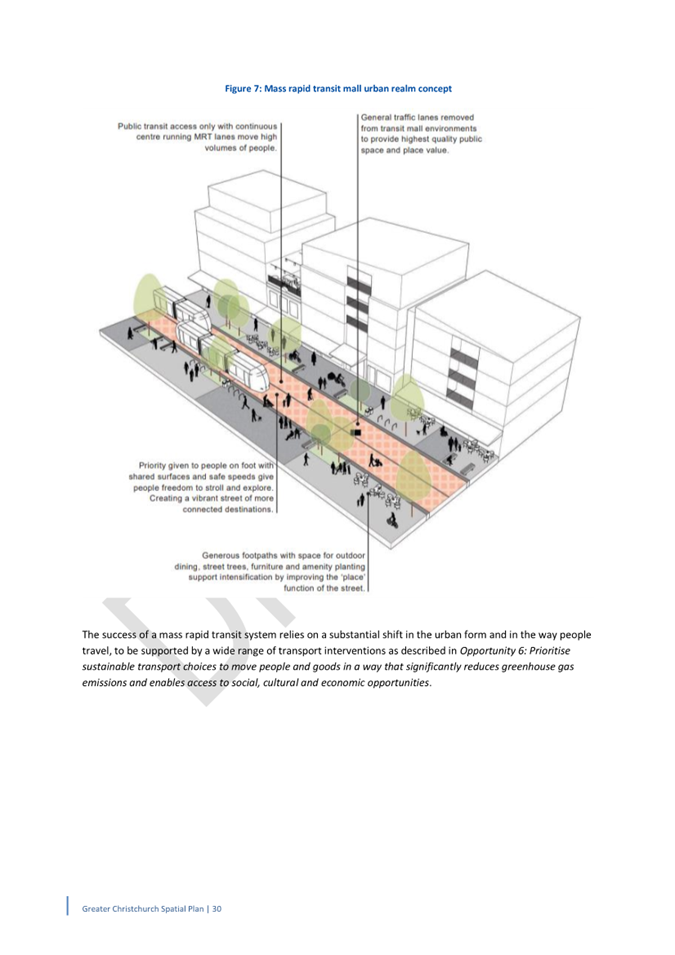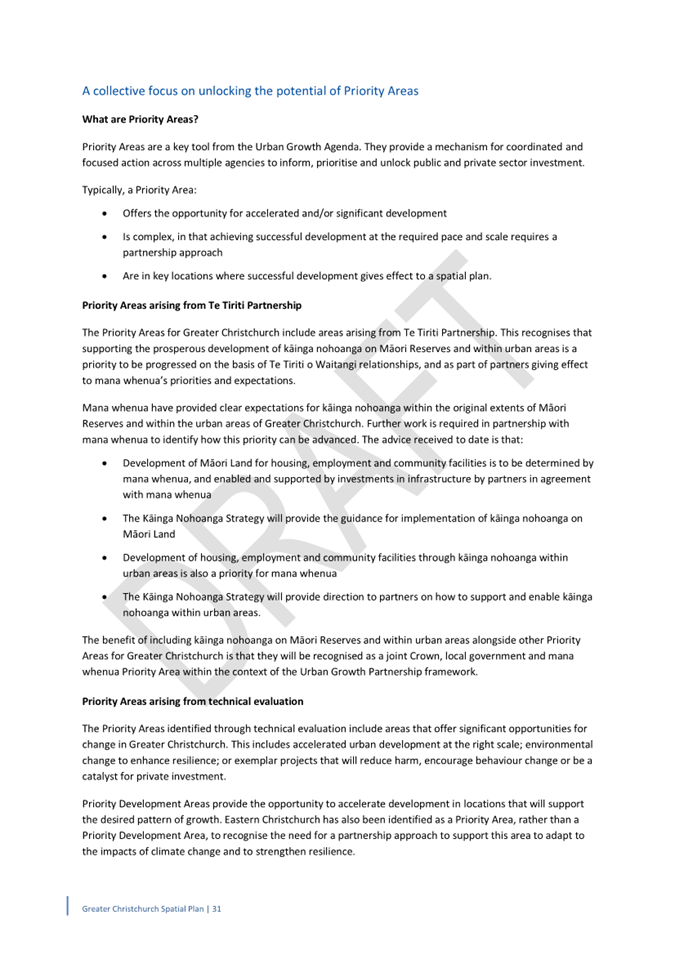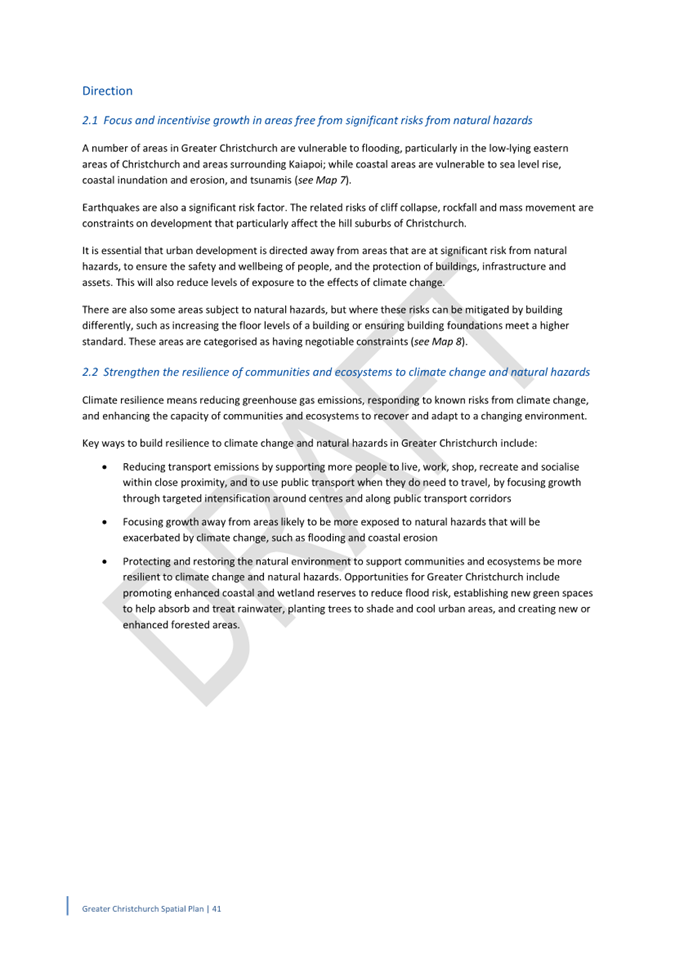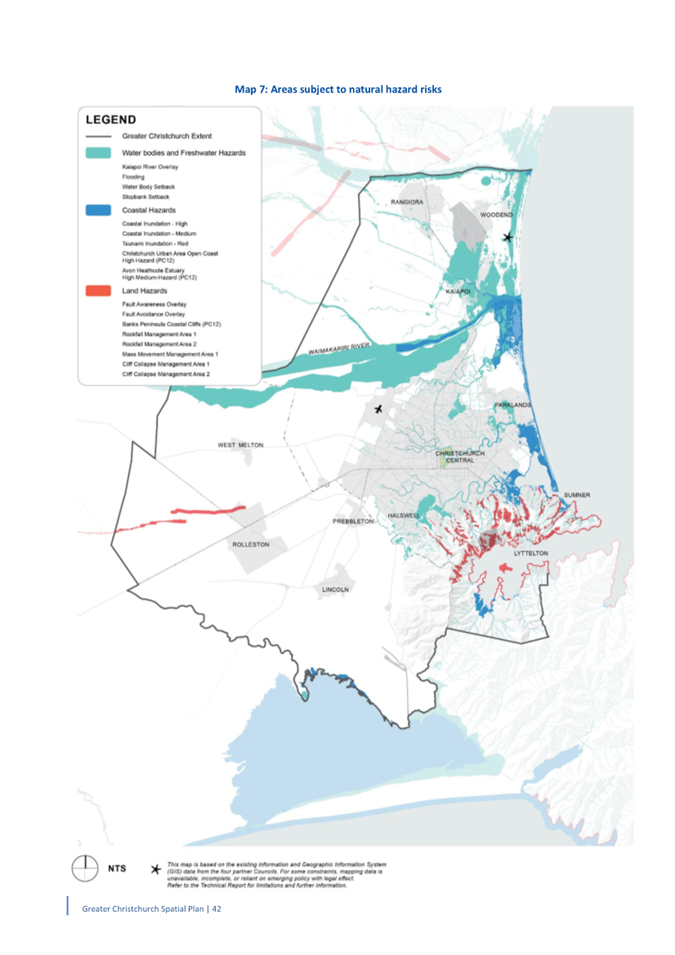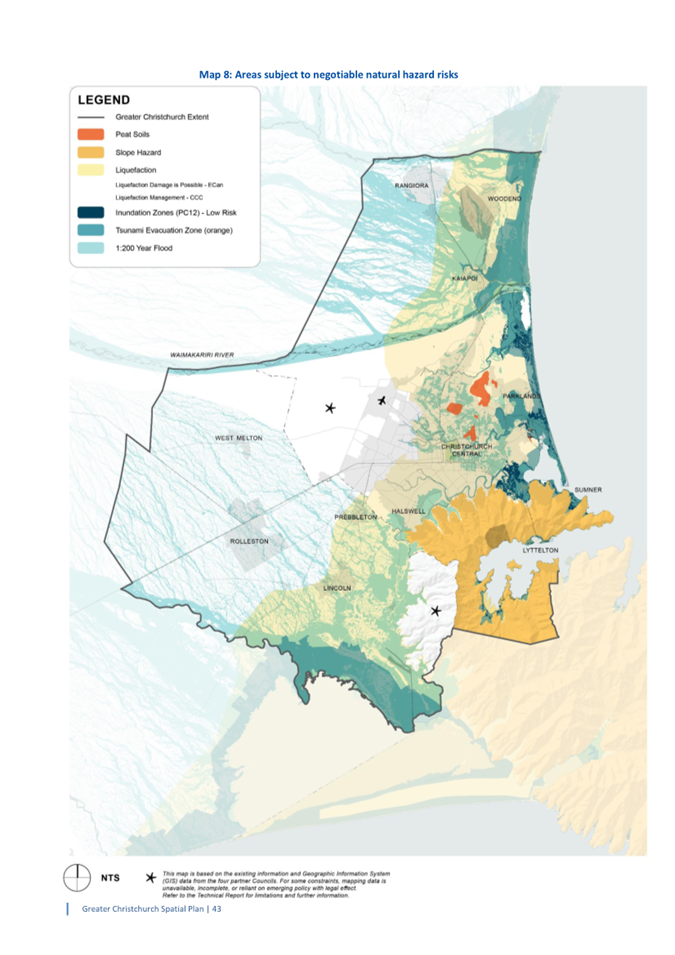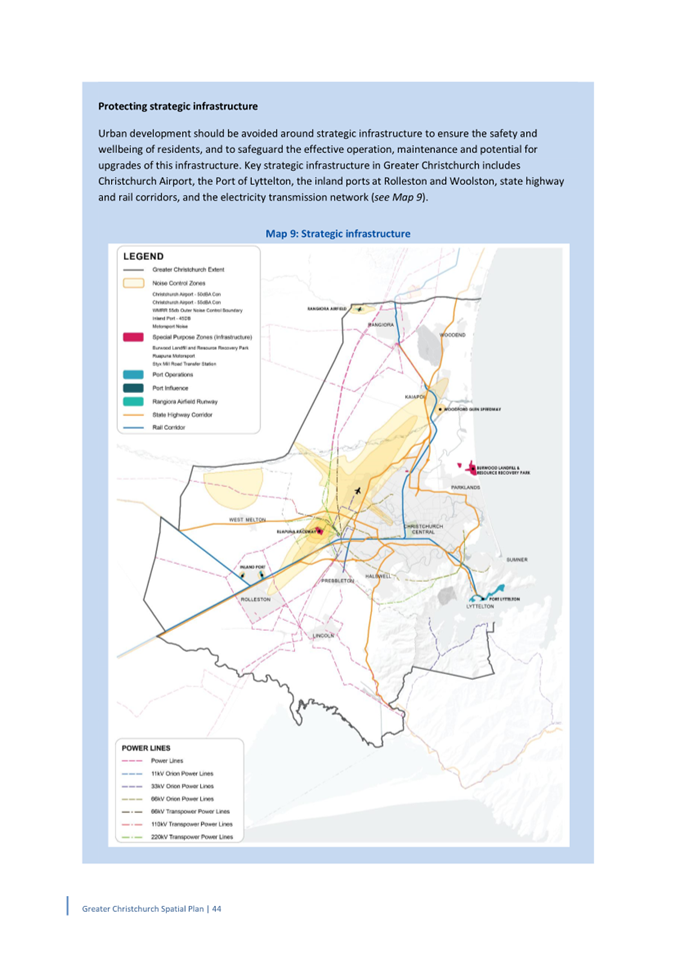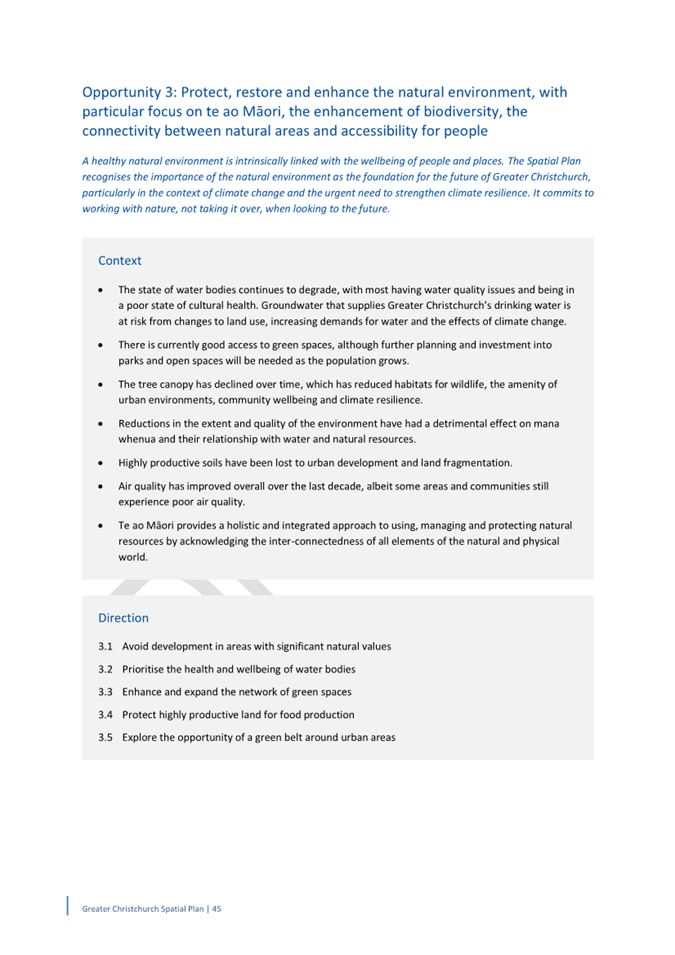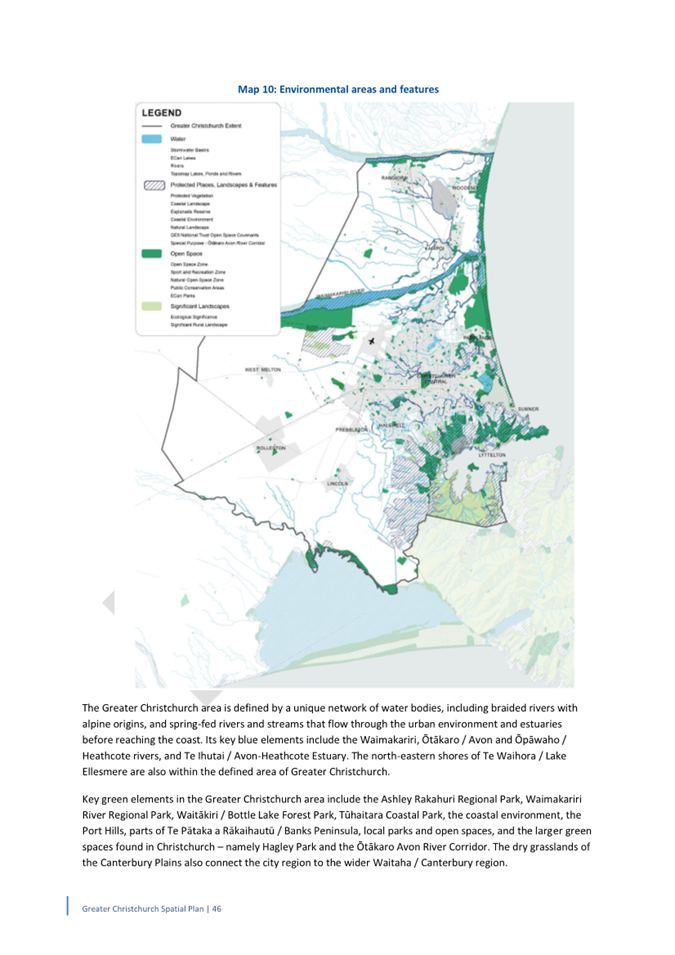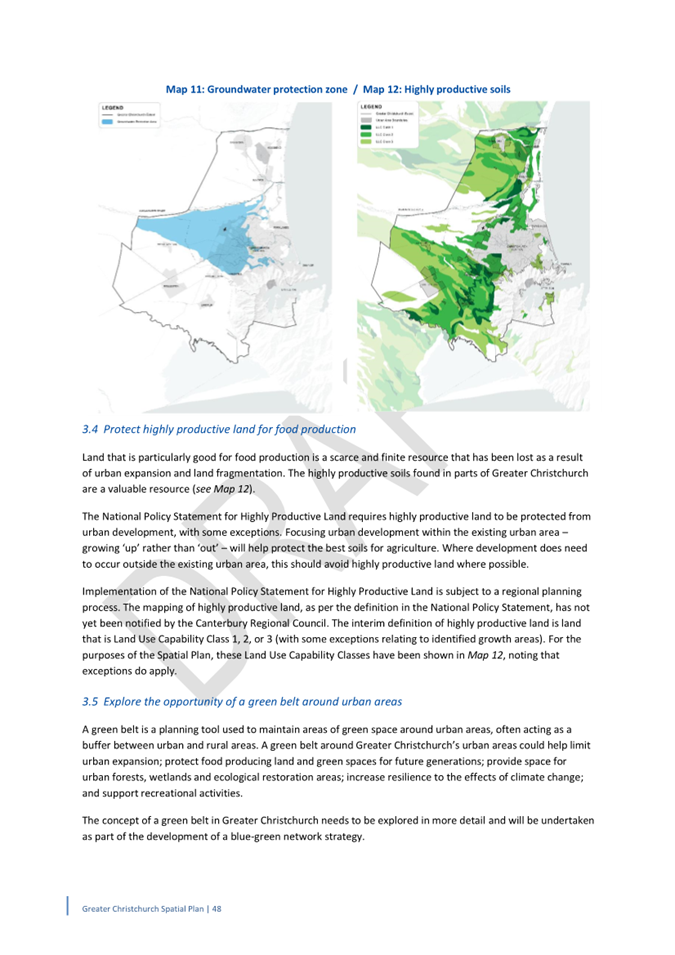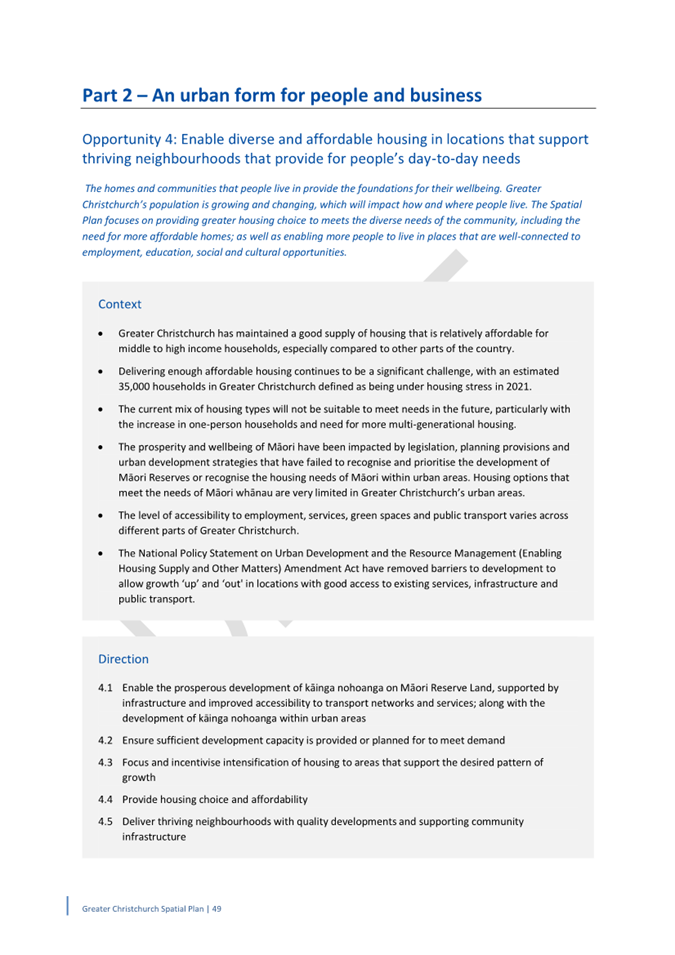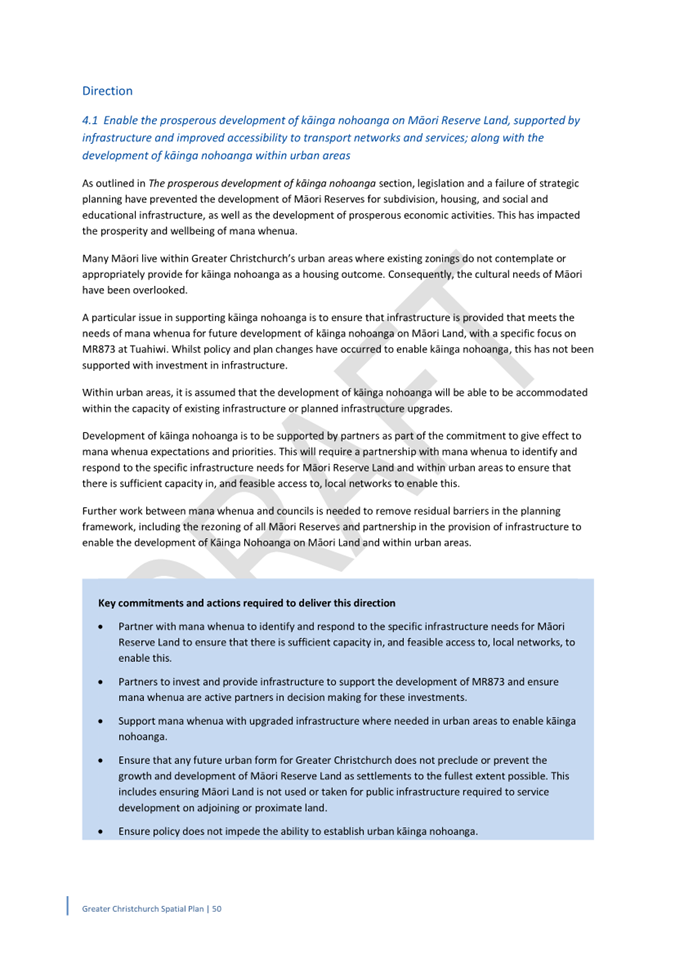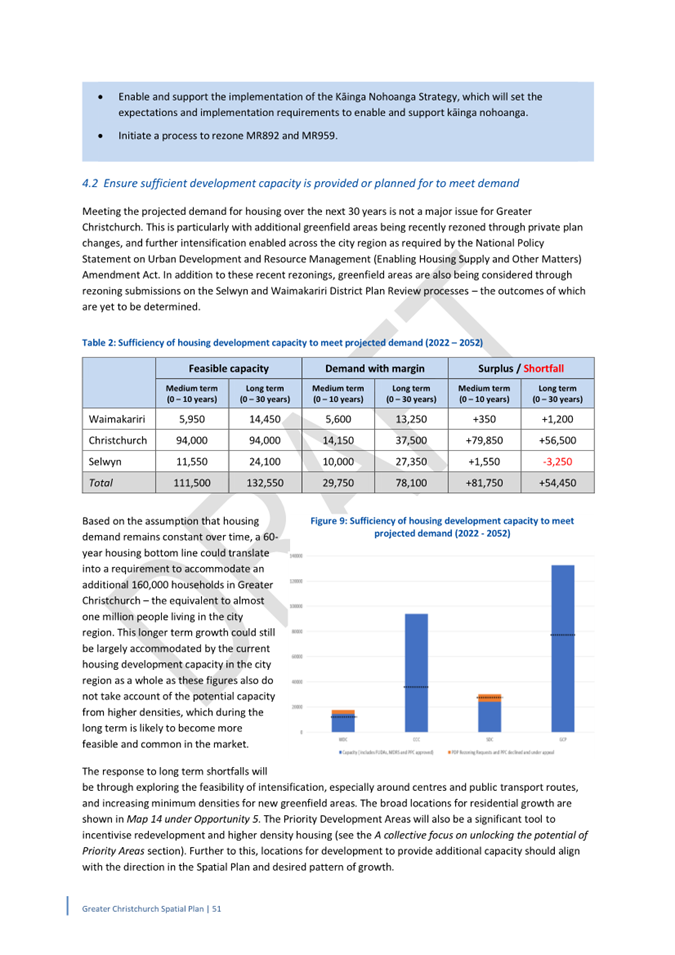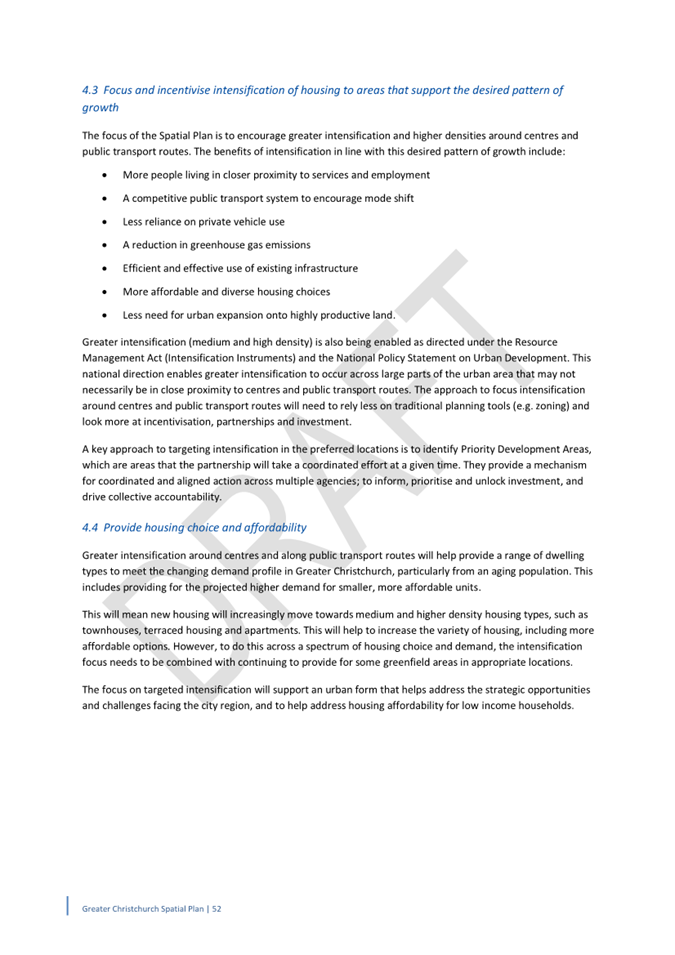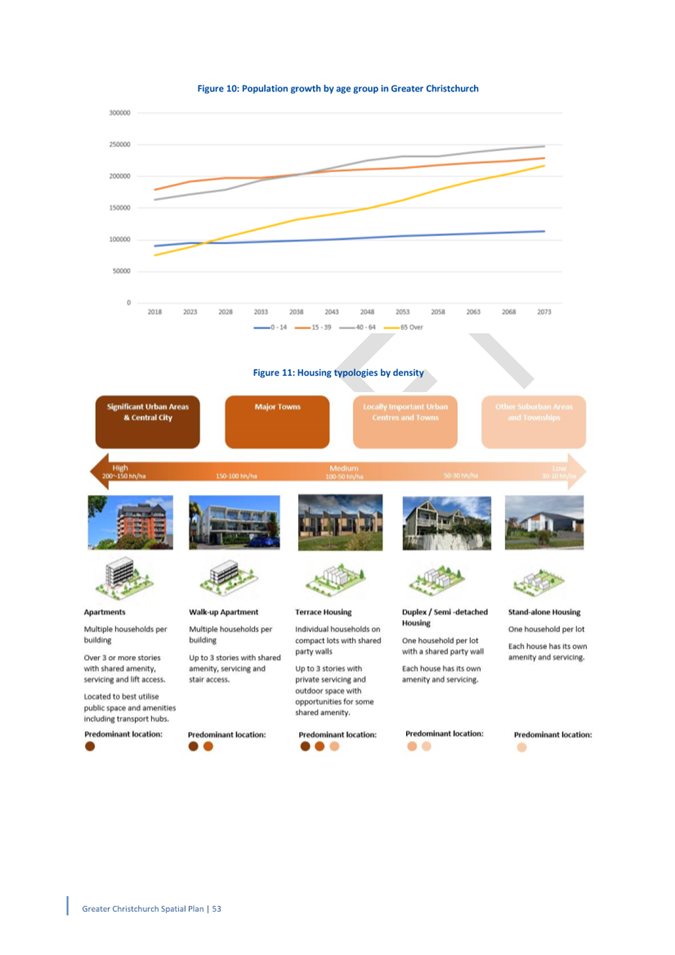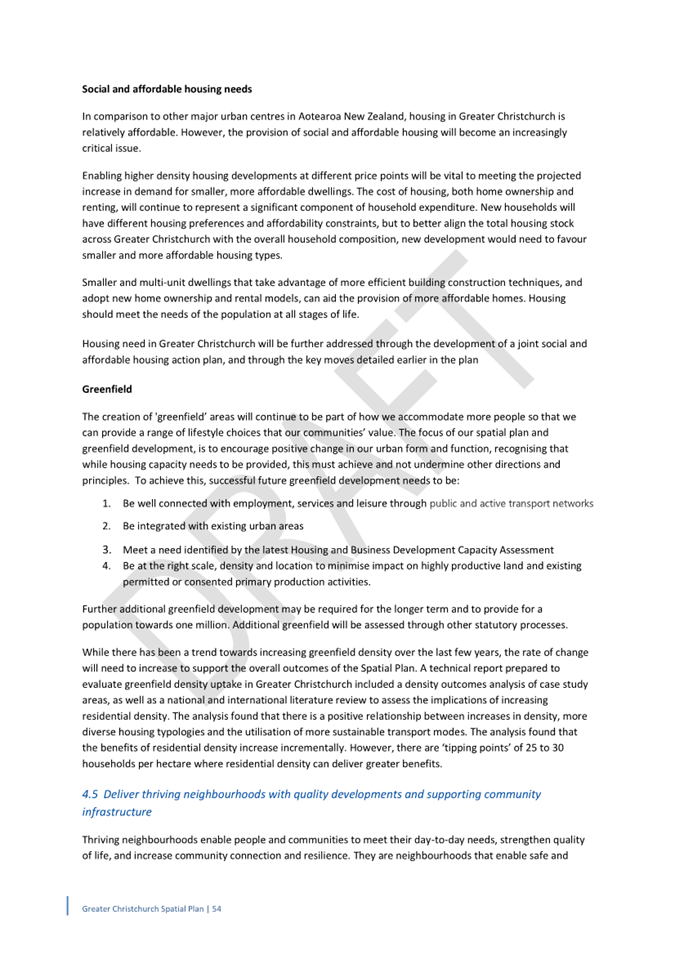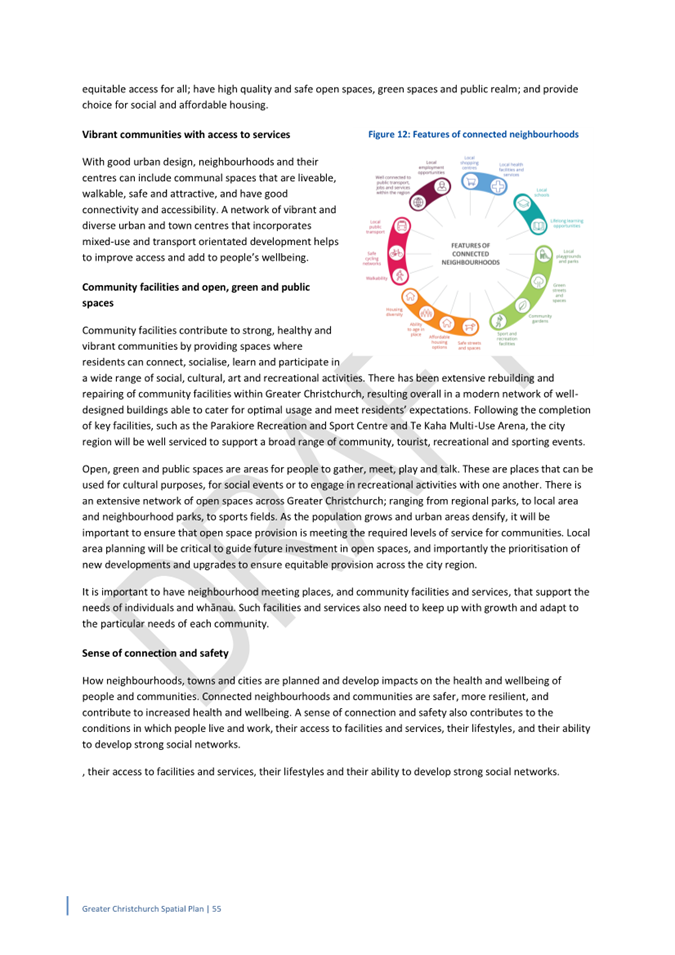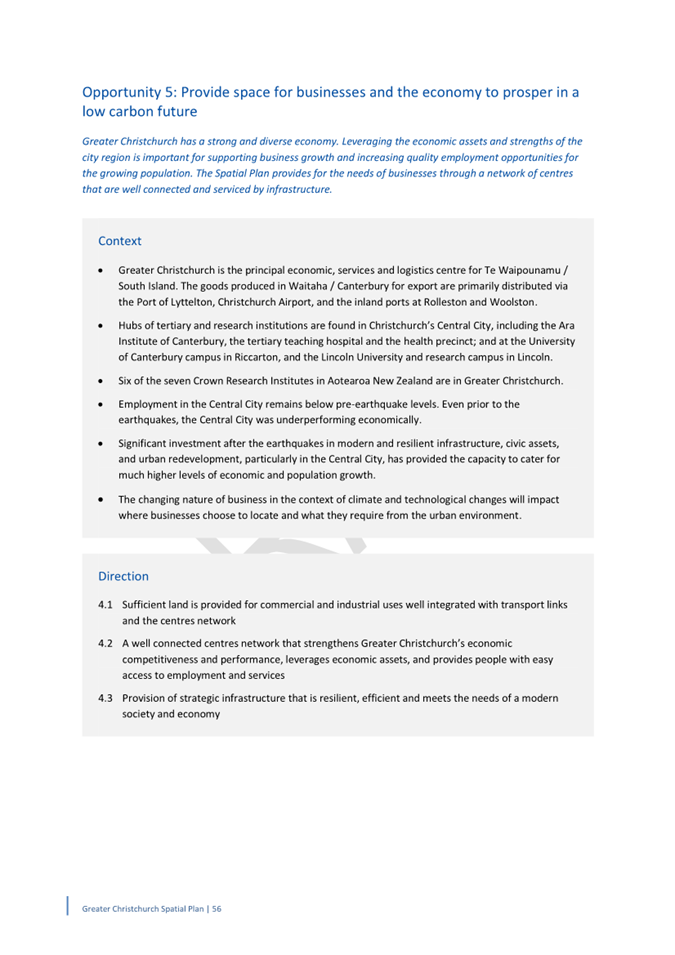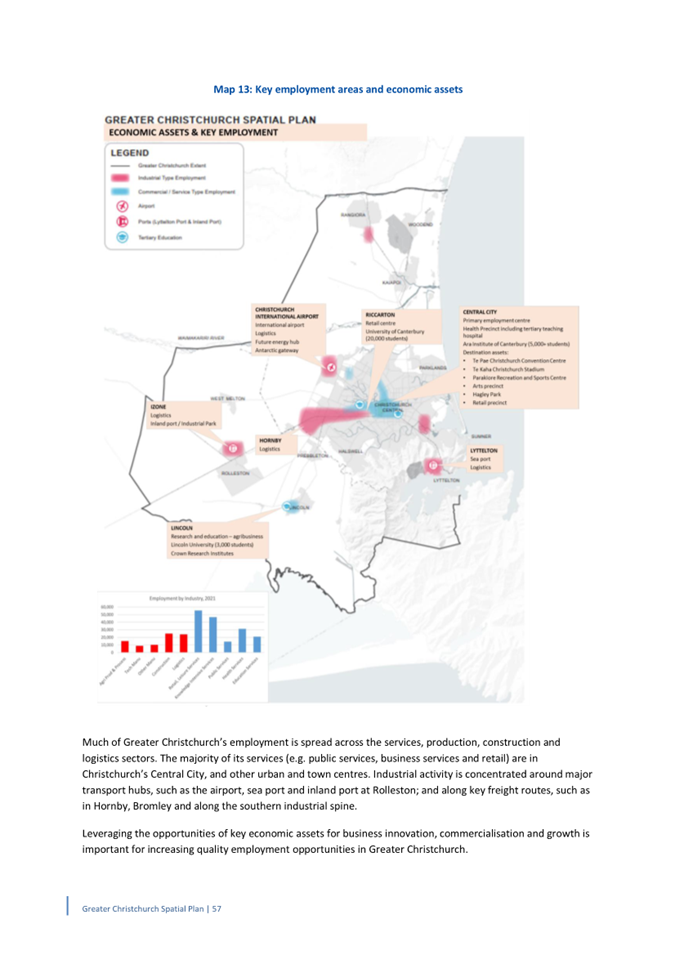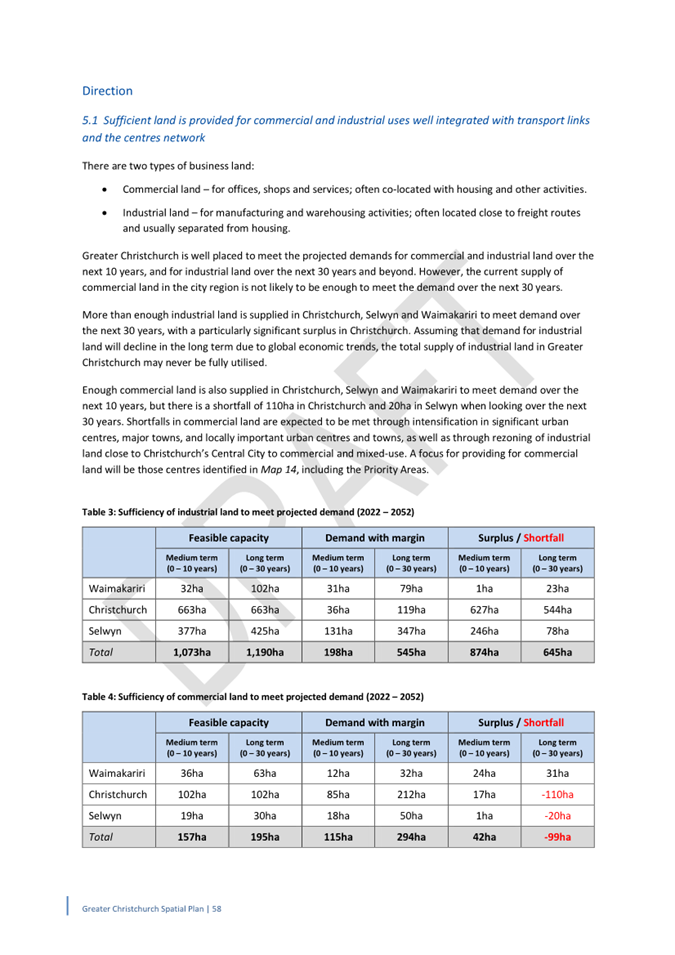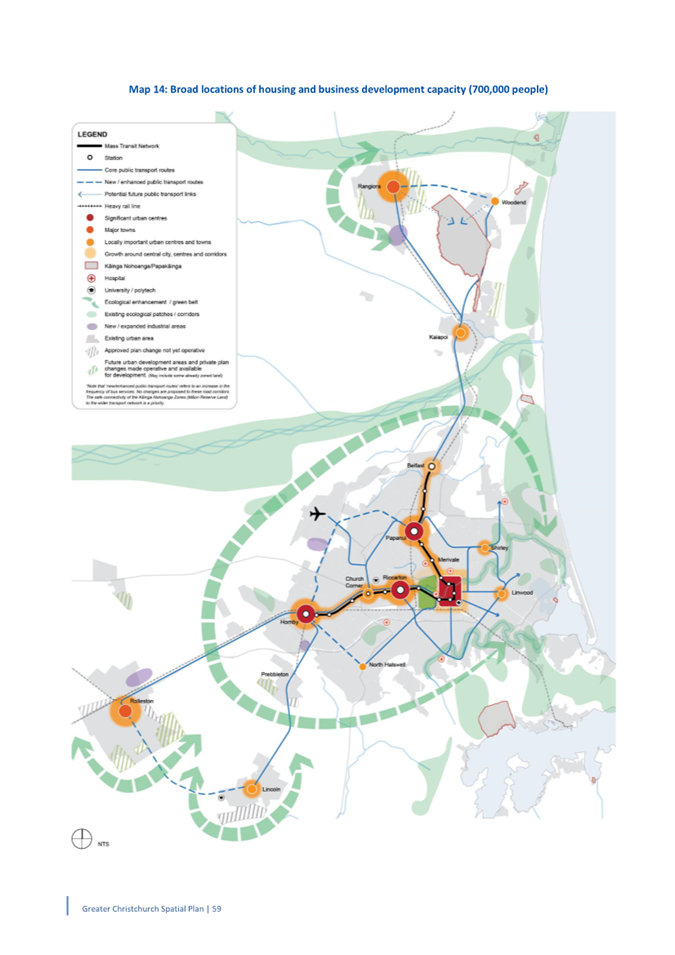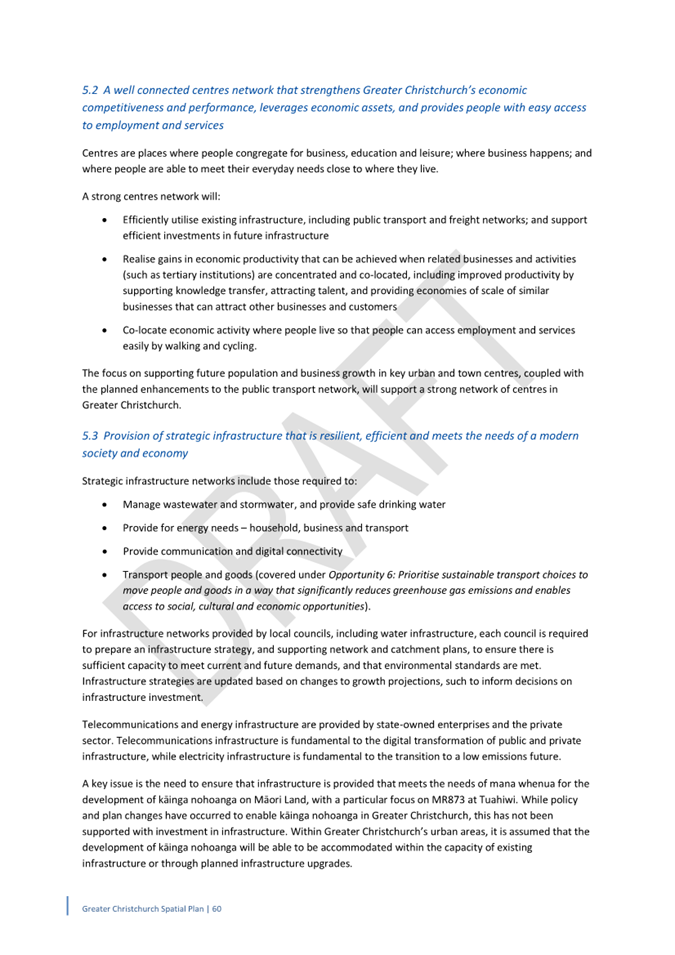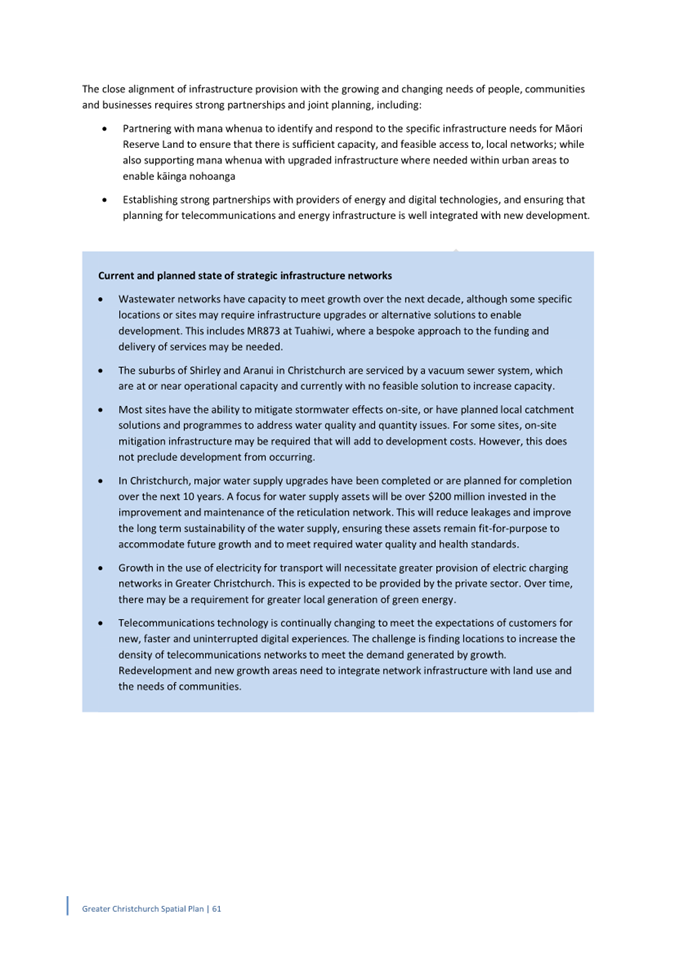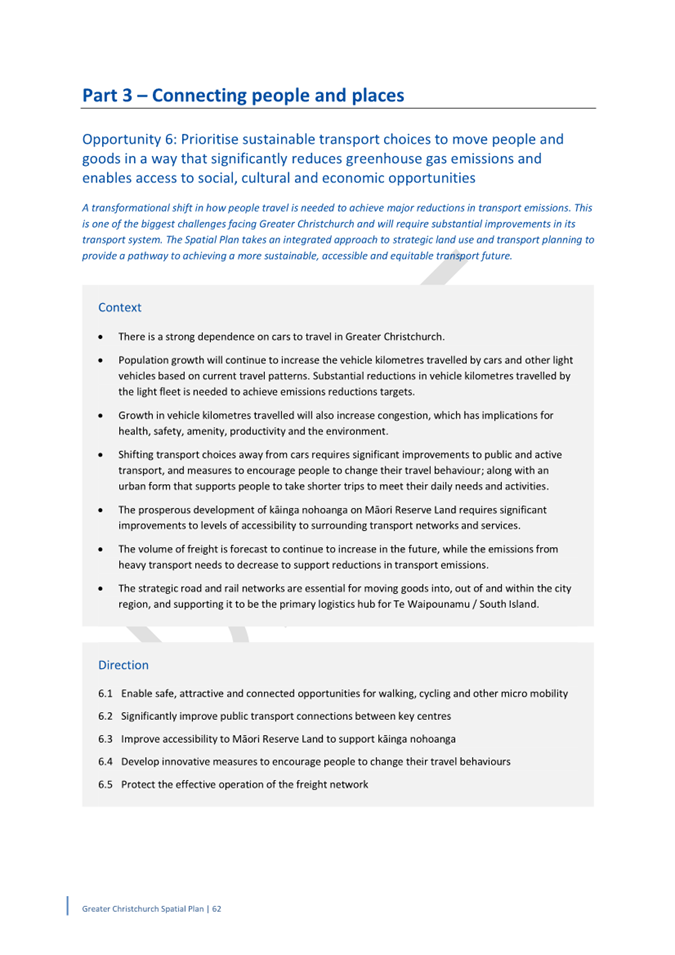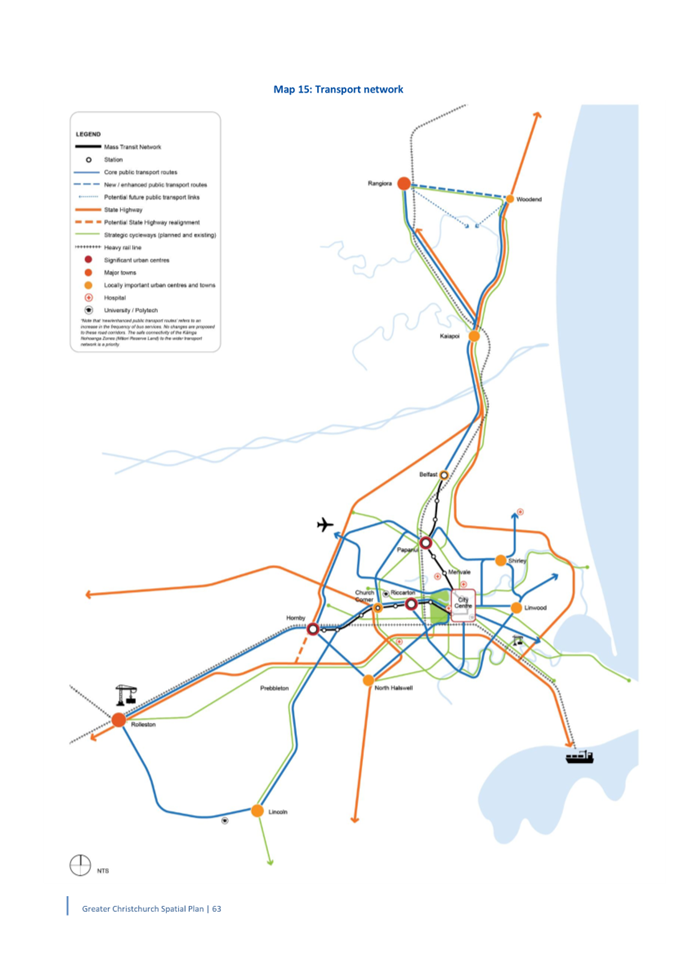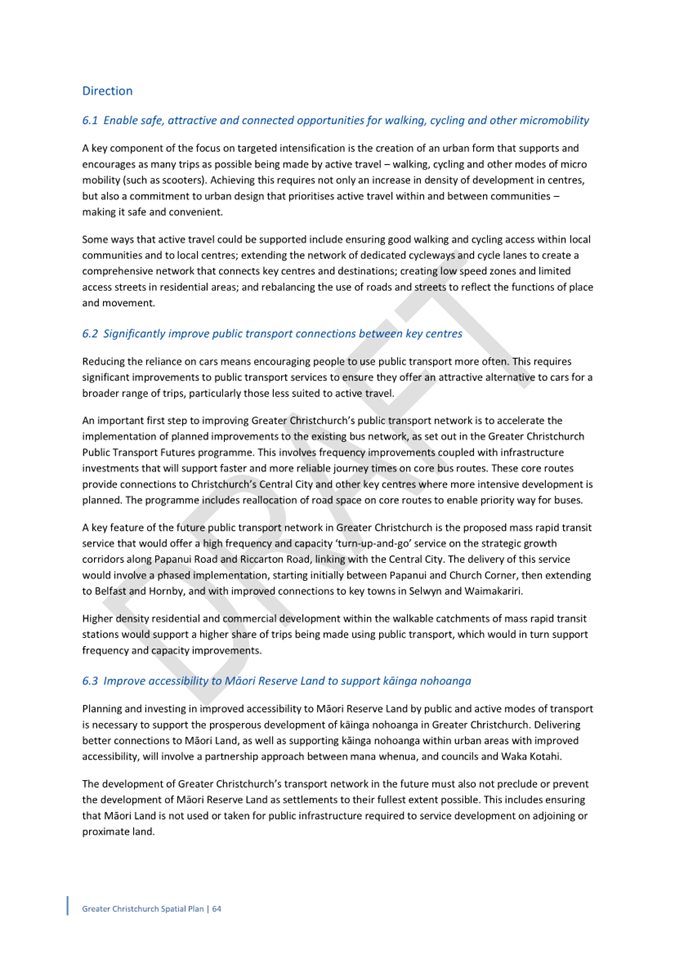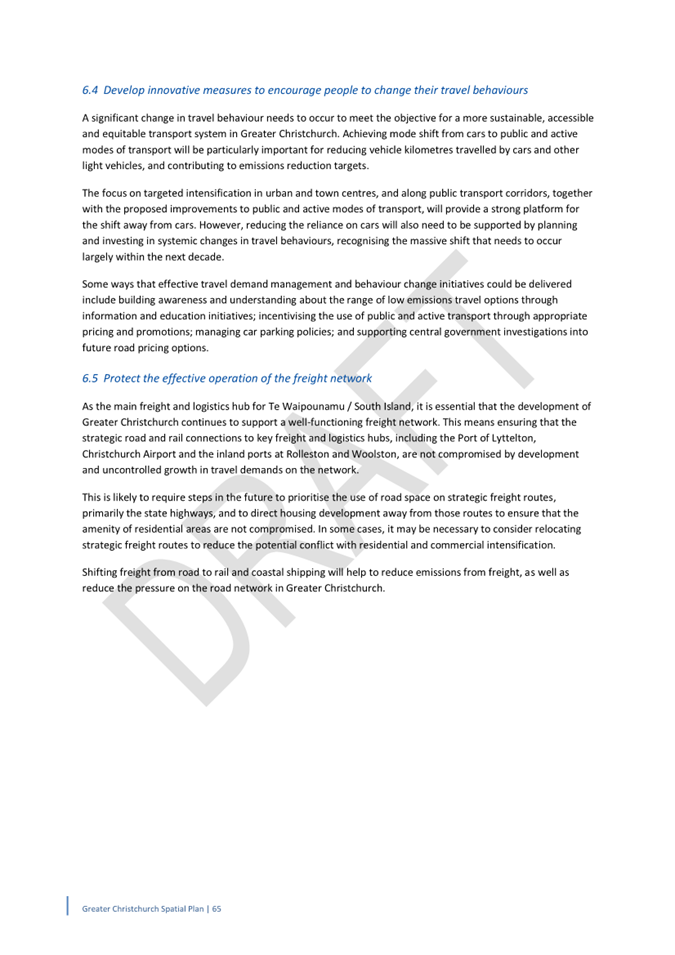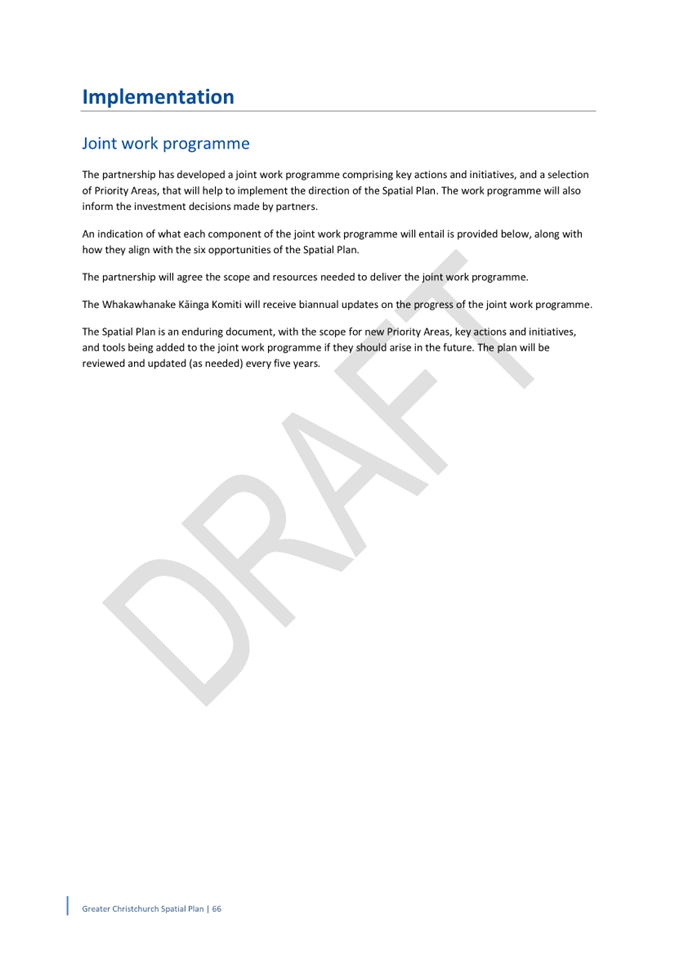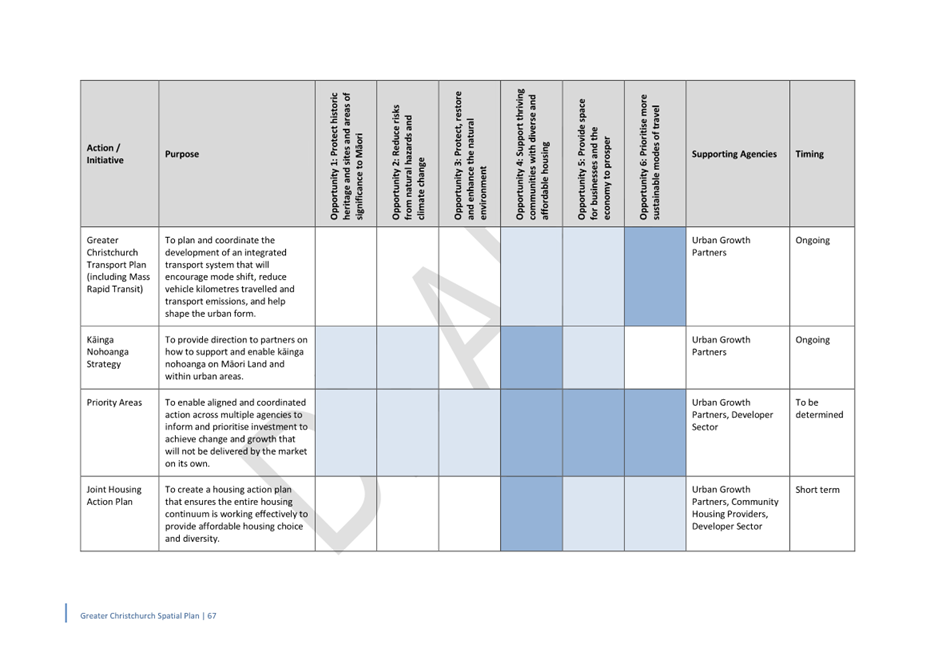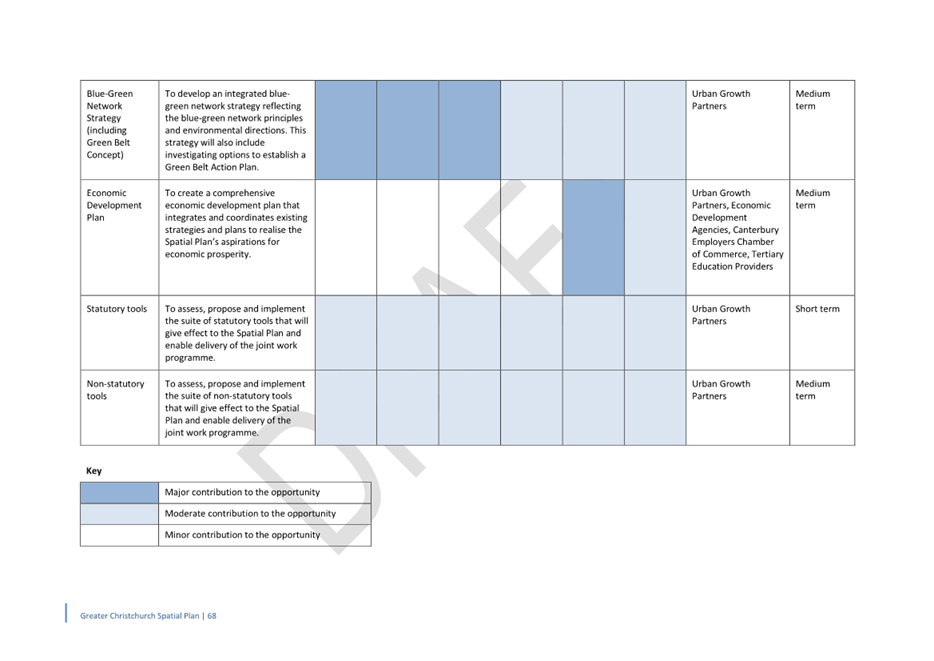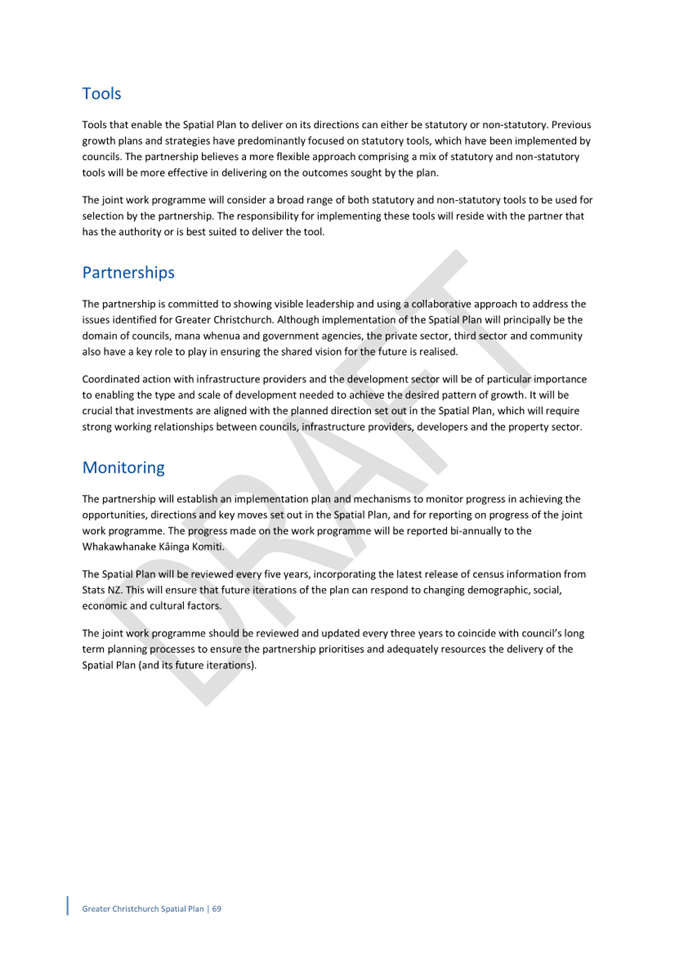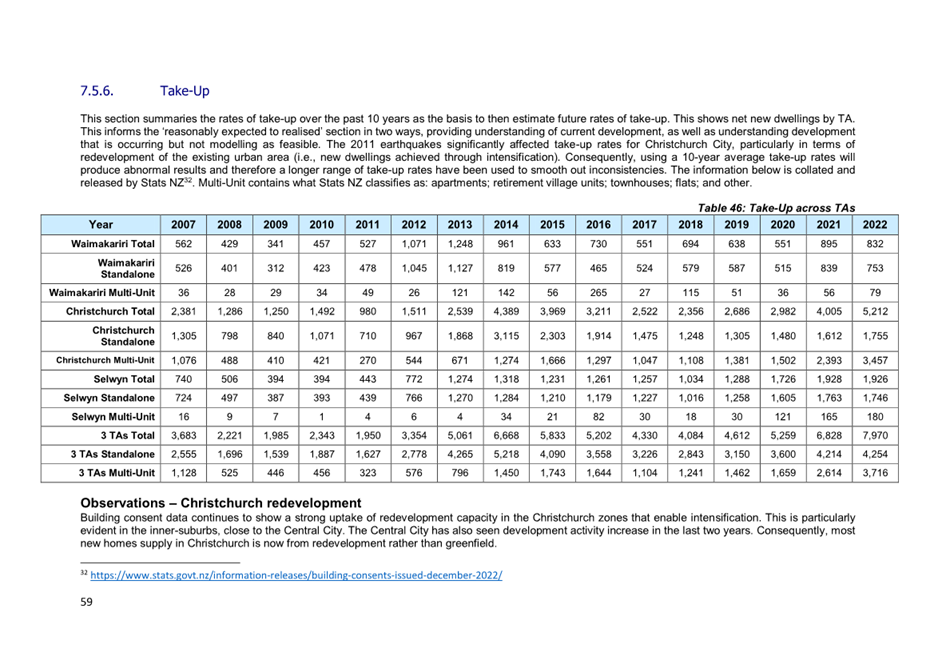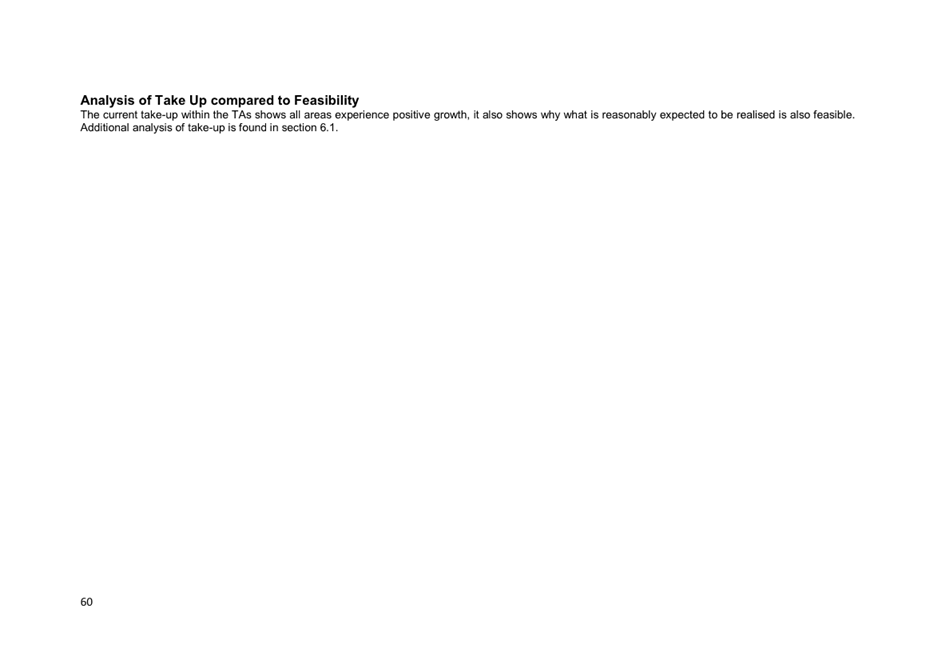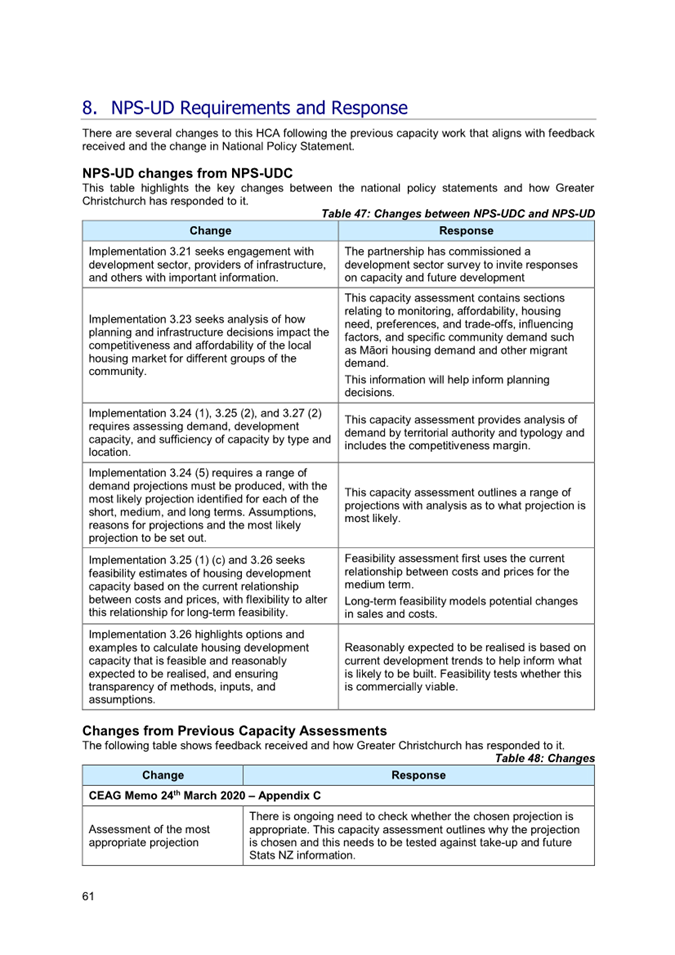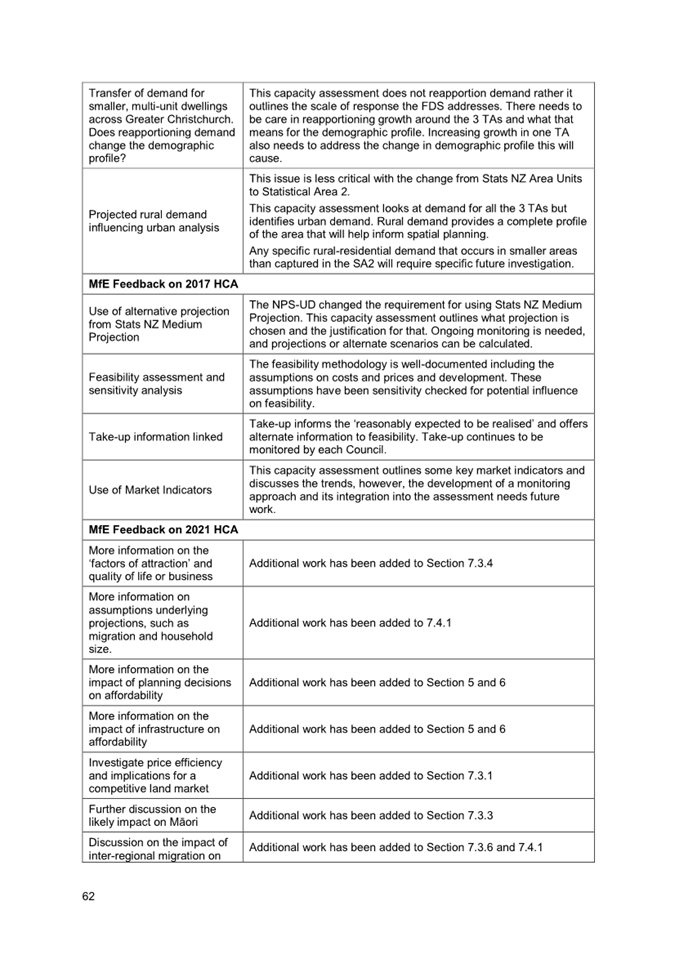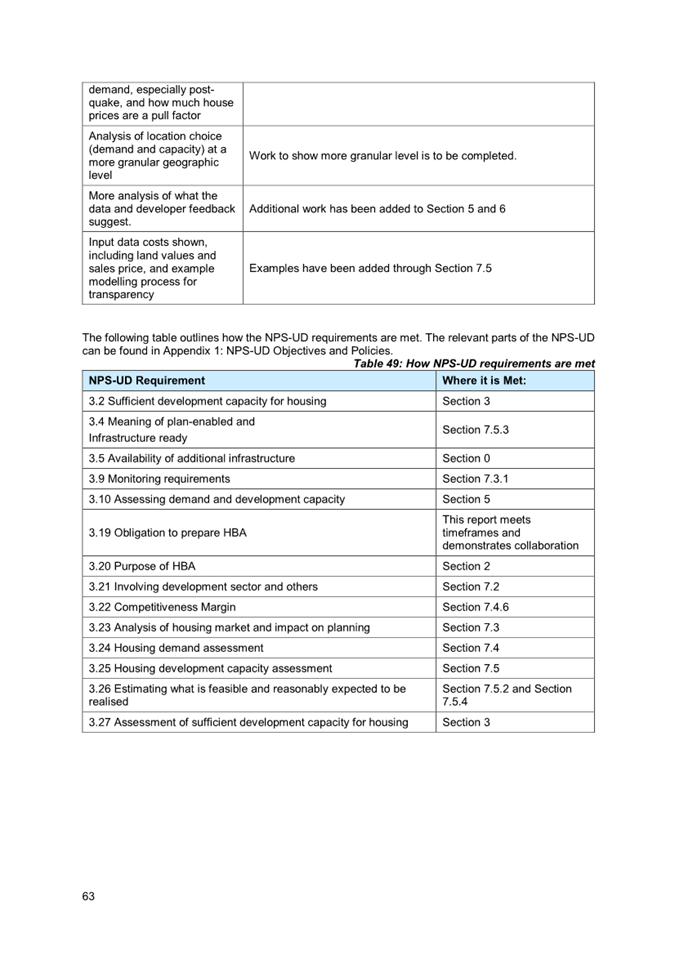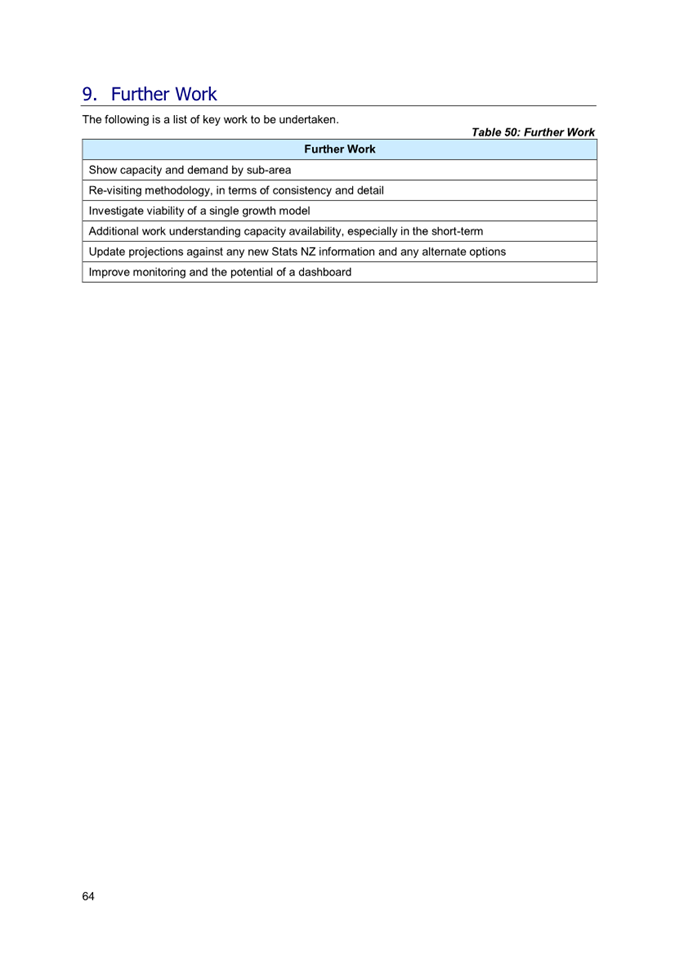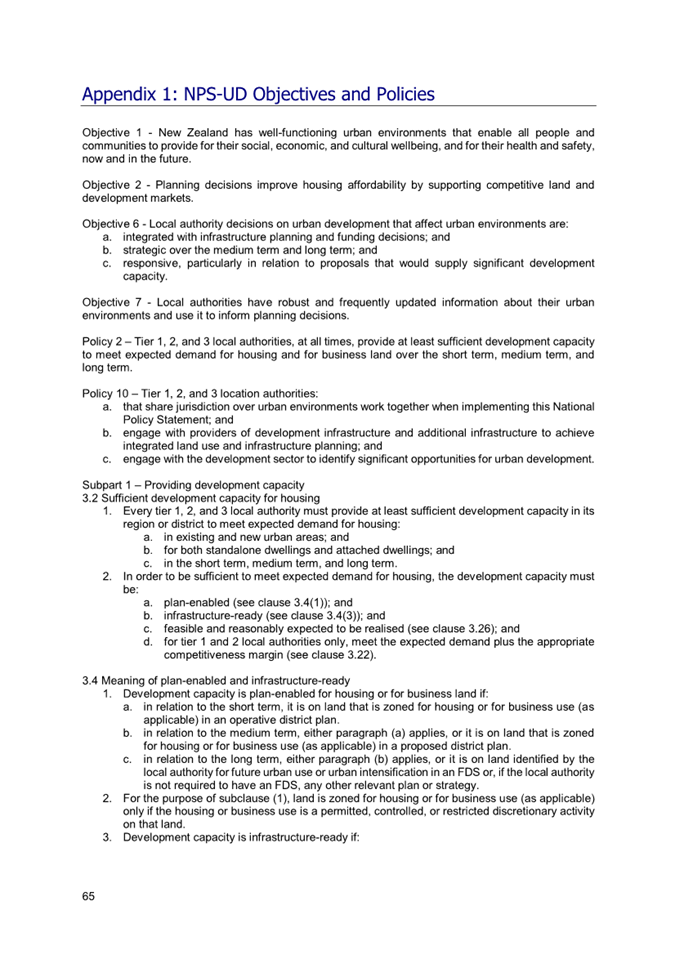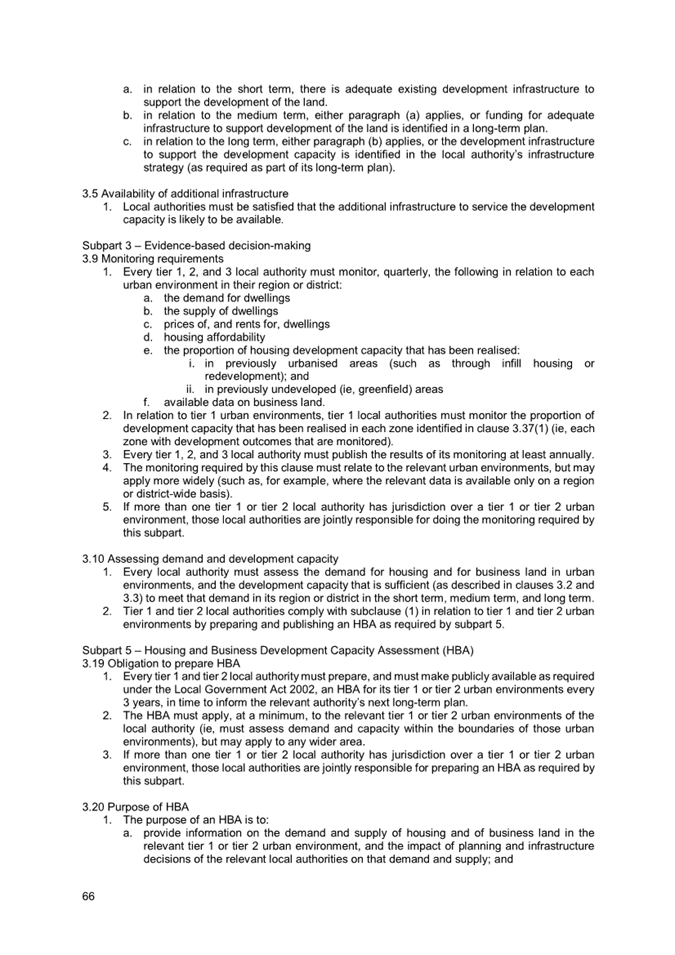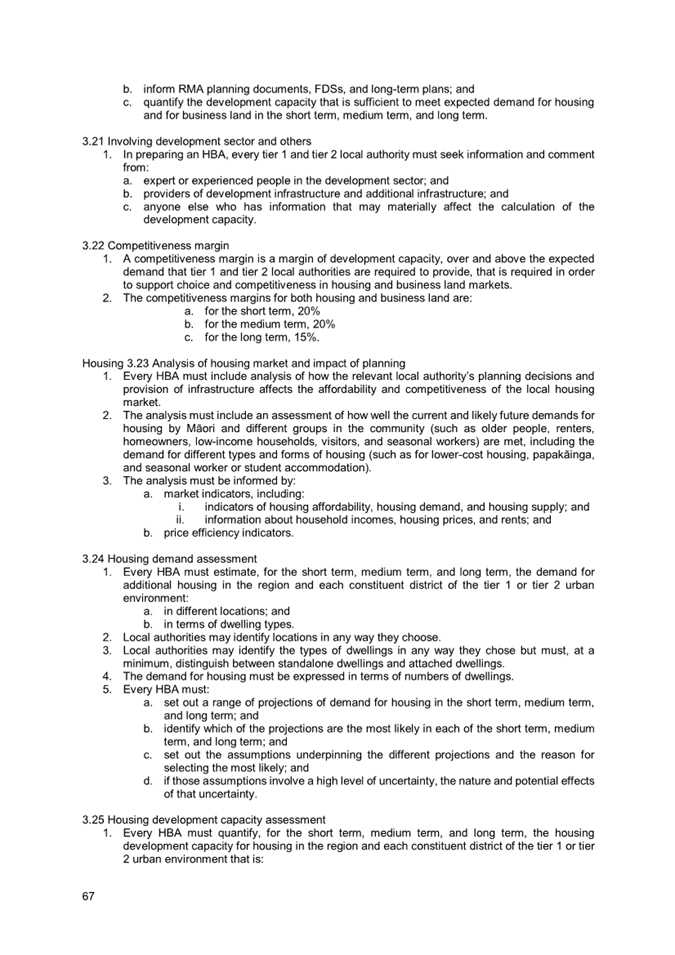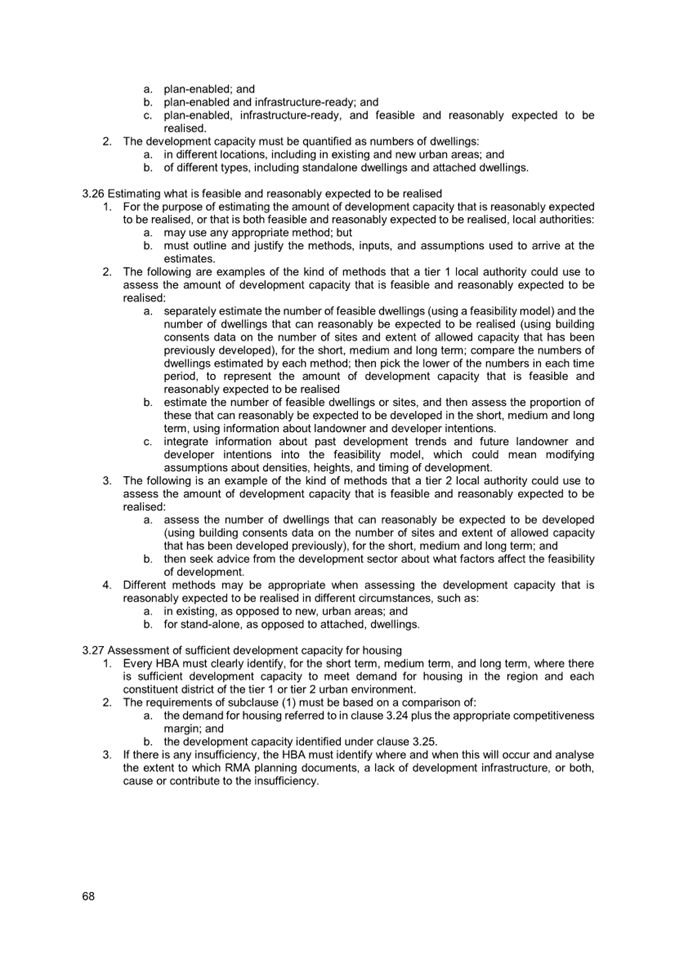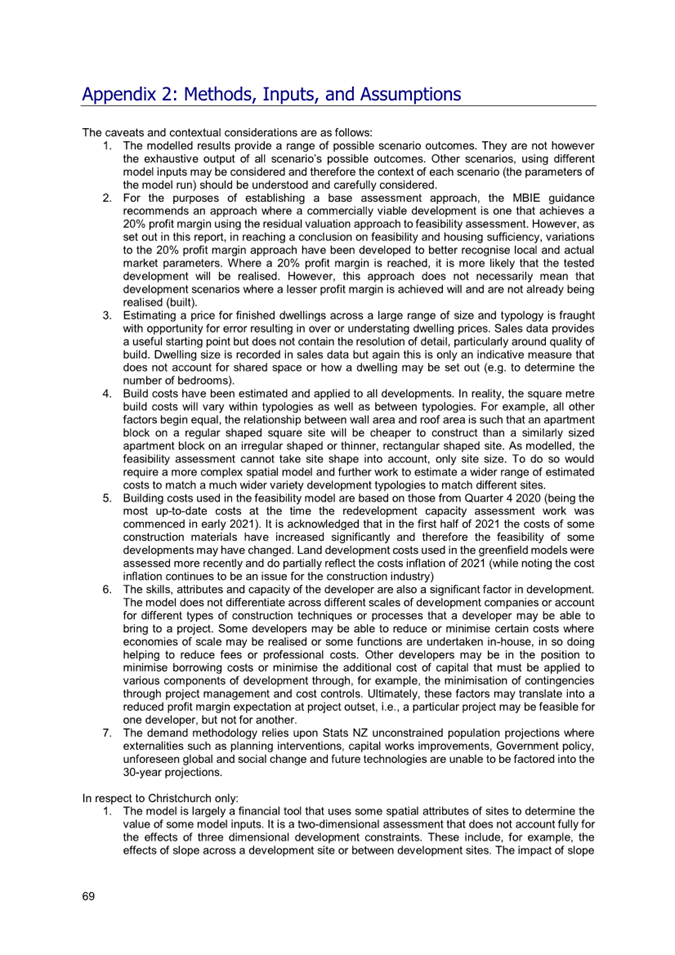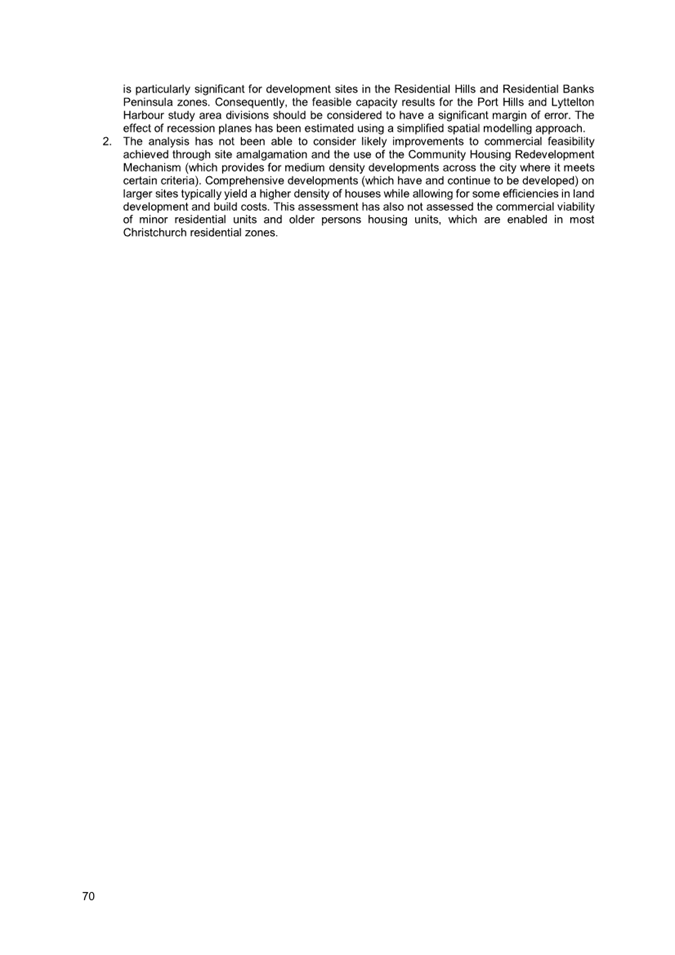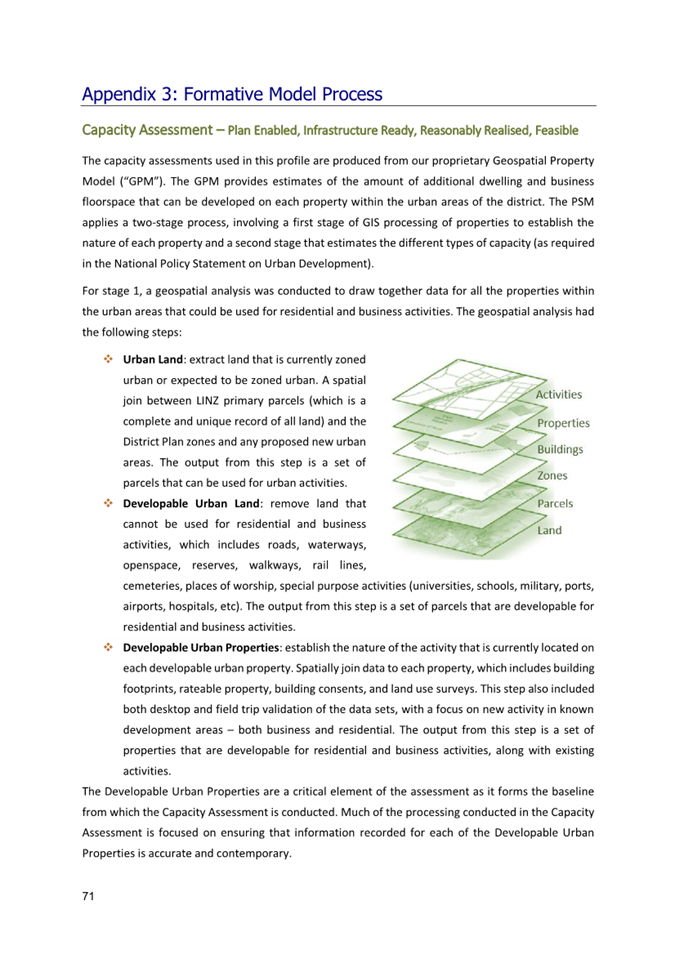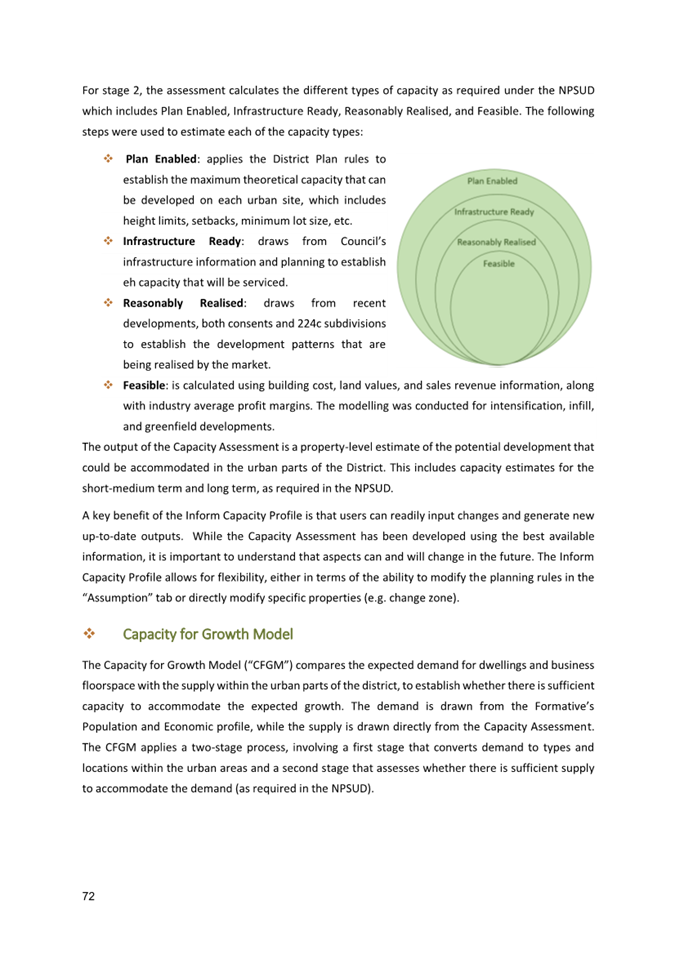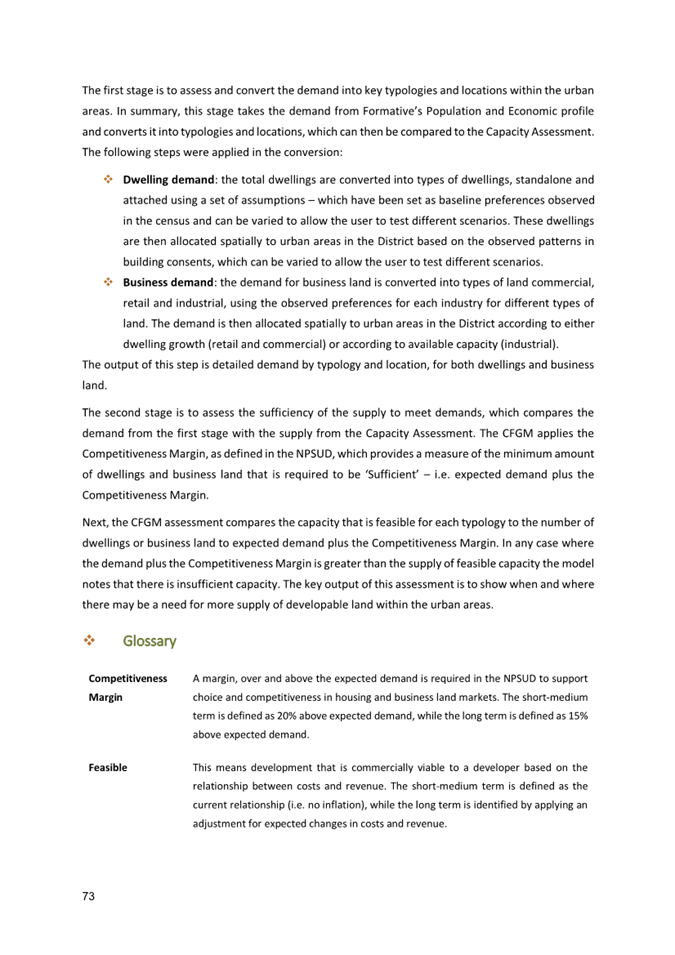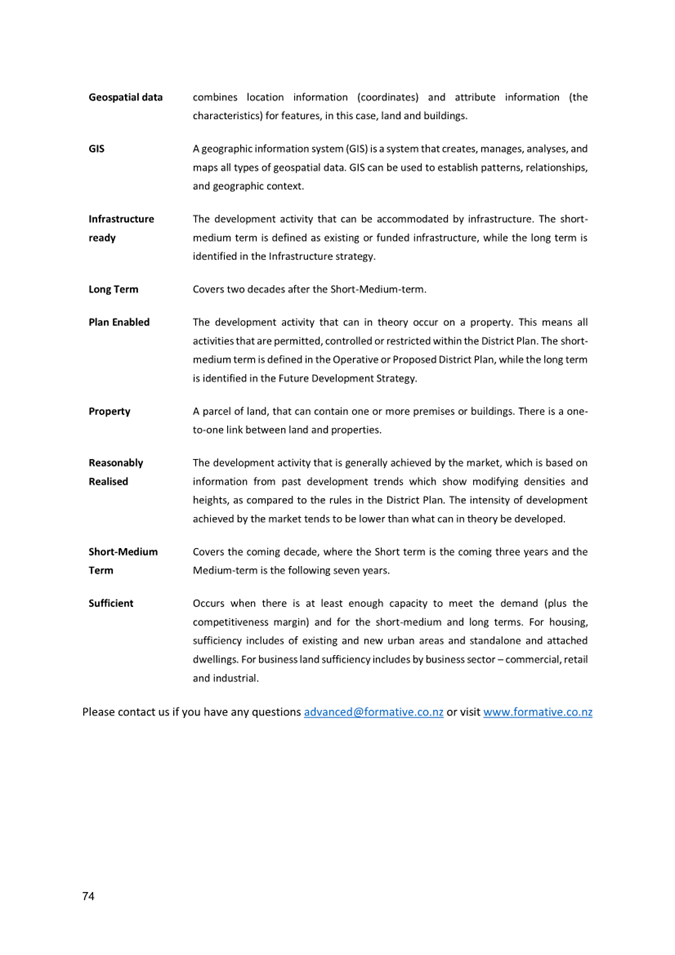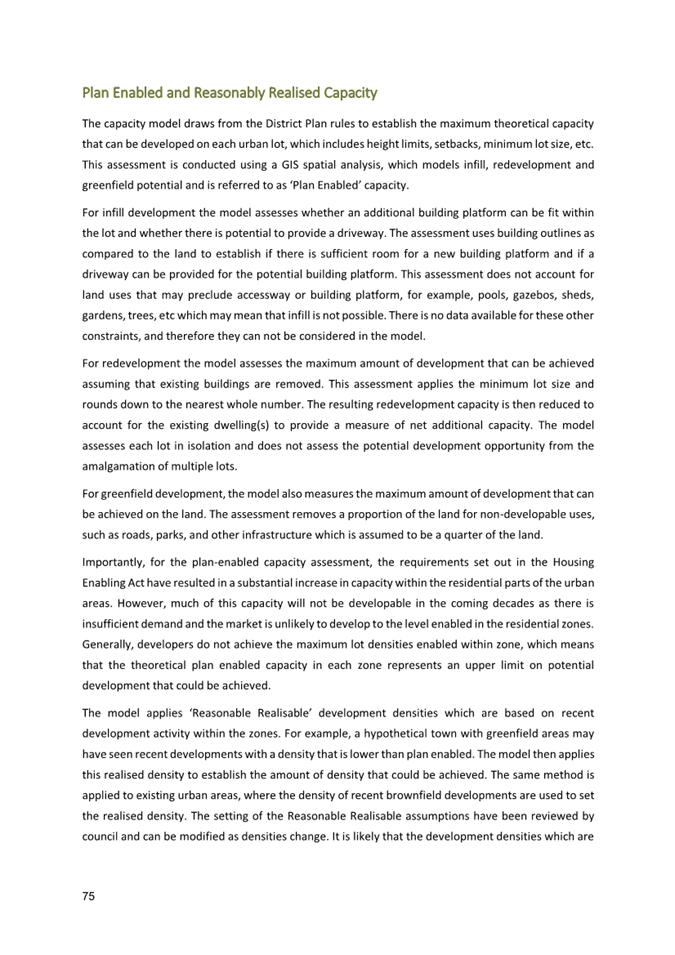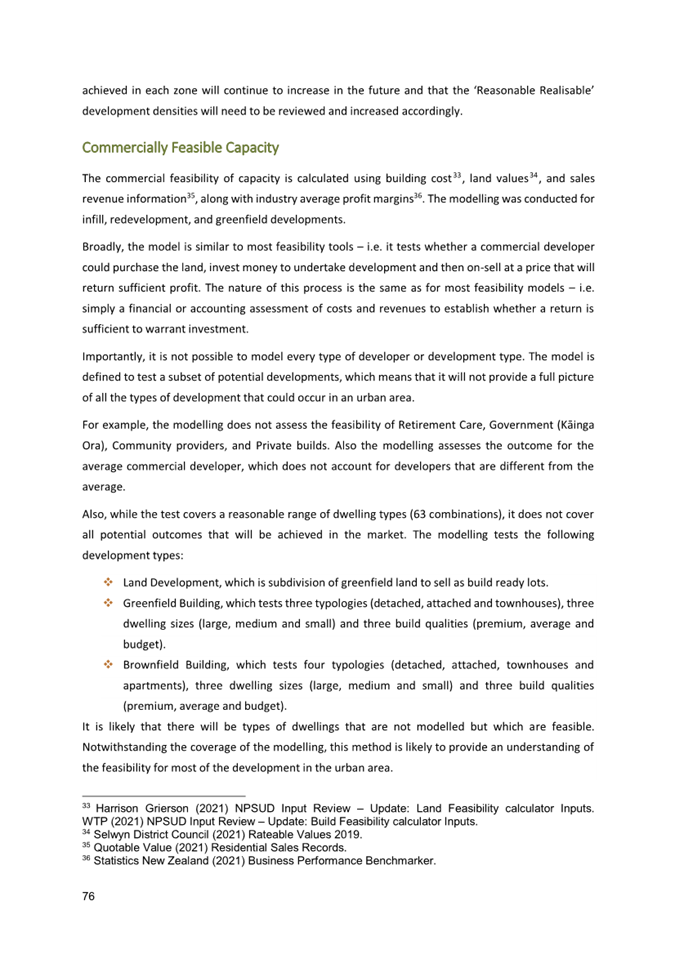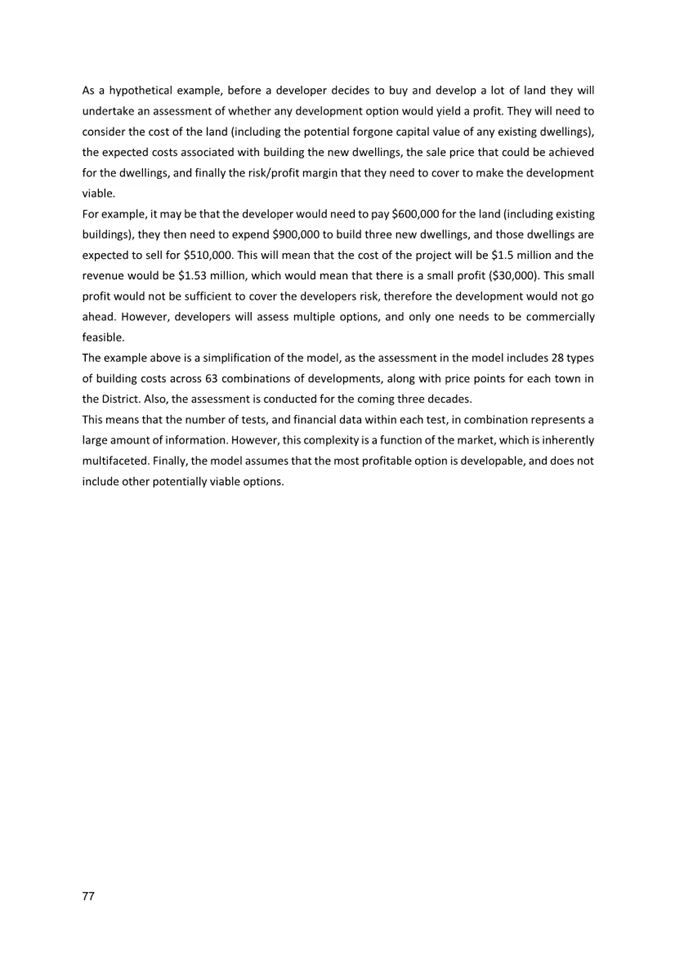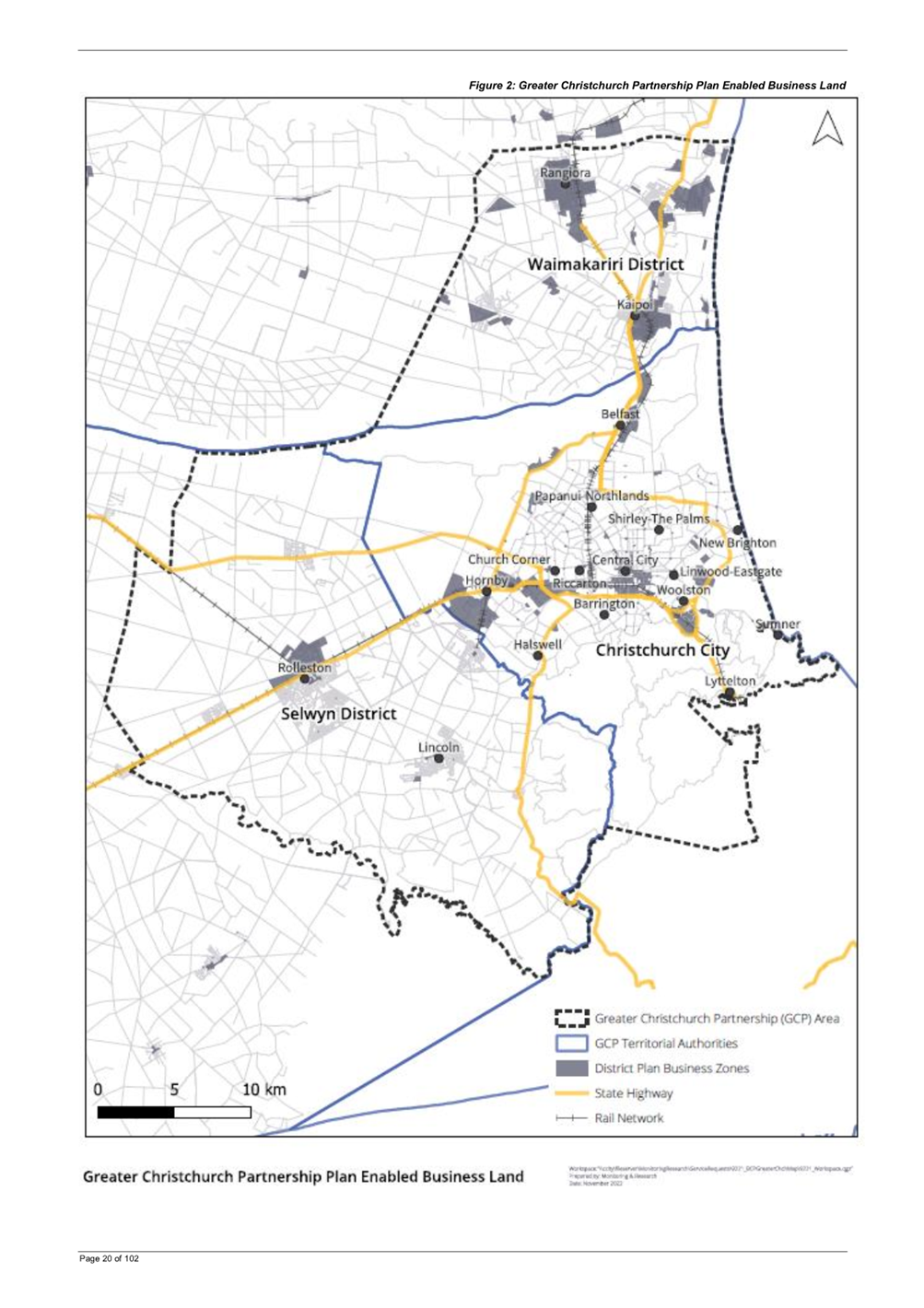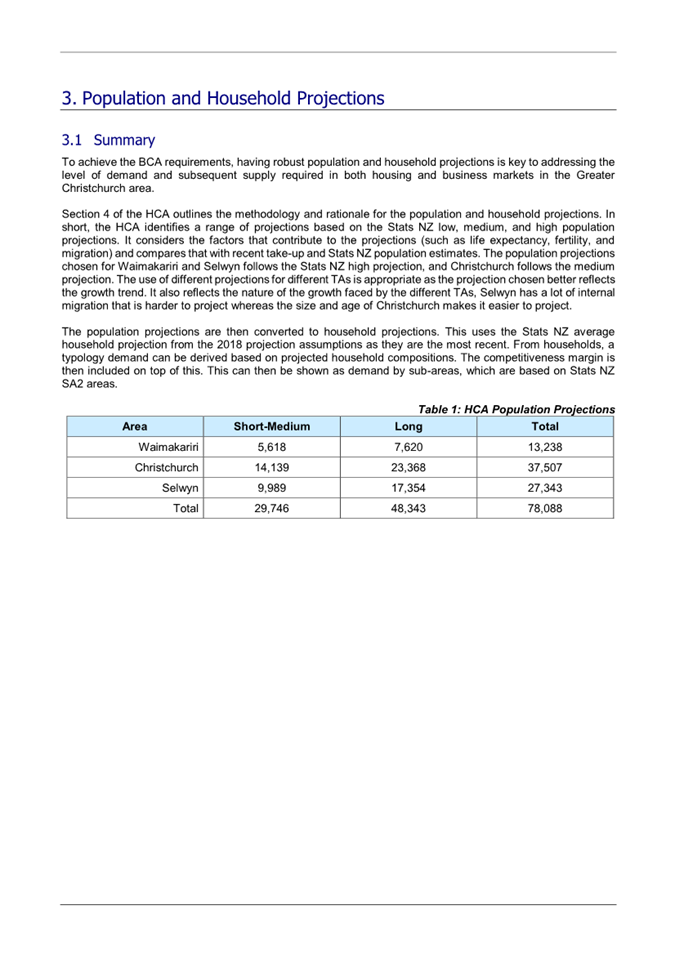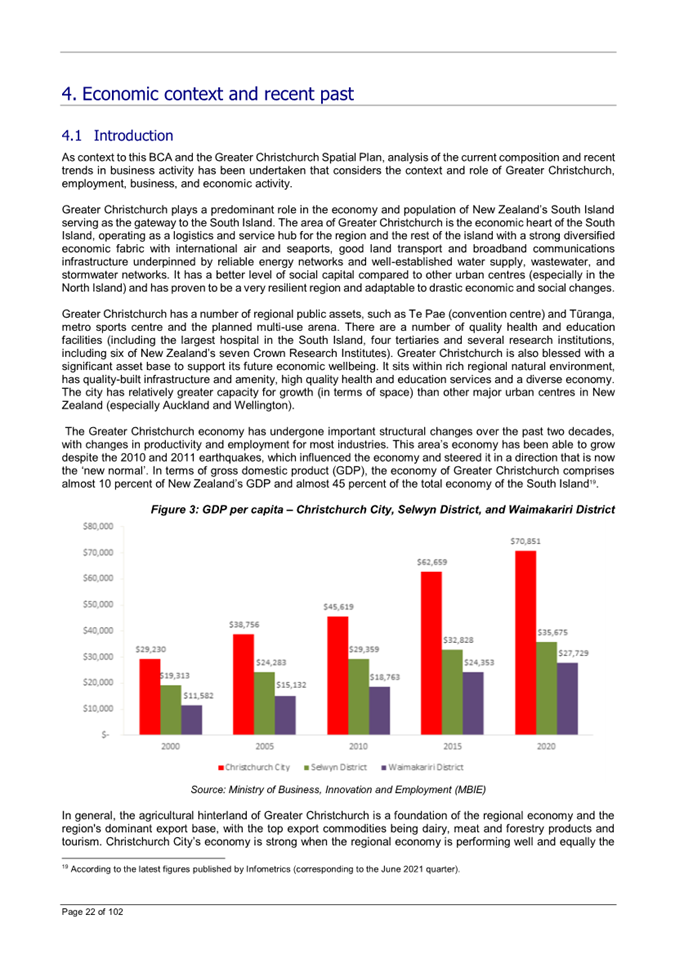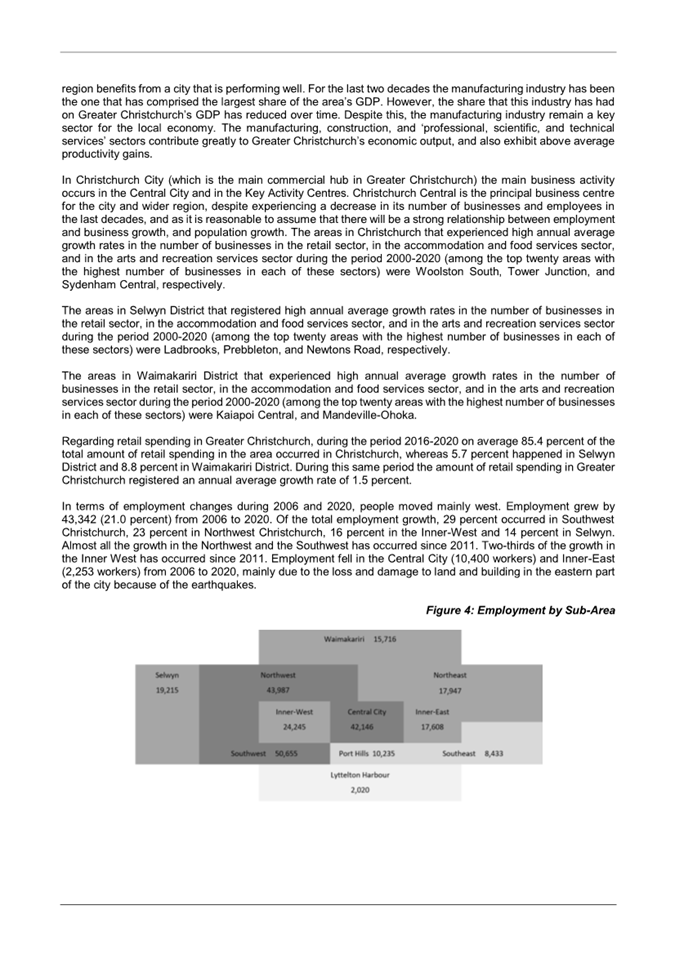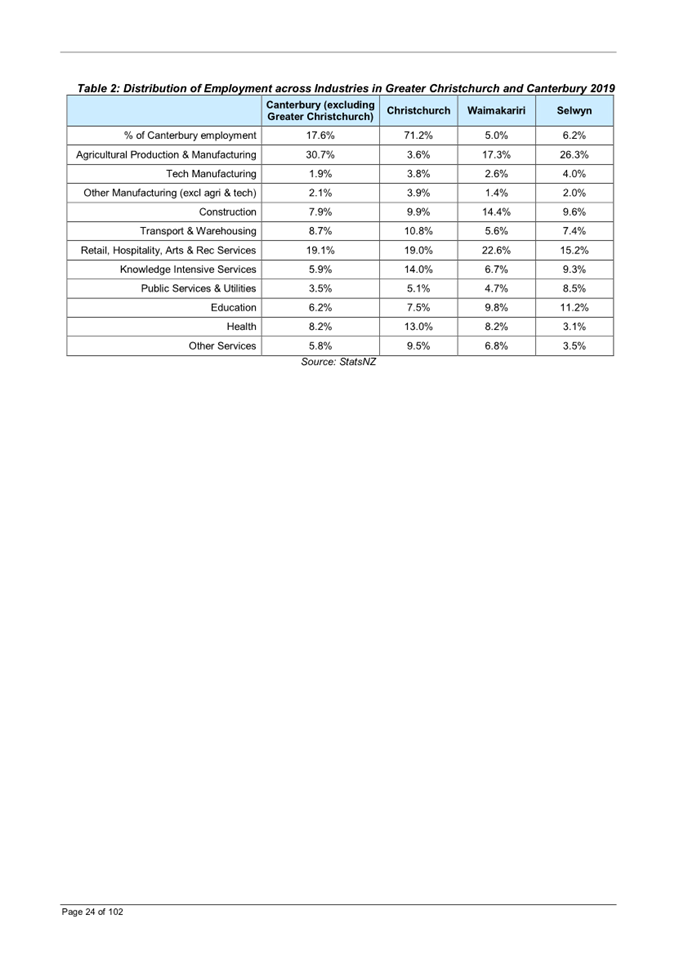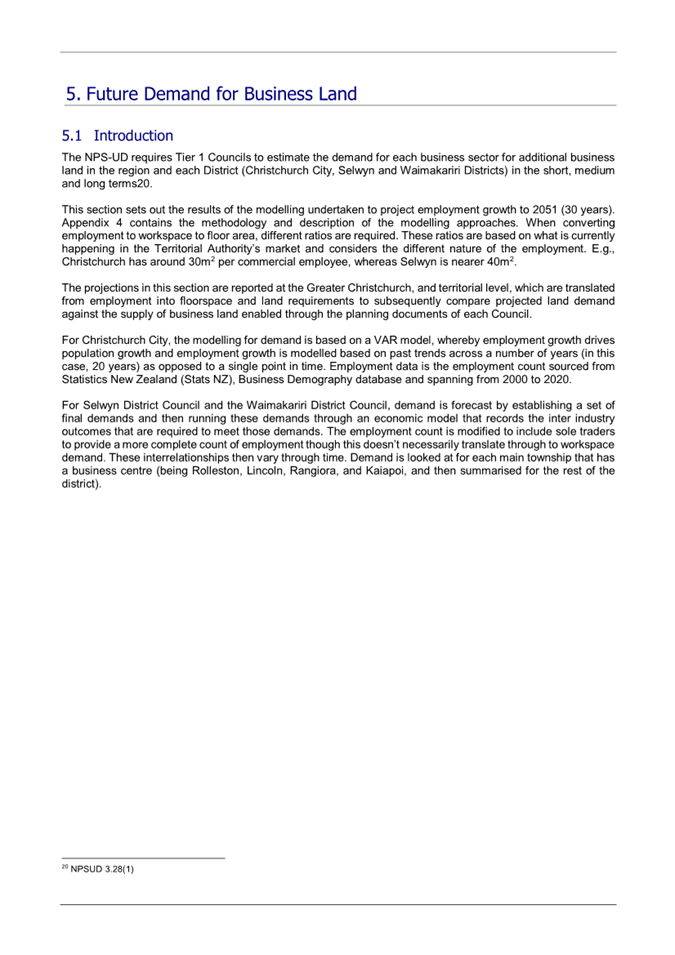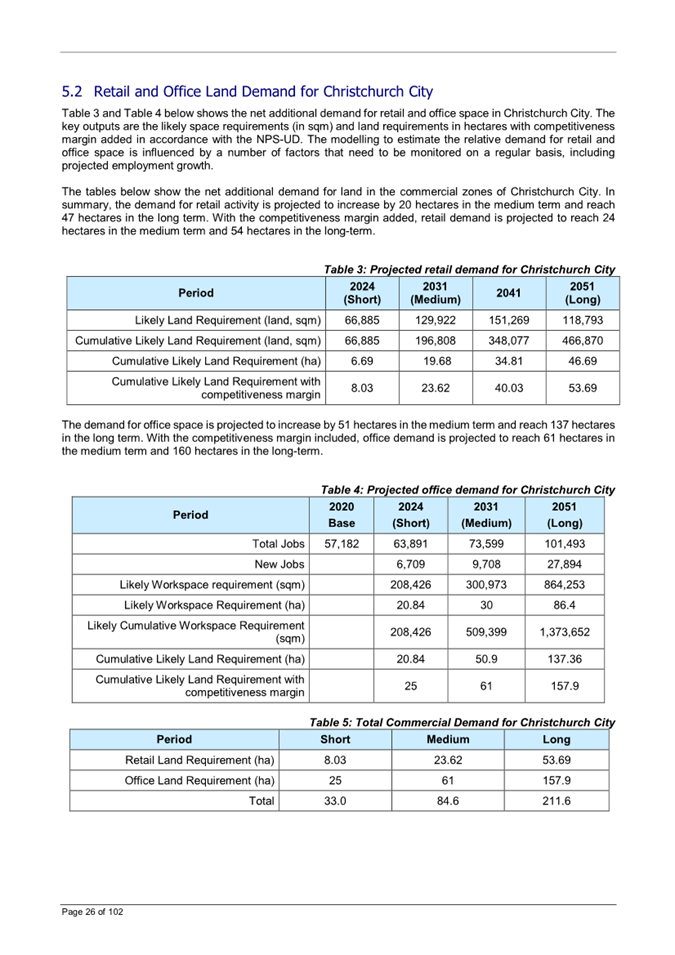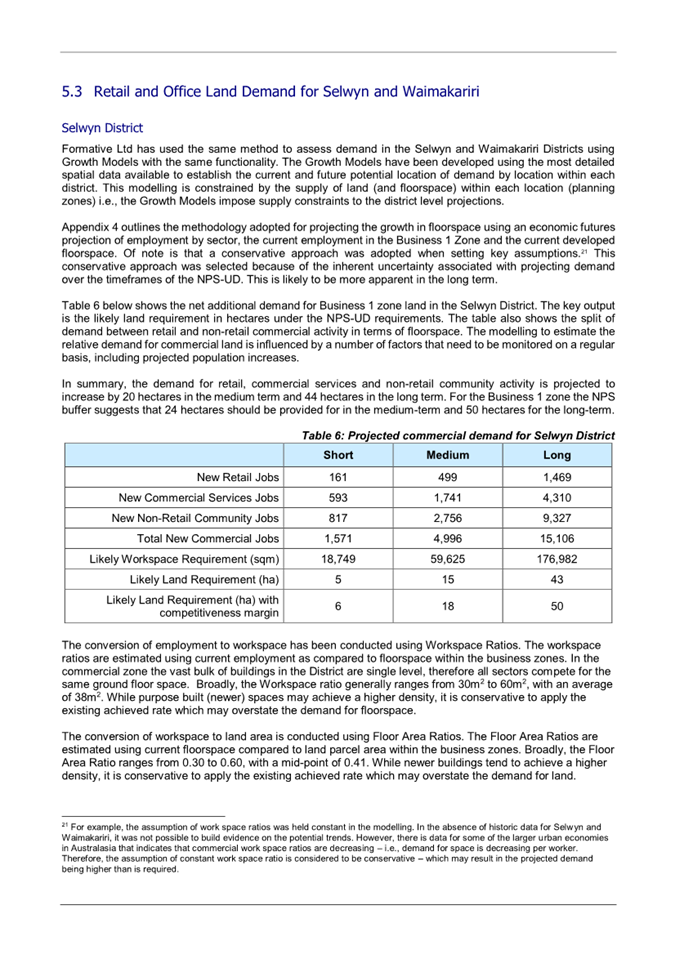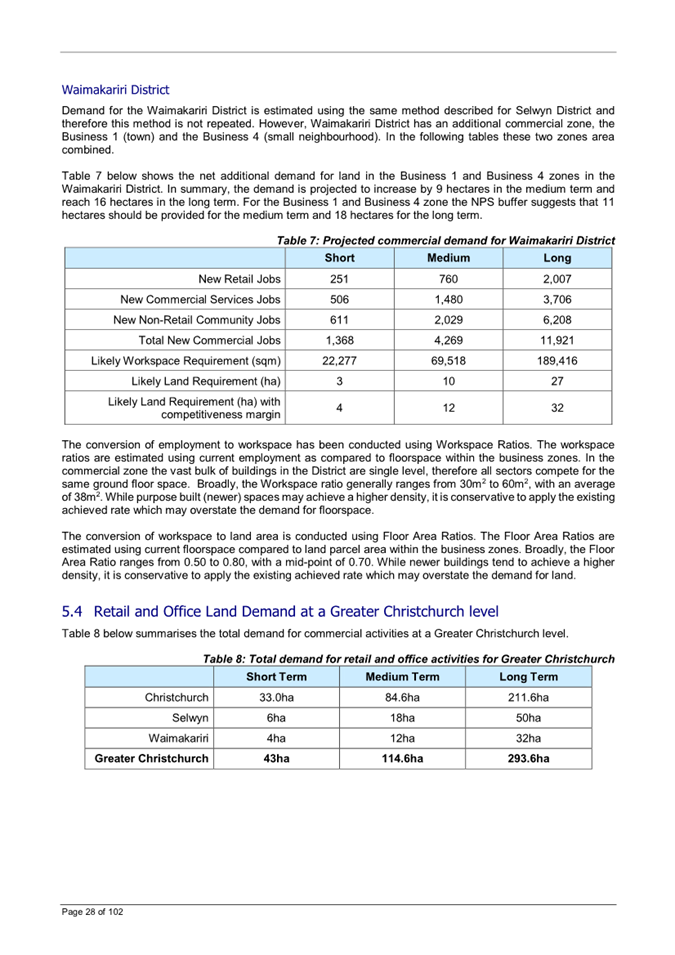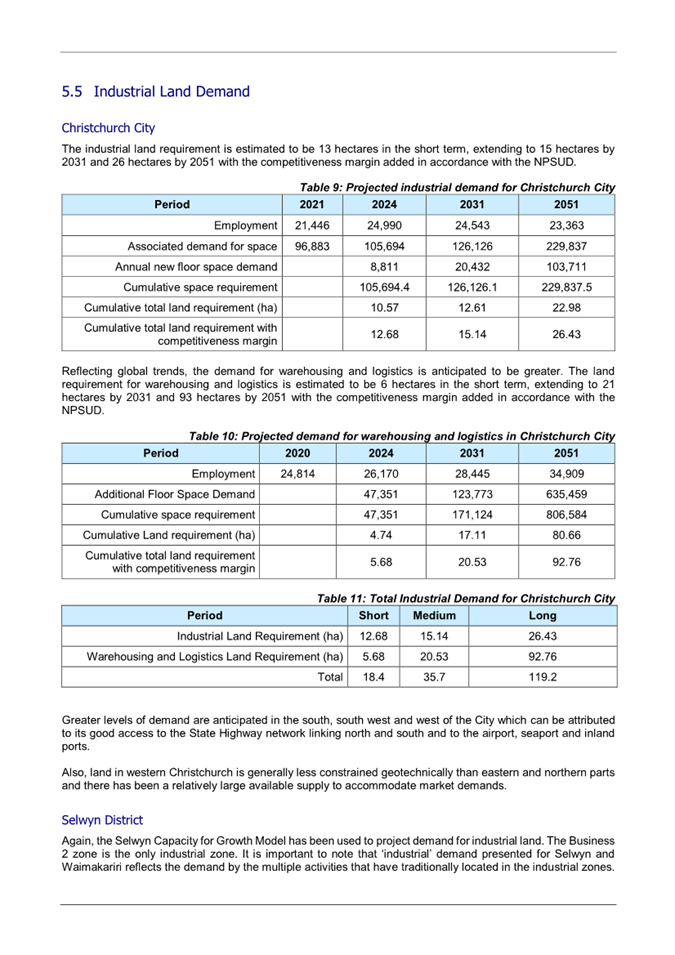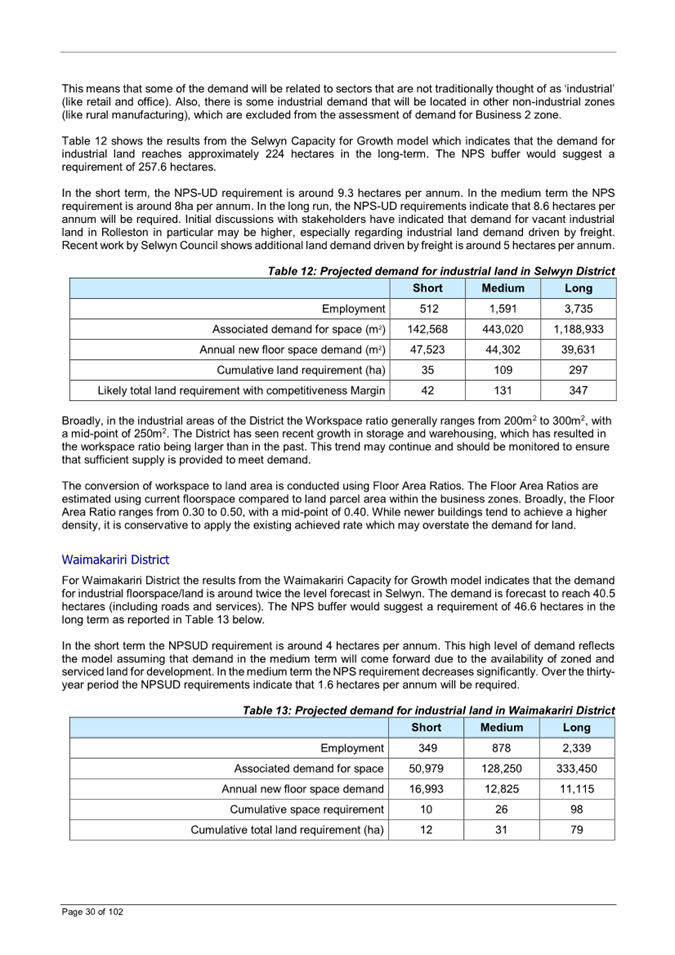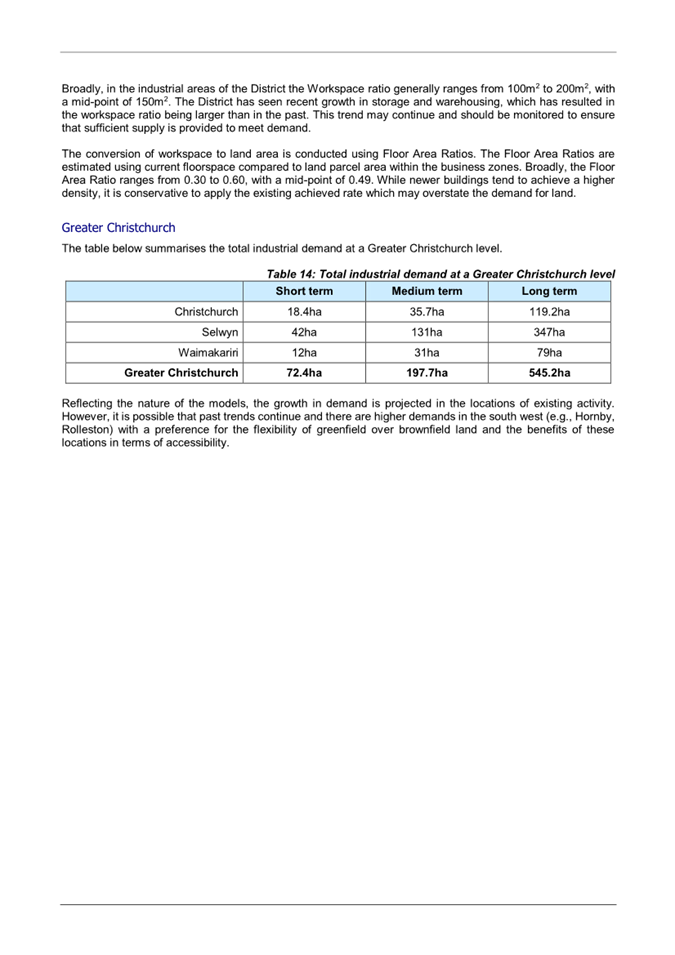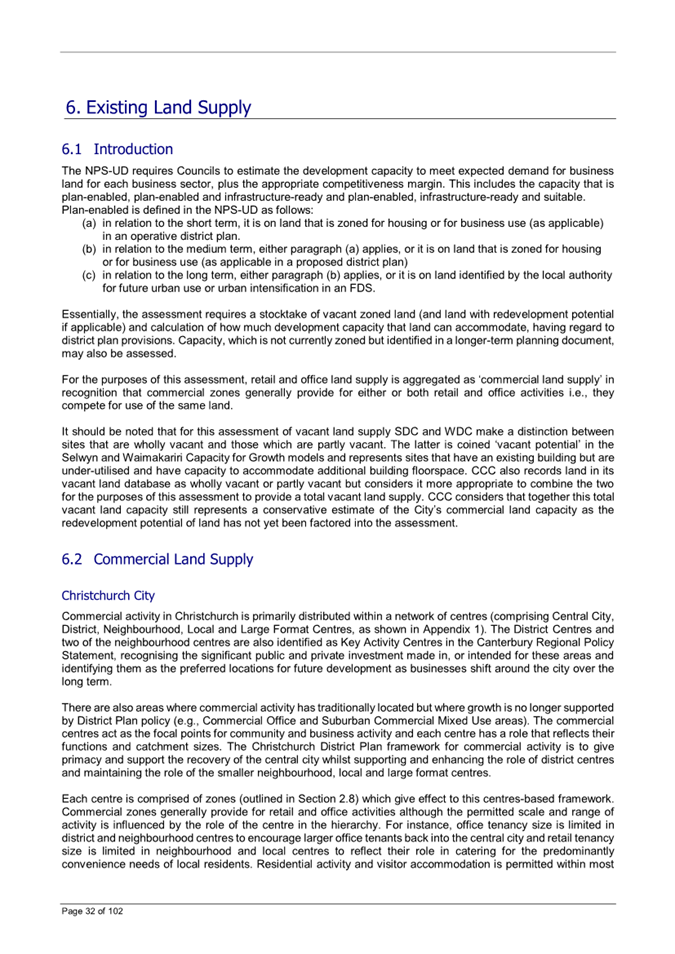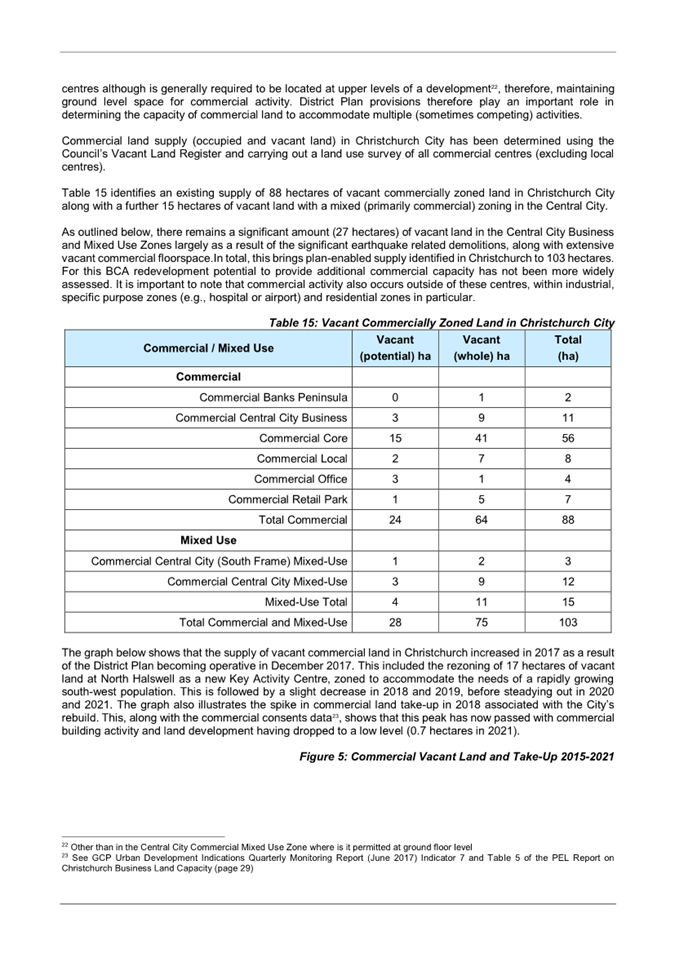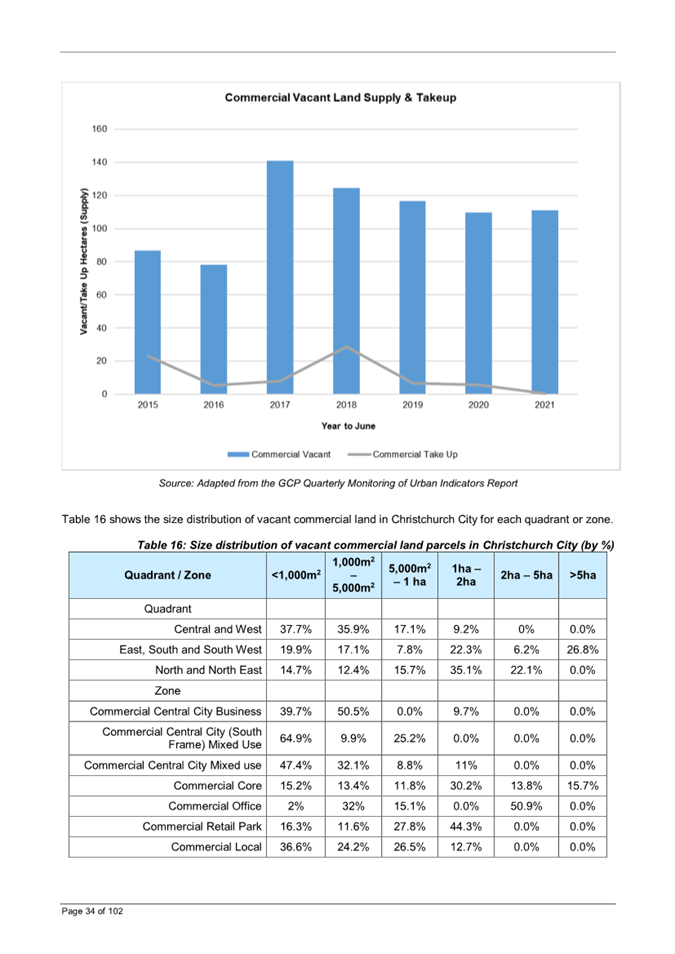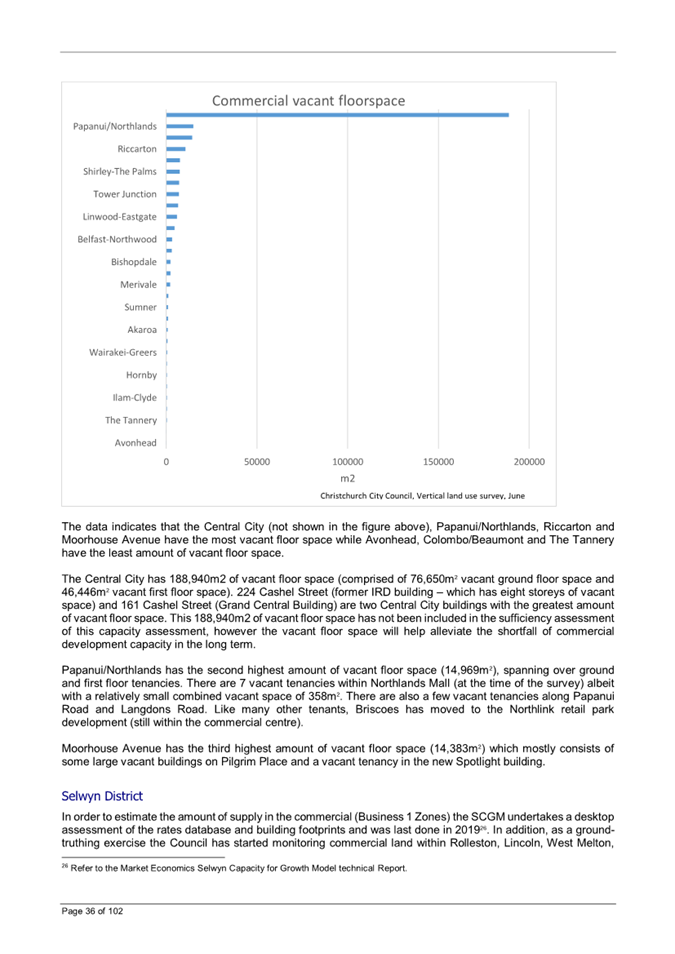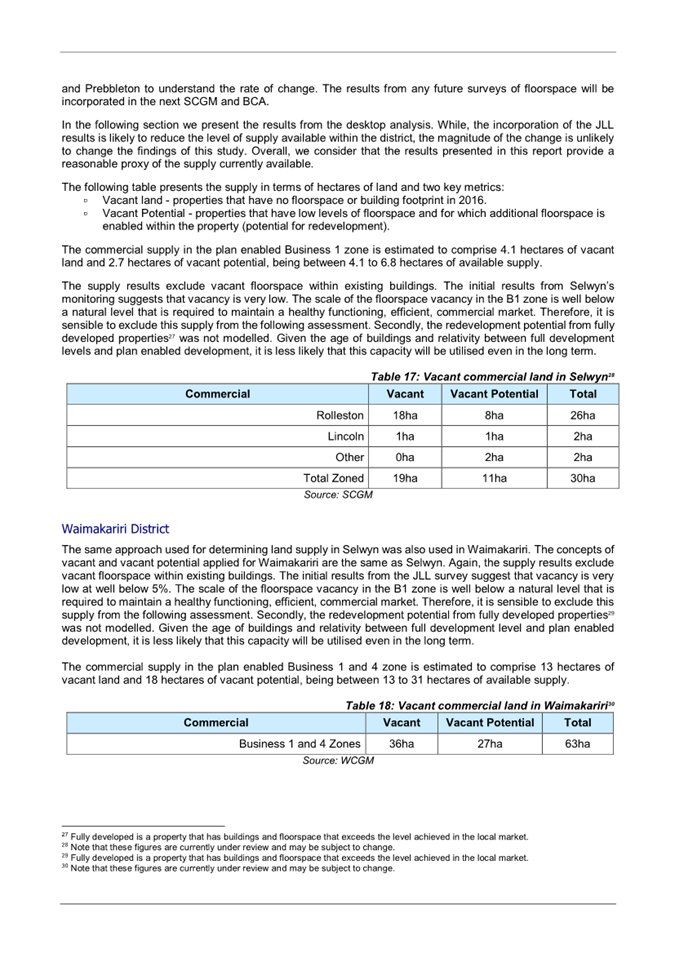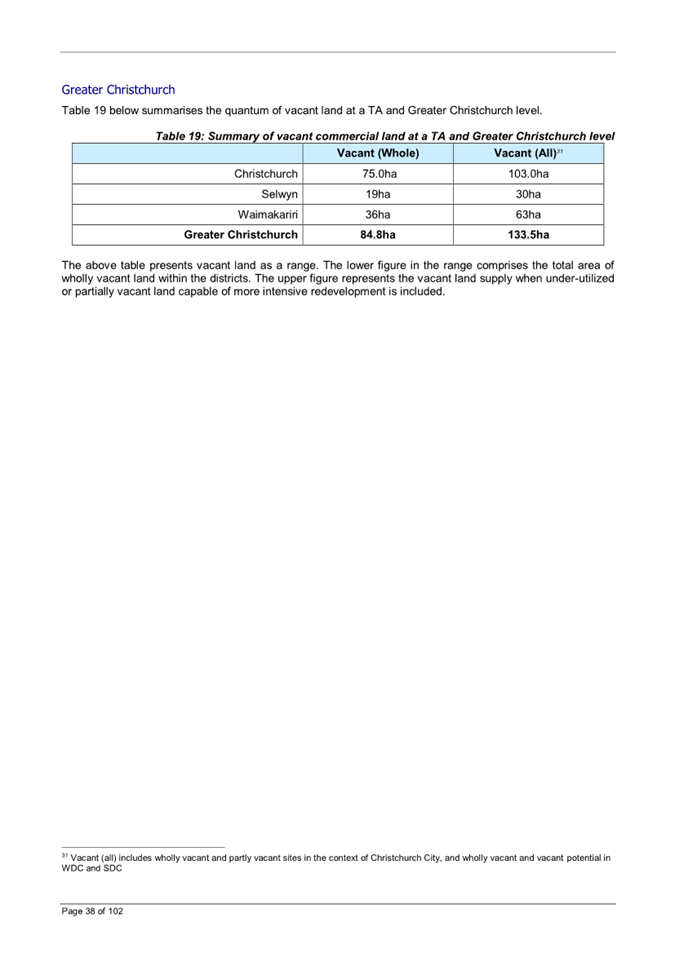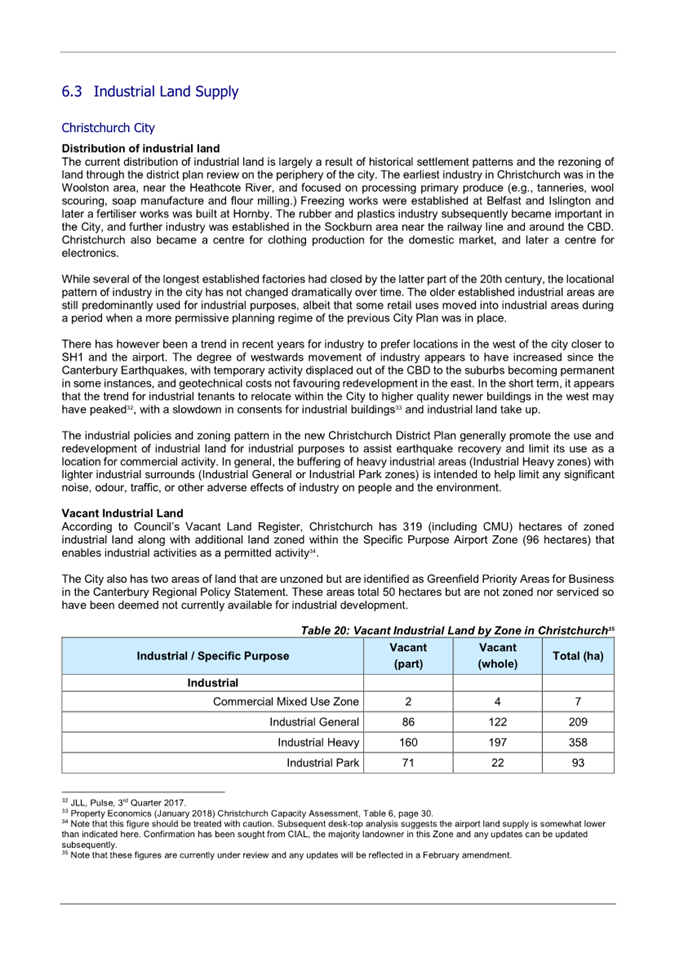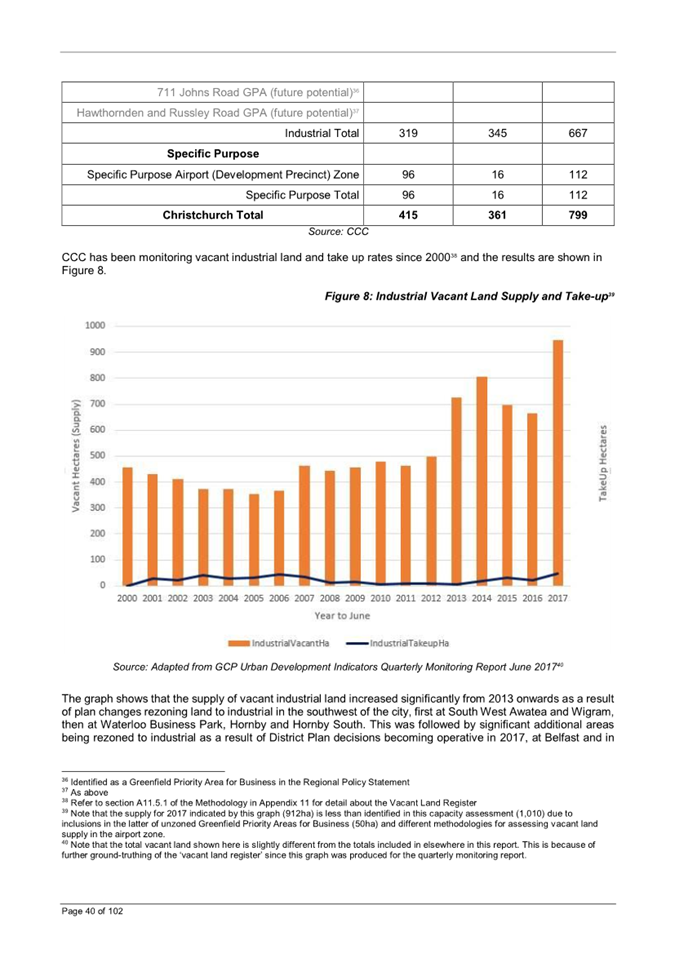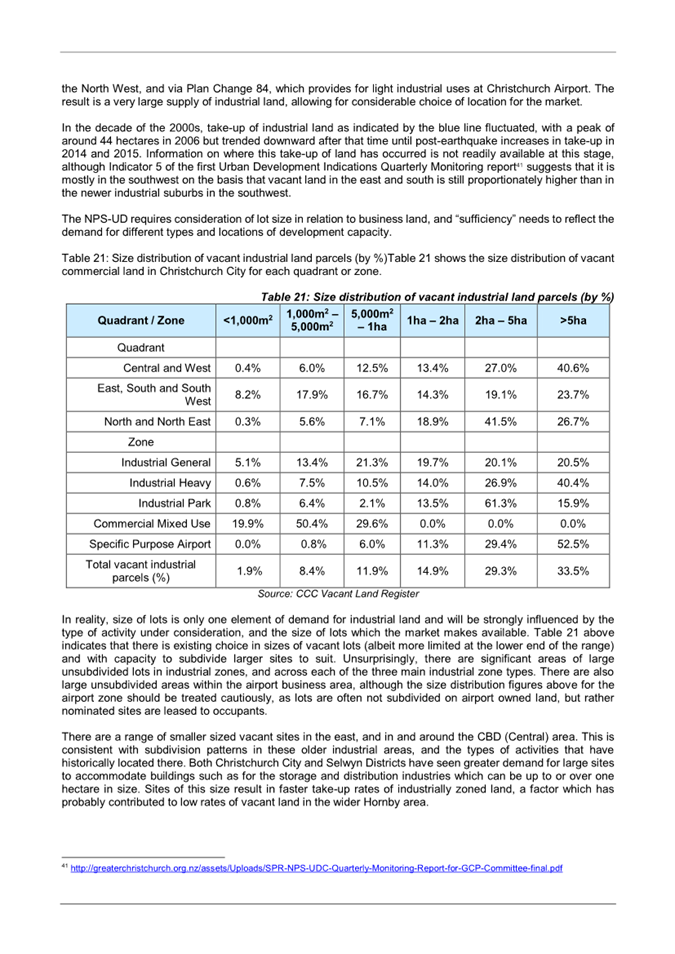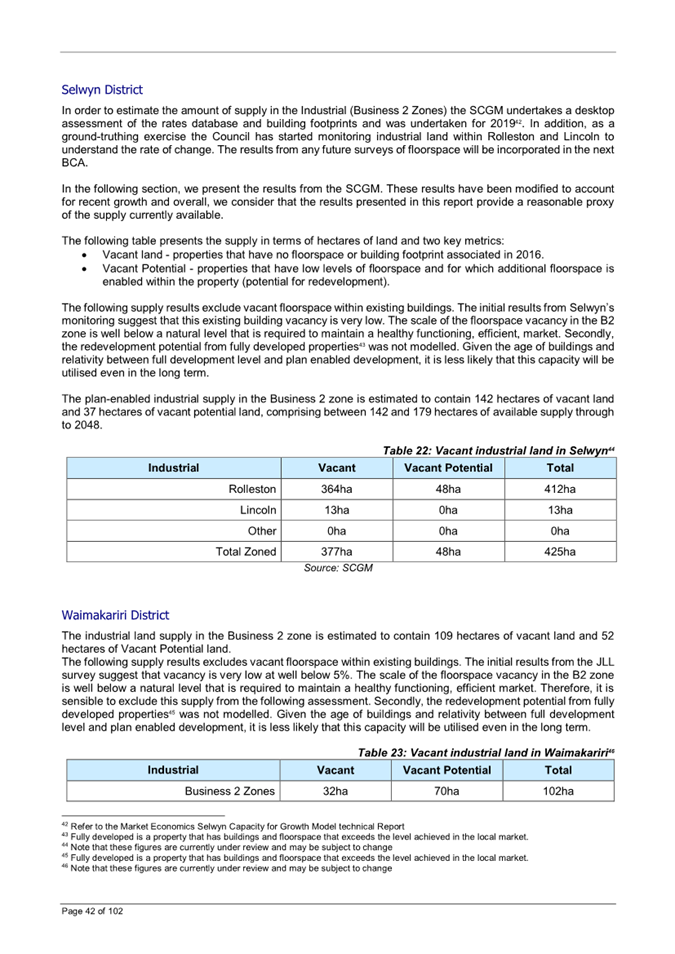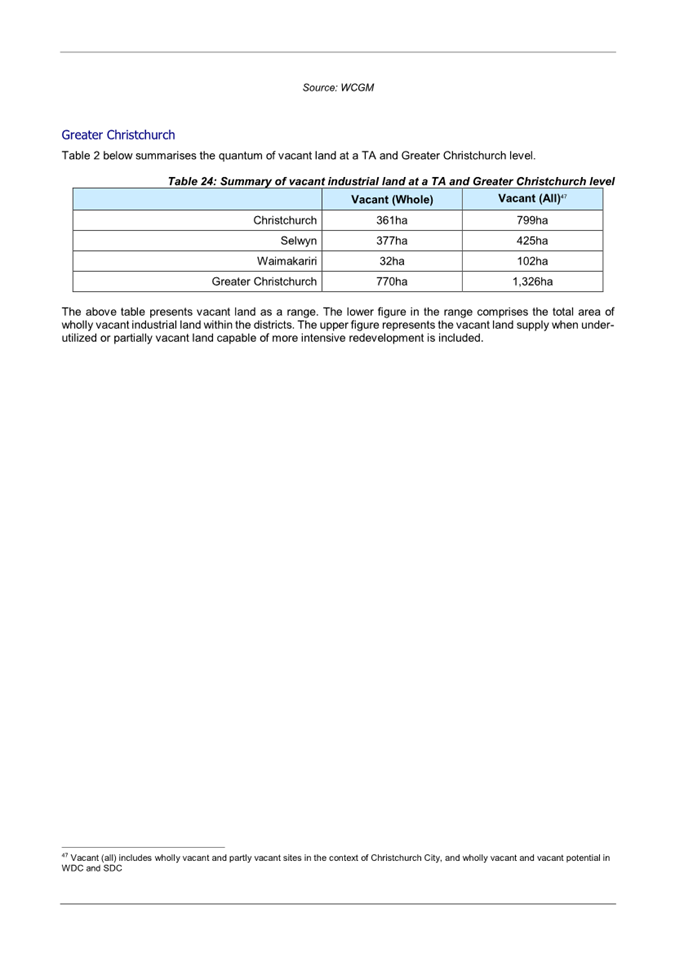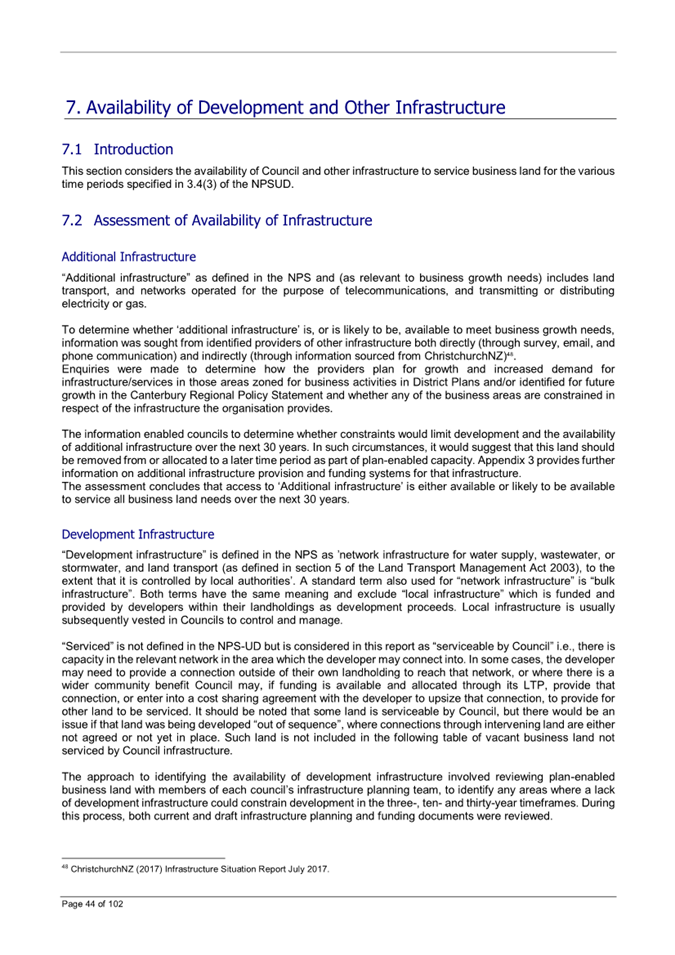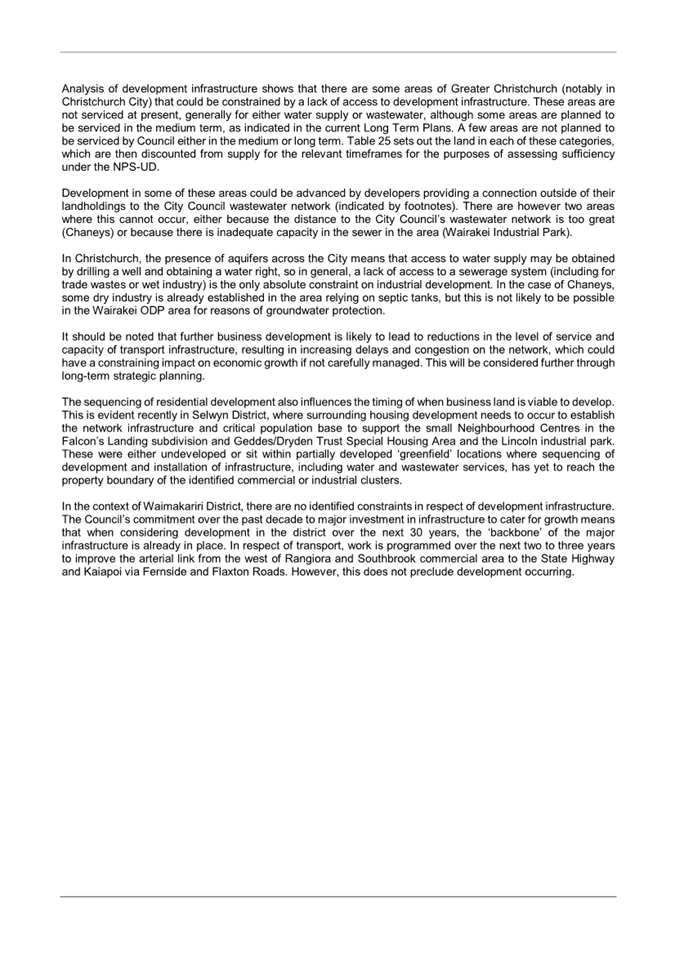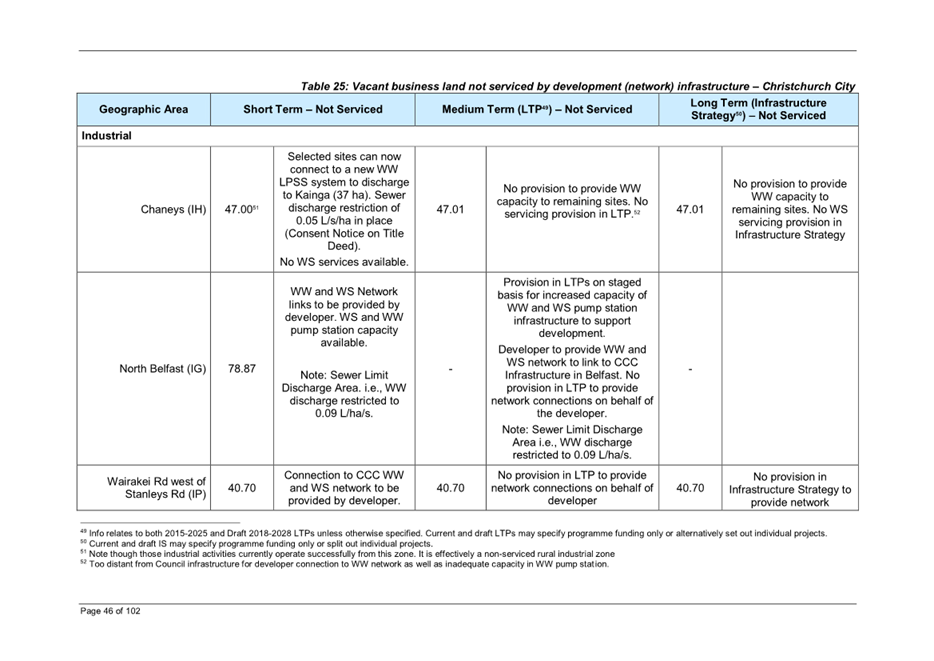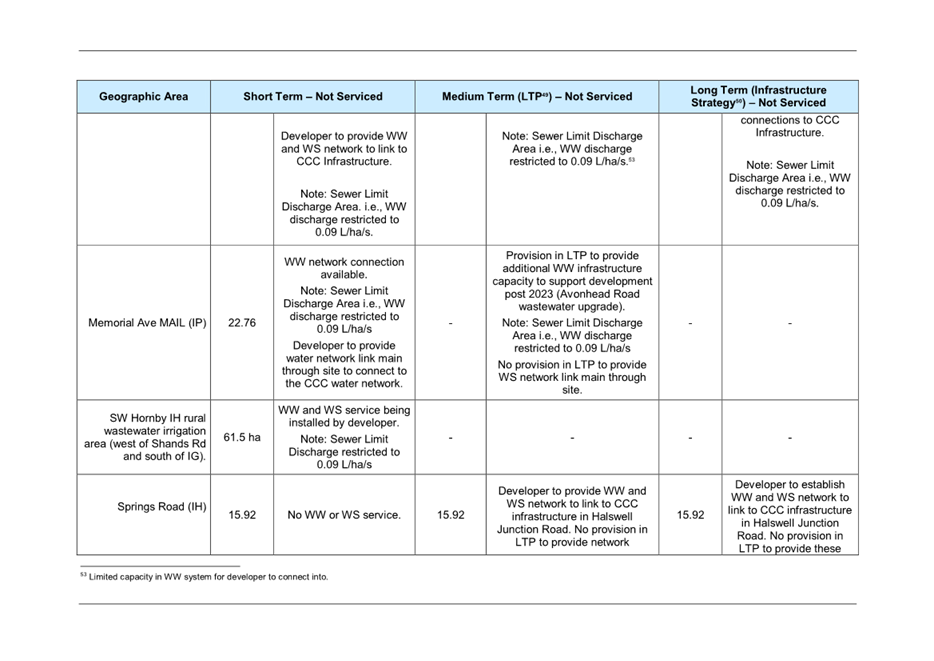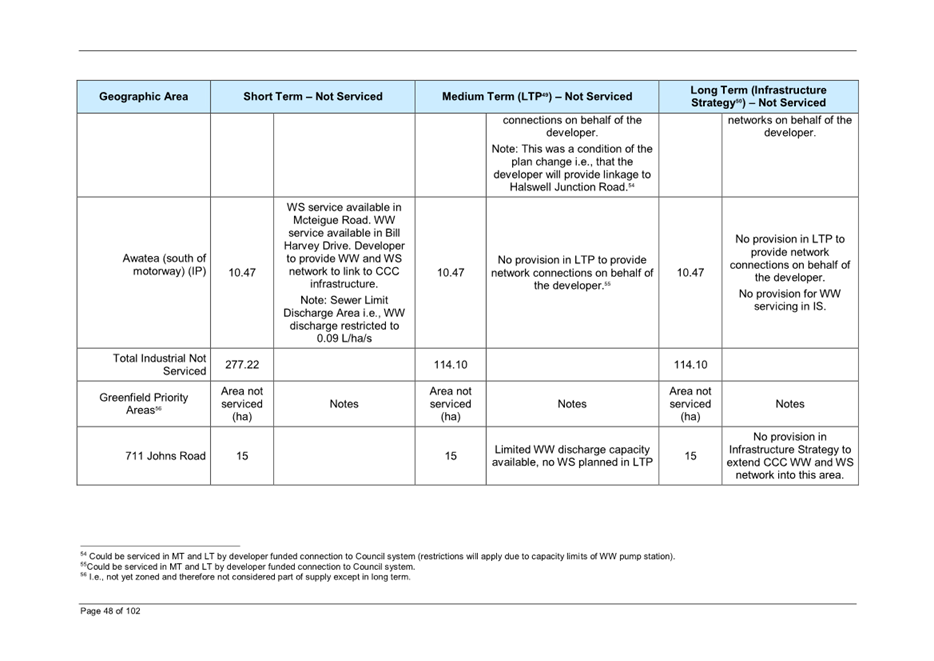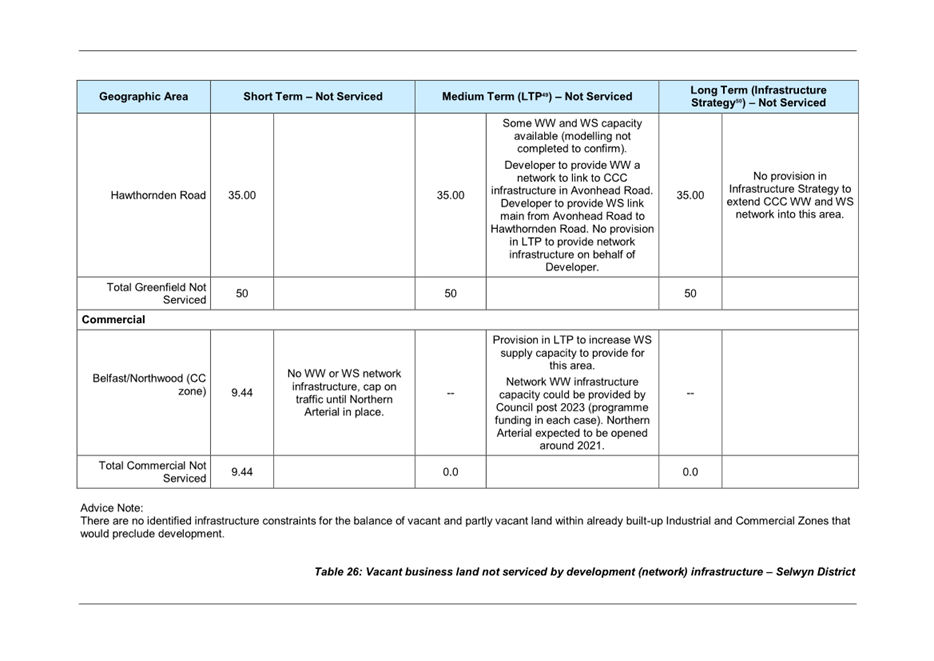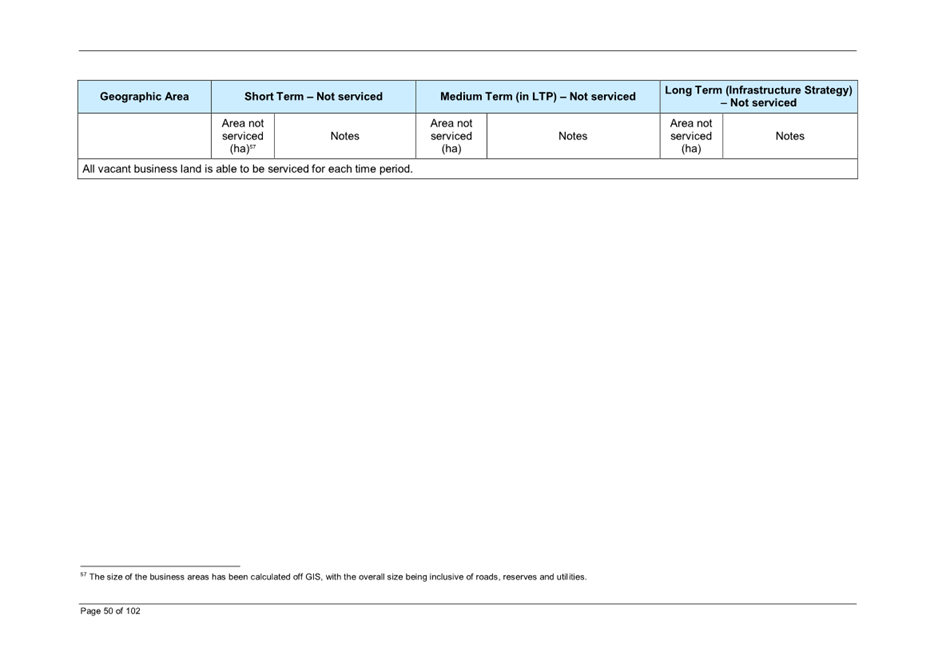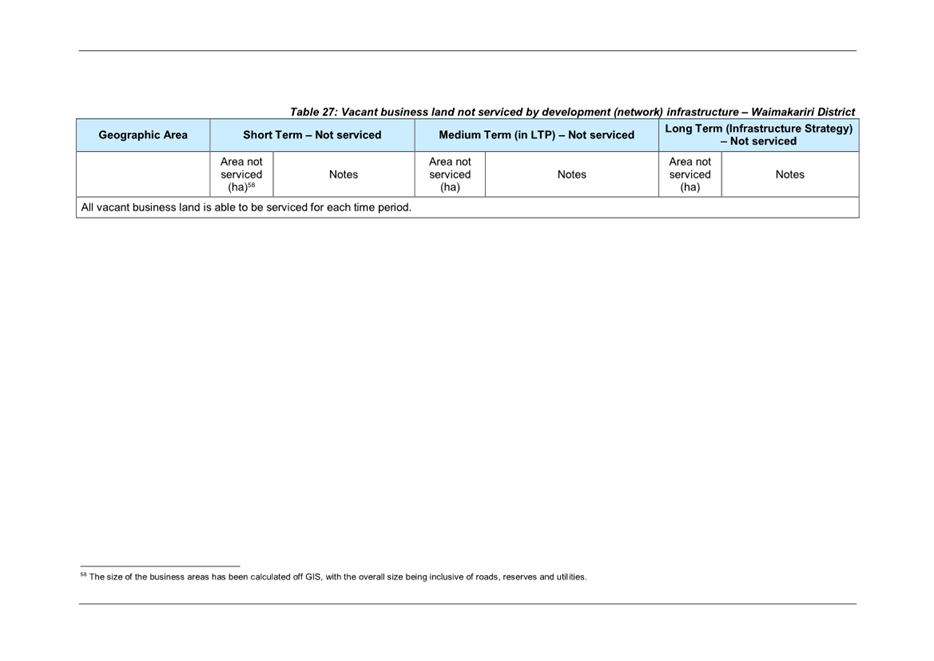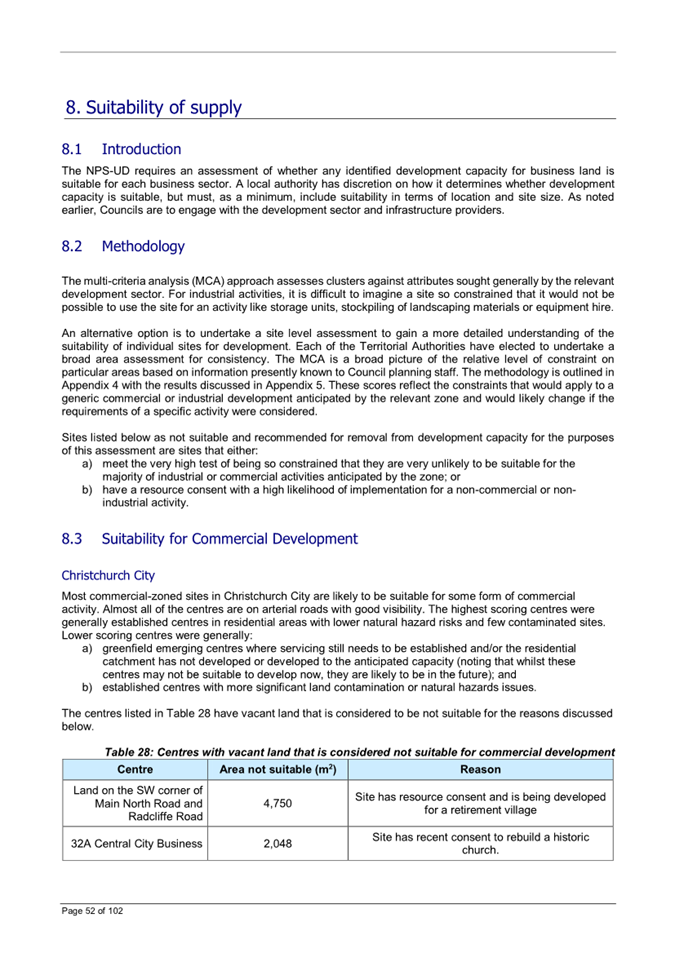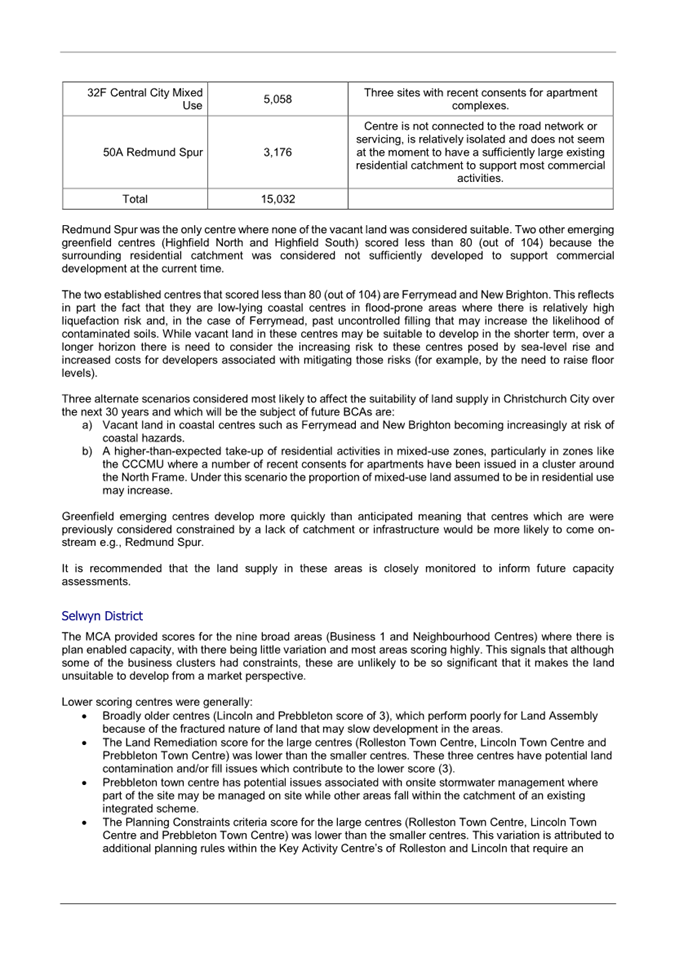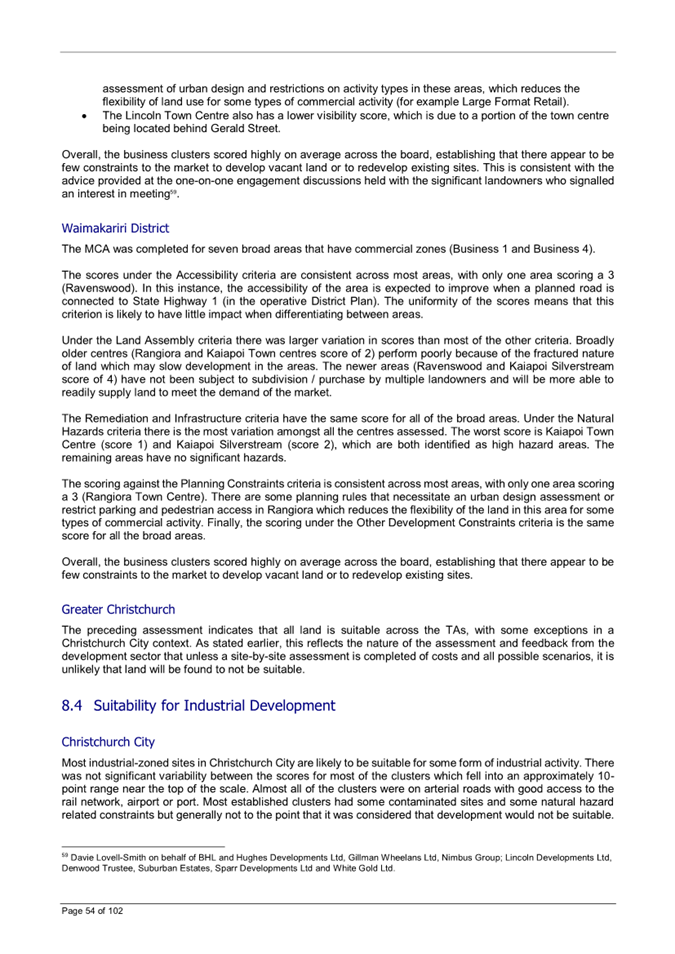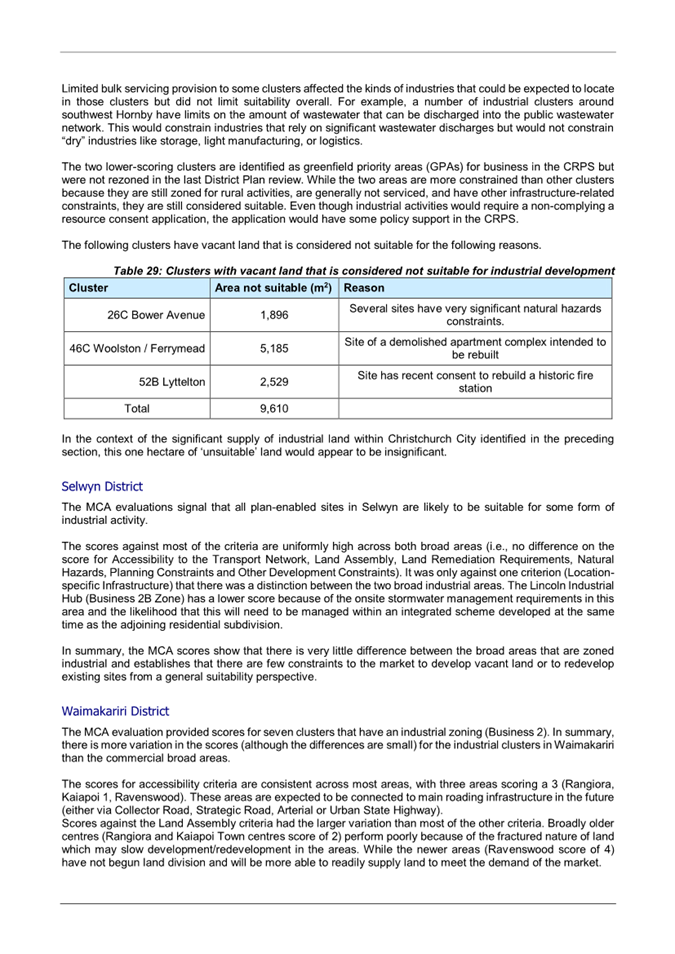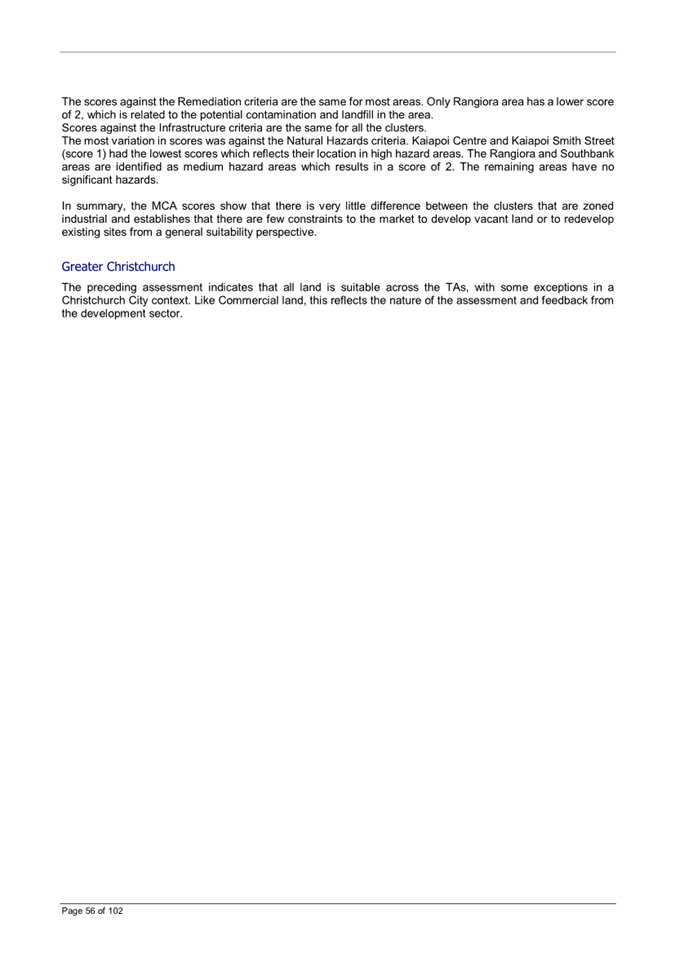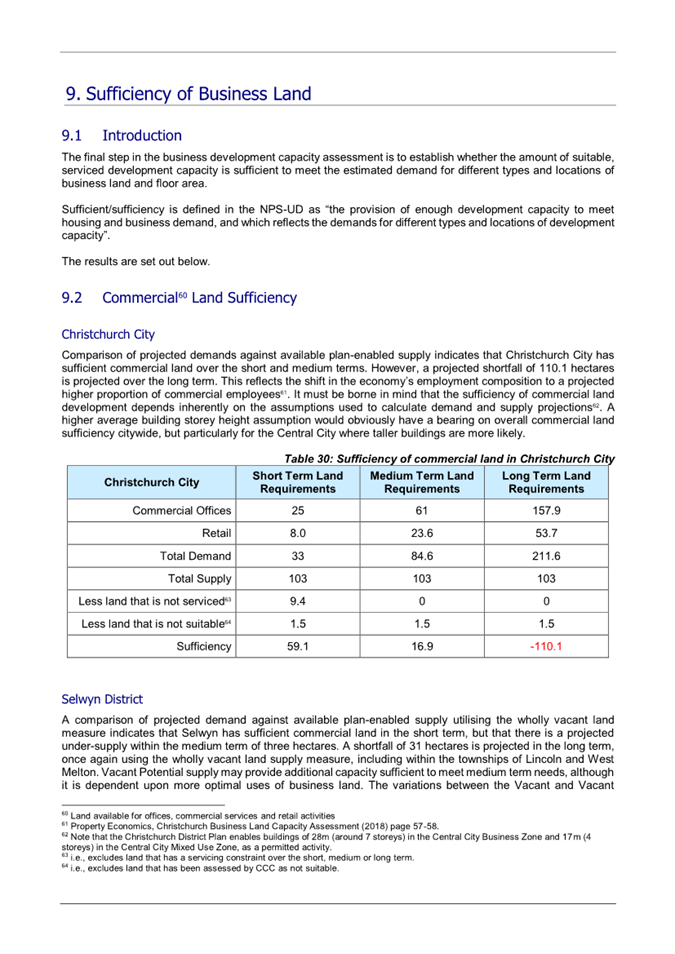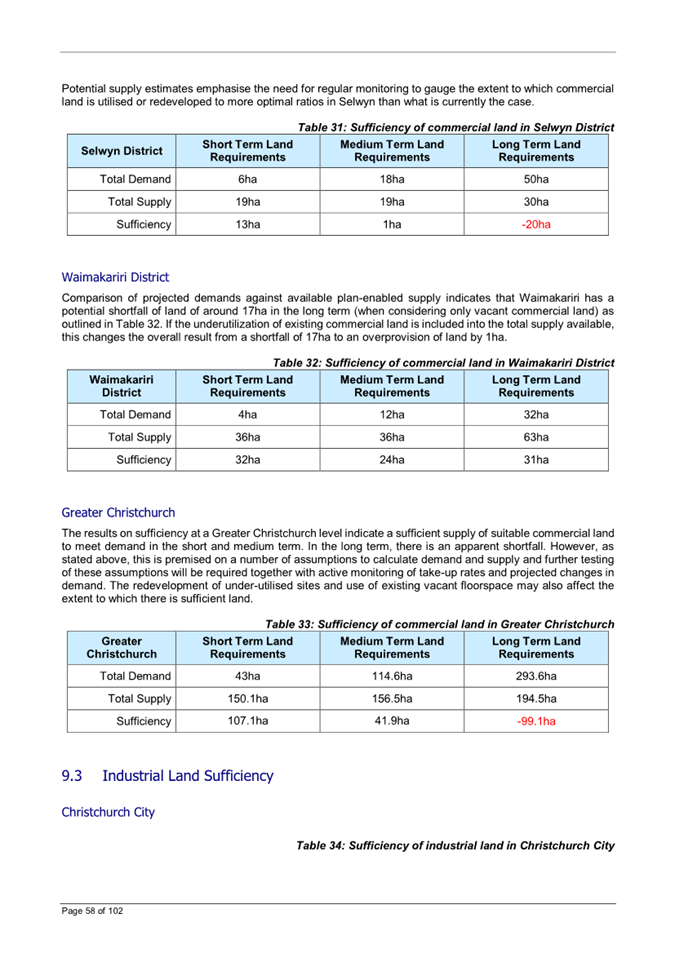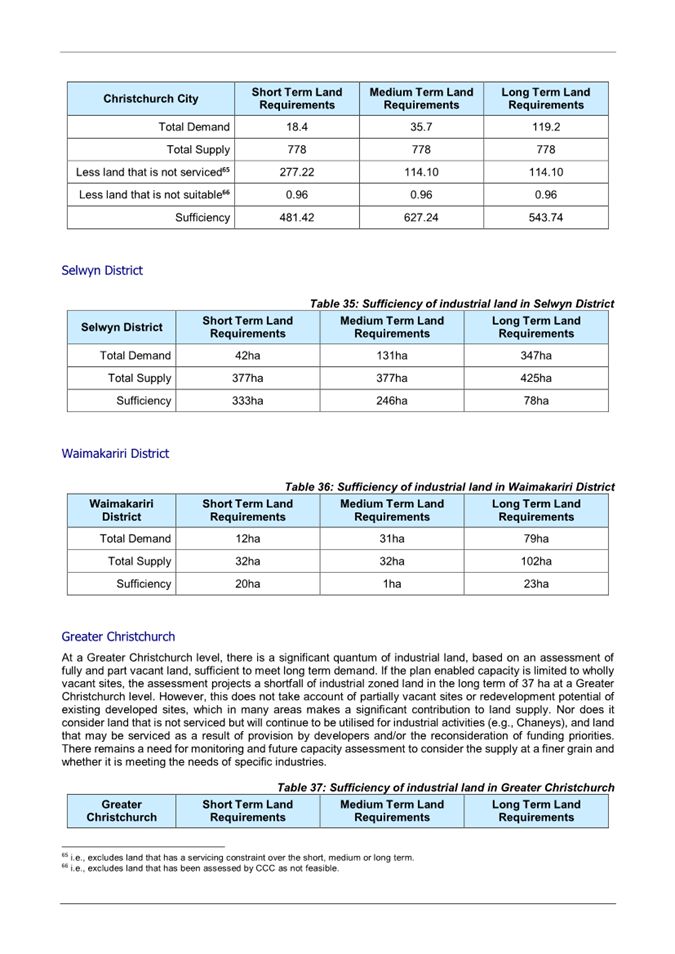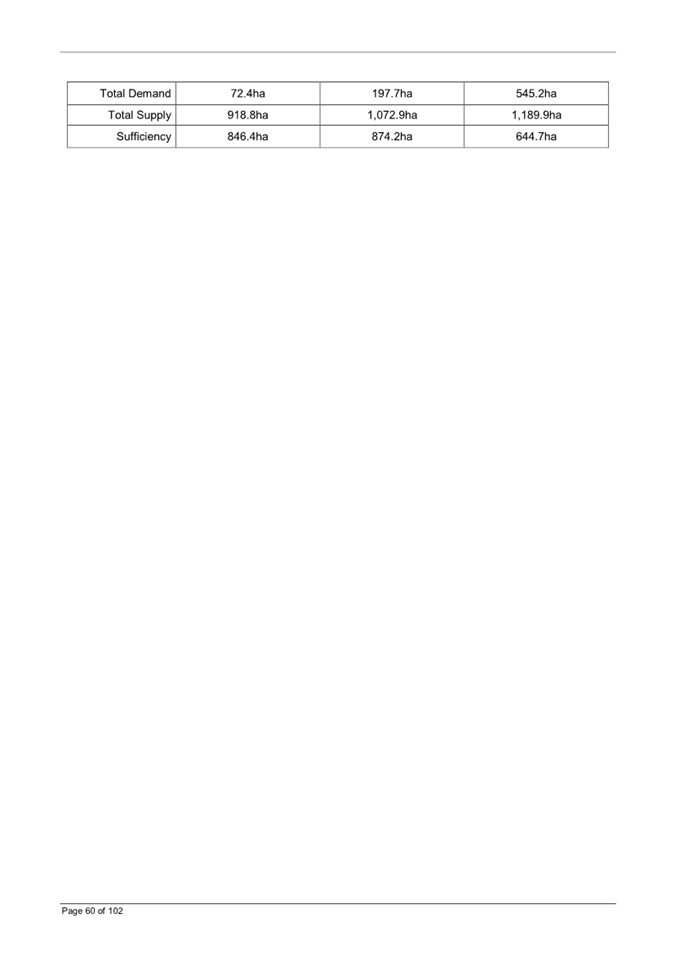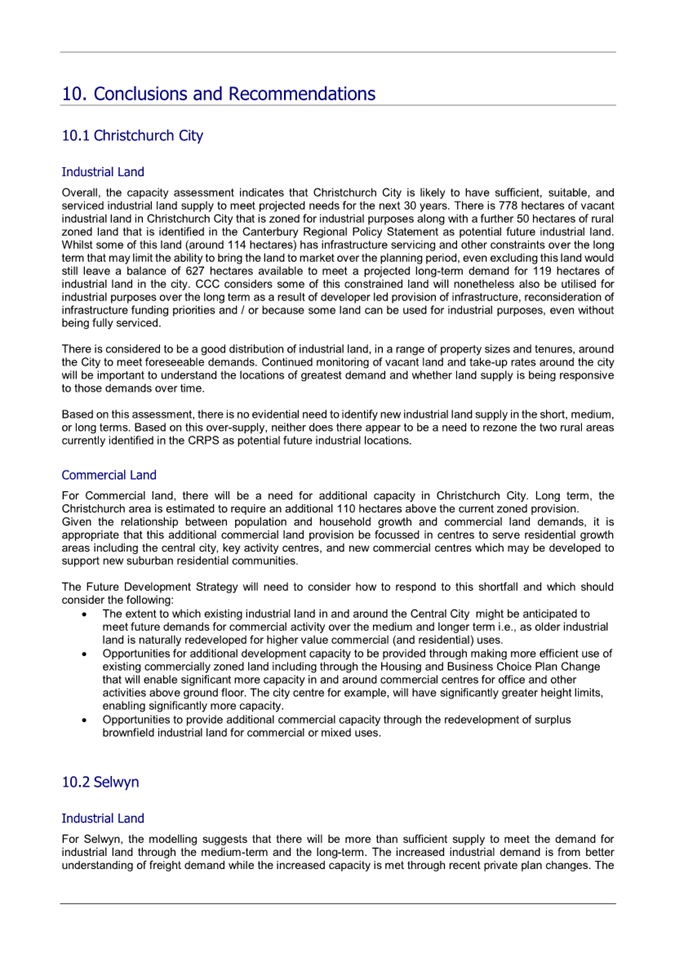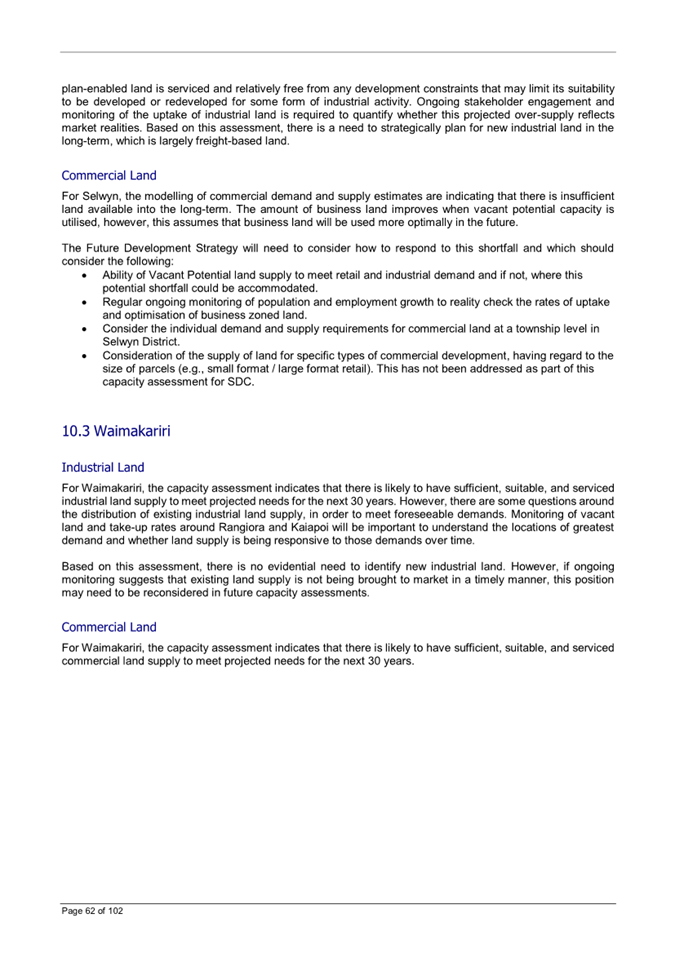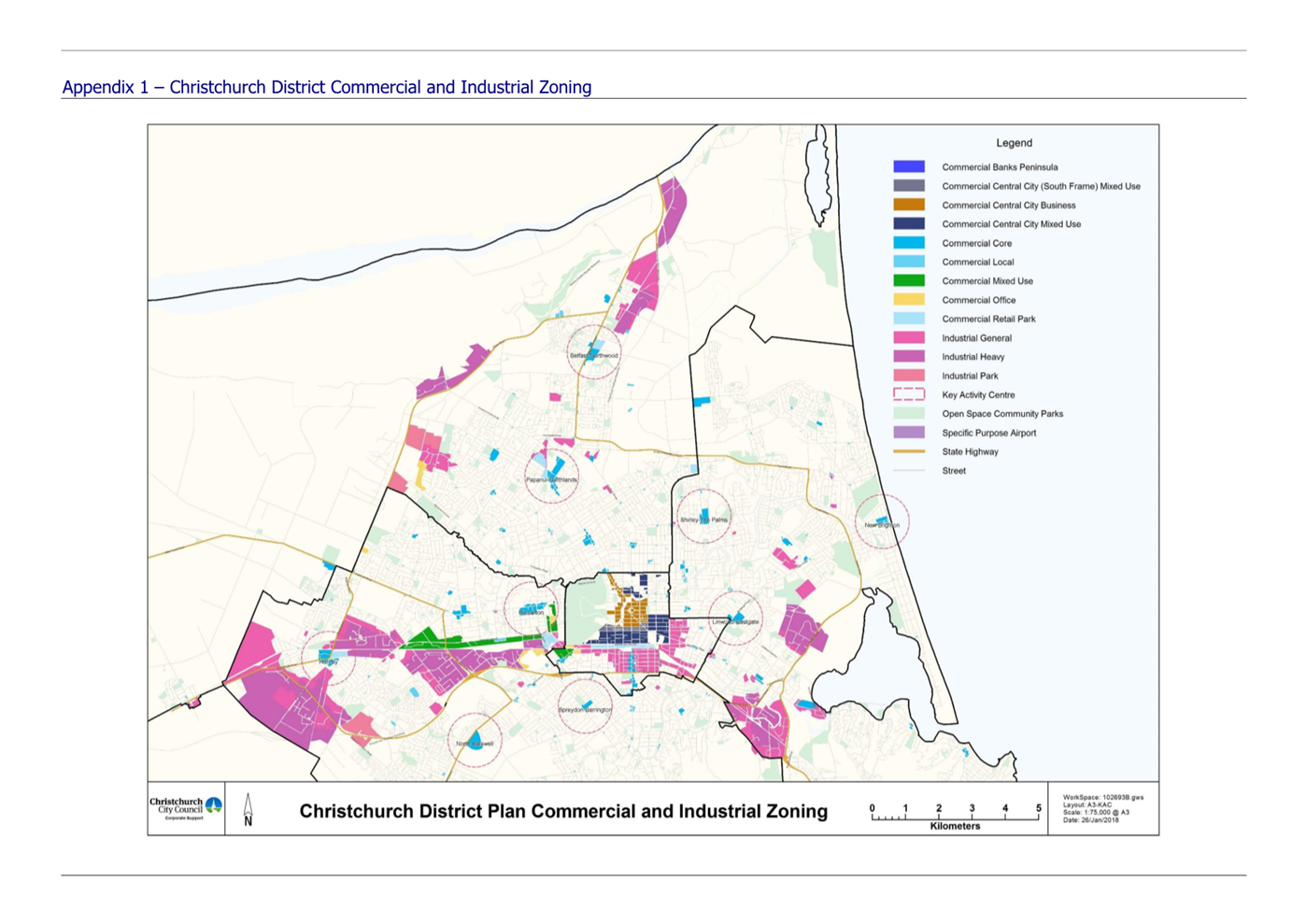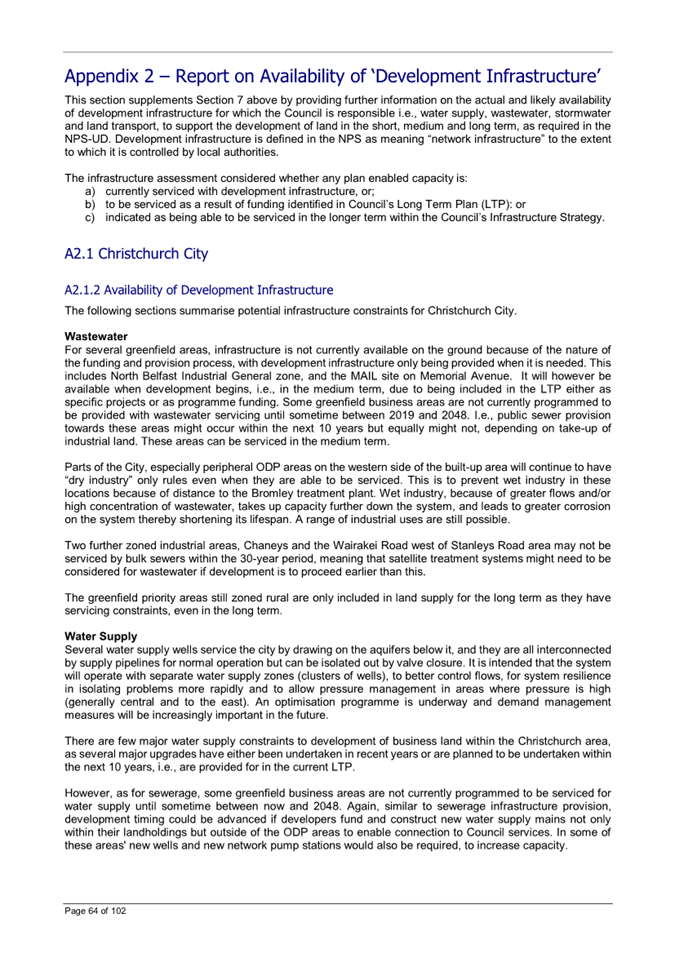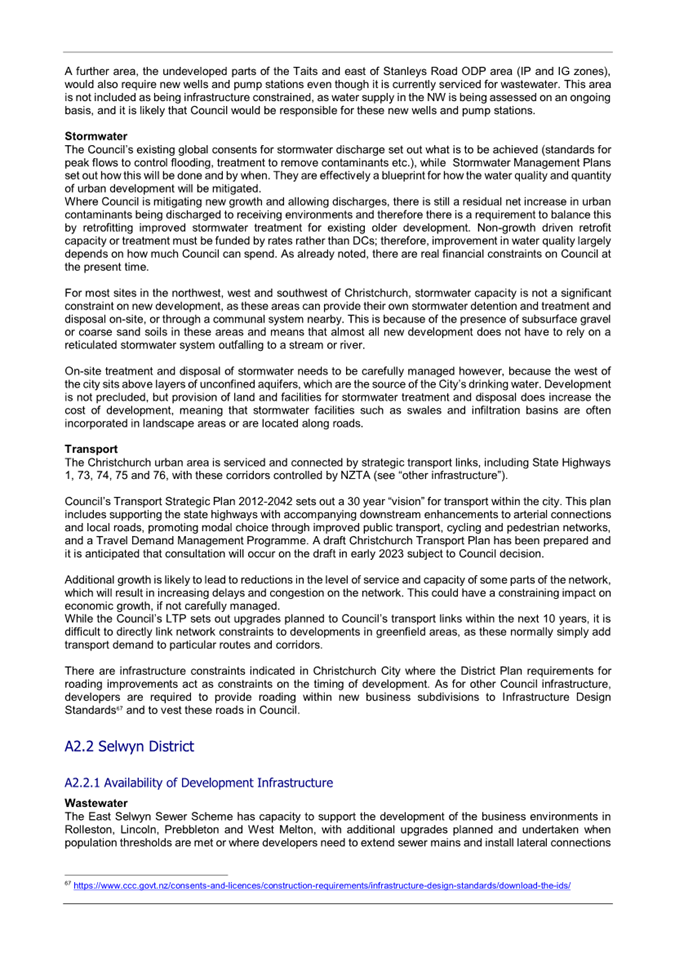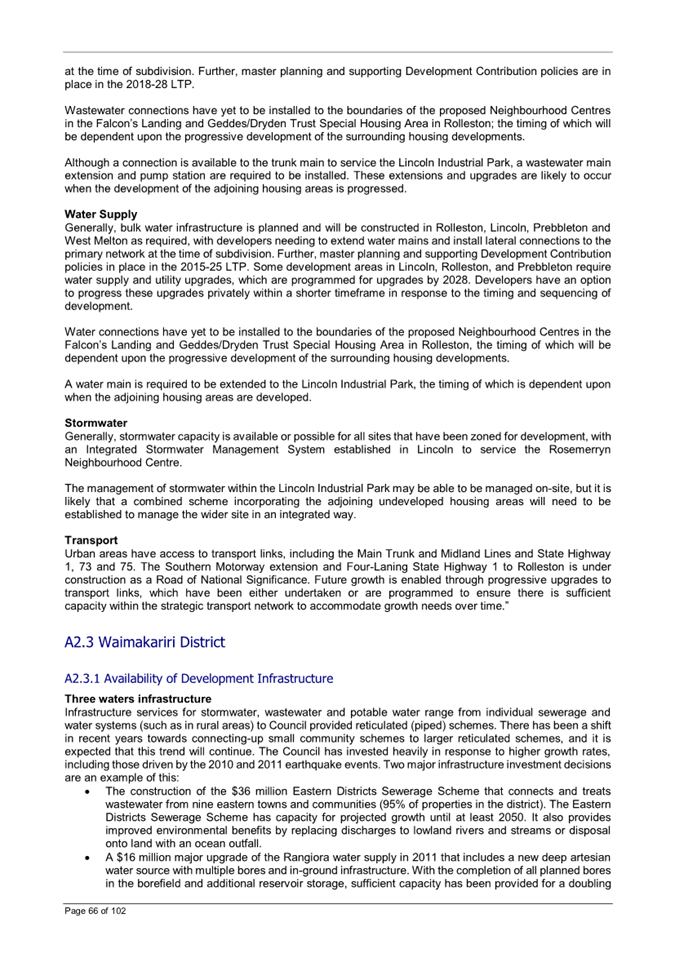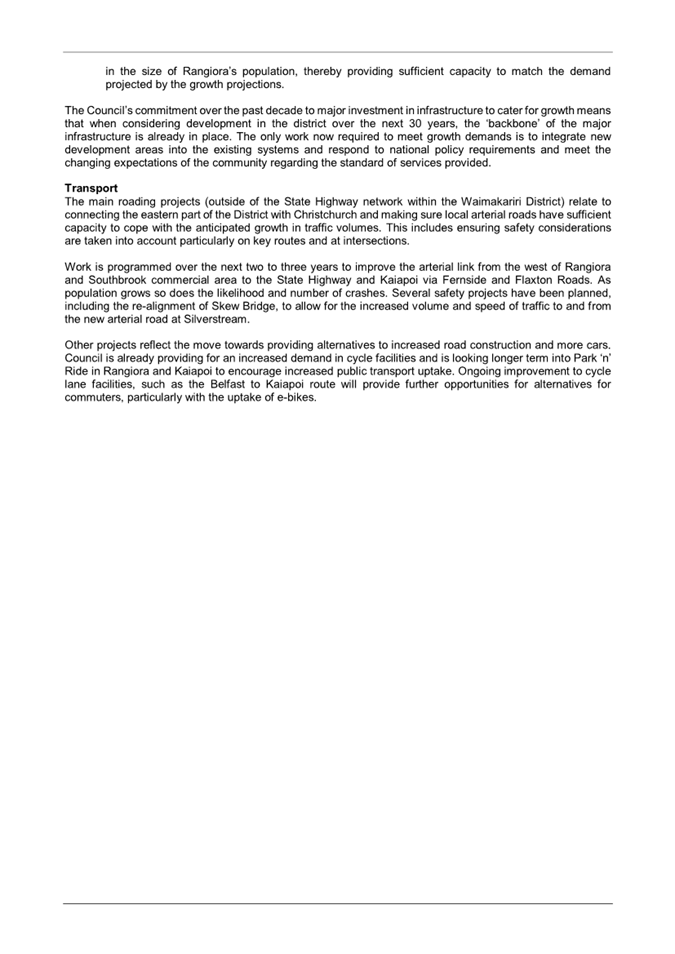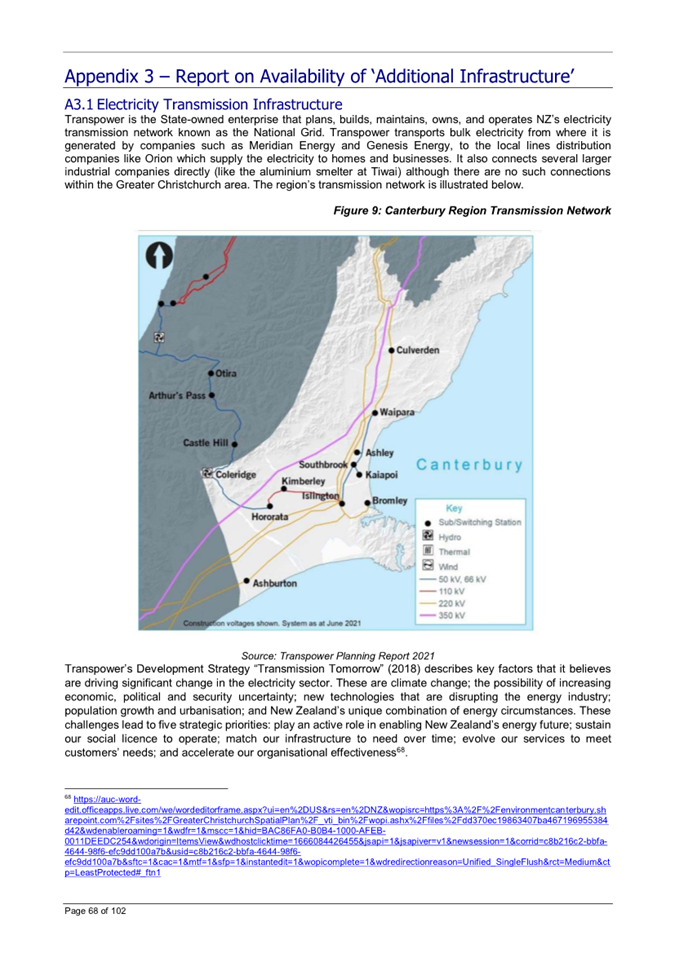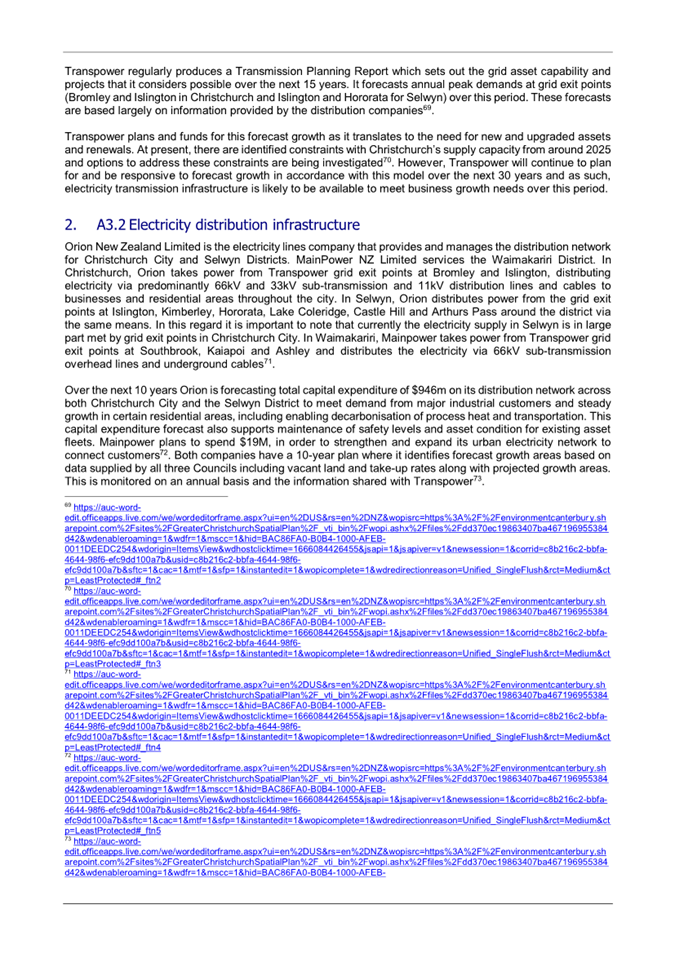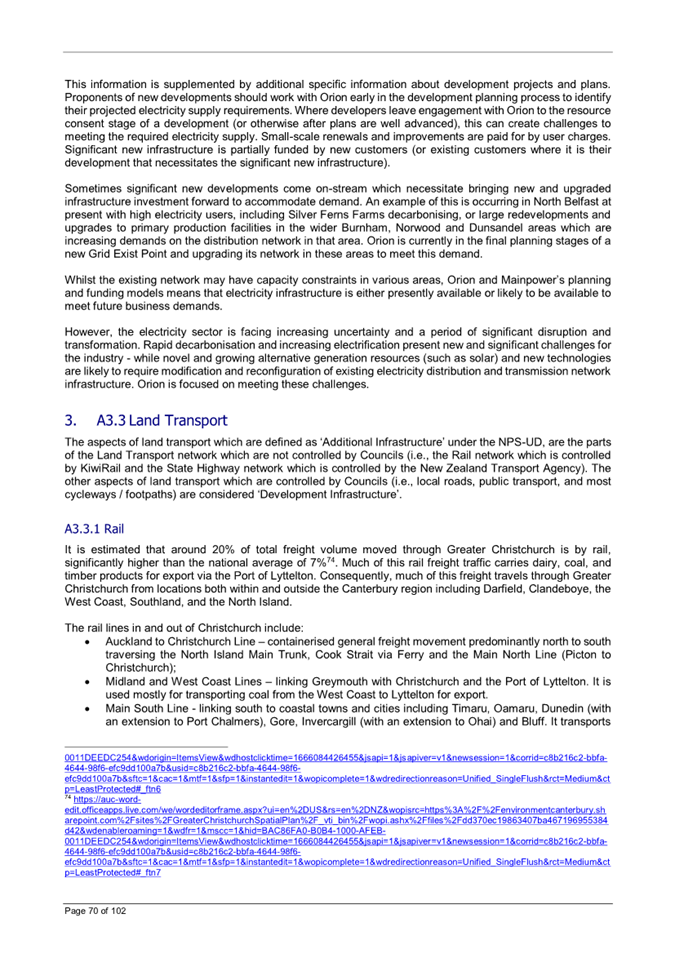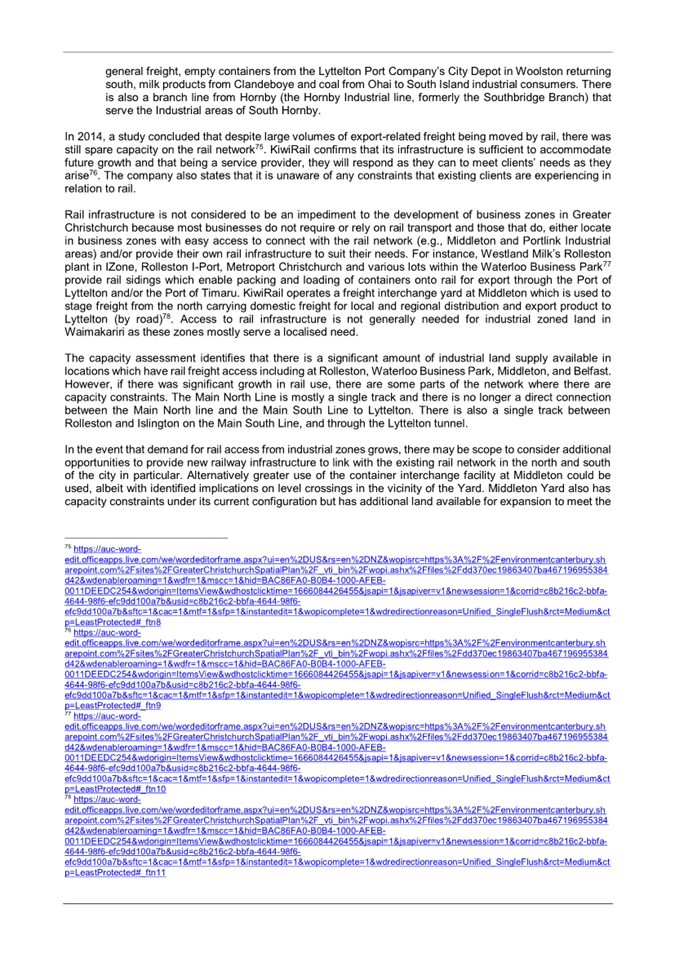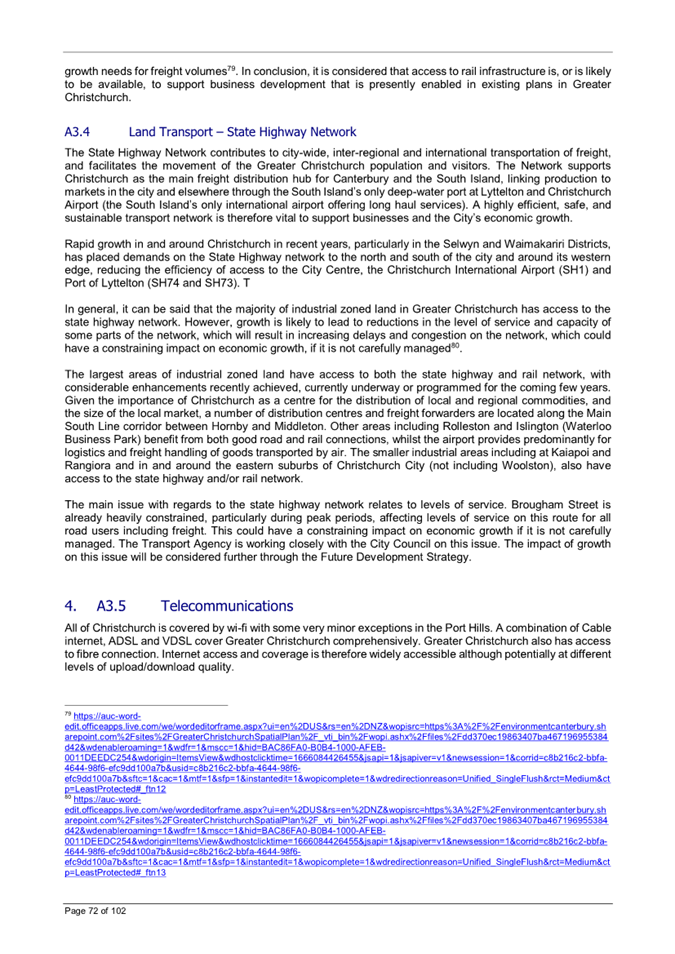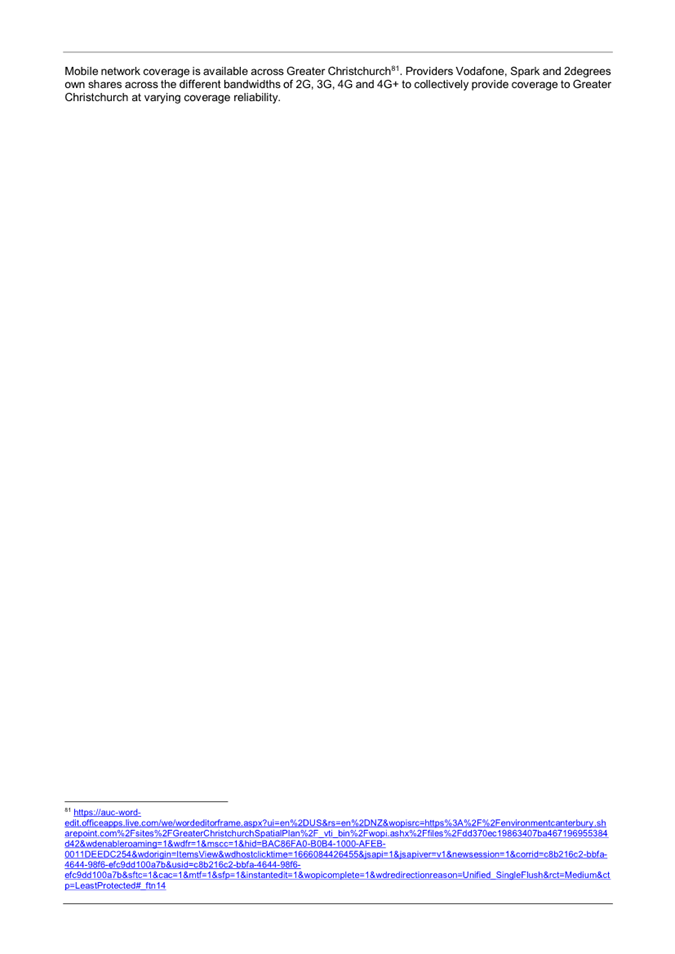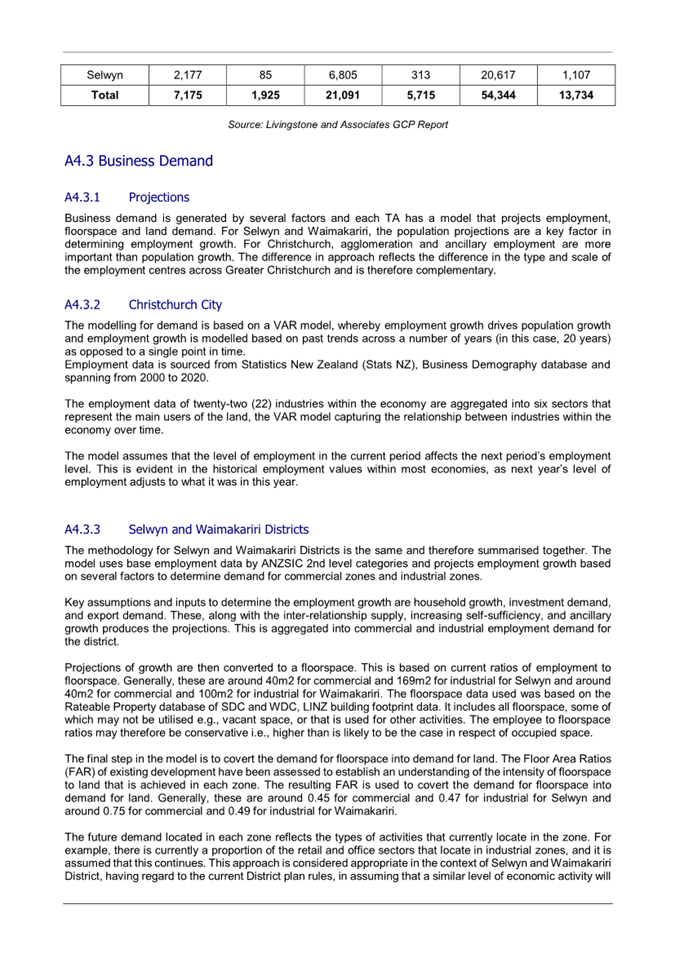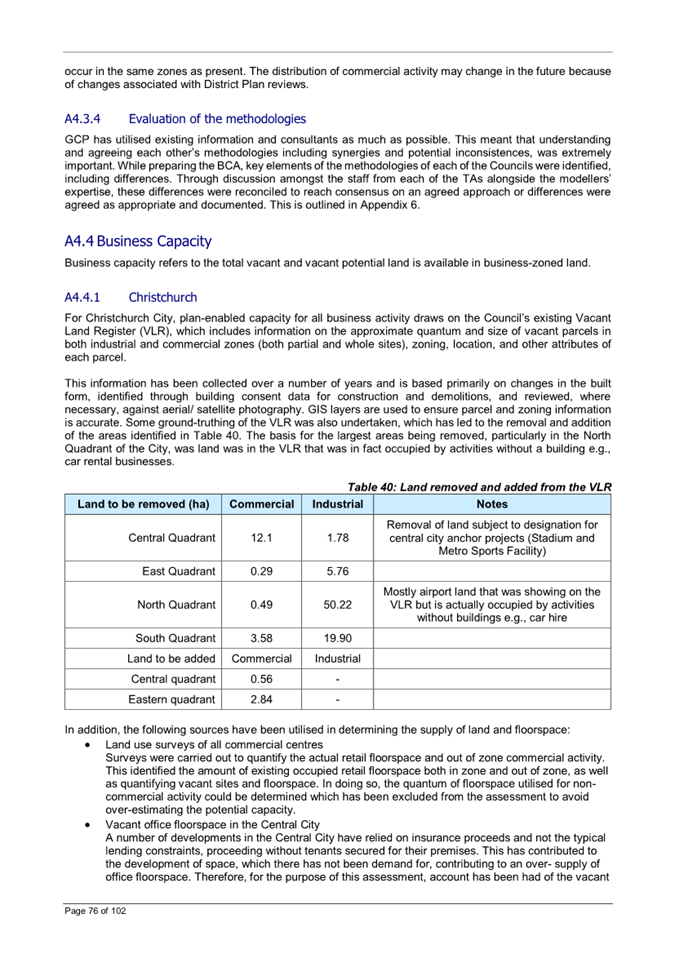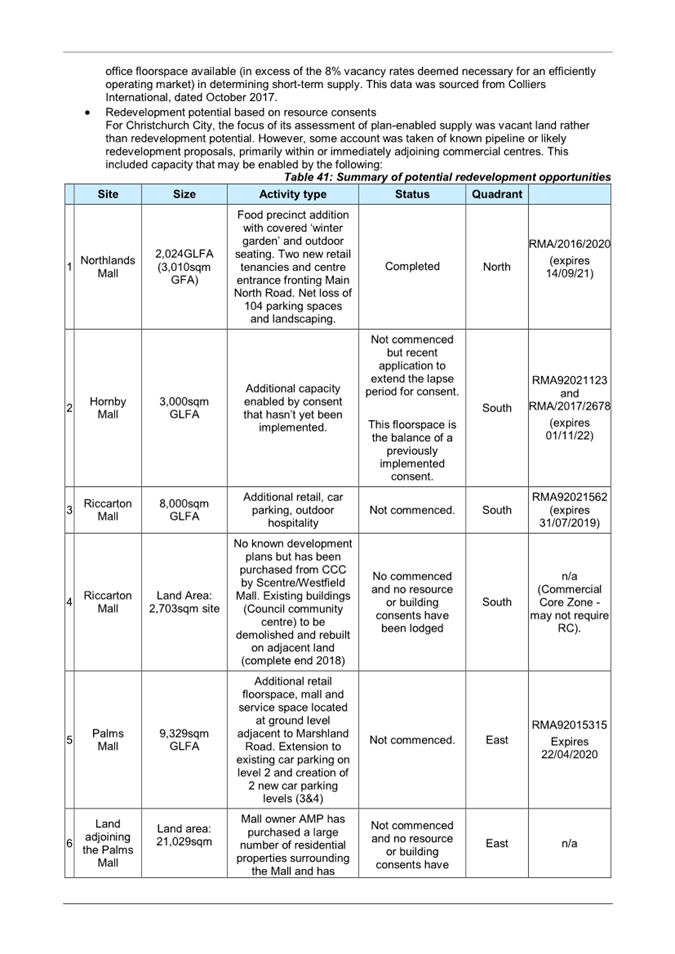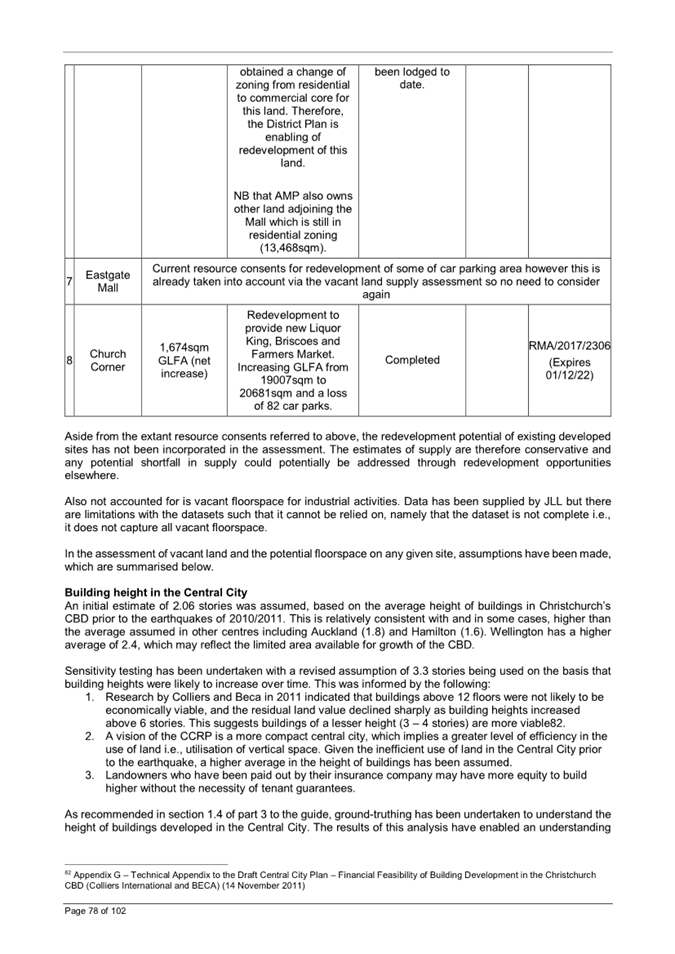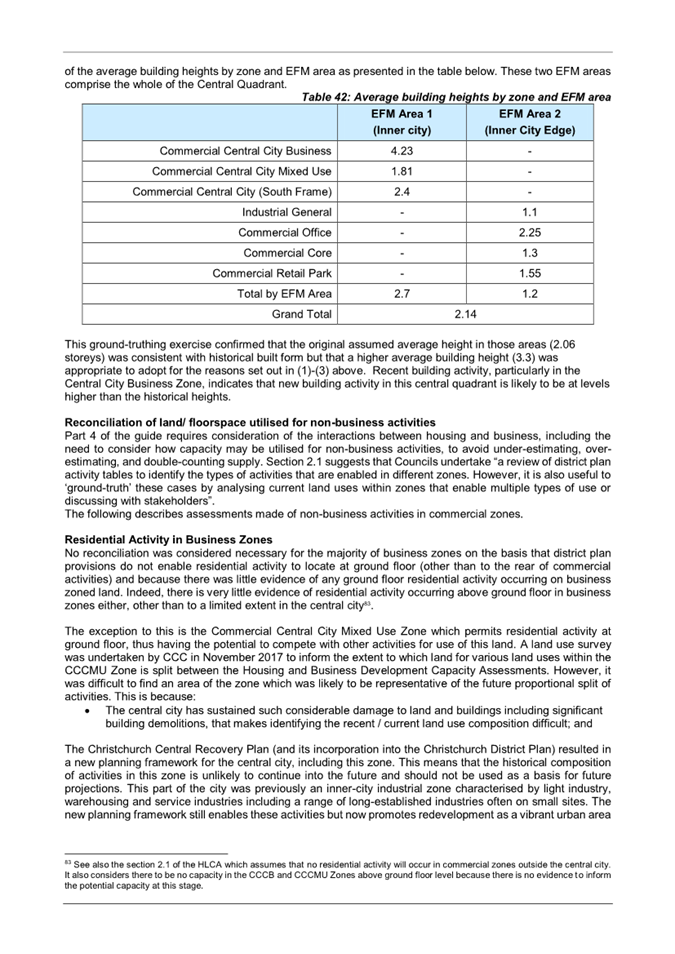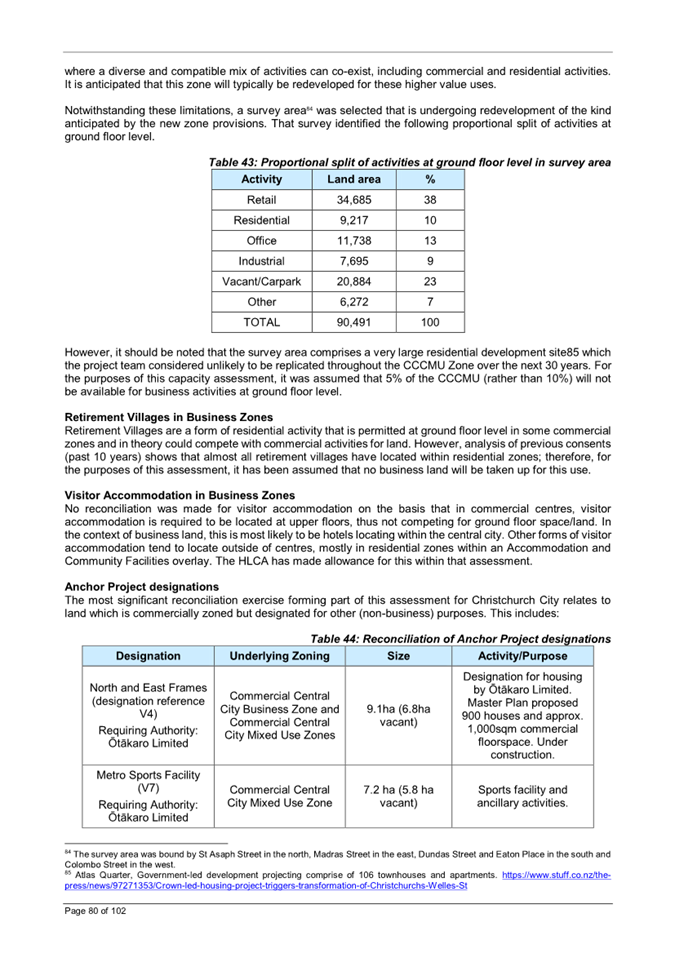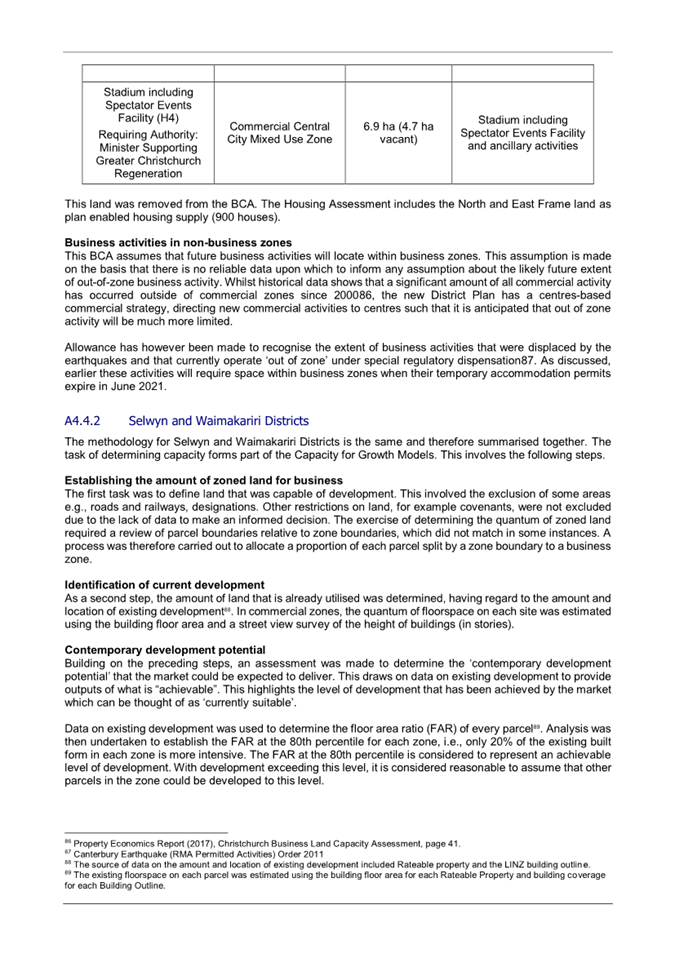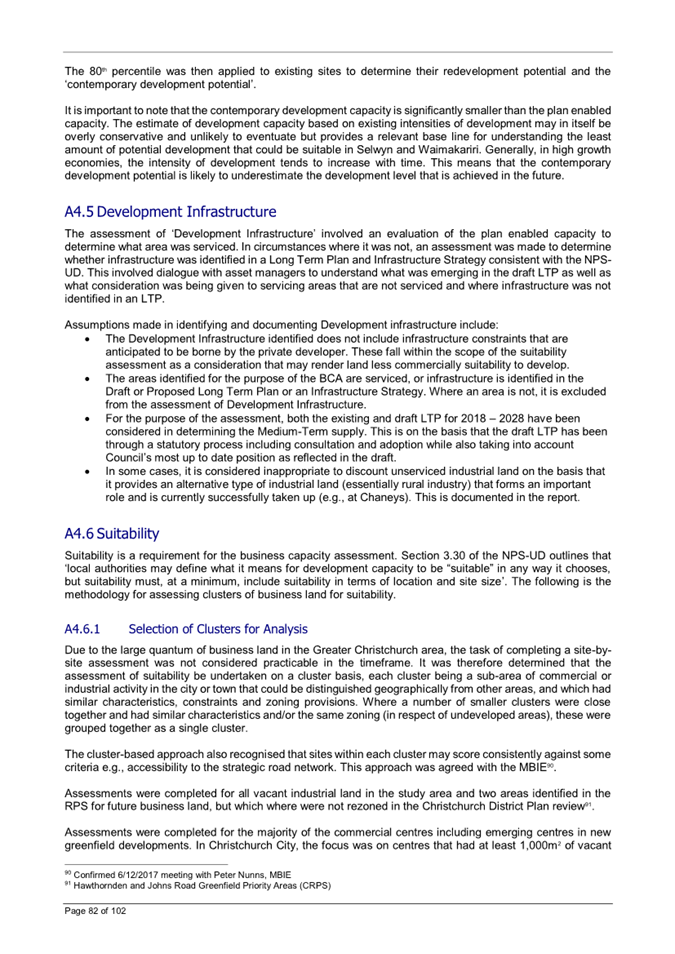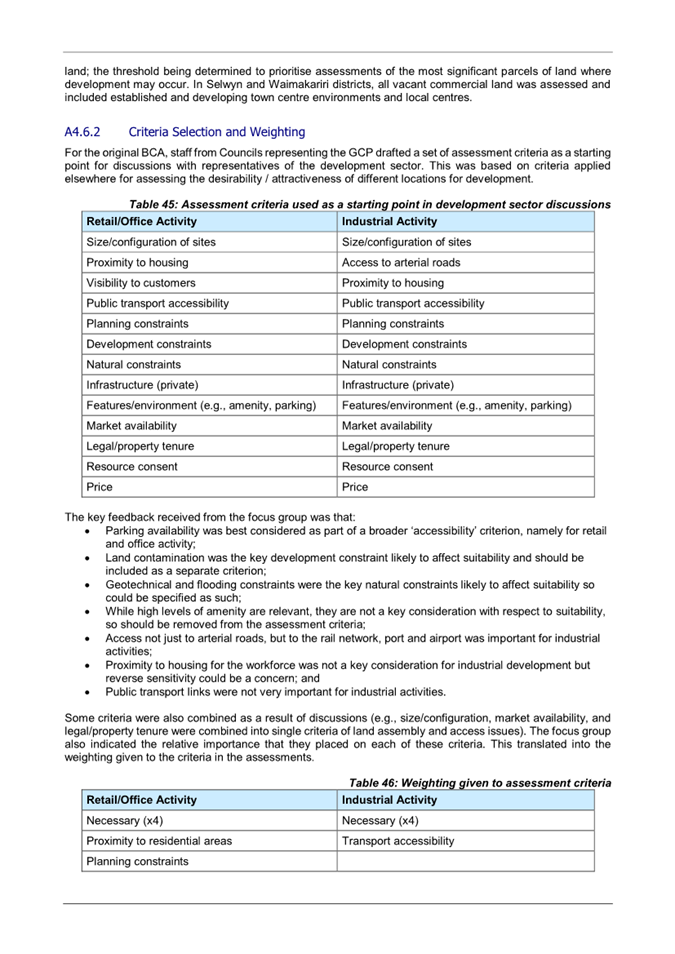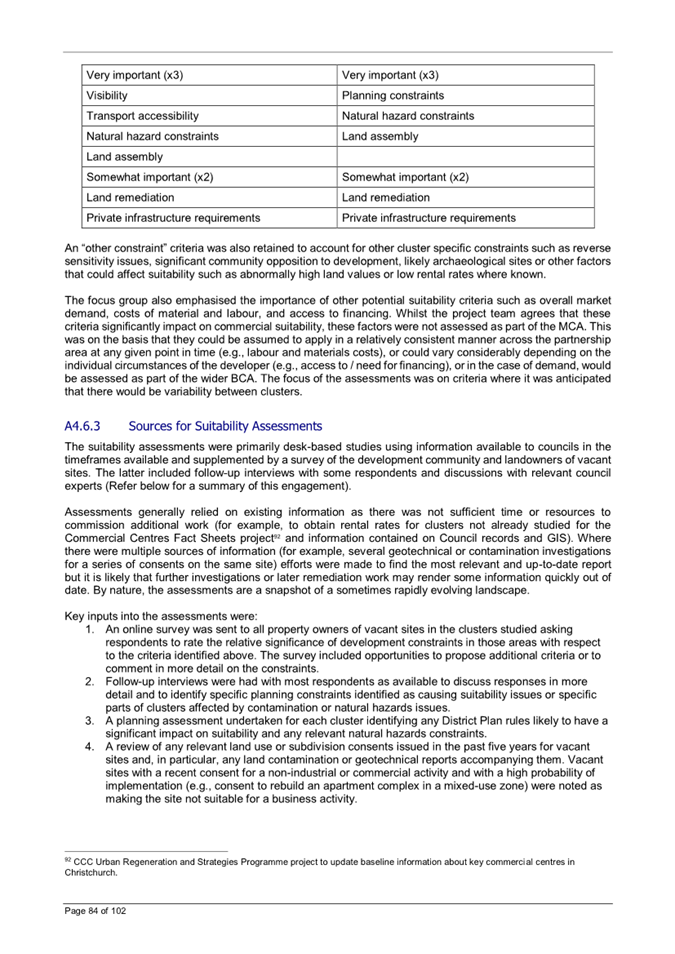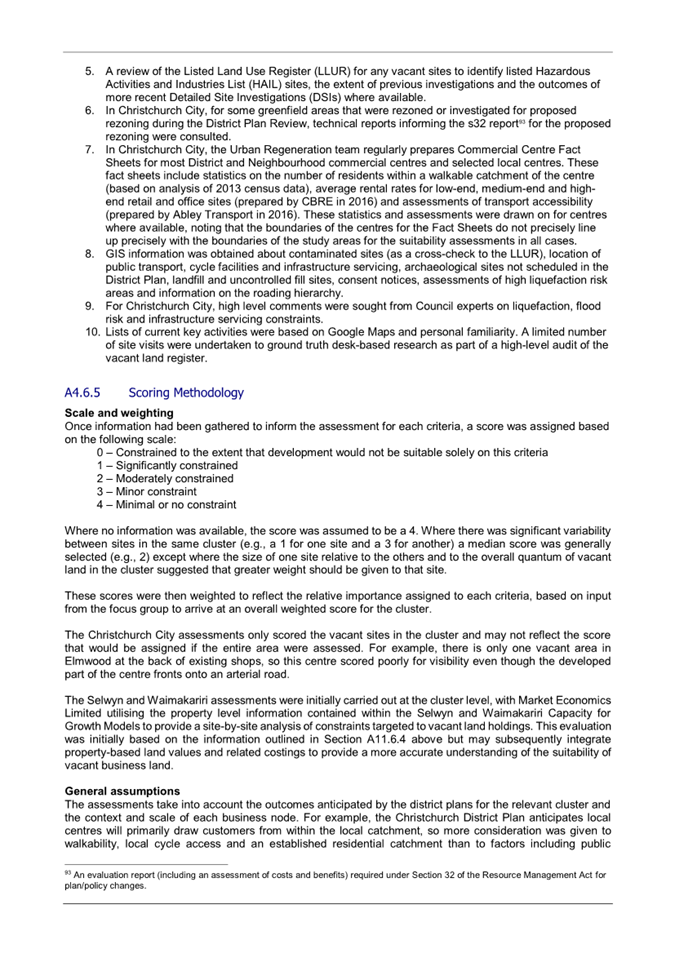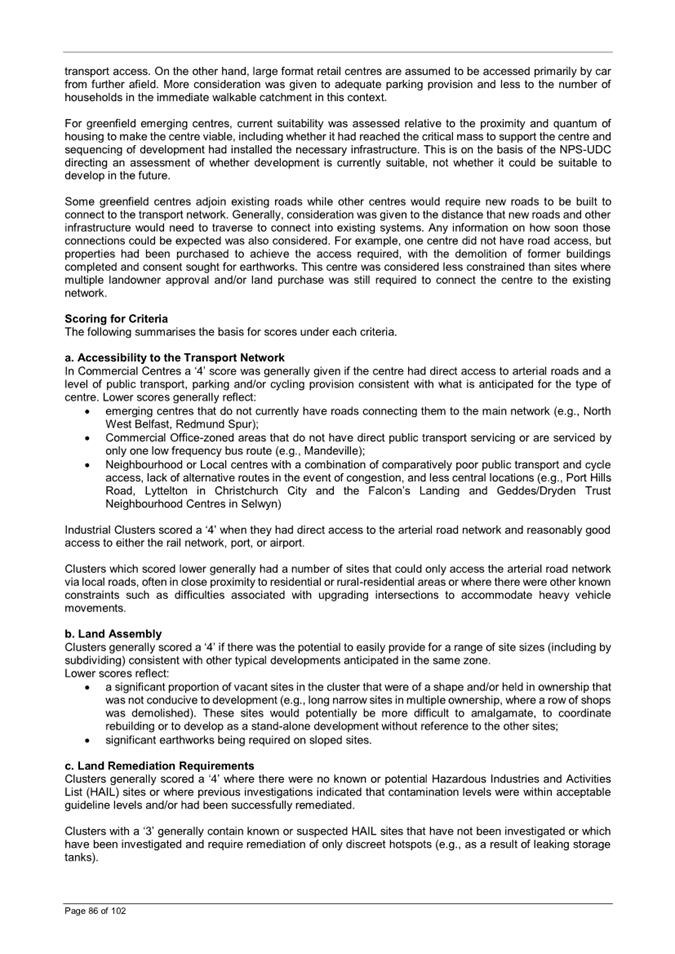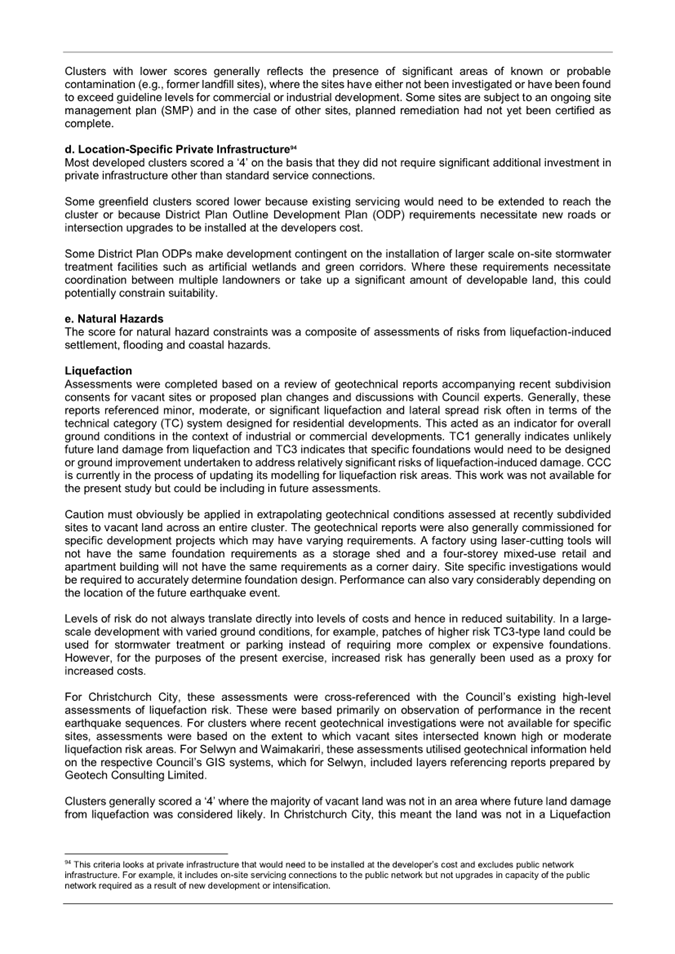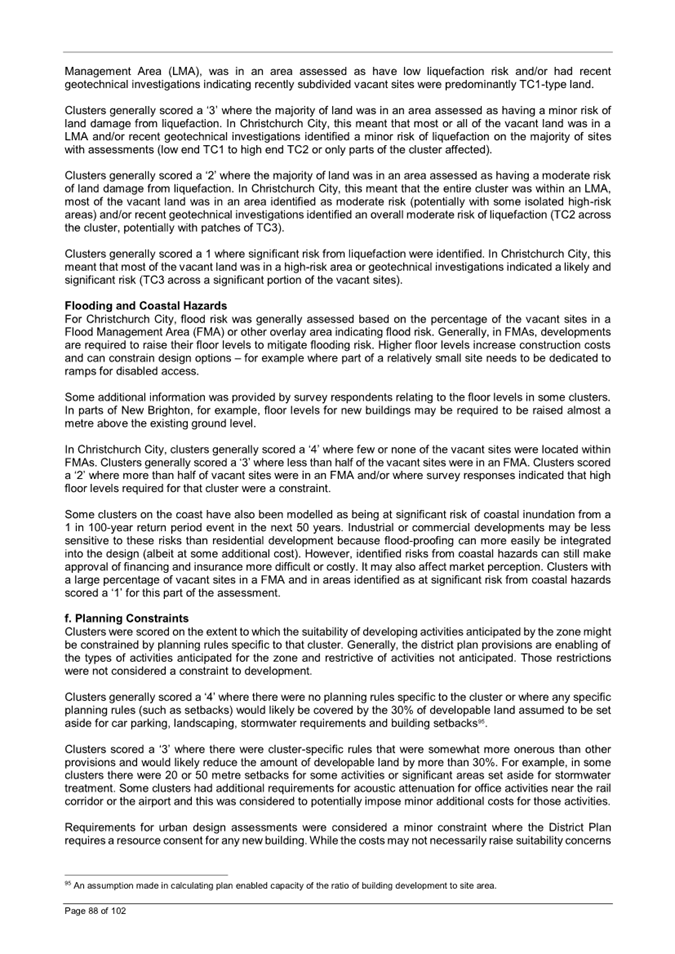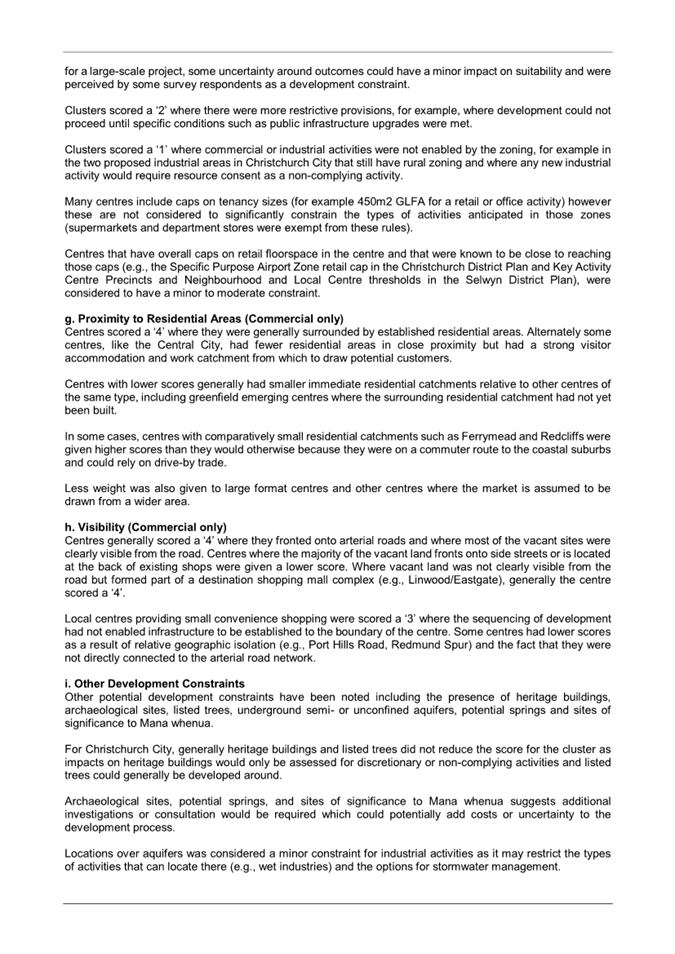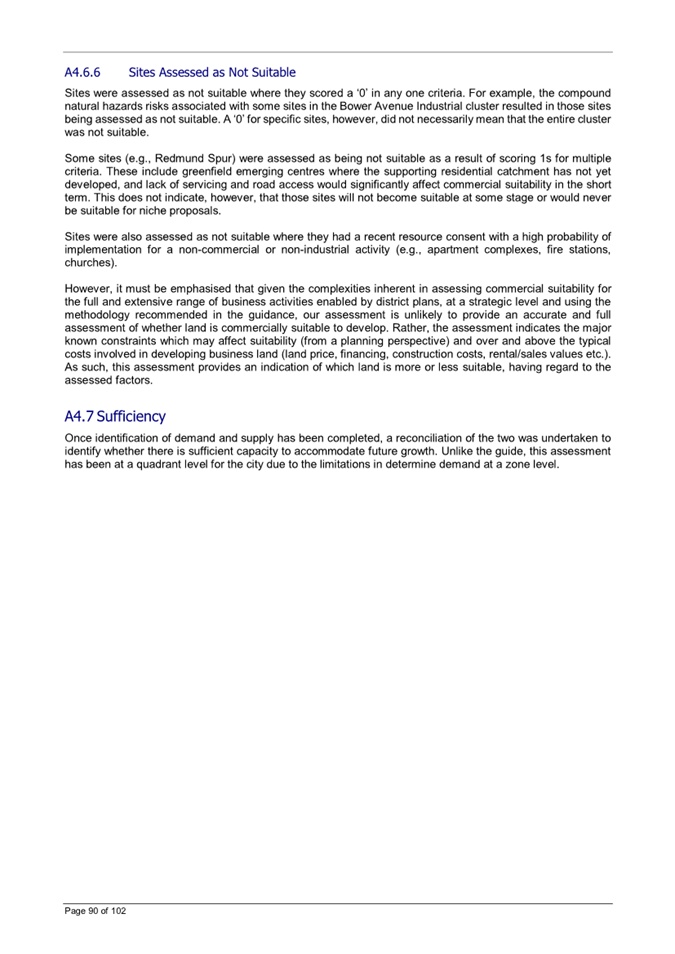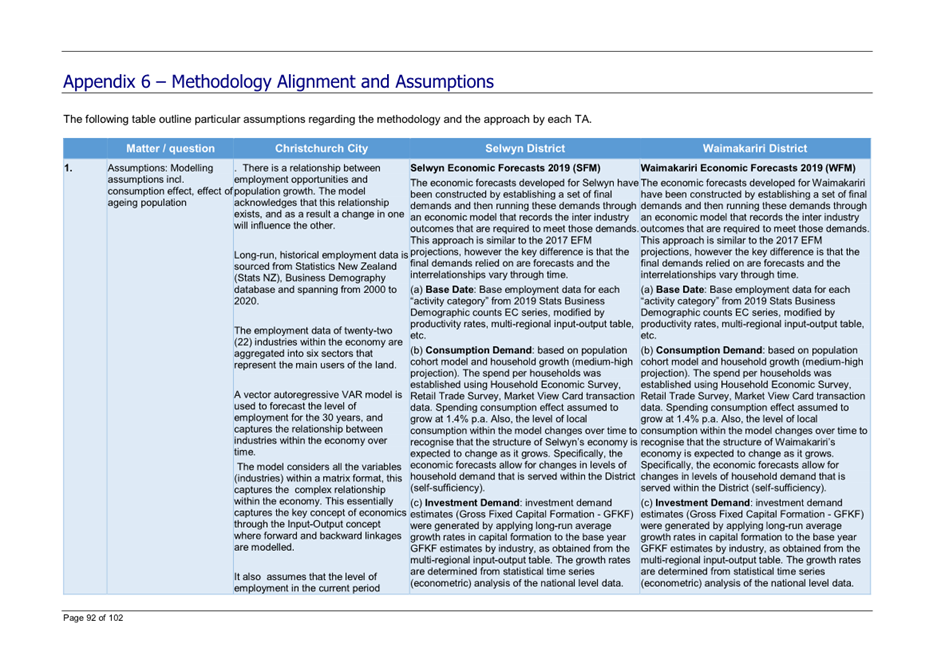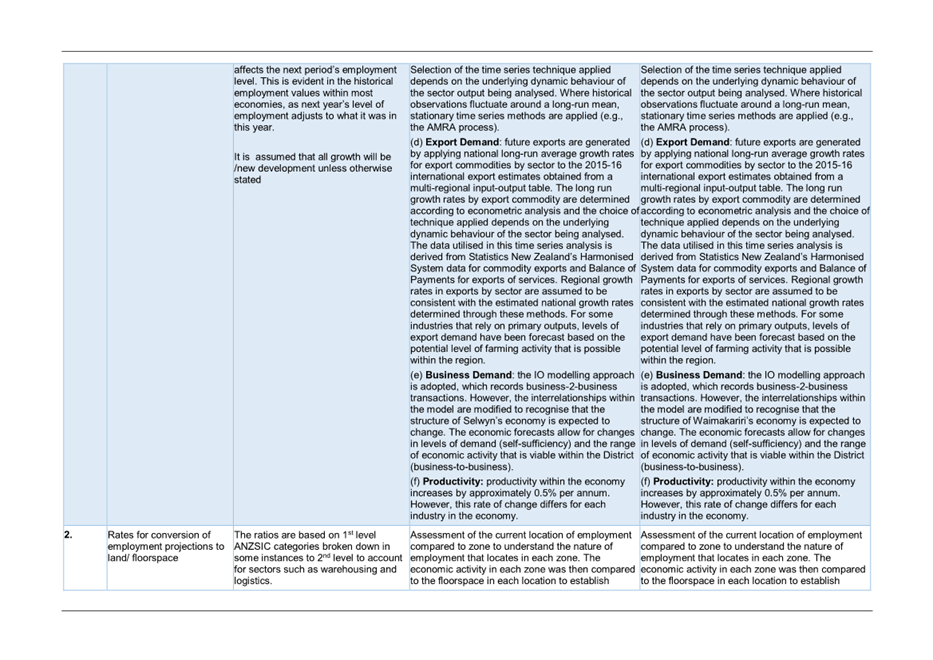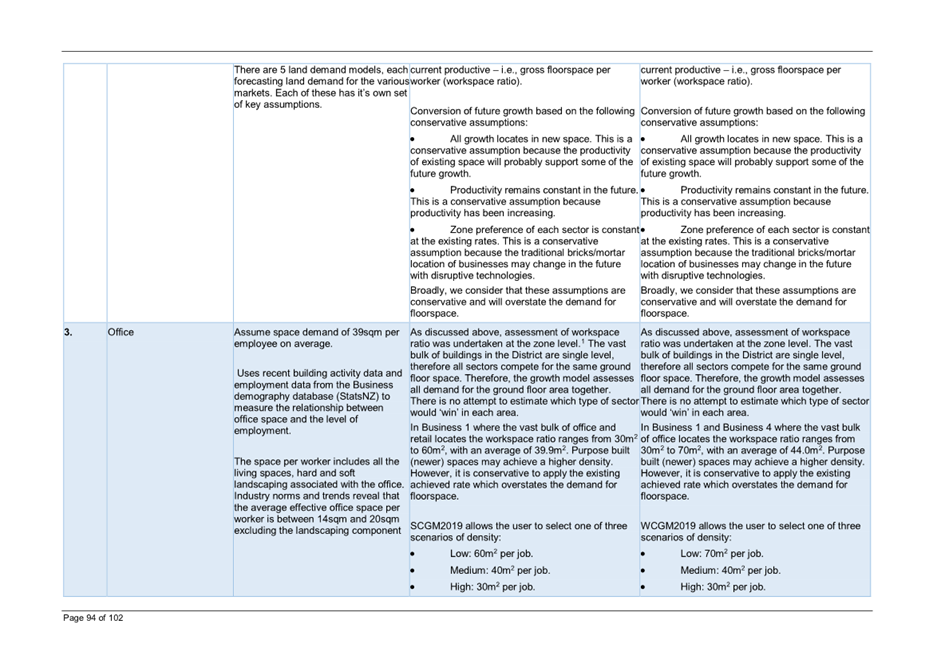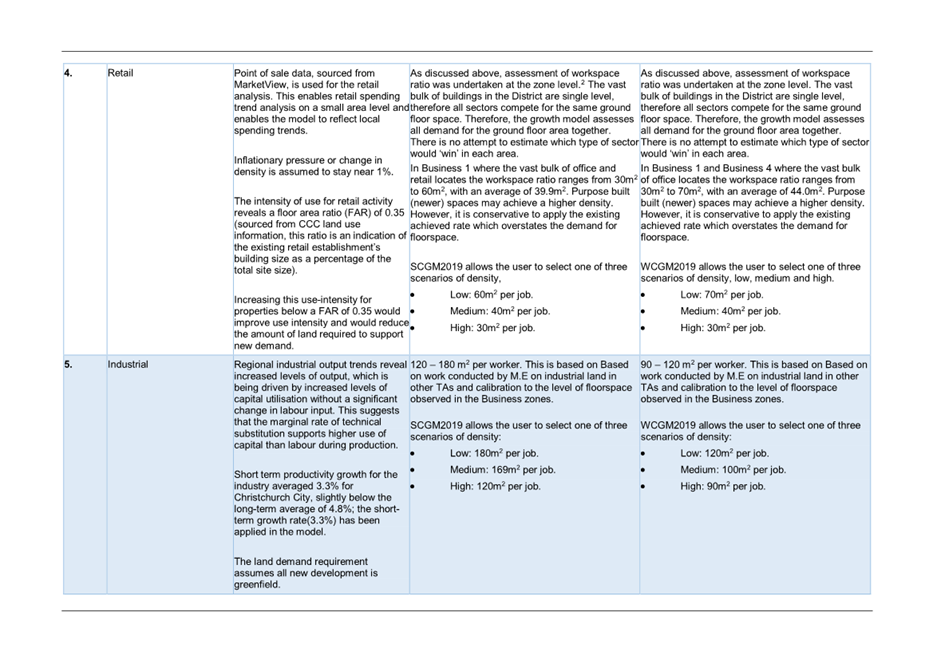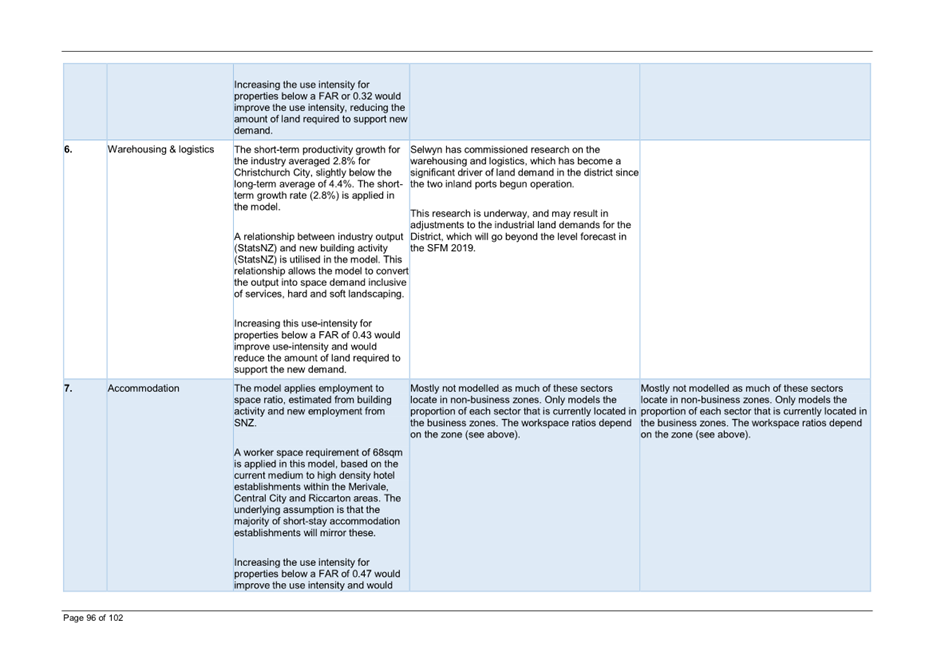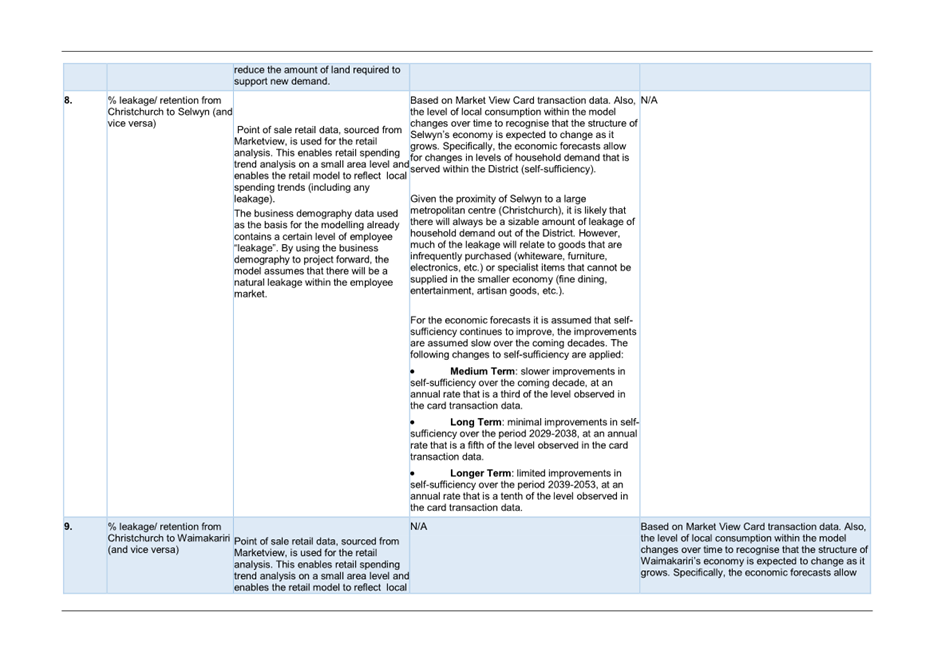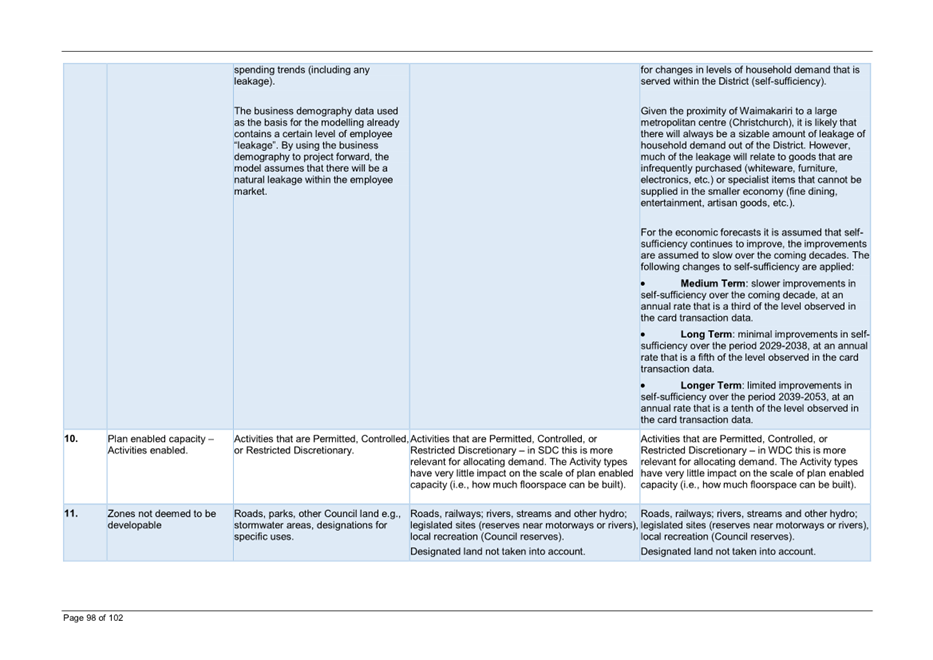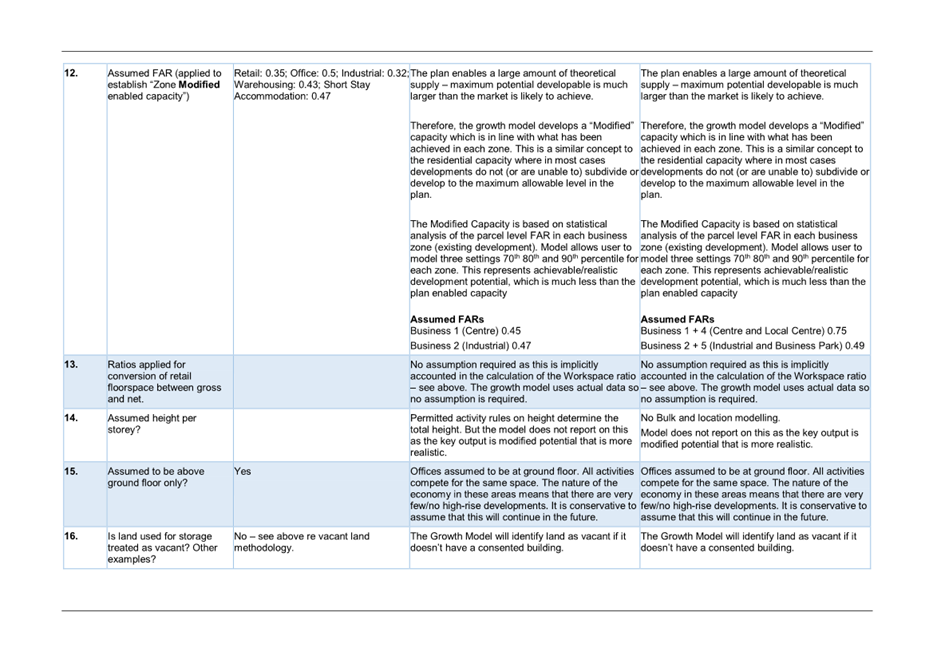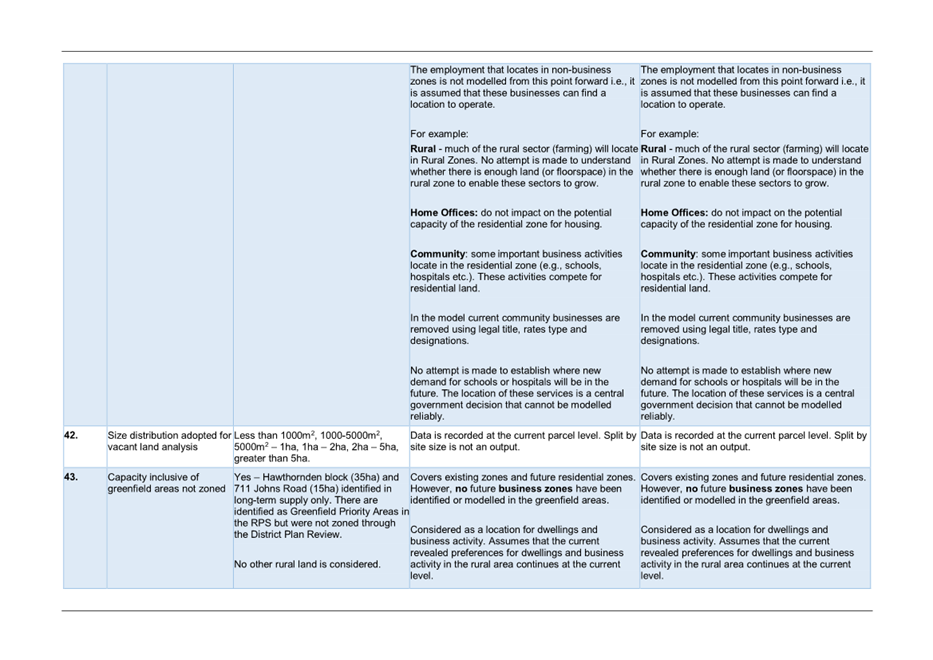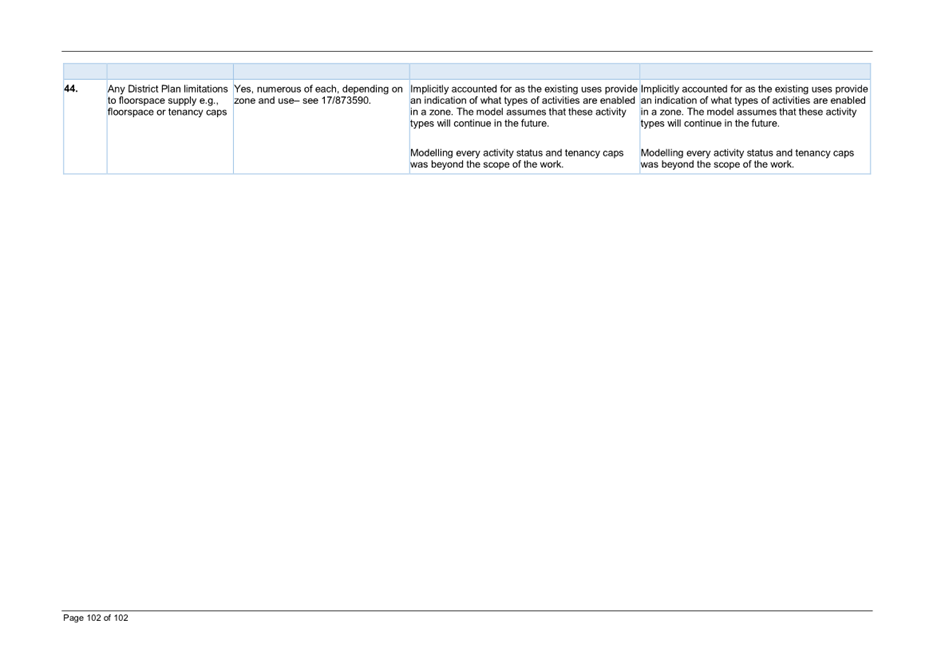|
Whakawhanake Kāinga Komiti
12 May 2023
|
|
|
 Committee Members Committee Members
|
|
|
|
Independent
Chair
Jim
Palmer
Minister
of Housing
Hon
Megan Woods
Minister
of Local Government
Hon
Kieran
McAnulty
Christchurch
City Council
Mayor
Phil Mauger, Councillors Victoria Henstock and Sara Templeton
Environment
Canterbury
Chair
Peter Scott, Councillors Grant Edge and Vicky Southworth
Selwyn
District Council
Mayor
Sam Broughton, Councillors Nicole Reid and Lydia Gliddon
Waimakariri
District Council
Mayor
Dan Gordon, Deputy Mayor Neville Atkinson and Councillors Niki Mealings
Mana Whenua
Dr
Te Maire Tau, Jane Huria and Gail Gordon
Health
TBC
New
Zealand Transport Agency (Non-Voting Member)
James
Caygill
|
|
Director Greater Christchurch Partnership
Tracy Tierney
ph: 9418999
|
|
Committee Adviser
David Corlett
ph 941 5421
|

1.
TERMS OF REFERENCE Ngā Ārahina Mahinga
1.1.
The role of the Committee is to:
i.
Provide strategic direction for the priorities
and functions of the Committee.
ii.
Foster and facilitate a collaborative approach
between the Partners to address strategic urban challenges and opportunities
for Greater Christchurch which are cross boundary or of sub-regional
importance.
iii.
Enable partners to better understand national
and Greater Christchurch context.
iv.
Enable partners to identify shared objectives
and areas of alignment.
1.2.
The priorities of the Committee are to:
1.2.1. Create a well-functioning
and sustainable urban environment
1.2.2. In achieving this, priority will be given to:
a.
Decarbonising the transport system
b.
Increasing resilience to natural hazards and the
effects of climate change
c.
Accelerating the provision of quality, affordable
housing
d.
Improving access to employment, education and
services.
1.3.
The functions of the Committee are to:
i.
Provide a forum to collaborate on strategic
urban challenges and opportunities.
ii.
Oversee the development and review of a joint
spatial plan and implementation of an associated joint work programme.
iii.
Oversee the development and review of other strategies
and plans as necessary to enable partners to deliver on the priorities of the
Committee.
iv.
In the development of, and to give effect to,
the implementation of a joint spatial plan, associated work programme and
development of any other strategies and plan as necessary as set out in 9.3
ii-iii, the Committee will:
a.
Recommend to Partners how funding and resources
should be applied to support their development and implementation.
b.
Undertake wider engagement and consultation as
necessary, including where appropriate holding hearings, to assist the
development and implementation.
c.
Recommend to Partners for ratification at
individual partner governance meetings.
d.
Undertake monitoring and reporting on the
delivery of adopted strategies and plans.
e.
Undertake any reviews or updates.
f.
Ensure alignment with council plans and planning
processes, strategies and policies, and evidence.
g.
Identify and manage risks associated with
implementation.
v.
Ensure integrated planning of land-use, housing
and infrastructure, including alignment with government policy, such as the
National Policy Statement on Urban Development, and advancing opportunities to
implement new urban development tools, such as the Infrastructure Funding and
Financing Act 2020 and the Urban Development Act 2020.
1.4.
In undertaking its role and performing its
functions, the Committee will consider seeking the advice of the Chief
Executives Advisory Group.
2.
QUORUM AND CONDUCT OF MEETINGS
2.1.
The quorum at a meeting of the Committee
consists of the majority of the voting members and must include one of the
Ministers of the Crown or their alternate.
2.2.
Other than as noted in this Agreement, the
standing orders of the administering Council at the time shall apply.
2.3.
Voting shall be on the basis of the majority
present at the meeting, with no alternates or proxies, aside from those
attending as alternates to the Ministers of the Crown.
2.4.
For the purpose of clause 6.2, the Independent
Chairperson:
i.
has a deliberative vote; and
ii.
in the case of equality of votes, does not have
a casting vote (and therefore the act or question is defeated and the status
quo is preserved).
3.
MEETING FREQUENCY
3.1.
The Committee shall meet quarterly, or as
necessary and determined by the Independent Chair in liaison with the Committee.
3.2.
Notification of meetings and the publication of
agendas and reports shall be conducted in accordance with the requirements of
Part 7 of the Local Government Official Information and Meetings Act 1987.
4.
DELEGATIONS
4.1.
Establishing, and where necessary amending,
protocols and processes to support the effective functioning of the Committee.
4.2.
Preparing communication and engagement material
relevant to the functions of the Committee.
4.3.
Commissioning and publishing reports relevant to
the functions of the Committee.
4.4.
Undertaking engagement and consultation
exercises in support of the functions of the Committee
4.5.
Selecting an Independent Chair and Deputy Chair
in accordance with any process agreed by the Committee and the requirements of
the LGA 2002.
4.6.
Appointing, where necessary, up to two
additional non-voting observers to the Committee.
5.
FINANCIAL DELEGATIONS
5.1.
The Committee can make financial decisions
within an agreed budget envelope and as long as the decision does not trigger
any change to the statutory plans prepared under the LGA 2002, the RMA 1991, or
the LTMA 2003.
|
Whakawhanake Kāinga Komiti
12 May 2023
|
|
|
5. Approval
of the draft Greater Christchurch Spatial Plan for public consultation
|
|
Reference / Te Tohutoro:
|
23/675105
|
|
Report of / Te Pou Matua:
|
Chief
Executives Advisory Group
|
1. Purpose of Report Te
Pūtake Pūrongo
1.1 The
purpose of this report is for the Whakawhanake Kāinga Komiti to approve
the draft Greater Christchurch Spatial Plan (draft Spatial Plan) for the
purposes of public consultation.
1.2 Once
the draft Spatial Plan has been approved for the purposes of consultation a
Special Consultative Procedure on the draft is required, which will include
submissions and hearings of submissions. Accordingly, this report also seeks
approval of the formation and composition of the Hearings Panel.
2. Chief Executives Advisory Group /
Ngā Tūtohu
That the Whakawhanake
Kāinga Komiti:
a. Approves
commencing consultation on the draft Greater Christchurch Spatial Plan (Attachment
A).
b. Receives
the Greater Christchurch Housing Capacity Assessment March 2023 (Attachment
B).
c. Receives
the Greater Christchurch Business Capacity Assessment April 2023 (Attachment
C).
d. Receives
the Huihui Mai Engagement Report (Attachment D).
e. Recommends
to partner governance to endorse the consultation occurring on the draft
Greater Christchurch Spatial Plan (Attachment A), subject to
recommendation F below.
f. Delegates
authority to the Whakawhanake Kāinga Komiti Independent Chair to authorise
any amendments of minor effect, or to correct minor errors in the draft Spatial
Plan, ahead of the commencement of the public consultation period.
g. Establishes
the Greater Christchurch Spatial Plan Hearings Panel for the purpose of
hearing submissions on the draft Greater Christchurch Spatial Plan and making
recommendations to the Whakawhanake Kāinga Komiti.
h. Adopts
the Terms of Reference for the Greater Christchurch Spatial Plan Hearings Panel
as set out in Attachment E.
i. Delegates
authority to the Whakawhanake Kāinga Komiti Independent
Chair to appoint the members of the Greater Christchurch Spatial Plan Hearings
Panel (excluding the Independent Chair), in accordance with partner
recommendations.
j. Delegates
authority to the Chief Executives Advisory Group to appoint an Independent
Chair of the Greater Christchurch Spatial Plan Hearings Panel.
k. Notes
that the consultation submission period for the draft Greater Christchurch
Spatial Plan will be held between mid-June and end of July.
l. Notes
the consultation process and associated supporting documents as set out in the
report.
m. Notes
that following the consideration of submissions, hearing from submitters,
and receiving of an officers’ report, the Hearings Panel will make
recommendations to the Whakawhanake Kāinga Komiti on responses to
submissions and changes to the Draft Greater Christchurch Spatial Plan as a
result of the public consultation process.
n. Notes
that the Whakawhanake Kāinga Komiti will consider endorsement of the
Hearings Panel recommendations and recommendation to Partner Governance to
adopt the Greater Christchurch Spatial Plan in December 2023.
3. Context/Background Te Horopaki
3.1 There
has been a coordinated approach to urban planning and transport investment in
Greater Christchurch since 2007. The Greater Christchurch Urban Development
Strategy 2007 (UDS) and Our Space 2018-2048: Greater Christchurch Settlement
Pattern Update set the framework for urban planning which informs this current
work.
3.2 The
development of the Greater Christchurch Spatial Plan was identified as the
first priority of the Whakawhanake Kāinga Komiti, following its
establishment in 2022.
3.3 The
draft Spatial Plan, provided as Attachment A, has been developed
collaboratively by the partners, with the process strongly guided by the agreed
priorities identified for the Komiti.
3.4 Subject
to the Special Consultative being undertaken and completed the Spatial Plan
satisfies the requirements of a future development strategy (FDS) under the
National Policy Statement on Urban Development 2020 (NPS-UD), which includes
outlining how Local Authorities intend to provide sufficient housing and
business development capacity to meet expected demand over the next 30 years.
An overarching objective for all future development strategies is to achieve
well-functioning urban environments, which the draft Spatial Plan outlines as a
whole.
4. Development of the draft Spatial Plan
Purpose of
the Greater Christchurch Spatial Plan
4.1 The
purpose of the Greater Christchurch Spatial Plan is to:
- Set a desired urban form for a projected population of 700,000 (to
2051) and beyond that to 1 million people to ensure our urban form is
future-proofed in the context of population growth and climate change.
- Deliver on the first priority of the Urban Growth Partnership for
Greater Christchurch to develop a Spatial Plan to improve the coordination and
alignment between central government, local government and mana whenua.
- Satisfy the requirements of the NPS-UD for the Greater Christchurch
Councils to jointly prepare an FDS.
Development of the draft and background reports
4.2 This
draft Spatial Plan has been built on the clear direction set by the Greater
Christchurch Partnership through the UDS, which provided a strong framework for
the response following the Canterbury earthquakes. It has also been developed
around the strategic framework previously agreed by the Whakawhanake
Kāinga Komiti [WKCCC/2022/00003]. It has
also been informed the following background reports prepared to inform the
evidence base, the strategic framework, and the evaluation and analysis of
different scenarios. These include:
- The Foundation
Report which summarises the work undertaken to identify Greater
Christchurch’s urban opportunities and challenges and to develop the
strategic framework to guide the development of the draft Spatial Plan.
- The Ngā
Kaupapa Report, prepared by Mahaanui Kurataiao on behalf of mana whenua,
which identifies and describes the cultural values within the boundary of
Greater Christchurch and relevant cultural principles, as well as an assessment
of relevant Iwi Management Plan policies and other strategy documents to inform
and guide the development of the draft Spatial Plan.
- The Housing Capacity Assessment May 2023 (Attachment B),
which provides an assessment of Greater Christchurch’s capacity to meet
the projected demand for housing over the next 30 years. A Housing
Capacity Assessment was completed in June 2021 to meet the requirements of
the NPS-UD and updated in 2023 to inform the draft Spatial Plan. The draft
Spatial Plan outlines the medium and long-term capacity, demand and overall
sufficiency for housing in Greater Christchurch. There are long-term supply
issues in the Selwyn District, which the draft Spatial Plan responds to.
- The Business Capacity Assessment (Attachment C), which
provides an assessment of Greater Christchurch’s capacity to meet the
projected demand for commercial and industrial land over the next 30 years.
This is a new assessment, rather than an update, as the previous assessment was
developed under the National Policy Statement on Urban Development Capacity
2016 (NPS-UDC). The draft Spatial Plan outlines the medium and long-term
capacity, demand and overall sufficiency for commercial and industrial land in
Greater Christchurch. There are long-term supply issues for commercial land in
Christchurch City and the Selwyn District, which the draft Spatial Plan
responds to.
- The Urban
Form Scenarios Evaluation Report, which provides information on how
different land-use scenarios and transport packages contribute to the realisations
of the outcomes and priorities as set out in the Greater Christchurch Spatial
Plan Strategic Framework, which informed the development of the draft Spatial
Plan.
- The Areas
to Avoid and Protect Report, which details the methodology and reasoning
for identifying land development constraints and areas to protect to inform the
development of the draft Spatial Plan.
Engagement
4.3 The
Huihui Mai – let’s come
together to plan our future engagement was held from 23 February –
26 March 2023 to seek community input and test the work to date to inform the
development of the draft Spatial Plan and the Mass Rapid Transit (MRT)
Indicative Business Case work. Further information about the engagement and
findings is detailed in the engagement report which is provided as Attachment
D.
4.4 The
engagement included an online survey, public workshops, drop-ins, activations,
and a dedicated youth engagement programme which included workshops in schools
and a youth summit.
4.5 During
the engagement over 7,066 people completed the online survey and over 500
people were engaged face-to-face through public and youth workshops, an online
webinar, drop-ins across Greater Christchurch, and presentations to groups. Of
these, over 1,300 people who completed the online survey and participated in
workshops were under the age of 25.
4.6
Findings from the engagement include:
- 86% of people agree with the proposed direction of the draft Spatial
Plan to focus growth around key urban and town centres and along public
transport routes.
- 53% of people agree with the proposed MRT route (24% disagree).
Agreement is much higher in suburbs along the MRT route (72%). For those
who did not agree, a desire for improved public transport to where they live
– Rolleston, Rangiora, Eastern Christchurch (i.e. not on the proposed
route) is the main reason for disagreeing with the proposed route.
- 56% of people are open to higher density living, but it needs to be
planned and designed to meet their different needs and provide quality of life
for people.
- To use their cars less, people want more frequent, more reliable and
more direct public transport.
- The feedback on what would encourage people to consider higher
density living and using their cars less, and what people value and believe is
missing in their neighbourhoods provides an important input into the
implementation of the Spatial Plan.
4.7 The
feedback received through the engagement has informed the development of the
draft Spatial Plan and has provided confirmation that its development and
direction is supported.
5. Draft Spatial Plan
5.1 The
draft Spatial Plan builds on and replaces the previous plans and strategies
developed for Greater Christchurch but has not fundamentally changed from their
strategic direction. It provides a blueprint for how future population and
business growth will be accommodated in Greater Christchurch into the future,
through targeted intensification in centres and along public transport
corridors.
5.2 The
document is structured around six opportunities, which together describe the
key ways in which the Spatial Plan can help shape the future of Greater
Christchurch to provide for the intergenerational wellbeing of its people and
place. Each of the six opportunities link to a set of clear directions to guide
the growth of Greater Christchurch, with the two following overarching
directions:
- Focus growth through targeted intensification in urban and town centres,
and along public transport corridors.
- Enable the prosperous development of kāinga nohoanga on
Māori land and within urban areas.
5.3 The
draft Spatial Plan opportunities and directions are shown in table 1.
5.4 In
addition to the directions, five key moves are identified, which are critical
to the implementation of the spatial strategy and achievement of the
transformational shifts required:
- The
prosperous development of kāinga
nohoanga
- A strengthened network of urban and town centres
- A mass rapid transit system
- A collective focus on unlocking the potential of Priority Areas (see
below)
- An enhanced and expanded blue-green Network
5.5 The
proposed Spatial Strategy for Greater Christchurch is shown in Map 1.
Mana whenua priorities and
expectations
5.6 The
Greater Christchurch Spatial Plan needs to reflect the values of mana whenua
and give effect to their priorities and expectations. In summary, these
expectations are that the Spatial Plan:
- Supports kāinga nohoanga on Māori Land, supported by
infrastructure and improved accessibility
- Supports kāinga nohoanga within urban areas
- Protects Wāhi Tapu, Wāhi Taonga and Ngā Wai.
5.7 The
draft Spatial Plan seeks to reflect these throughout the document, including
the acknowledgement that enabling prosperous kāinga nohoanga is a
“key move’ of the draft Spatial Plan. Other specific directions
include:
- Avoid urban development over Wāhi Tapu
- Protect, restore and enhance Wāhi Taonga and Ngā Wai; and
- Improve accessibility to Māori Reserve Land to support
kāinga nohoanga.
Priority Areas
5.8 Priority
Areas will be a key tool to progress shared objectives through the
implementation of the Spatial Plan. Seven Priority Areas have been identified
through a technical evaluation – these include areas that offer
significant opportunity for change, such as accelerated urban development to
support the desired pattern of growth, environmental change to enhance
resilience, or exemplar projects. In addition, Māori Reserve land is
identified as a Priority Area arising from Te Tiriti Partnership, as is the development
of kāinga nohoanga on sites within urban areas.
5.9 The
Priority Areas for Greater Christchurch are summarised in the table below:
|
Priority Areas
arising from Te Tiriti Partnership
|
Priority Areas
arising from technical evaluation
|
|
Priority Development
Areas
|
Priority Area
|
|
Kāinga nohoanga on Māori
Reserves and in urban areas
|
|
Rangiora Town Centre and surrounds
|
Eastern Christchurch Area[2]
|
|
MRT Stage 1 corridor
|
Papanui
|
1.1
| City Centre |
1.1
| Riccarton |
1.1
| |
Hornby
|
1.1
1.1 1.1
| Rolleston Town Centre and
surrounds |
1.1
Joint
work programme
5.10 The
Partnership will work together to implement the Spatial Plan through a joint
work programme comprising key actions and initiatives, and the Priority Areas
identified above.
5.11 The
Komiti will receive biannual updates on the progress of the joint work
programme through a monitoring report.
5.12 The
Spatial Plan is an enduring document, with the scope for new Priority Areas,
key actions and initiatives, and tools to be added if they should arise in the
future. The plan will be reviewed and updated (as needed) every 5 years.
|
Whakawhanake Kāinga Komiti
12 May 2023
|
|
Table 1 - Draft
Greater Christchurch Spatial Plan Opportunities, Directions and Key Moves

|
Whakawhanake Kāinga Komiti
12 May 2023
|
|
 Map 1 – Draft
Greter Christchurch Spatial Plan Spatial Strategy to accommodate 1 million
people
Map 1 – Draft
Greter Christchurch Spatial Plan Spatial Strategy to accommodate 1 million
people
|
Whakawhanake Kāinga Komiti
12 May 2023
|
|
6. Consultation and Hearings
Public
consultation
6.1 Subject
to the Komiti approving the draft Spatial Plan for public consultation and
endorsement of the plan by partner governance, a special consultative procedure (set out in the Local Government Act 2002)
will follow to enable the views and preferences of the community and stakeholders
to be heard and considered.[3]
6.2 The
consultation submission period will be held between mid-June and end of July,
during which feedback will be sought by submissions. This consultation will seek to leverage off the recent
Huihui Mai engagement.
6.3 Key
elements of the consultation will include:
- Consultation document and submission
form - The consultation document (the draft Greater Christchurch Spatial
Plan for consultation[4])
and an associated submission form.
- Youth - Youth participation in the
formal consultation process will be encouraged and supported, building on the
youth engagement and networks from the Huihui Mai engagement.
- Drop-ins - A series of drop-ins across
the Greater Christchurch area (i.e. in Selwyn, Waimakariri and Christchurch
City) where residents can drop-in and find out more about what is being
proposed and provide their feedback.
- Website - The draft Greater Christchurch
Spatial Plan, a submission form, and supporting information will be available
on the Partnership website.
- Channels - The following channels will
be utilised to promote awareness of the consultation and encourage
participation: partner agencies channels, Huihui Mai social media channels,
electronic newsletters to databases (including from the Huihui Mai engagement),
media, and advertising.
- Hearings - Hearings will be held to
provide the opportunity for people to present their views in person or by
audio/audio-visual link.
Proposed
Hearings Panel
6.4 The
proposed Greater Christchurch Spatial Plan Hearings Panel (Hearings Panel)
would consider and make recommendations on the submissions received on the
Draft Spatial Plan. A proposed Terms of Reference is provided as Attachment
E.
6.5 The proposed membership of the Hearings
Panel is:
- An Independent Chair of the Hearings Panel
- One representative from Environment Canterbury
- One representative from Christchurch City Council
- One representative from Selwyn District Council
- One representative from Waimakariri District Council
- One representative on behalf of Mana whenua
- One Central Government representative
6.6 Delegated
authority to the Whakawhanake Kāinga Komiti Independent Chair to appoint
the members of the Hearings Panel (excluding the Independent Chair) in
accordance with partner recommendations and delegated authority to the Chief
Executives Advisory Group to appoint an Independent Chair of the Hearings Panel
is sought as partner governance seek to identify their respective members and
an Independent Chair is selected.
7. Next steps
7.1 Subject
to this Komiti approving the draft Spatial Plan for public consultation and recommending that partner
governance endorse draft Spatial Plan, the next steps
and key dates are set out in the table below:
|
Approval and endorsement of the Draft Spatial Plan
|
|
16-17
May 2023
|
Partner
governance meetings
Endorse draft
Spatial Plan for consultation
|
|
Mid-2023
|
Cabinet
Endorse the draft
Spatial Plan
|
|
Consultation, Hearings and Adoption
|
|
Between
Mid June – End of July 2023
|
Consultation
|
|
August
– September 2023
|
Officer Report
Prepared
|
|
October
– November 2023
|
Hearings,
Deliberations, and Hearings Panel Recommendations Report prepared
|
|
December
2023
|
Whakawhanake
Kāinga Komiti meeting
Recommend to
partner governance to adopt the Spatial Plan
|
|
December
2023 – February 2024
|
Partner
governance meetings
Adopt the Spatial
Plan
|
Attachments
Ngā
Tāpirihanga
|
No.
|
Title
|
Reference
|
Page
|
|
a ⇩ 
|
Draft Greater
Christchurch Spatial Plan
|
23/684177
|
26
|
|
b ⇩ 
|
Greater
Christchurch Housing Development Capacity Assessment March 2023
|
23/678164
|
95
|
|
c ⇩ 
|
Greater
Christchurch Business Development Capacity Assessment April 2023
|
23/678166
|
172
|
|
d ⇩ 
|
Huihui Mai
Community Engagement Report 2023
|
23/682163
|
274
|
|
e ⇩ 
|
Greater
Christchurch Spatial Plan Hearings Panel Terms of Reference
|
23/675439
|
321
|
|
Whakawhanake Kāinga Komiti
12 May 2023
|
|


















|
Whakawhanake Kāinga Komiti
12 May 2023
|
|
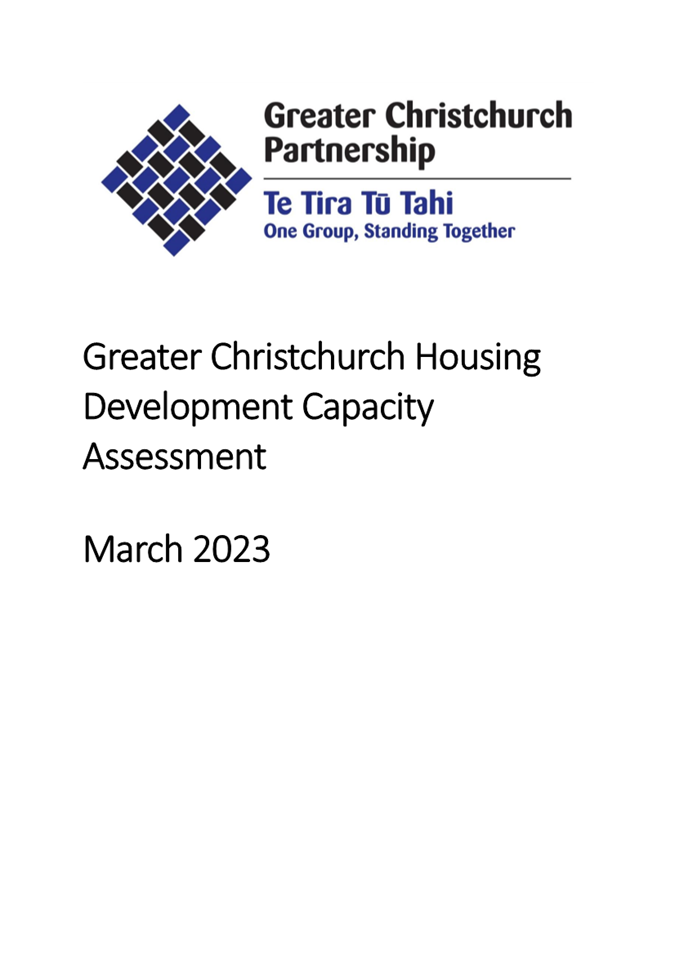
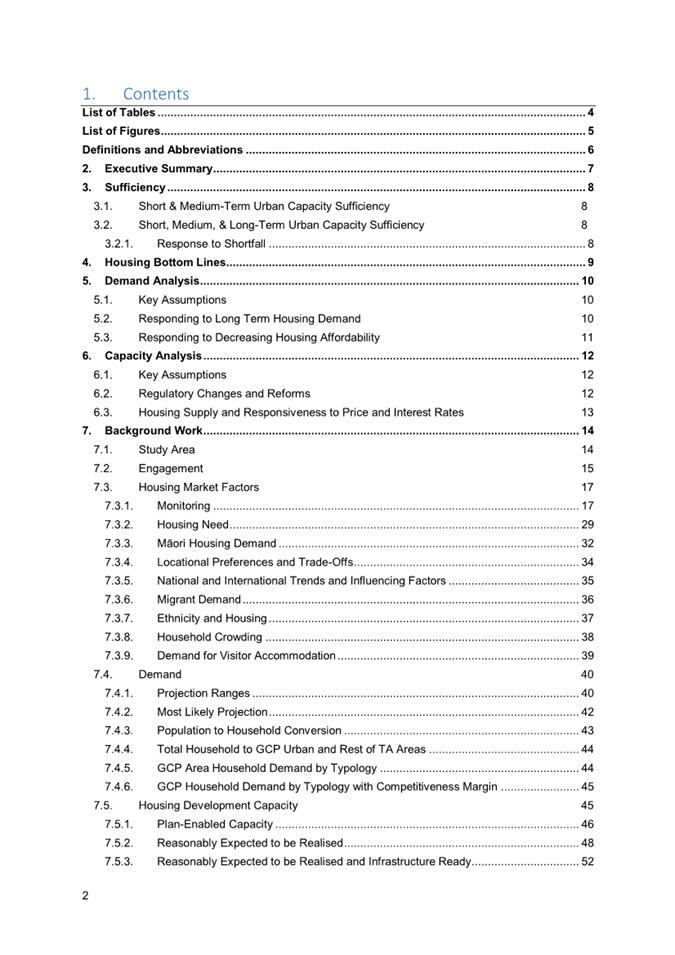
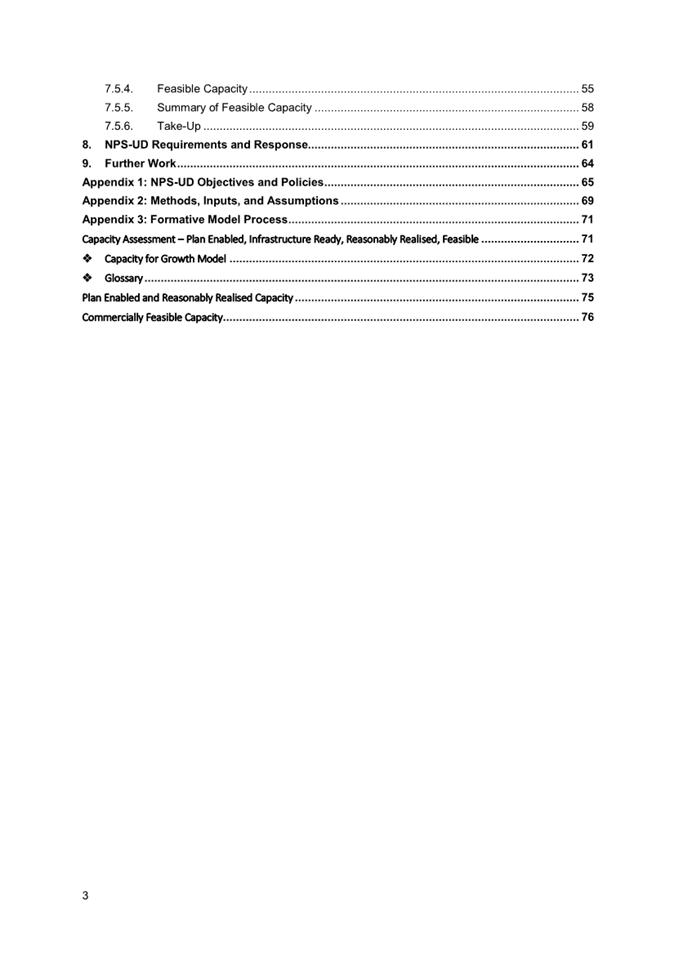
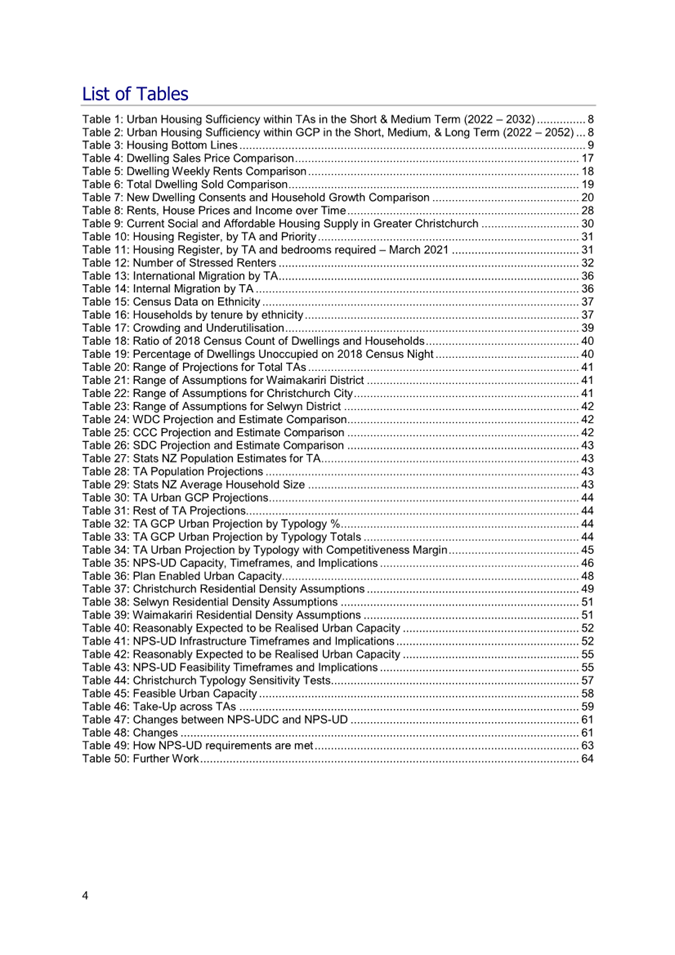
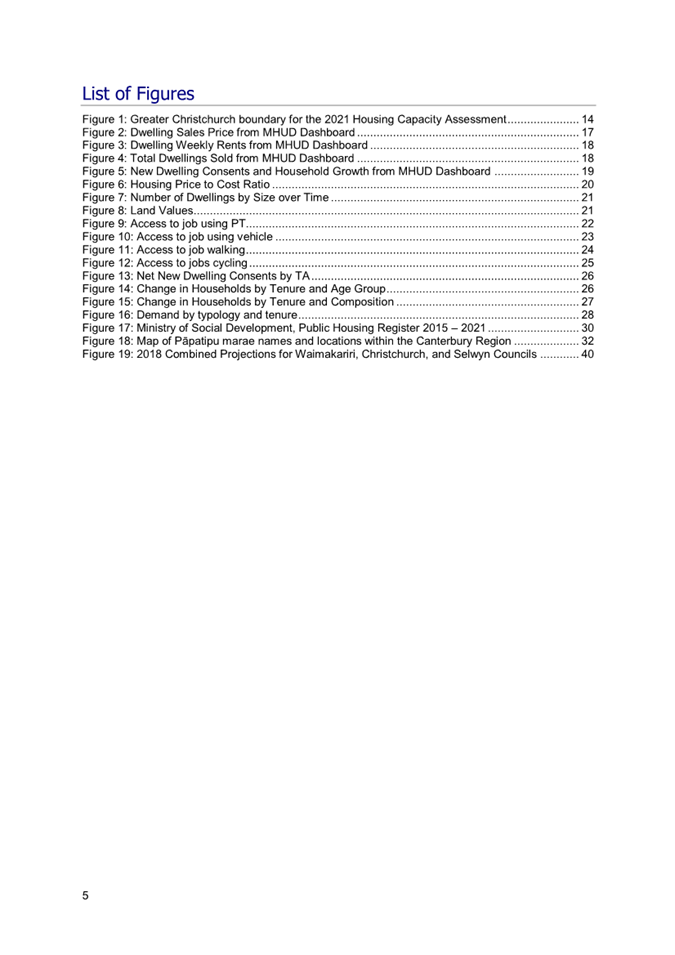
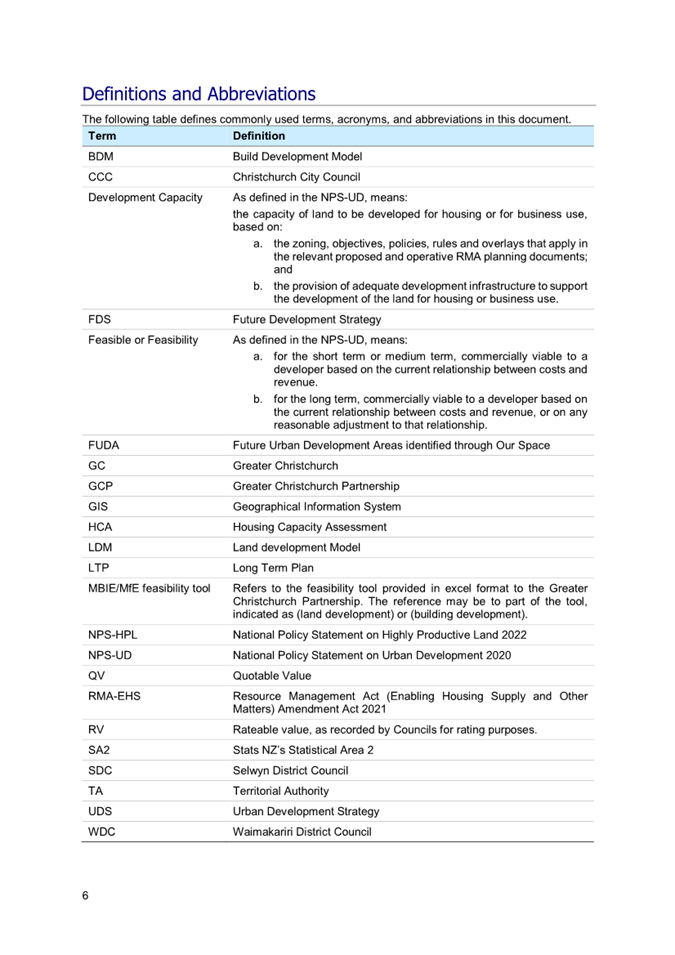
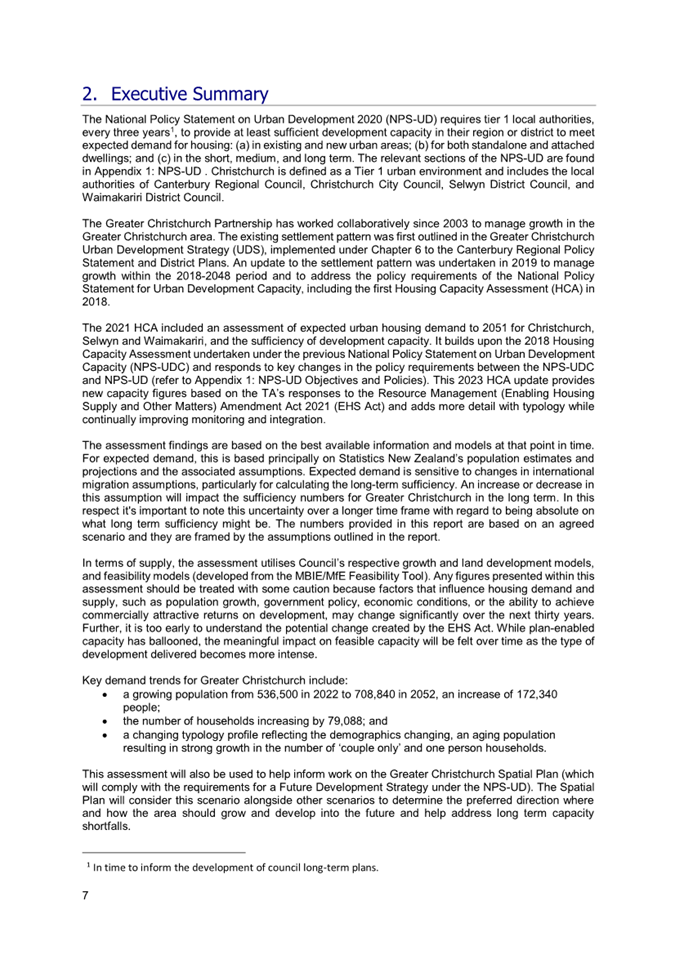
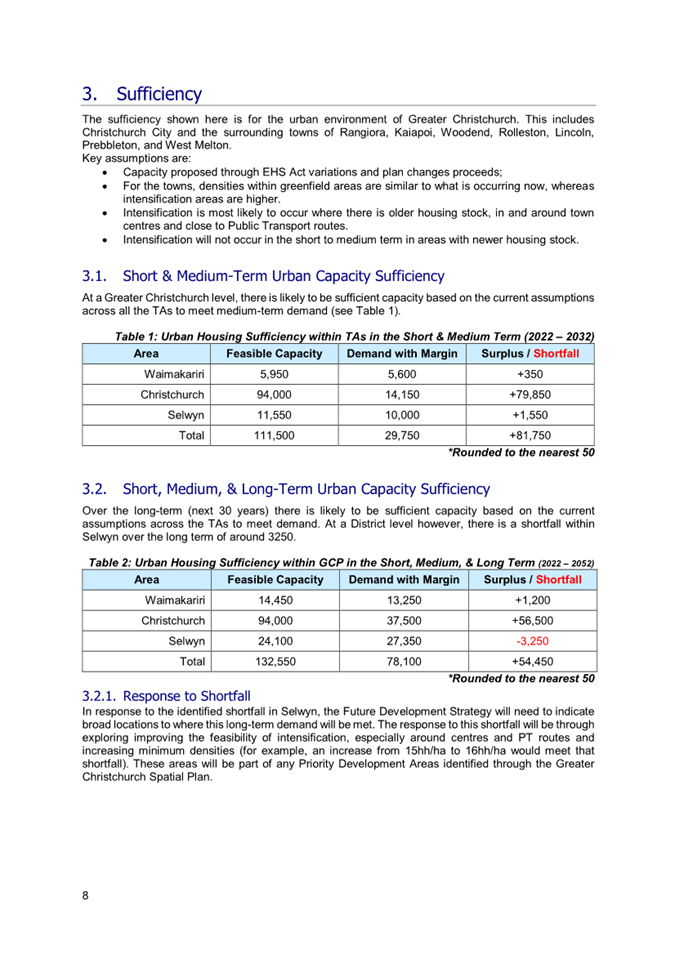
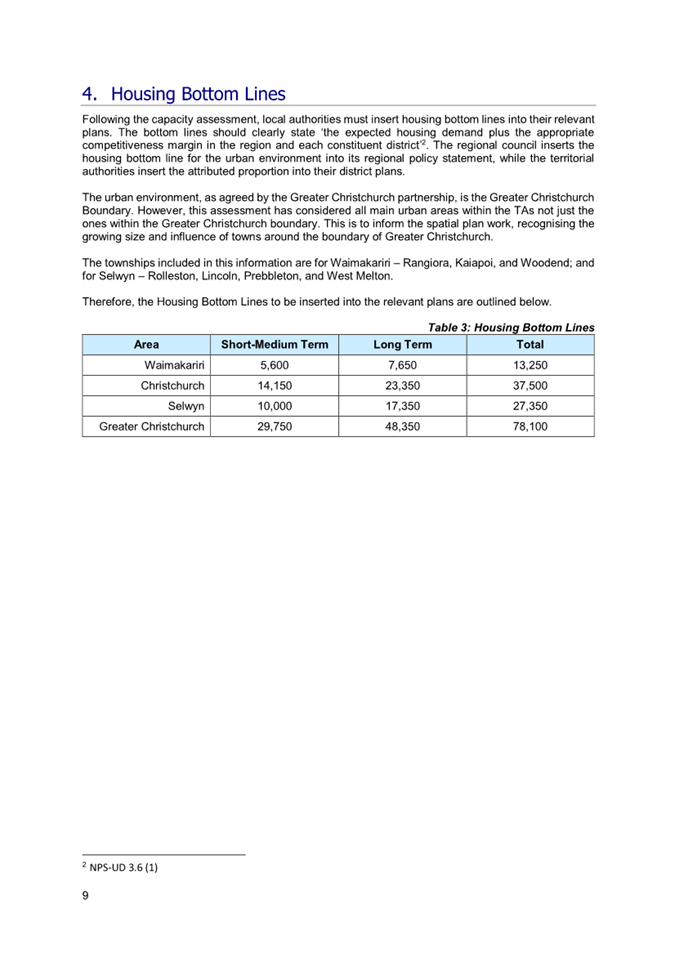
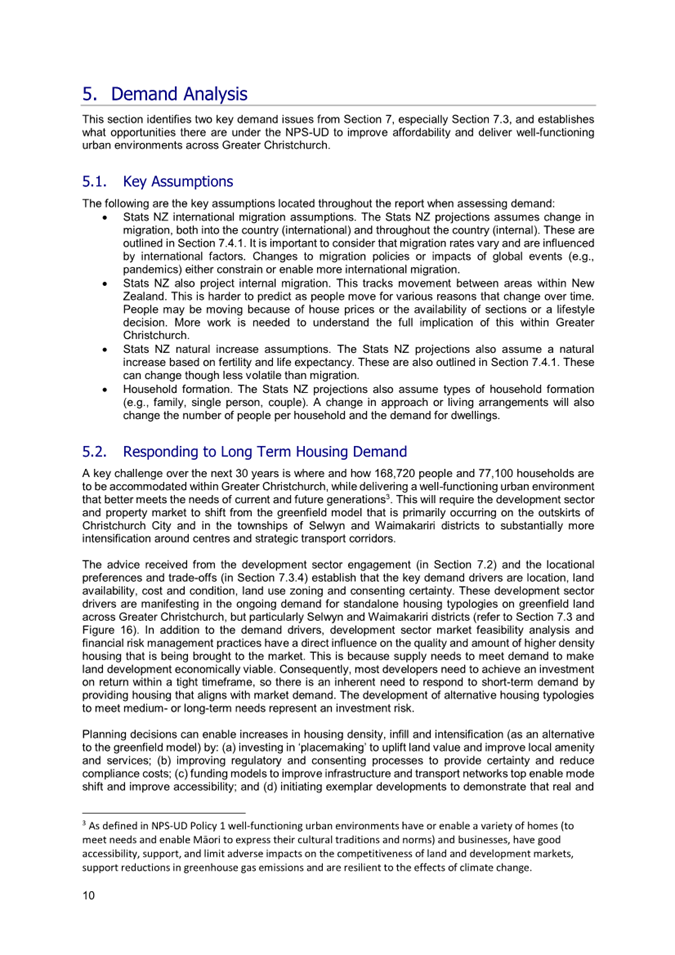
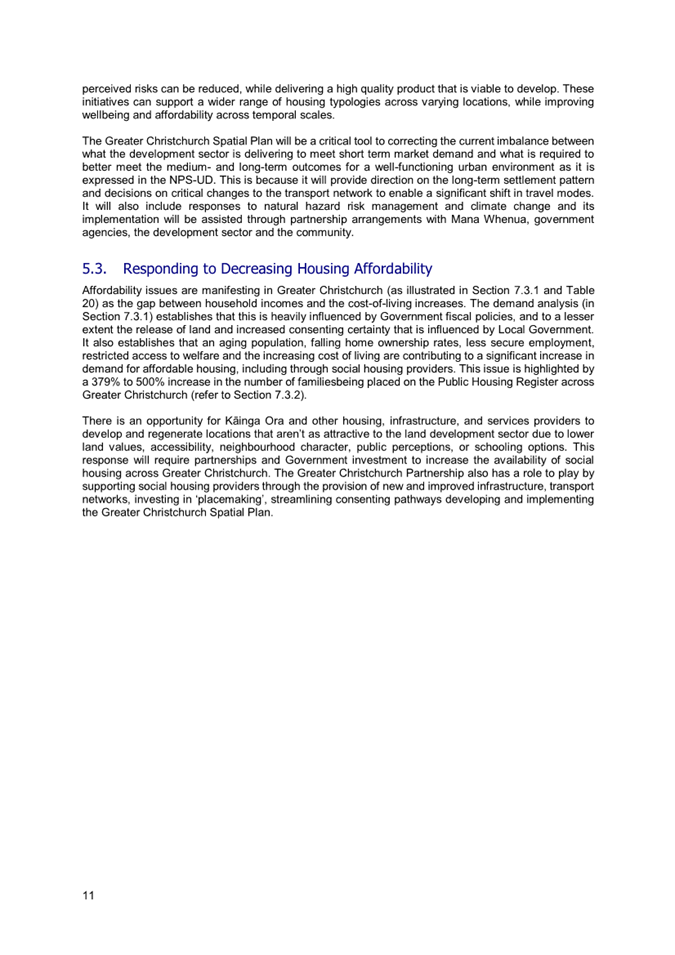
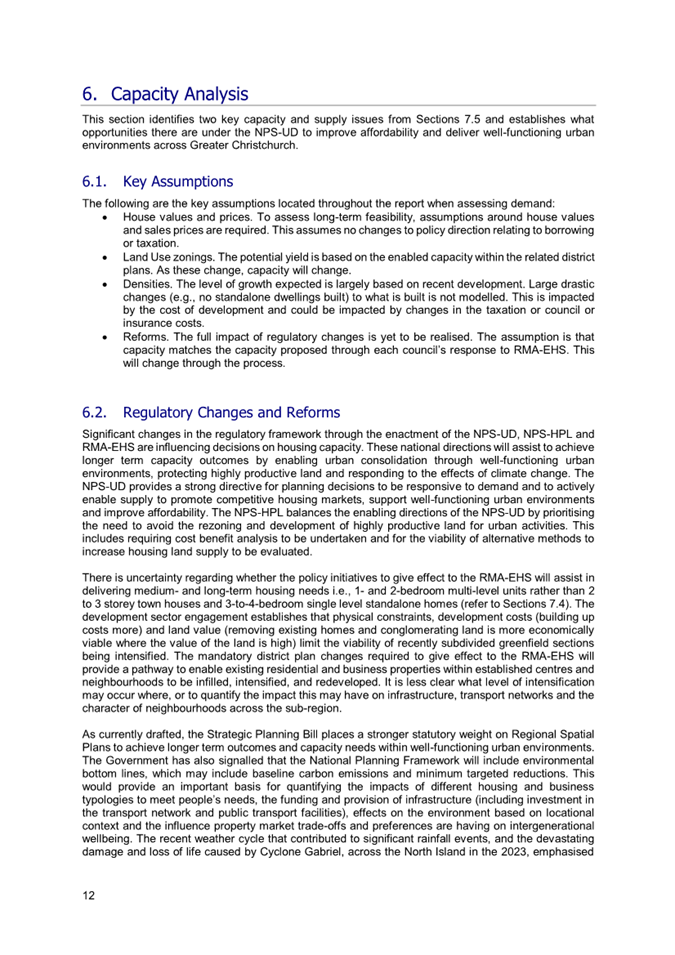
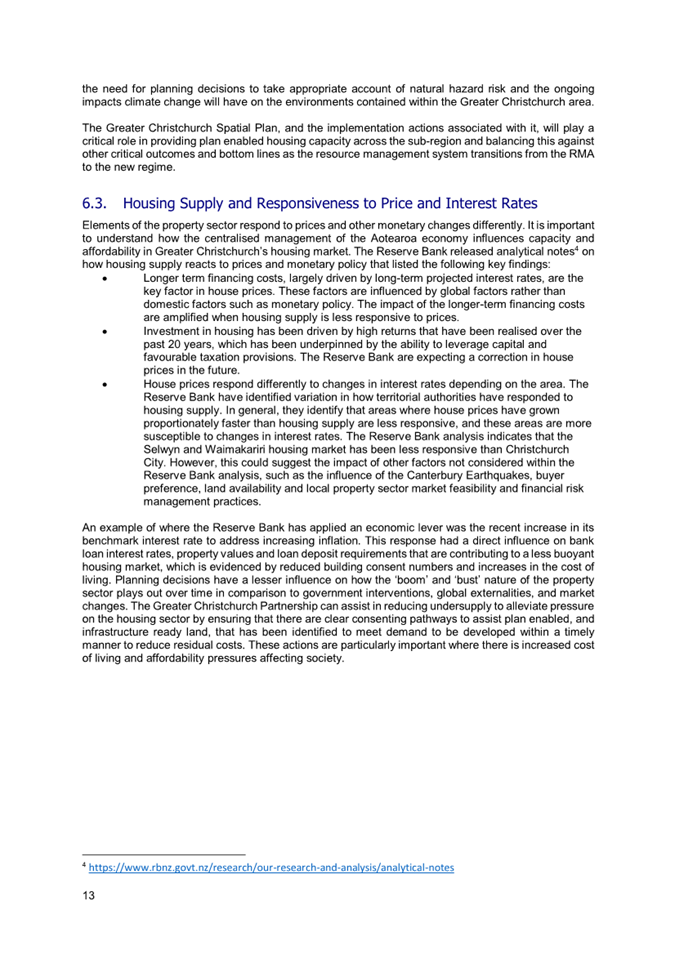
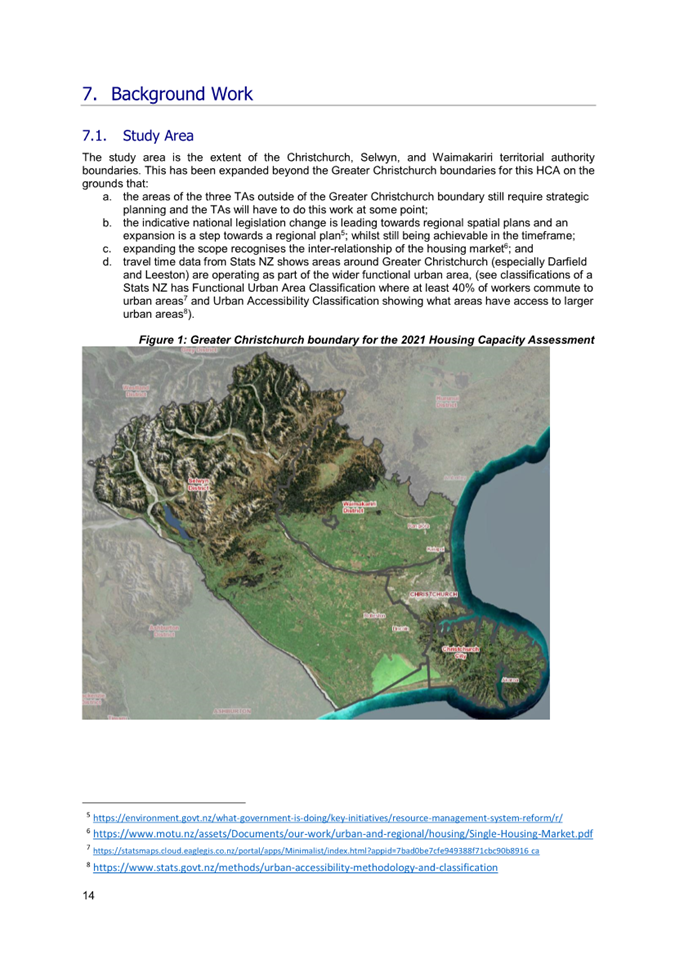
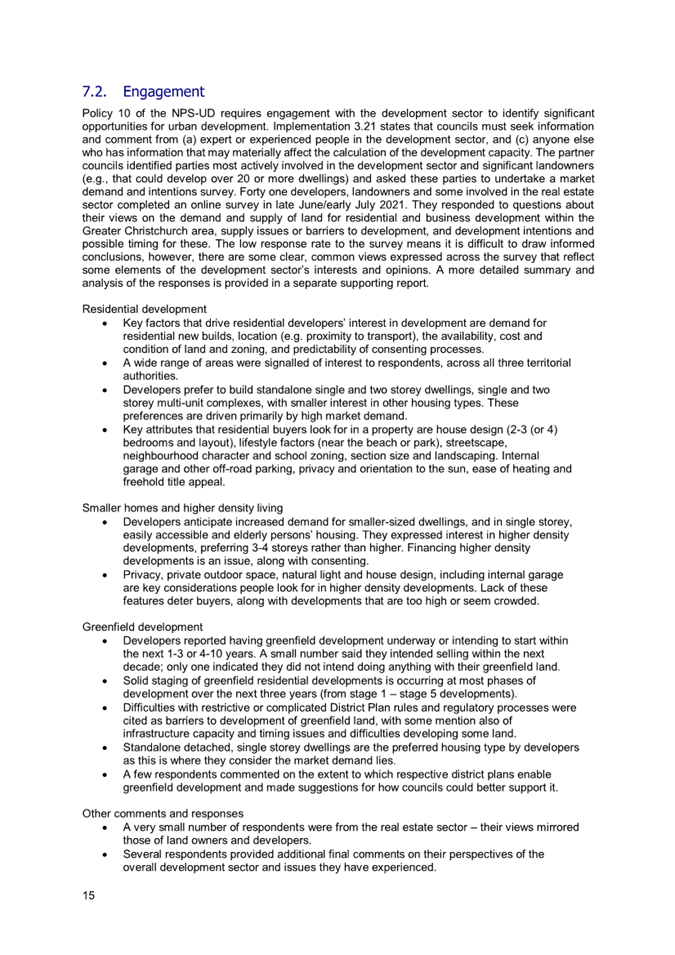
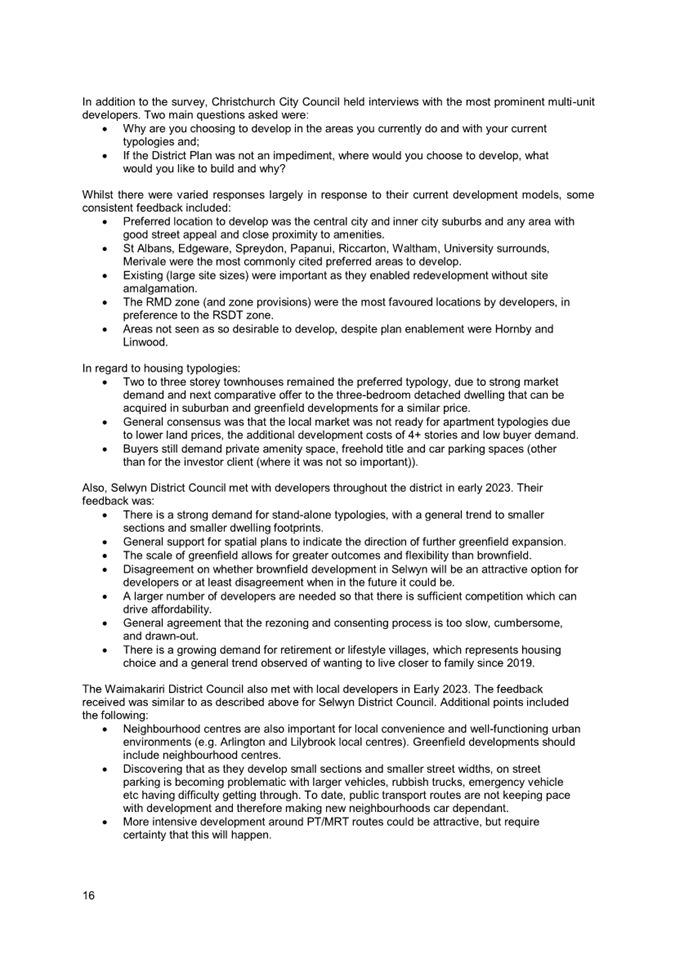
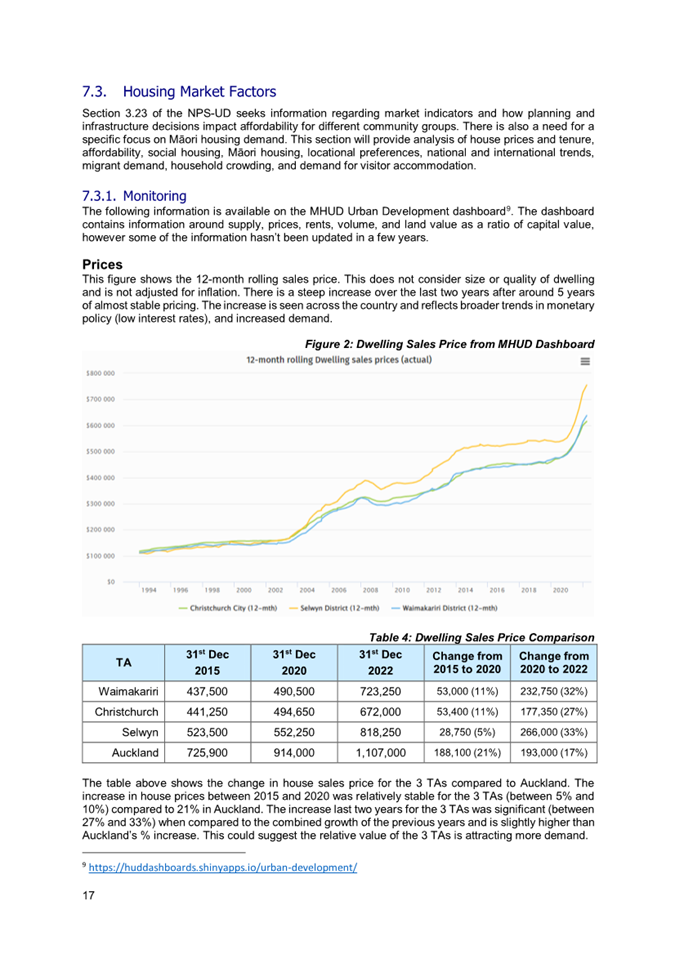

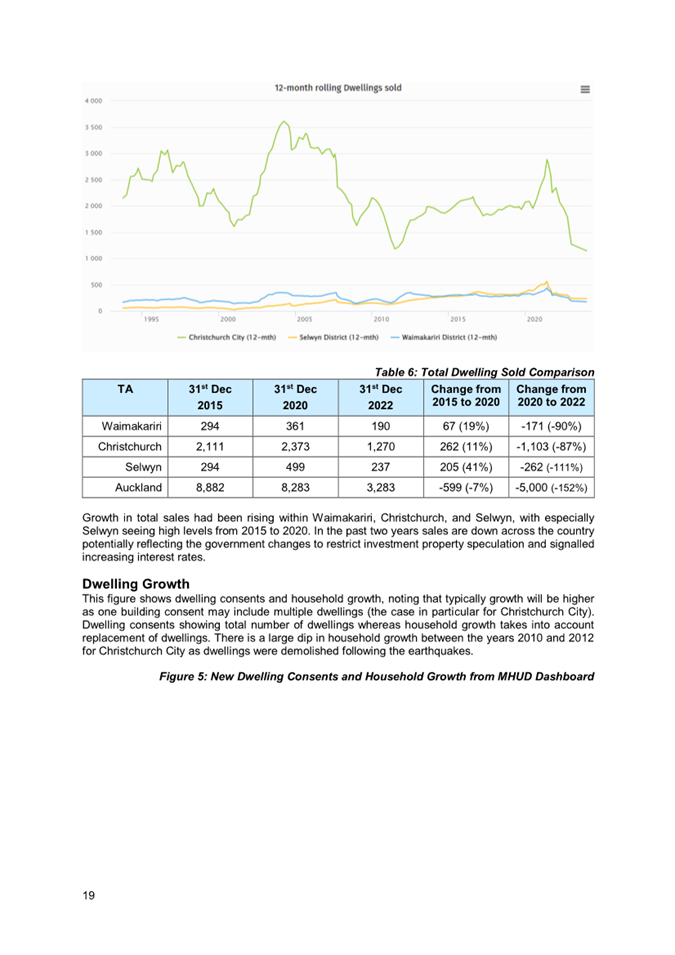
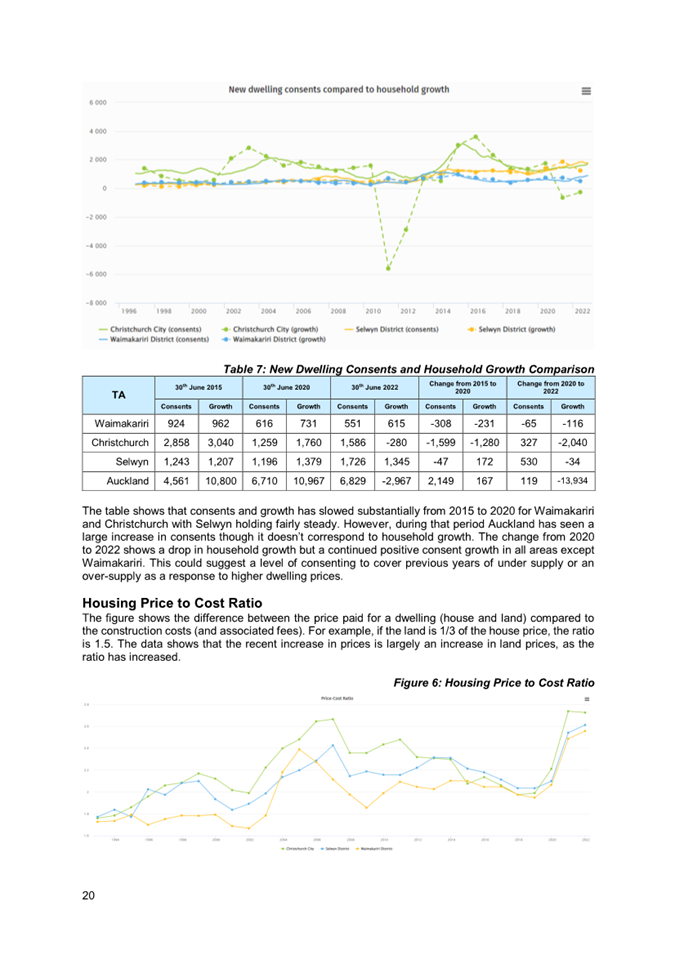
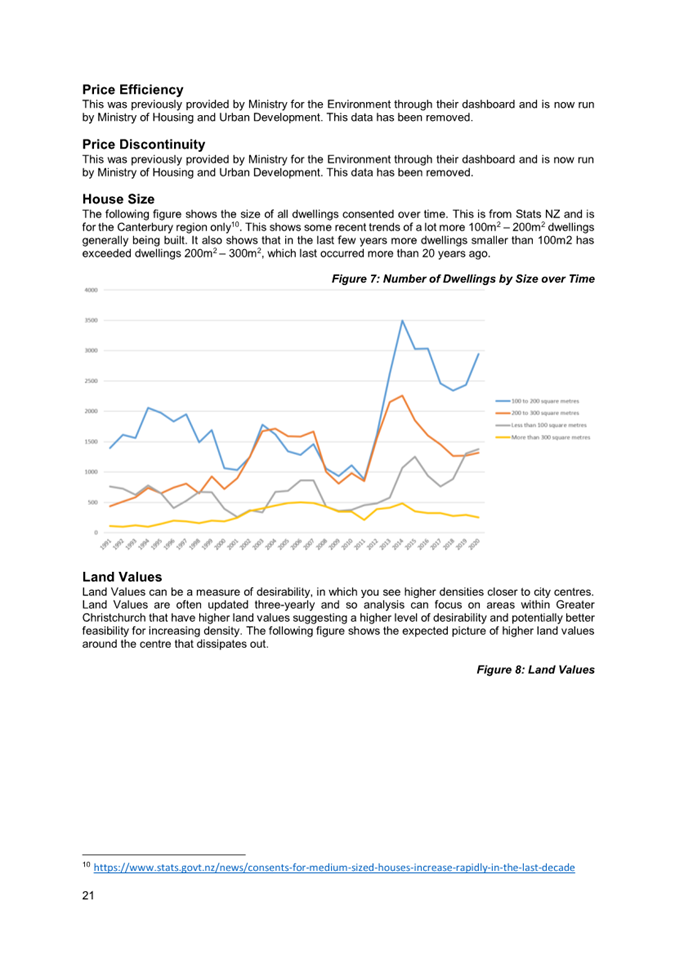
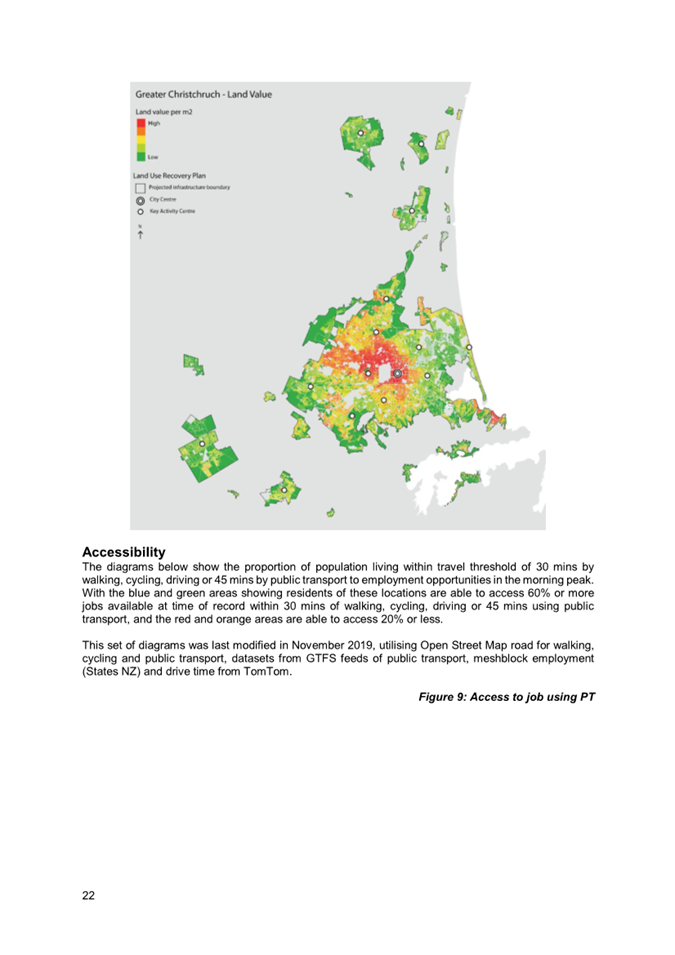
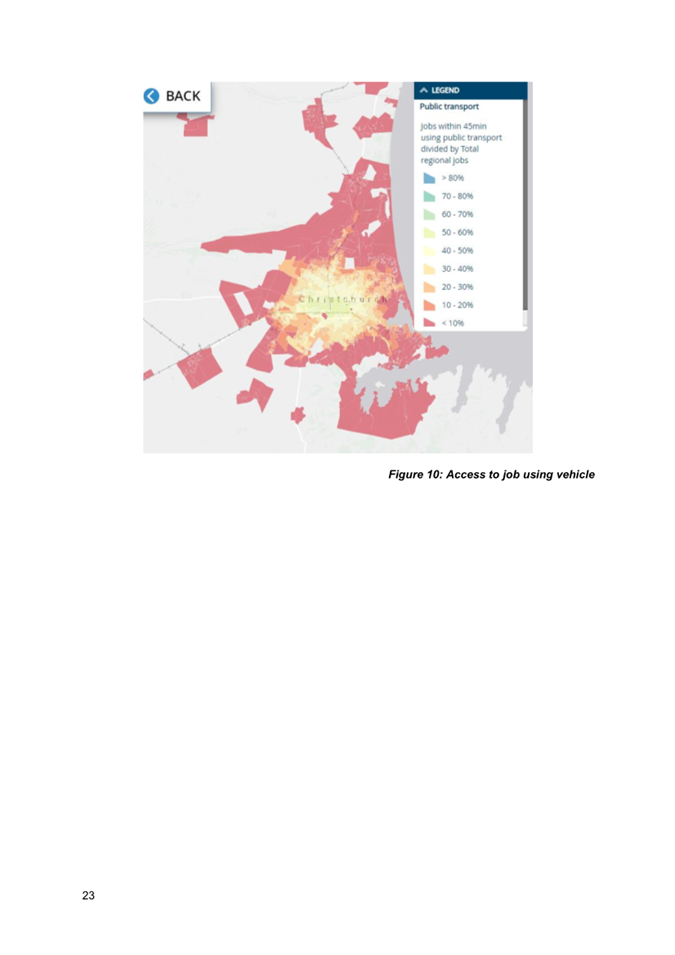
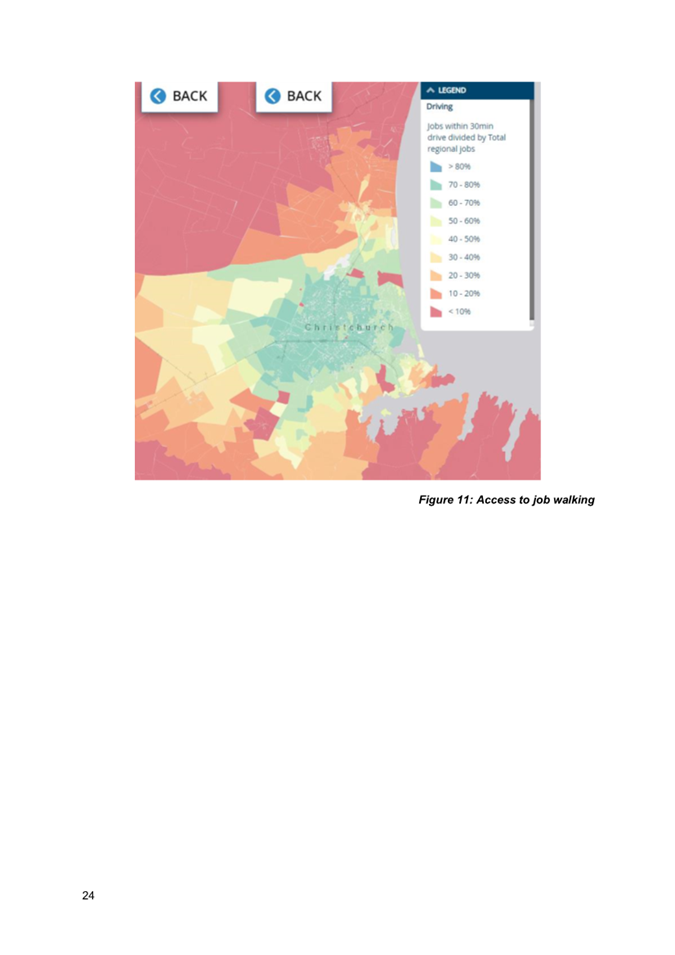
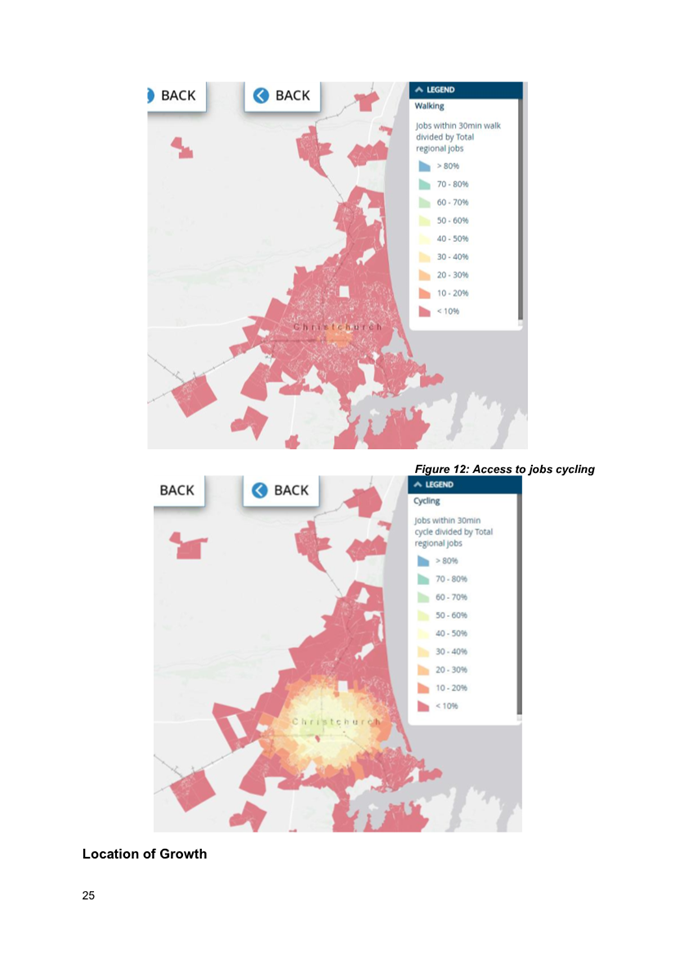
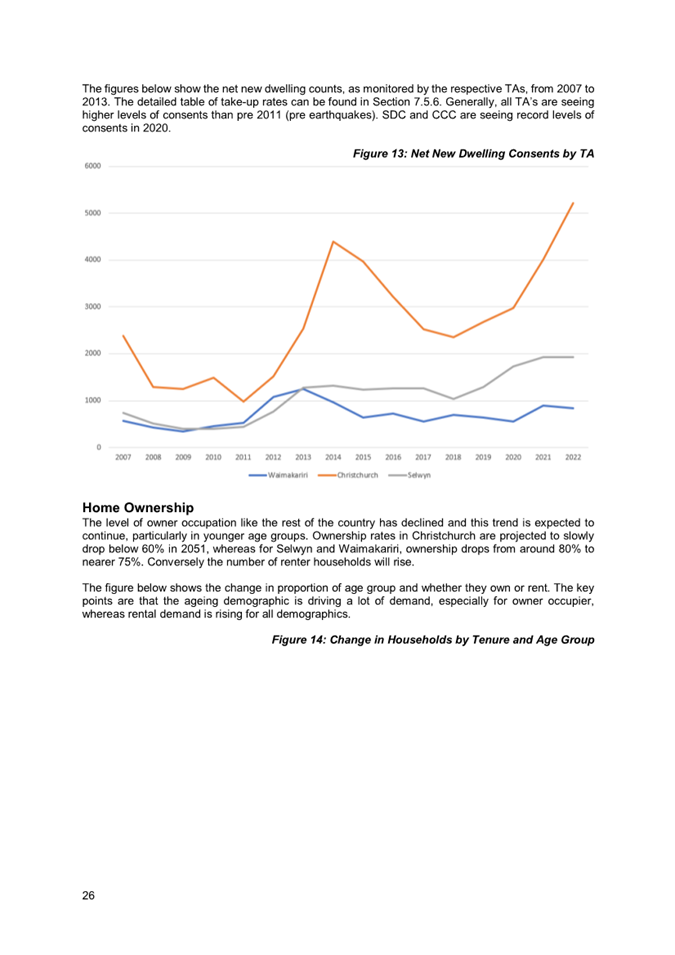
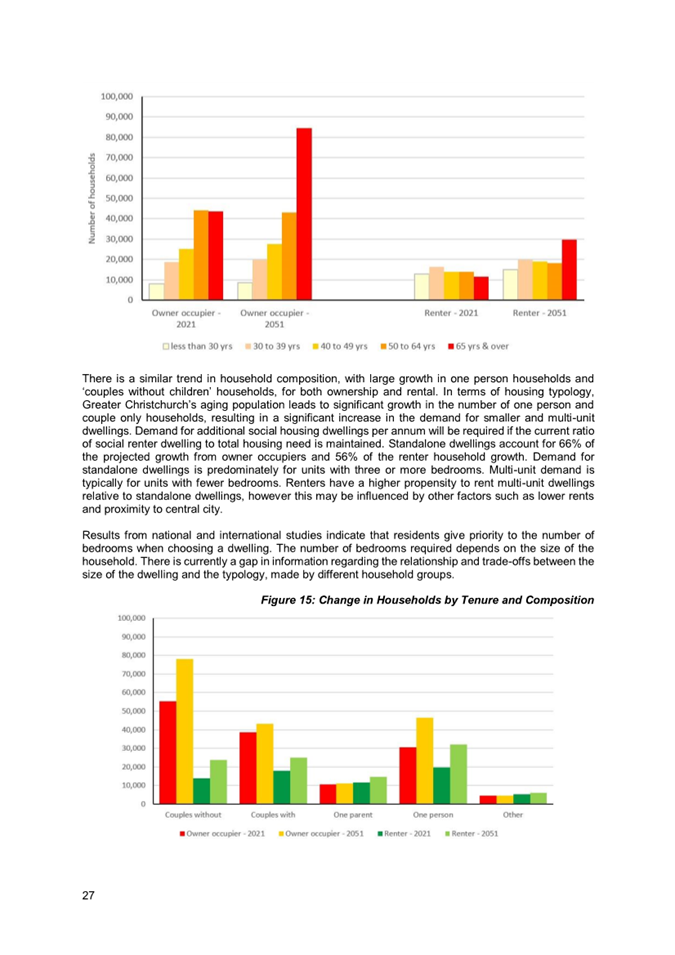
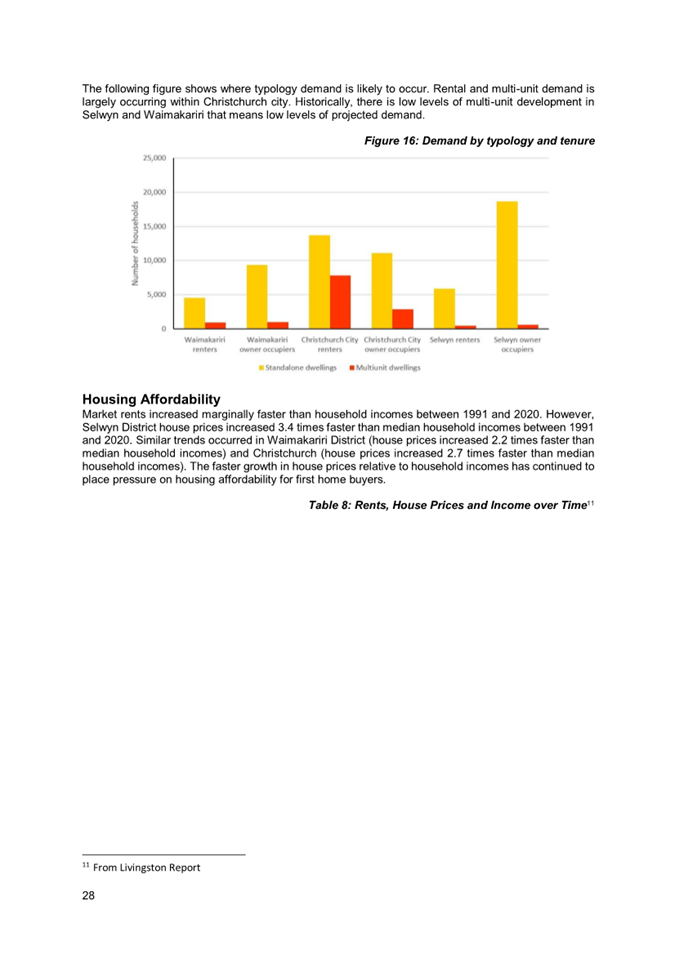
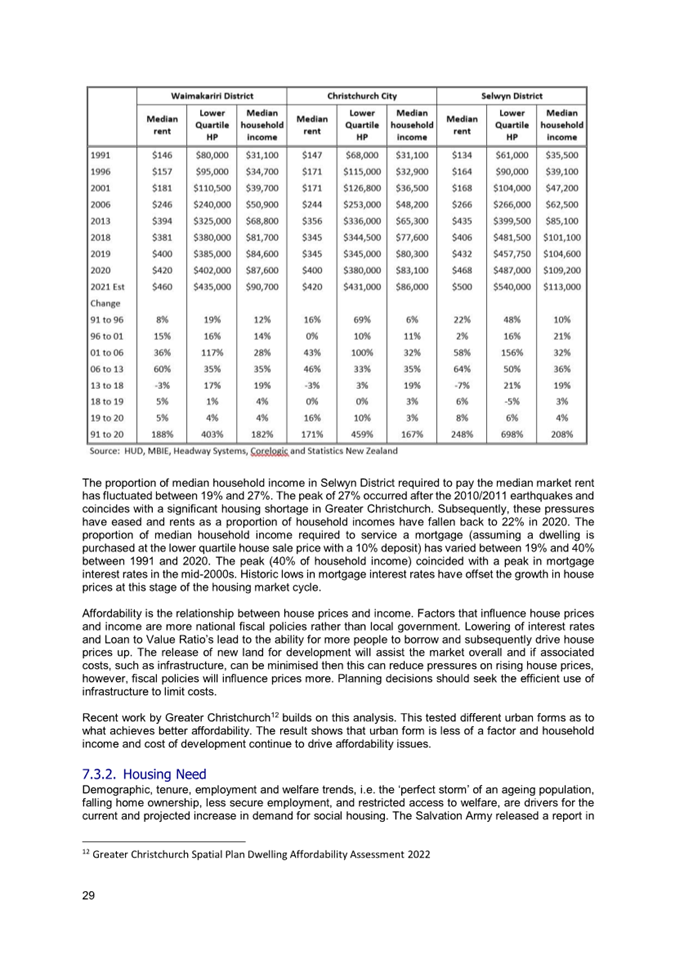
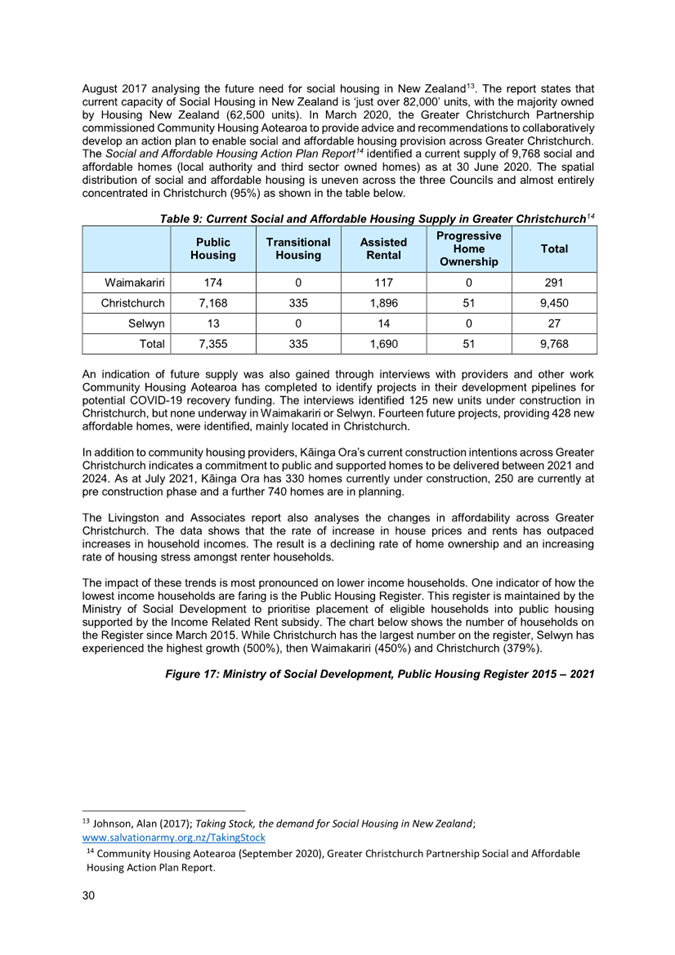
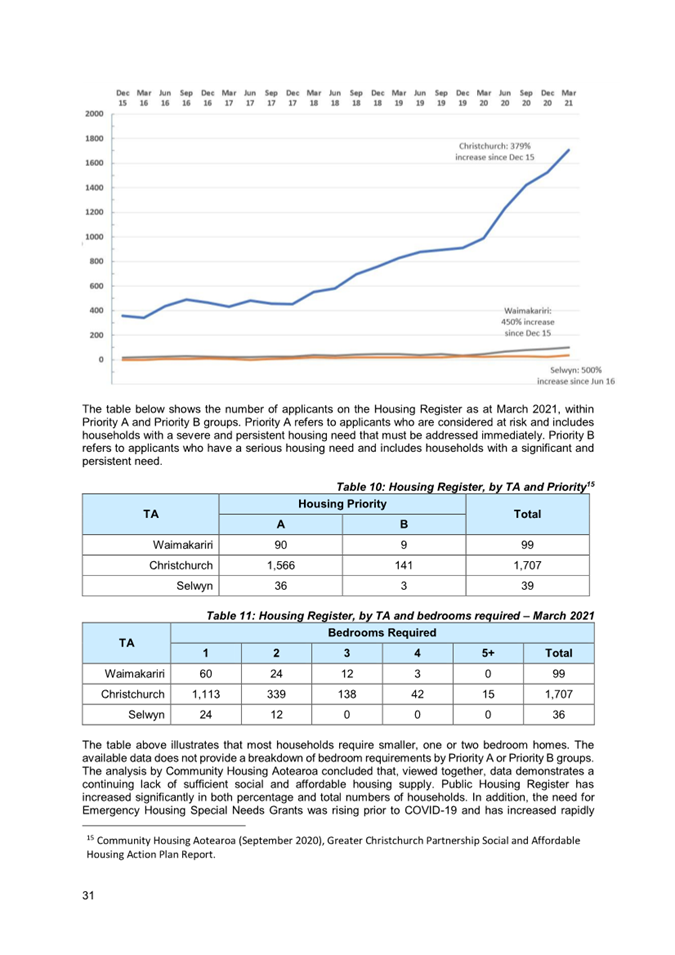
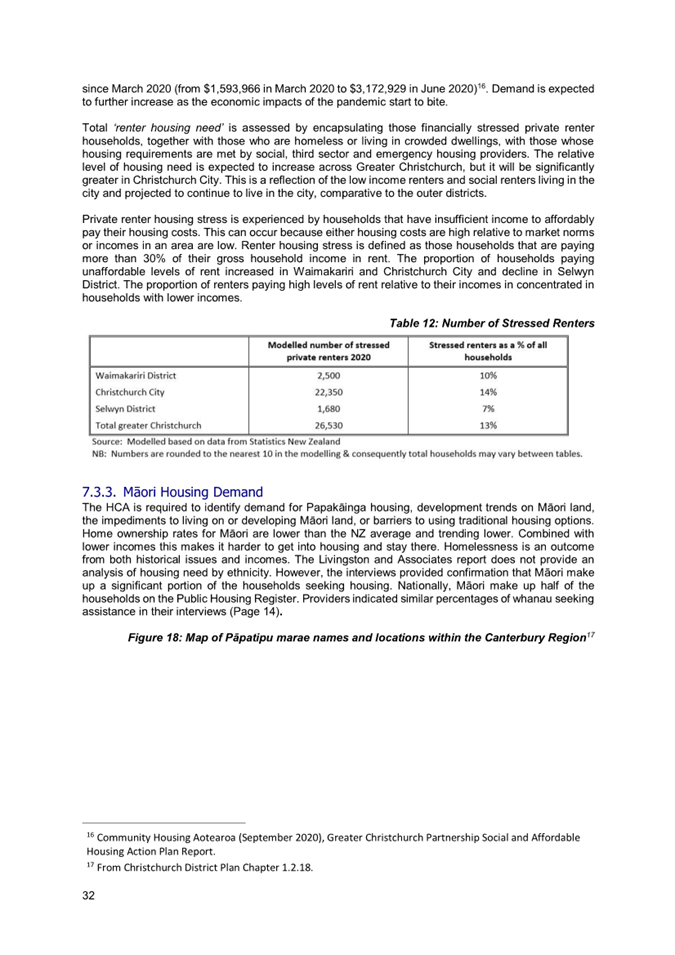
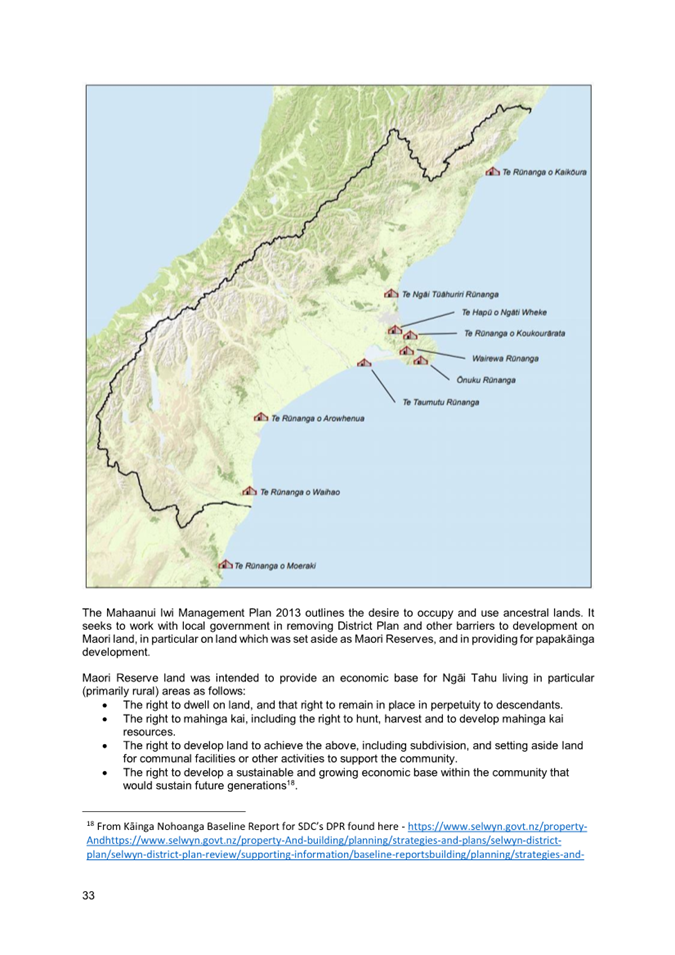
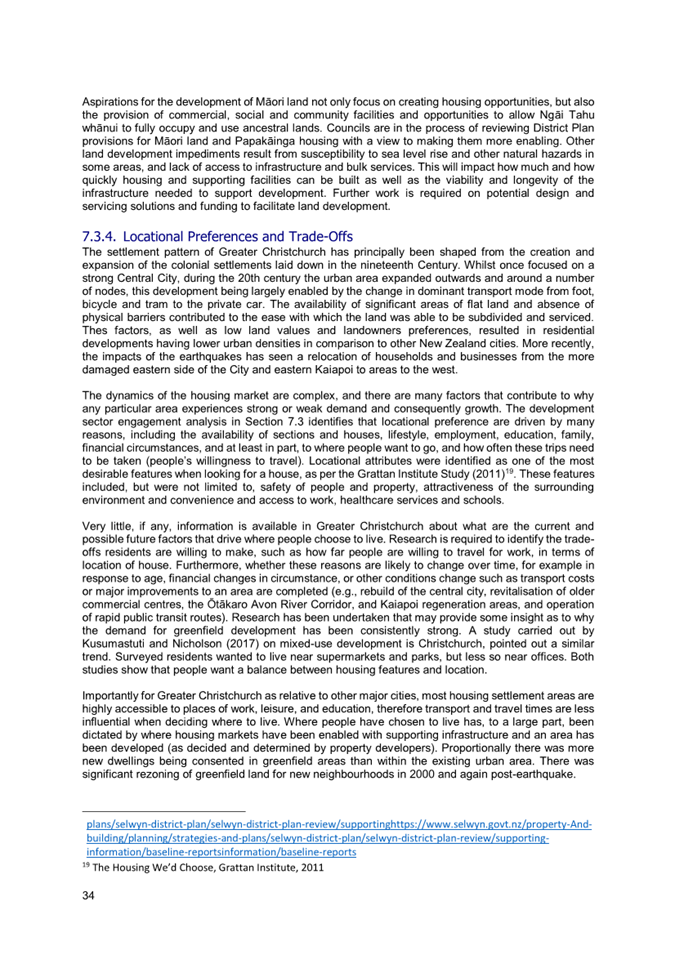
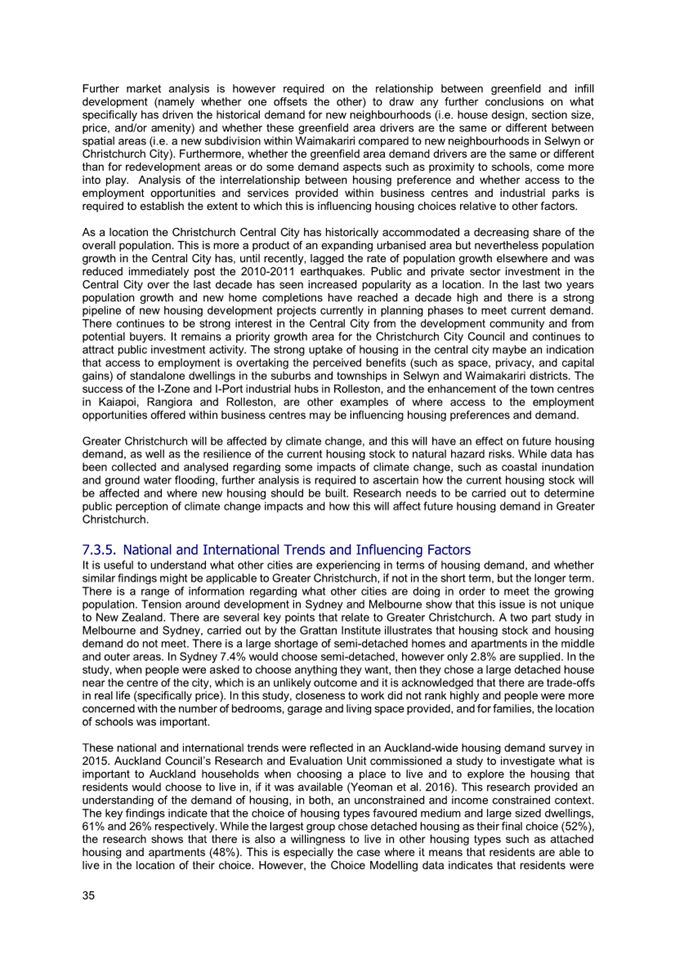
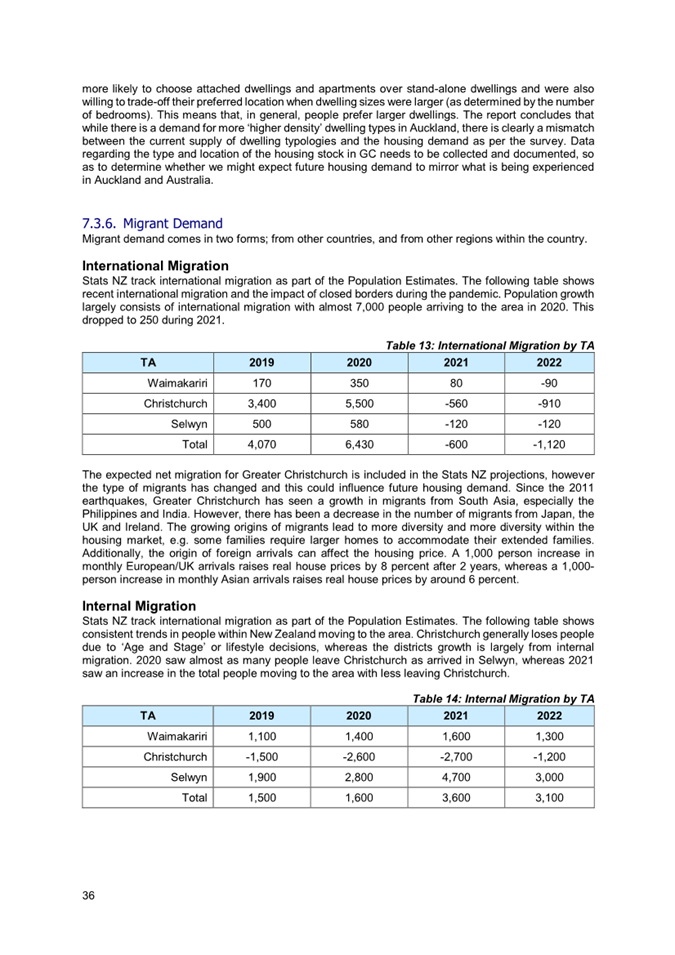
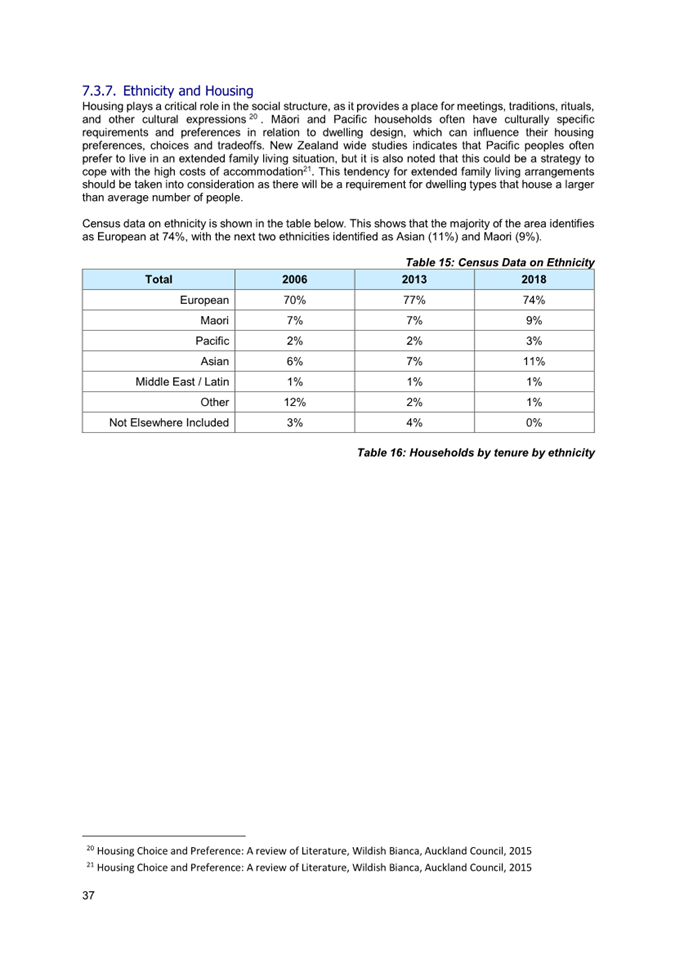
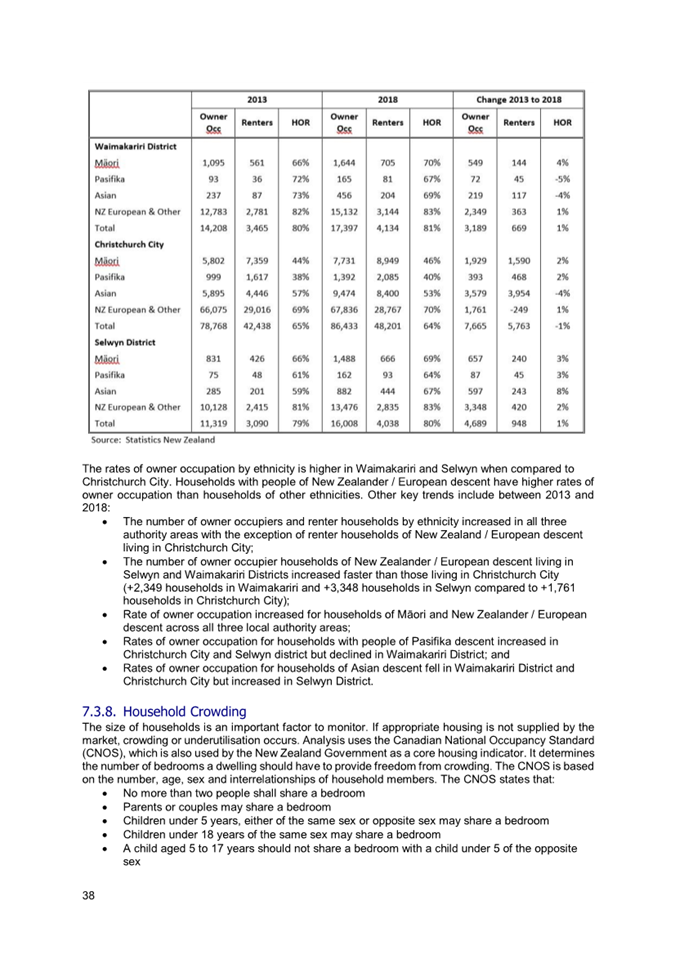
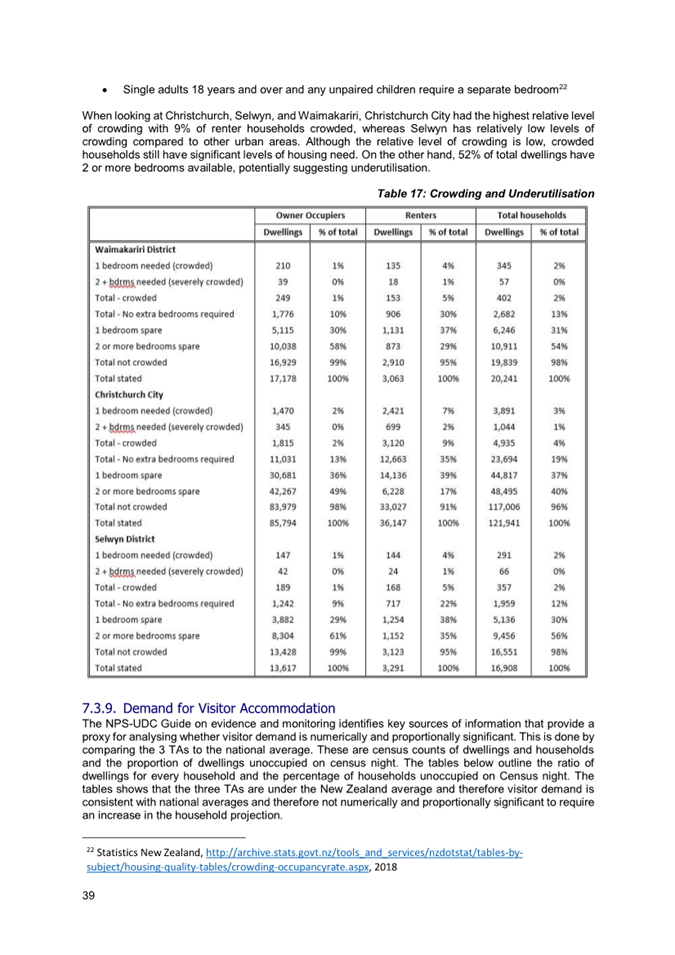
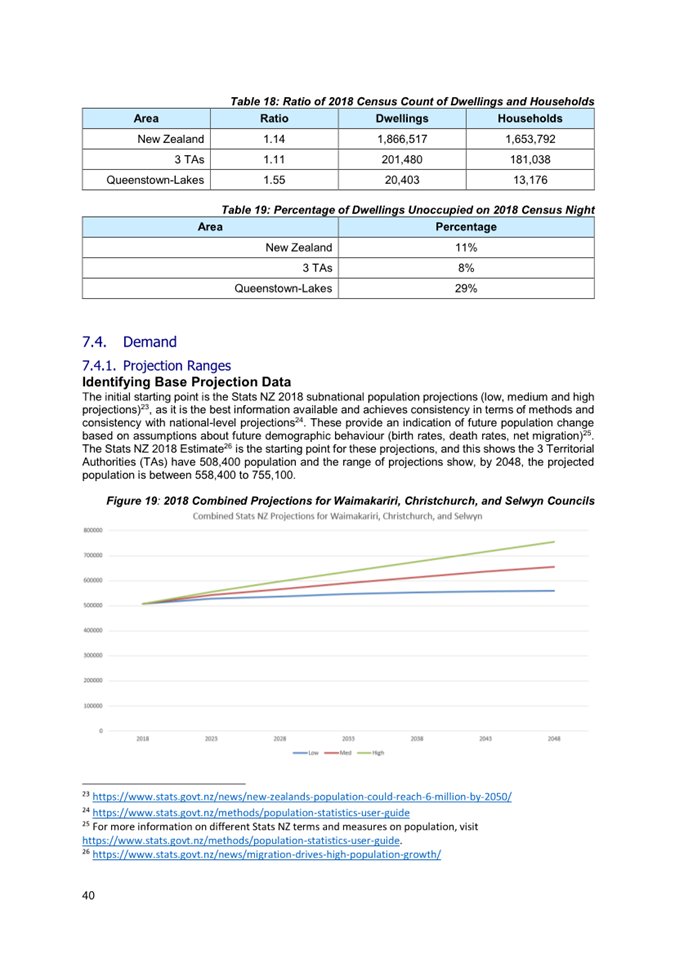
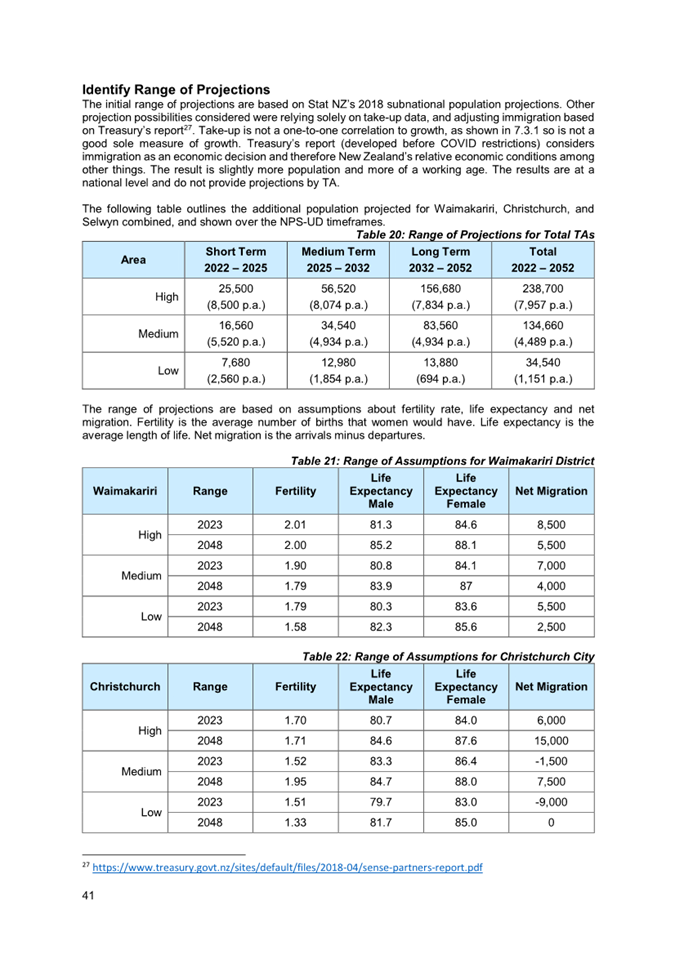
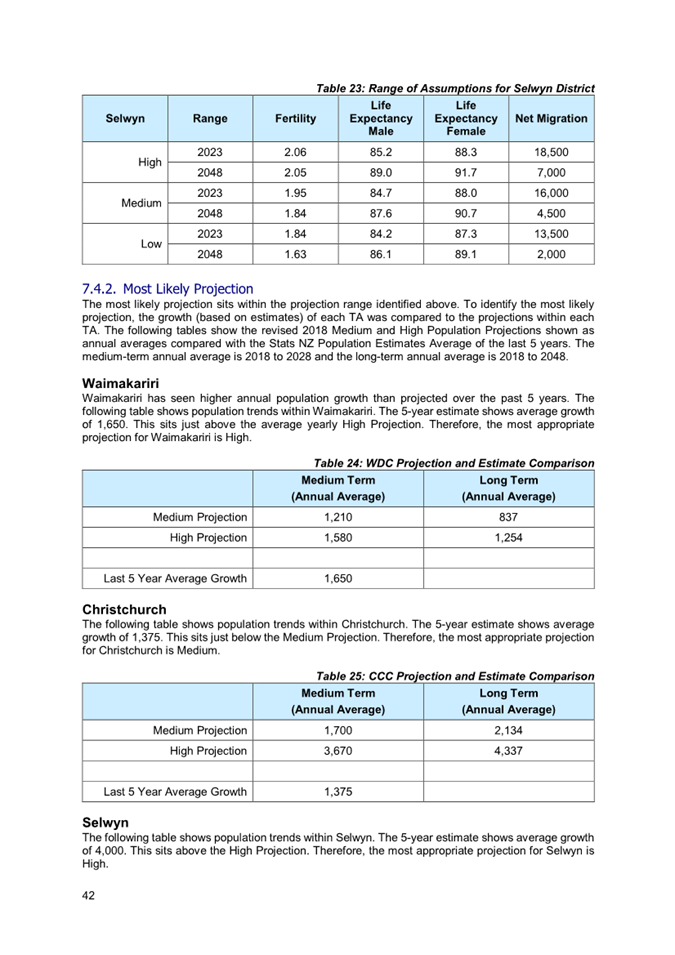
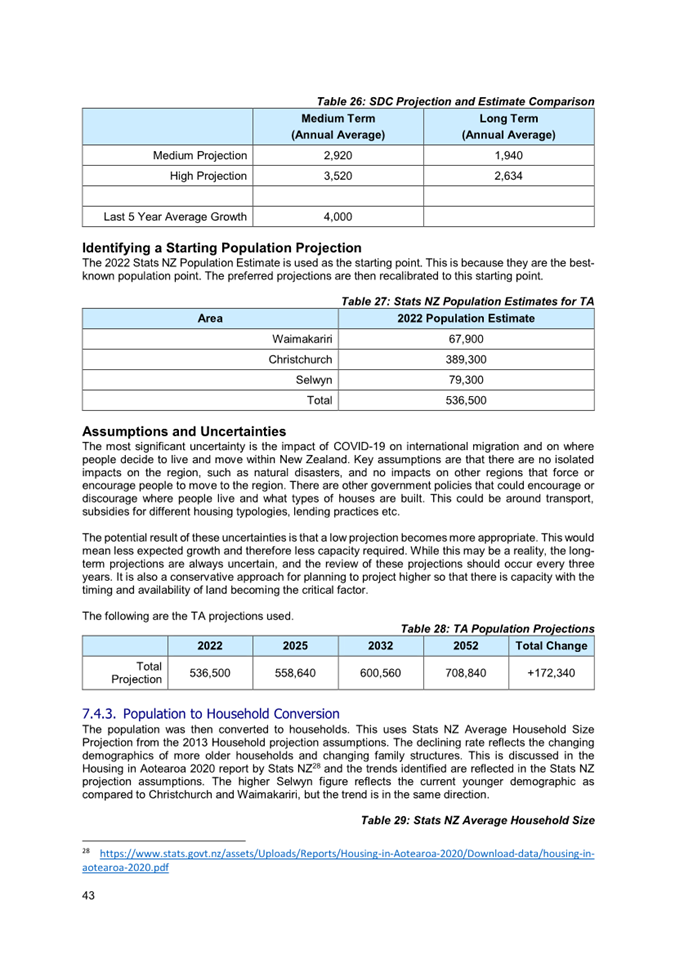
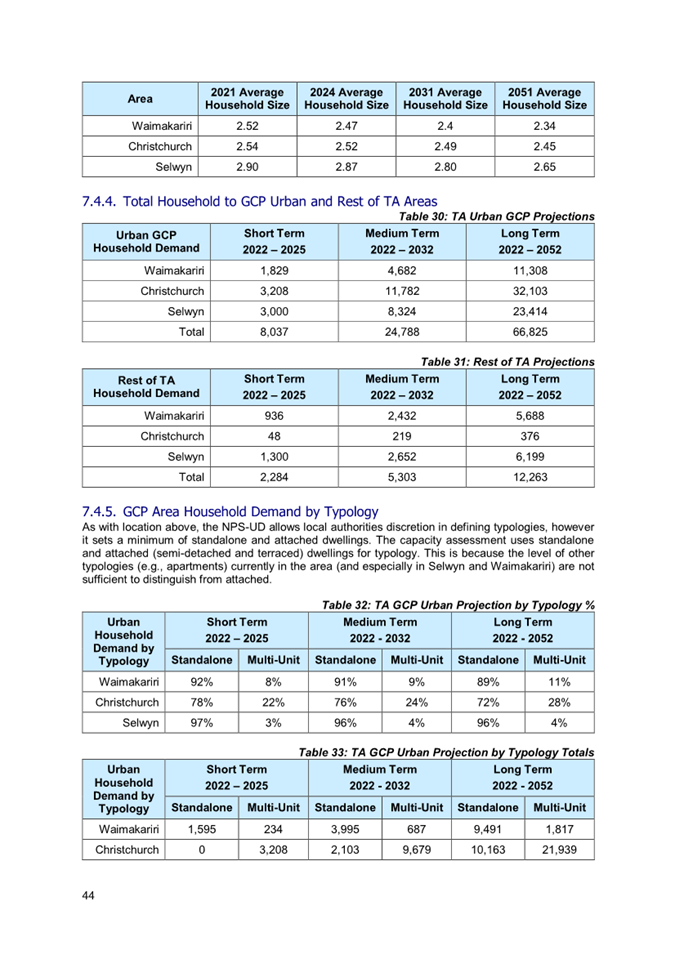
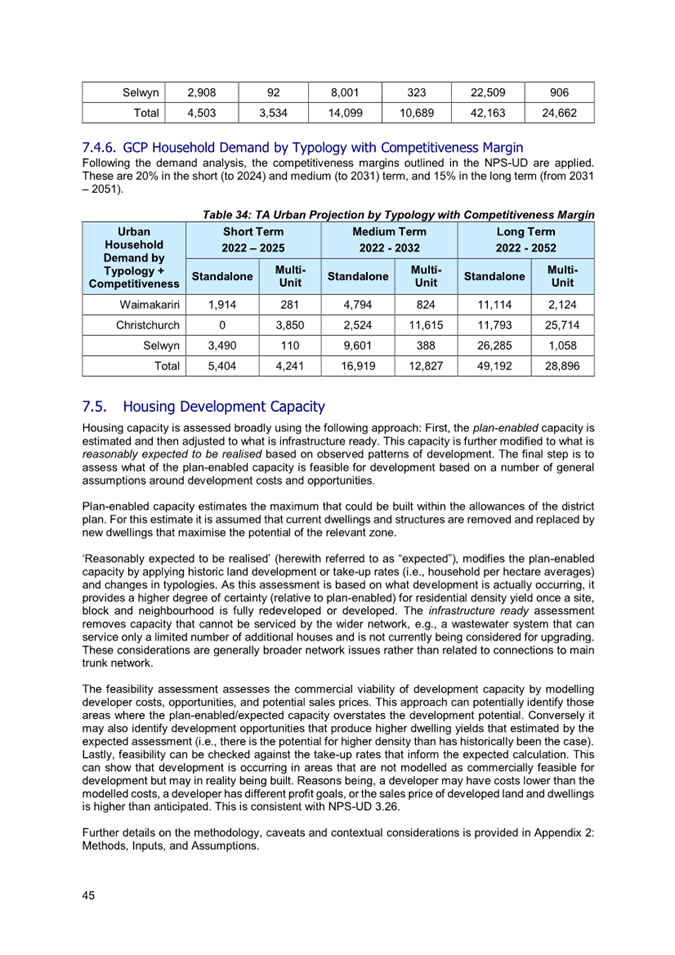
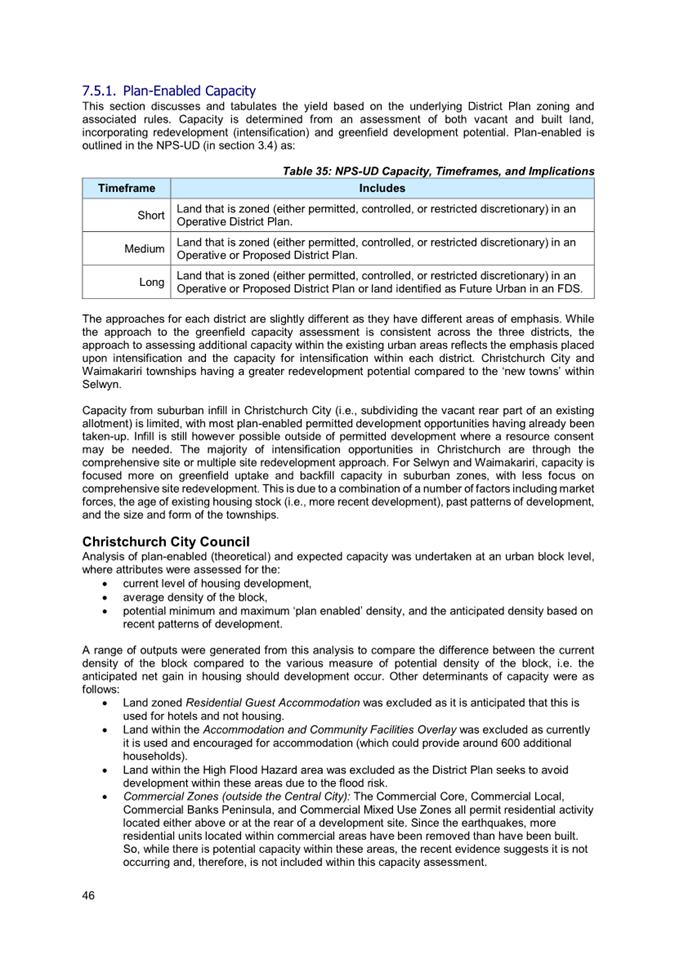
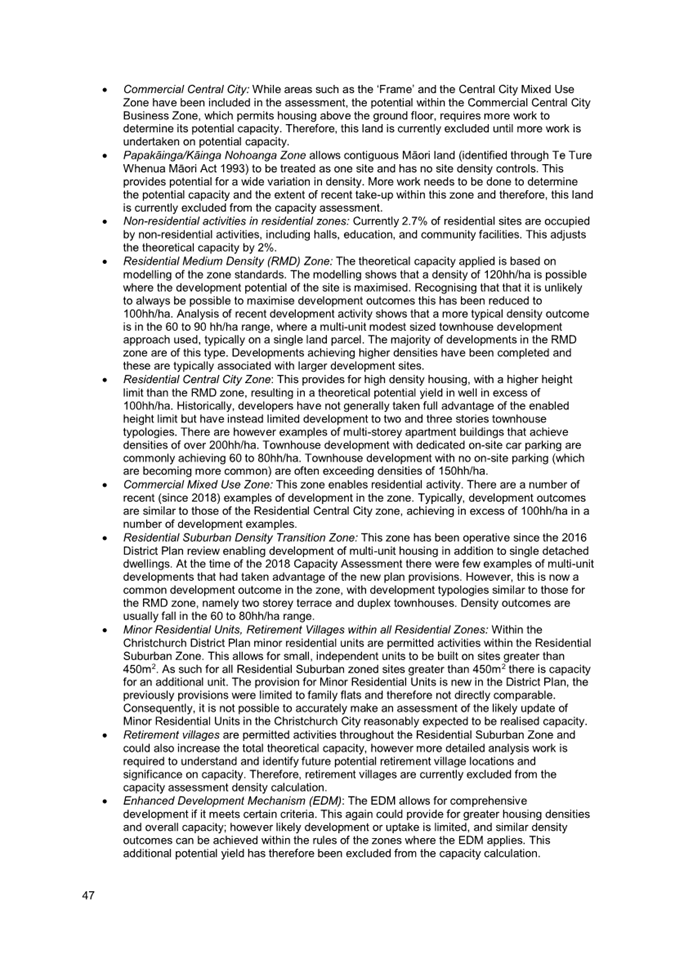
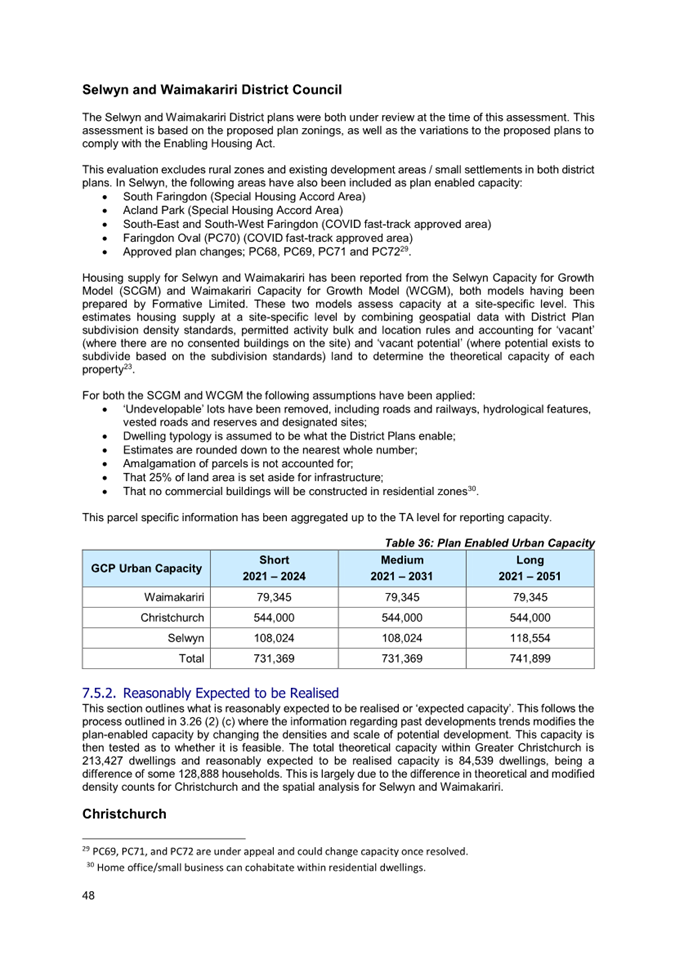
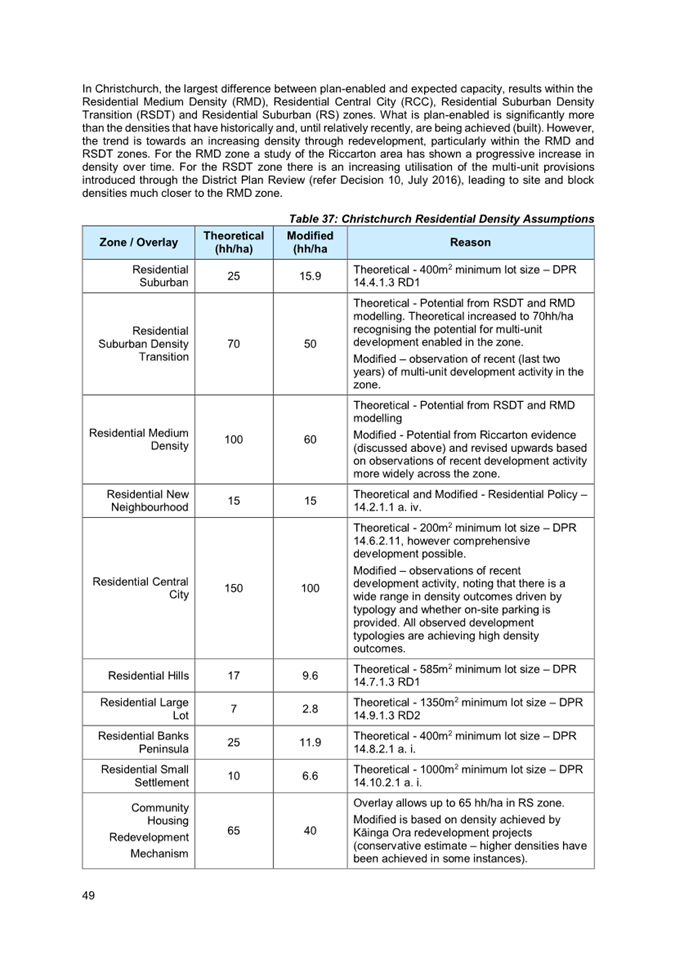
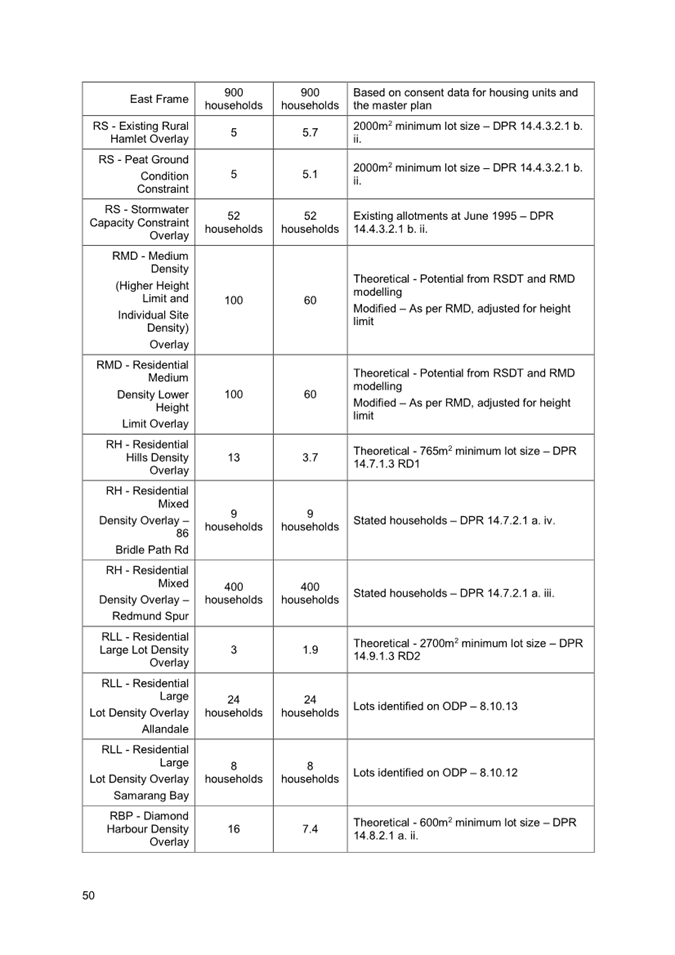
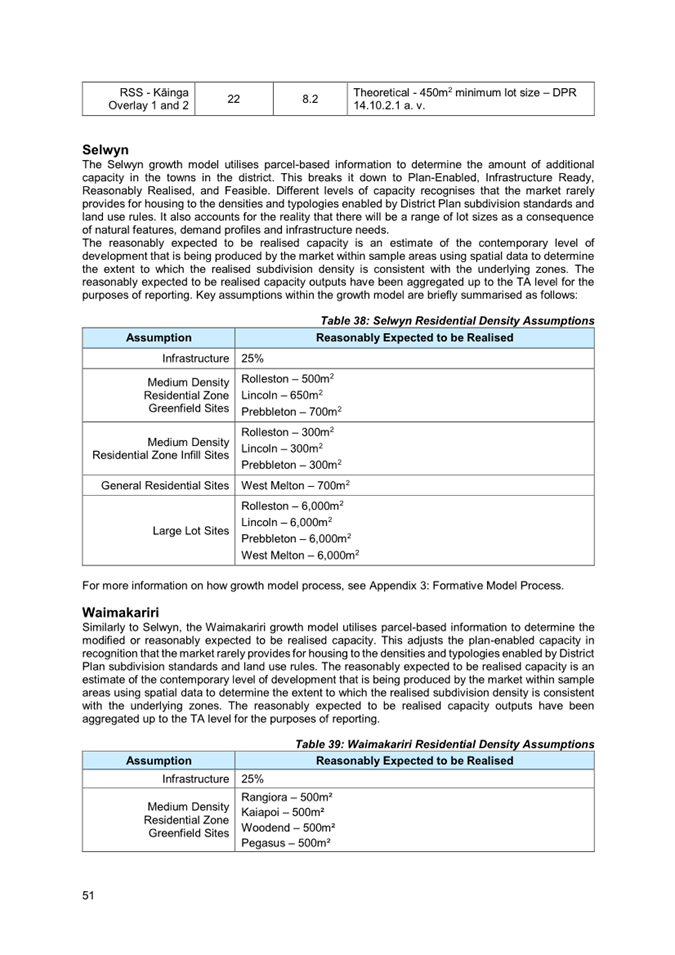
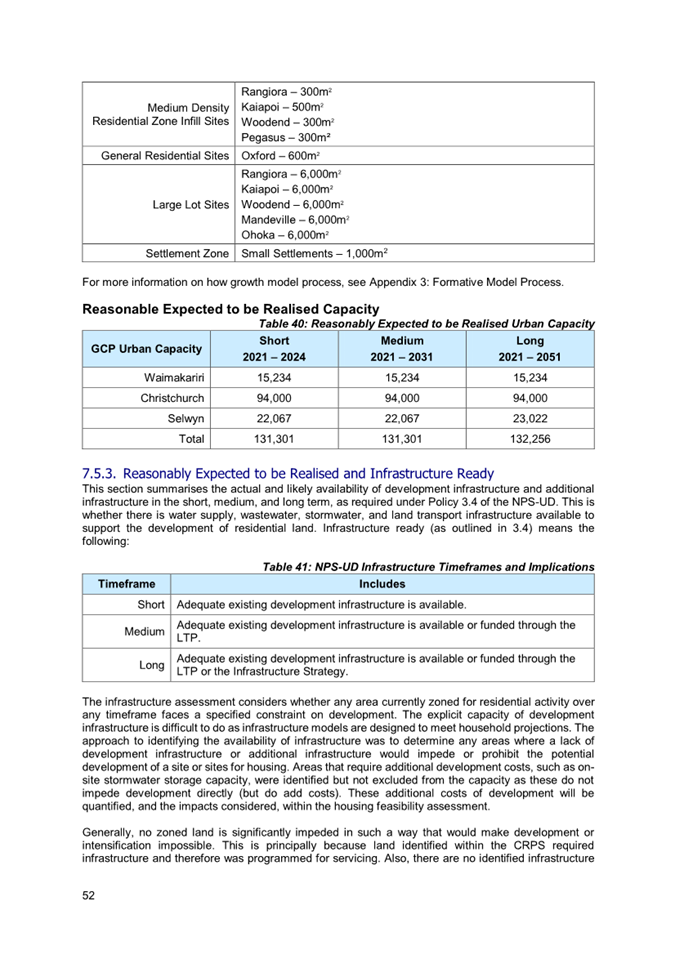
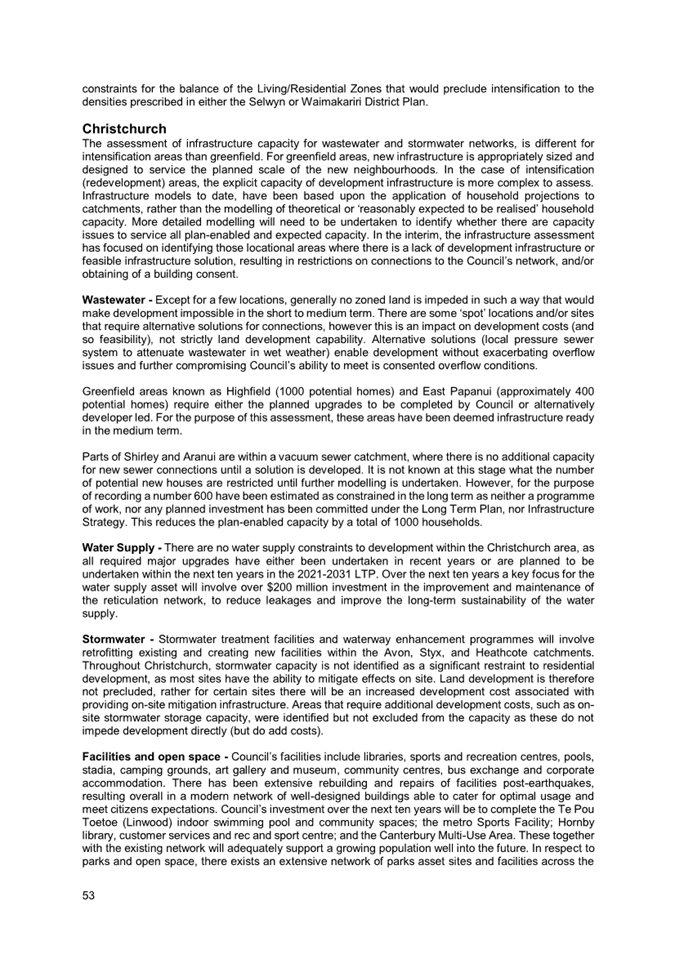
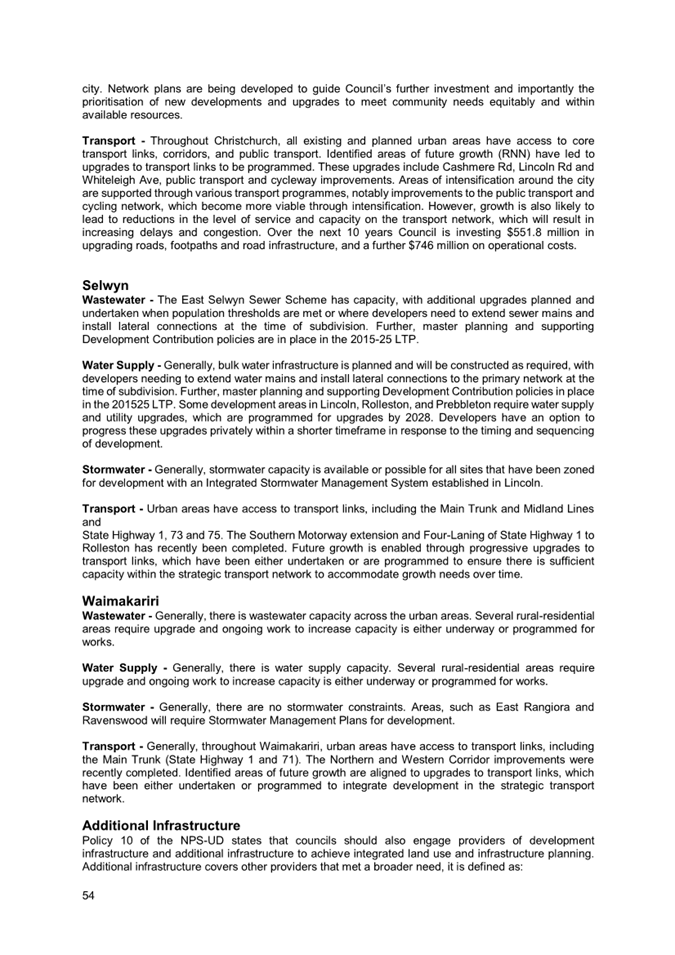
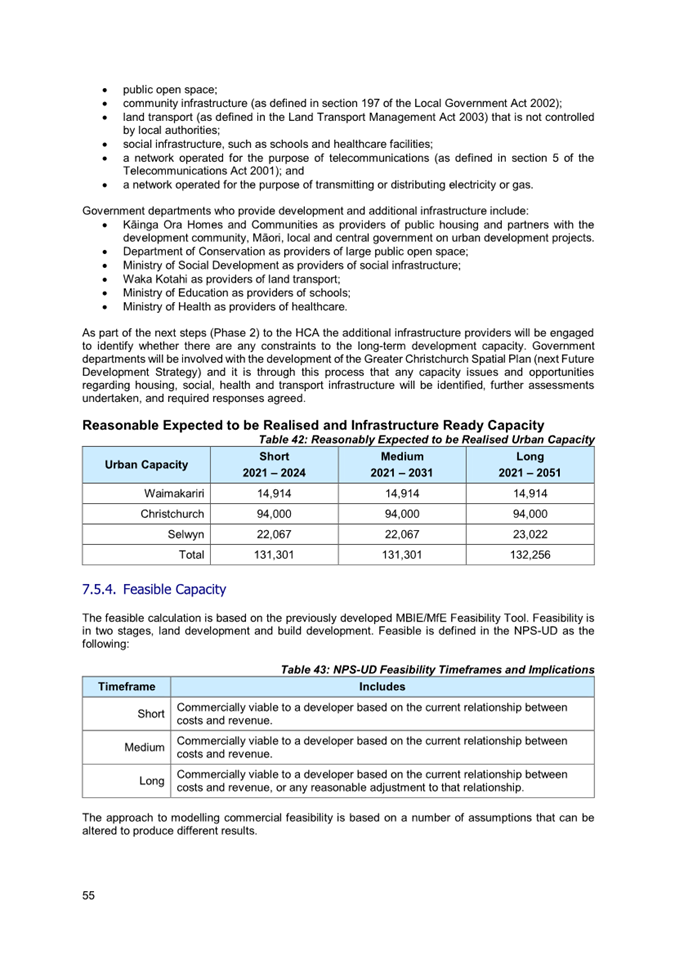

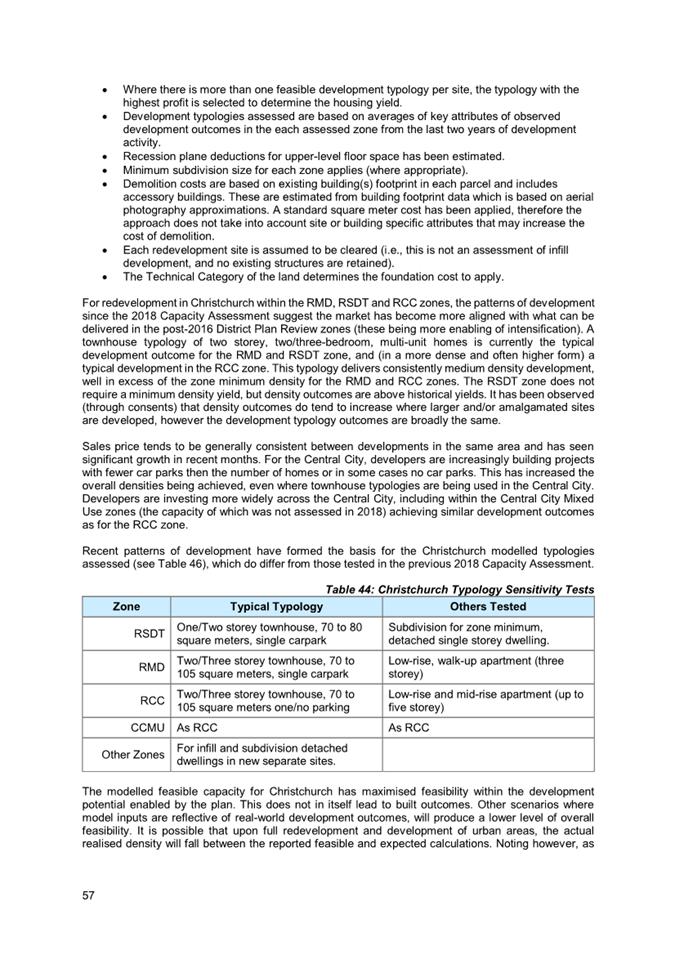
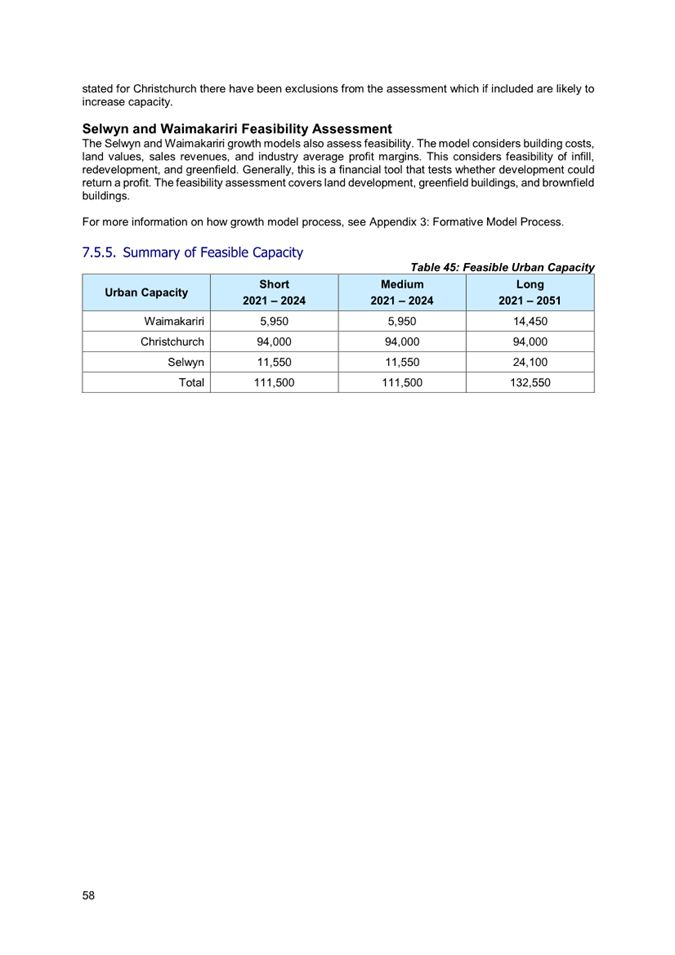
|
Whakawhanake Kāinga Komiti
12 May 2023
|
|
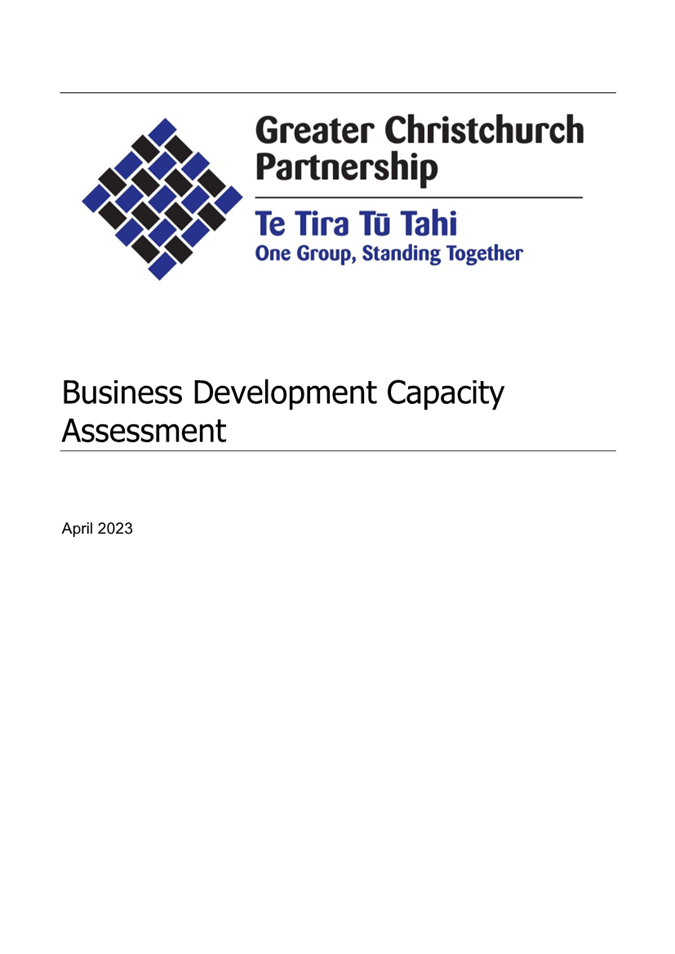

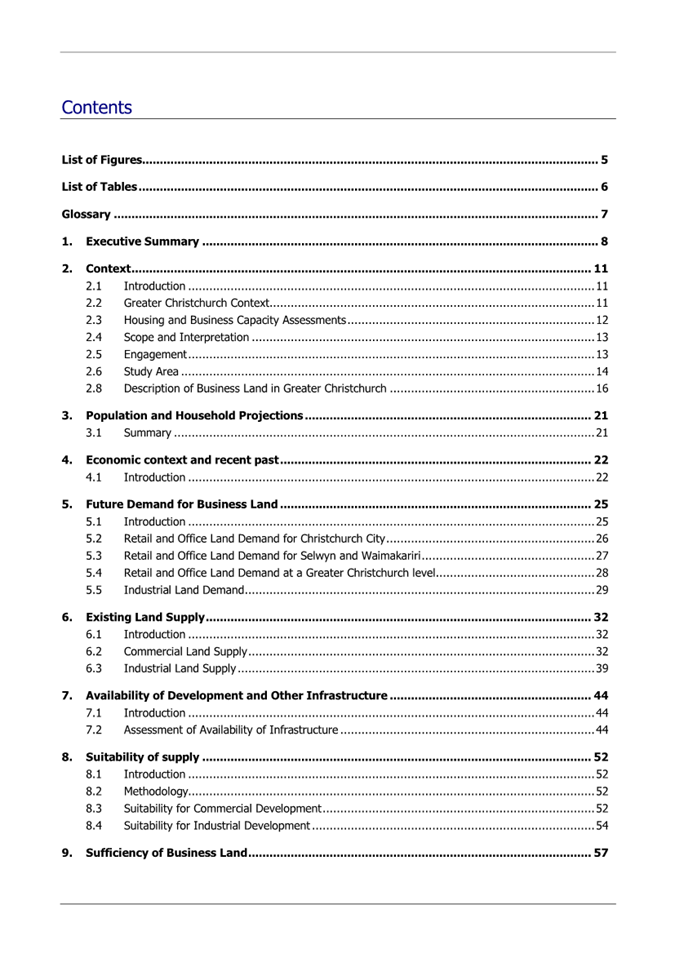
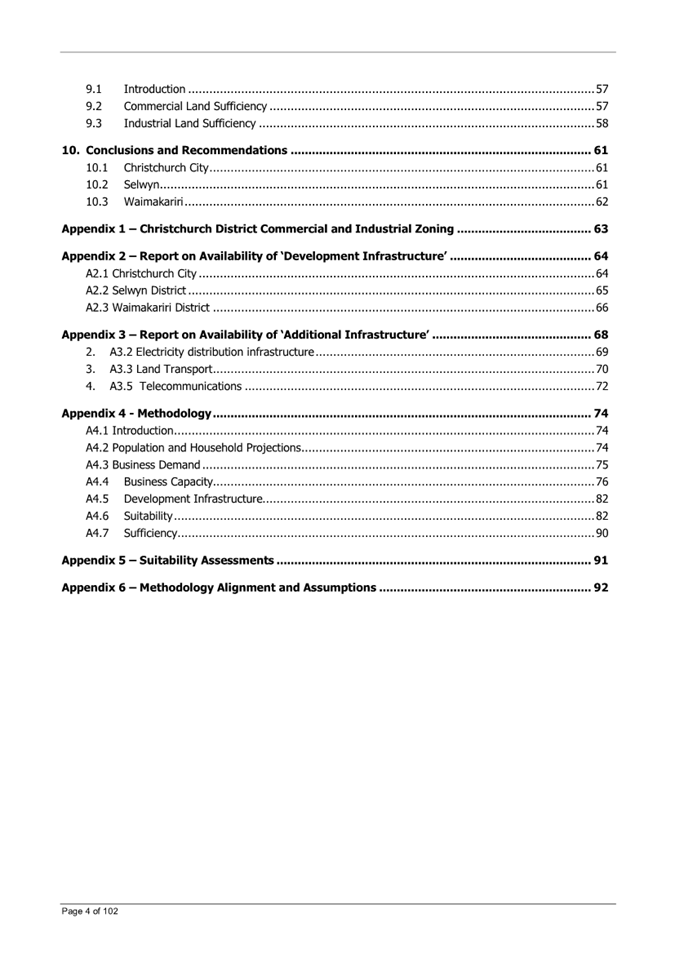
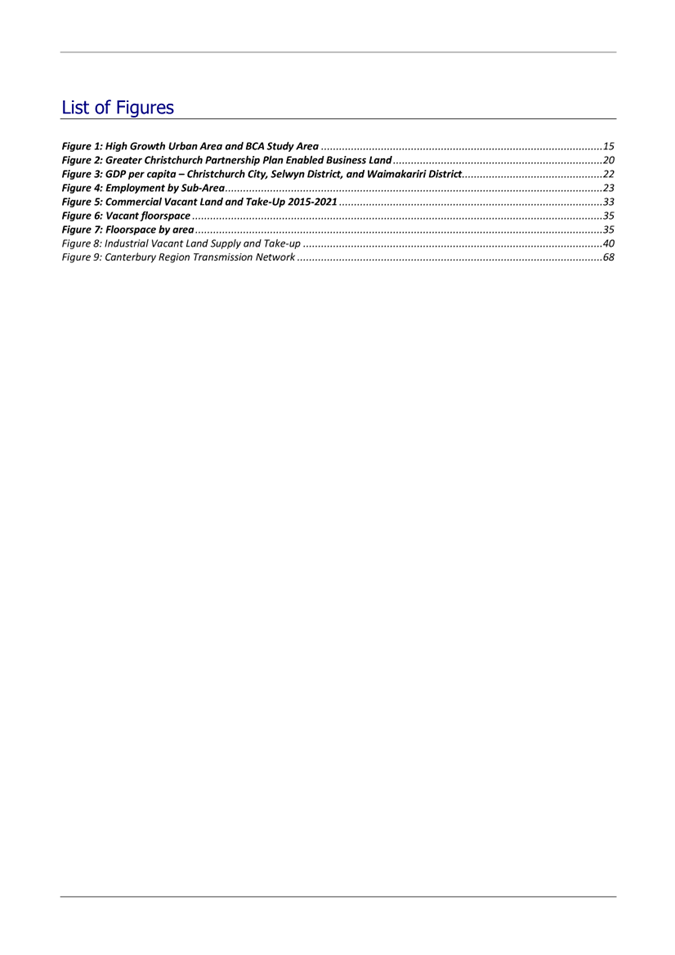
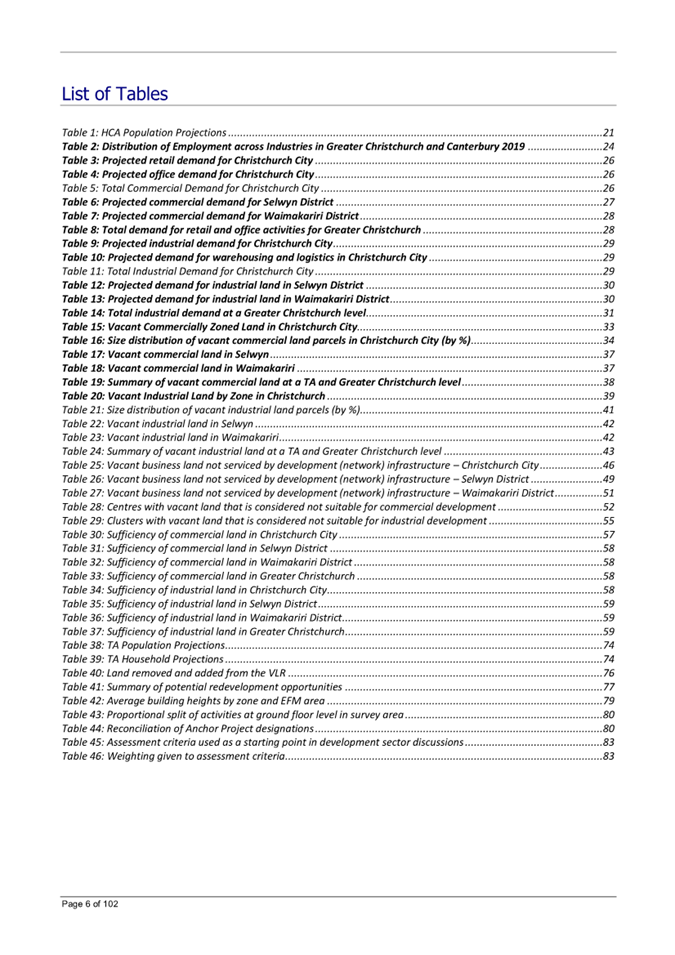
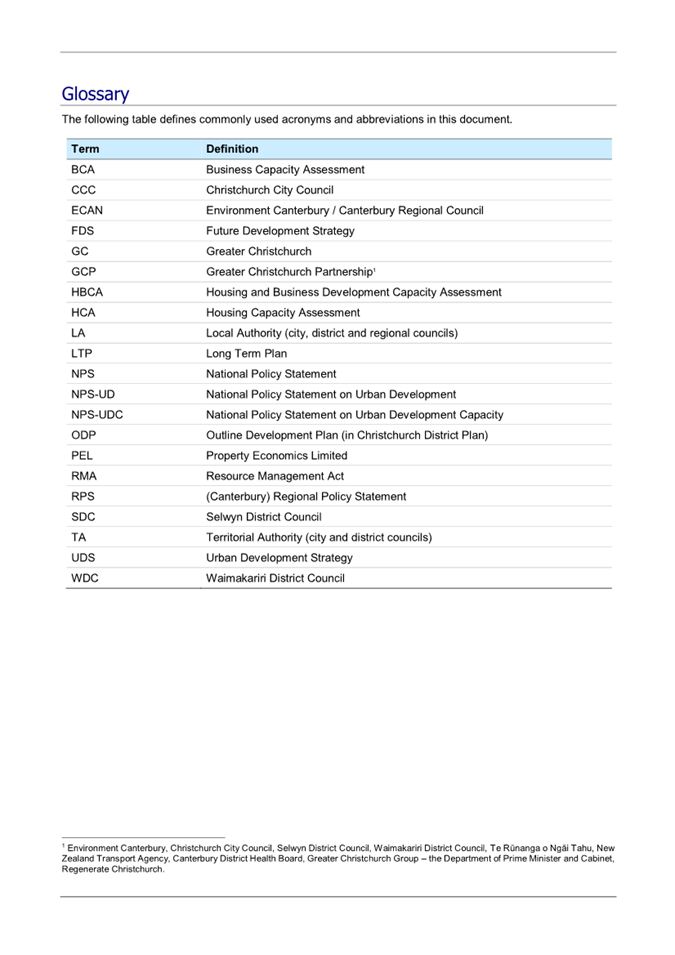
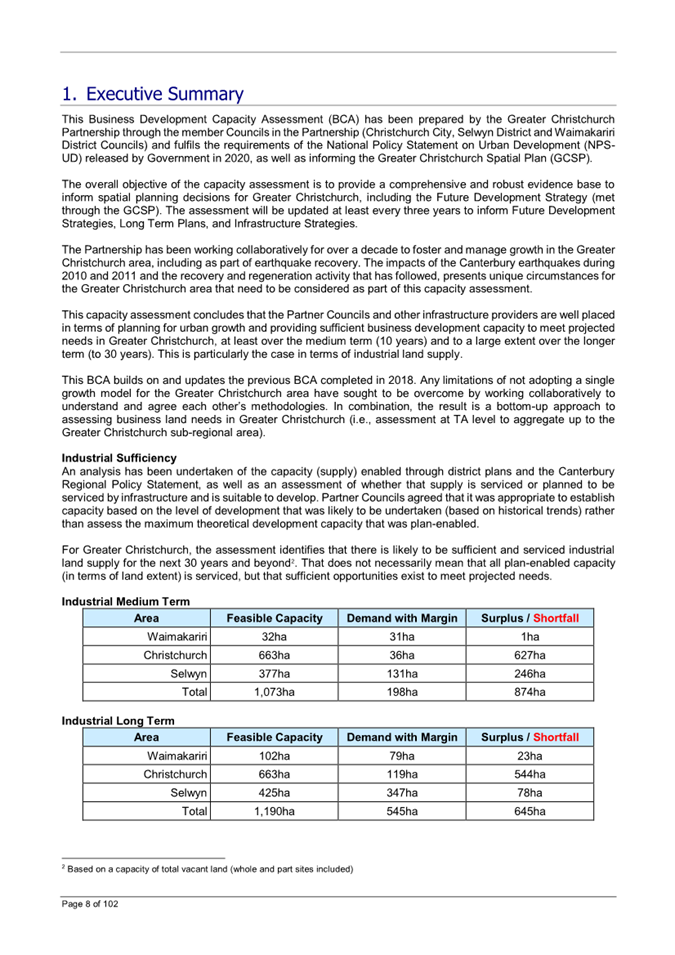
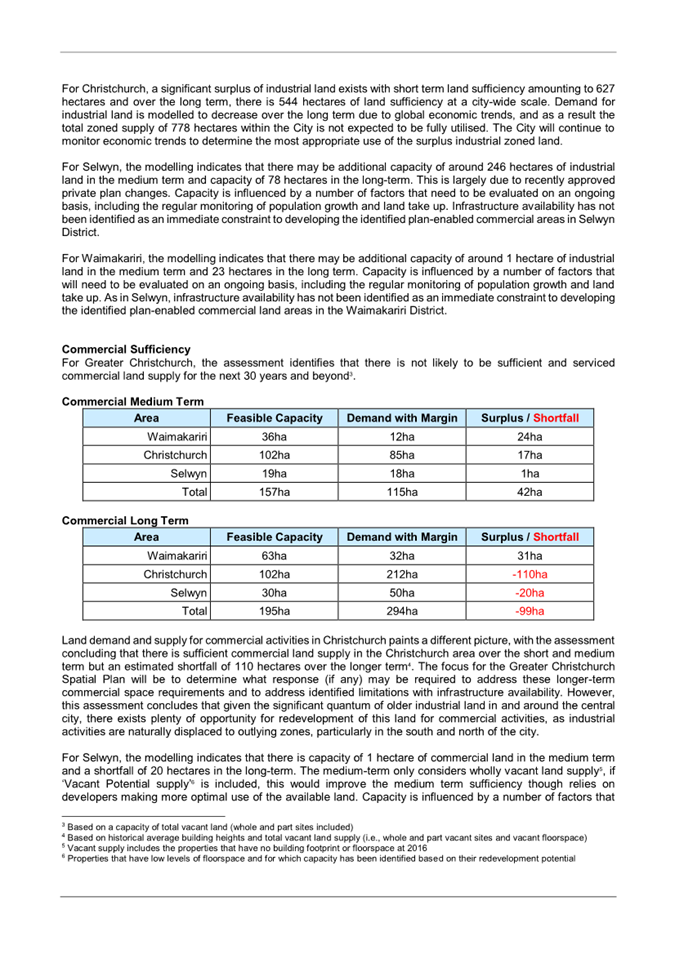
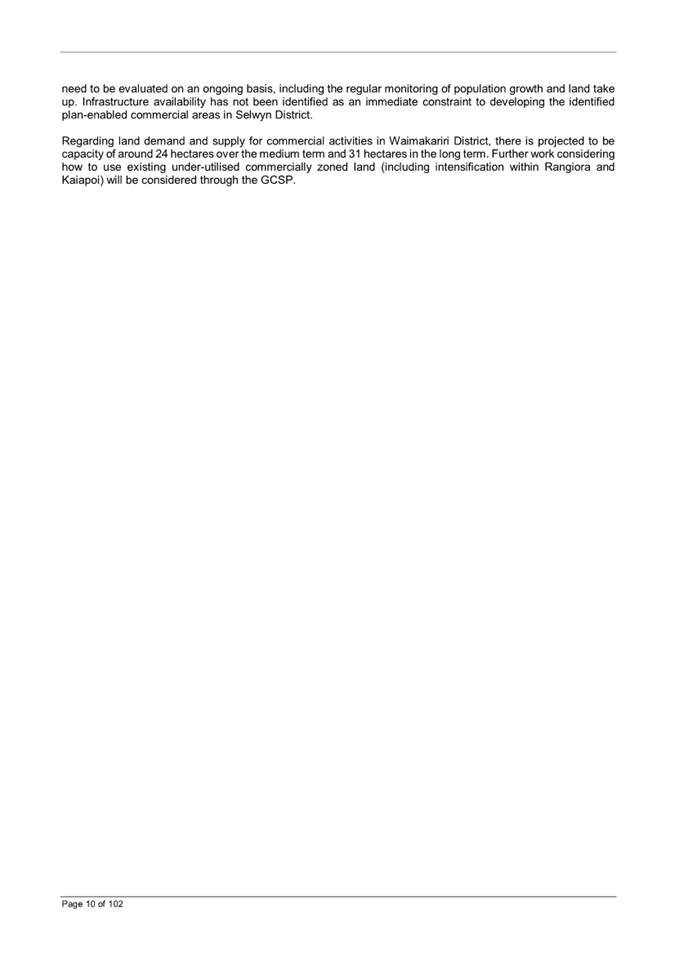
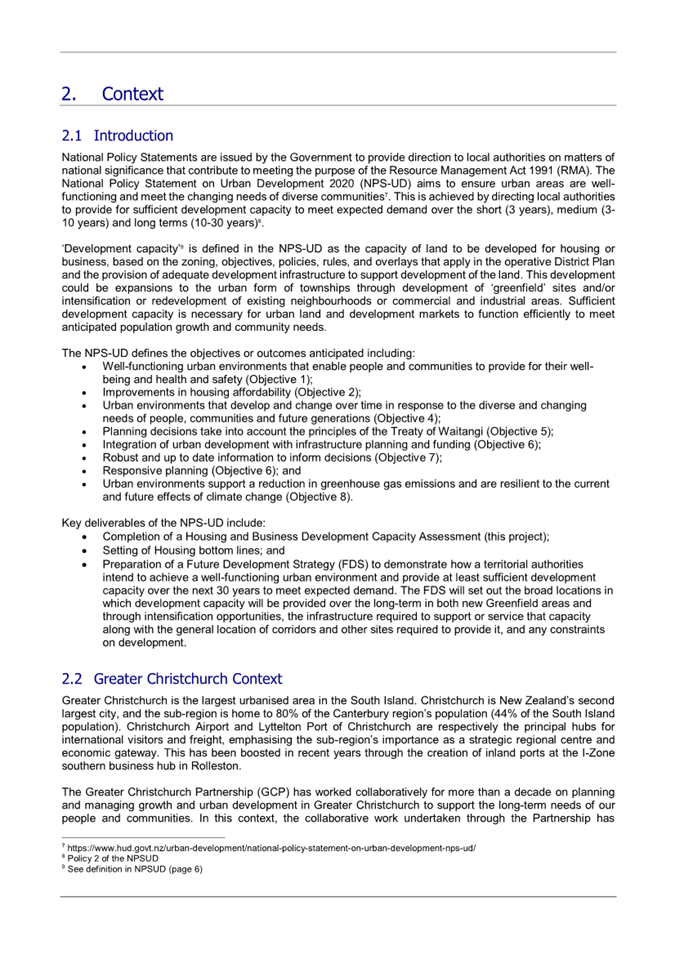
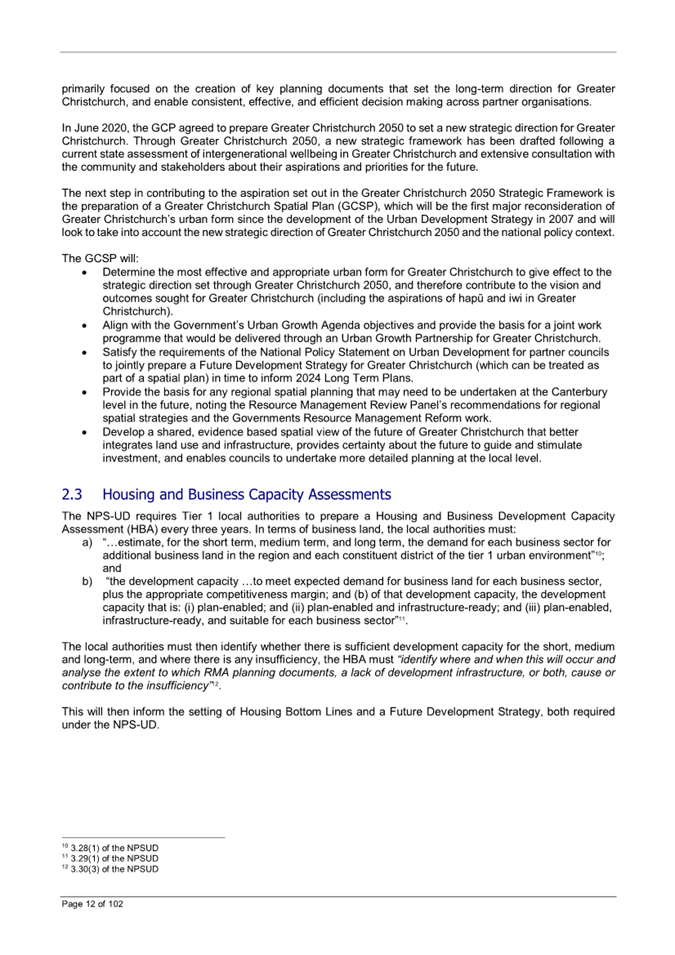
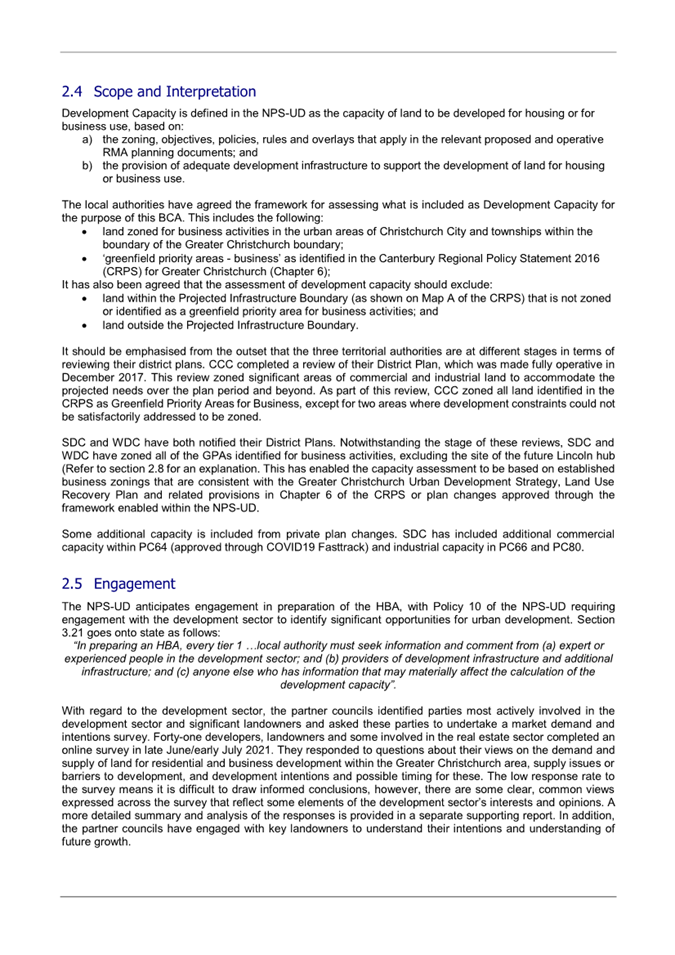
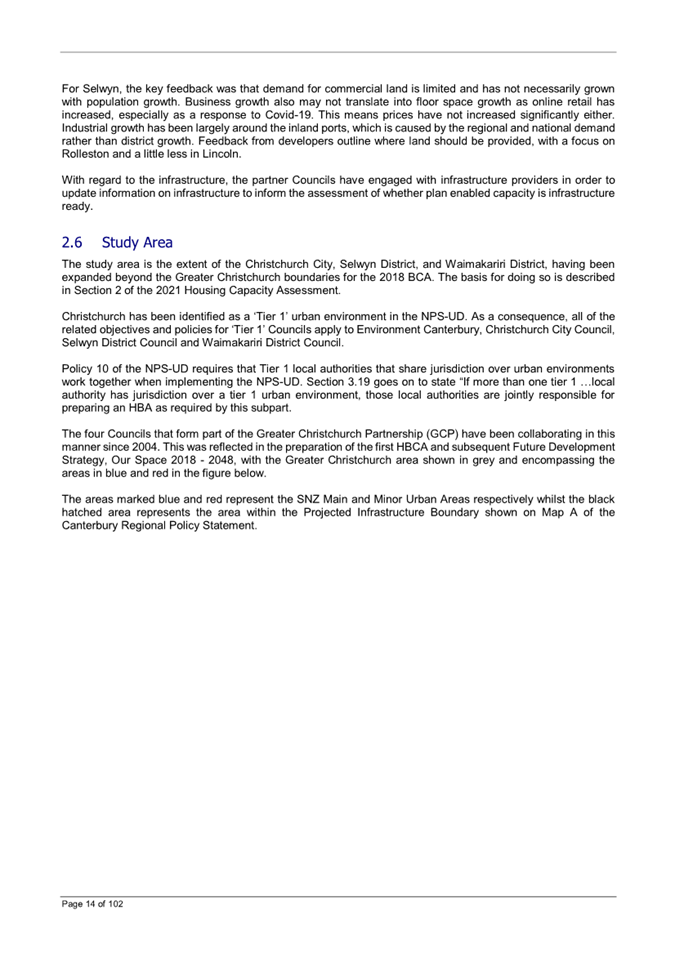
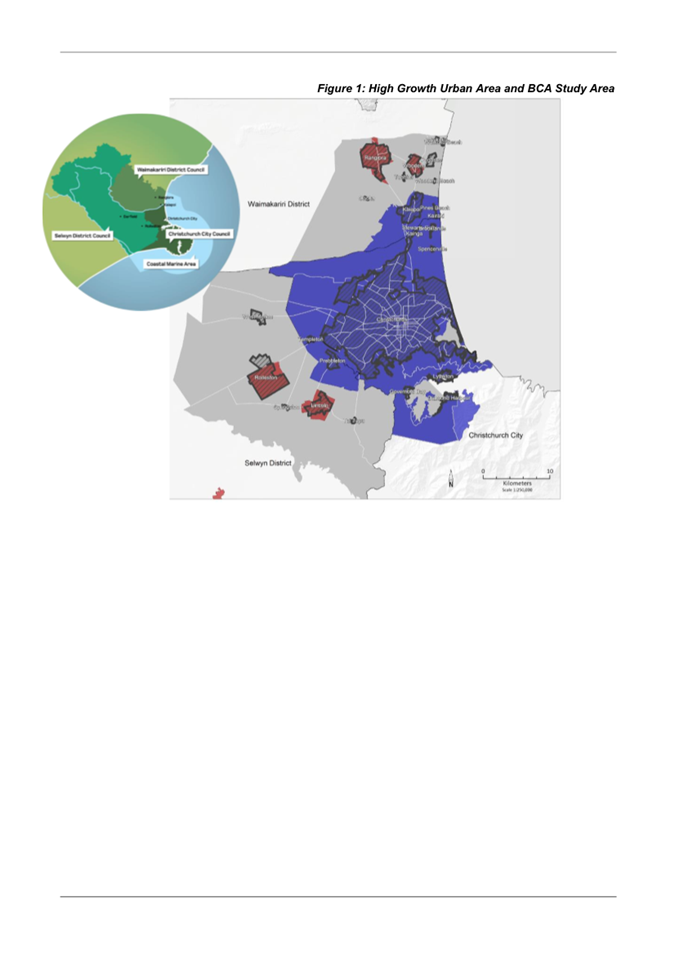
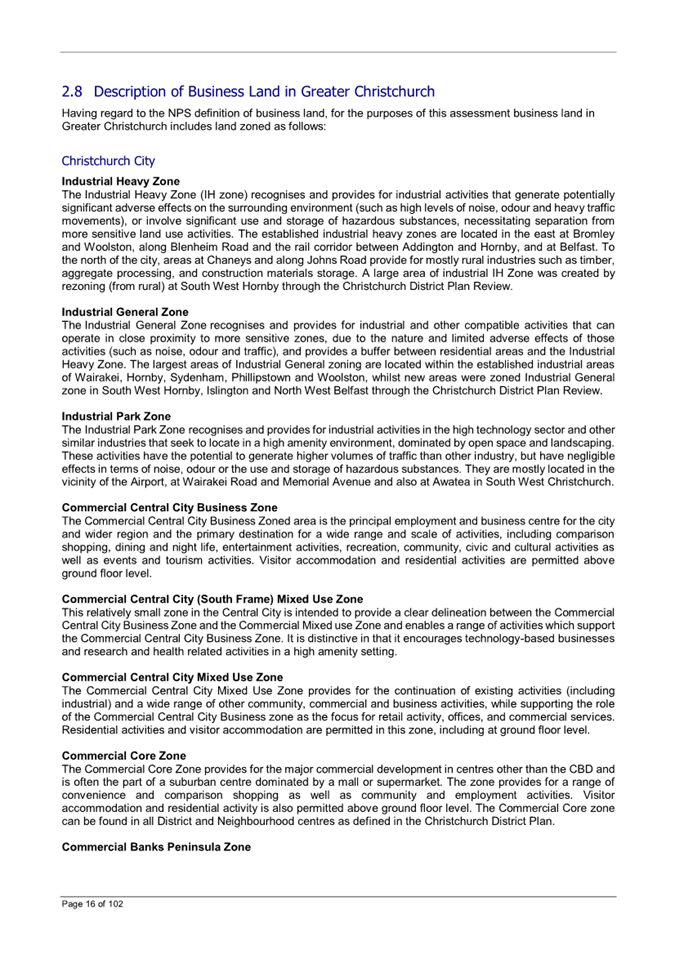
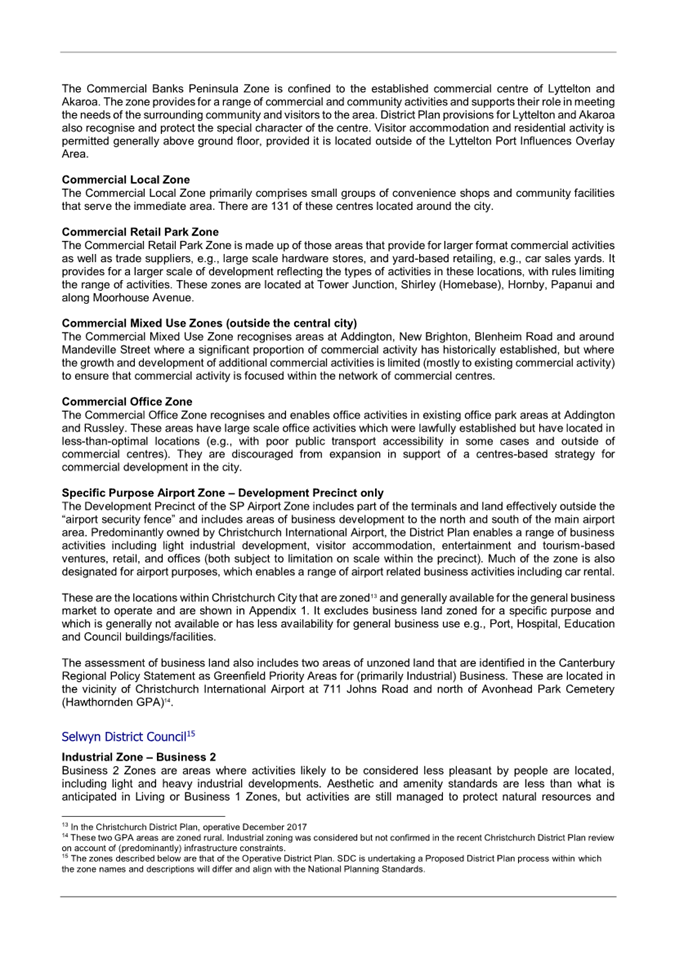
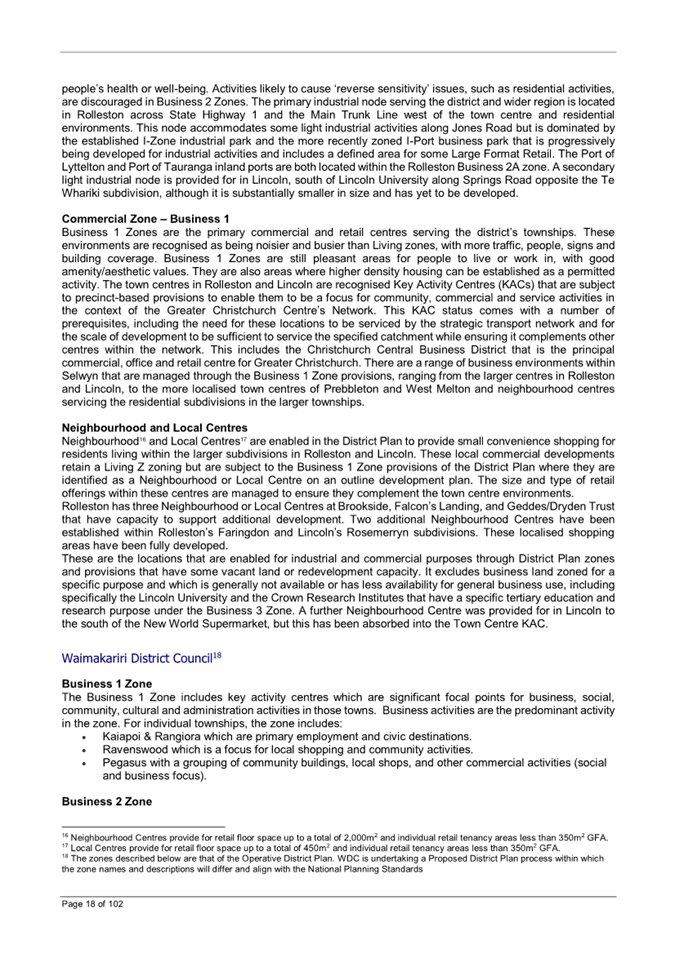
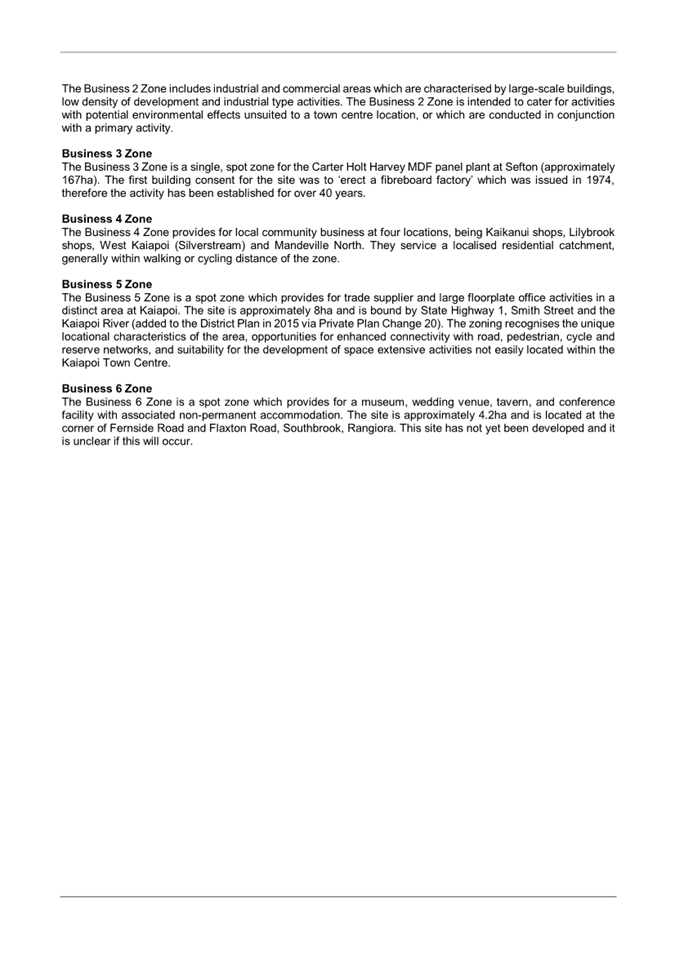
|
Whakawhanake Kāinga Komiti
12 May 2023
|
|
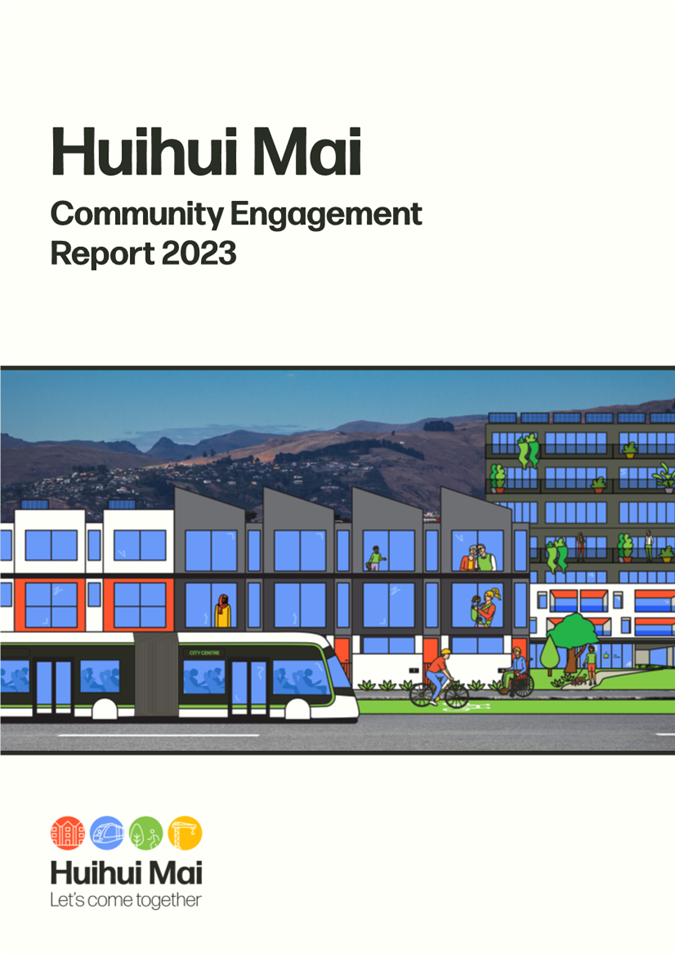
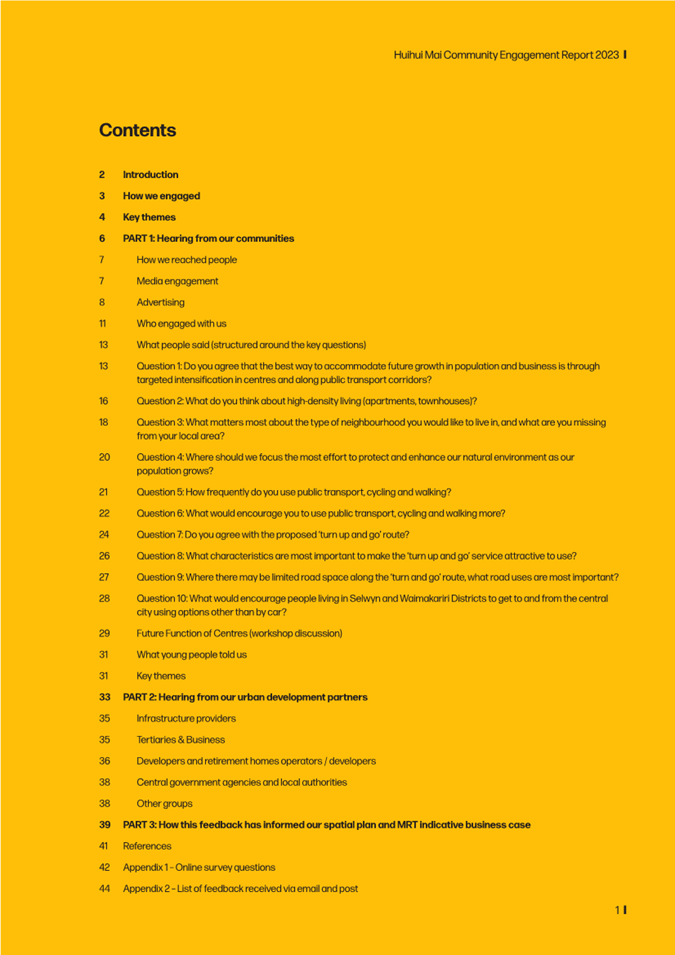
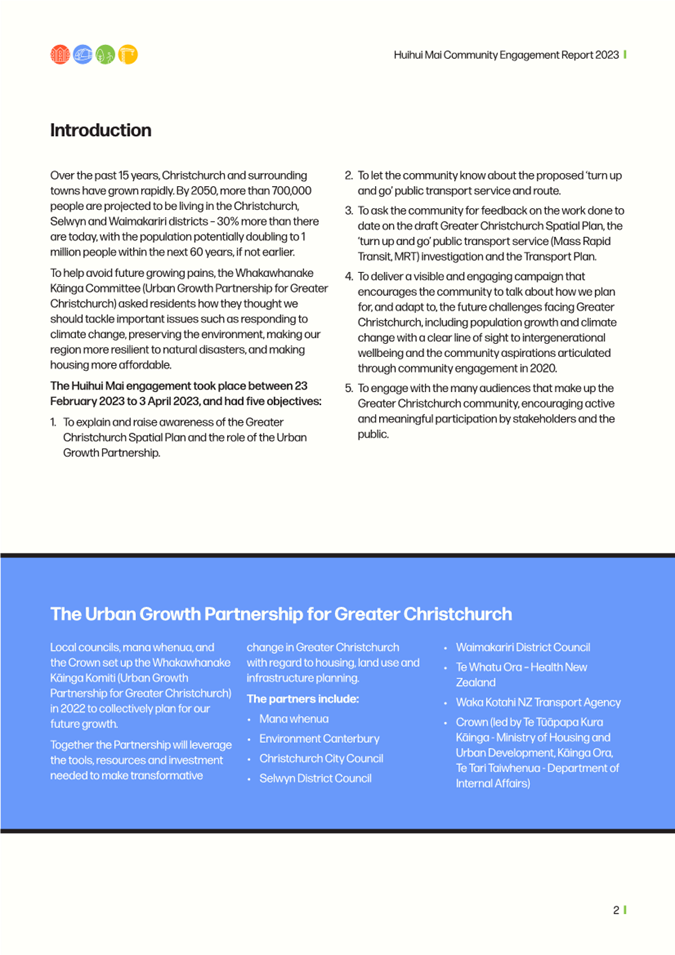
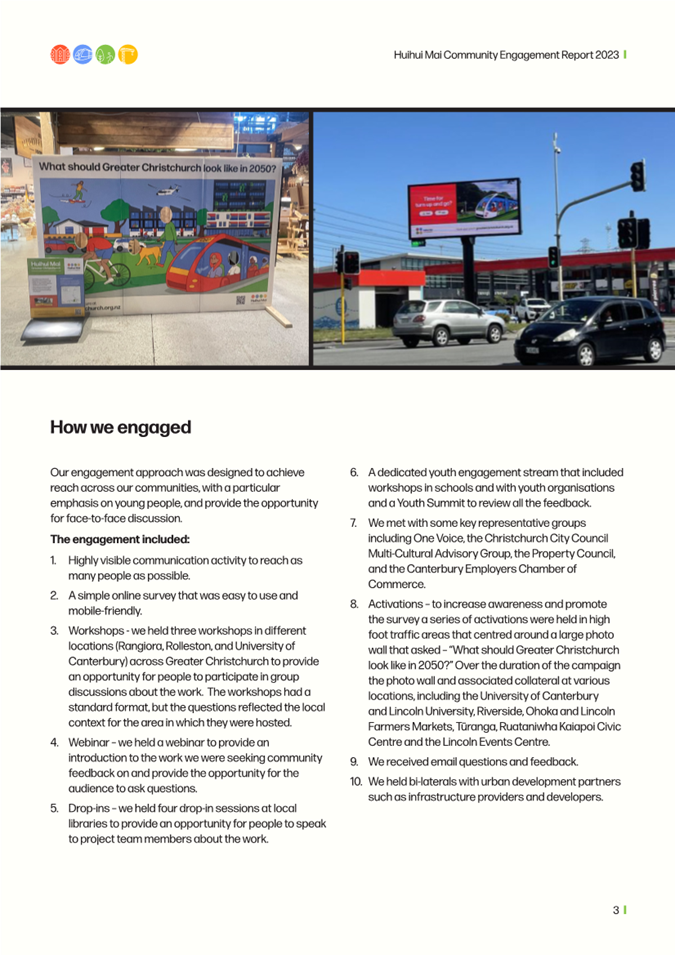
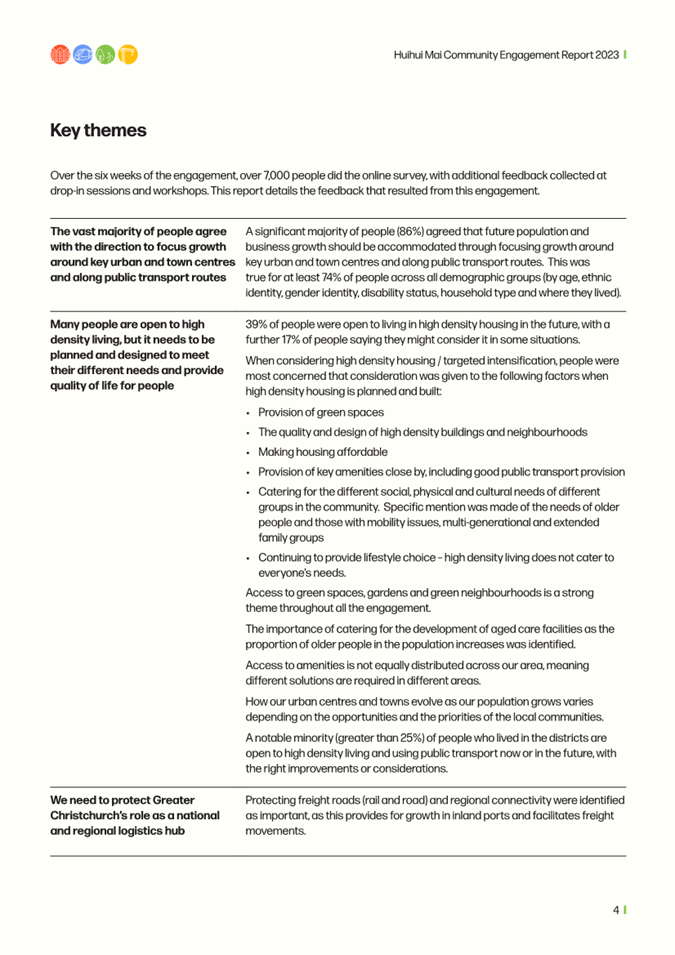
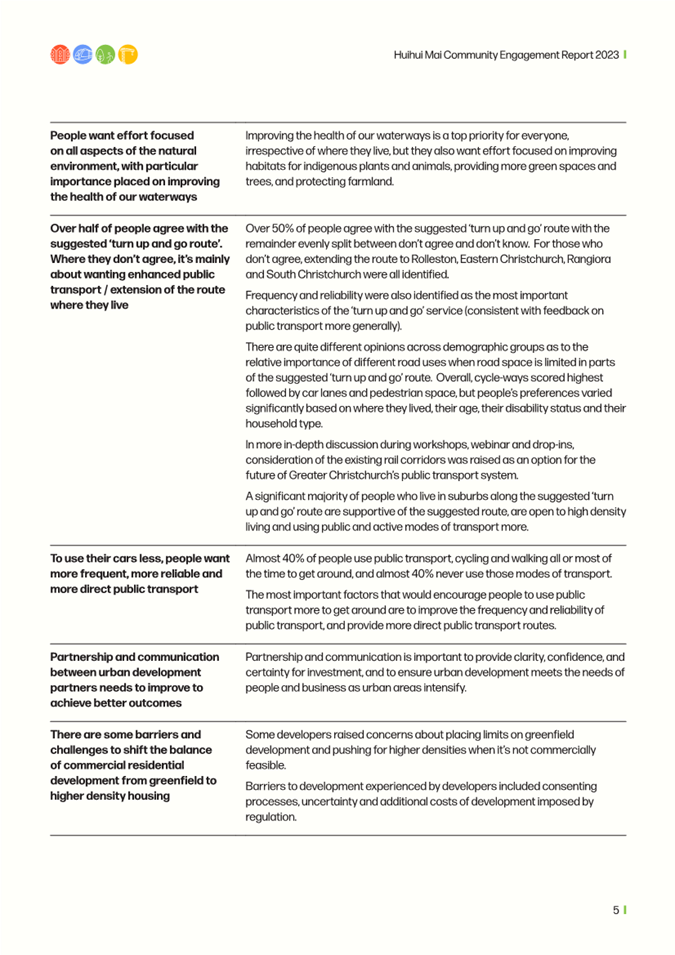

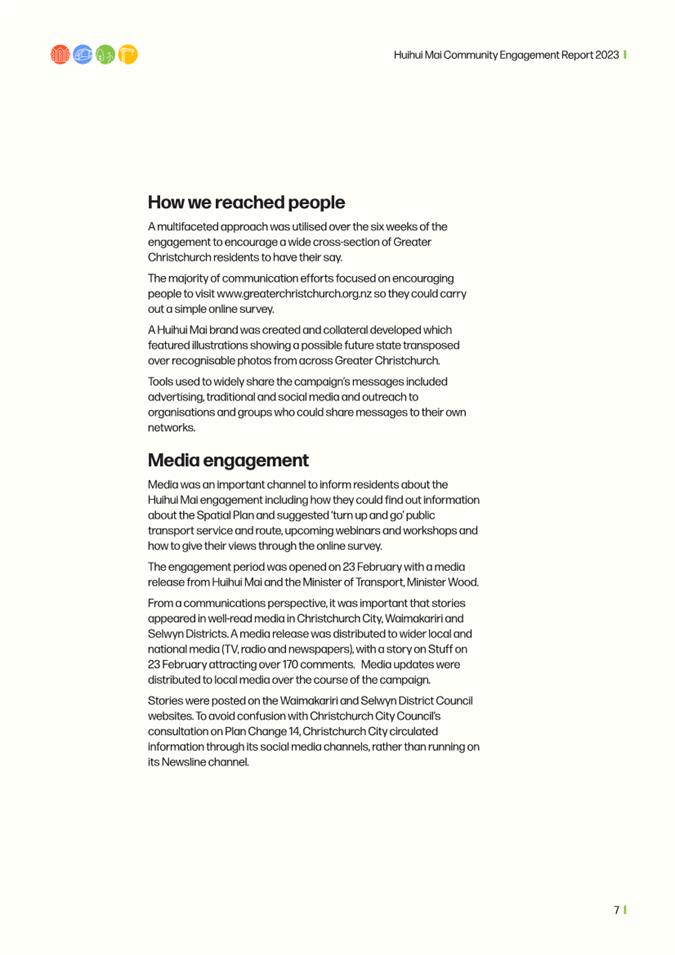
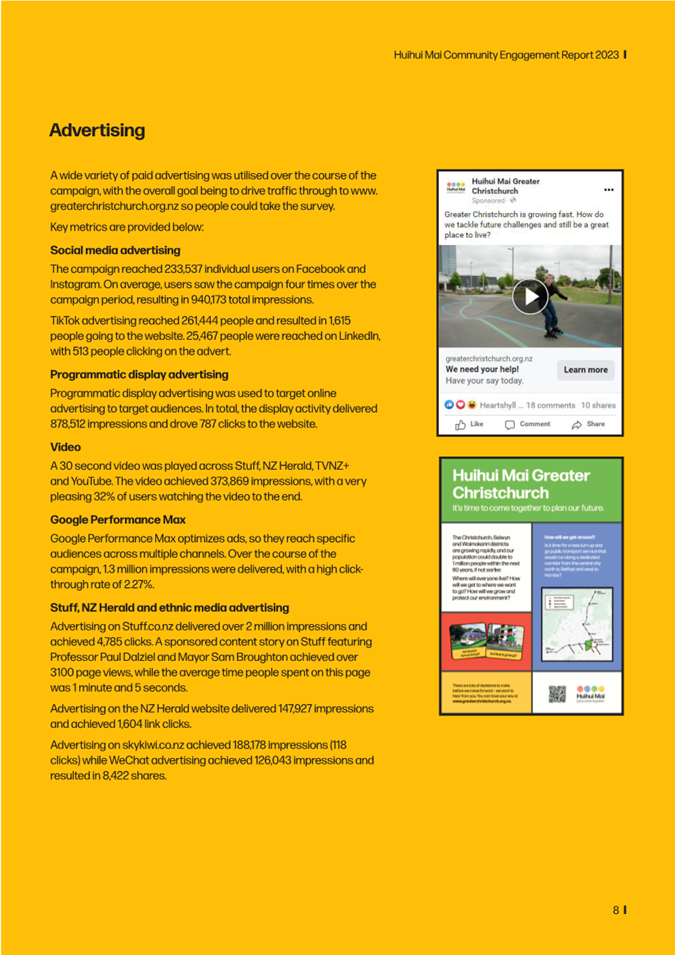
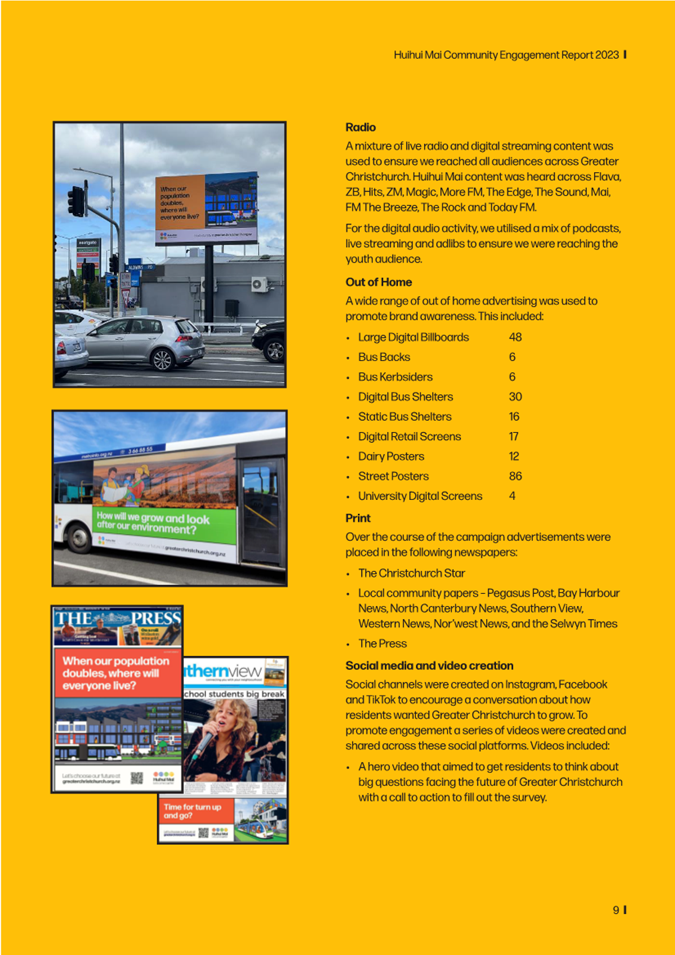
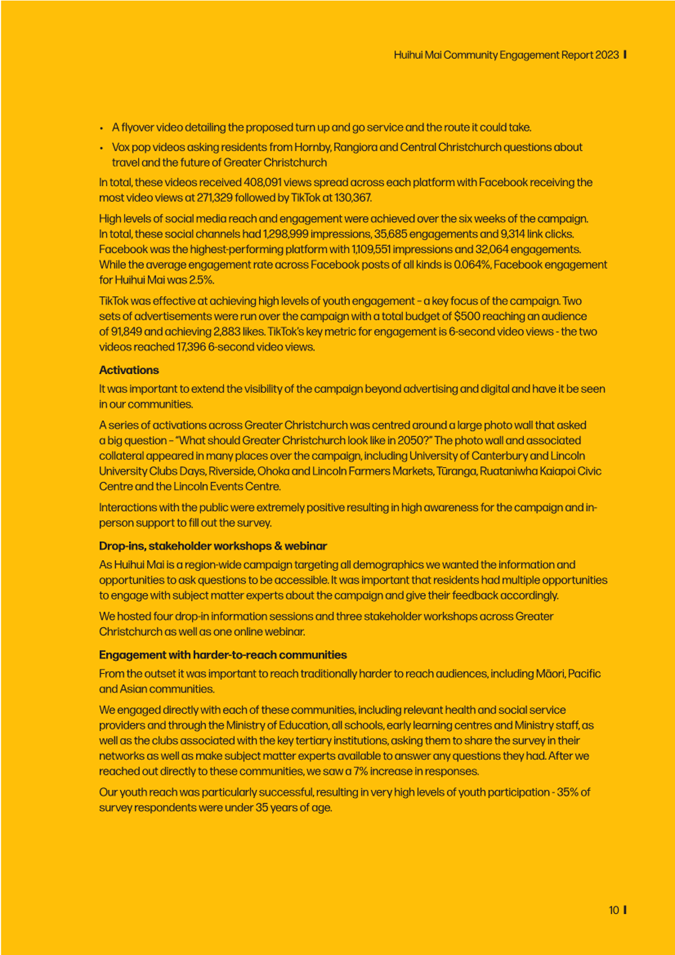
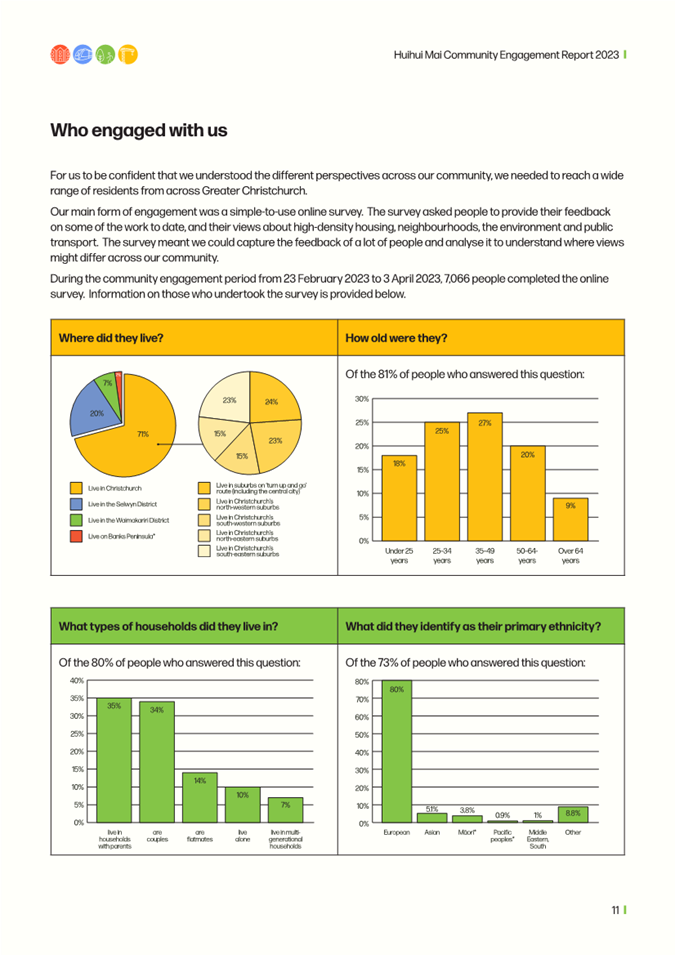
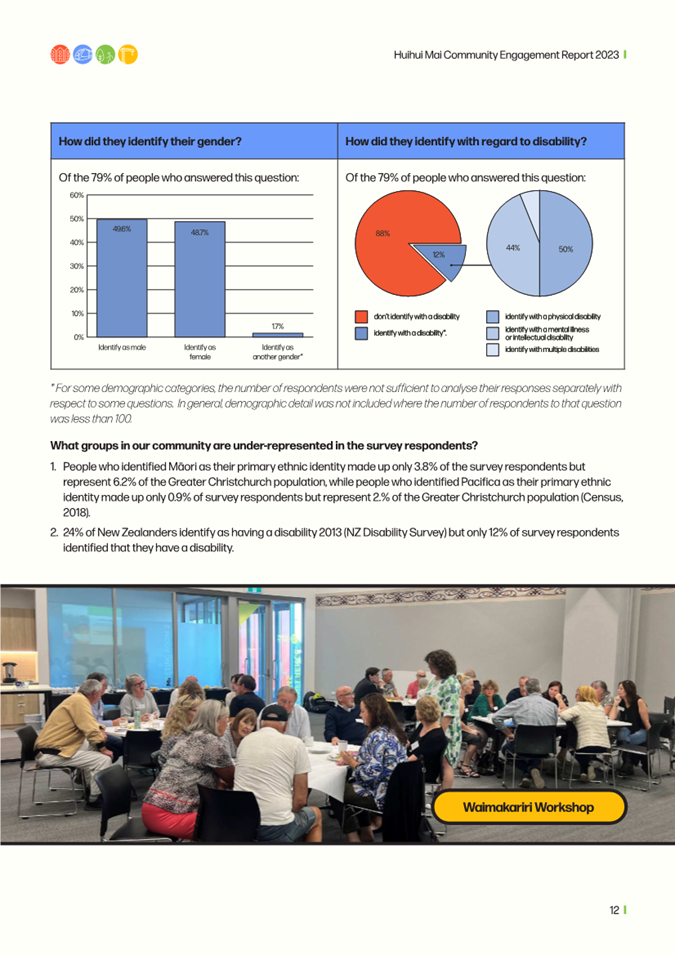
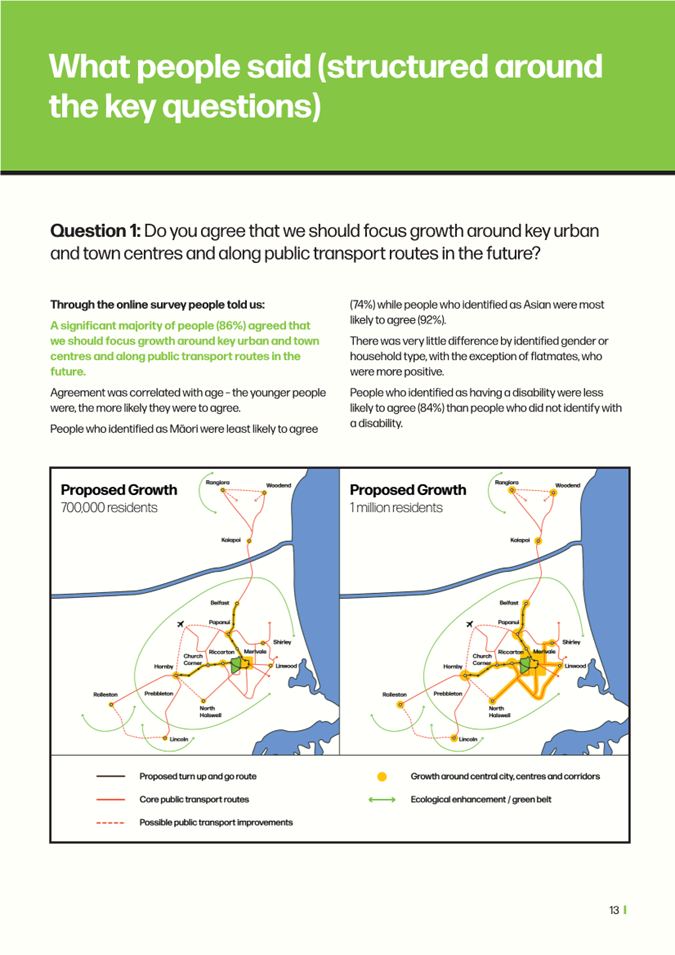
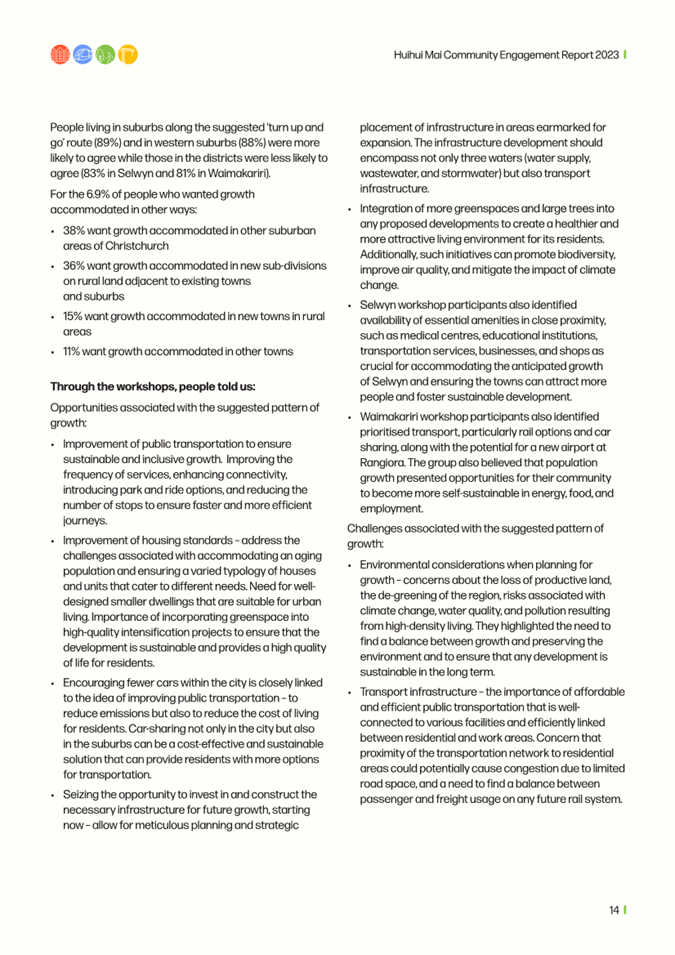
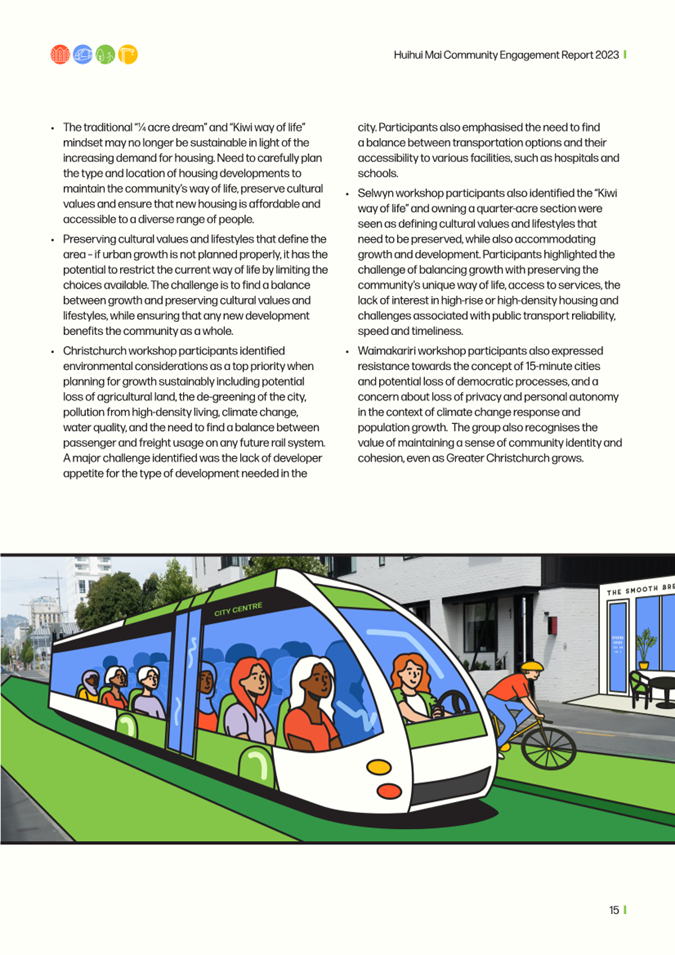

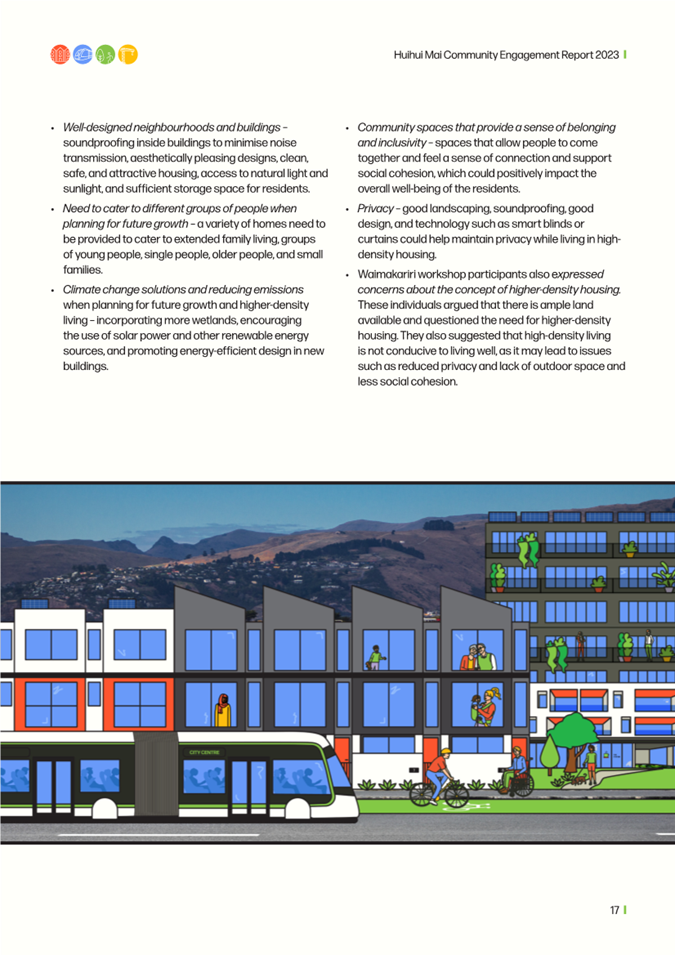
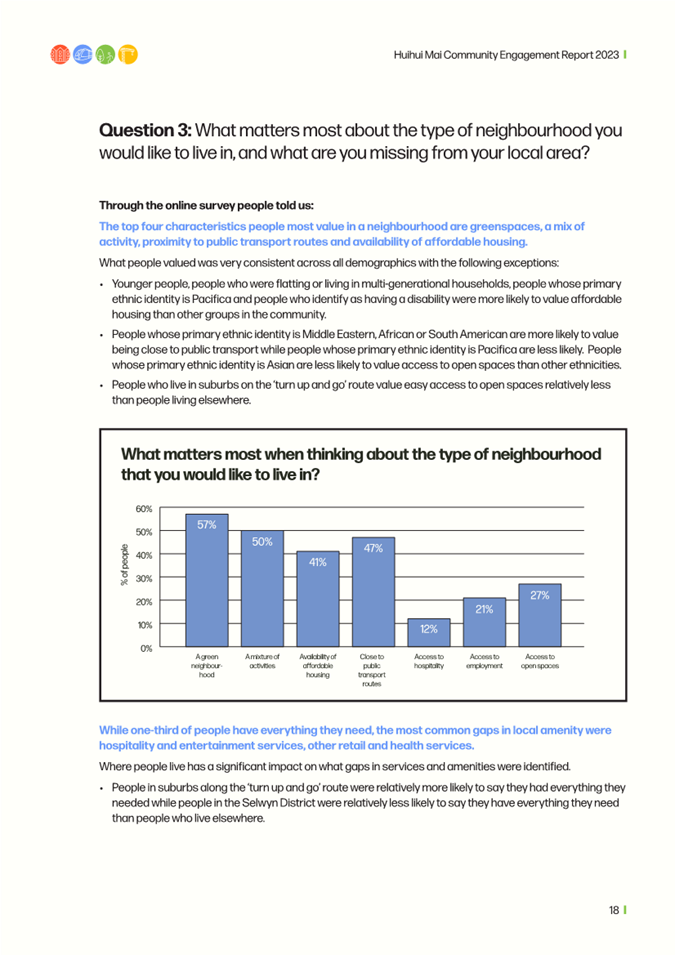
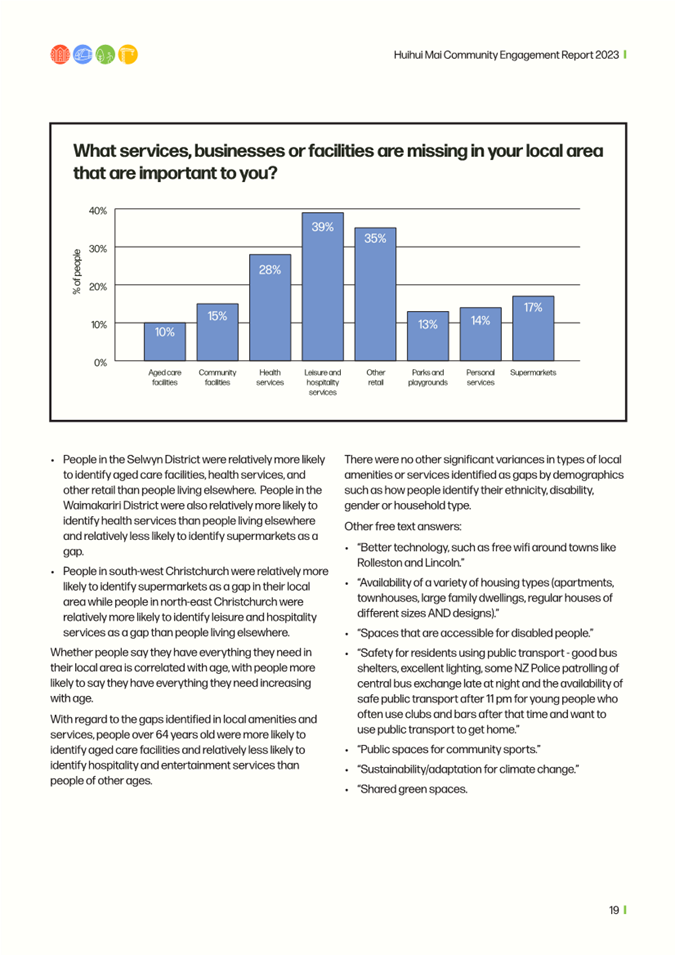
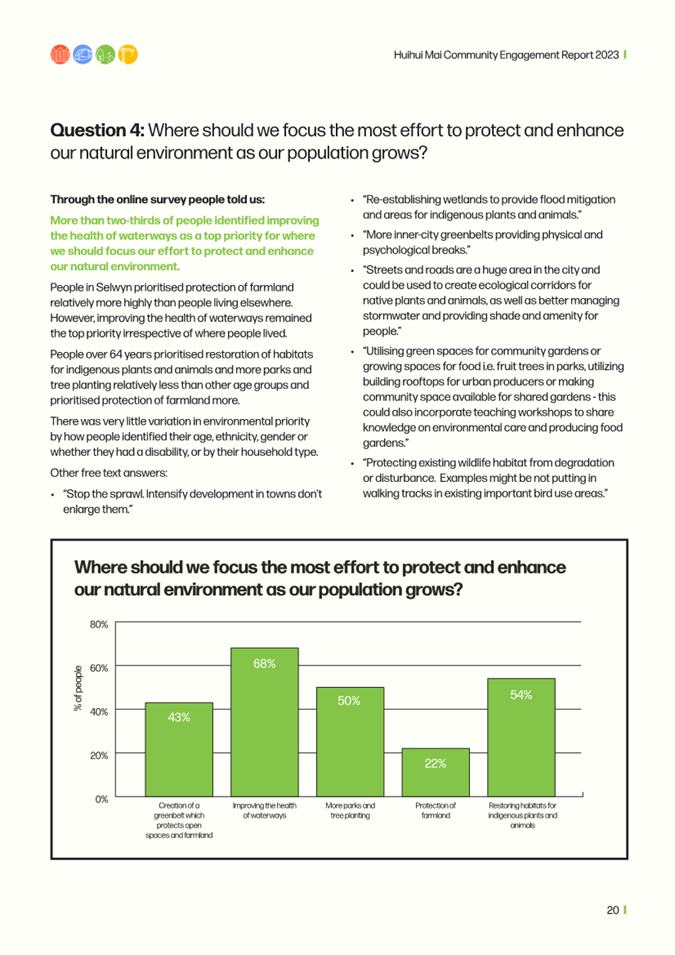
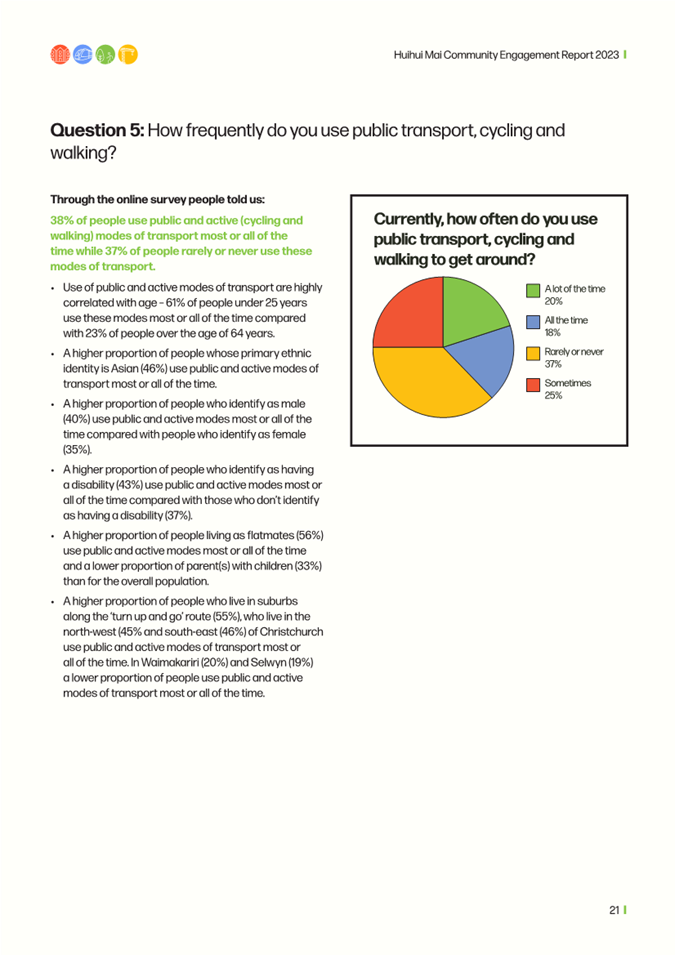
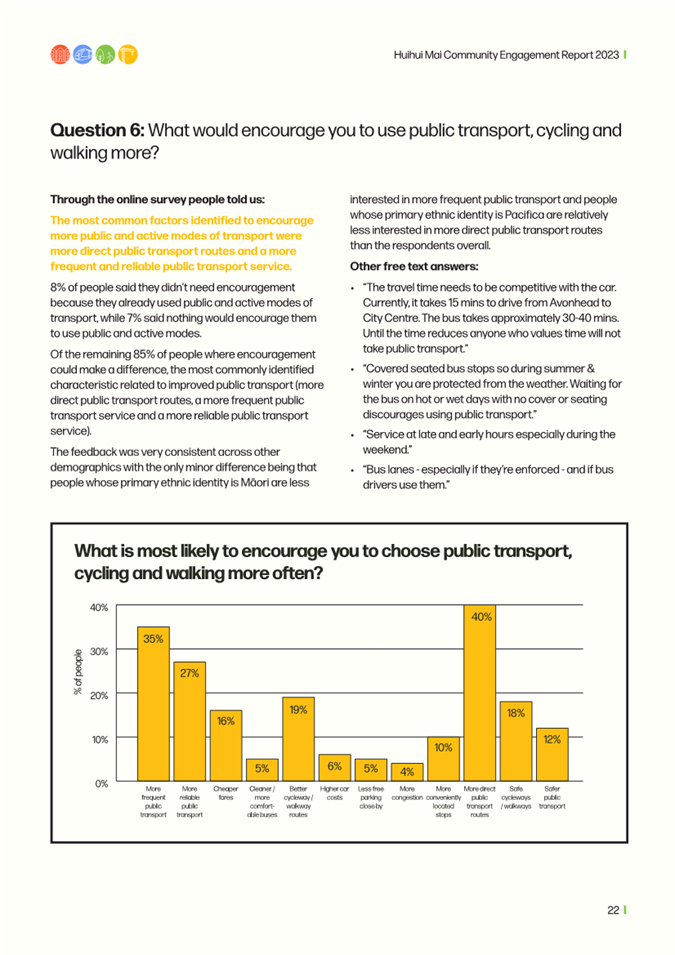
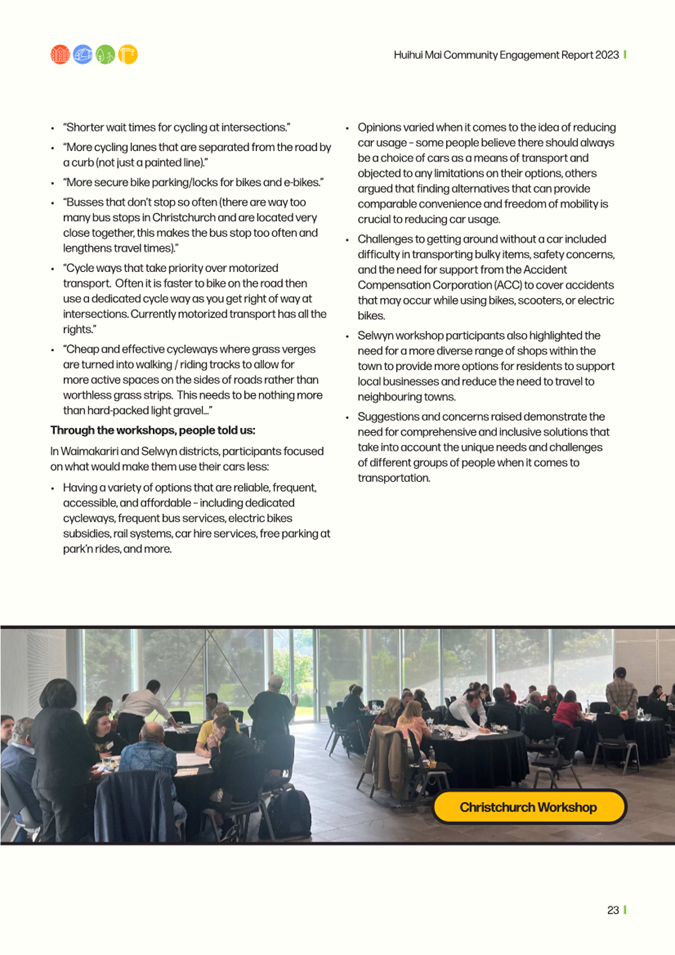
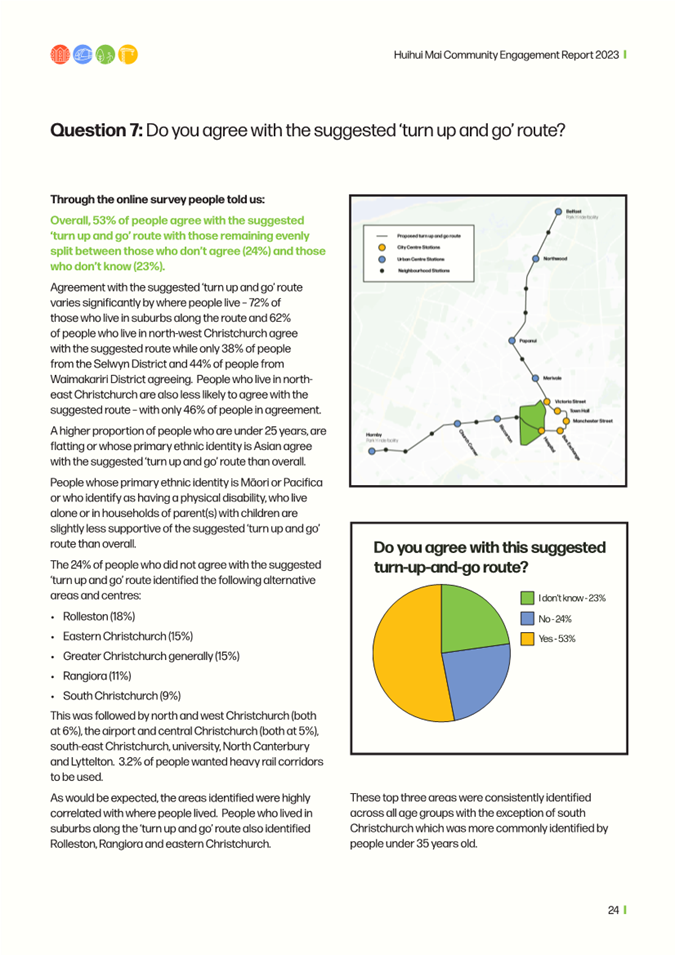
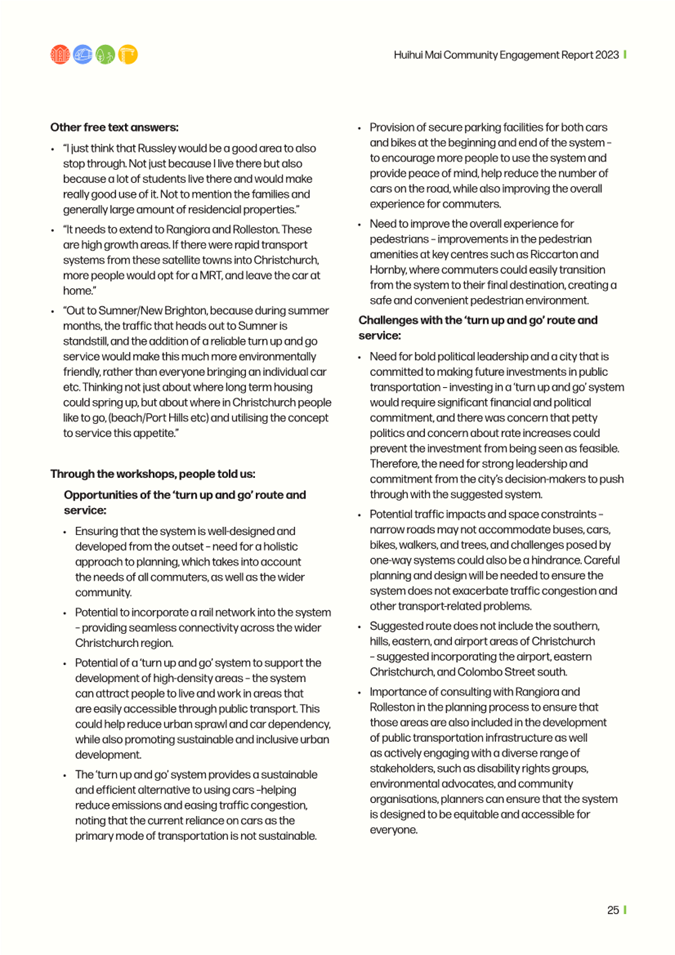
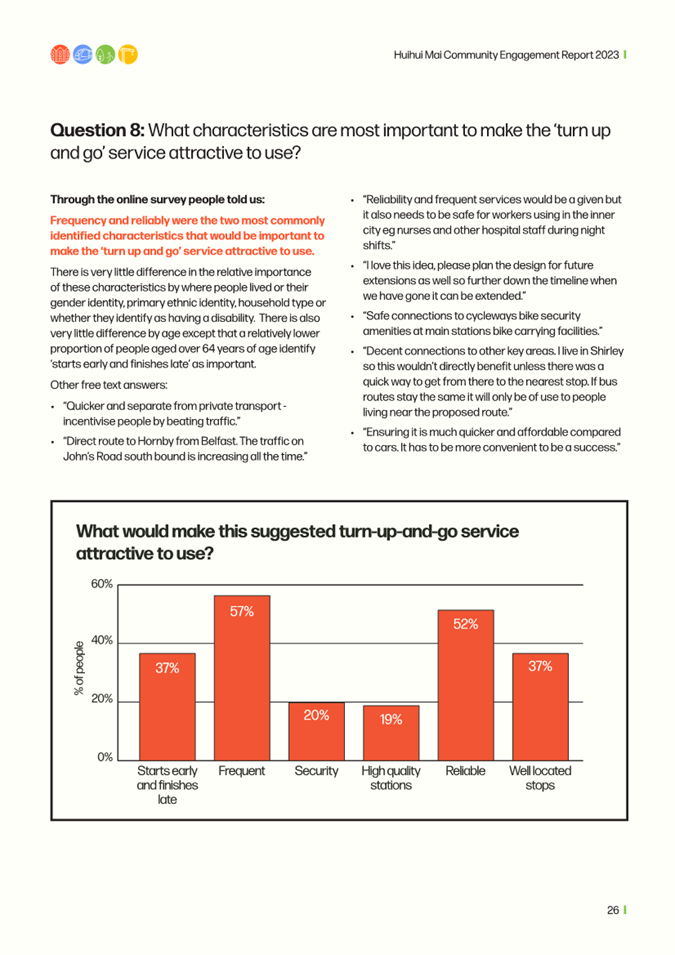
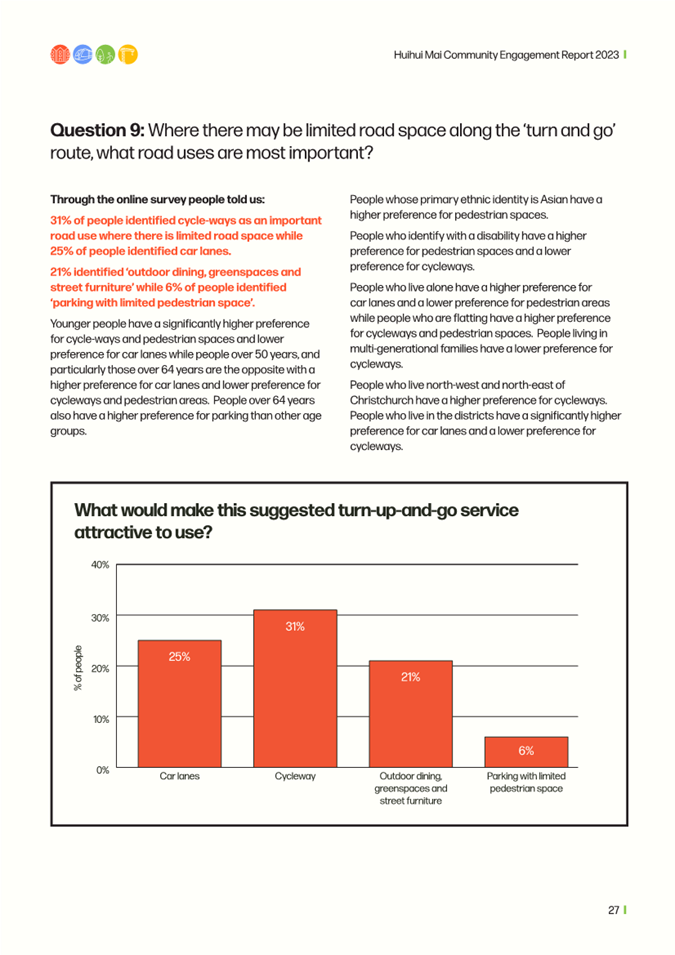
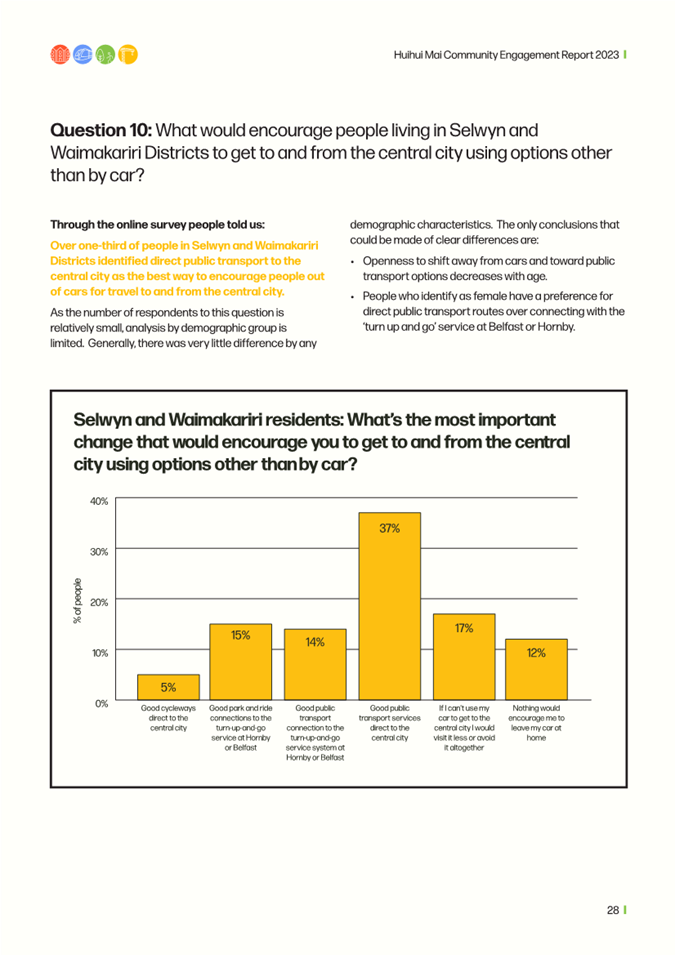
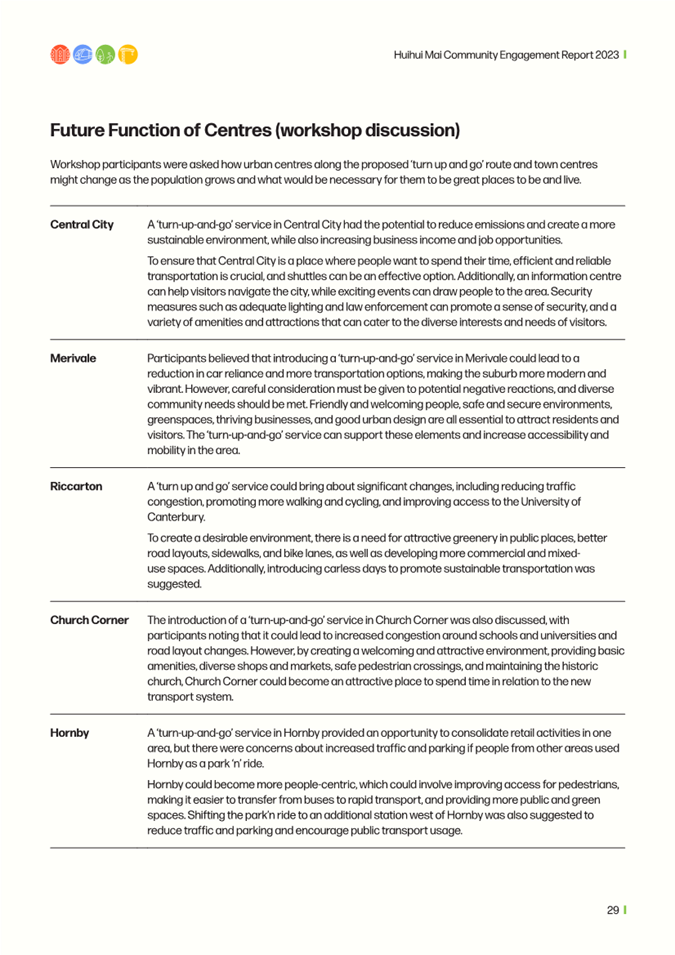
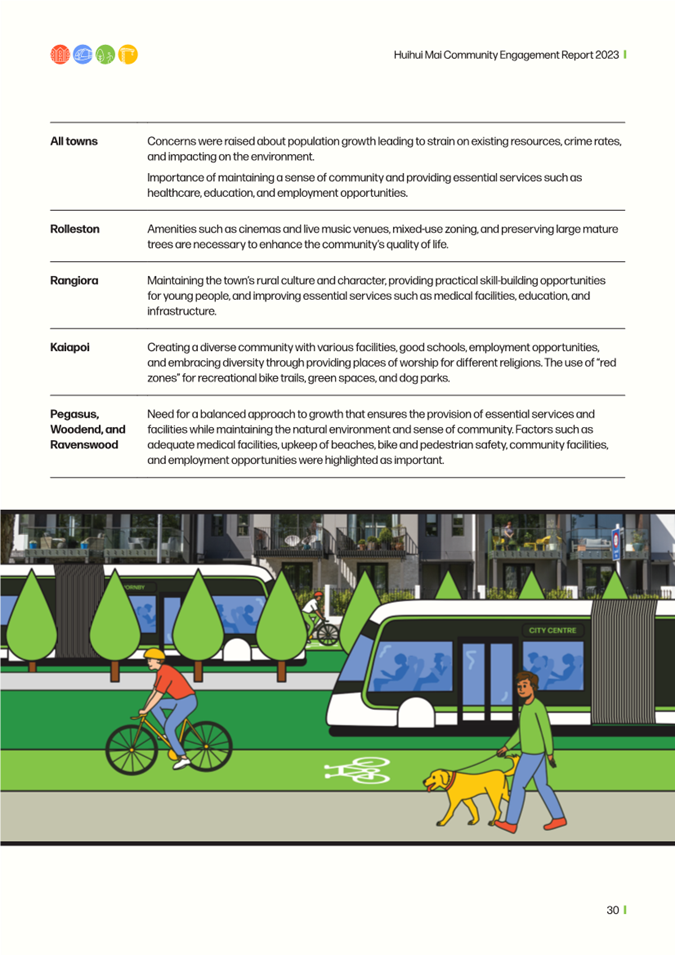
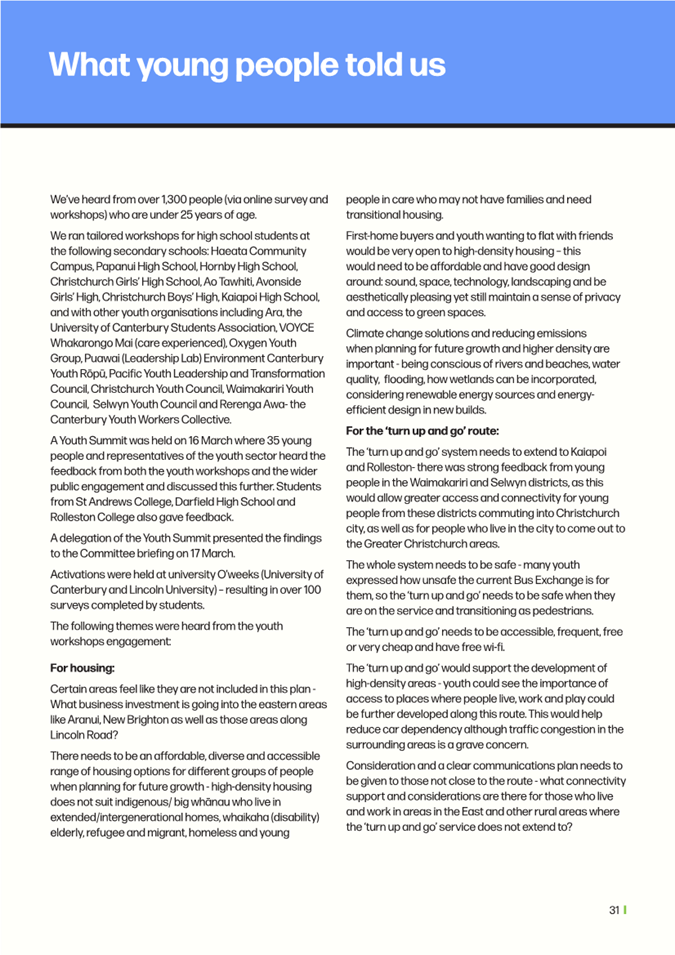
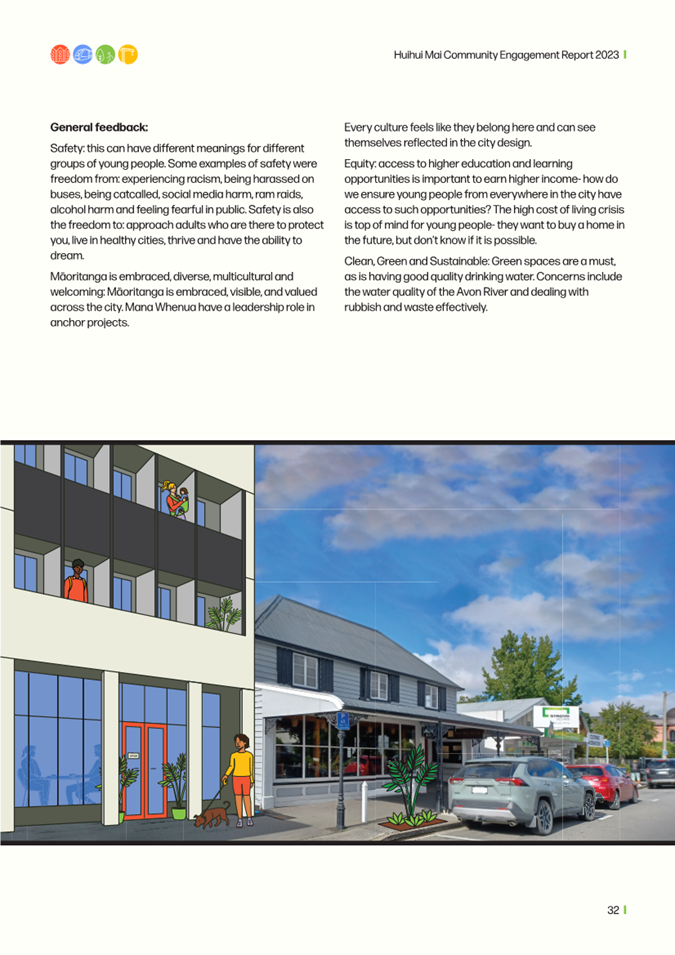
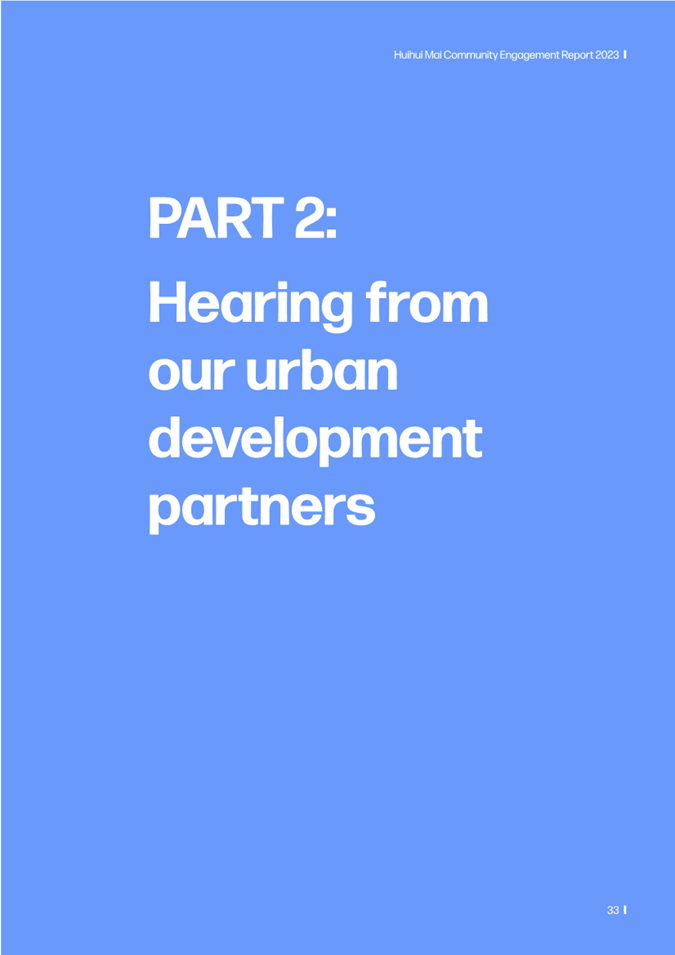
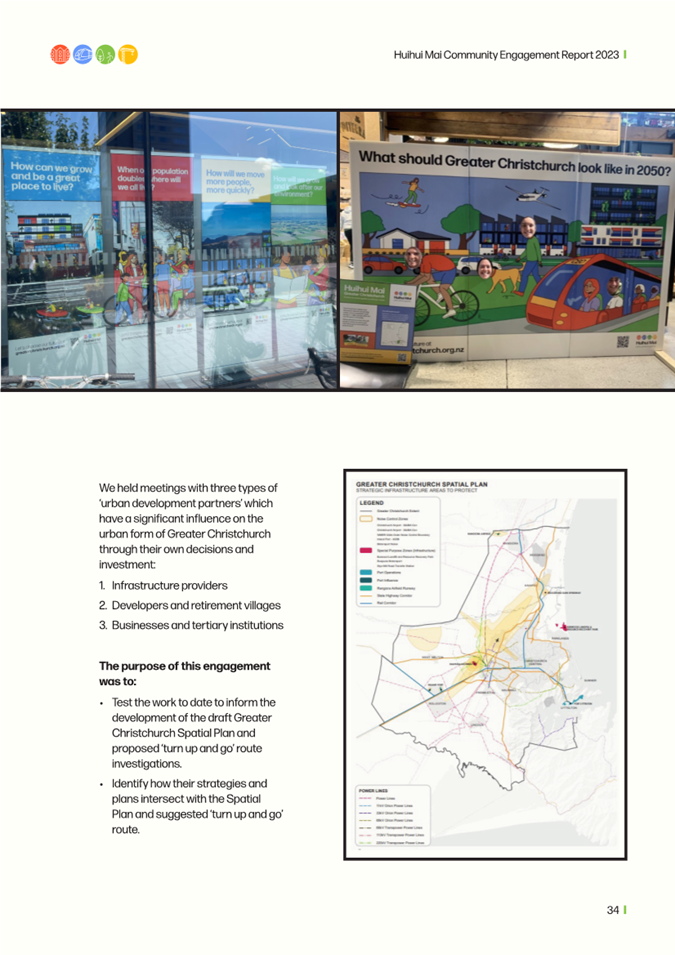
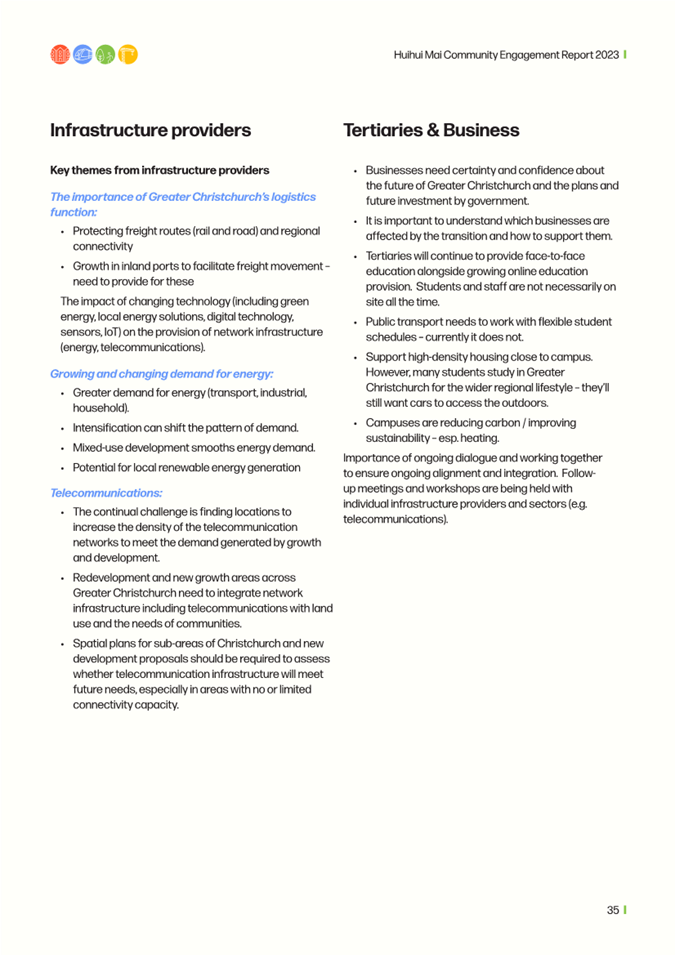
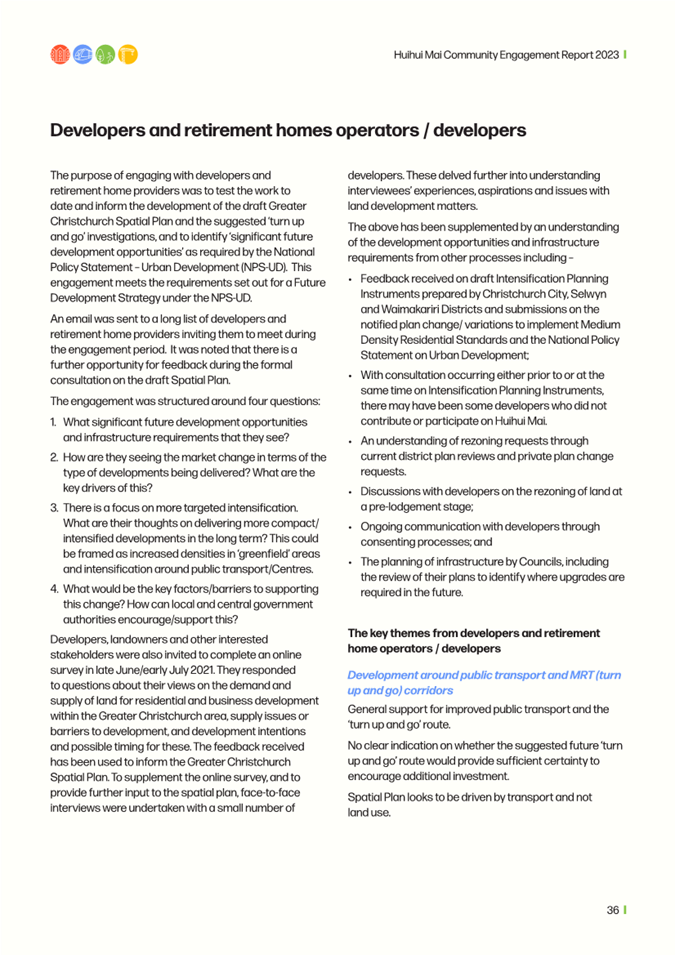
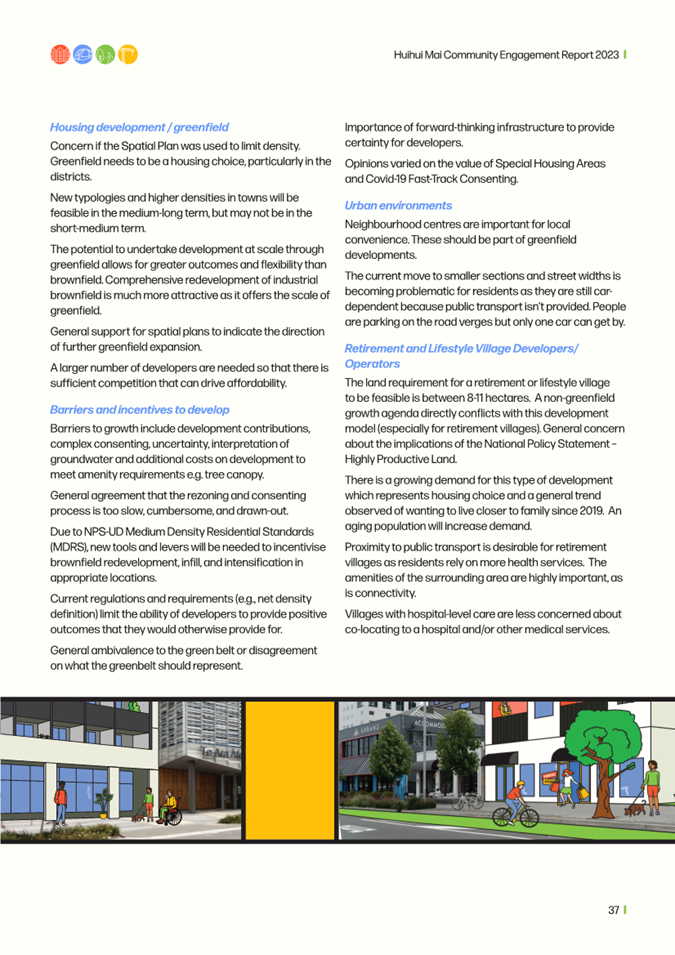
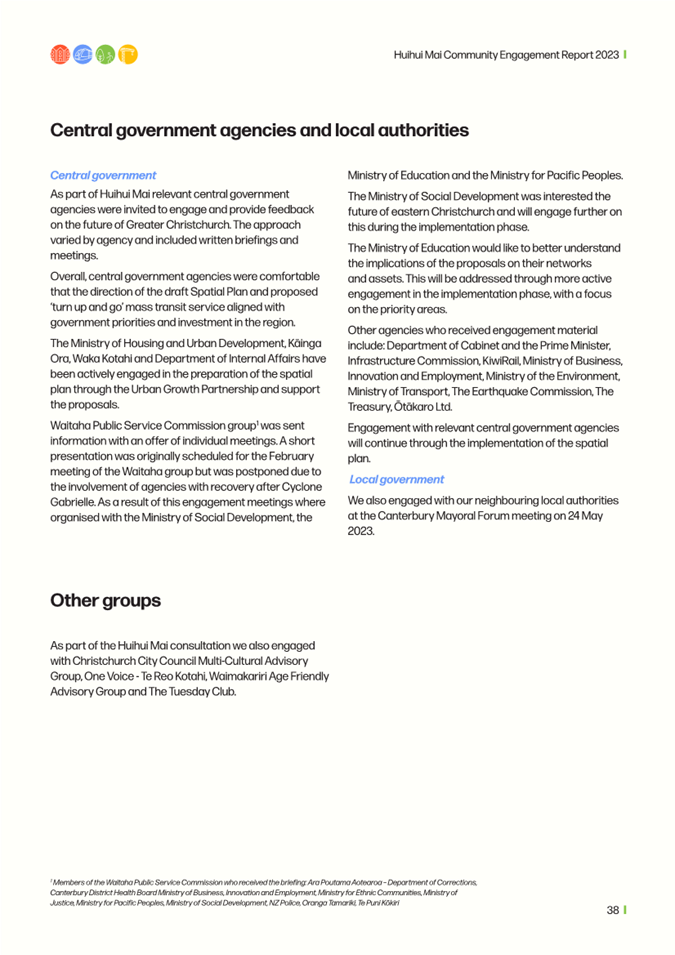
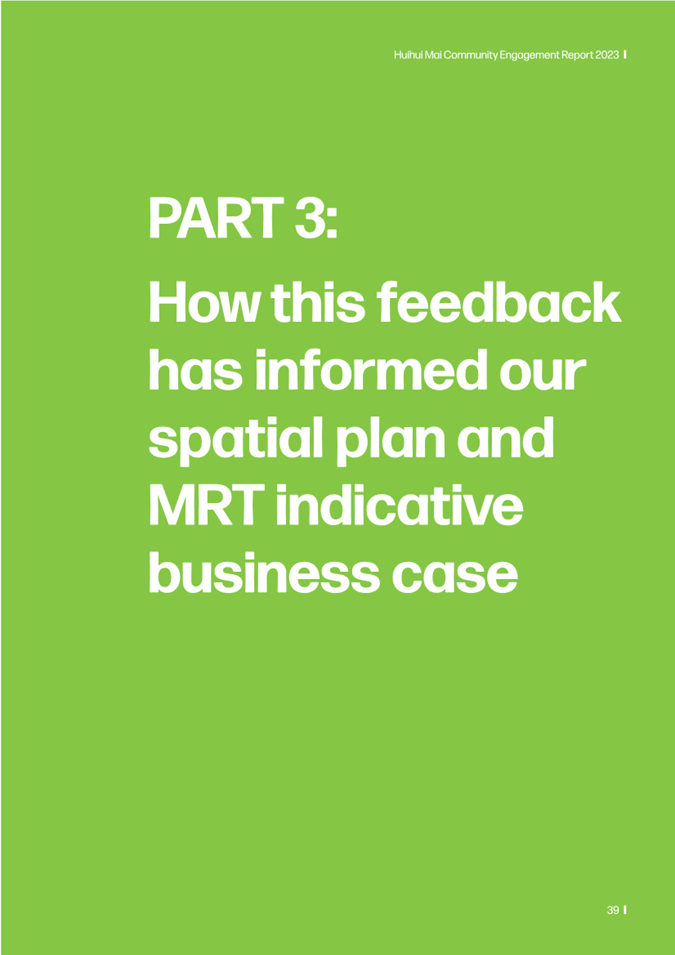
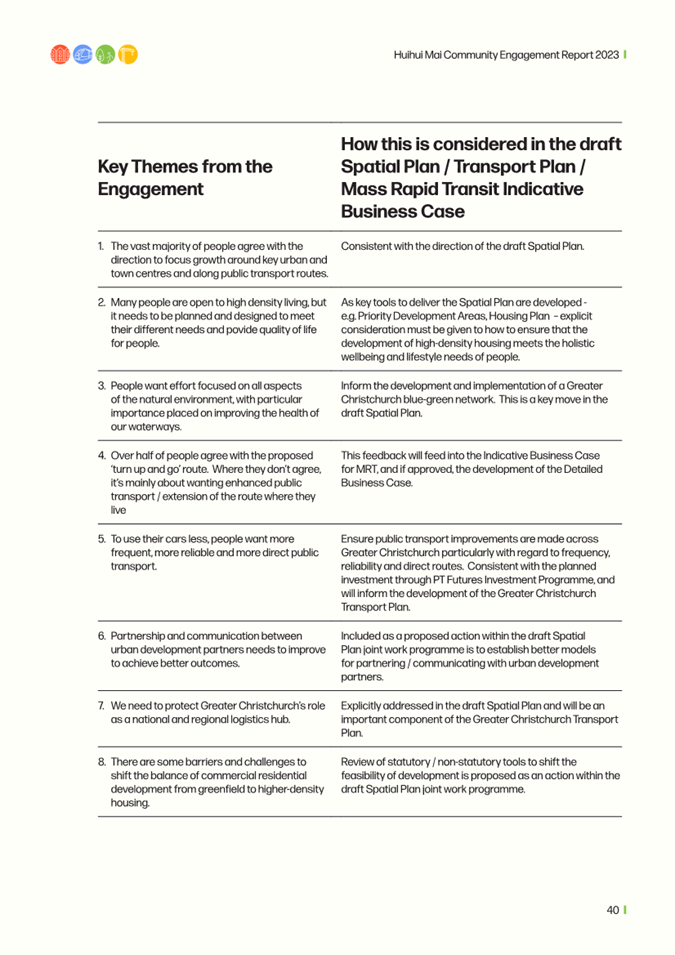
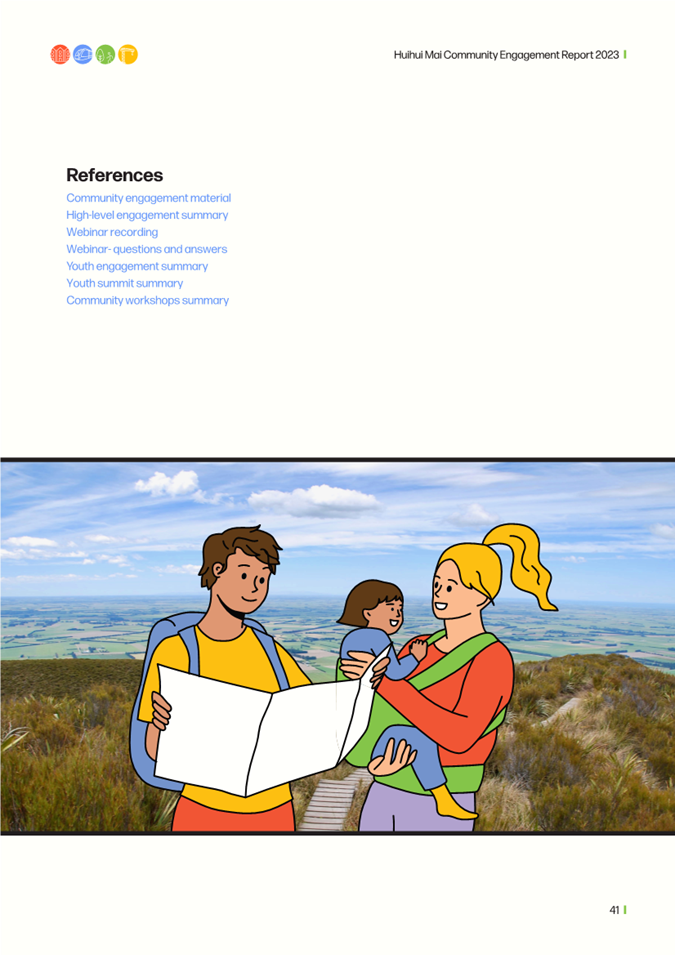
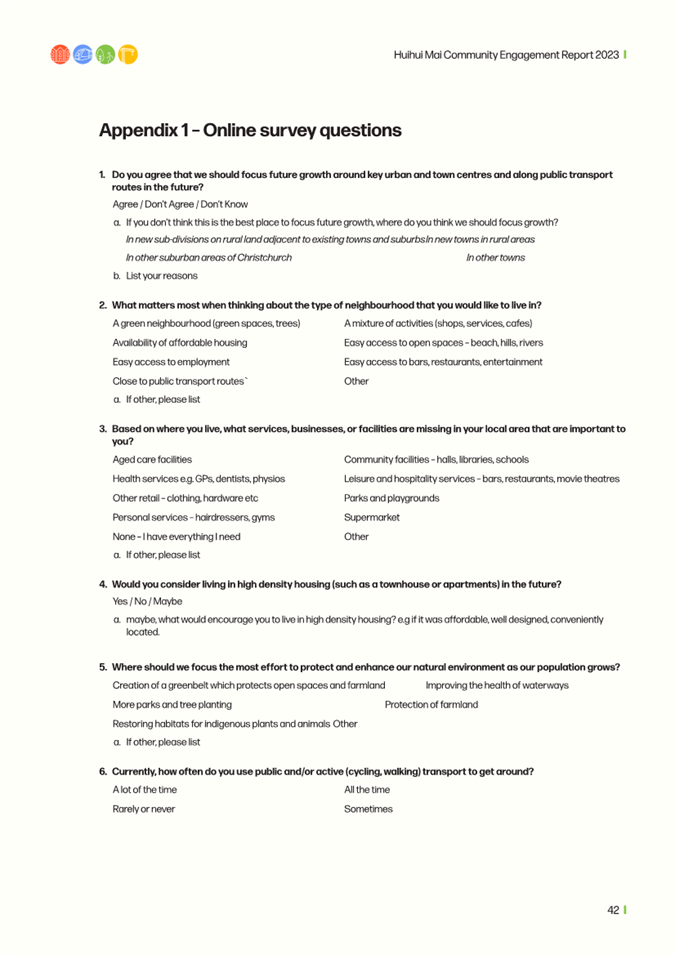
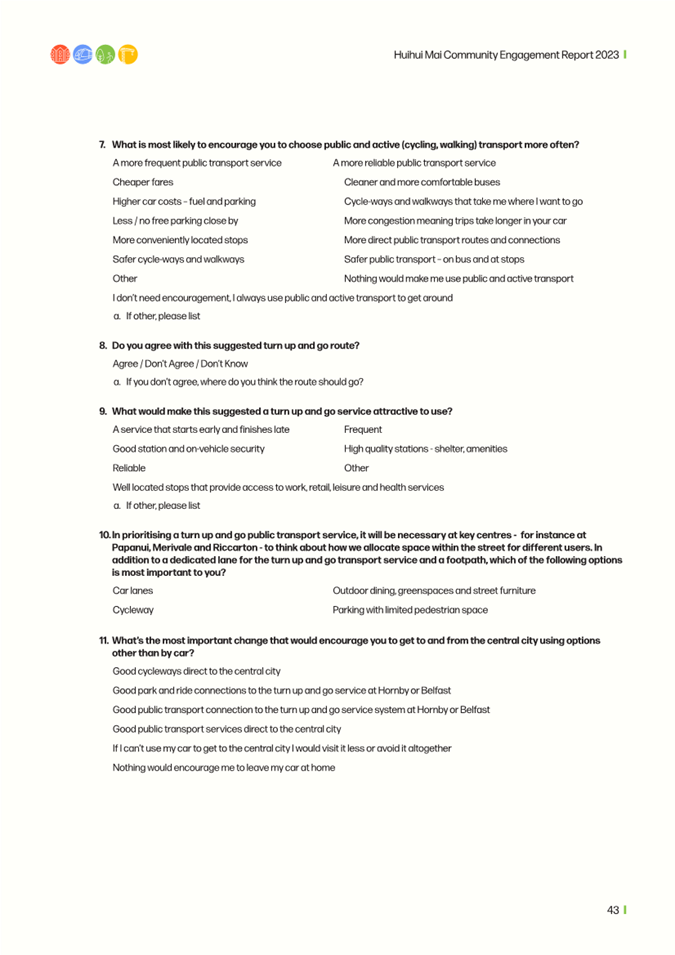
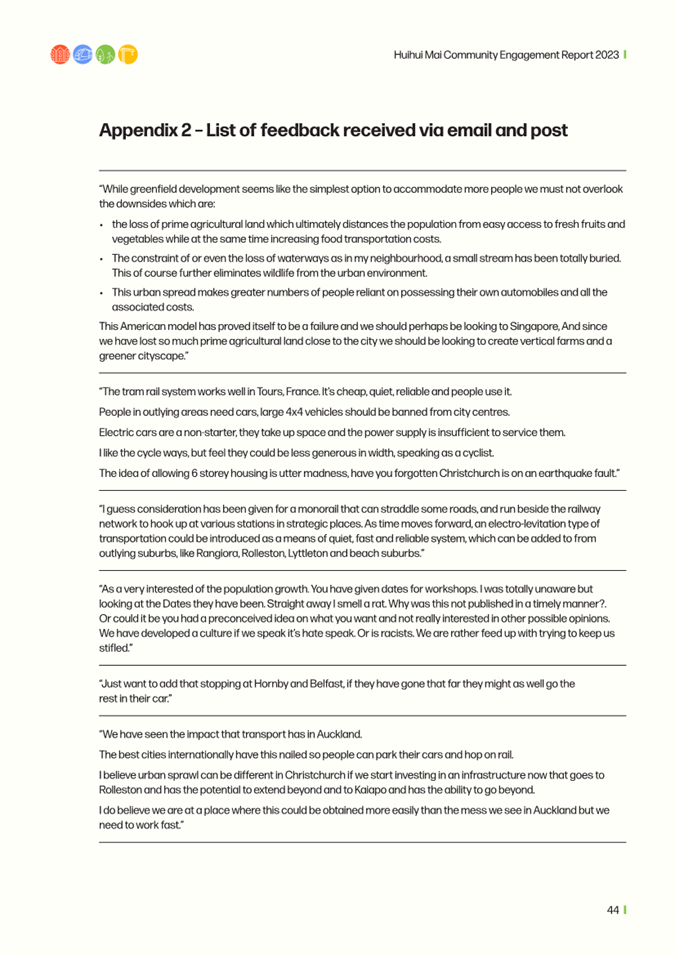
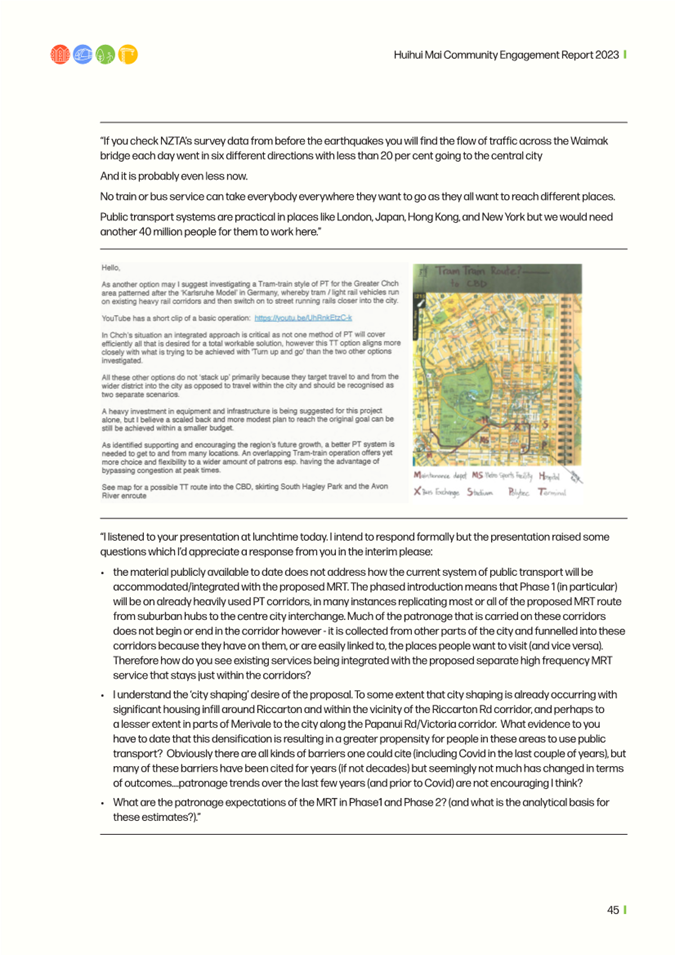
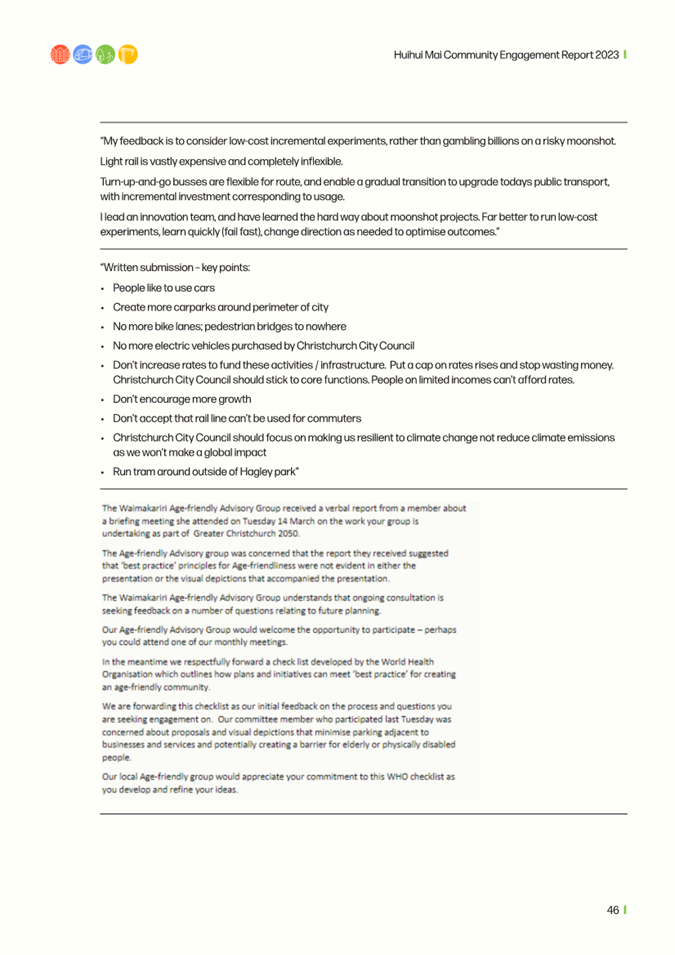
|
Whakawhanake Kāinga Komiti
12 May 2023
|
|
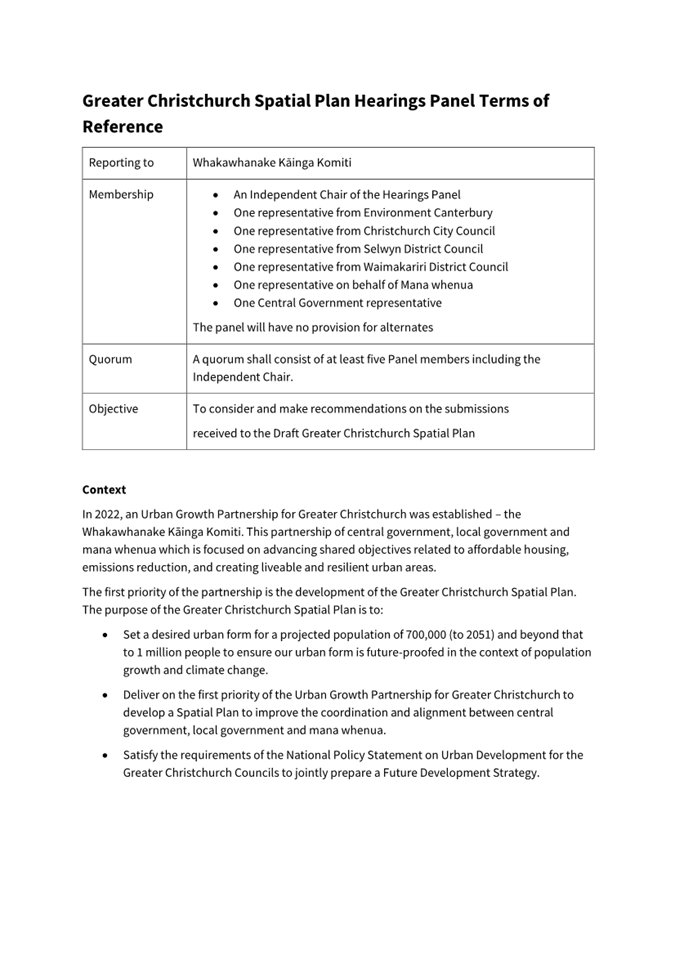
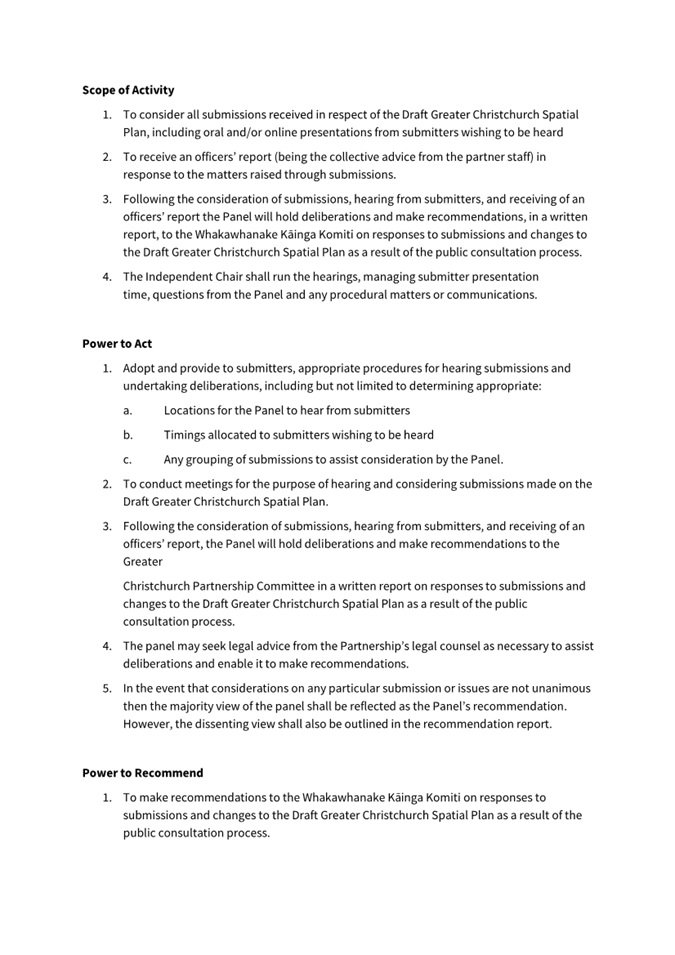

|
Whakawhanake Kāinga Komiti
12 May 2023
|
|
|
6. Greater Christchurch Public
Transport Futures - Mass Rapid Transit Indicative Business Case
|
|
Reference / Te Tohutoro:
|
23/675793
|
|
Report of / Te Pou Matua:
|
Chief
Executives Advisory Group
|
1. Purpose of Report Te
Pūtake Pūrongo
1.1 The
purpose of this report is for the Whakawhanake Kāinga Komiti to endorse
the Greater Christchurch Public Transport Futures Mass Rapid Transit Indicative
Business Case. A non-technical summary for the business case forms Attachment
A and the Indicative Business Case forms Attachment B.
2. Chief Executives Advisory Group Recommendations / Ngā Tūtohu
That the Whakawhanake
Kāinga Komiti:
a. Endorses
the Greater Christchurch Public Transport Futures
Mass Rapid Transit Indicative Business Case.
b. Notes
that, subject to funding approval, Detailed Business Case investigations
are undertaken in FY2023/24 to enable the scoping and preparation of
procurement documents and to ensure integration and alignment of Mass Rapid
Transit with the remainder of the Public Transport Futures programme and the
Greater Christchurch Spatial Plan.
3. Executive Summary
3.1 The
Greater Christchurch Public Transport (PT) Futures Mass Rapid Transit (MRT)
Indicative Business Cases (IBC) is one of the business cases that form the
Greater Christchurch PT Futures programme.
3.2 The
recommended option from the IBC is an arterial street running MRT system within
Christchurch City (Hornby through the City centre to Belfast), combined with
direct bus services to the districts.
3.3 The
next formal stage of works under a business case process is the Detailed
Business Case (DBC) which builds on the IBC to ensure the project is viable and
will meet the agreed objectives.
3.4 Indicative
programme durations anticipate scoping, procurement and award of professional
services to occur within a 12–18 month period. This is then followed by a
24-36 month design, consultation and planning period. When the DBC is completed
and endorsed, the planning approvals, land acquisition and construction will
proceed.
4. Context
4.1 The
Greater Christchurch PT Futures MRT IBC is one of the business cases that together
form the Greater Christchurch PT Futures programme.

4.2 The
PT Futures programme seeks to proactively respond to the need for a PT system
with significantly increased patronage and mode share that:
- delivers high-frequency PT options to existing Key Activity Centres
and planned growth areas;
- provides reliable services with journey times that are competitive
with private vehicles;
- is attractive and safe to use for customers;
- takes people where they want to go when they want to get there; and
- provides a catalyst for desired land use development.
4.3 MRT
is a high frequency and high-capacity public transport service on a dedicated
corridor that prioritises public transport. It is a step up from the current
public transport service in Greater Christchurch and is a ‘city
shaping’ initiative that is fundamental to catalyse the shift in urban
form required to help achieve a zero-carbon future.
5. Preferred Way Forward
5.1 The
IBC tested the value proposition of the following scenarios:
- heavy rail with limited stop opportunities but competitive travel
times;
- motorway street running with limited stops focused on competitive
travel times that generally follows the motorway corridors; and
- arterial street running (corridor focused) with more frequent stops
focused on placing more households within the walk-up catchment, at the expense
of travel time competitiveness.
5.2 The
IBC recommends an arterial street running MRT system within Christchurch City
(Hornby through the City centre to Belfast), combined with direct bus services
to the districts. The connections to the Districts, will be delivered earlier
through the PT Futures Combined Business Case and optimised under MRT, including:
- better intra-district public transport connections;
- direct bus services from the Districts to the Central City
principally using the motorway corridors;
- direct connections to the MRT system; and
- ‘enhanced’ park-and-rides.
5.3 The
IBC does not determine the MRT mode (bus rapid transit or light rail). That
will be determined in the next phase.
5.4 The
recommended option used a scenario referred to as ‘MRT Focused
Growth’ which focusses growth through targeted intensification,
particularly around stations within the existing urban centres. This land use
approach aligns with the current direction of the draft Greater Christchurch
Spatial Plan.
5.5 The
IBC’s 95th percentile cost estimates are between $3B to $4B
(mode dependent), with a benefit-cost ratio between 1.1 to 1.5 (mode
dependent). The ongoing cost of operating the service will depend on the
technologies selected and cost around $60m per year (but will replace some
existing services saving around $20m per year).
6. Why now?
6.1 Investing
in the PT Futures programme now will facilitate Greater Christchurch’s
development into a transport efficient sub-region by helping to encourage
growth and intensification along routes, around stations and in key activity
nodes. This will enable and encourage growth in a more resilient and
sustainable manner before it becomes more challenging to deliver the programme
of works in an intensified urban environment.
6.2 As
MRT is city-shaping initiative, it is important that it remains integrated with
the development of the Greater Christchurch Spatial Plan. An MRT system will
help drive the desired urban form by sending a clear signal where
intensification in the City is to occur and also serves to minimise the
transport impacts of future growth. The two projects are interdependent and
help deliver on the partnership priorities to improve the provision of
affordable housing, improve accessibility to services, decarbonise the
transport system and increase resilience to natural hazards and the impacts of
climate change.
7. Community Engagement
7.1 A
joint Greater Christchurch Spatial Plan and MRT community engagement exercise
was held in February/March 2023. There were over 7,000 responses. Outputs from
the engagement are:
- 86% overall agree with the proposed direction of the draft GCSP to
focus growth through targeted intensification in centres and along public
transport corridors.
- Over all 53% of respondents agreed with the proposed ‘turn up
and go’ (MRT) route. Respondents who lived in suburbs along the proposed
route were most supportive (75%) as were younger people, while those who lived
in the districts were least supportive (40% supported). For those
respondents not supportive, the main concerns were that the ‘turn up and
go’ didn’t go all the way to Rangiora and Rolleston, and to a
lesser extent, to the East/Sumner.
- The most important factors which would encourage respondents to use
MRT were that it was reliable, frequent and had well-located stops.
8. Endorsement Pathway
8.1 The
IBC has been completed and the partner organisations have received briefings on
the business case. The endorsement pathway is shown below:
May
- Whakawhanake Kāinga Komiti endorsement
ê
May
- Partner Councils endorsements
ê
July
- Waka Kotahi Board endorsement
9. Next Phase
9.1 The
IBC stage has relatively high cost uncertainty and the ownership and delivery
cost agreement principles will not be confirmed by the partners during this
phase.
9.2 It
is recommended that the immediate next phase focus on land use integration and
network integration with MRT, sequencing, lead authority, governance and
funding arrangements, and that these are agreed among the partners.
9.3 One
of the objectives of the next phase is to achieve clarity on these arrangements
in time for the relevant 2024-34 Long Term Plan’s and the 24-27 National
Land Transport Programme.
Attachments Ngā Tāpirihanga
|
No.
|
Title
|
Reference
|
Page
|
|
a ⇩ 
|
Greater
Christchurch Public Transport Futures Mass Rapid Transit Indicative Business
Case - Non-Technical Summary
|
23/684644
|
329
|
|
b ⇩ 
|
Greater
Christchurch Public Transport Futures Mass Rapid Transit Indicative Business
Case
|
23/684647
|
333
|
|
Whakawhanake Kāinga Komiti
12 May 2023
|
|
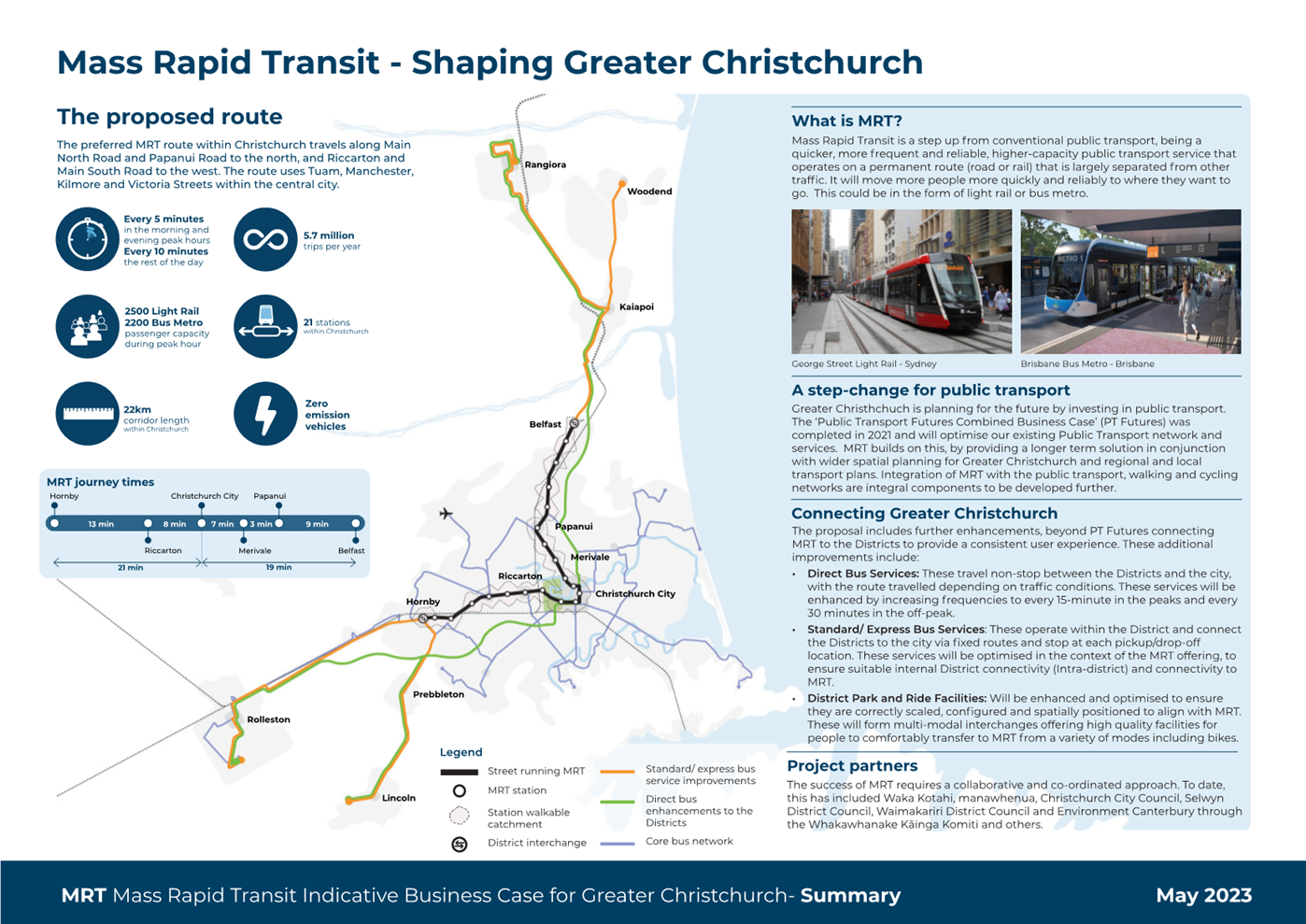
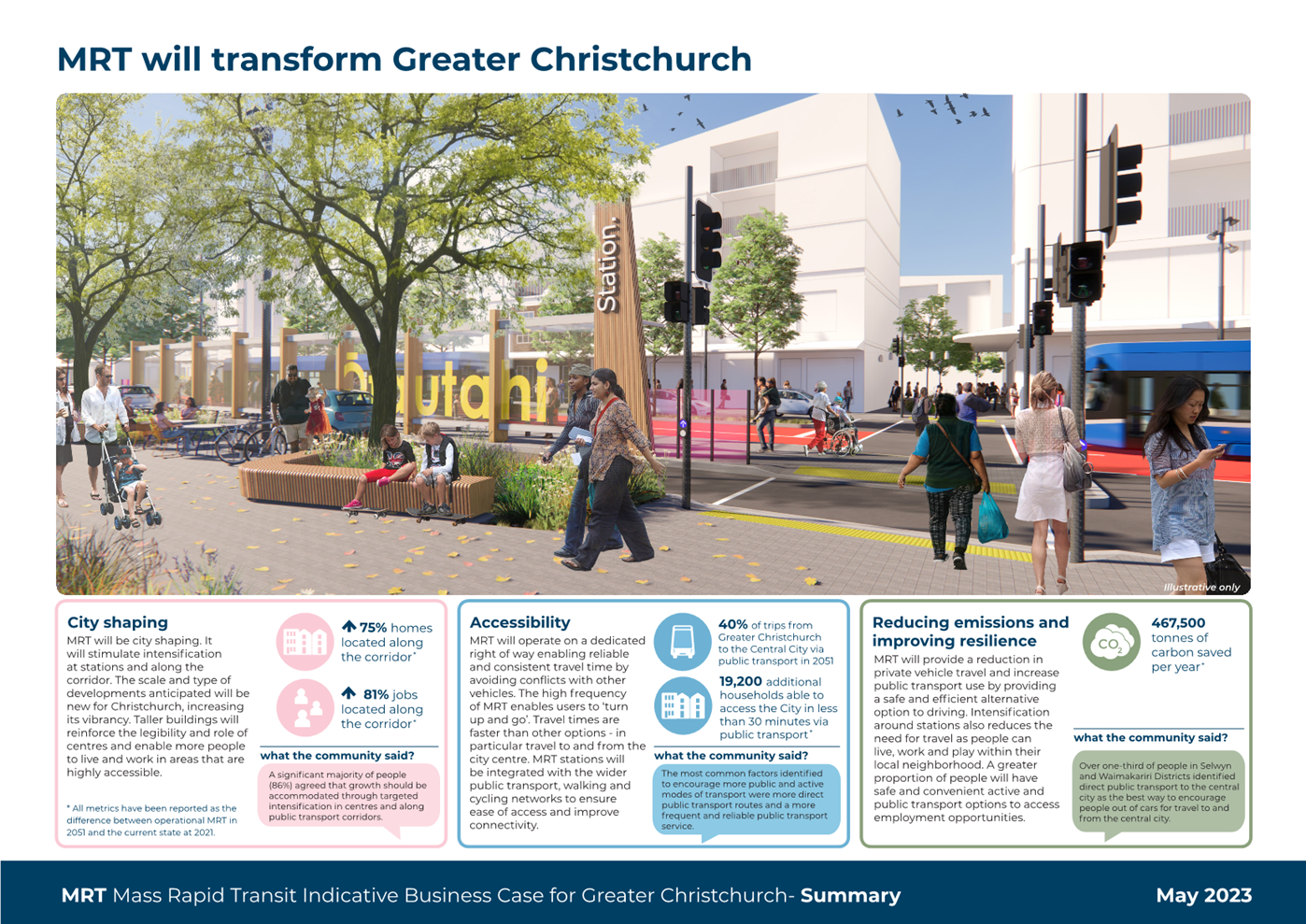
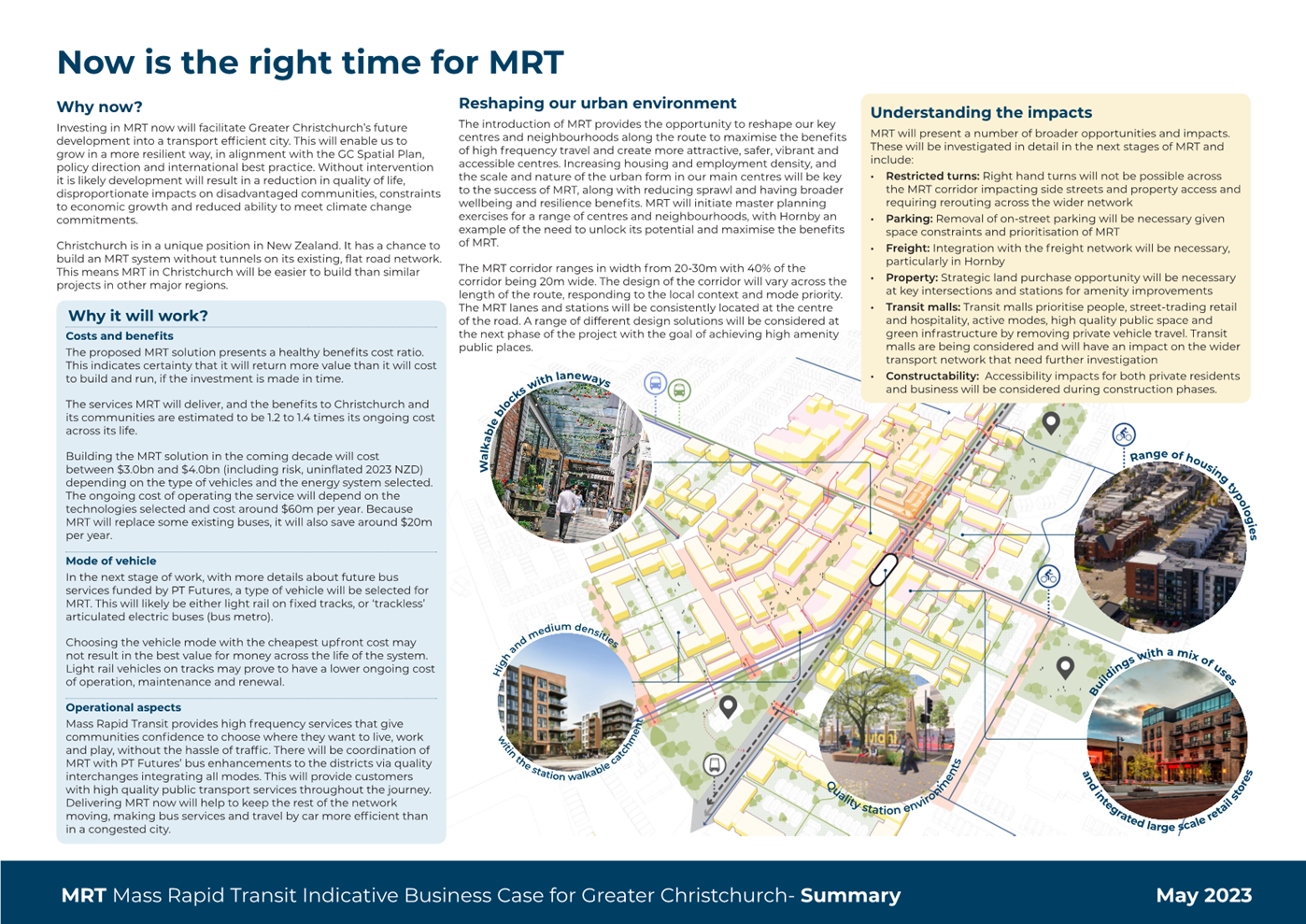
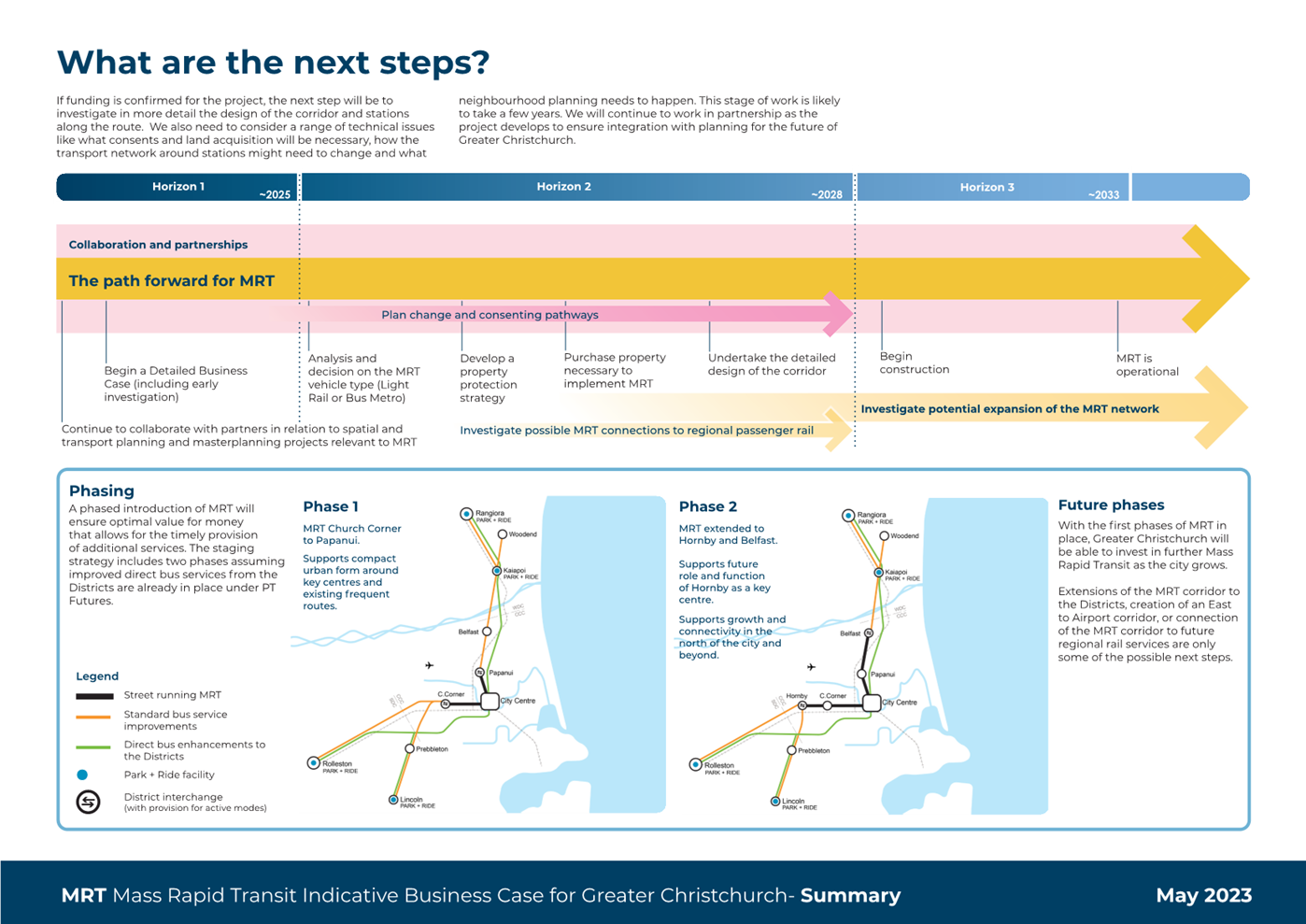
|
Whakawhanake Kāinga Komiti
12 May 2023
|
|
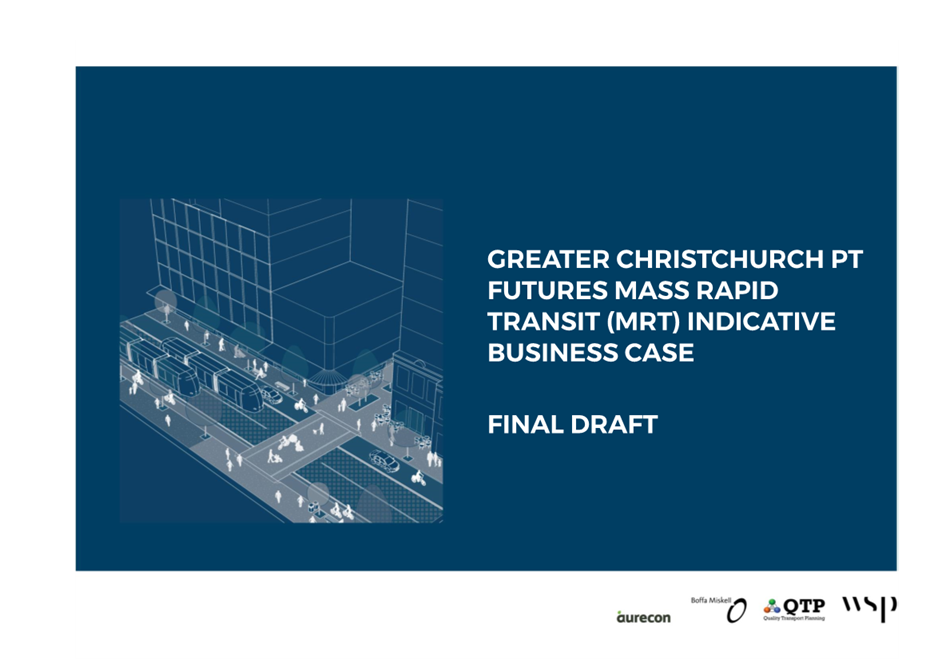
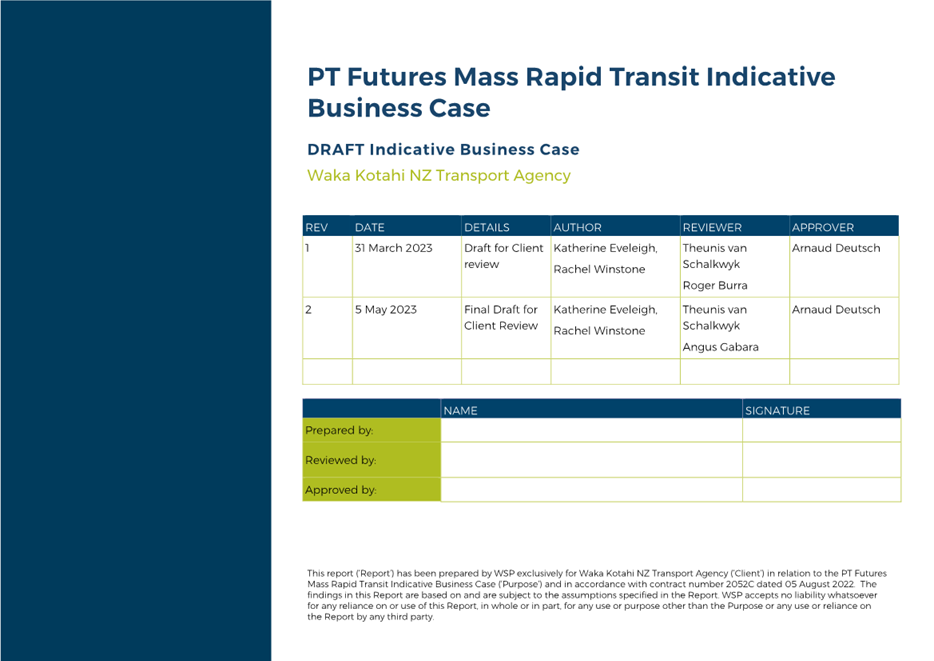

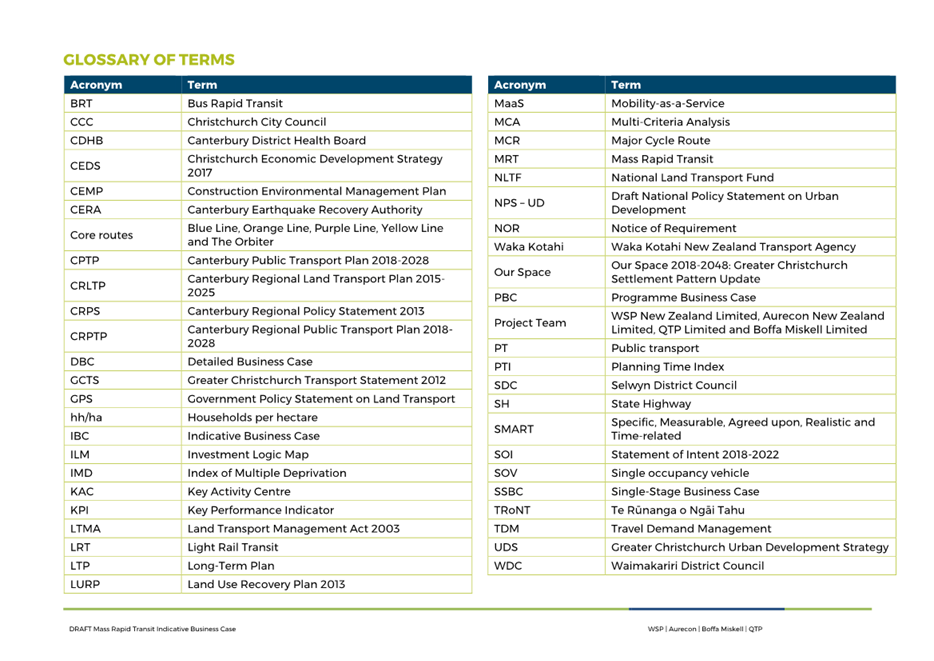

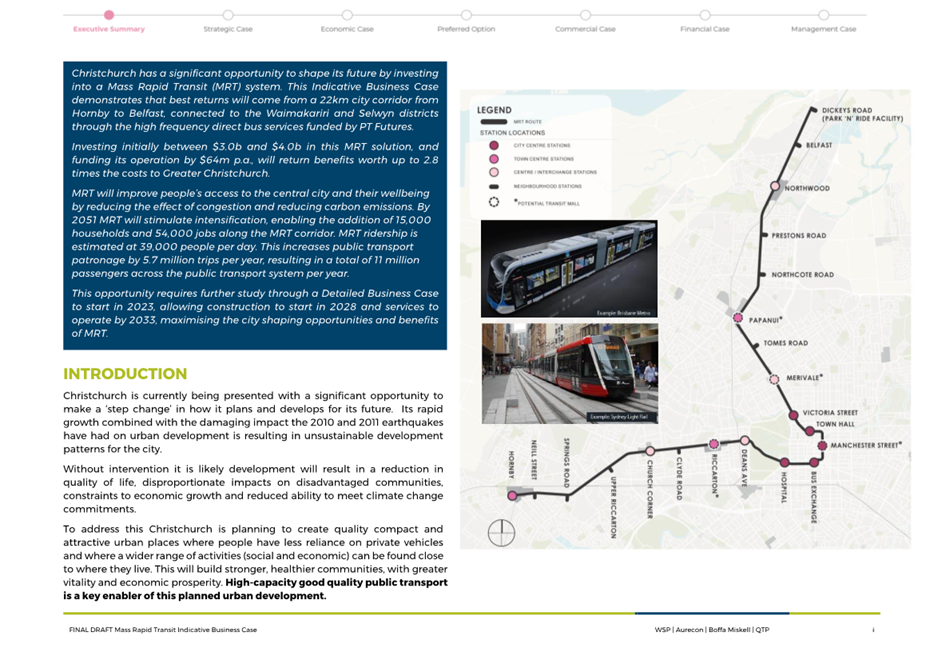
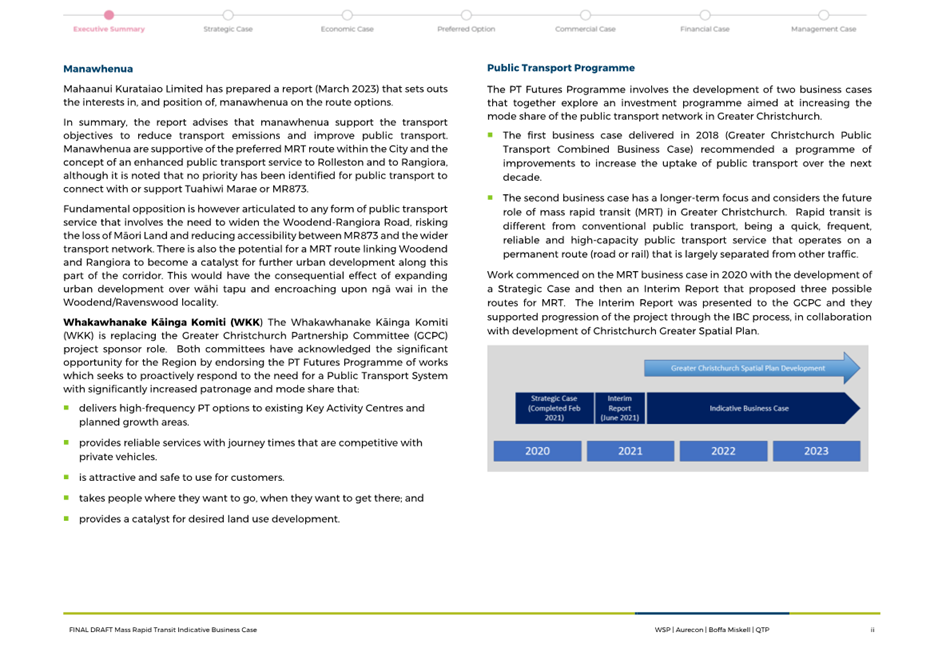
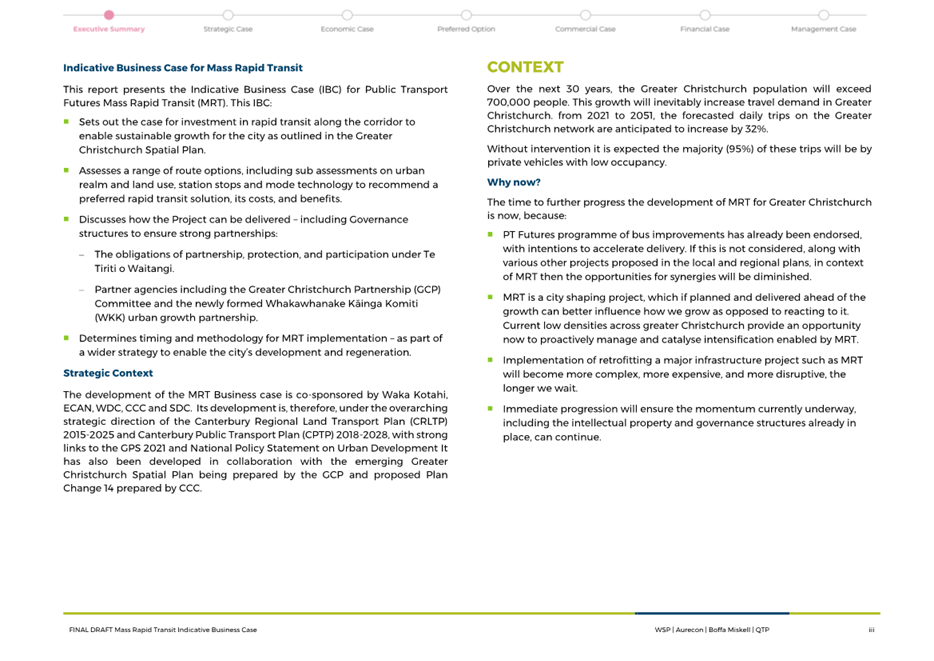
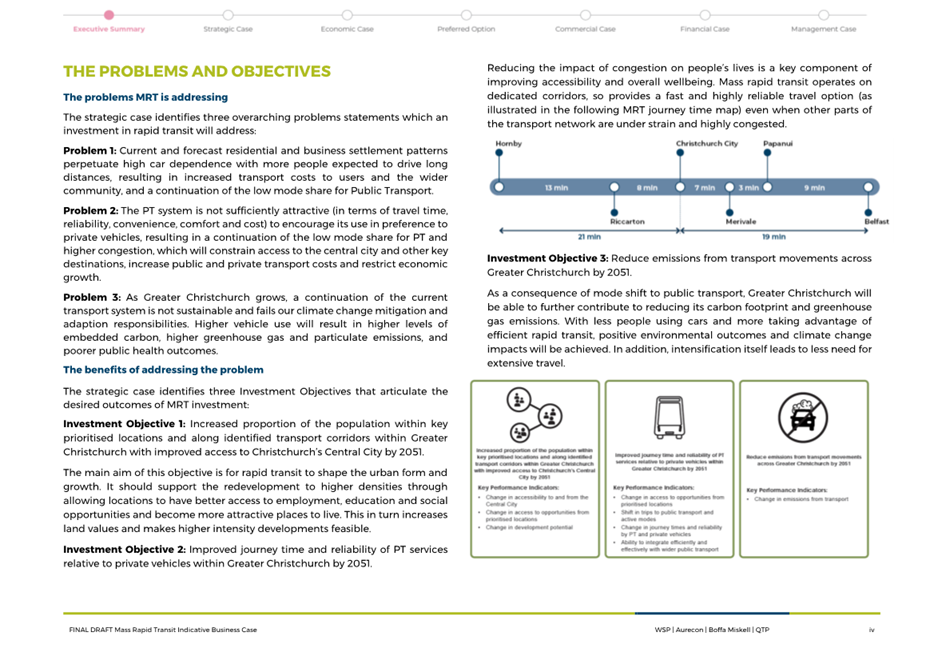

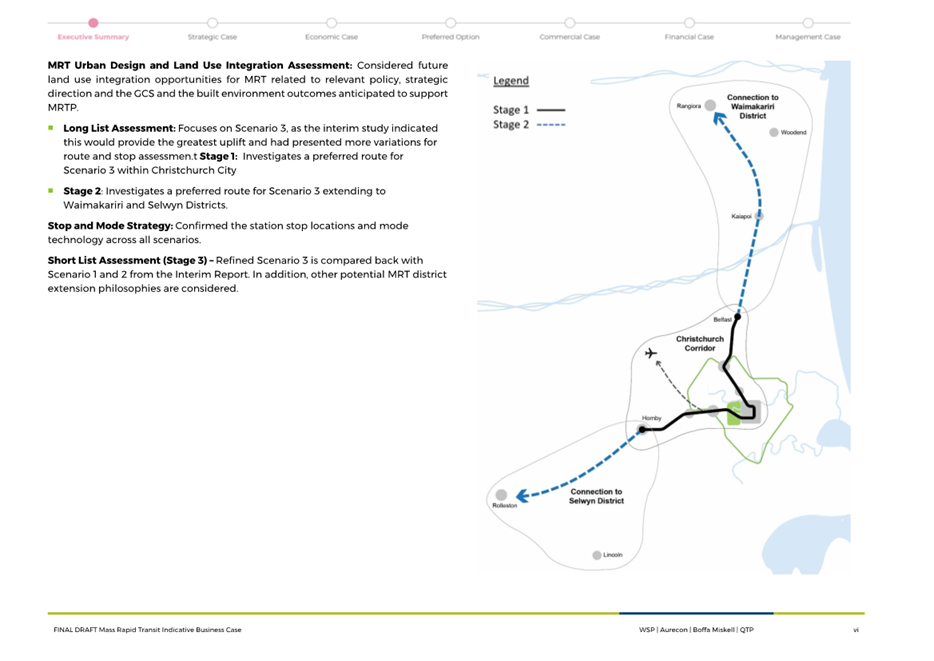
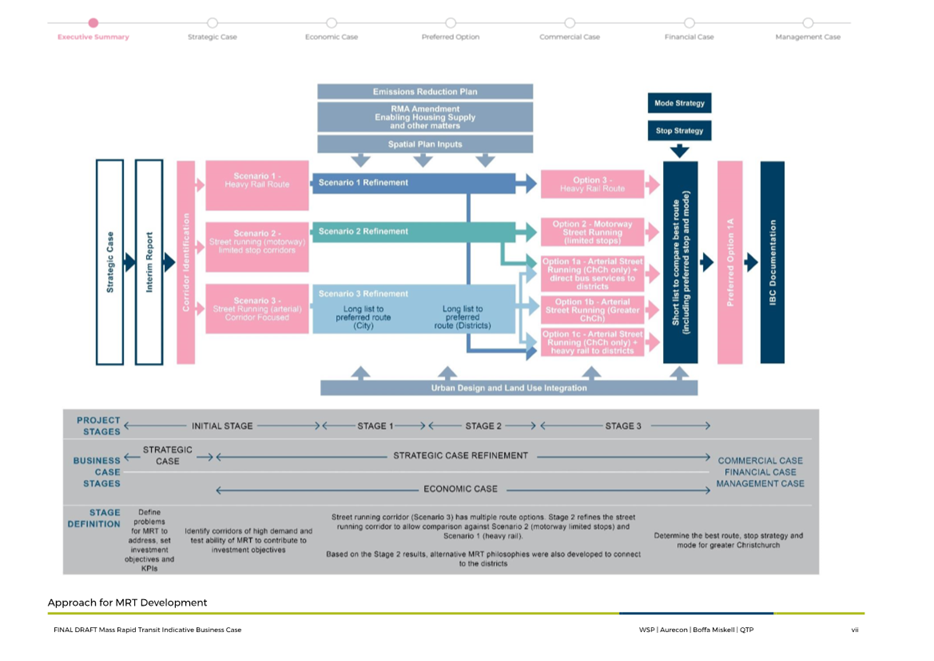
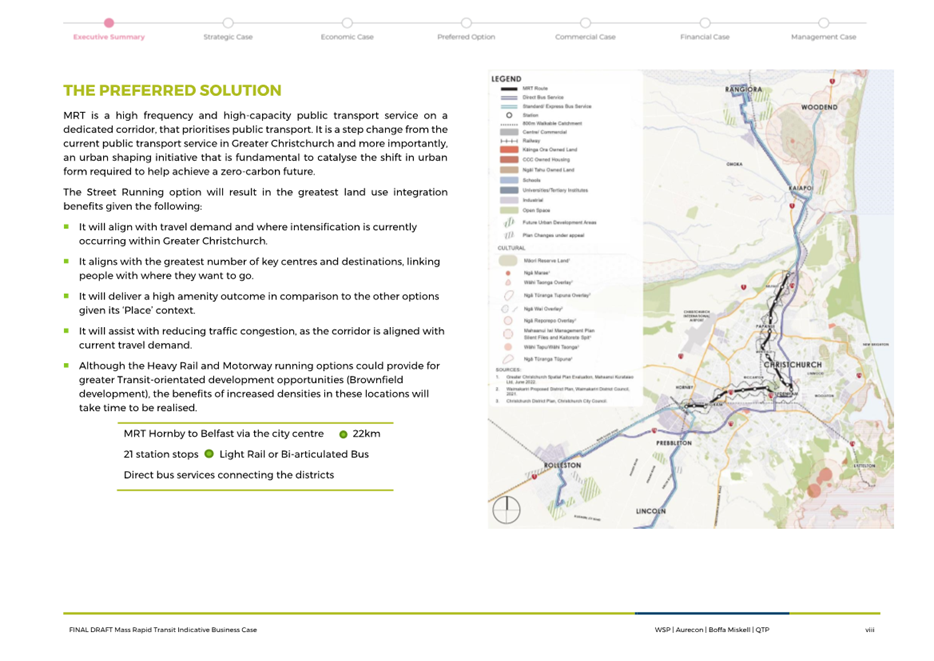
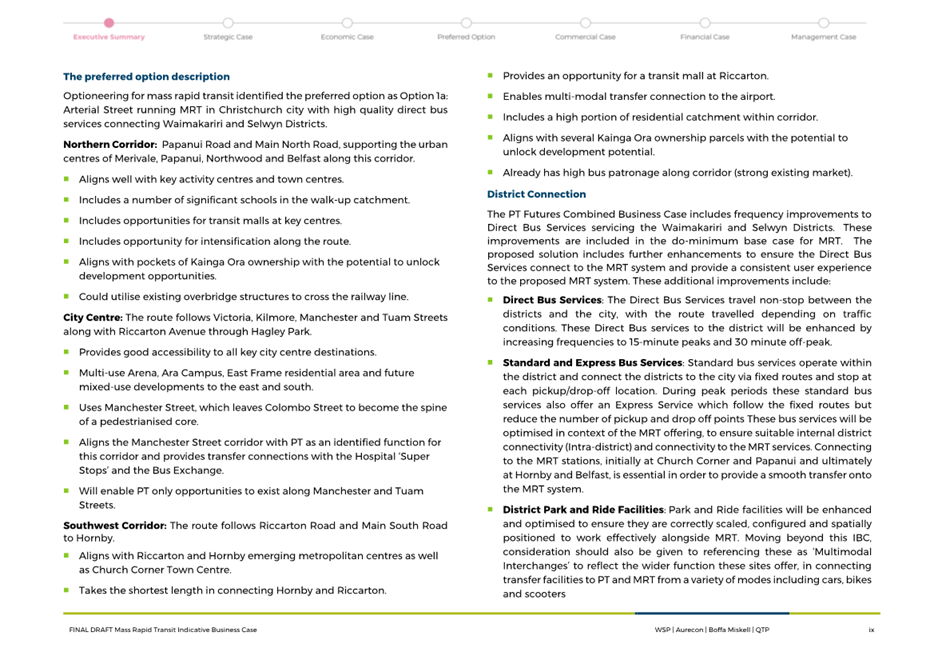
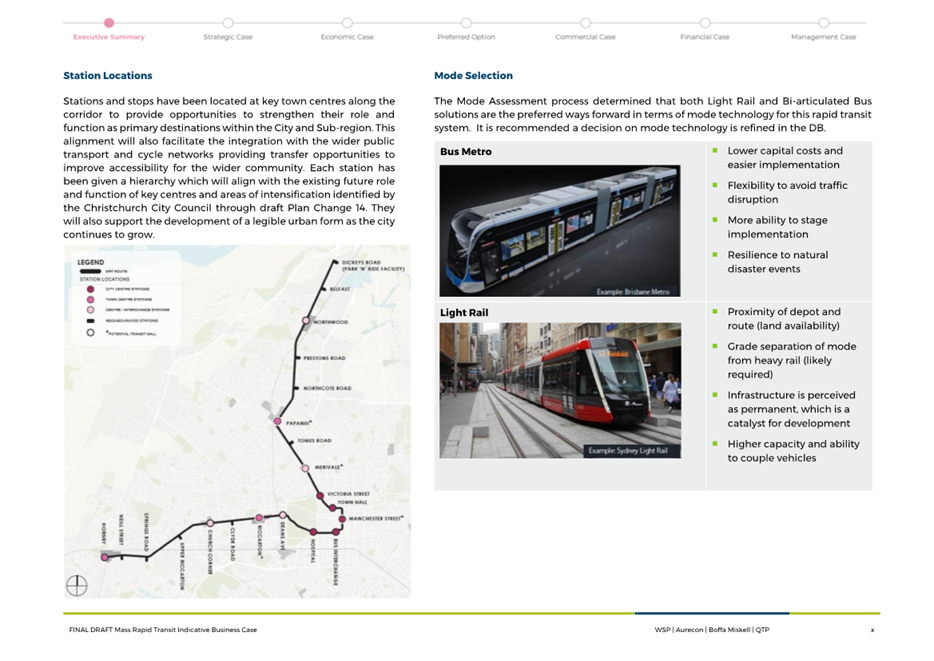
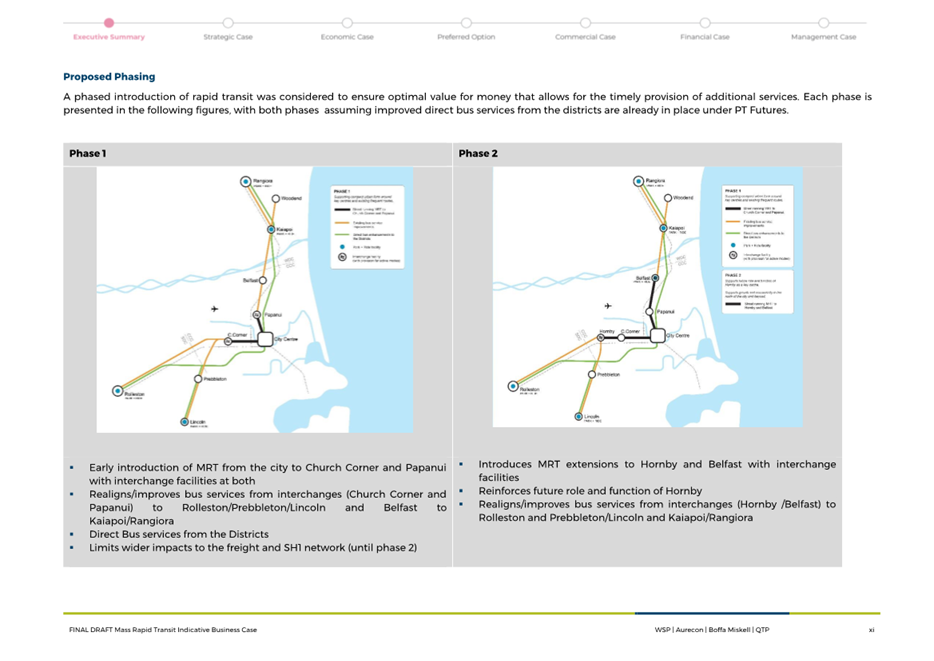
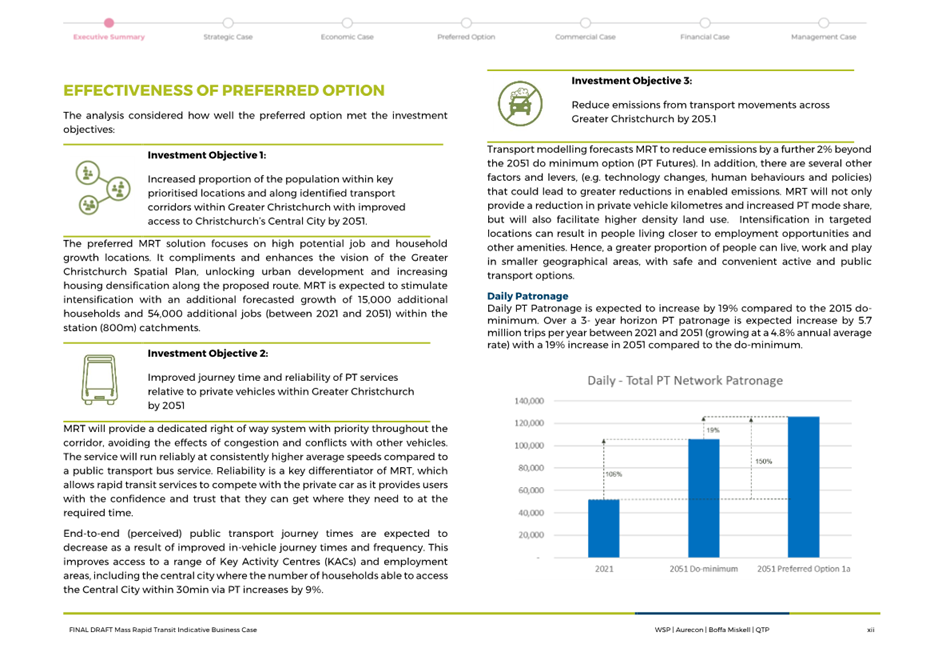
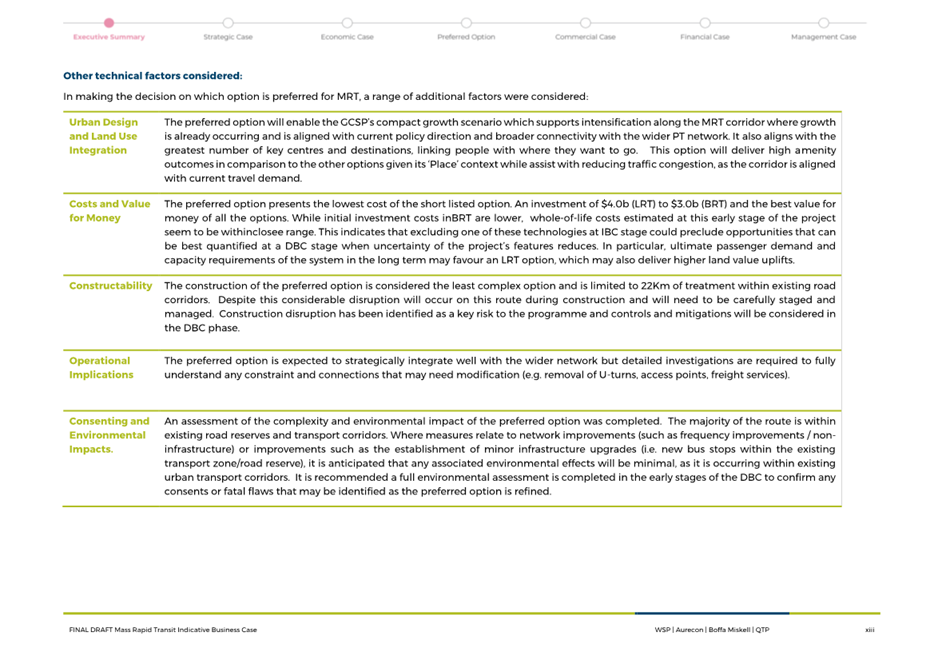
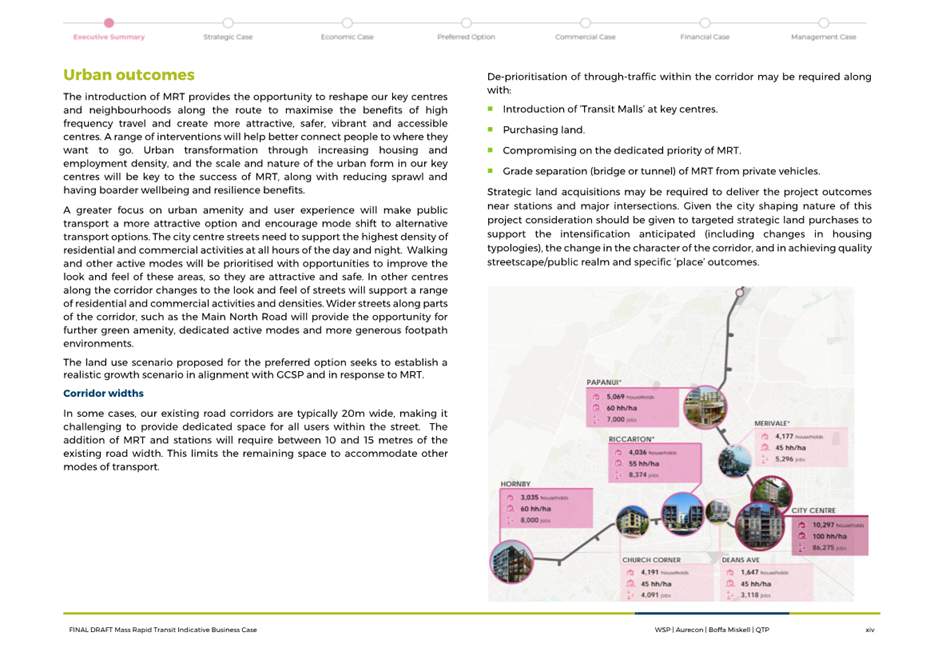
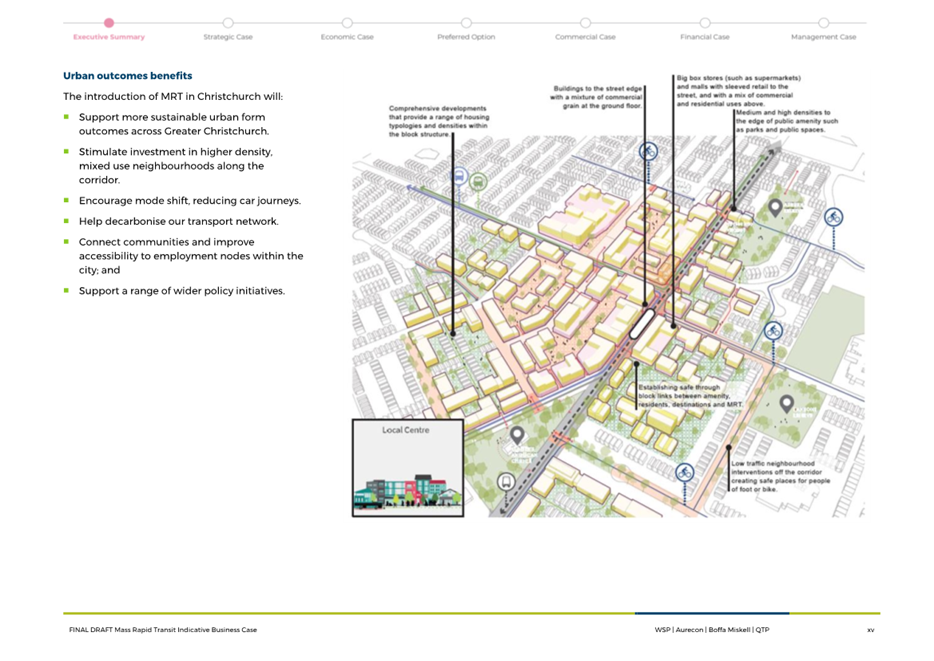
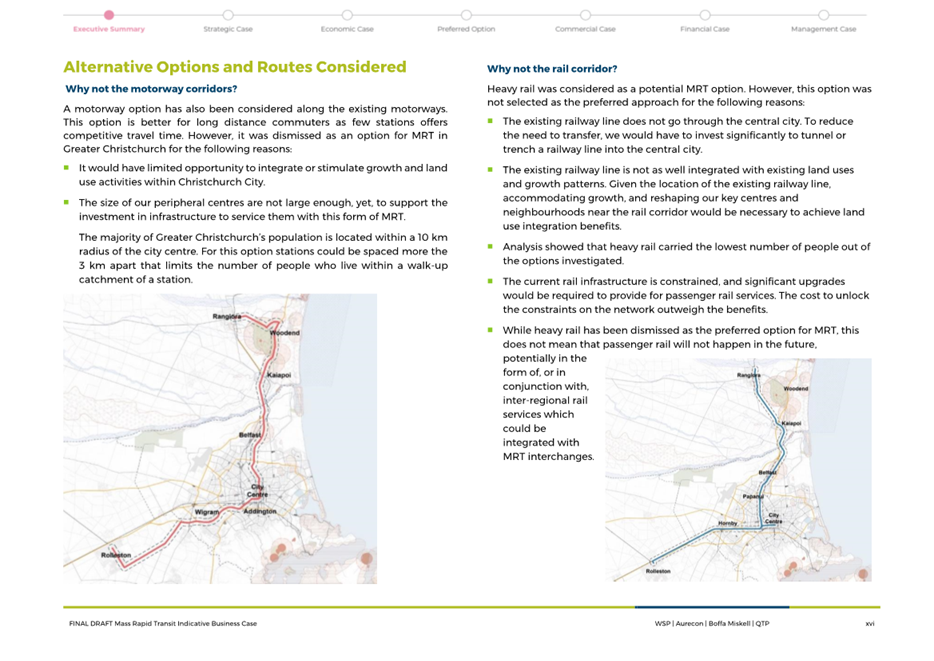
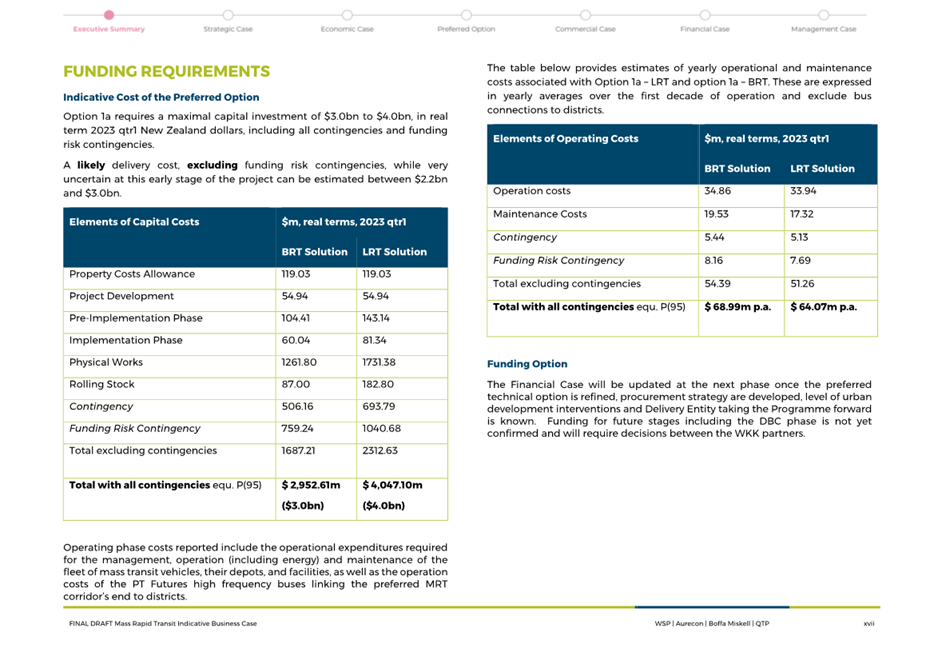
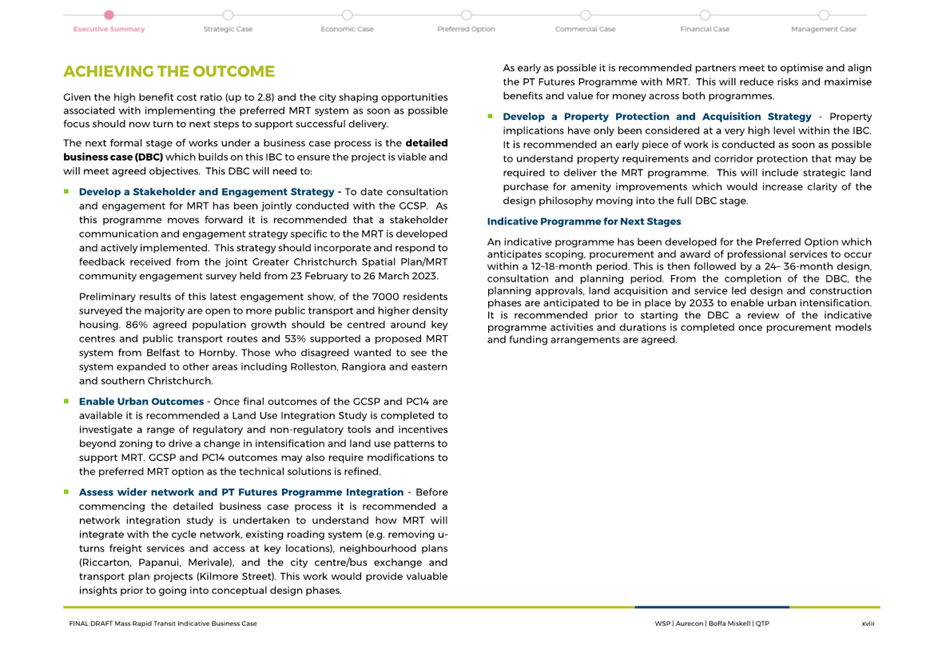
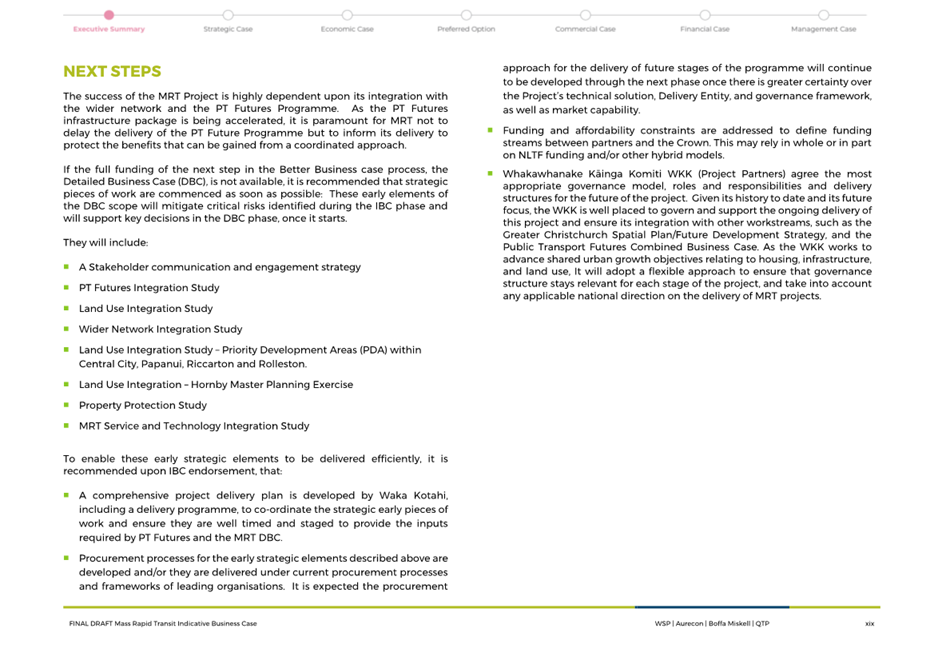
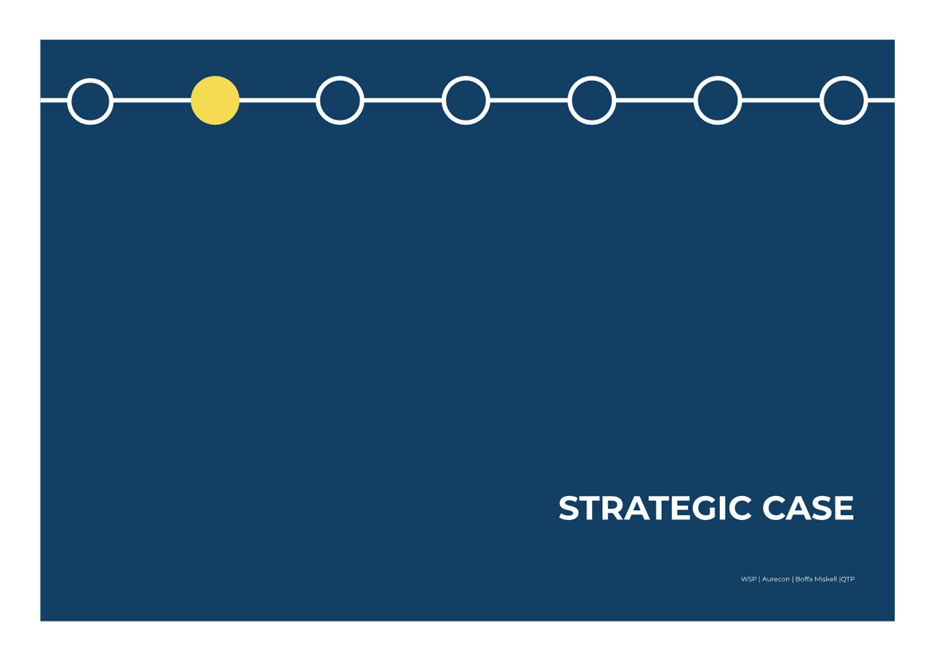
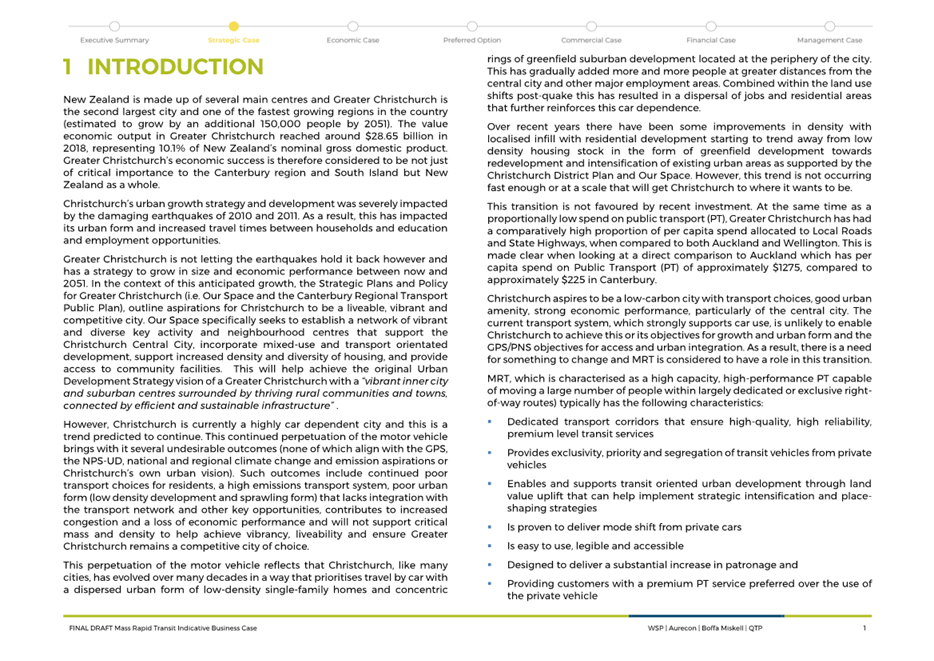
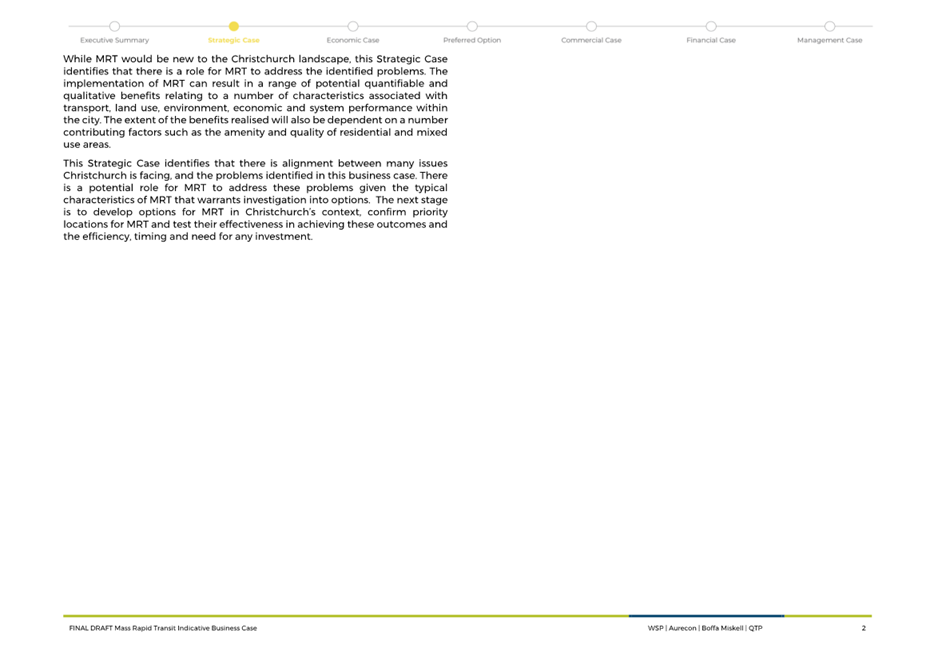
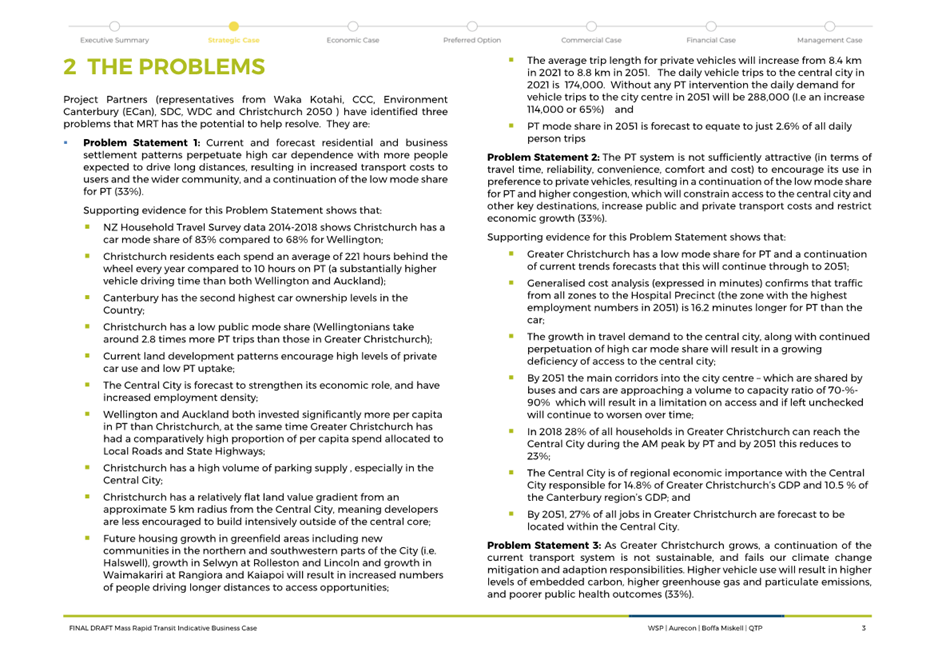
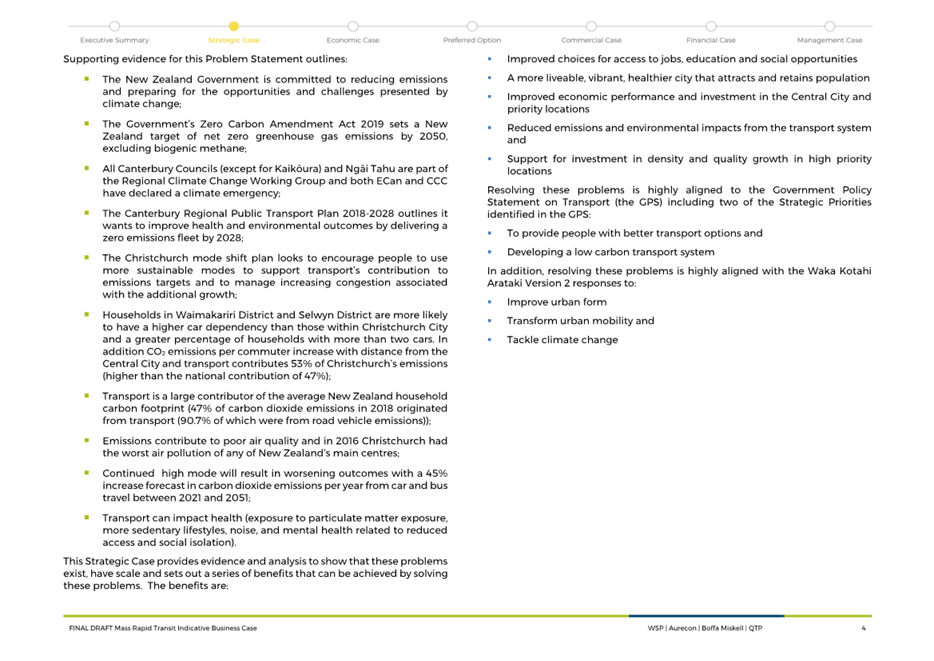
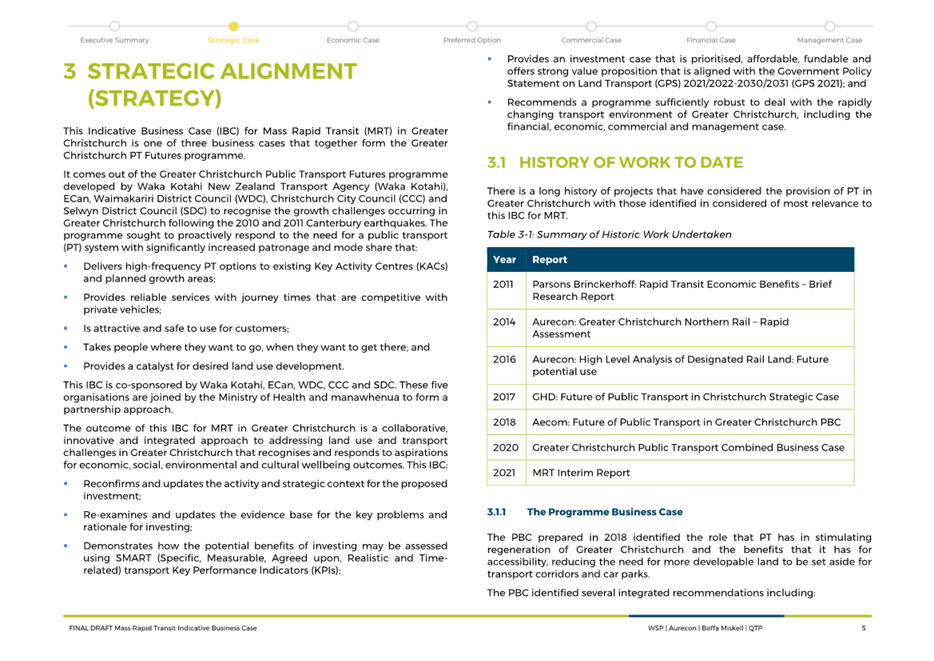
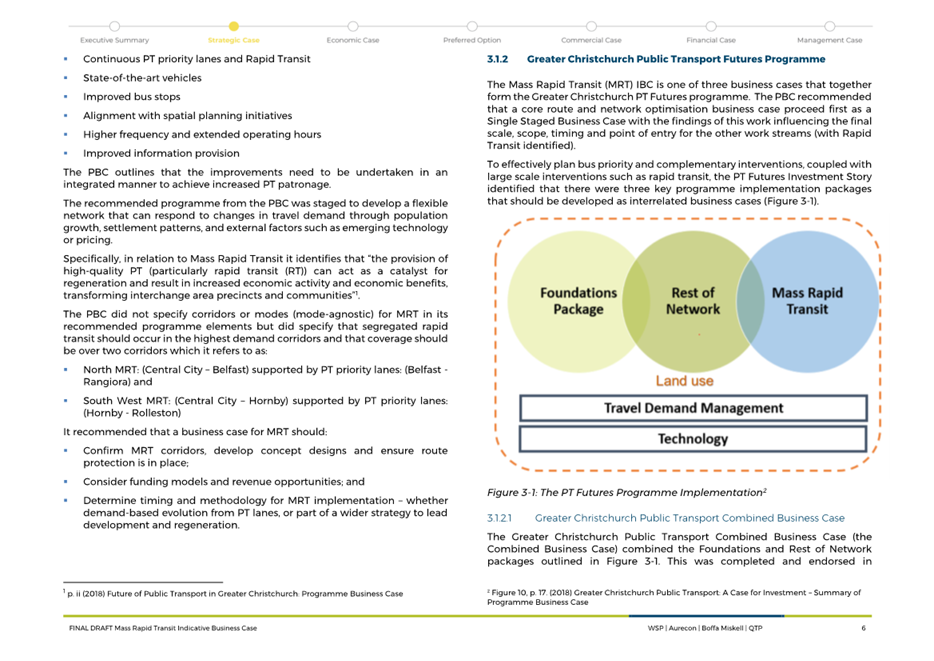
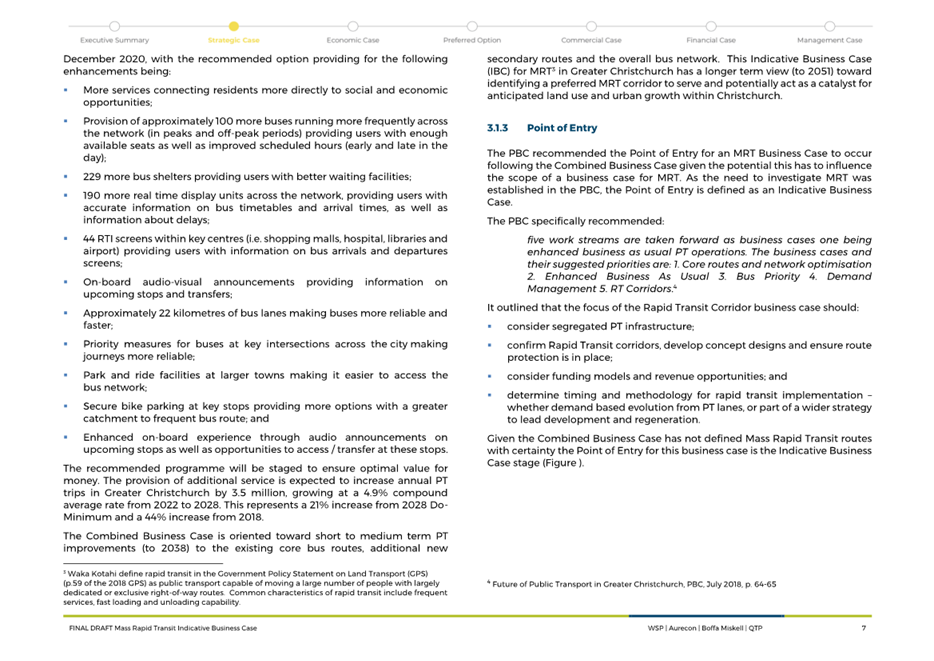
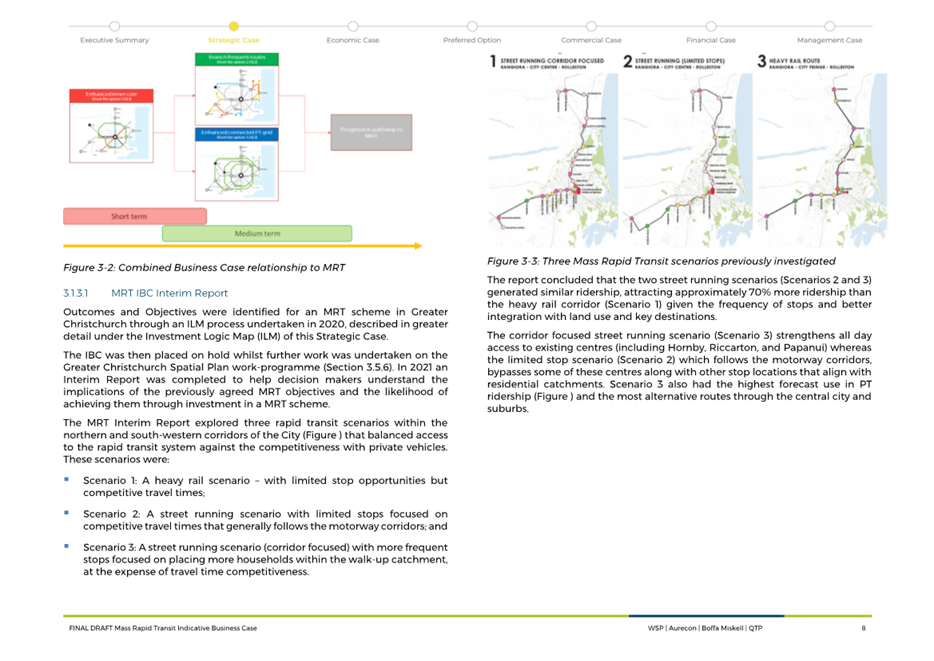
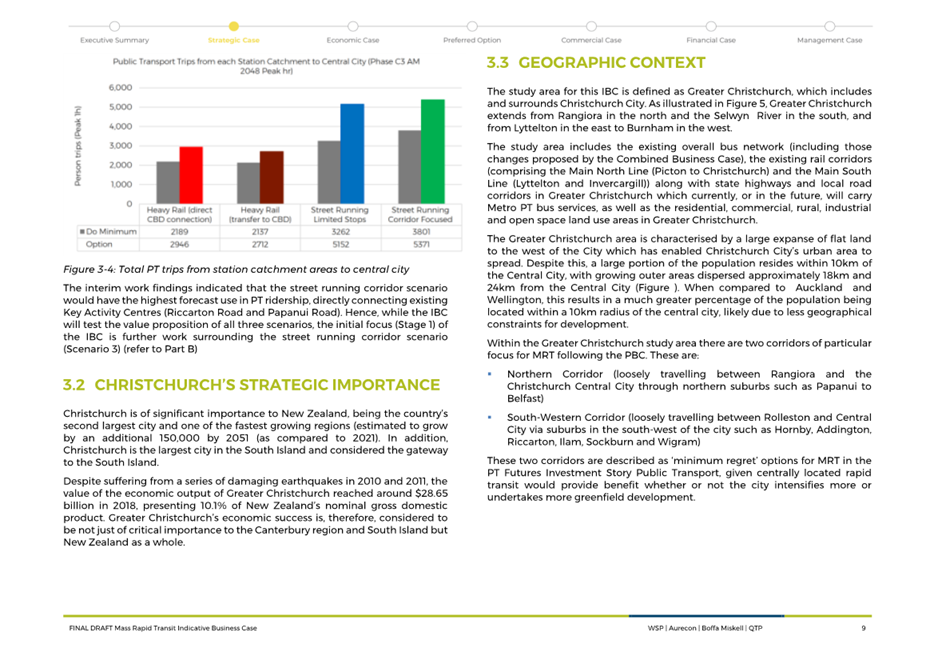
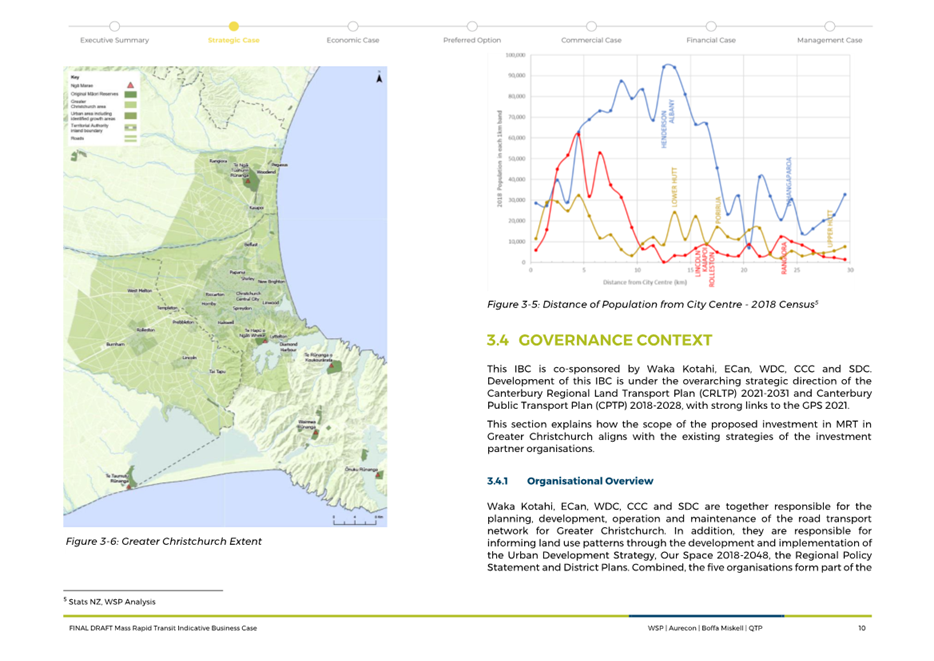
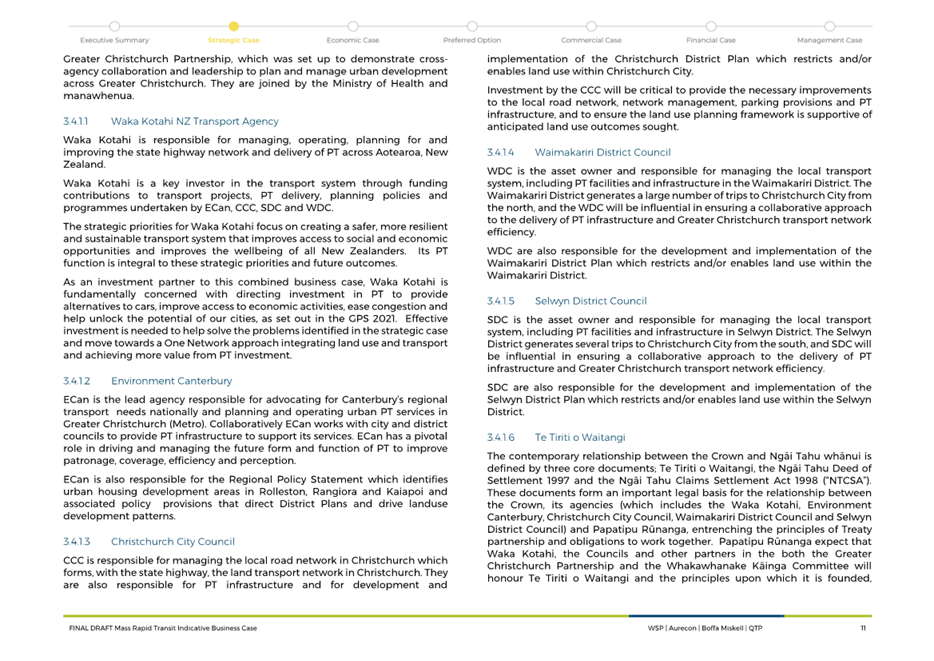
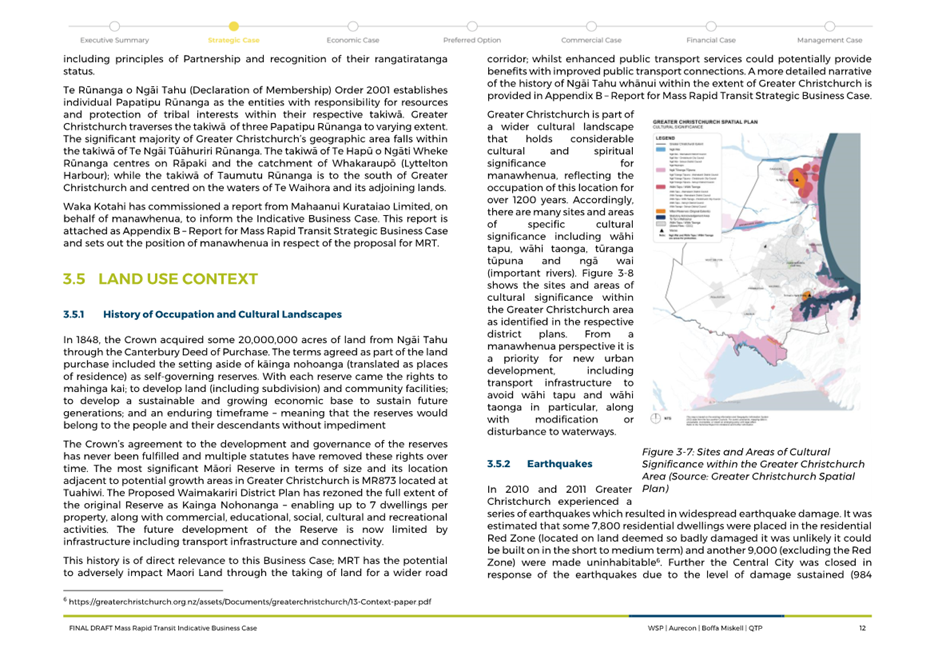
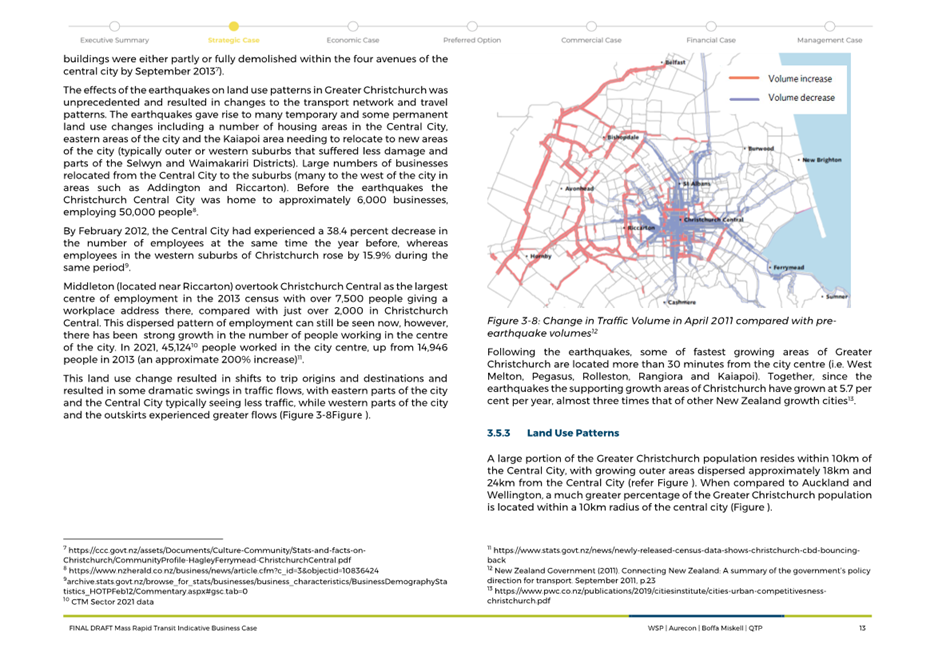
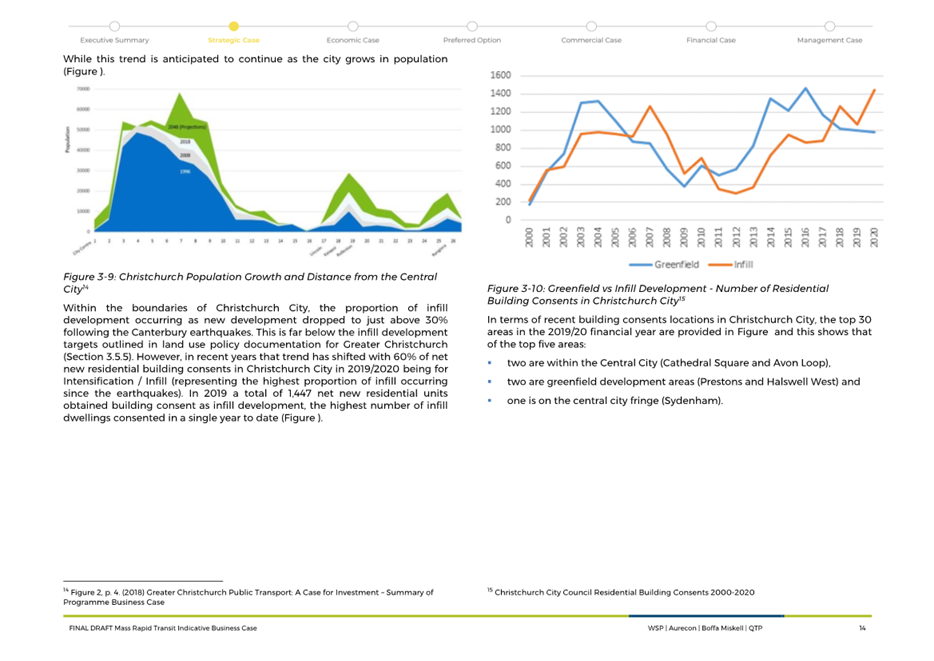
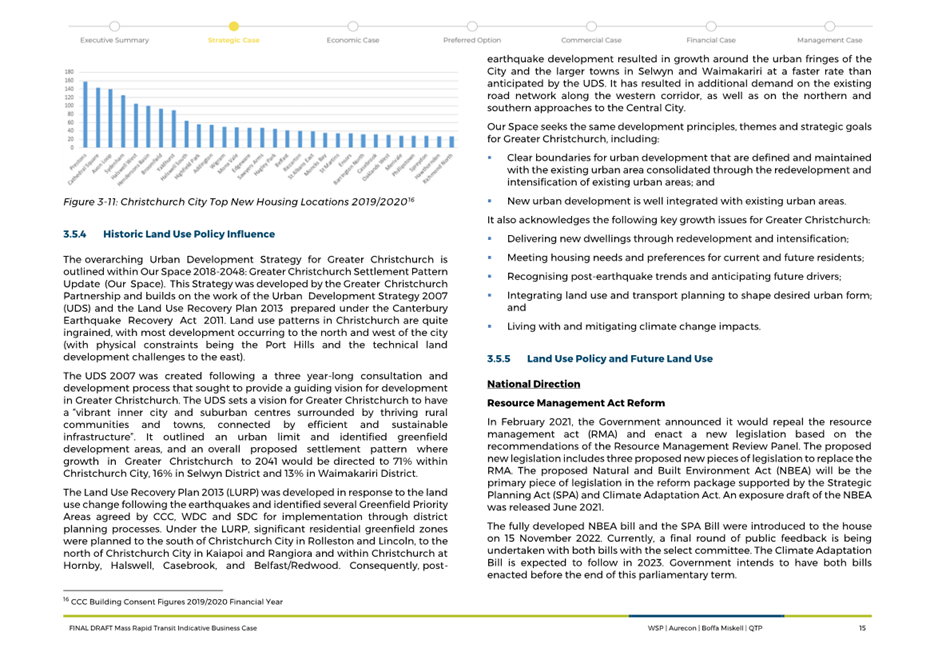
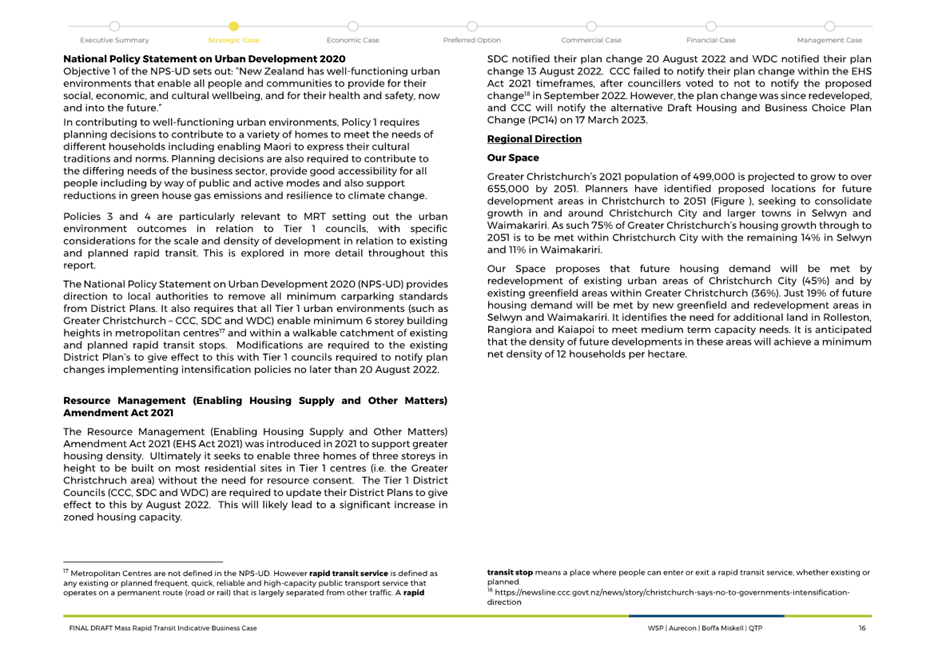
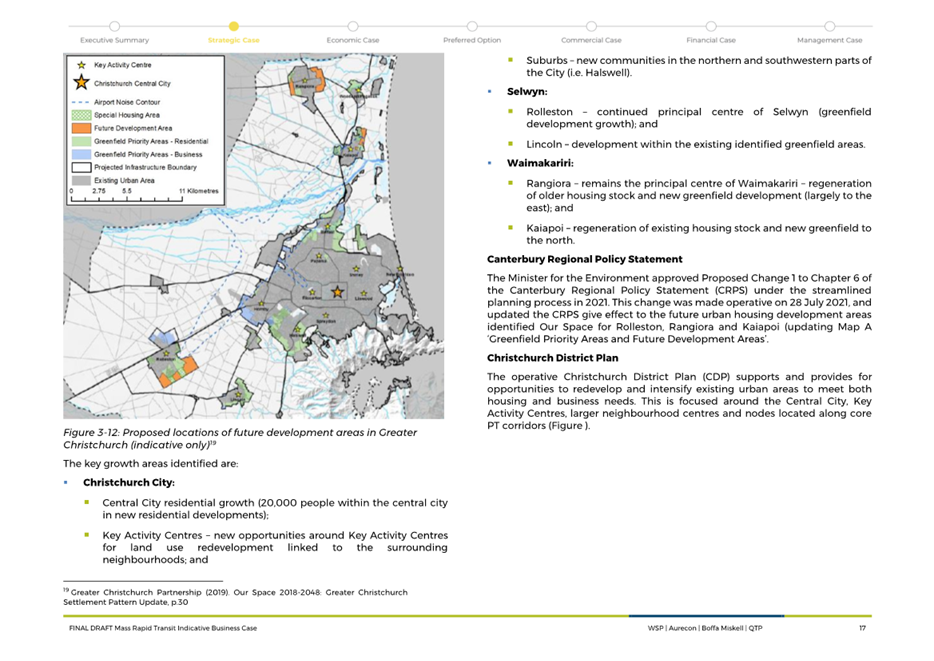
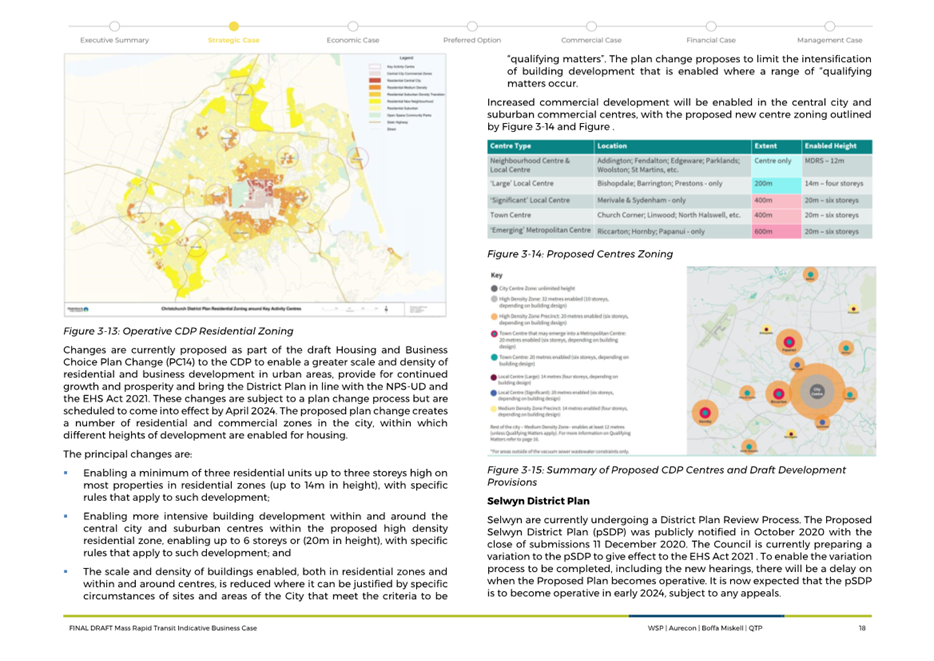
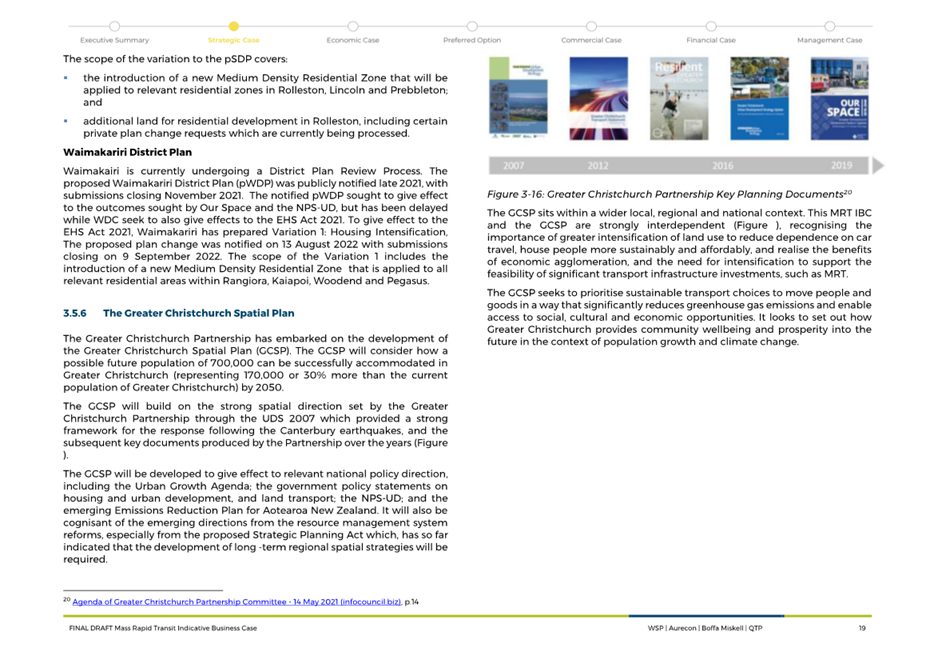
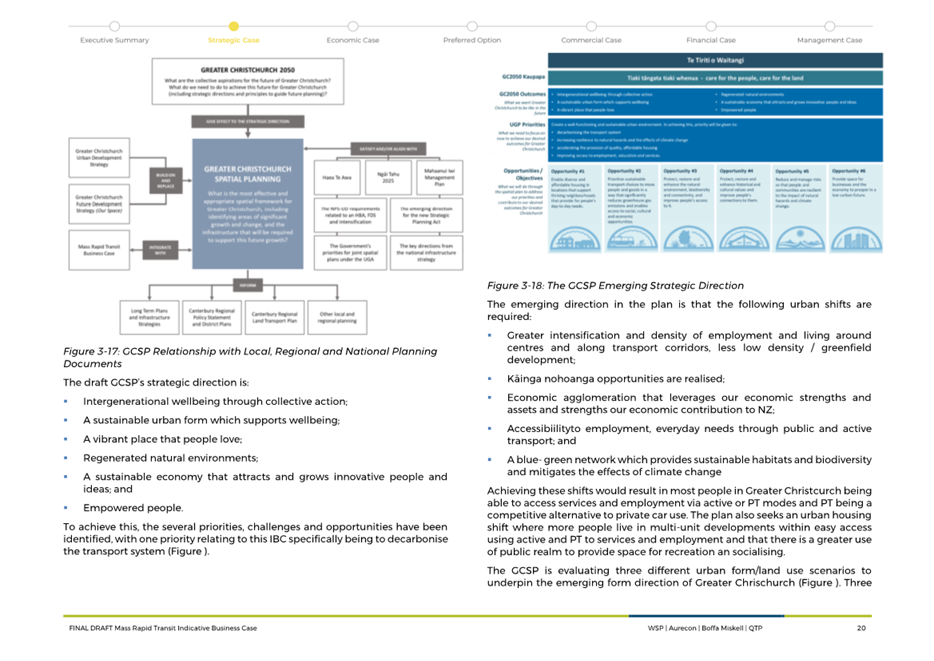
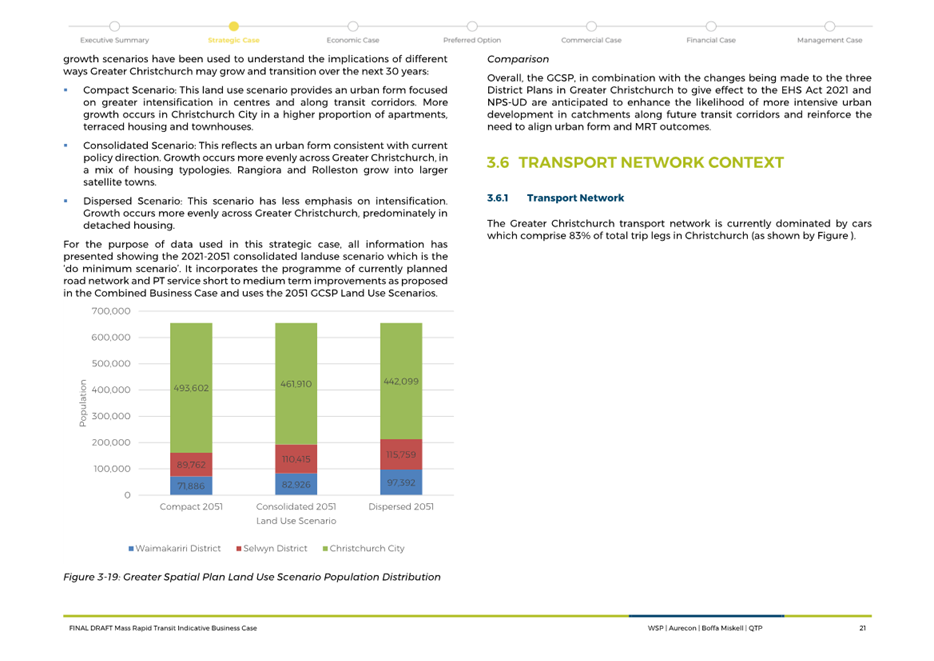
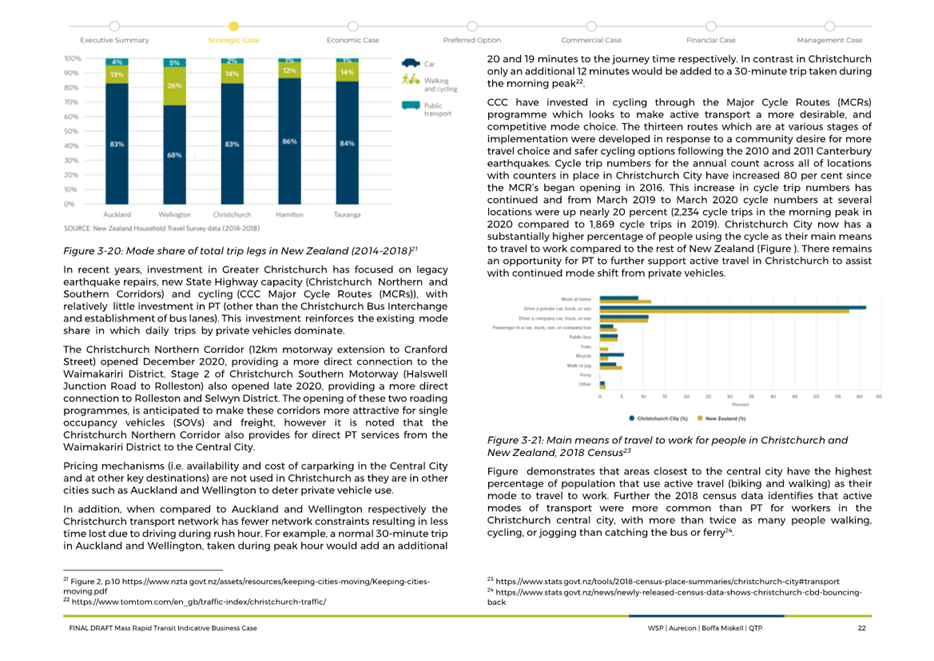
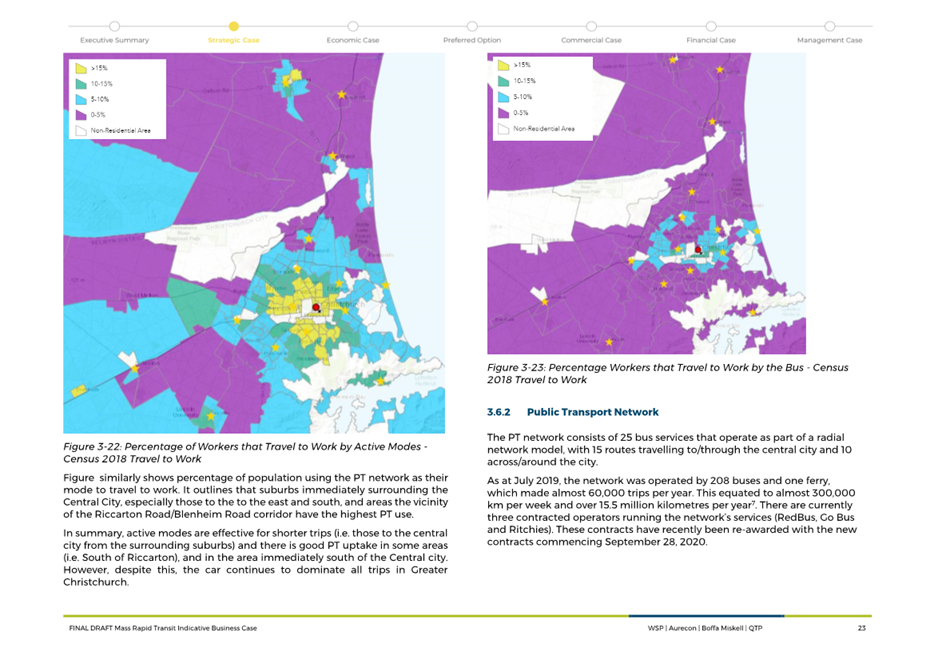
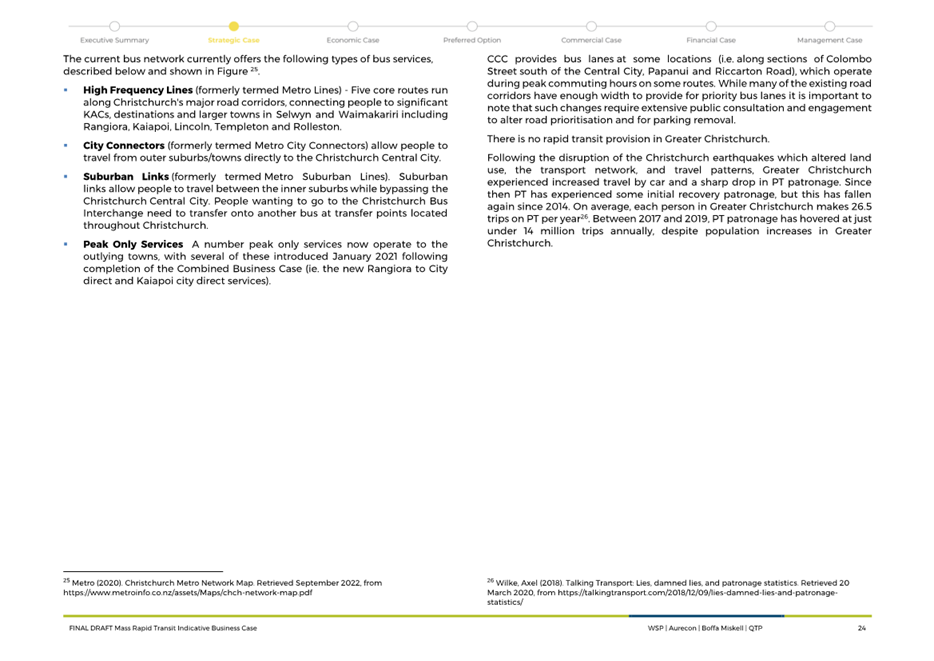
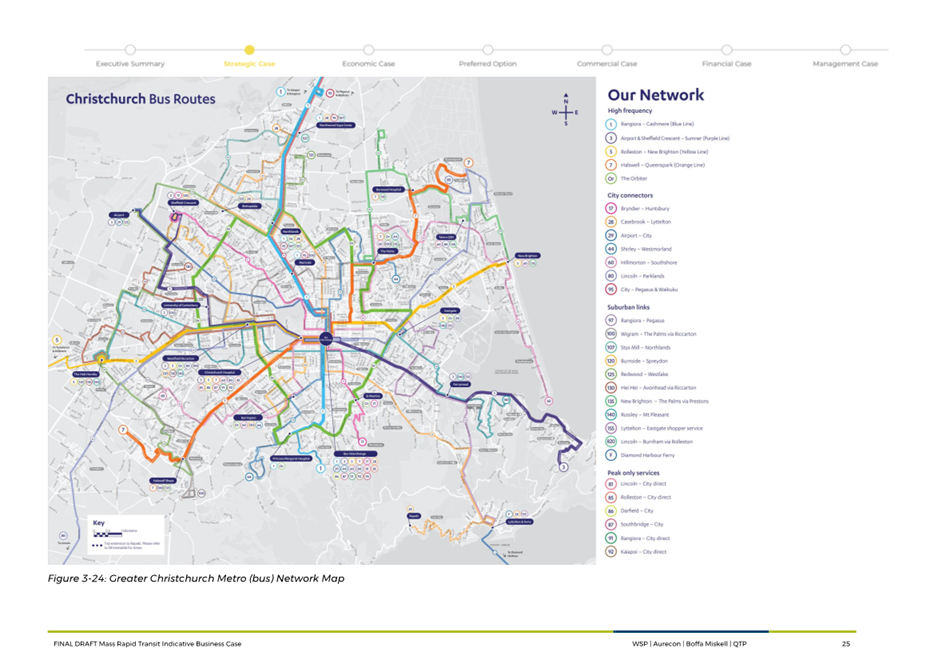
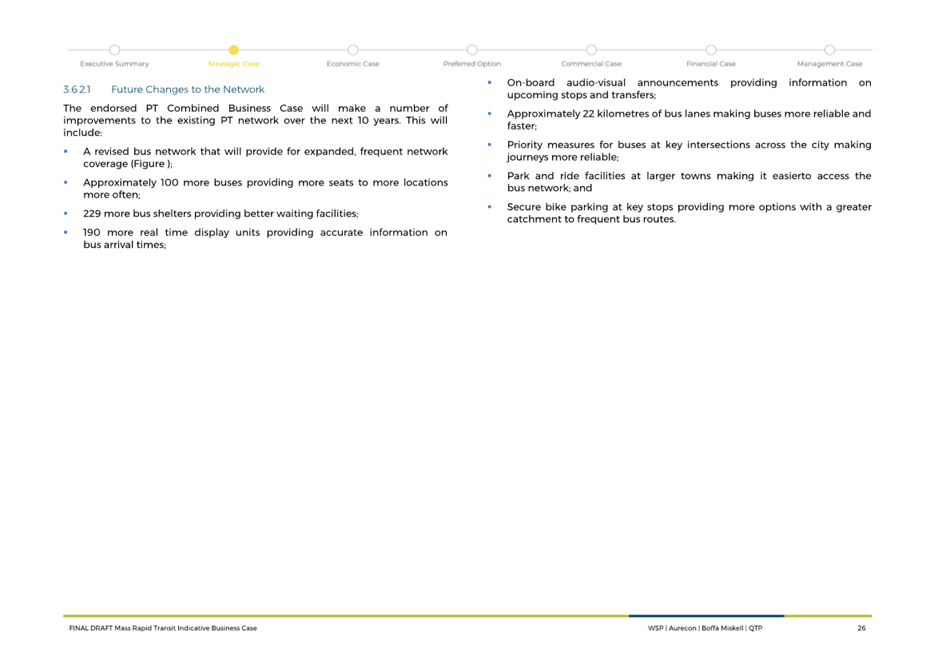
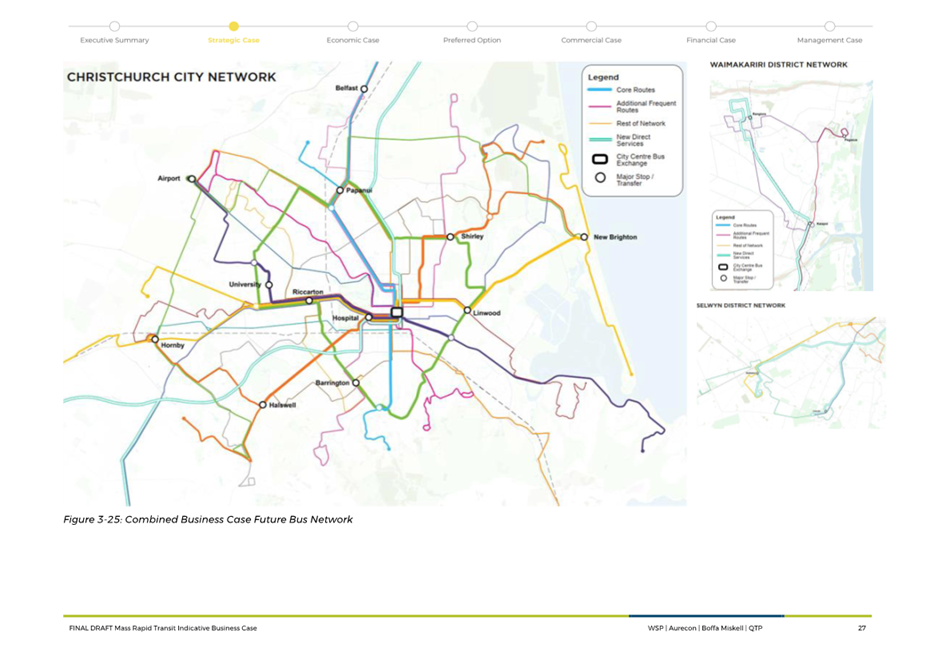
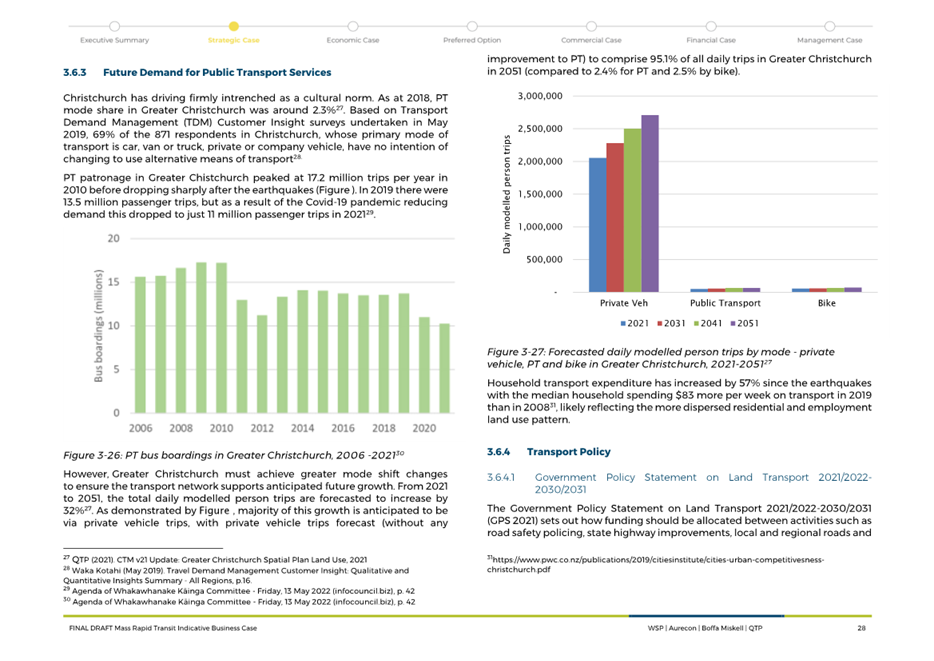
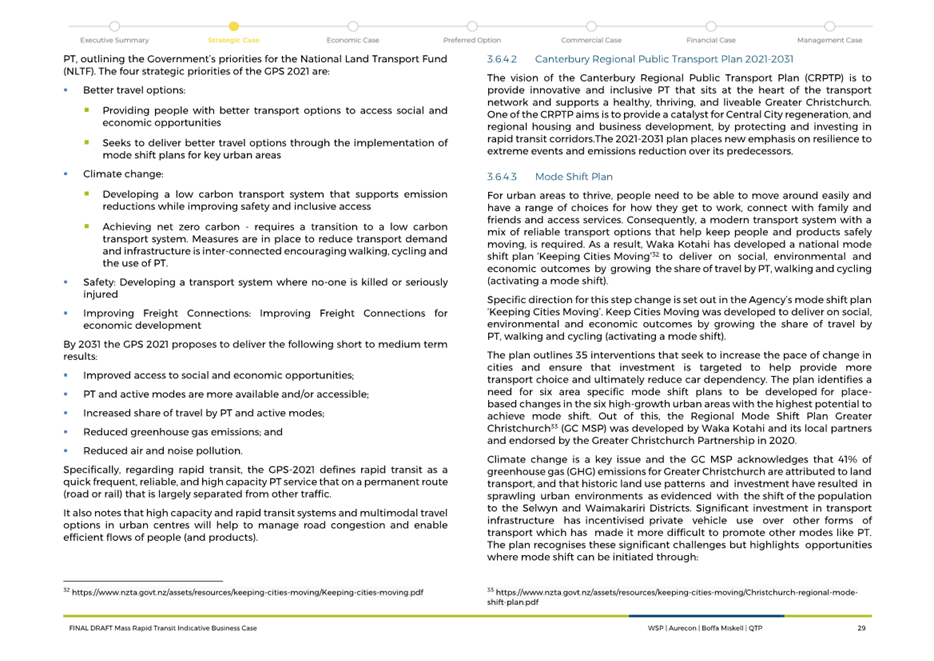
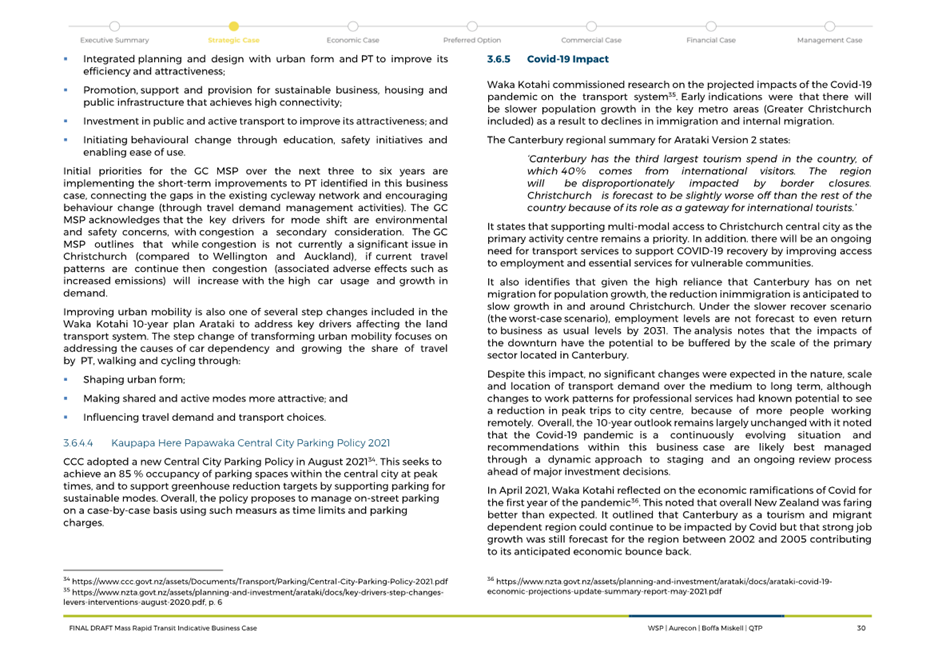
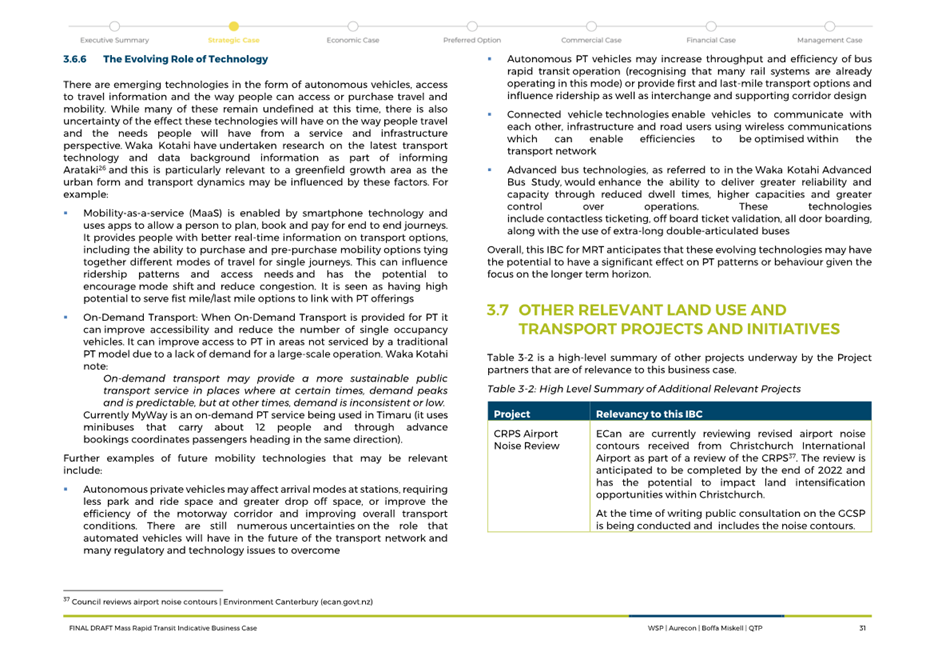
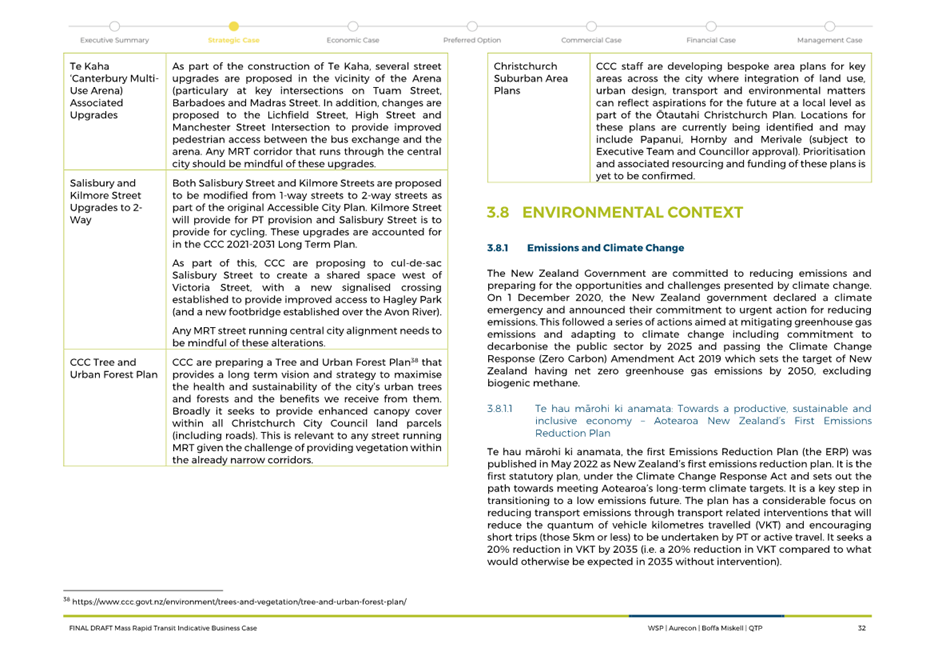
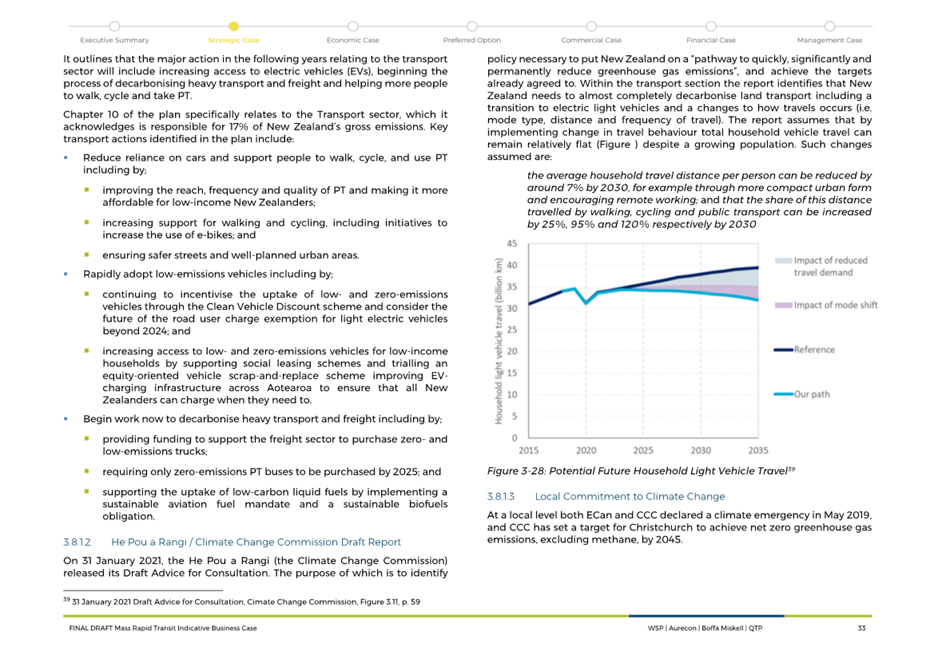
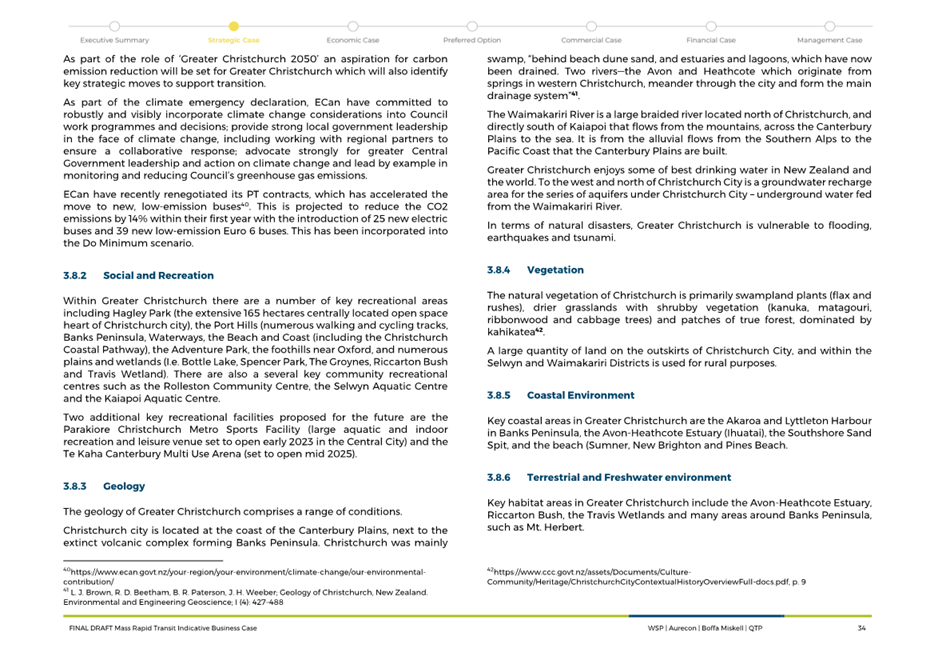
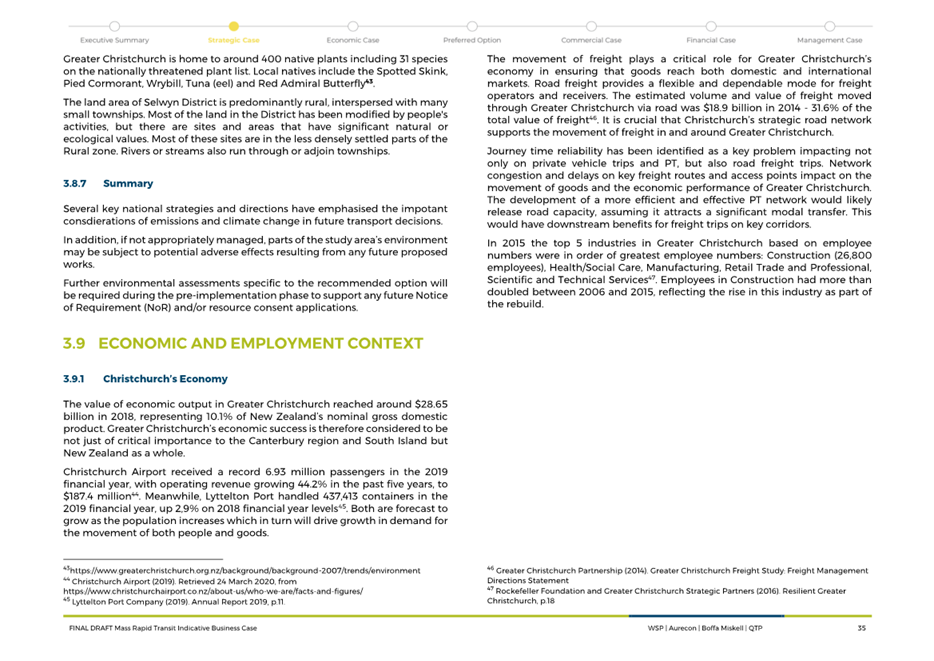
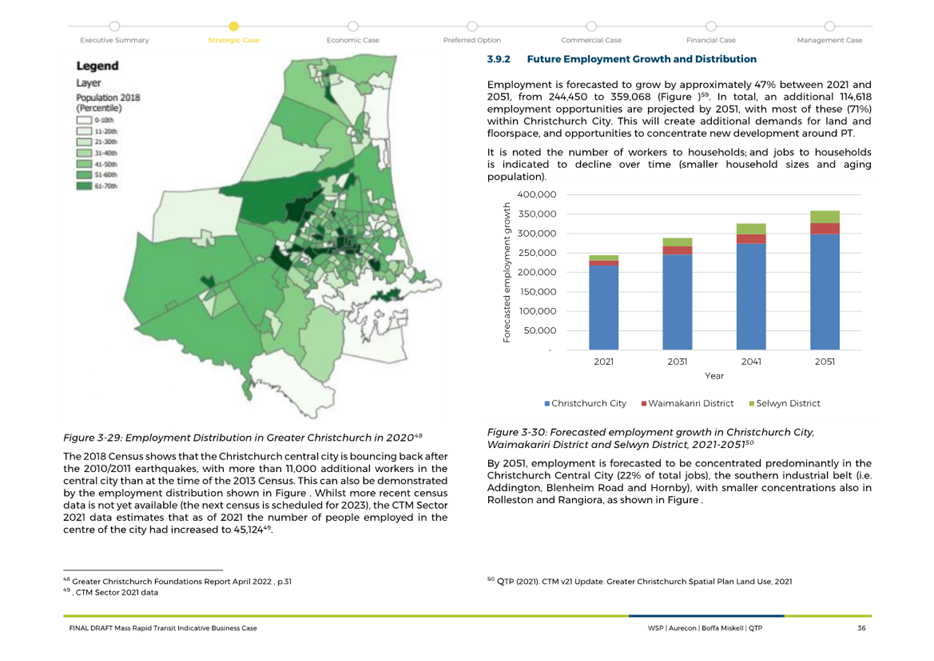
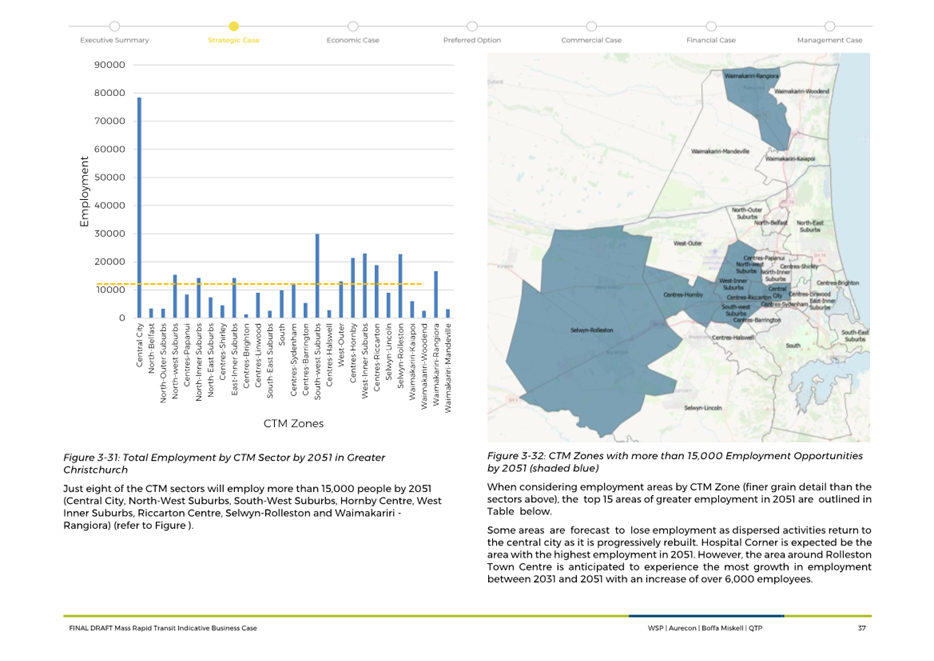
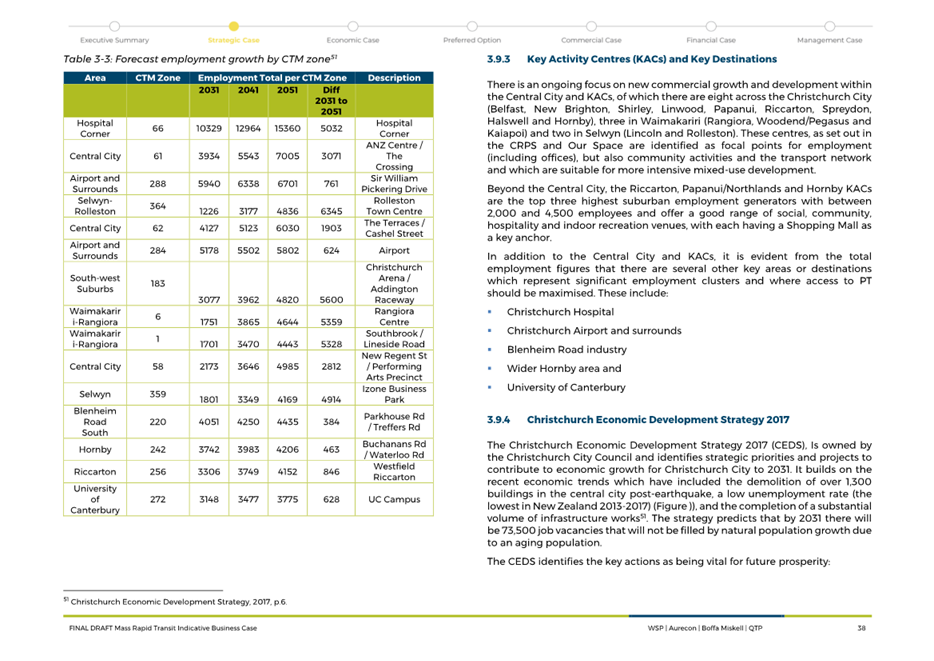
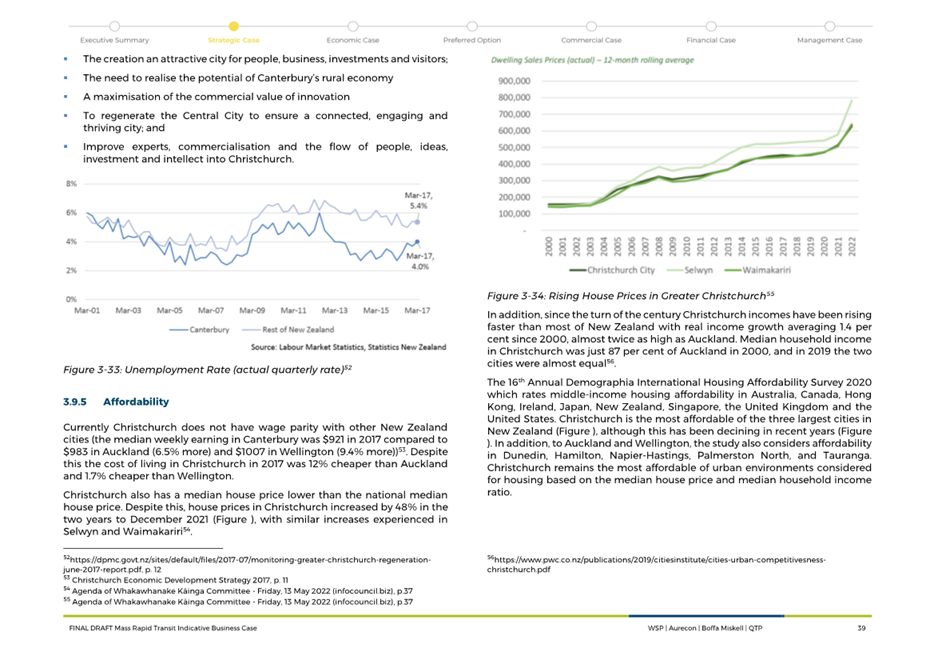
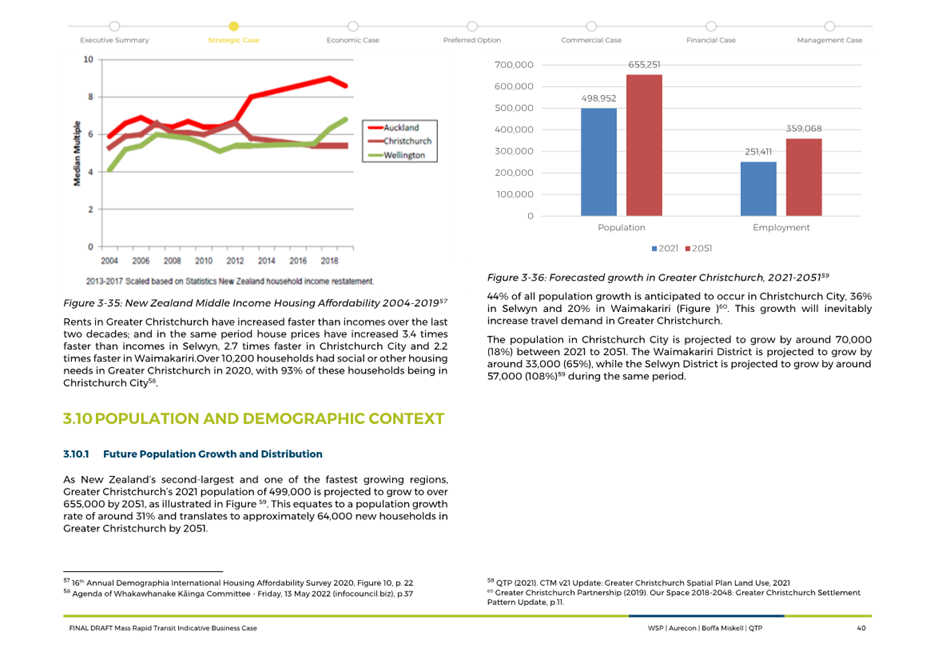
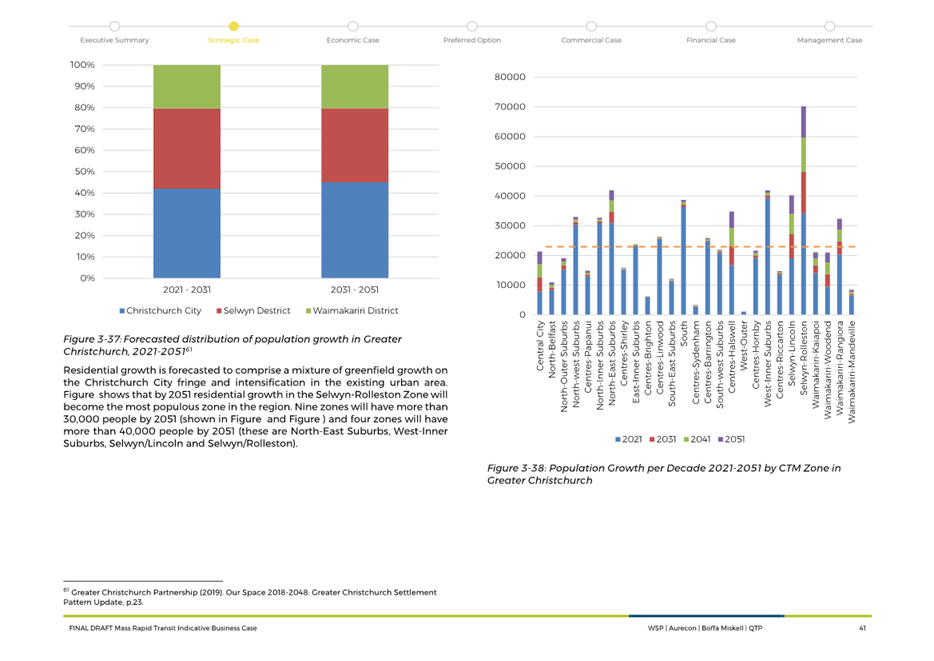
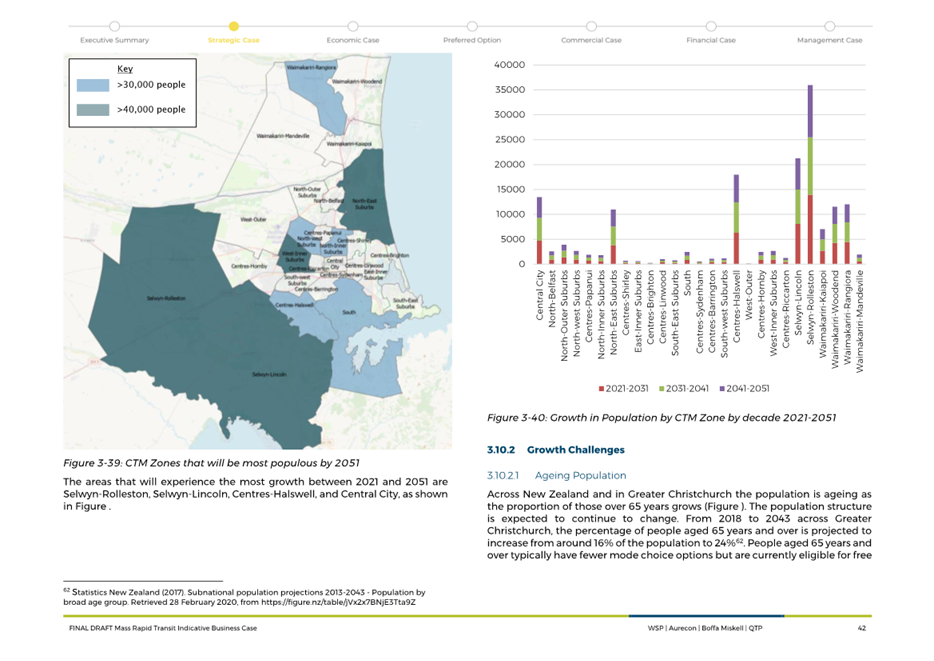
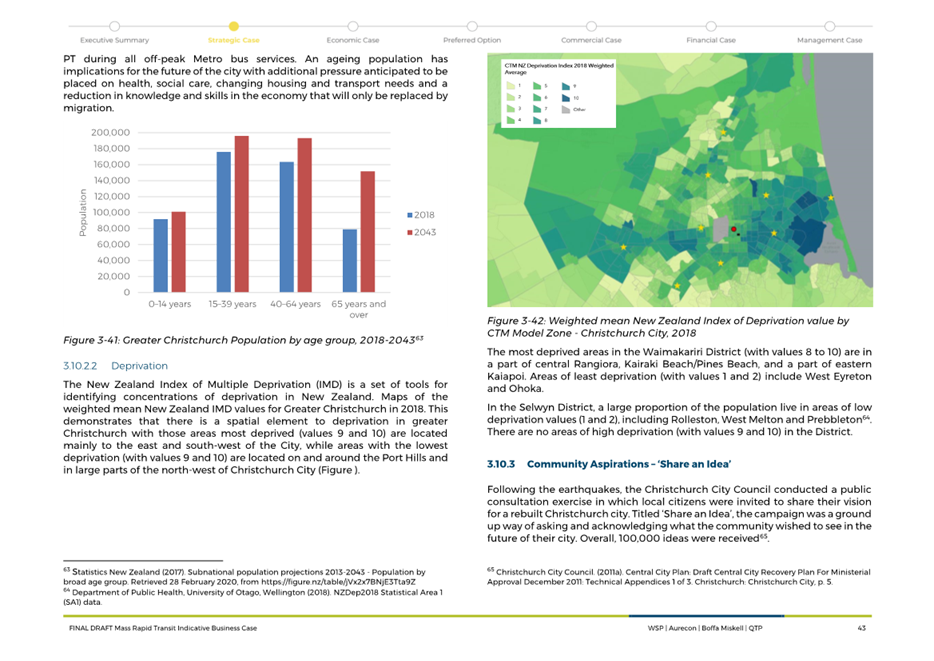
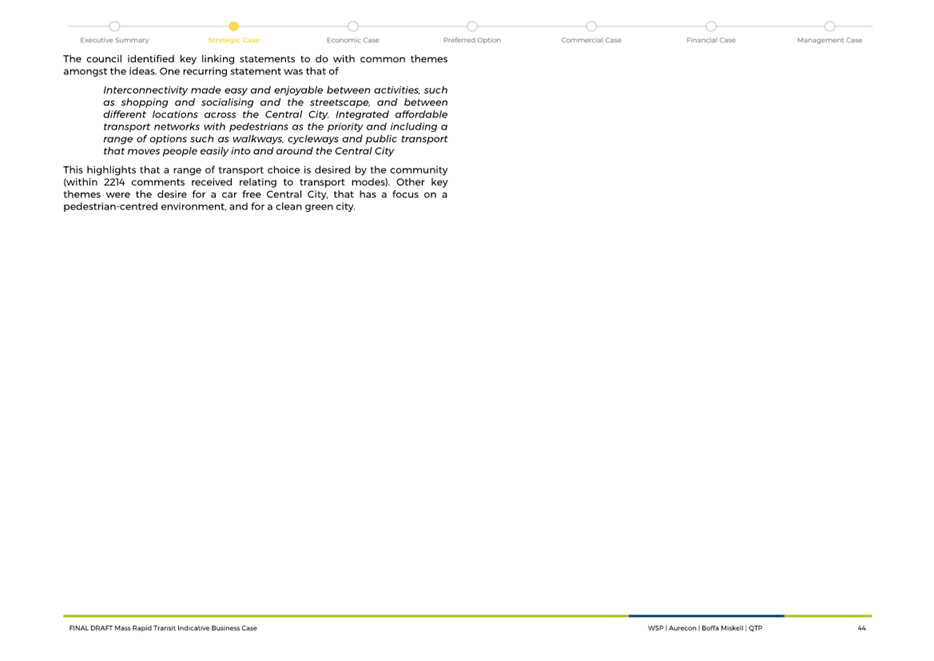
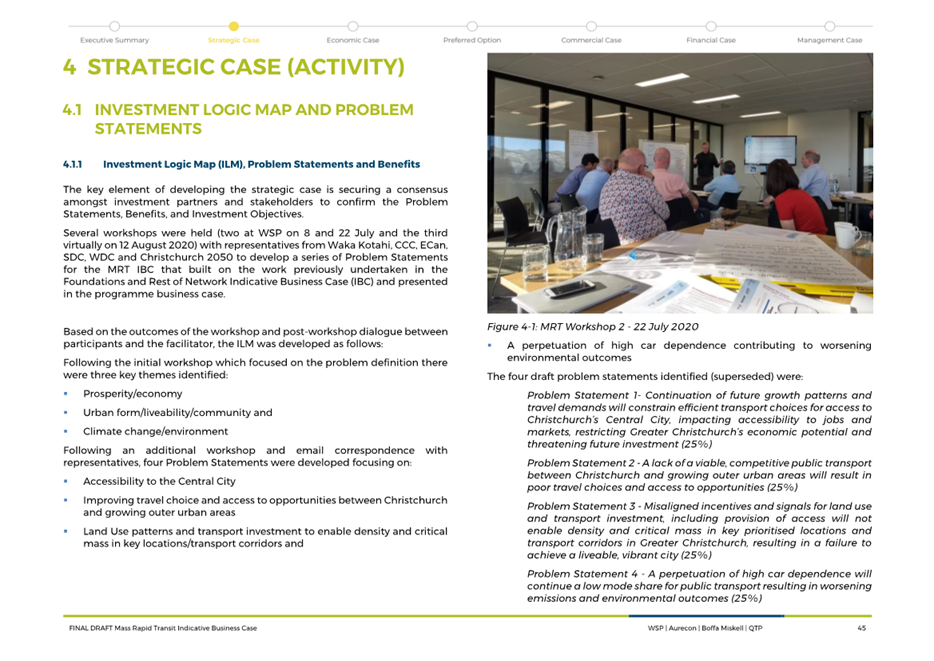
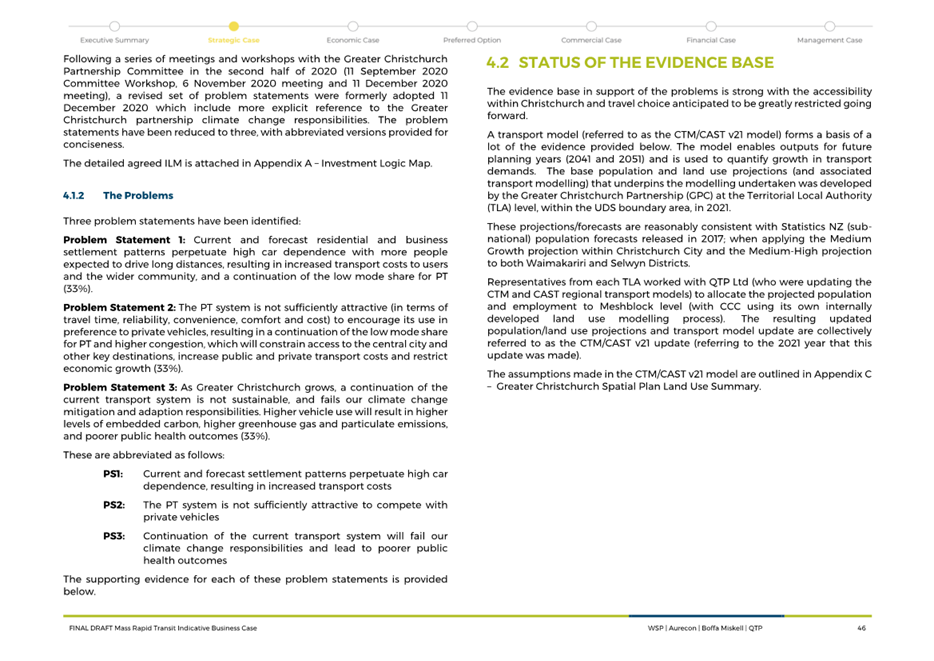
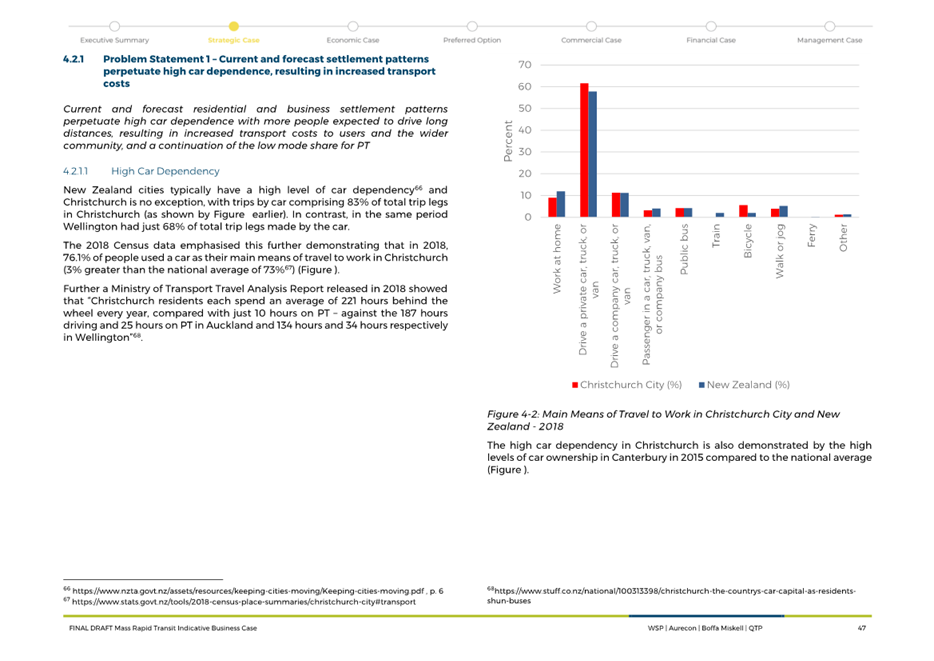
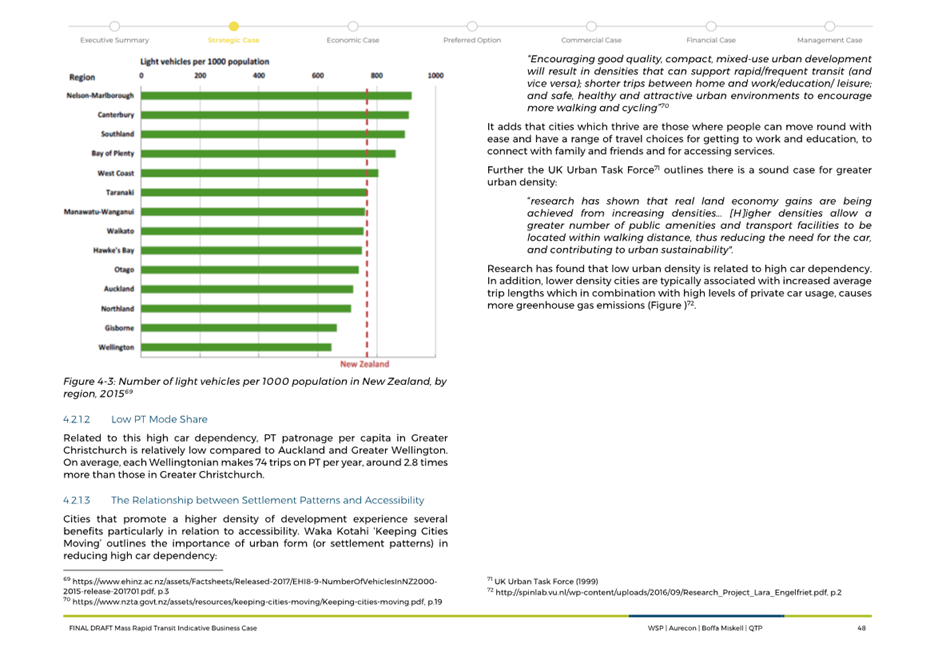
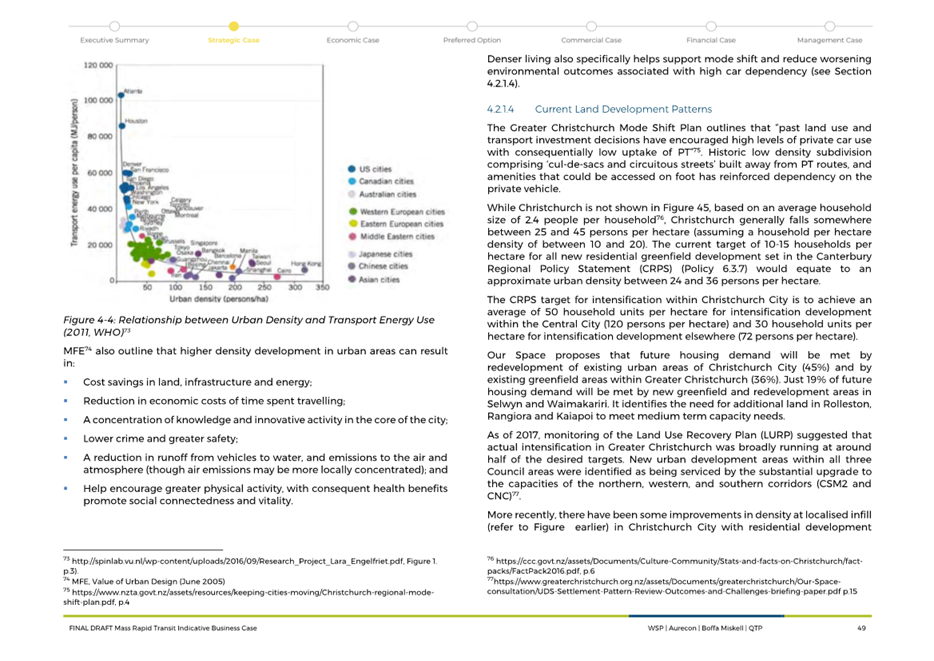
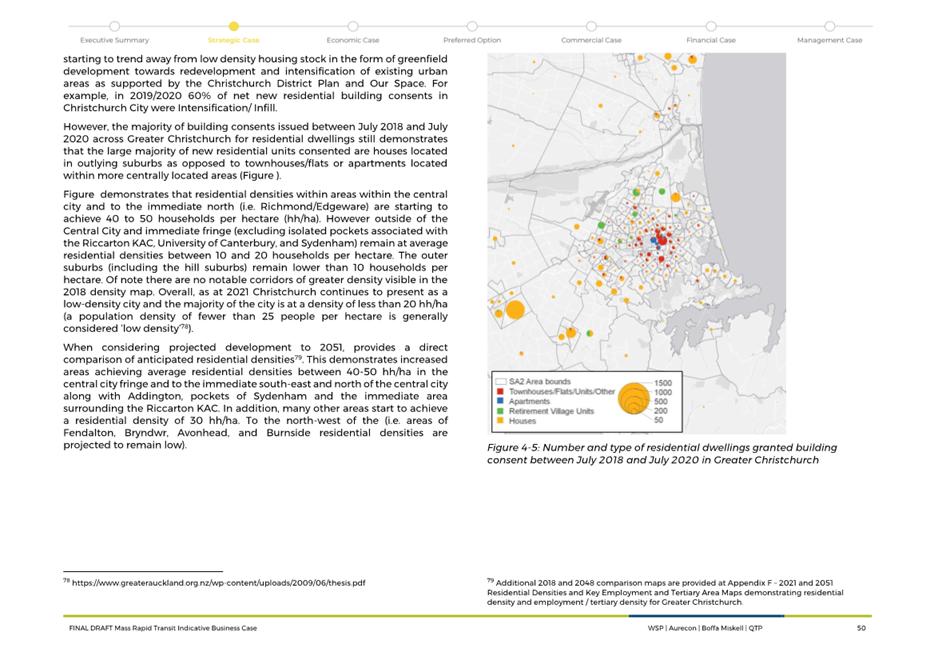
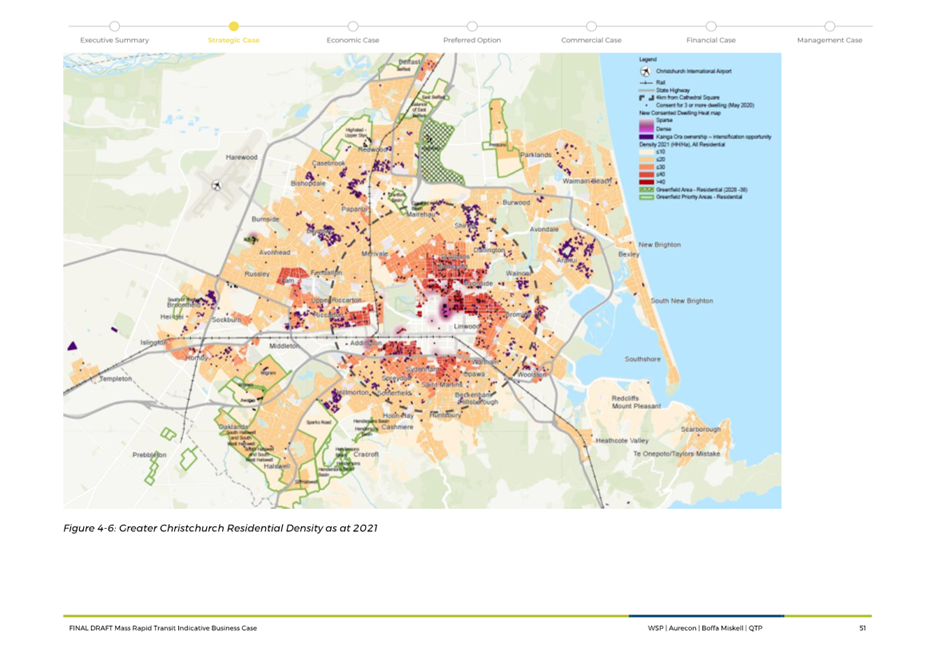
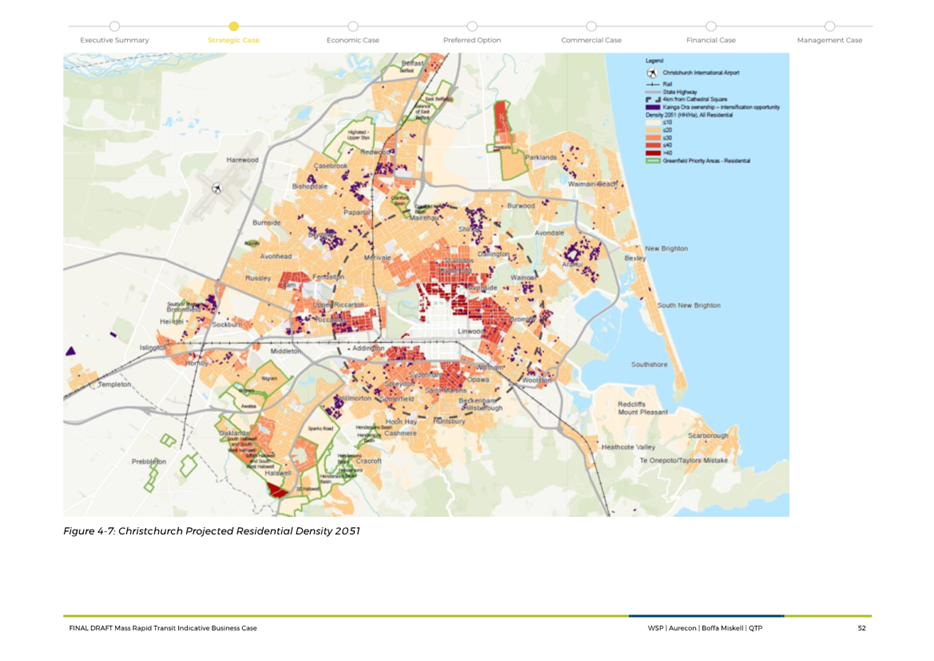
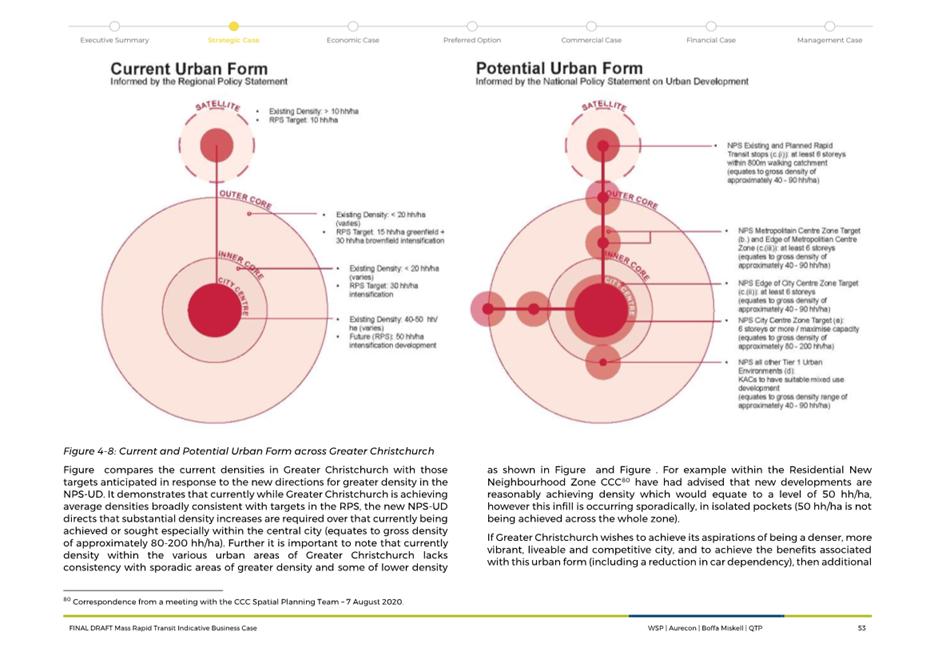
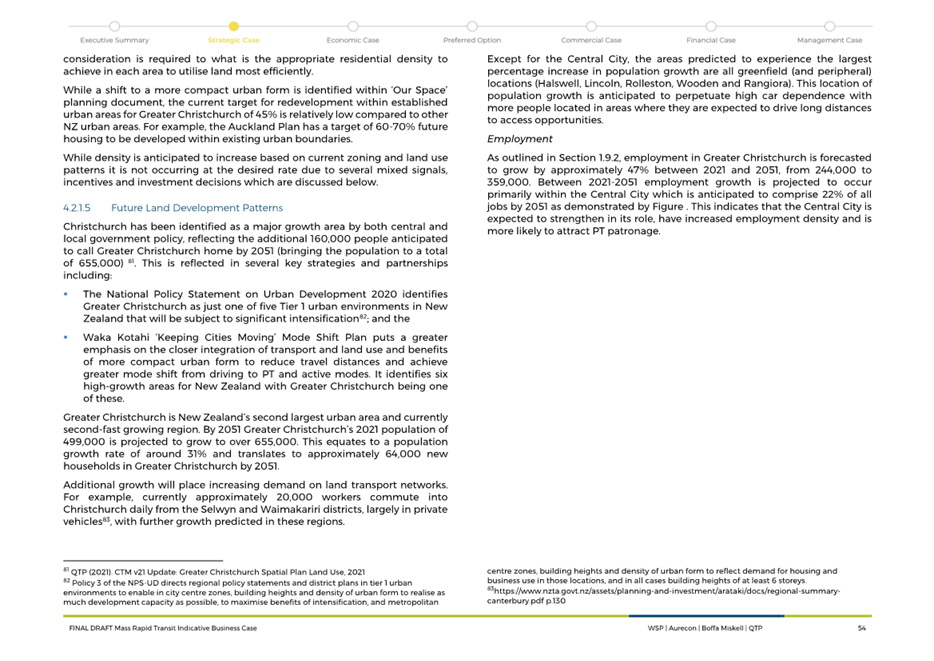
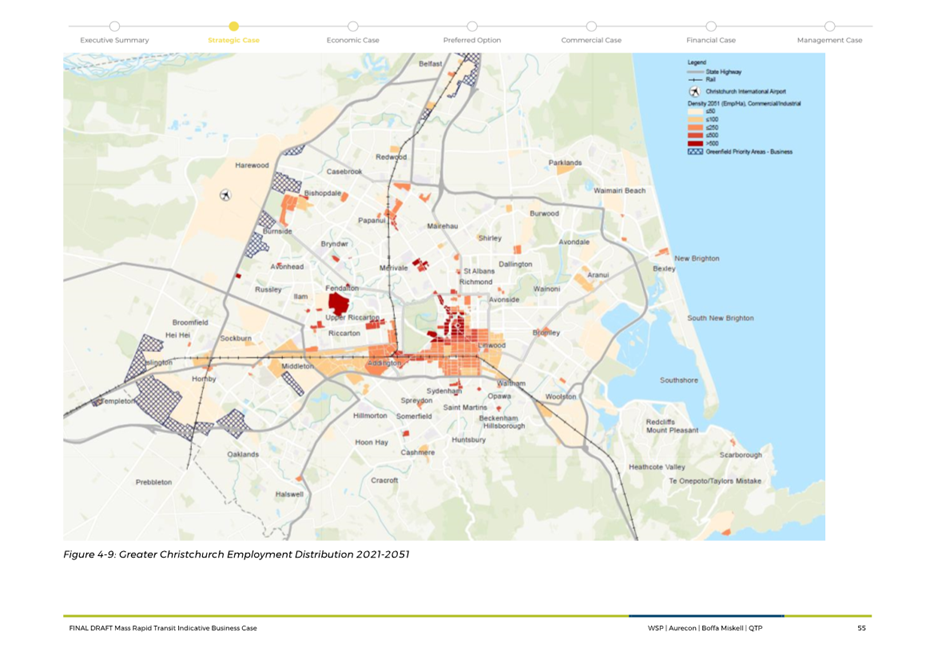
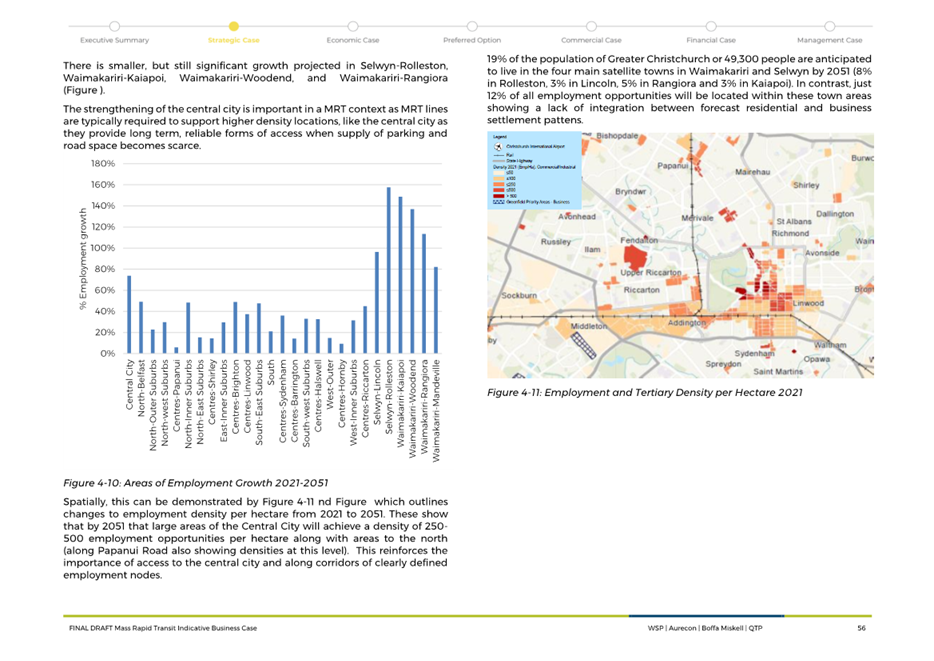
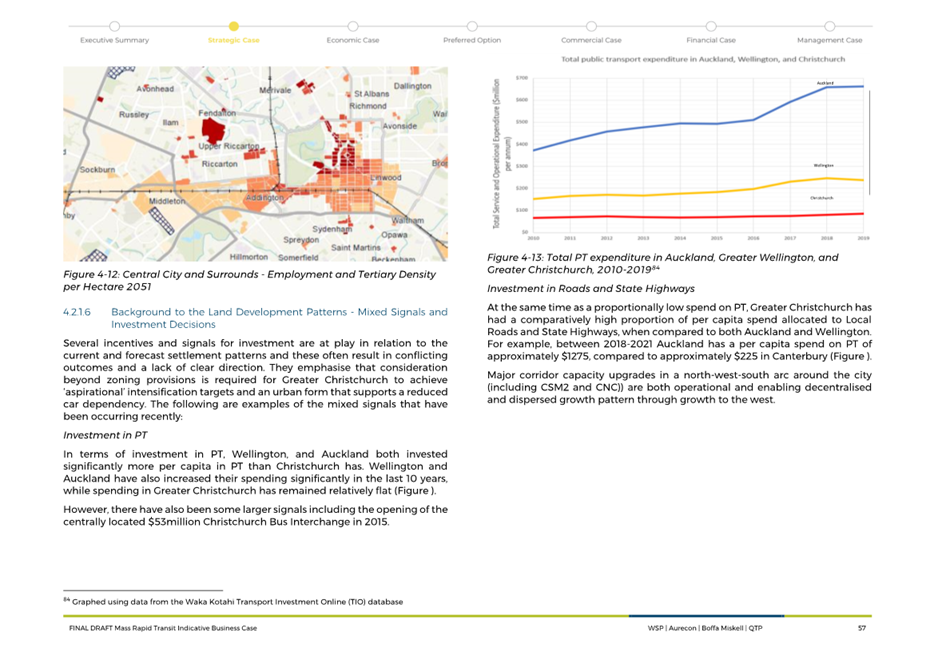
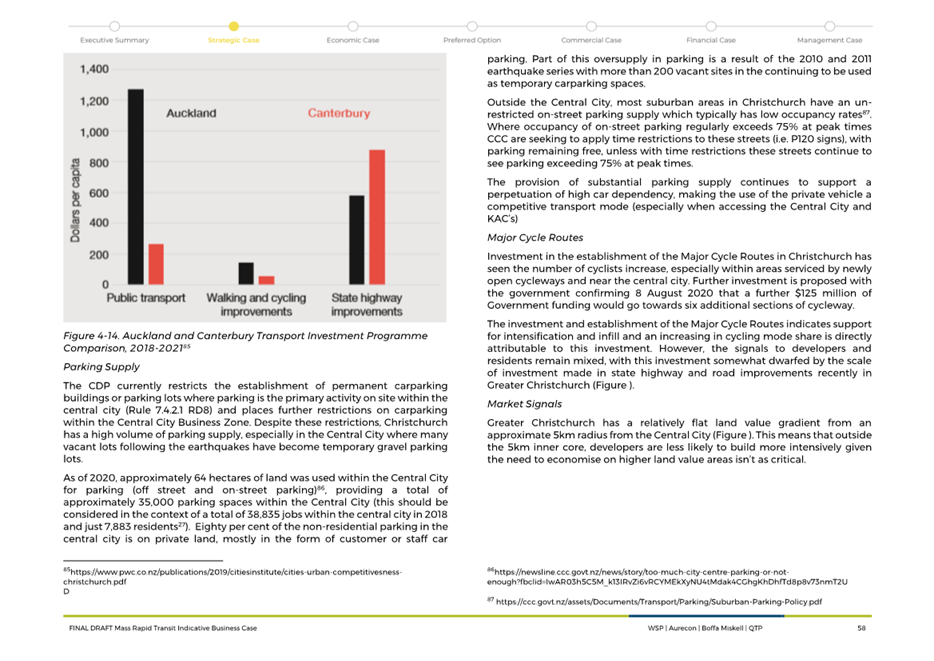
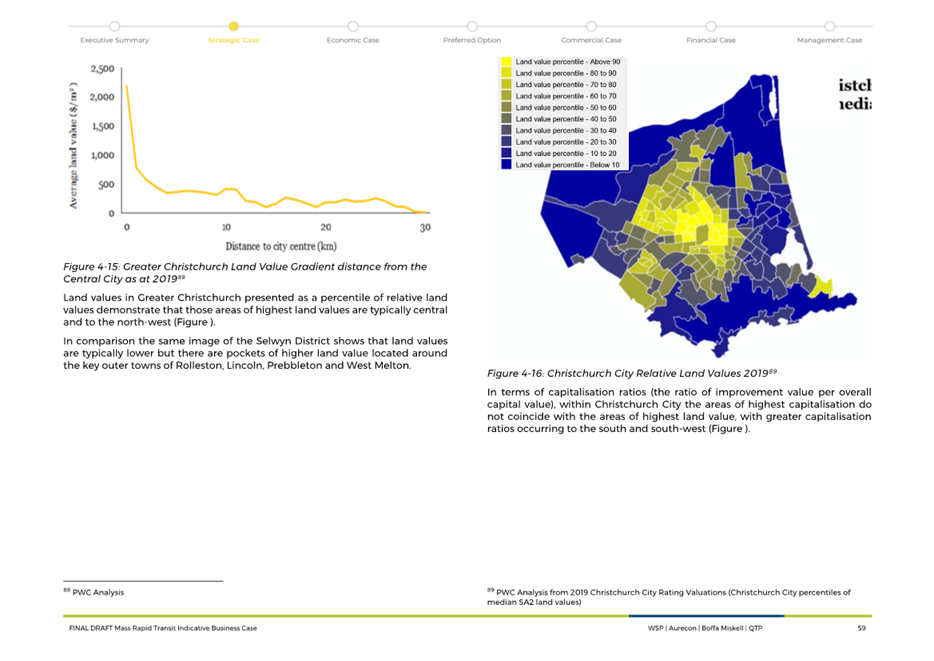
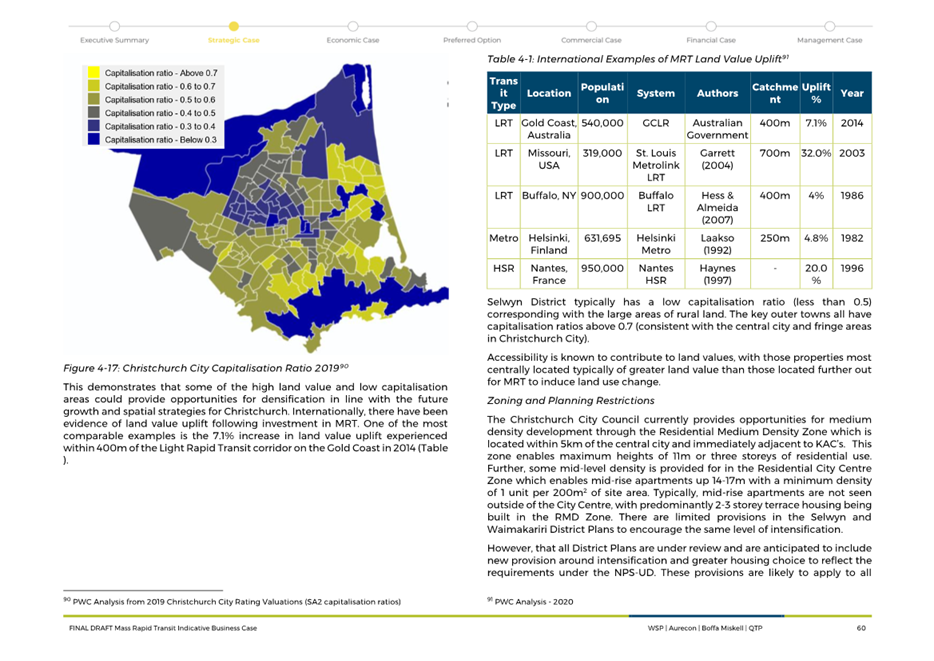
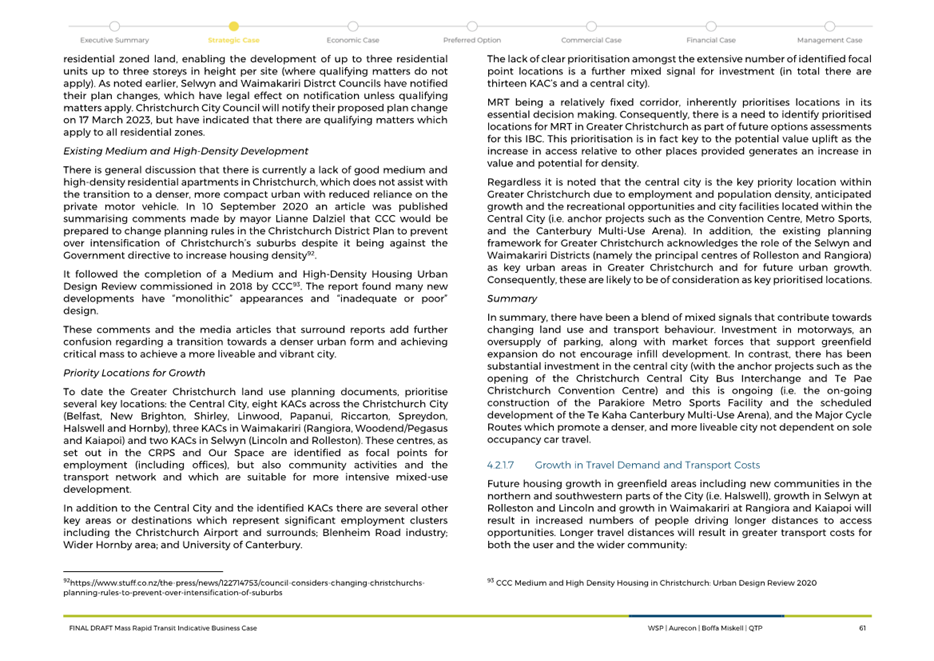
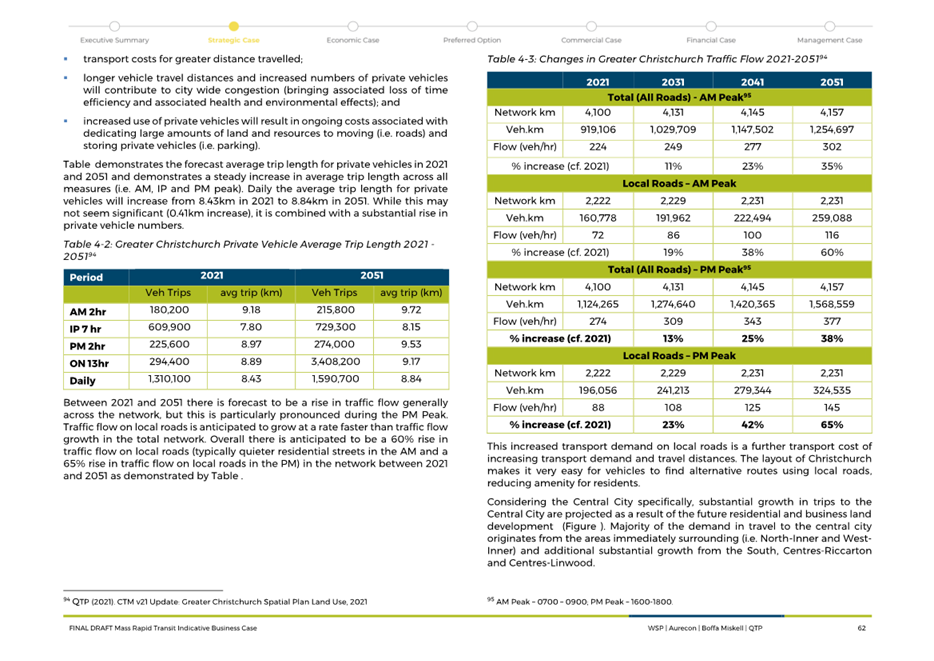
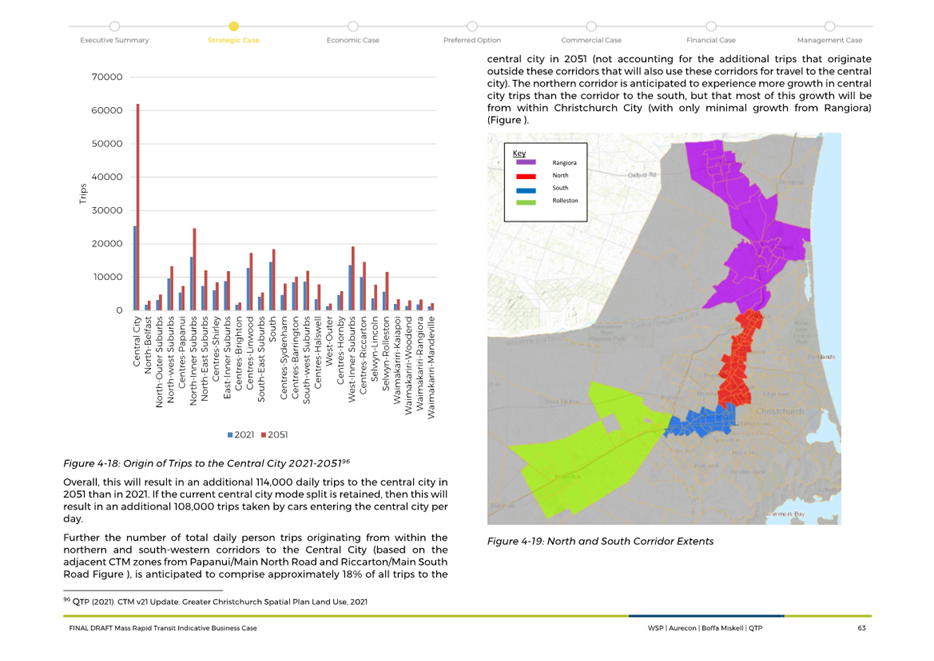
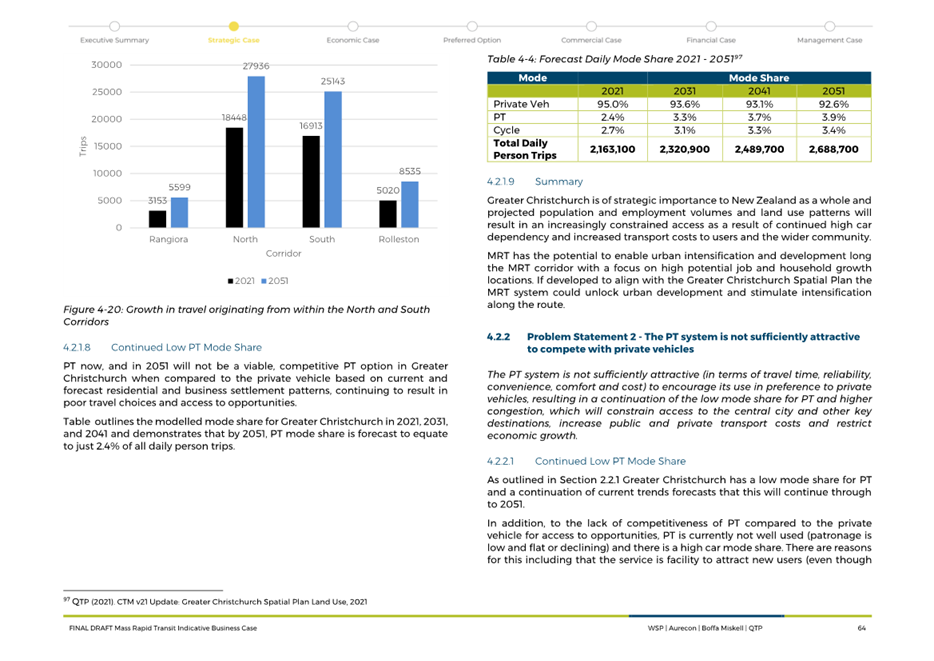
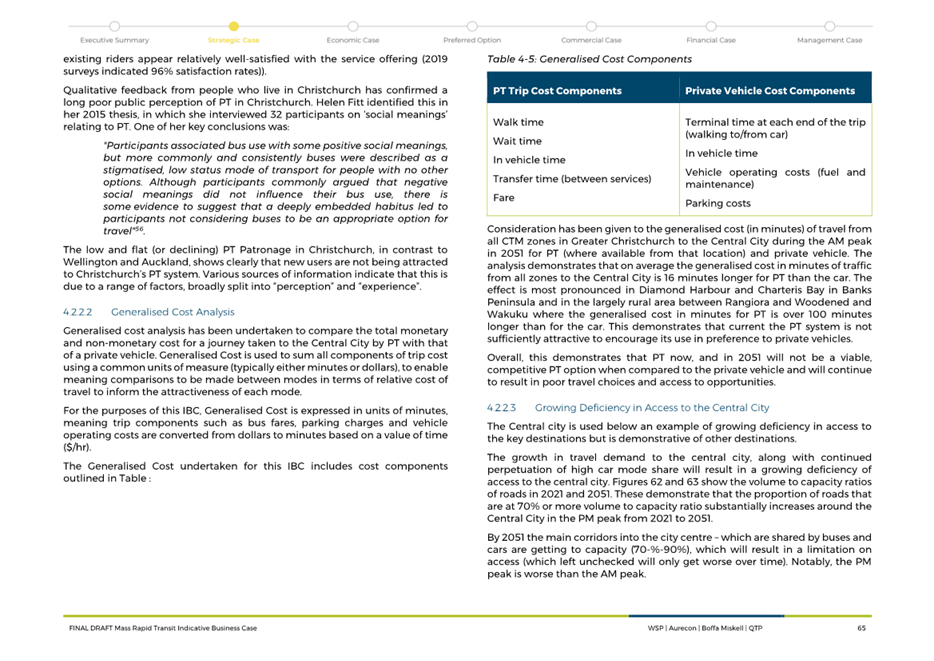
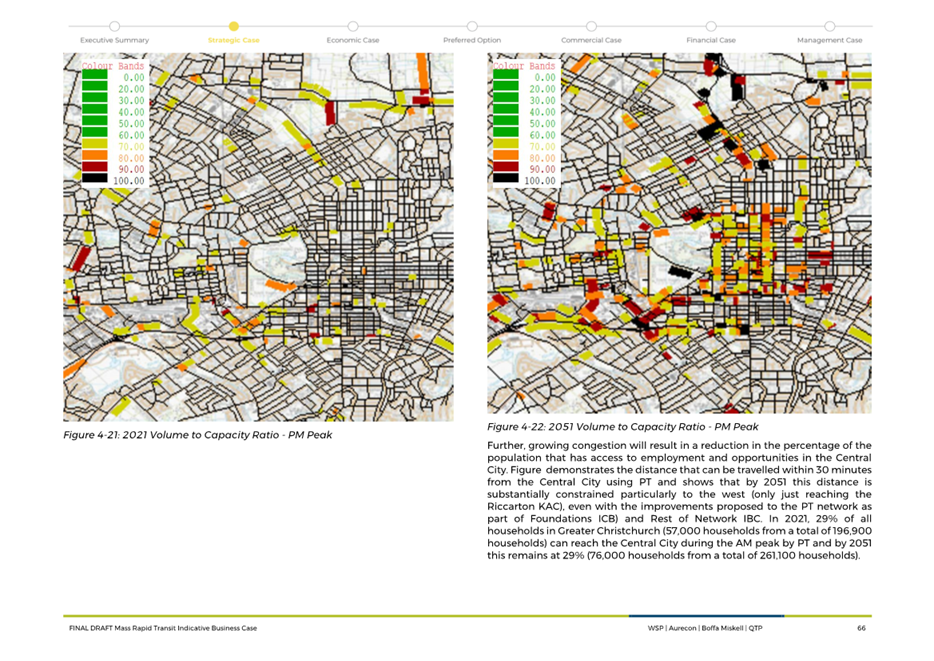
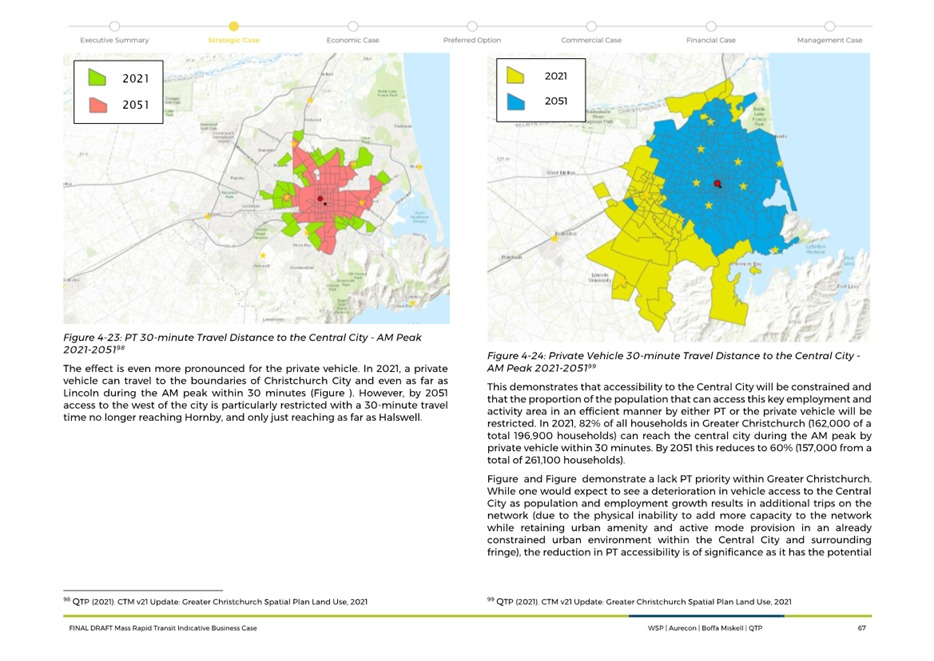
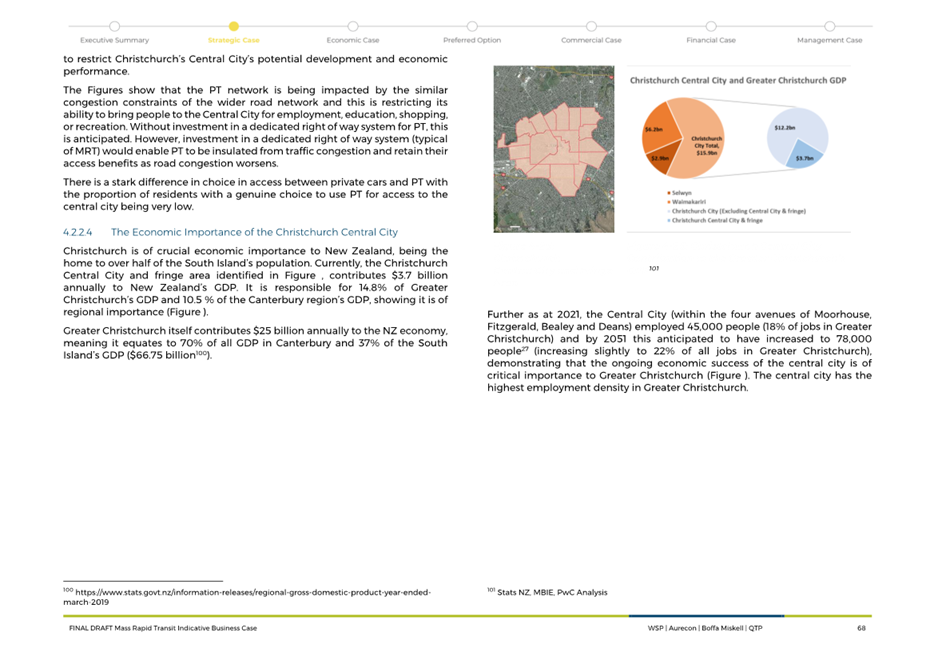
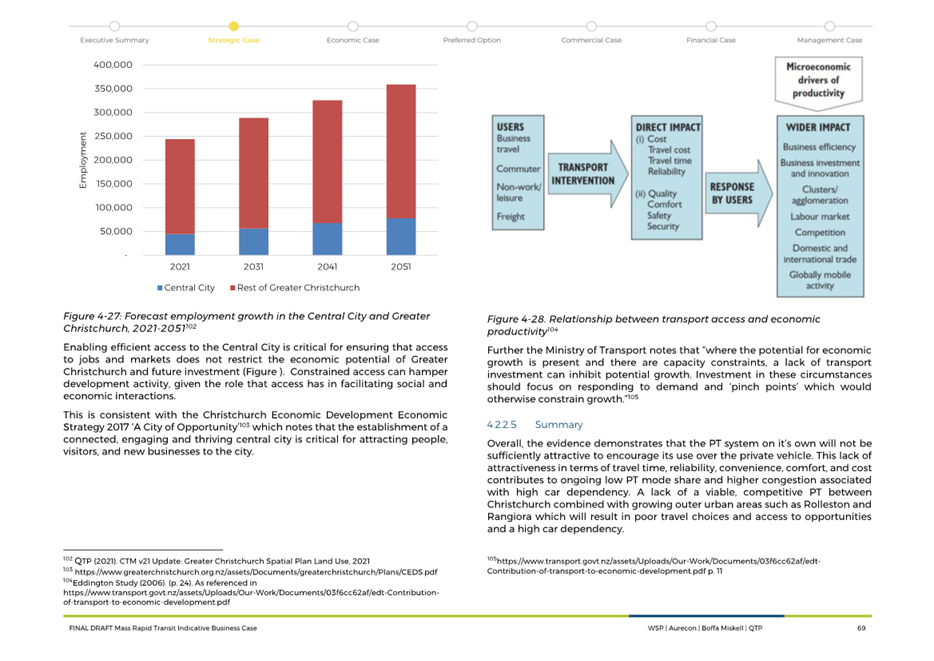
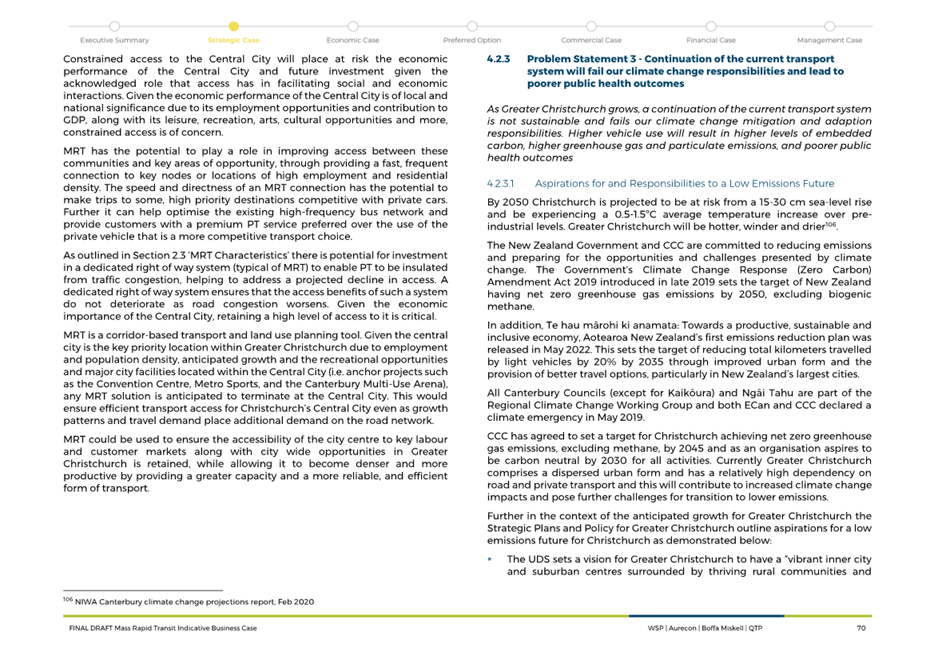
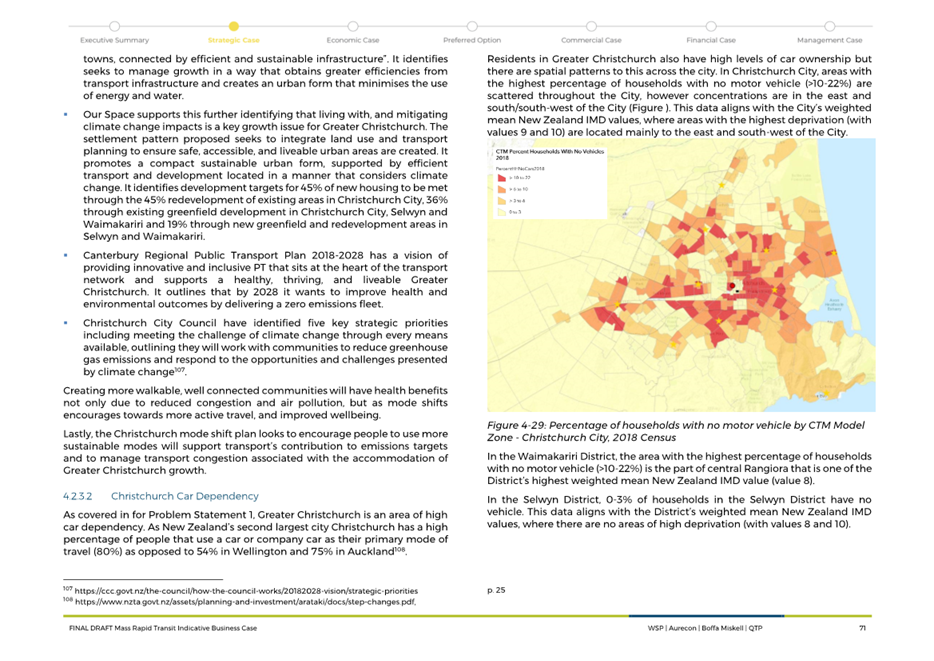
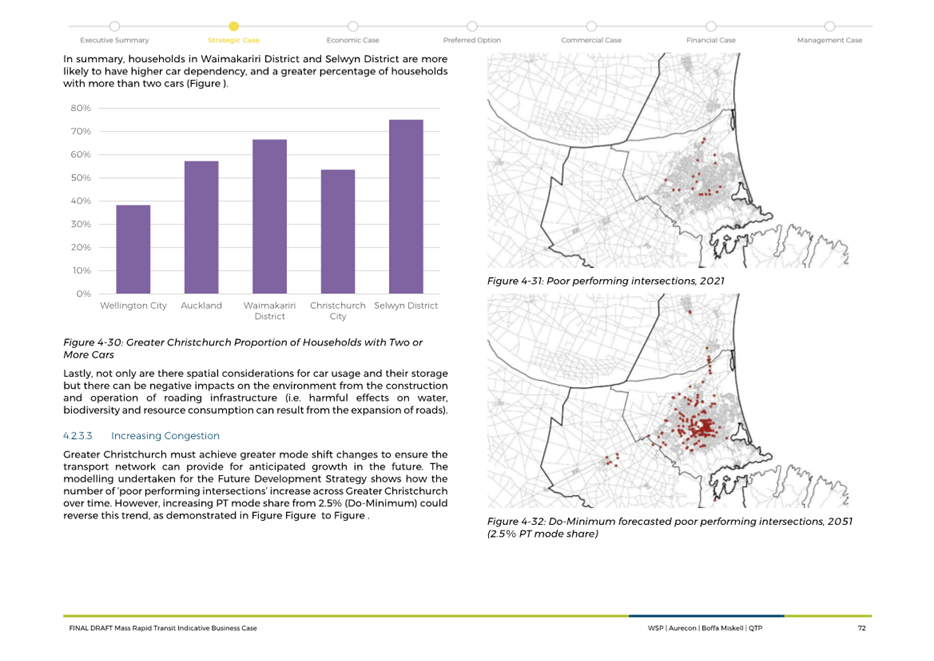
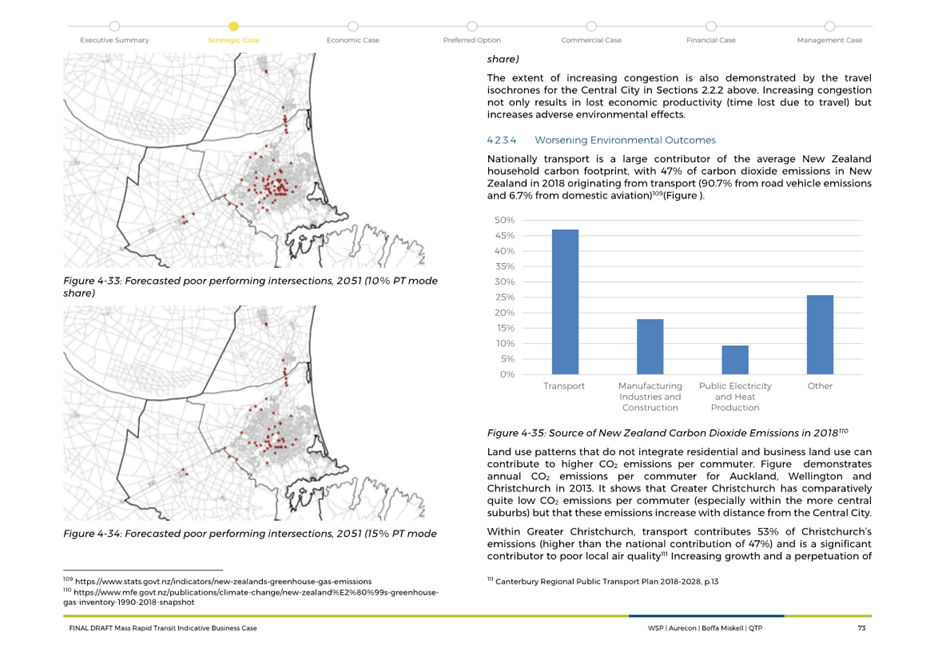
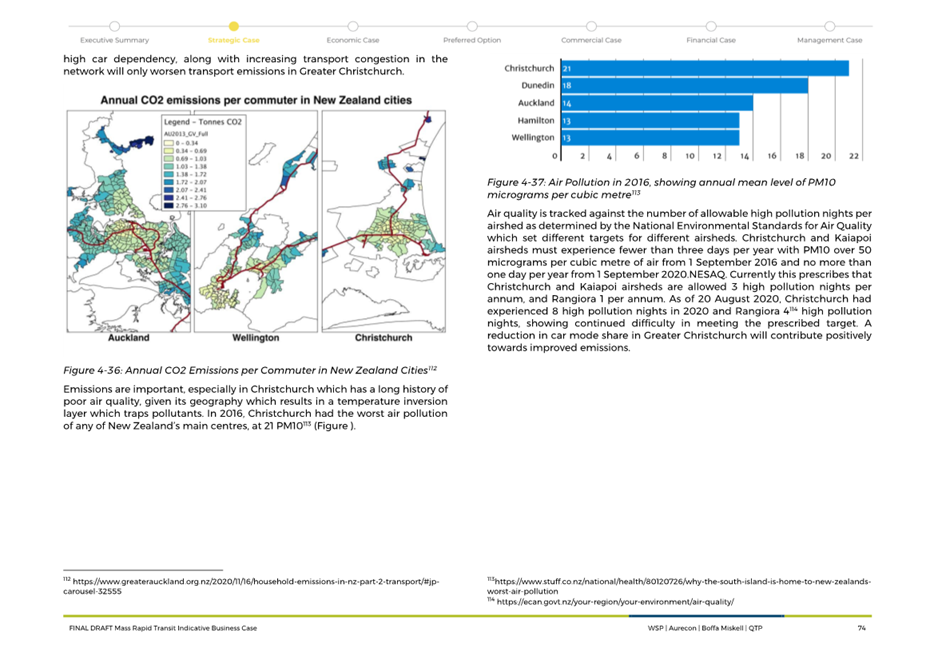
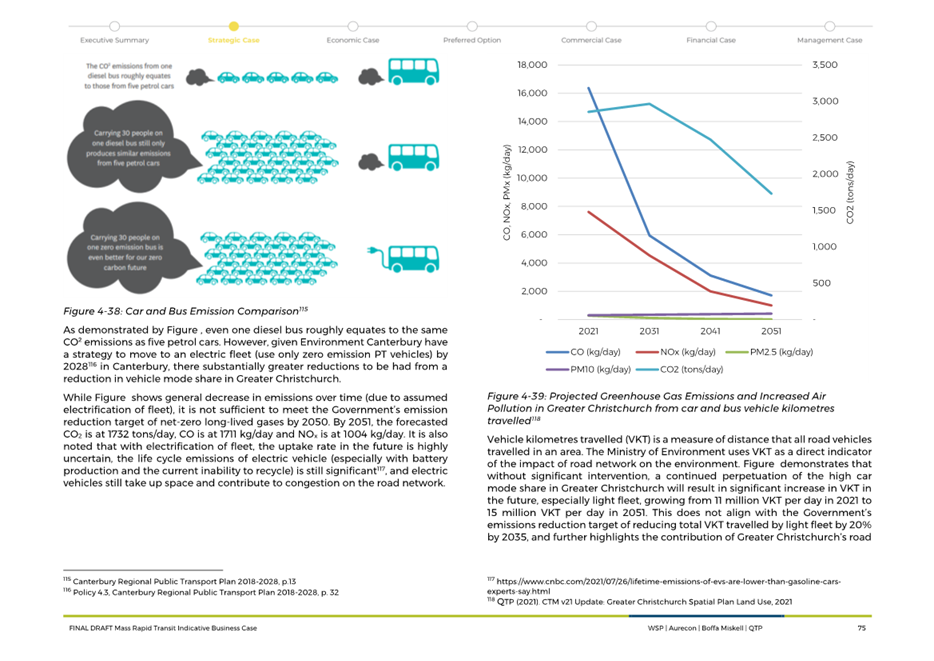
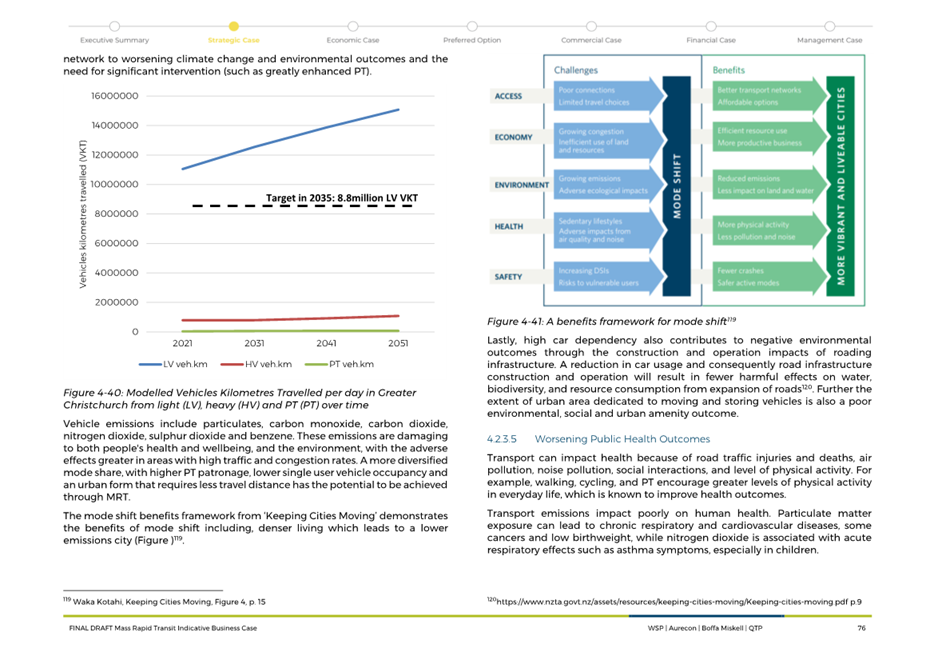
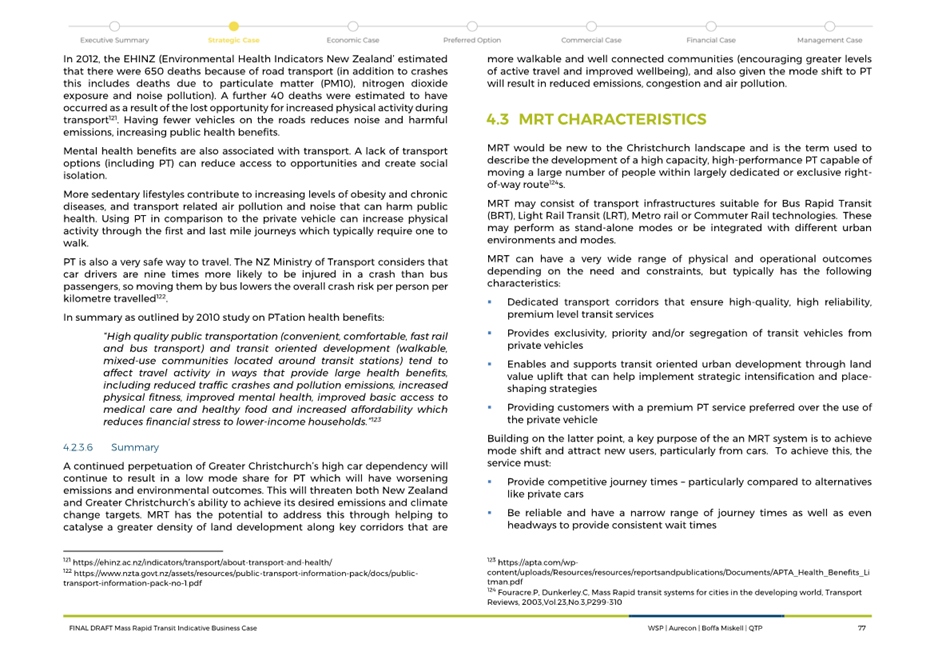
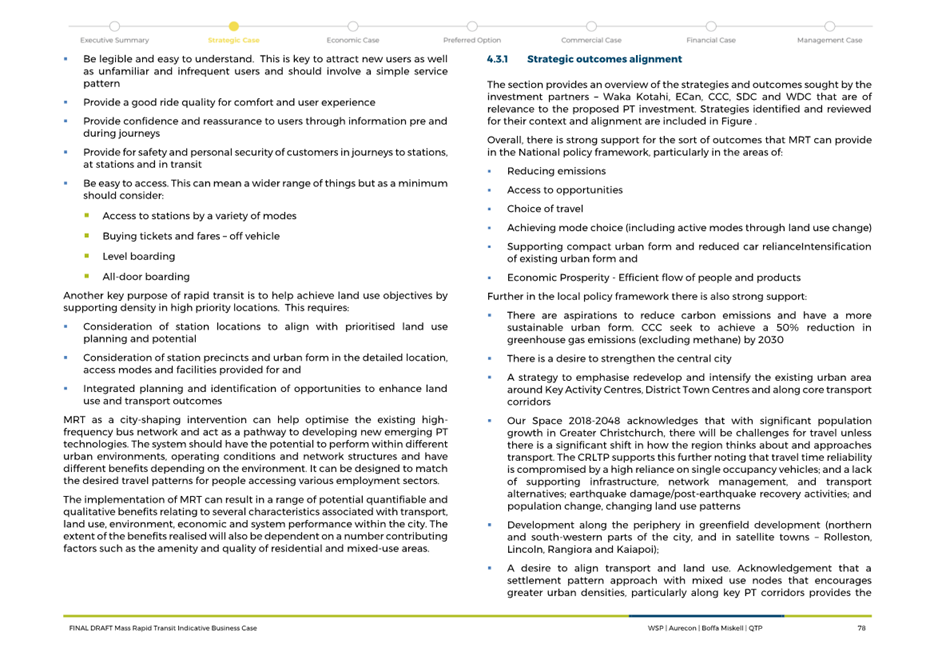
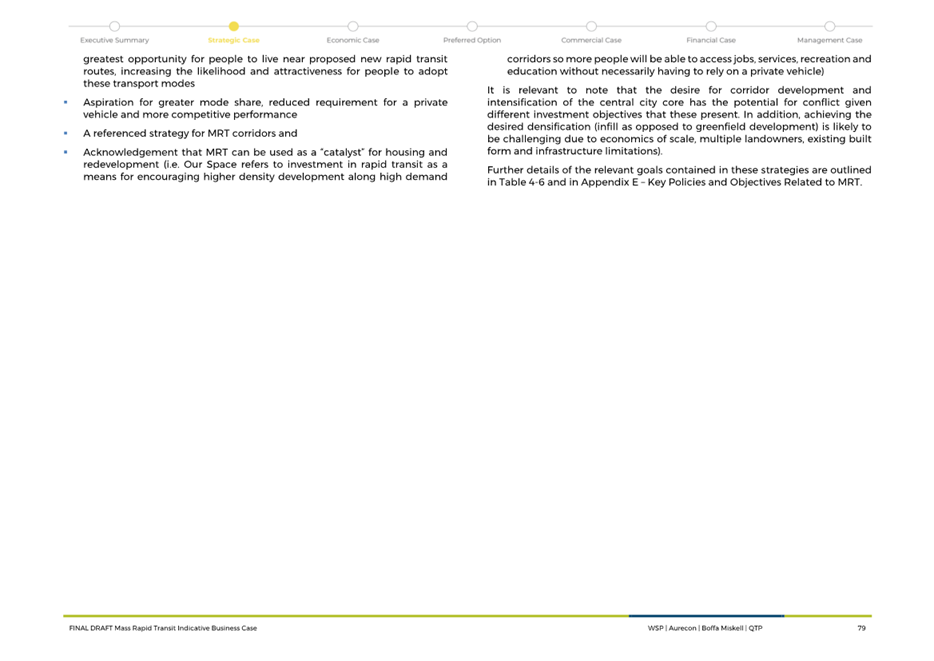
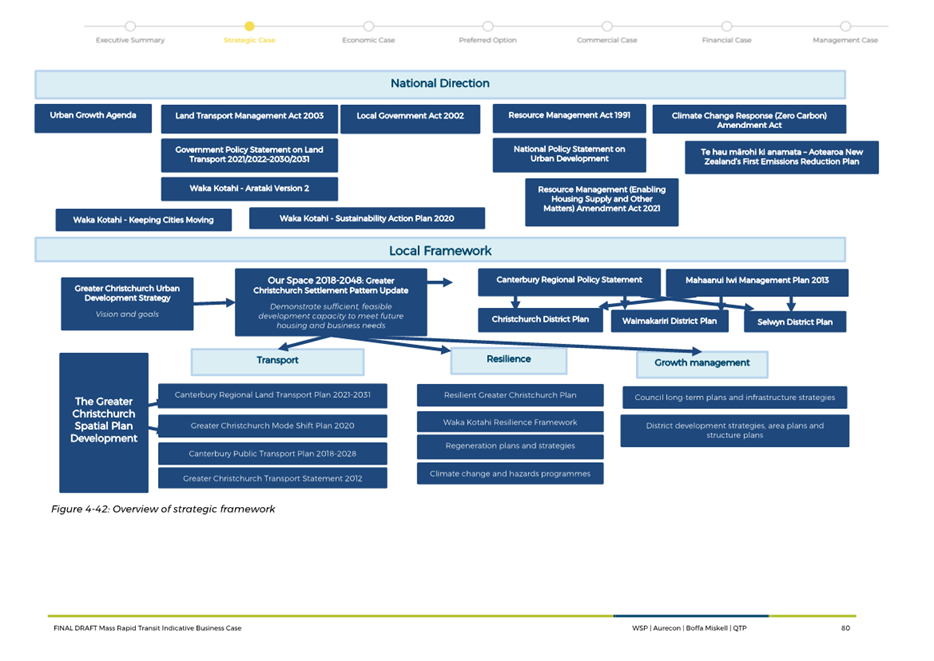
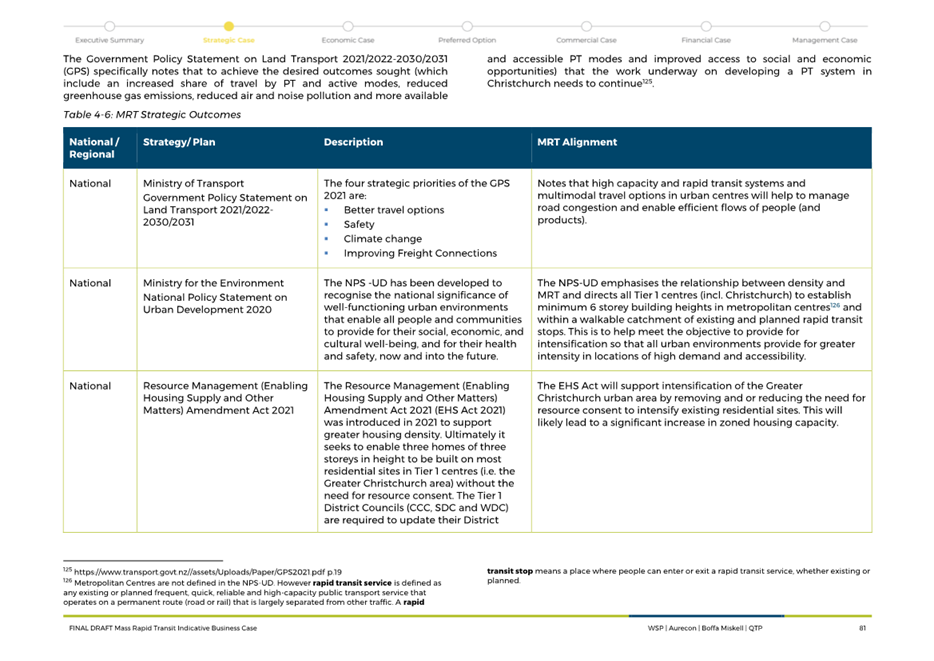
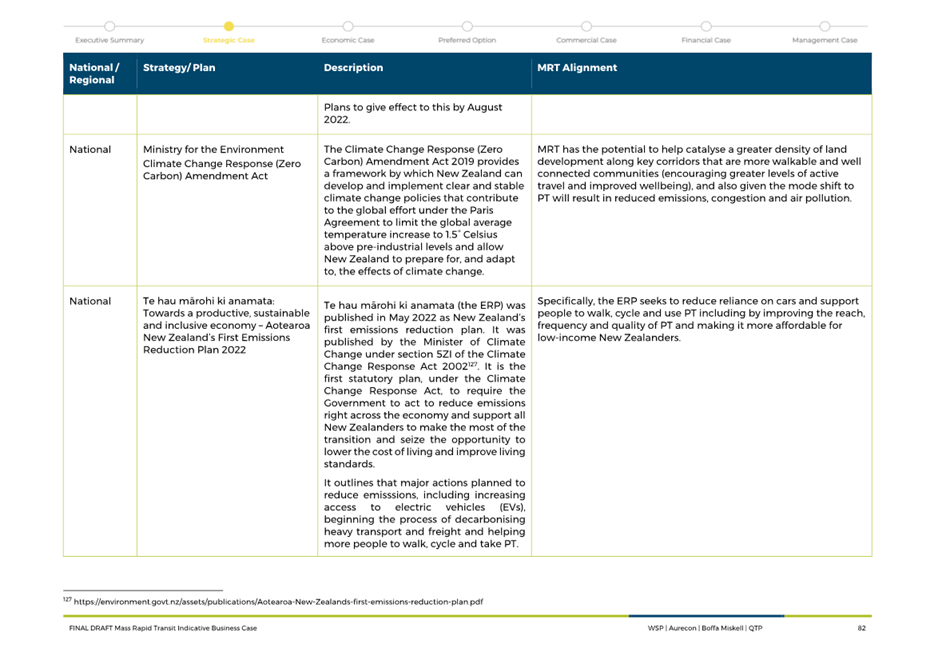
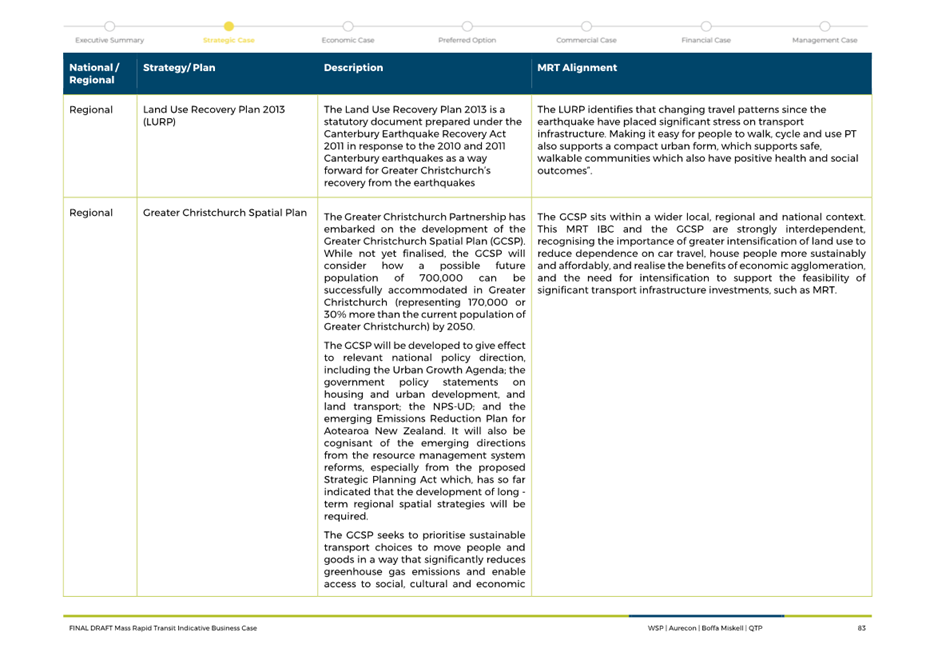
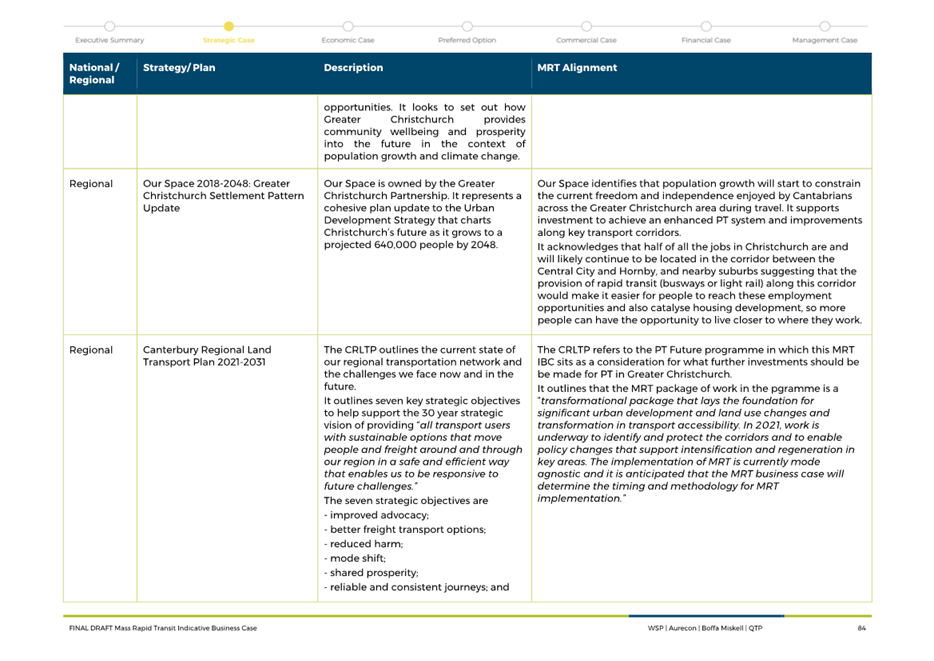
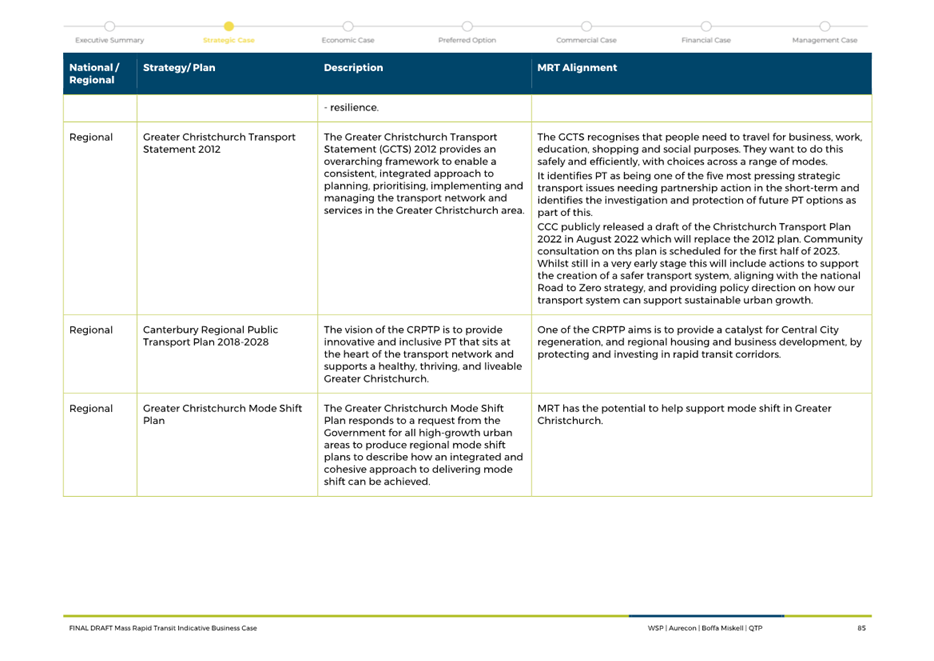
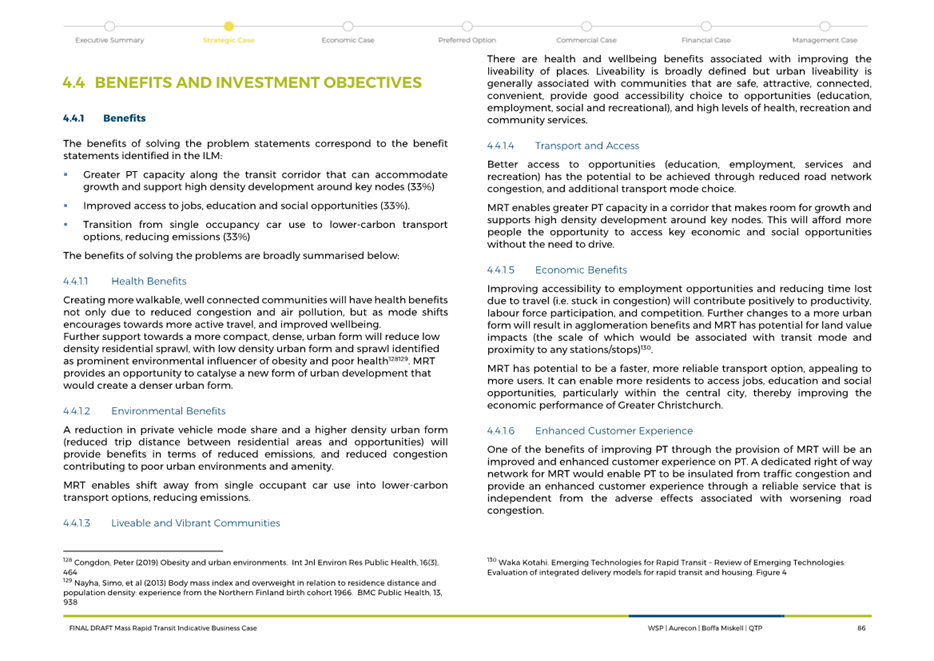
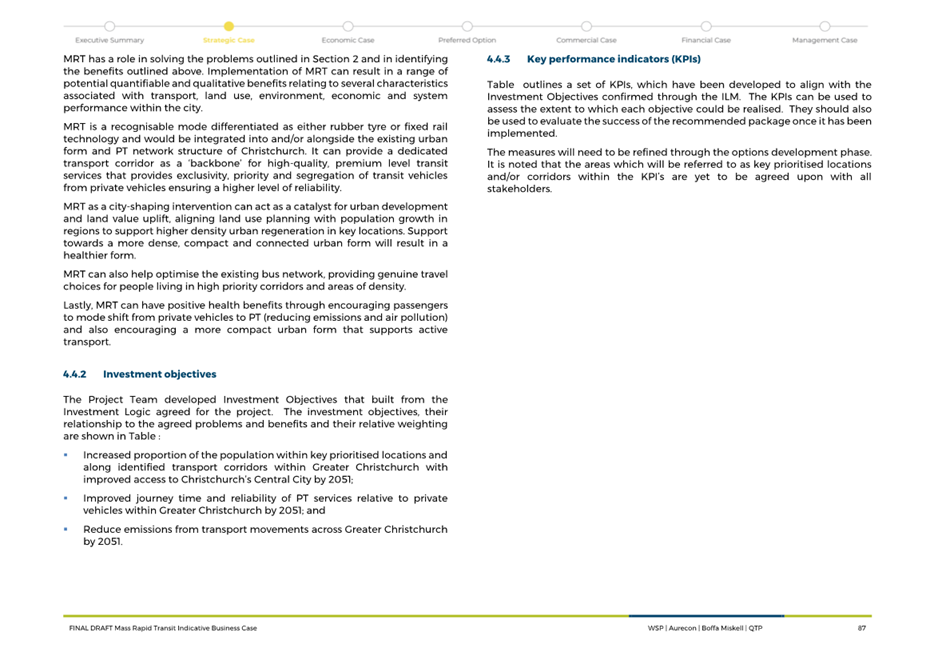
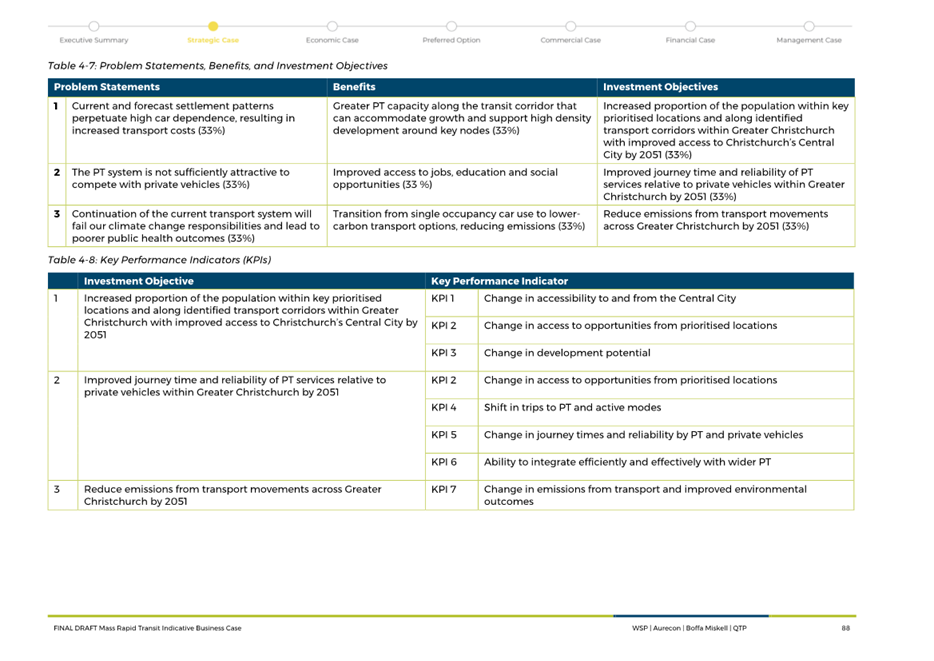
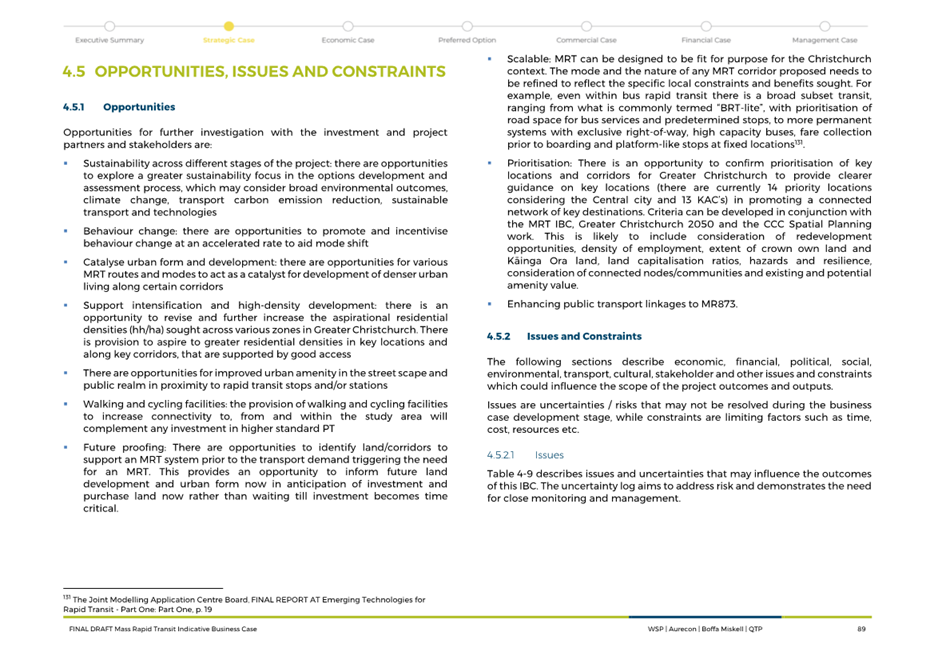
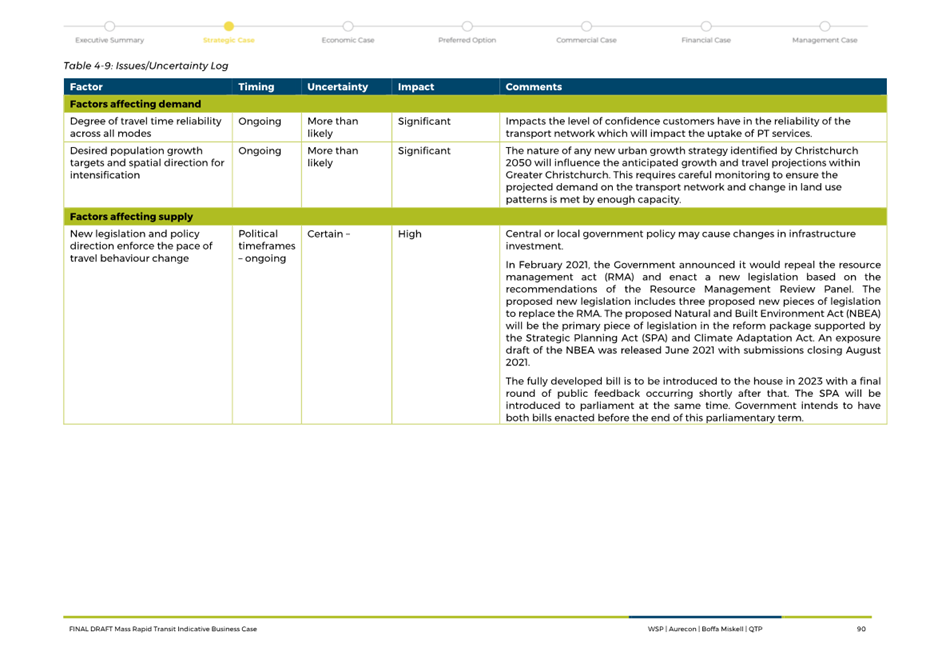
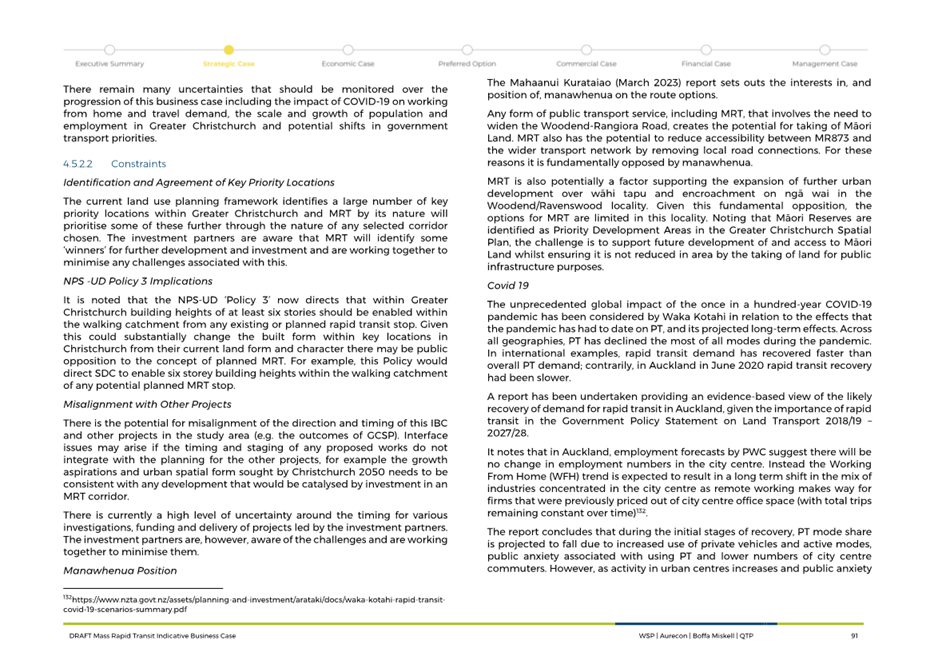
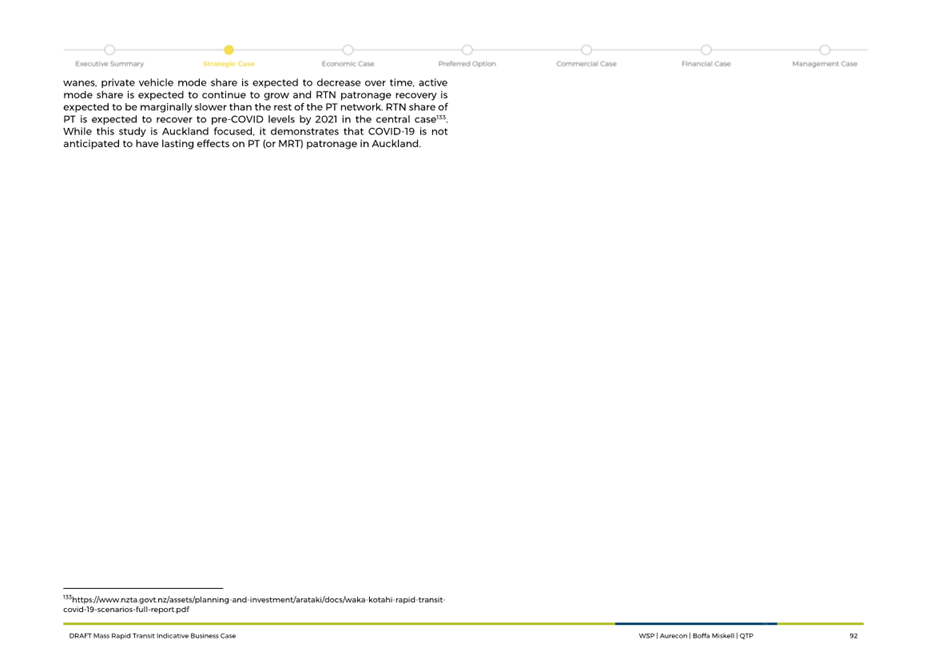
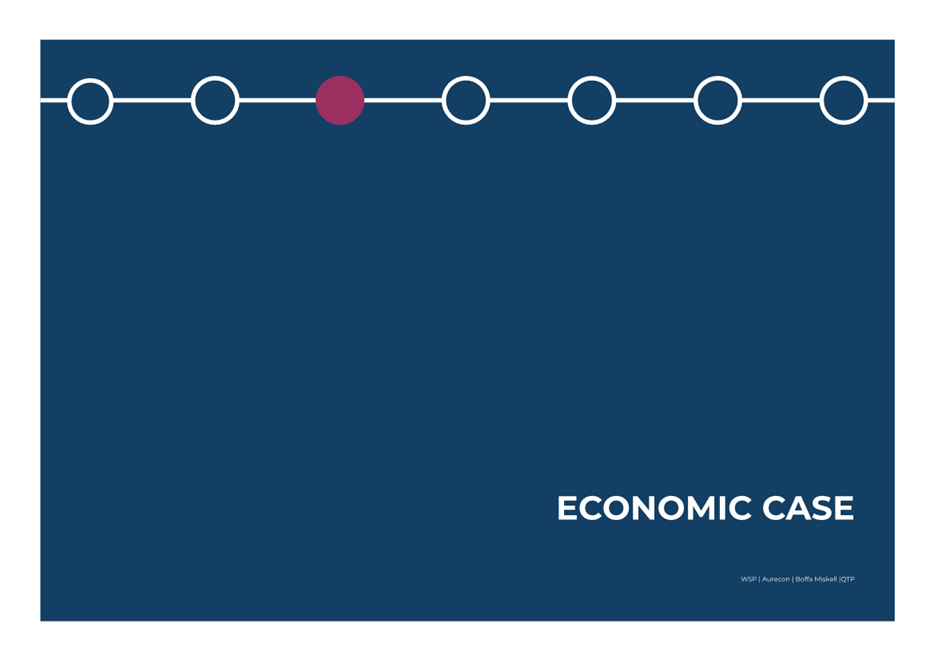
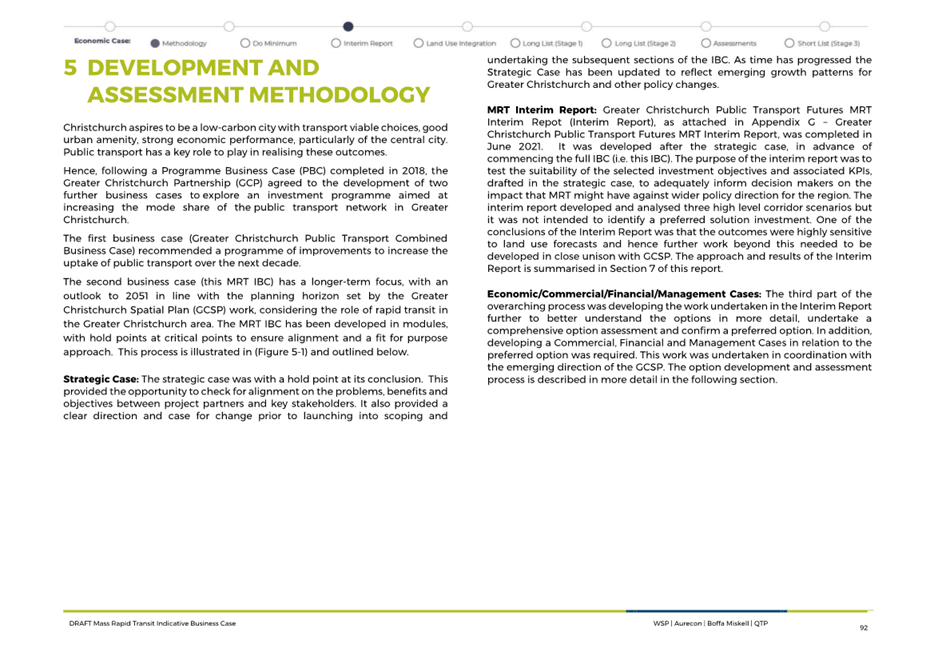
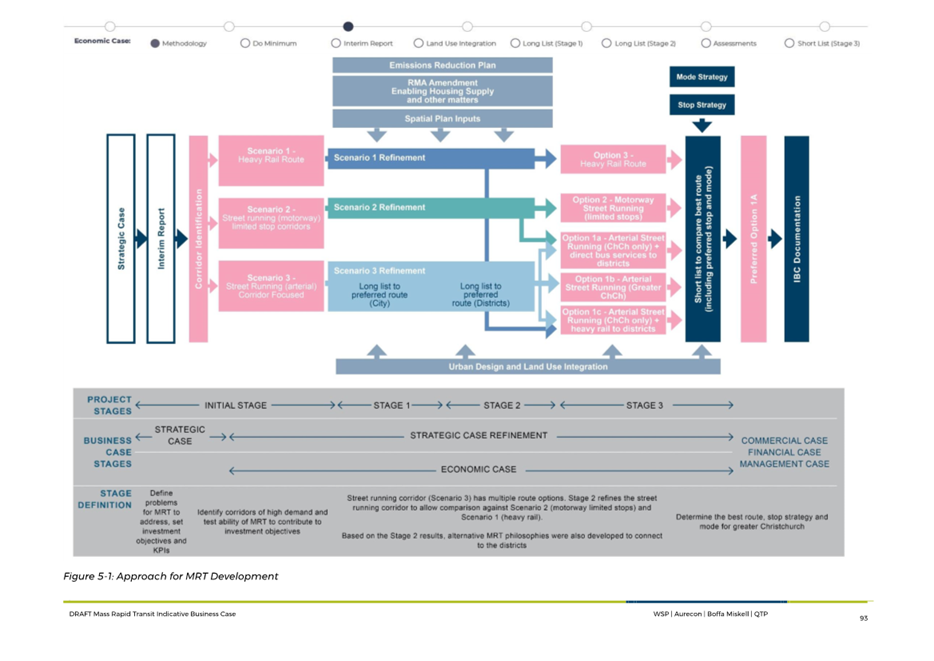
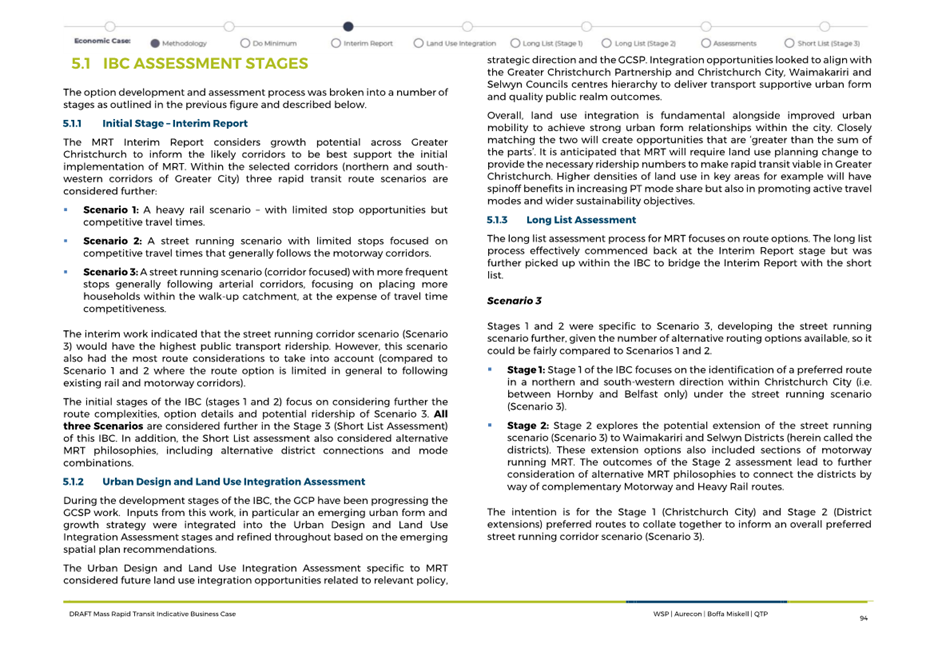
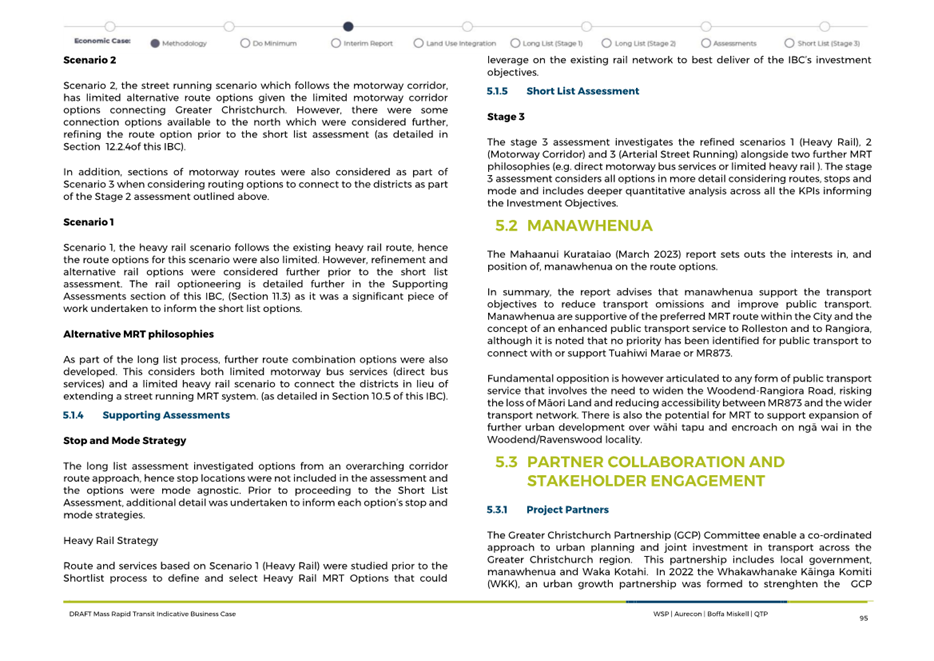
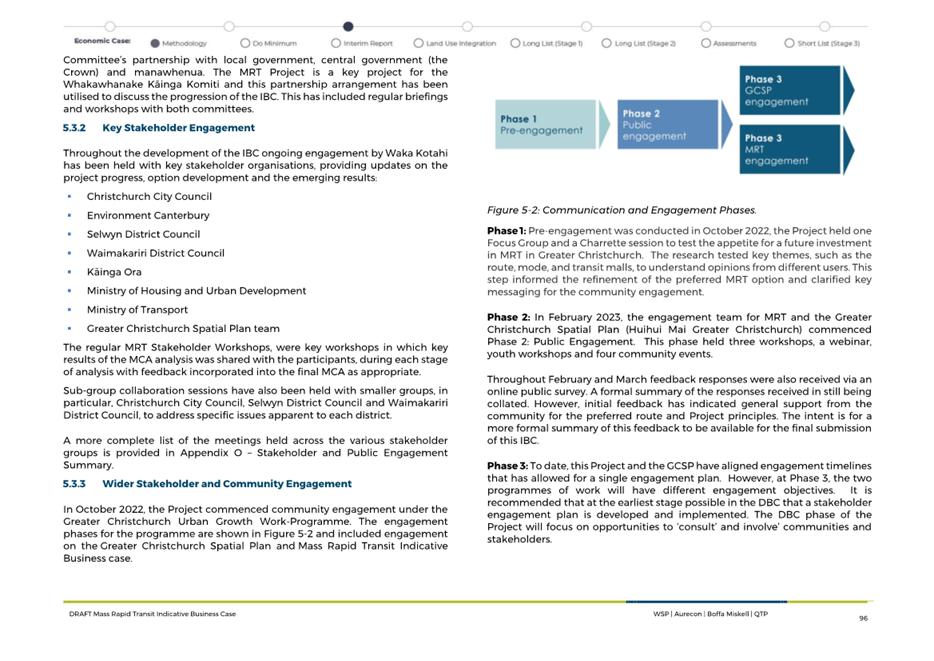
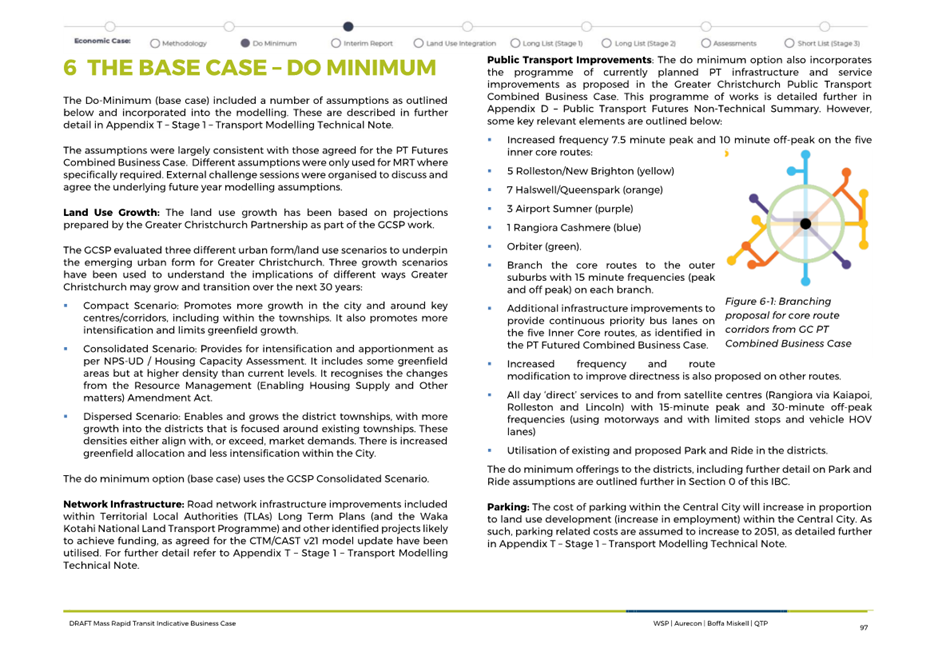
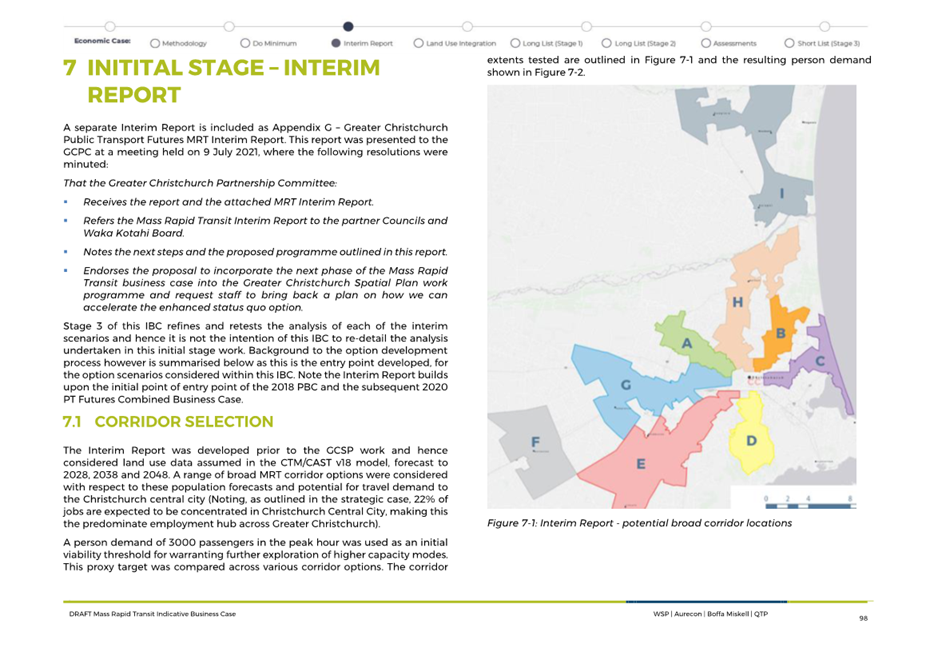
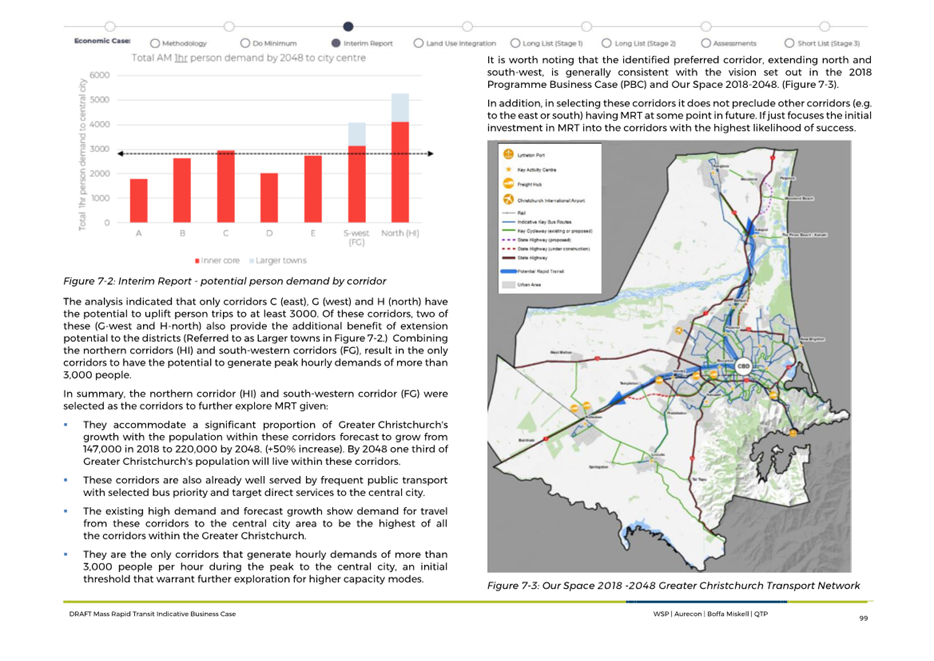
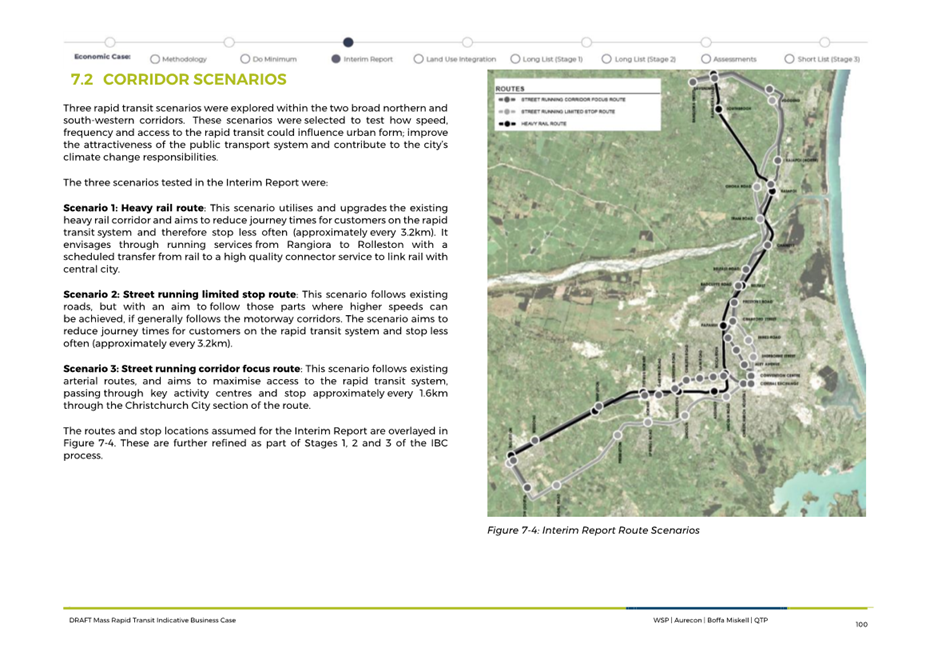
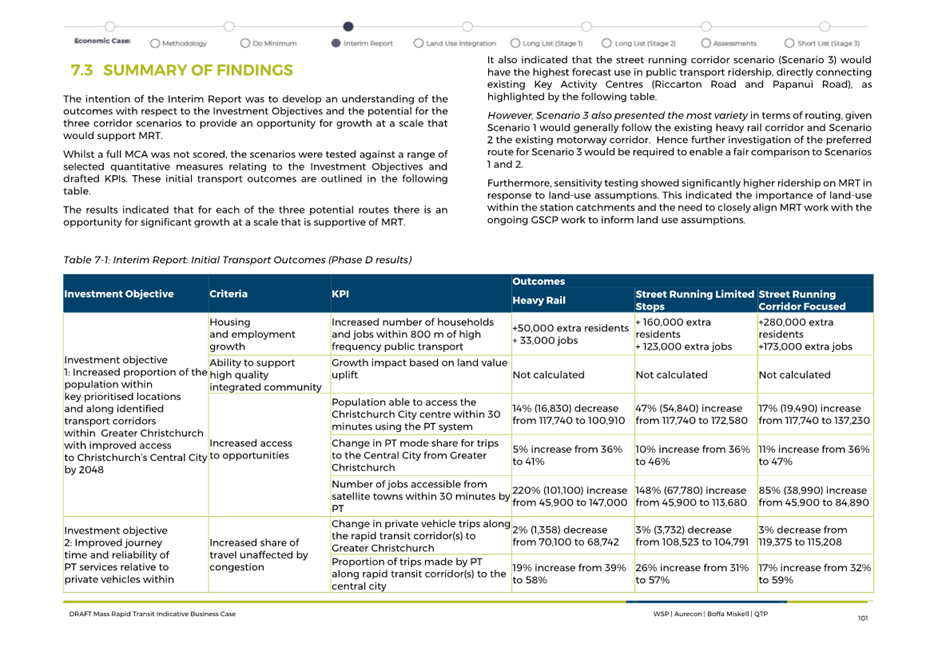
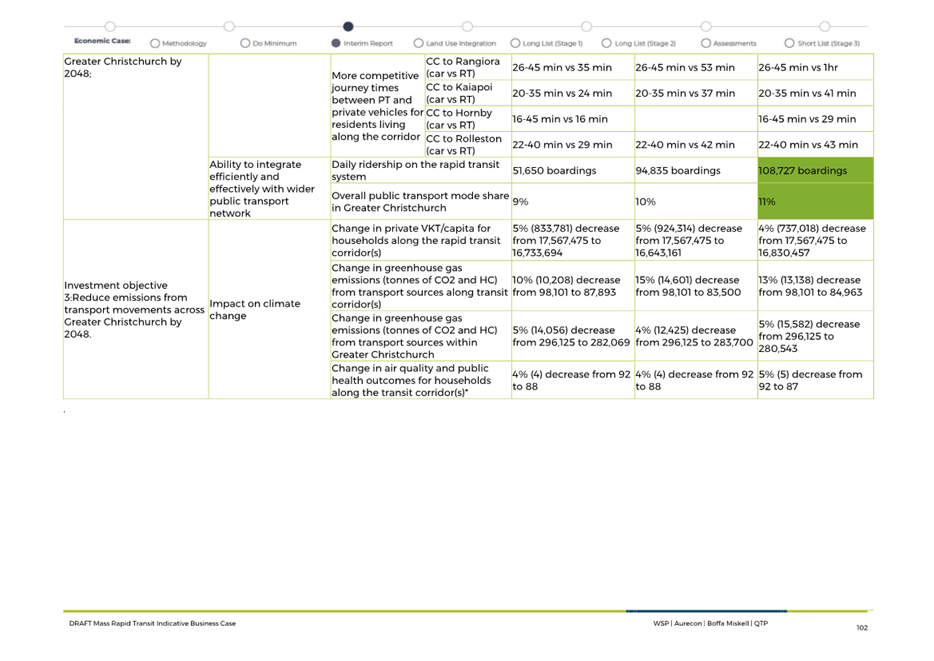
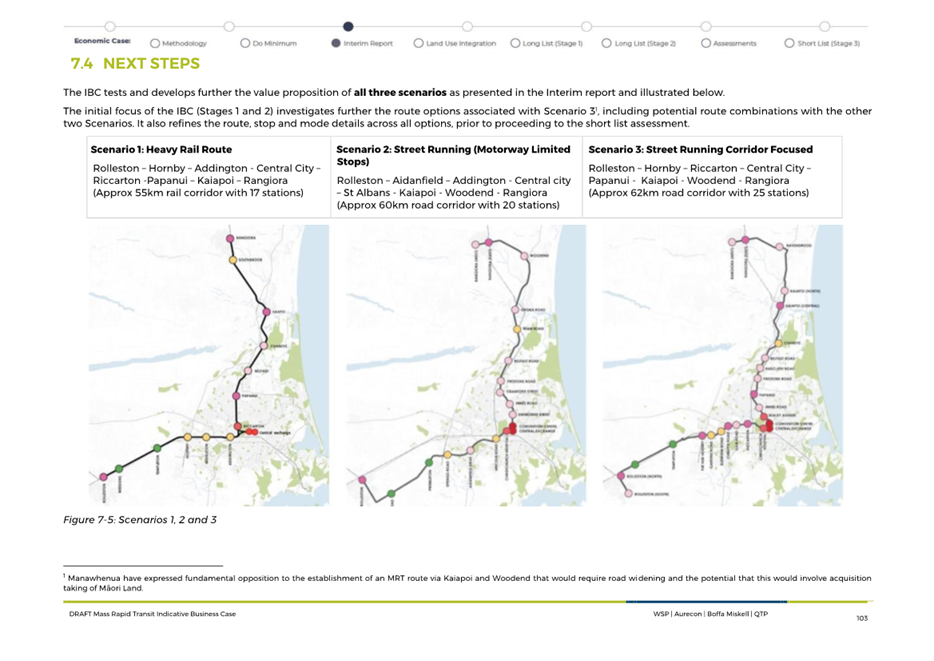
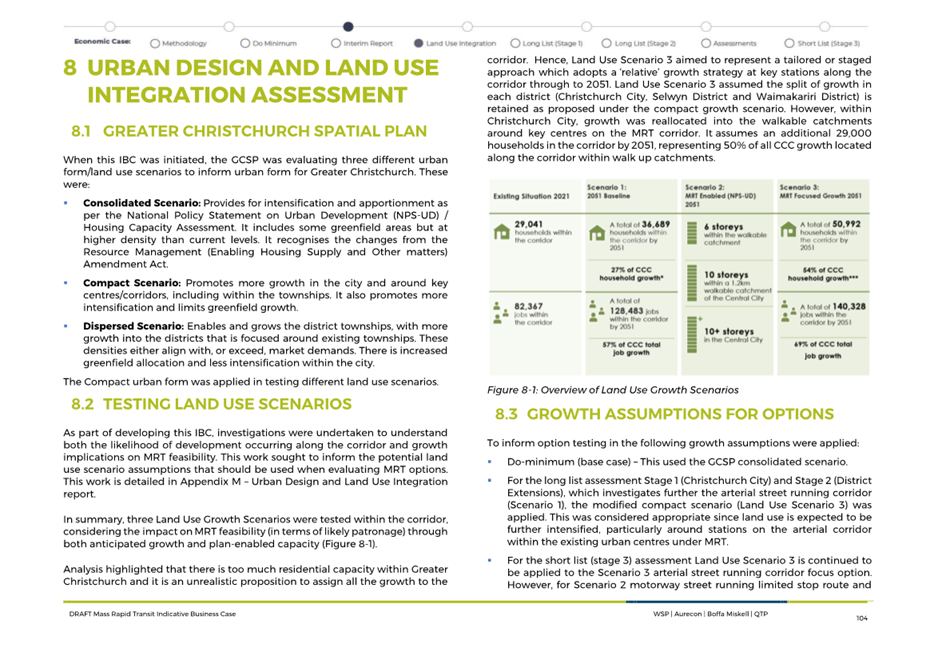
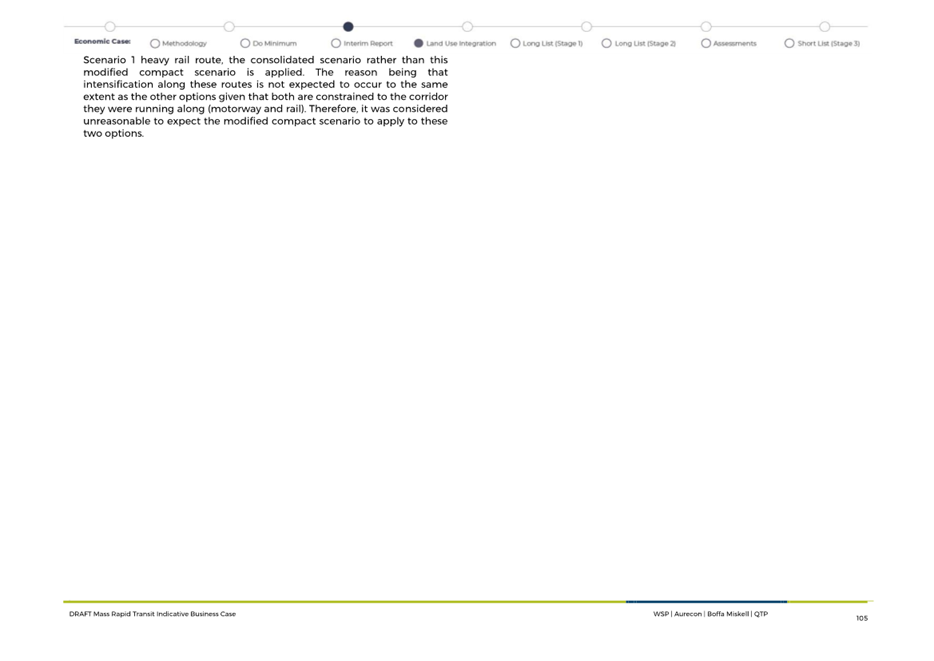
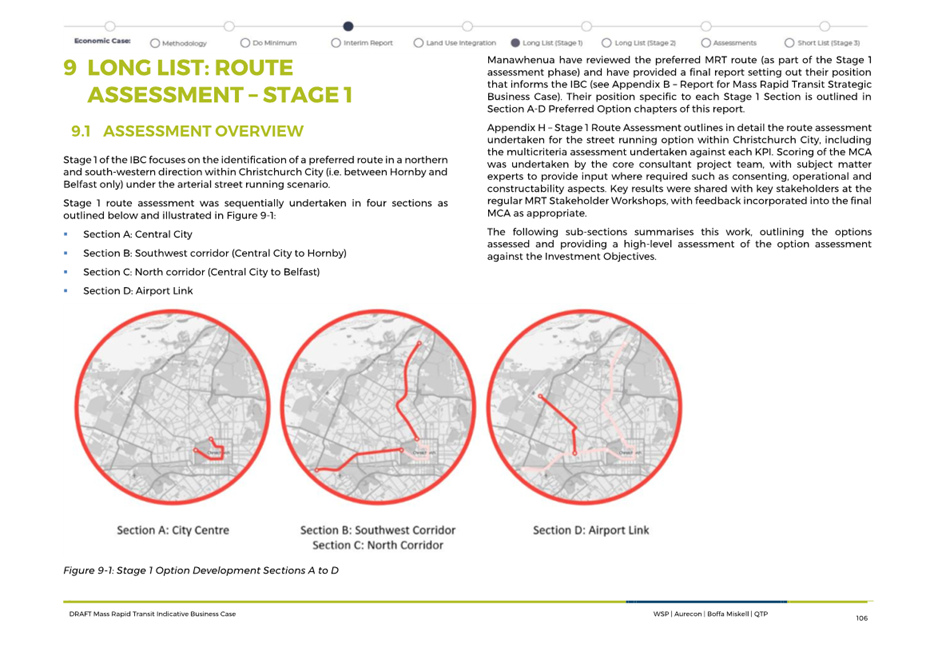
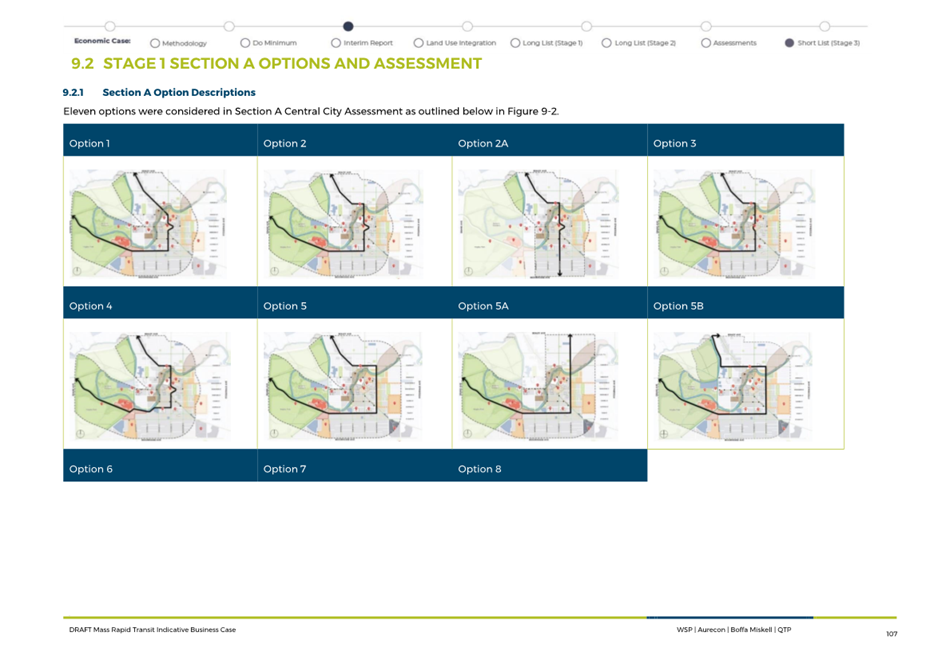
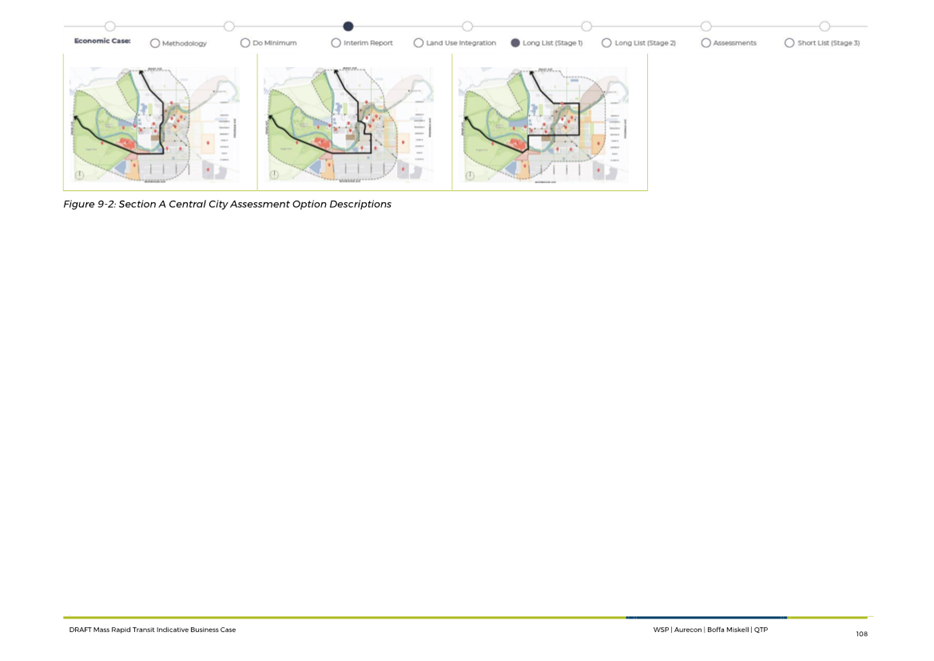
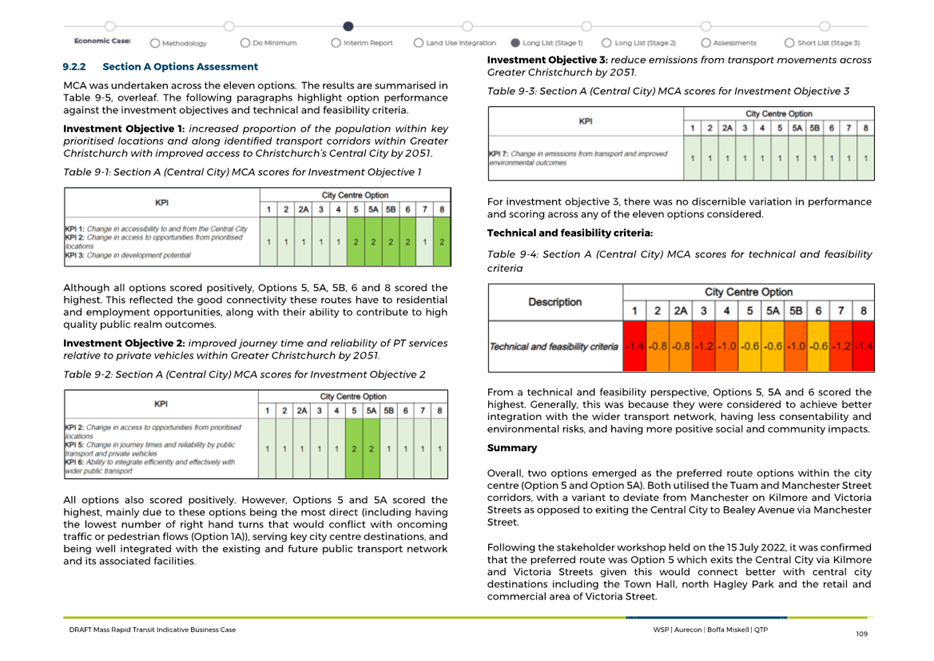
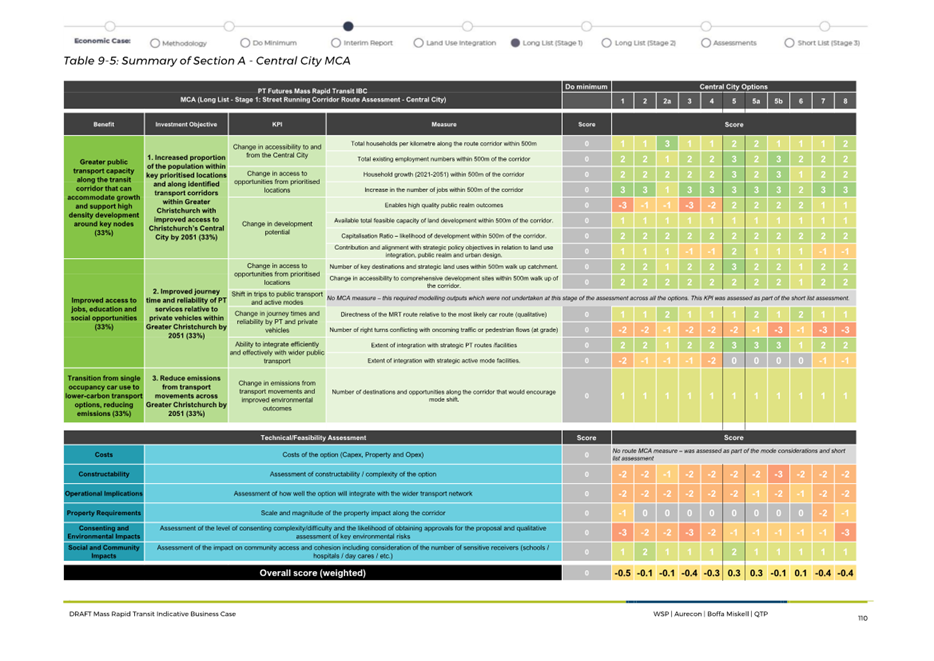
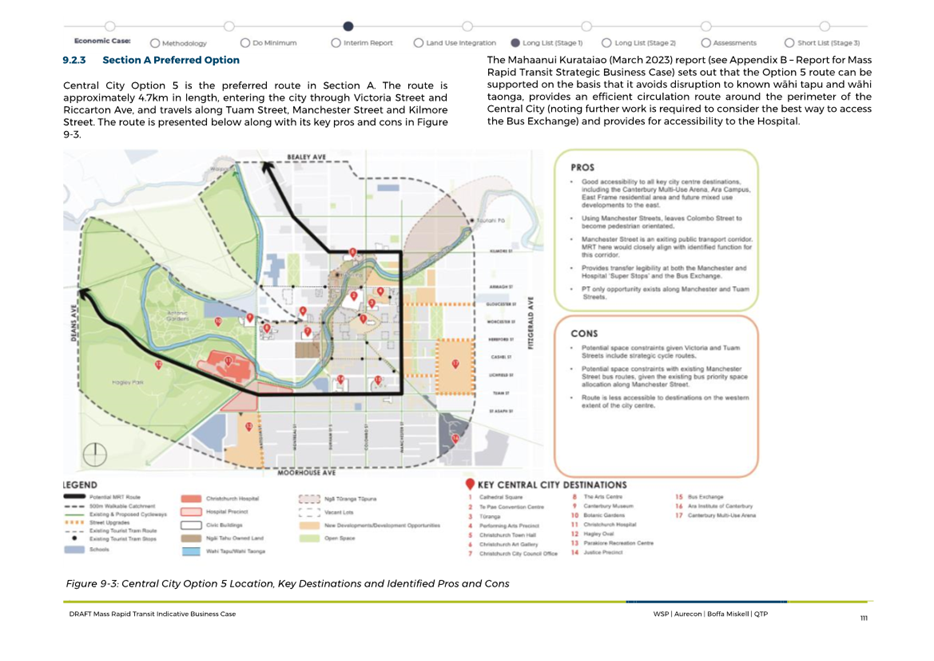
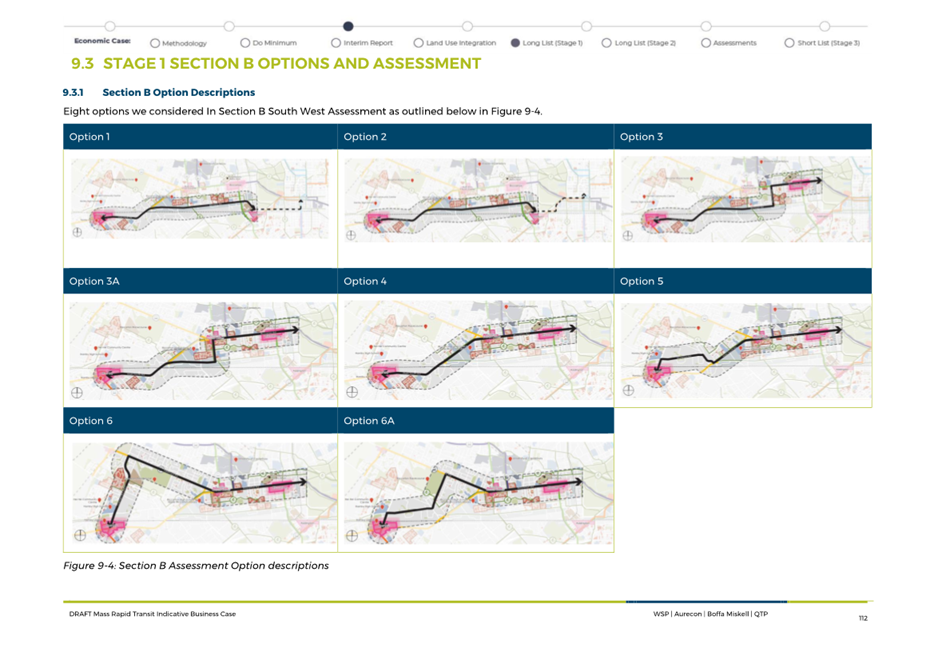
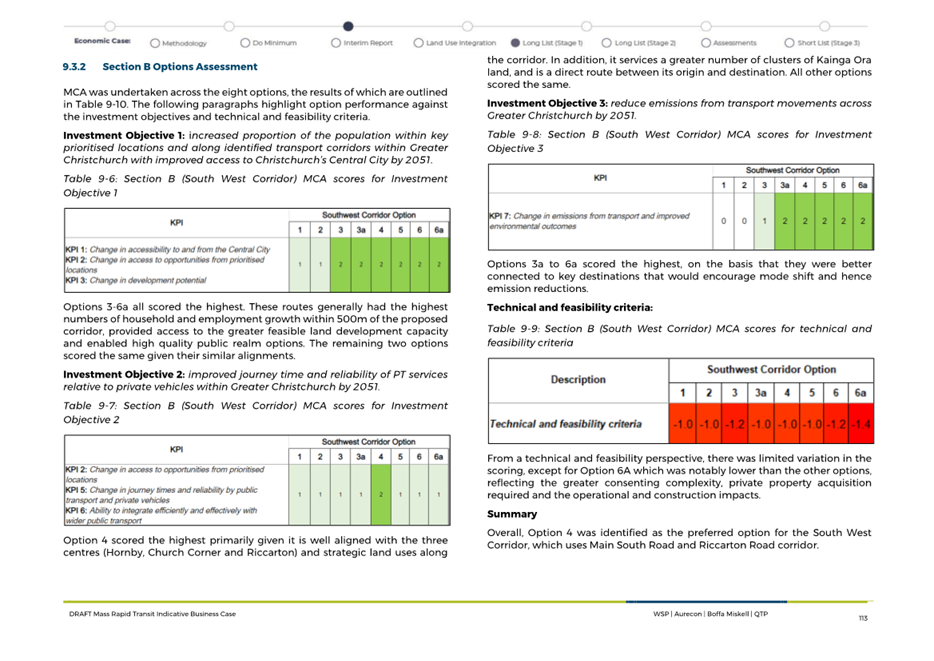
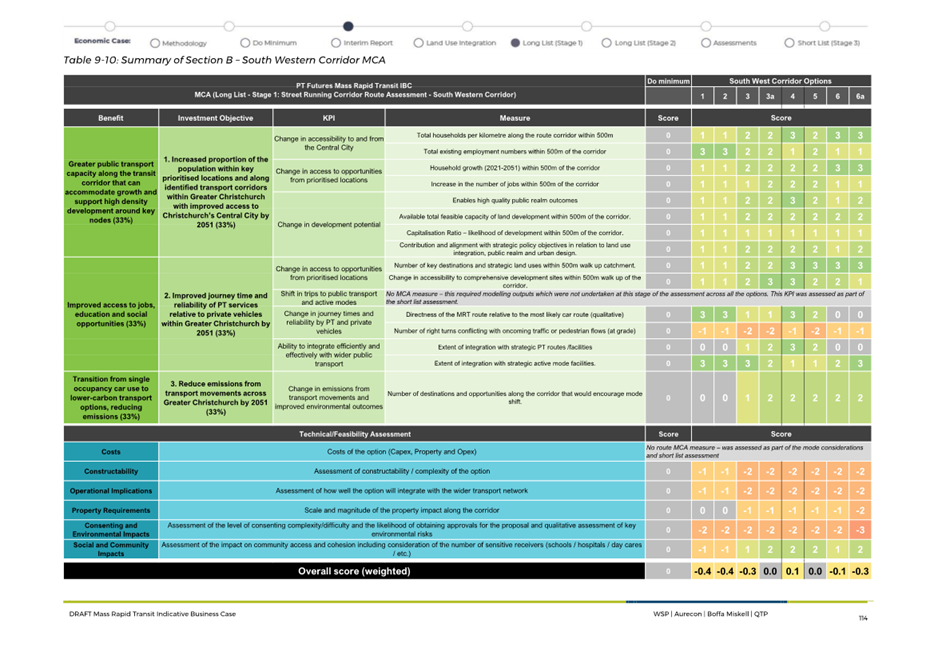
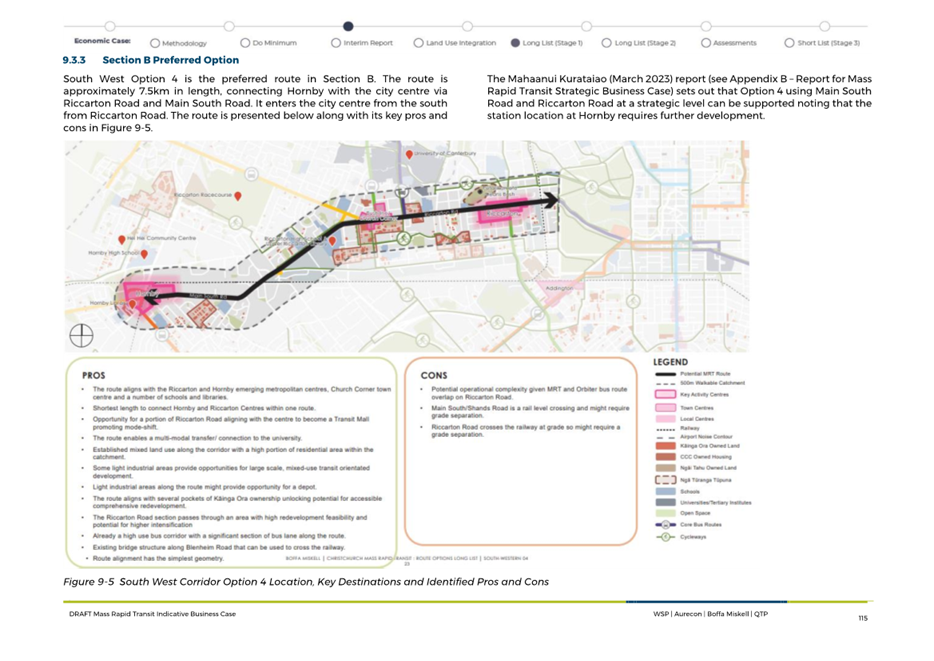
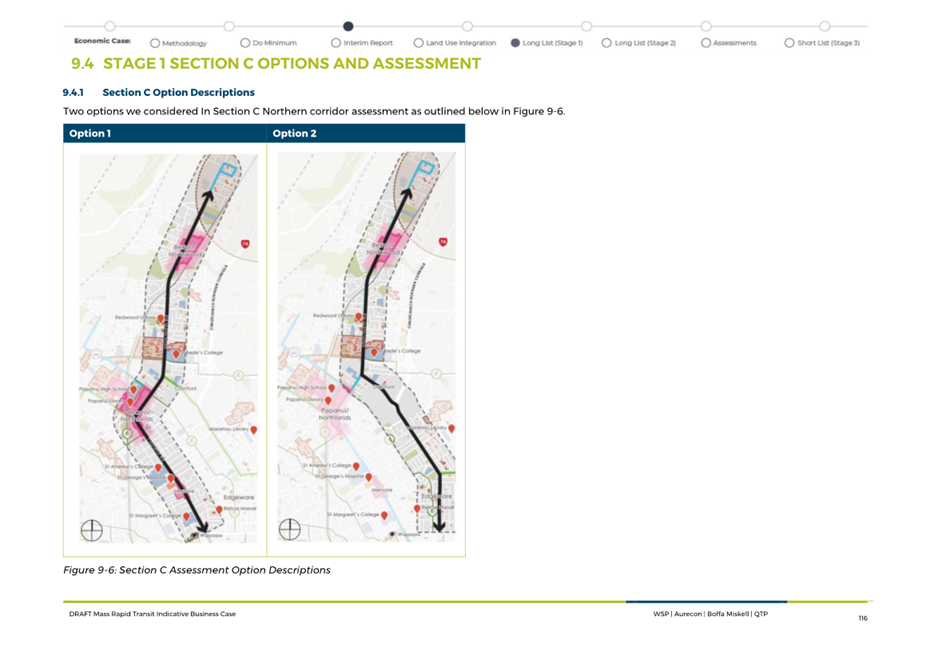
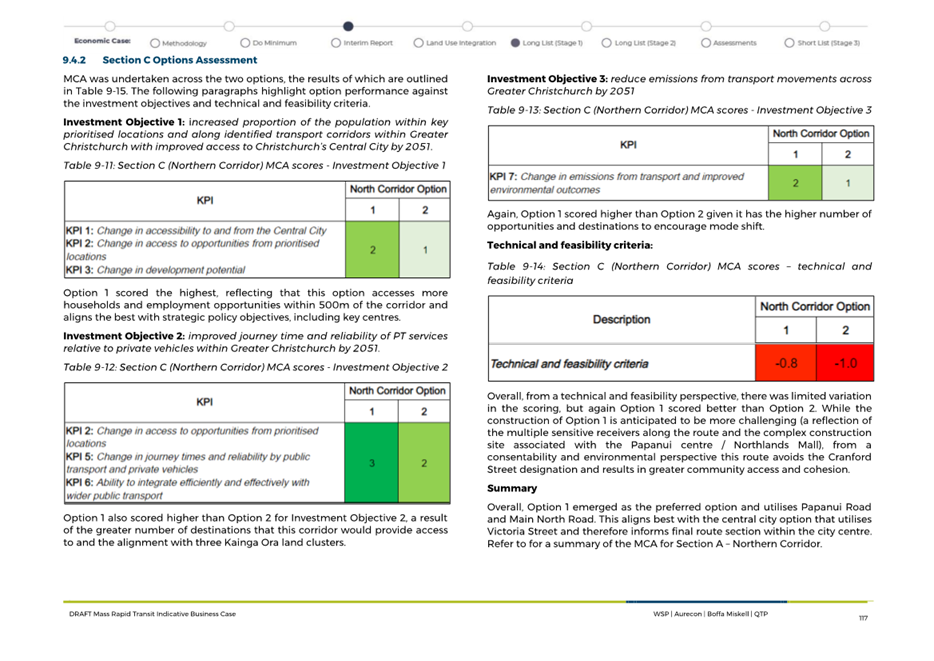
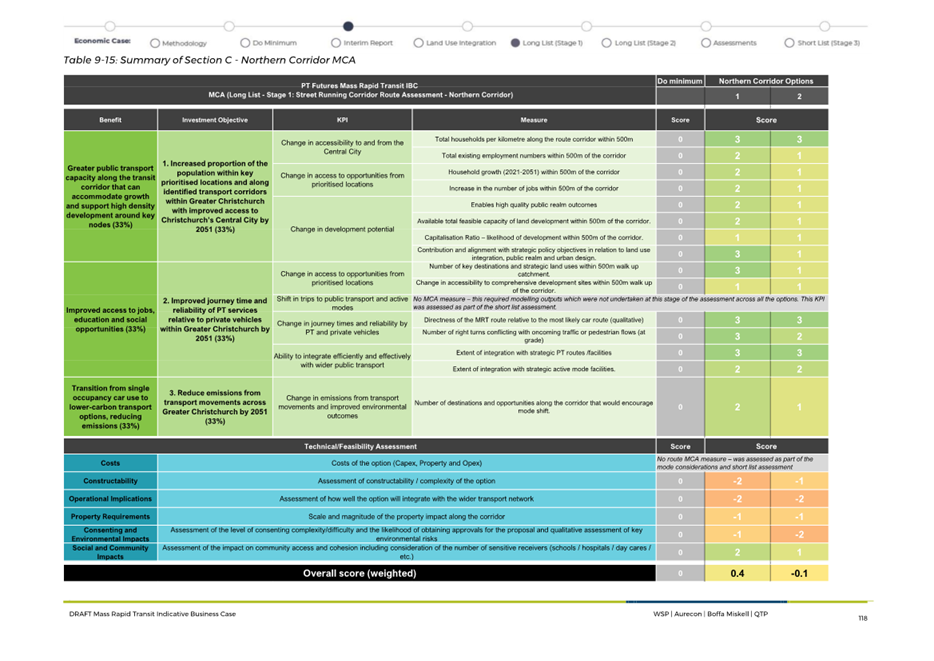
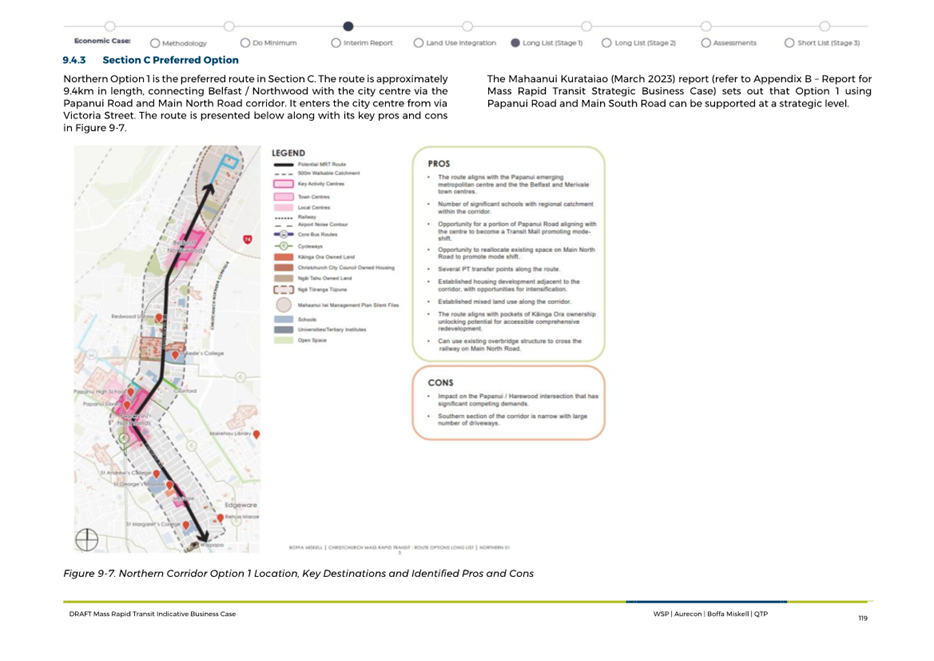
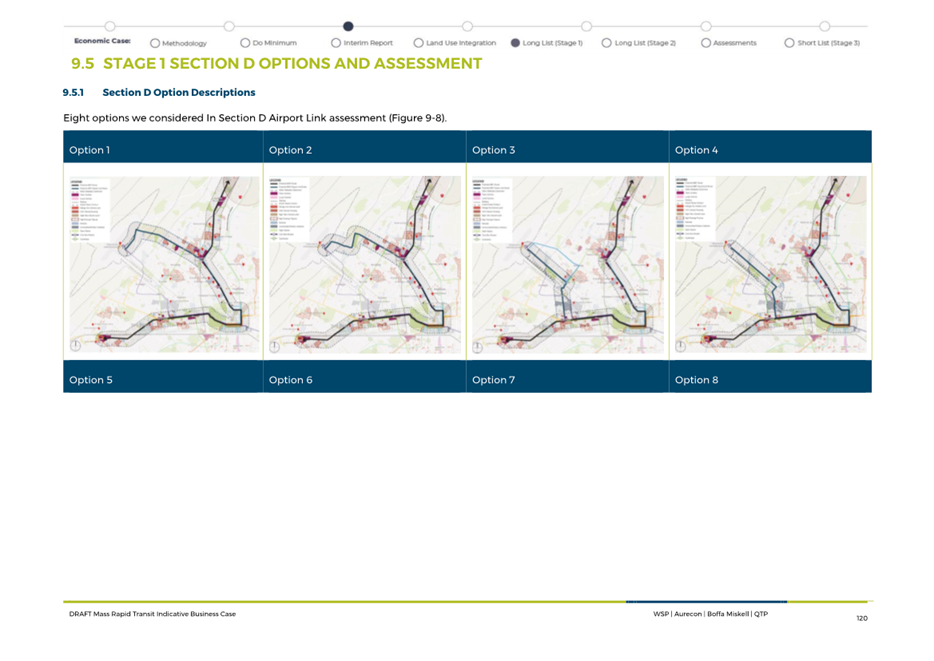
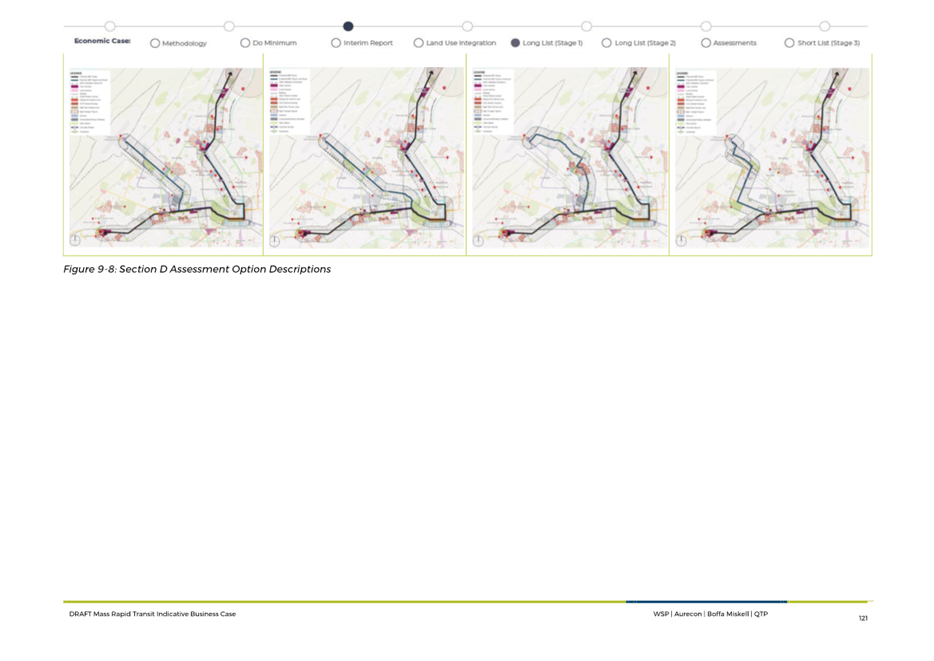
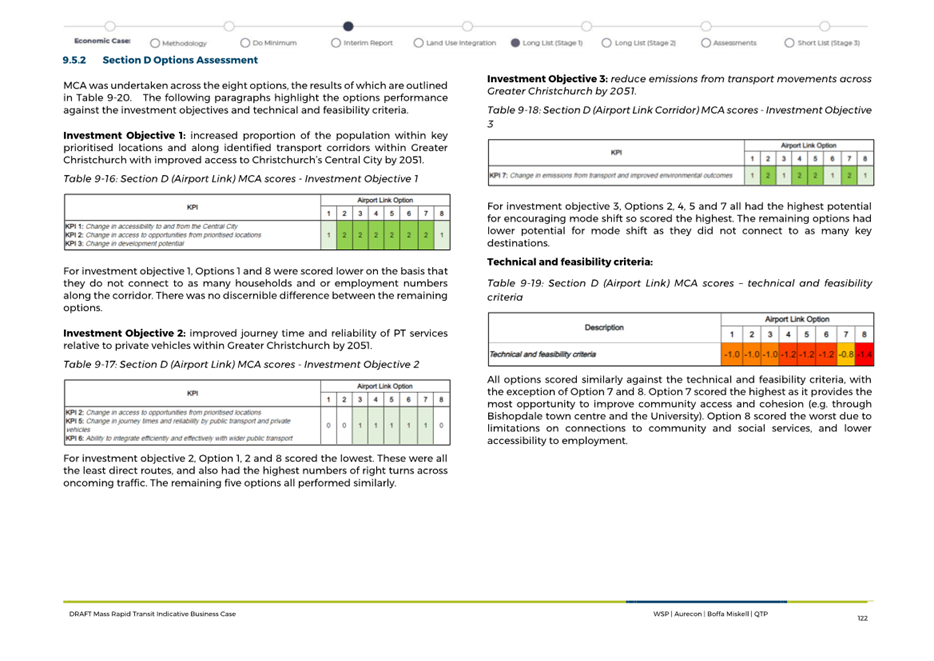
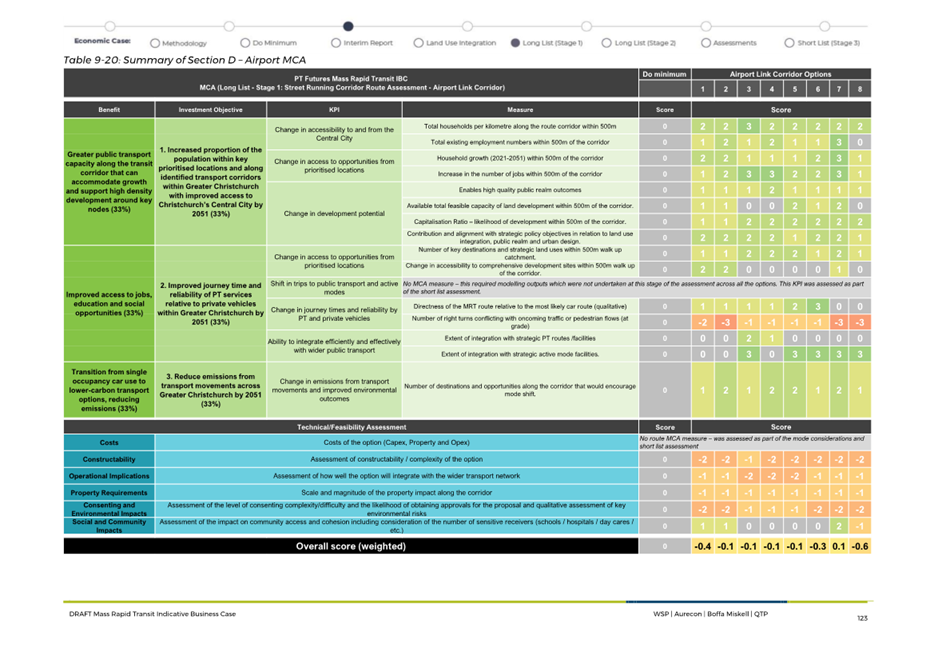
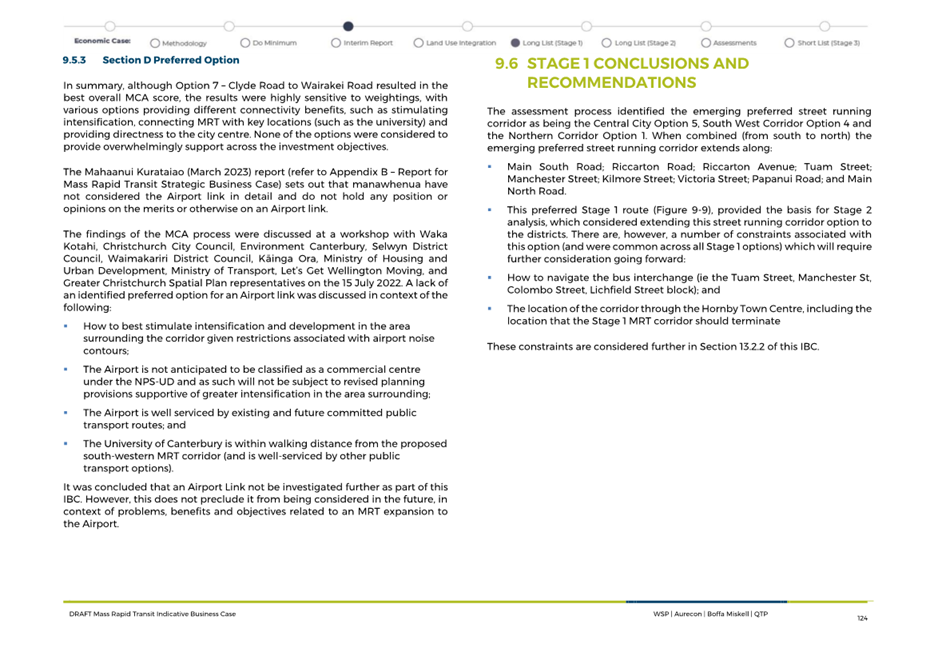
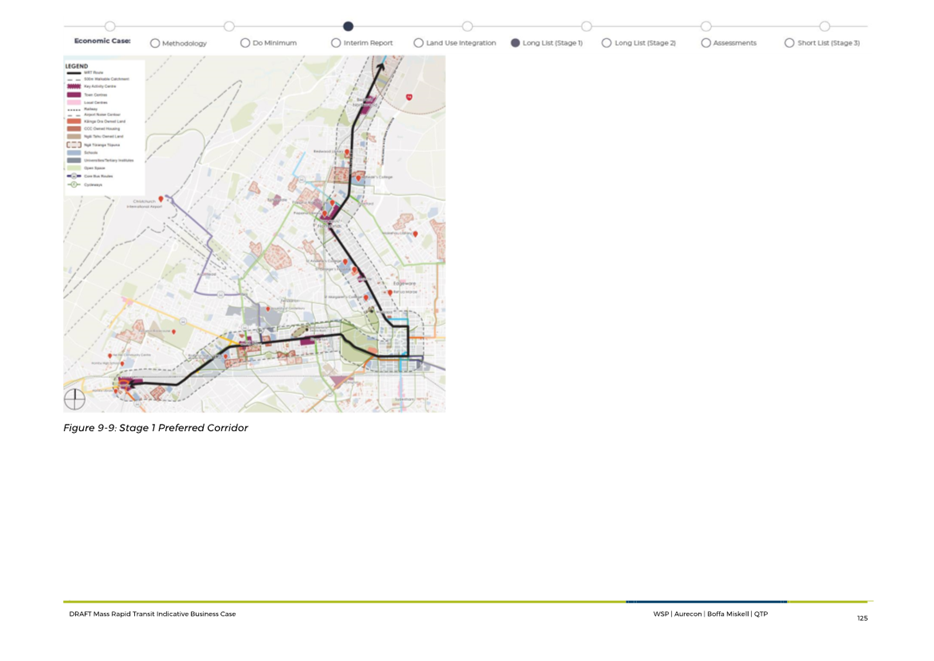
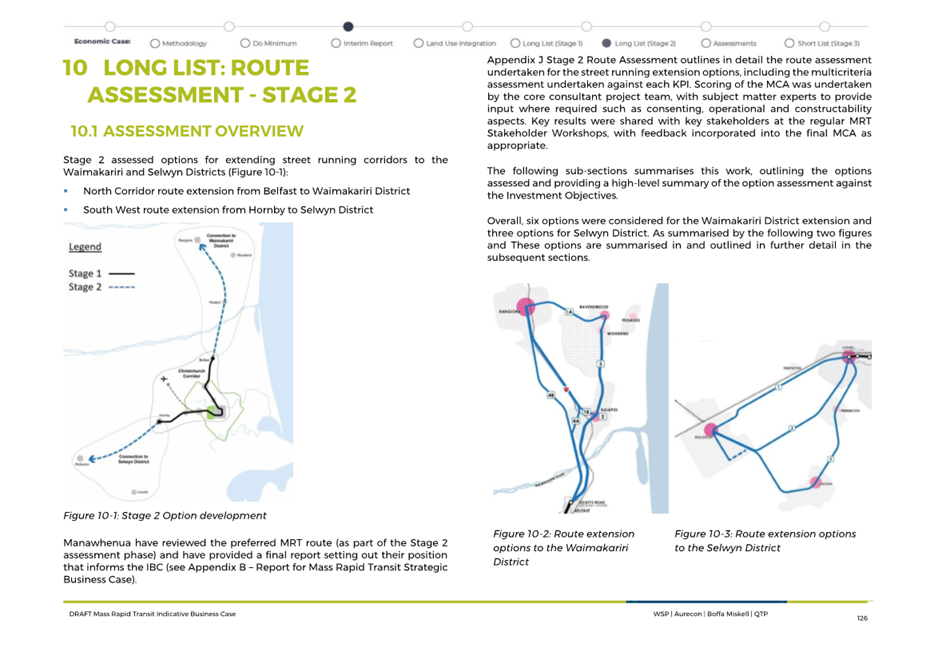
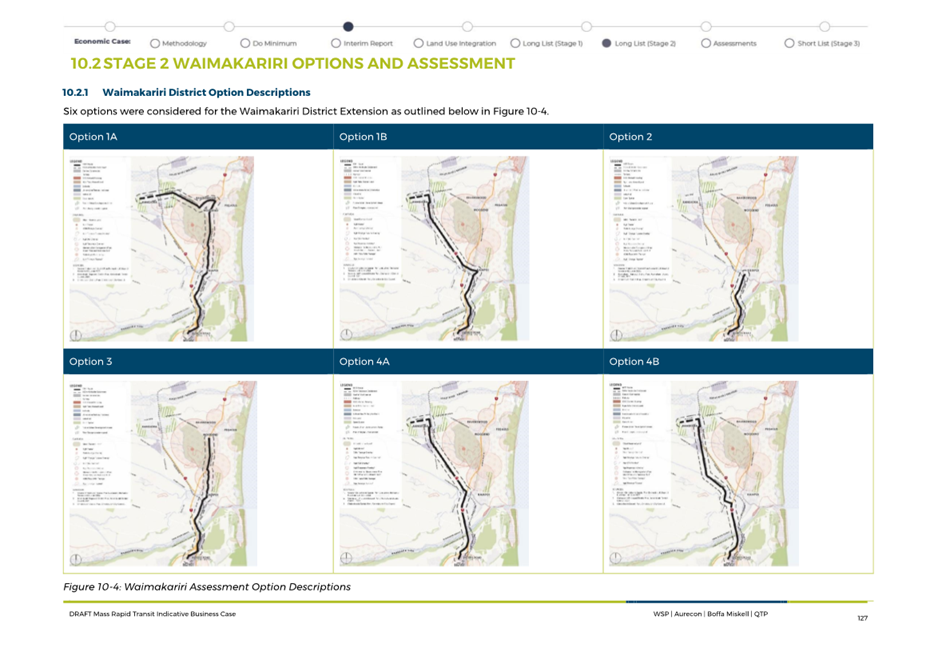
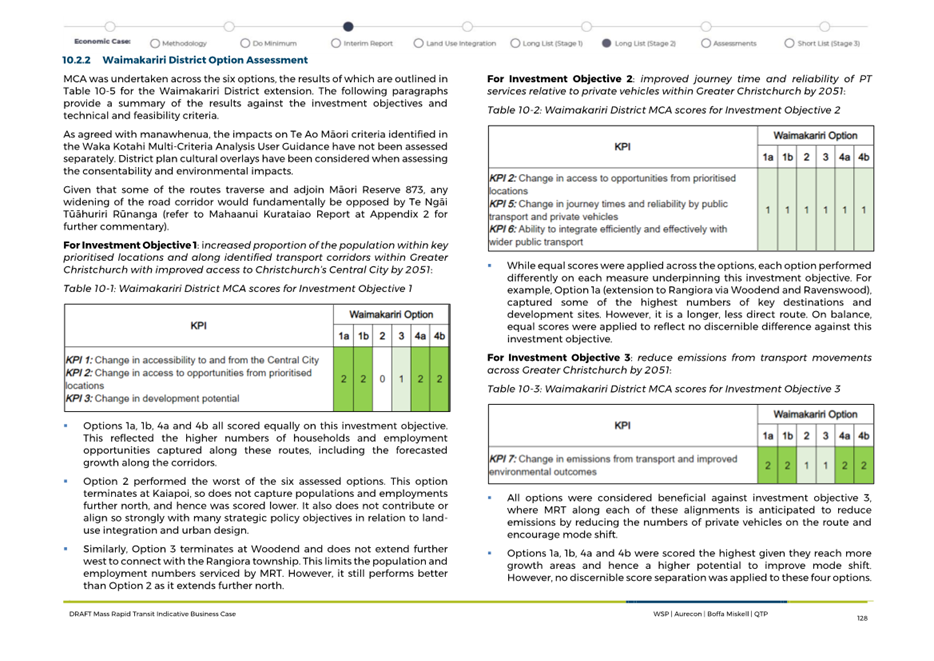
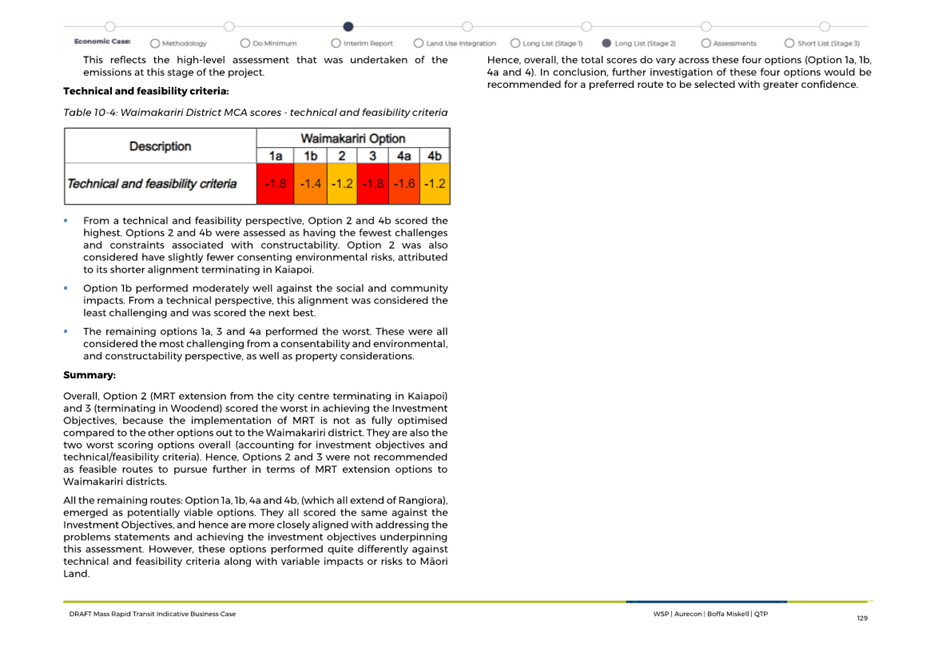
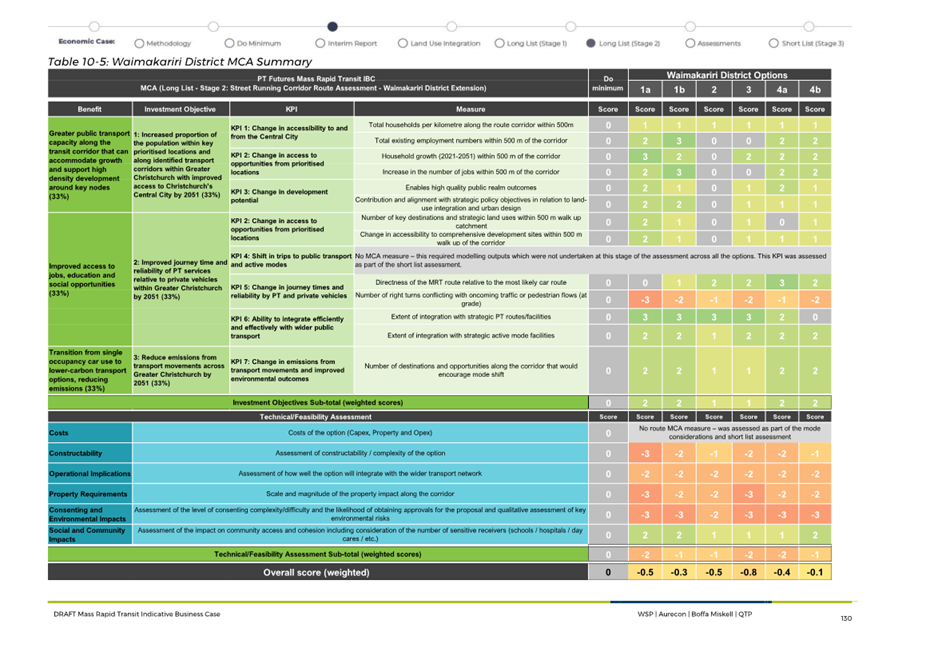
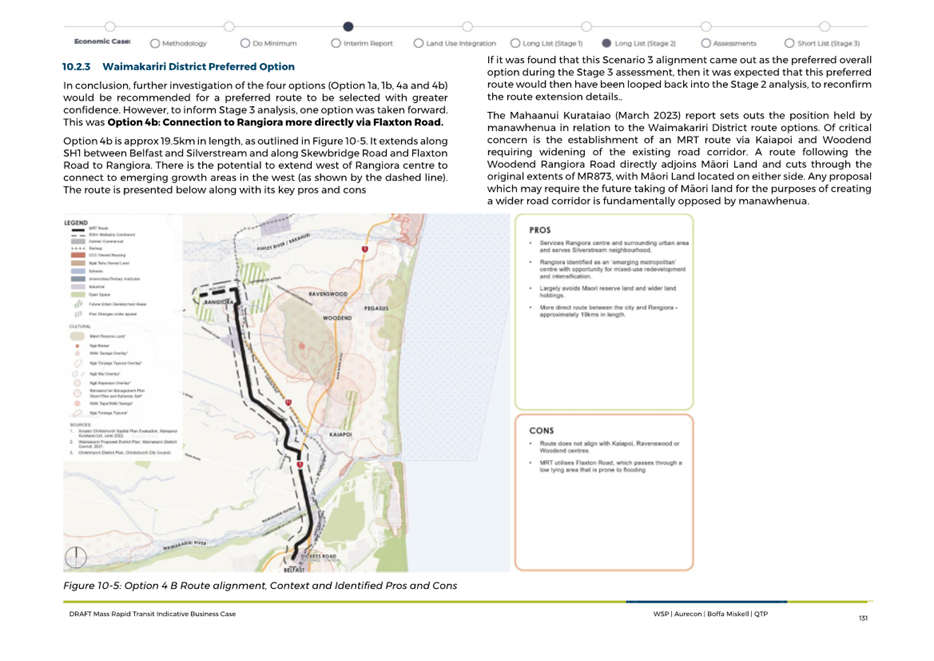
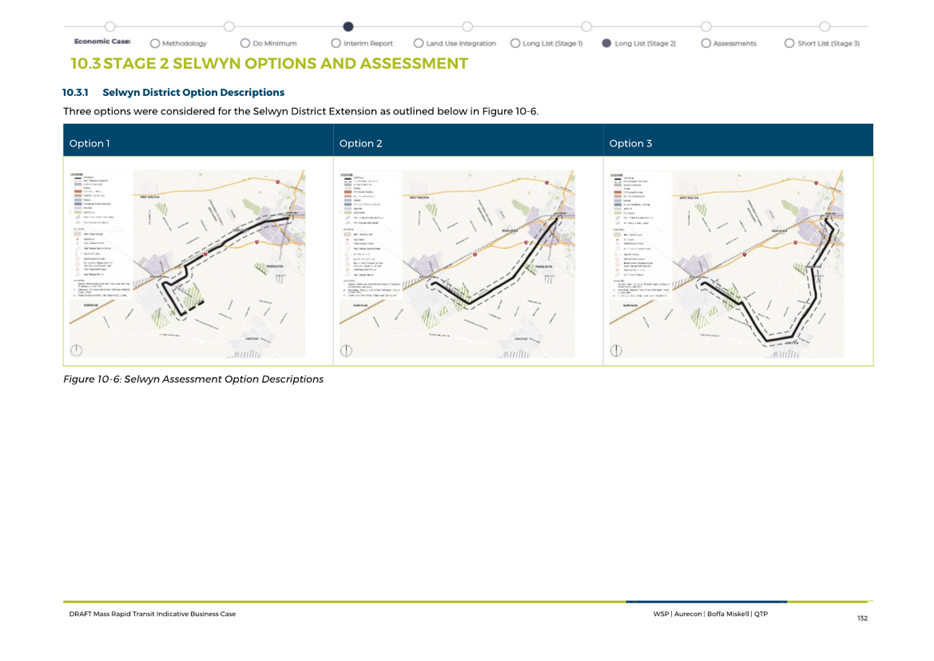
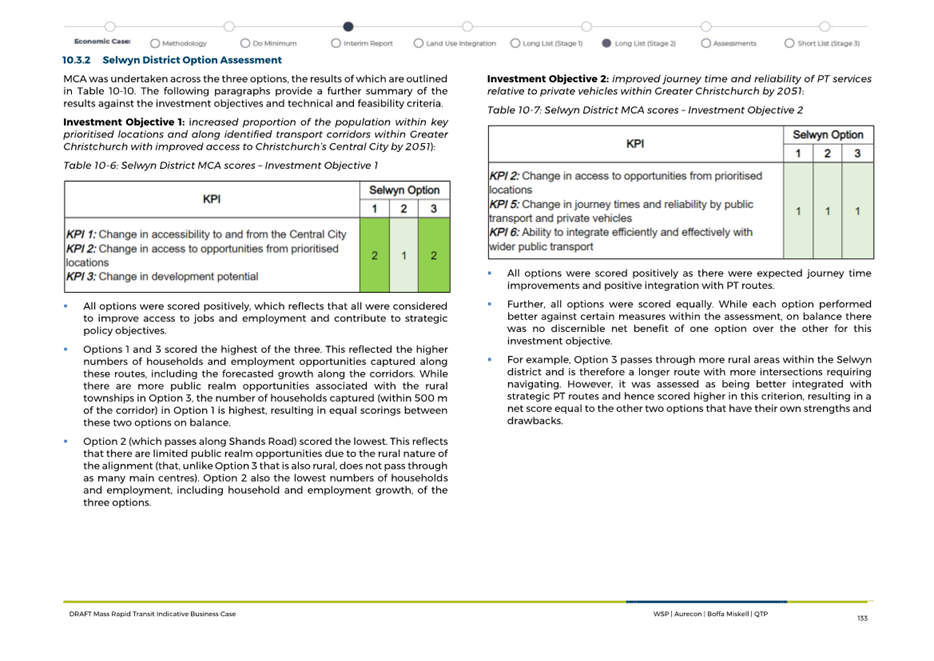
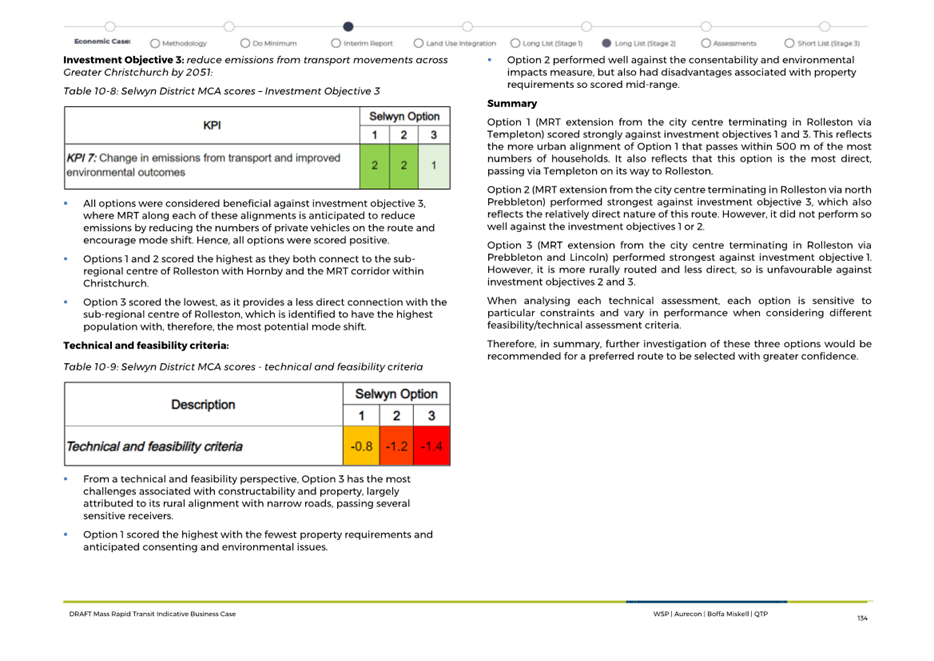
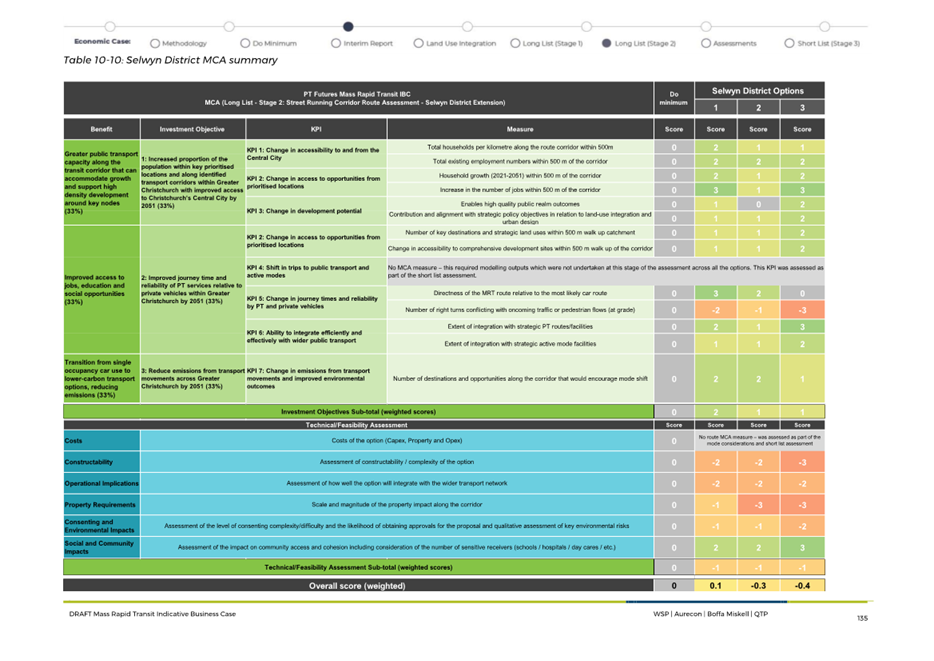

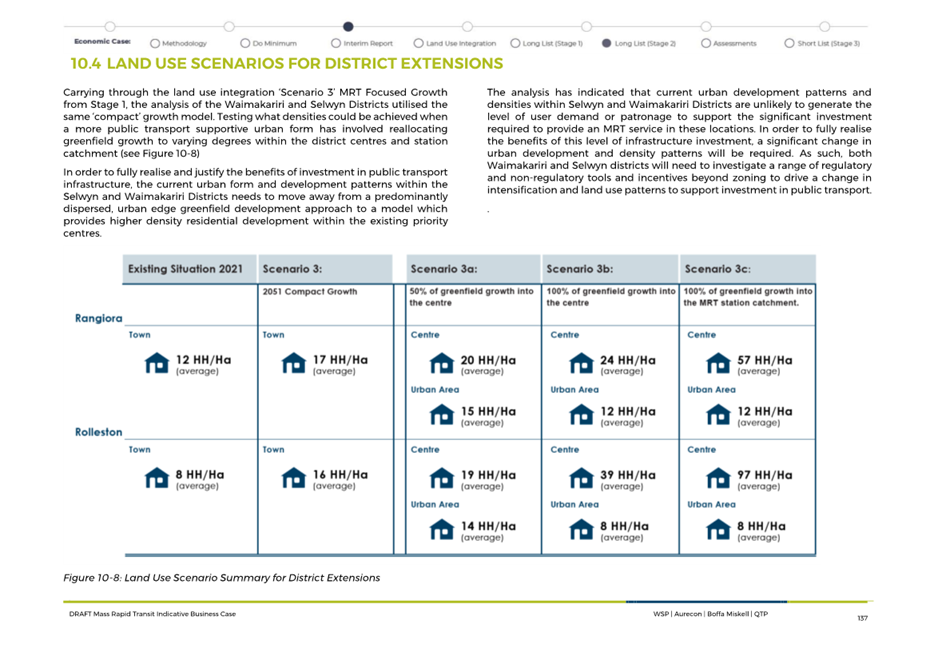
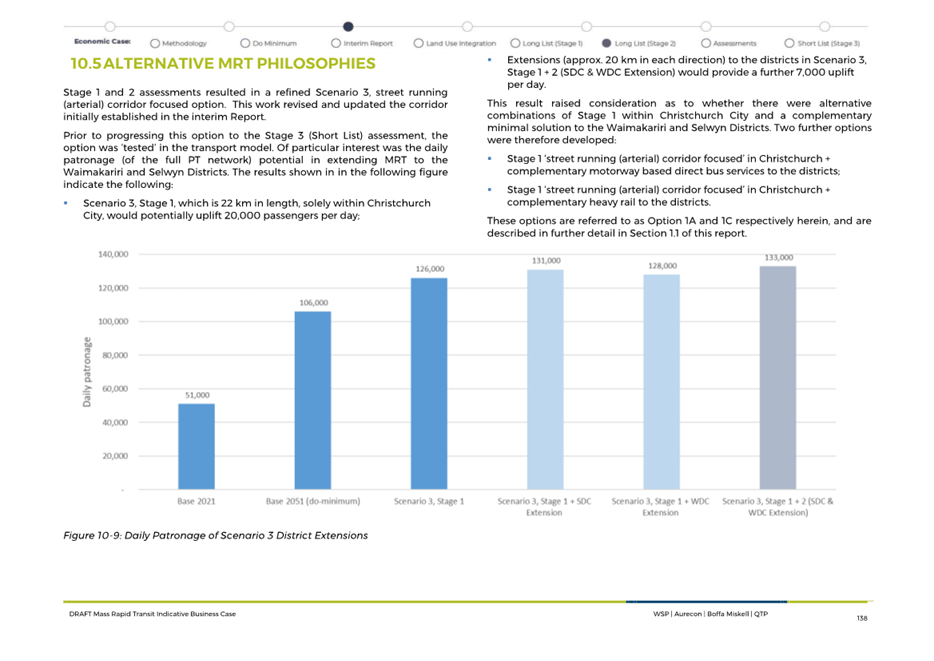

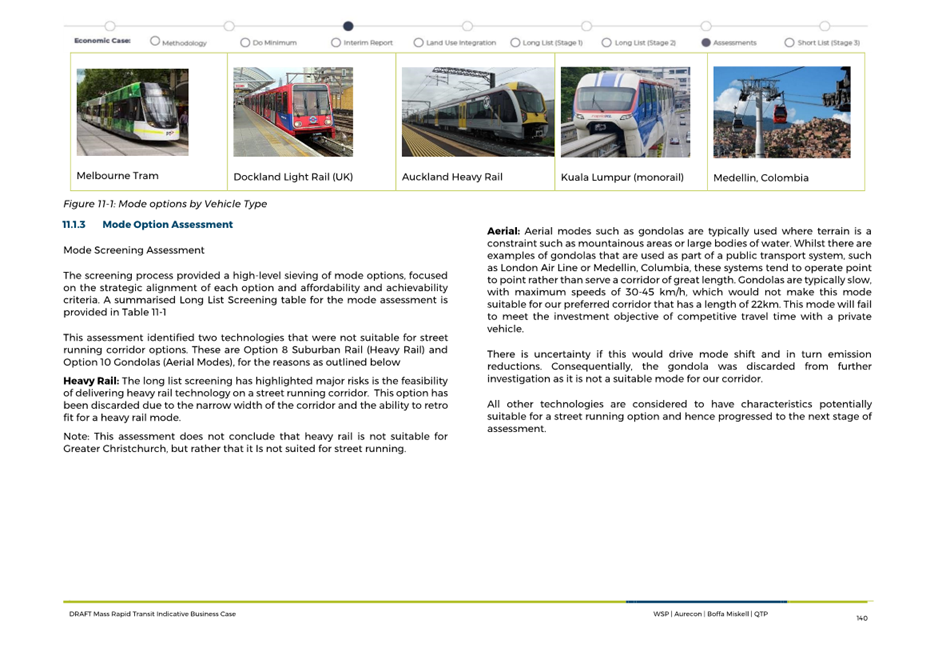
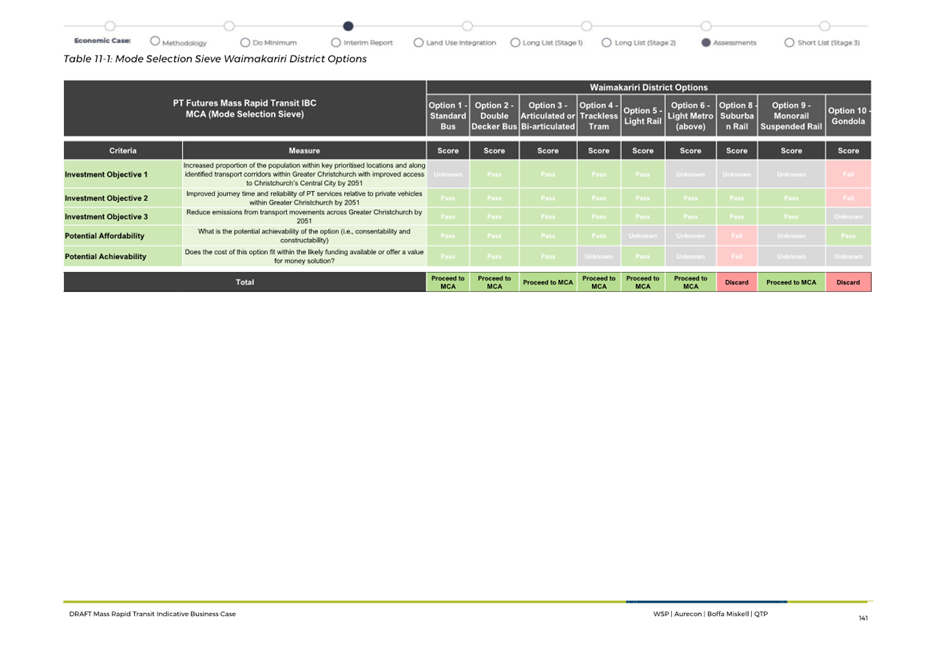
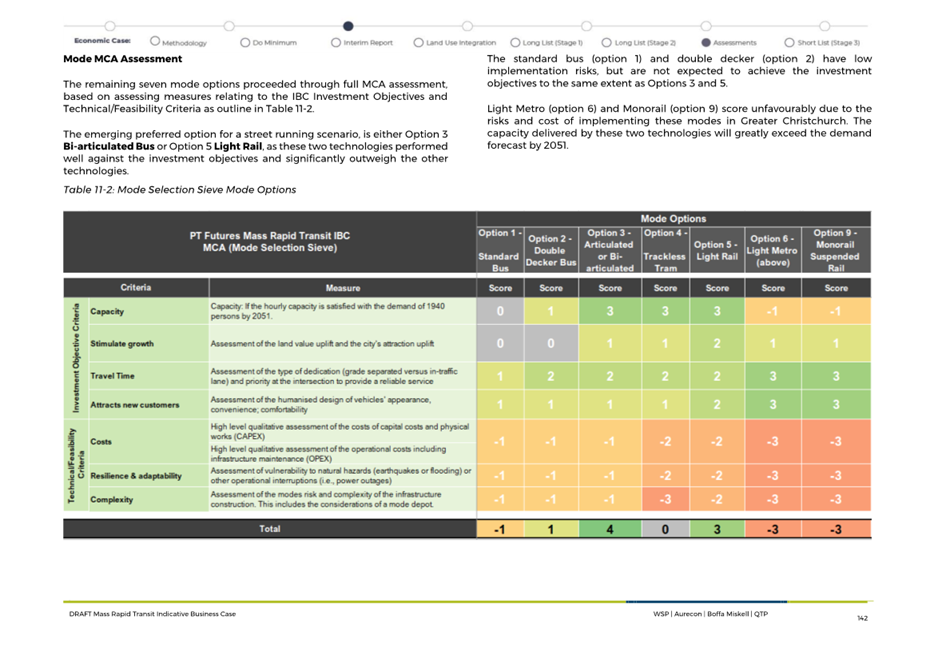
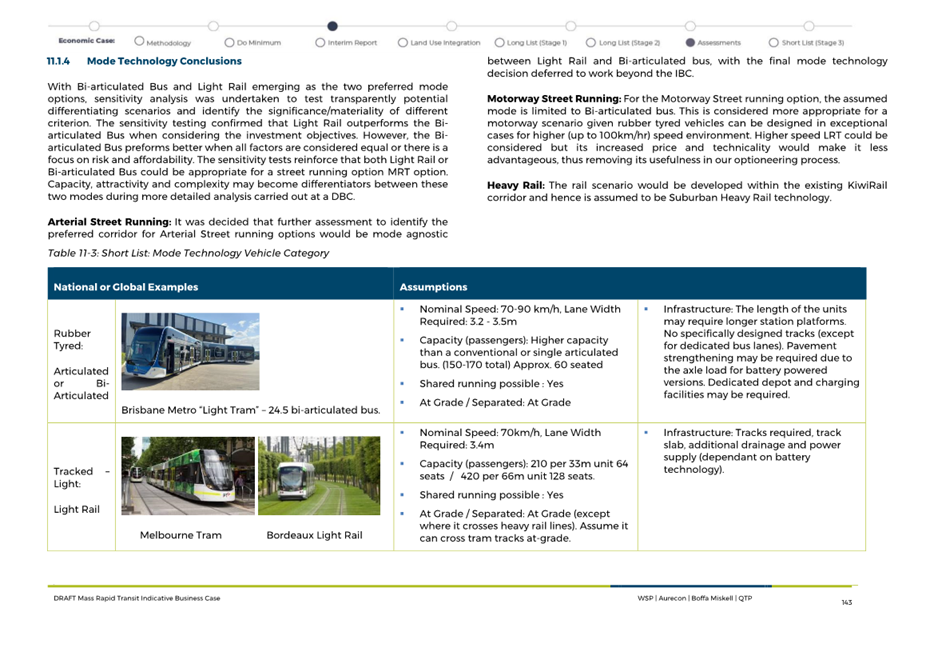
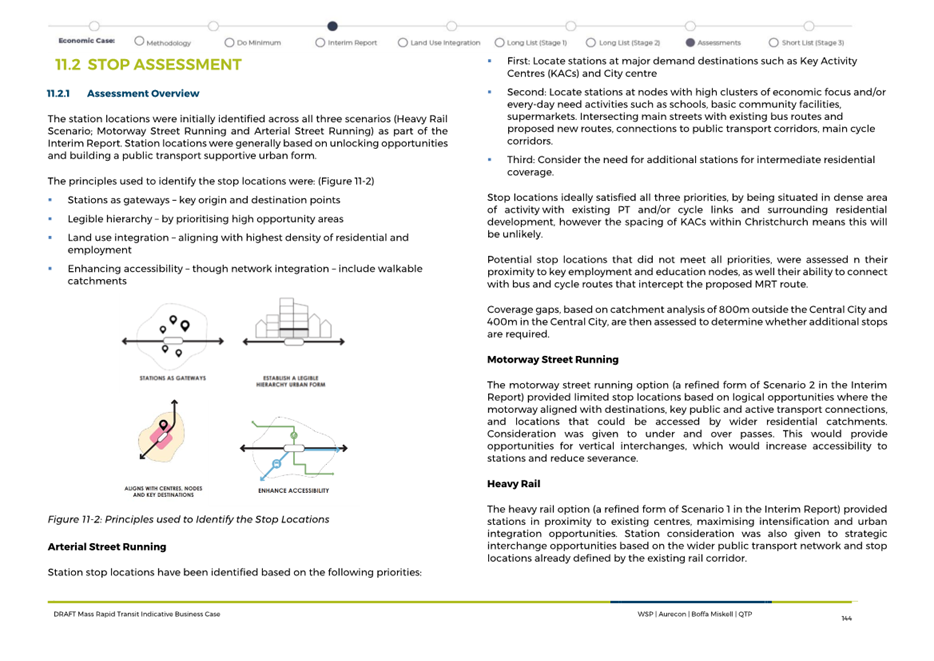
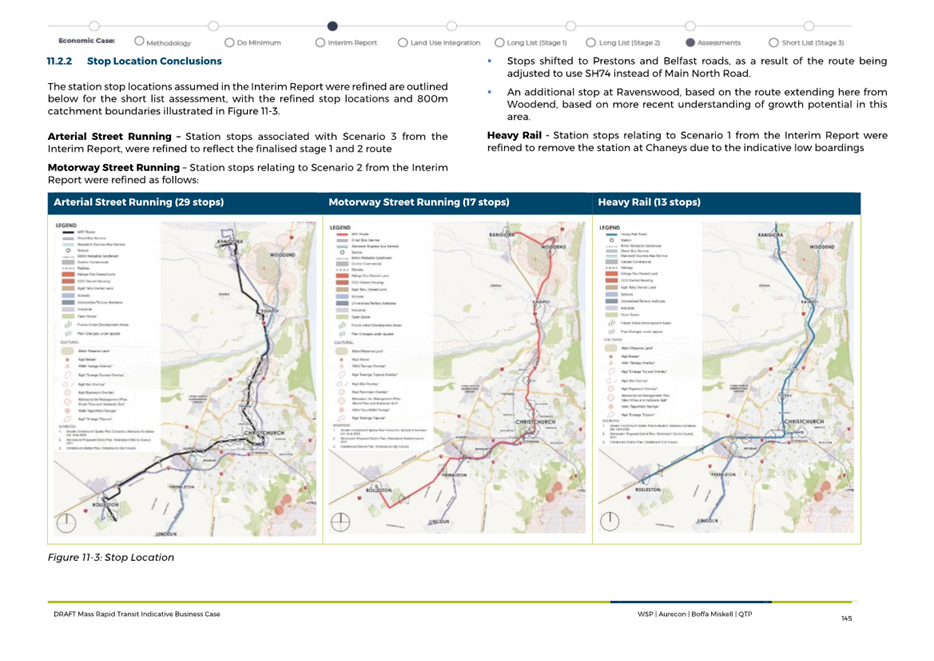
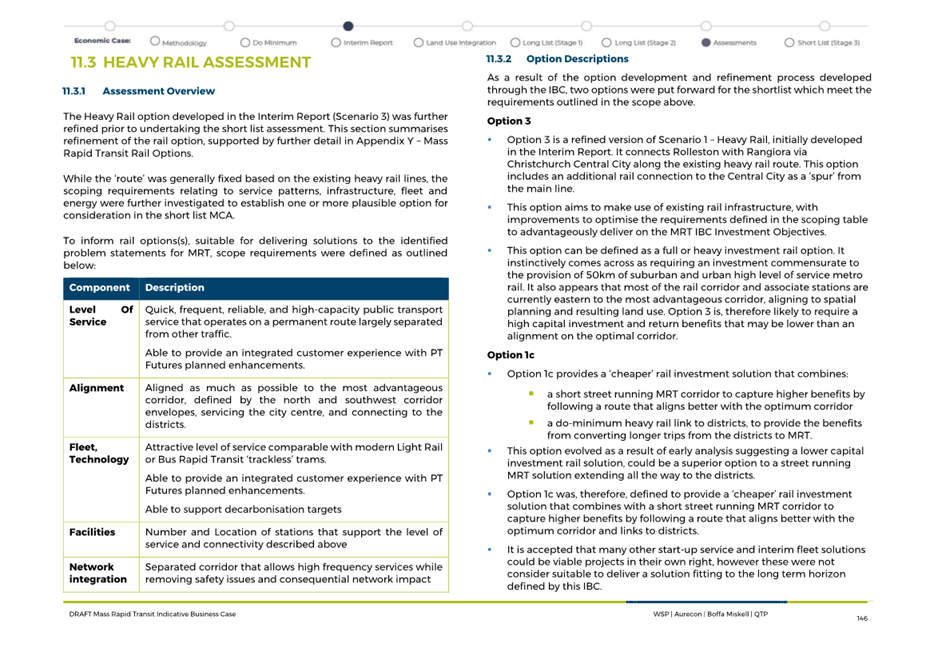
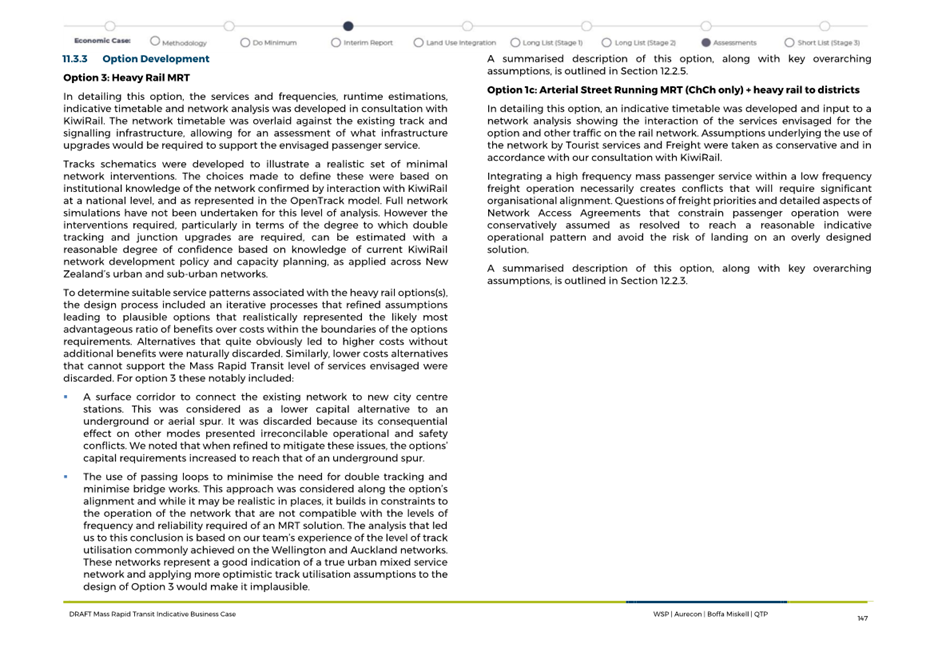
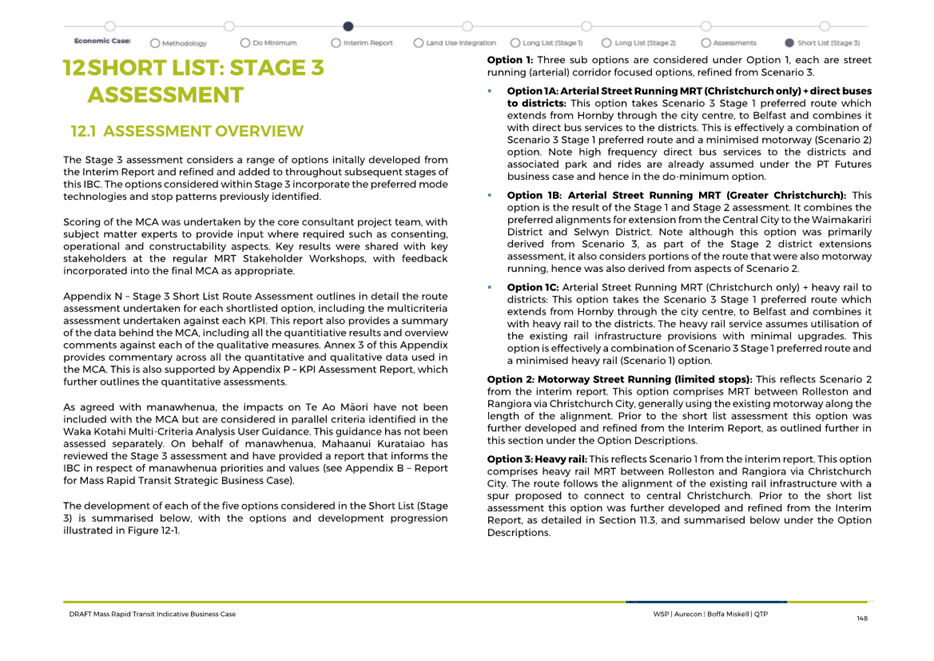
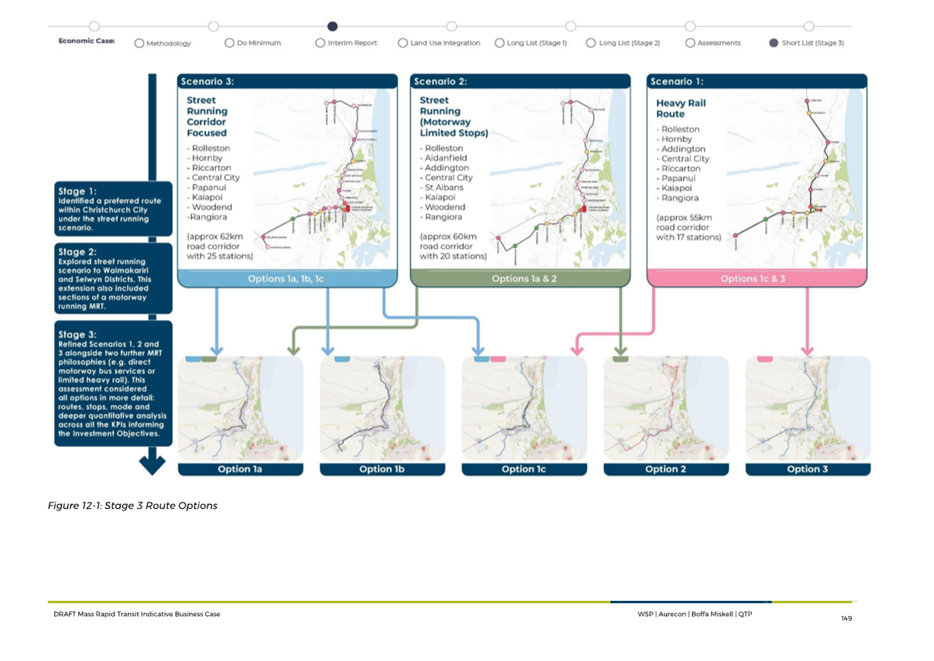
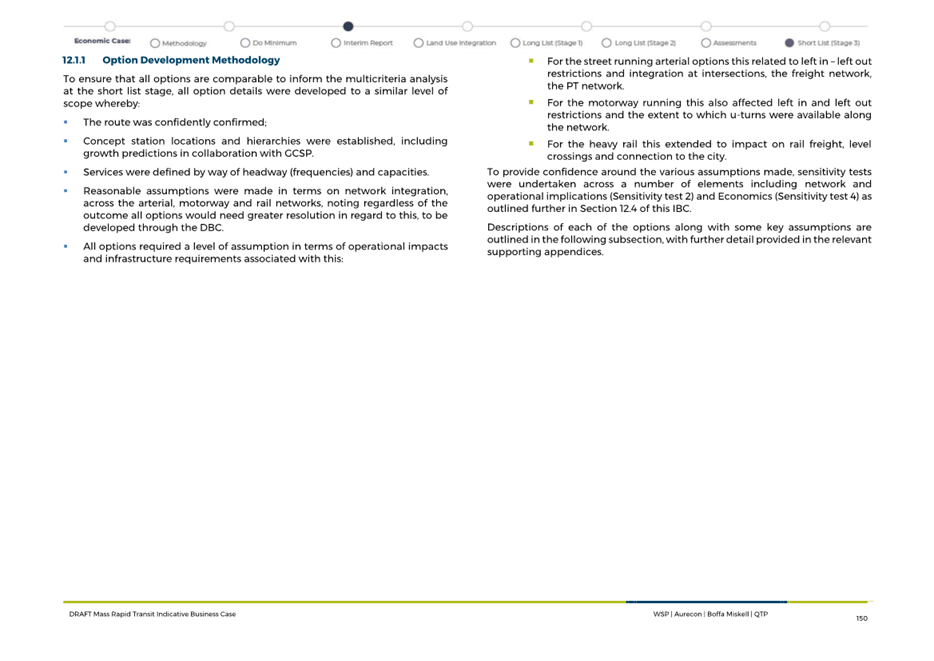
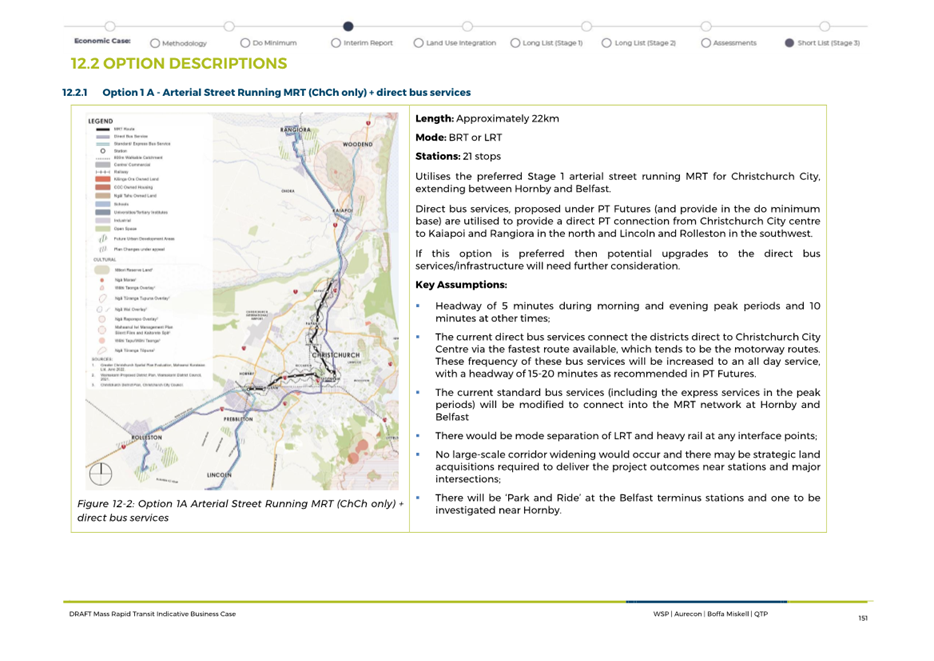
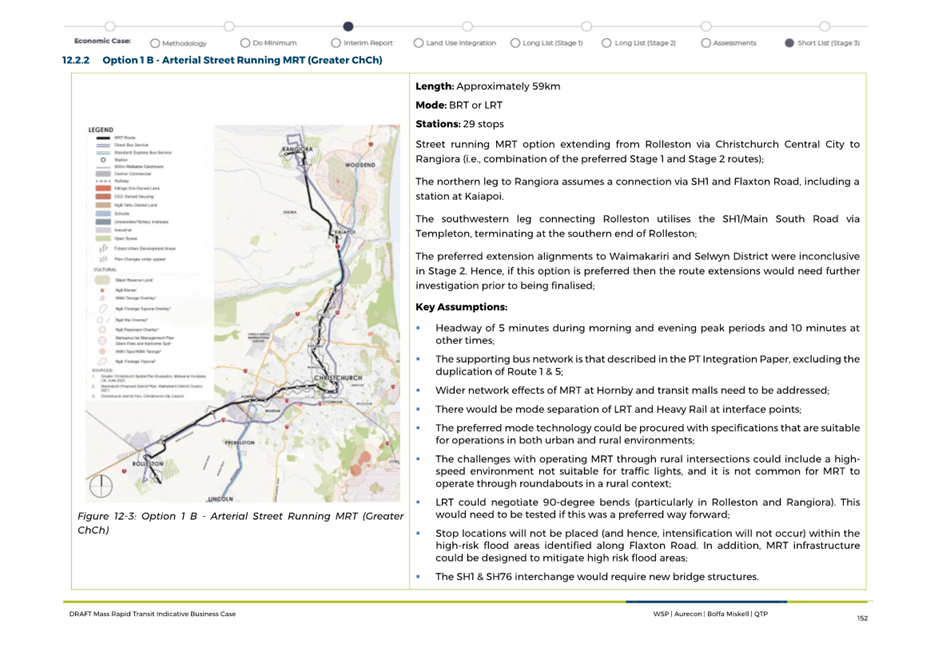
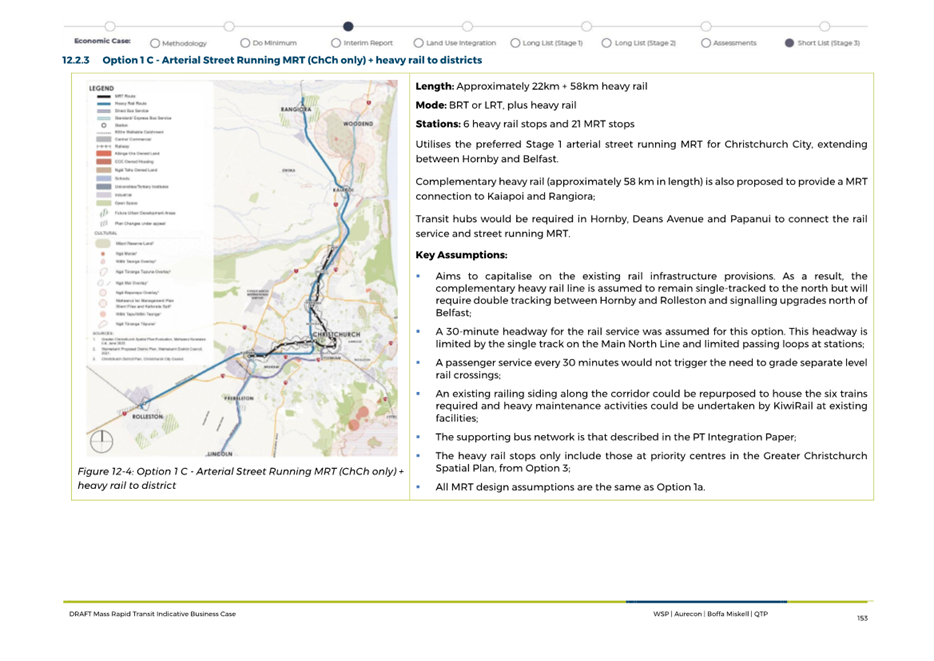
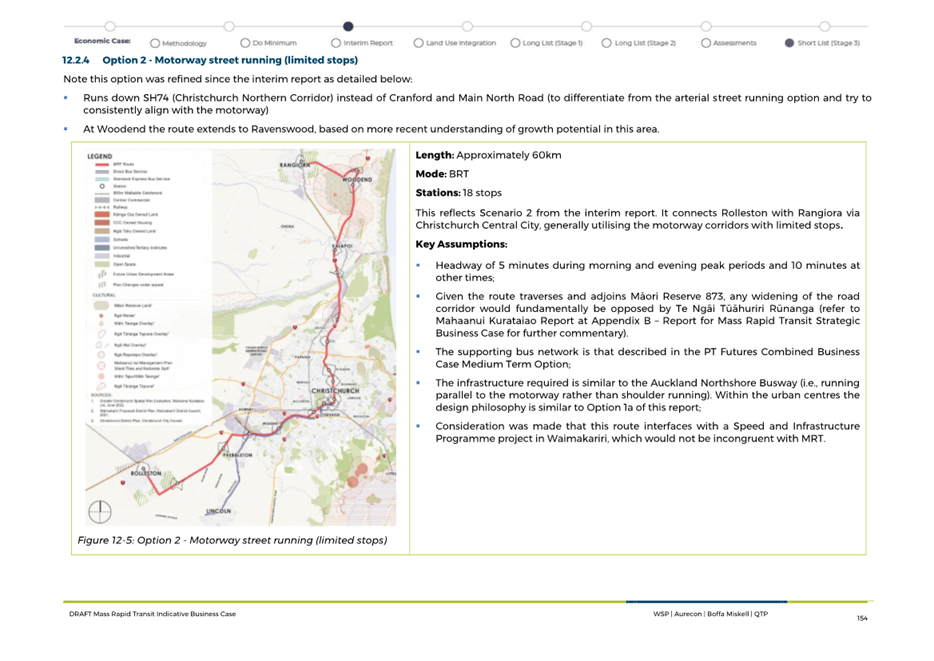
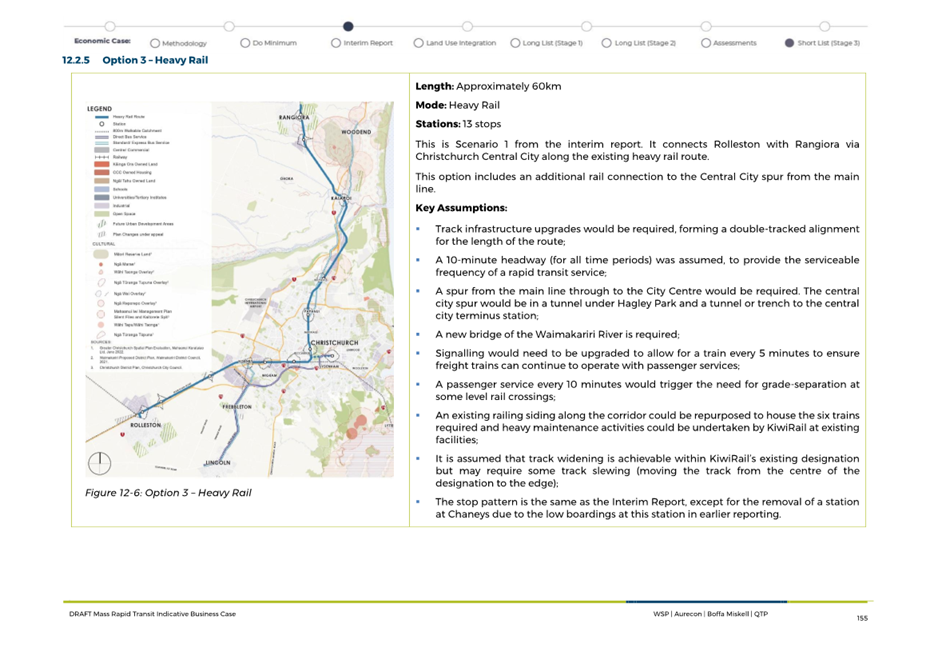
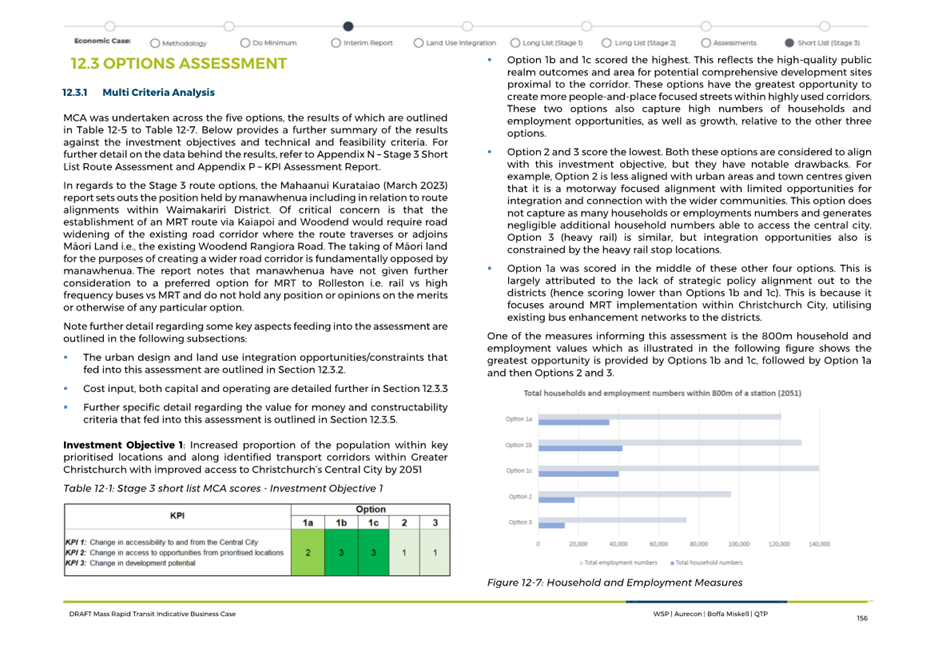
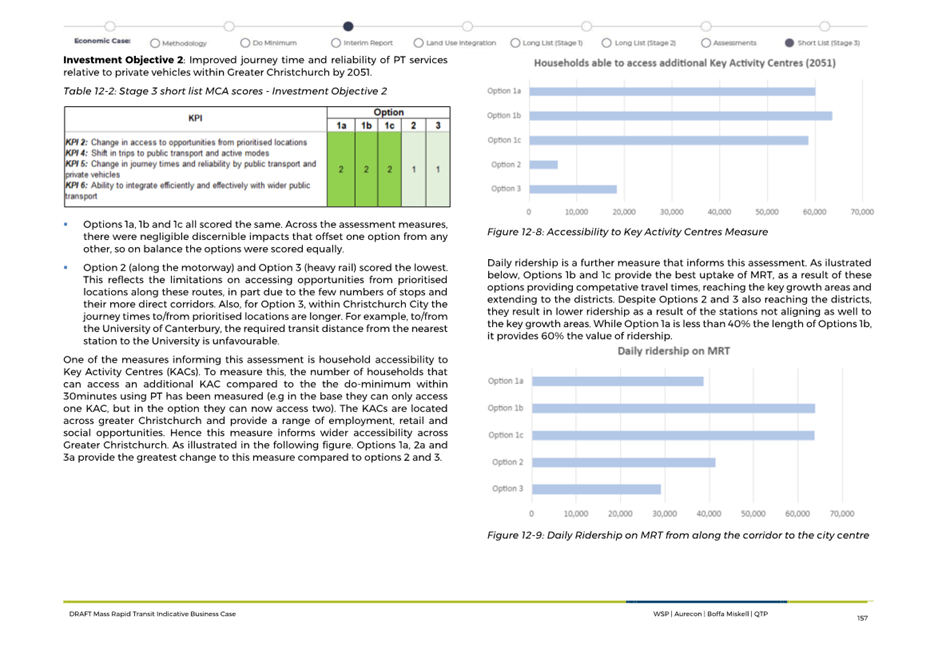
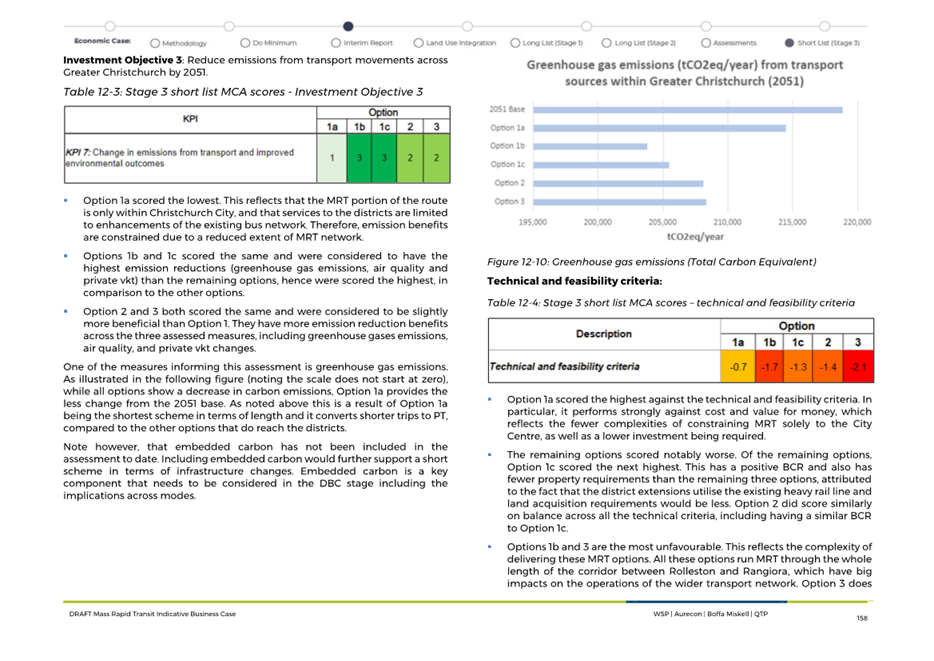
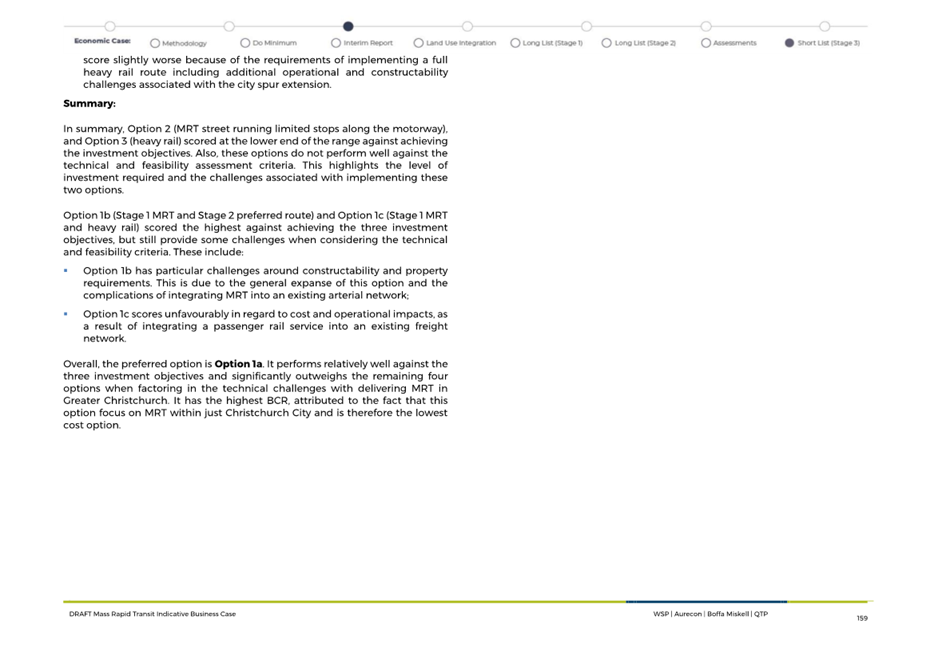
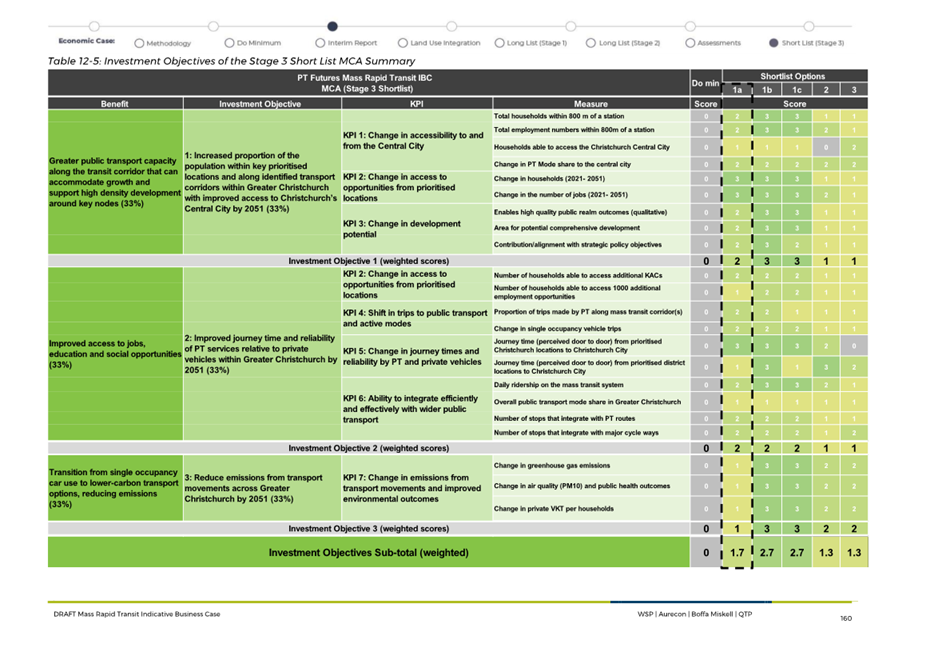
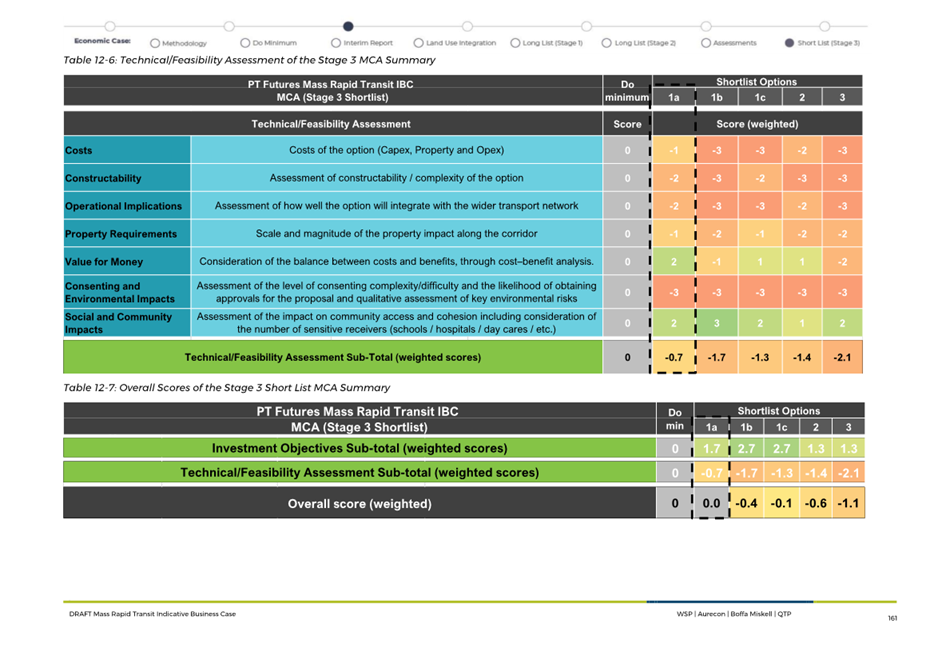
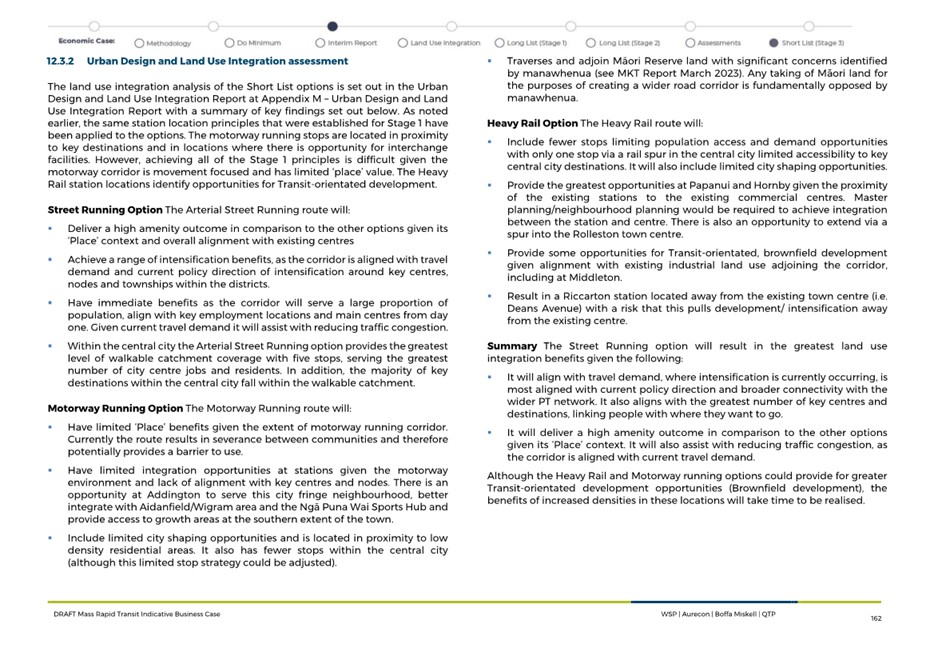
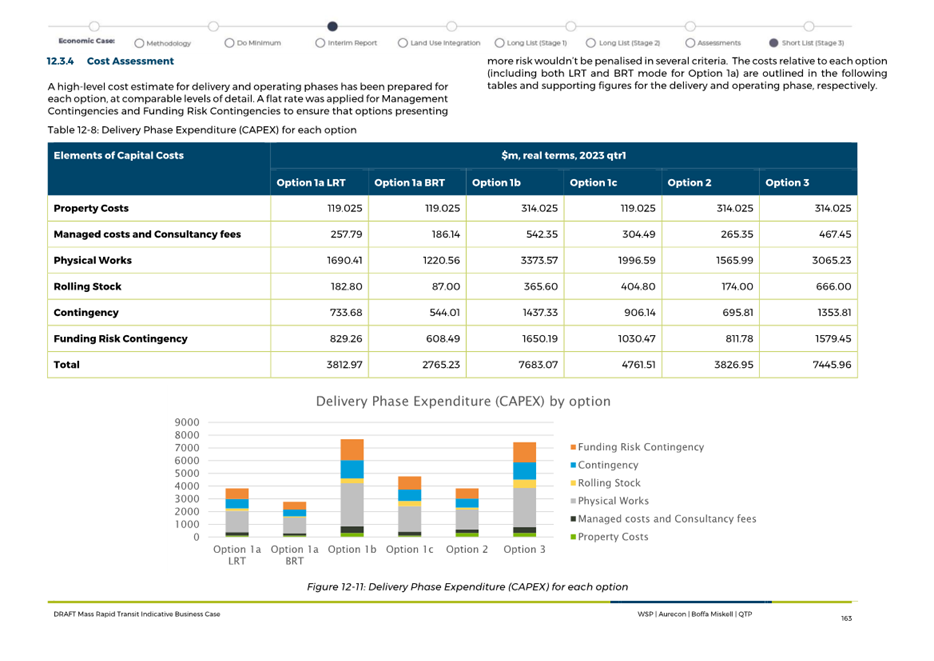
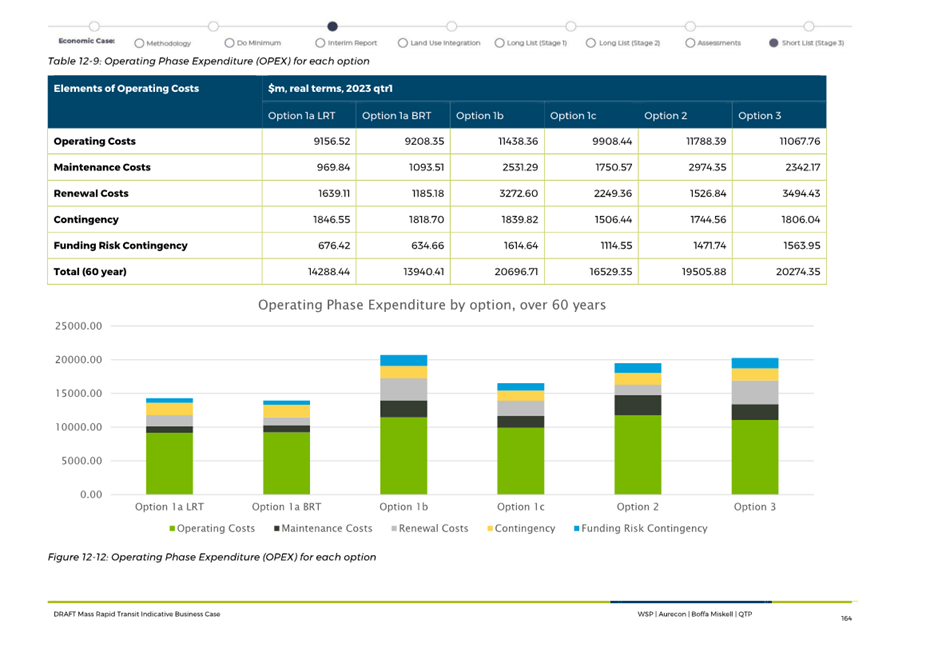
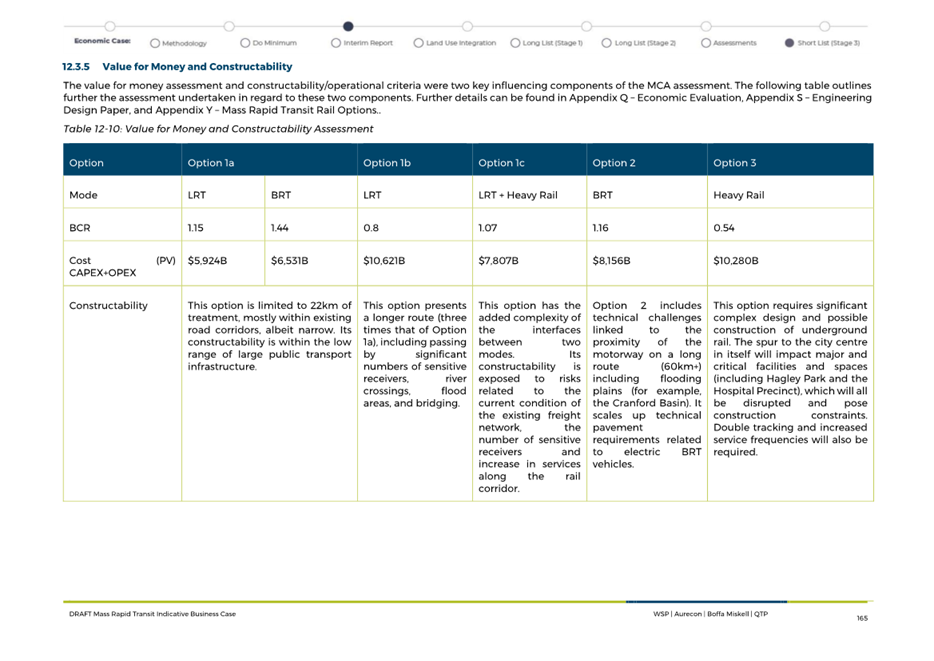
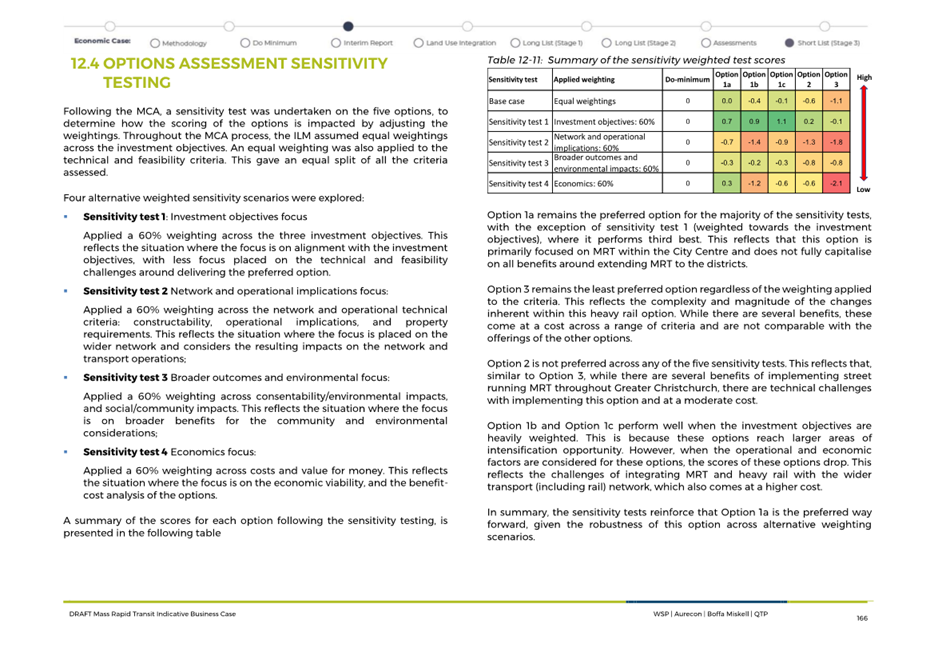

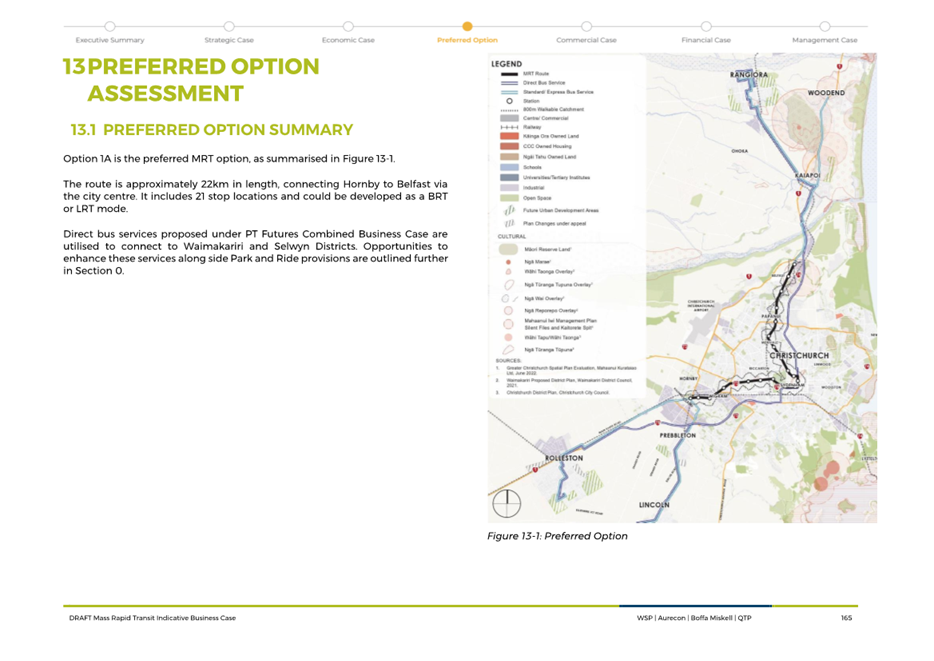
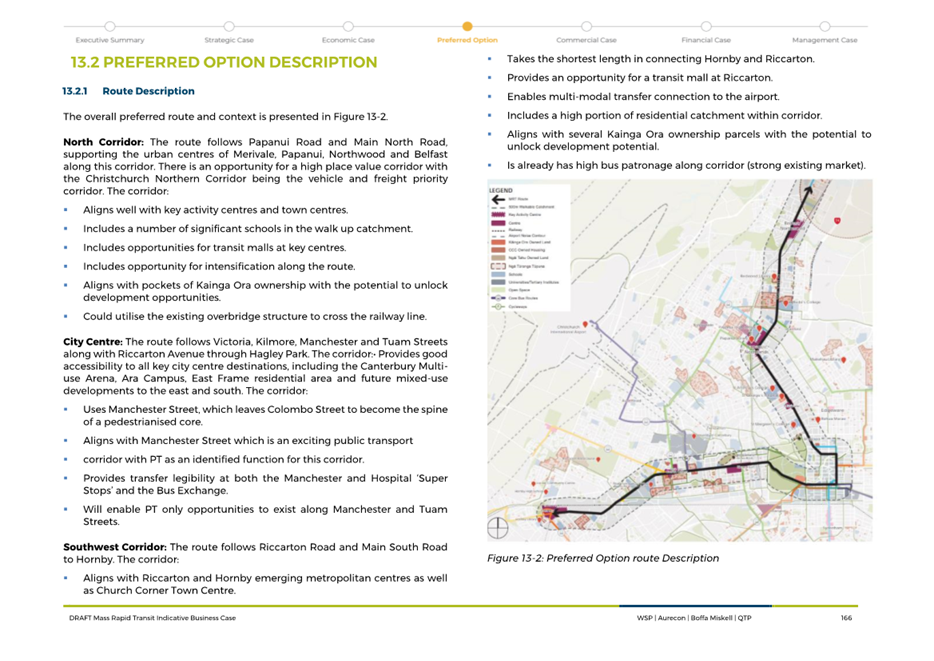
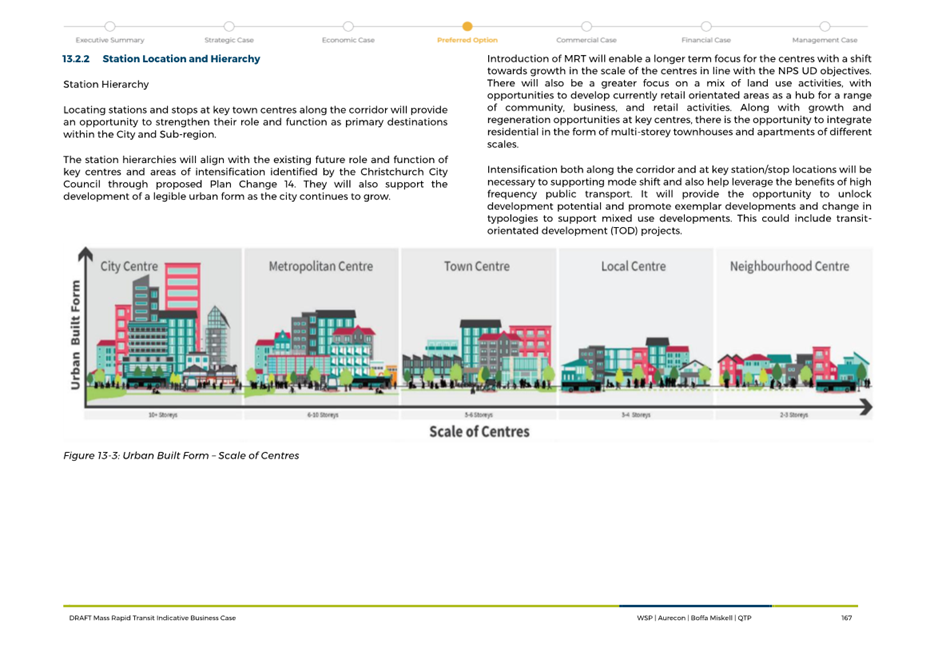
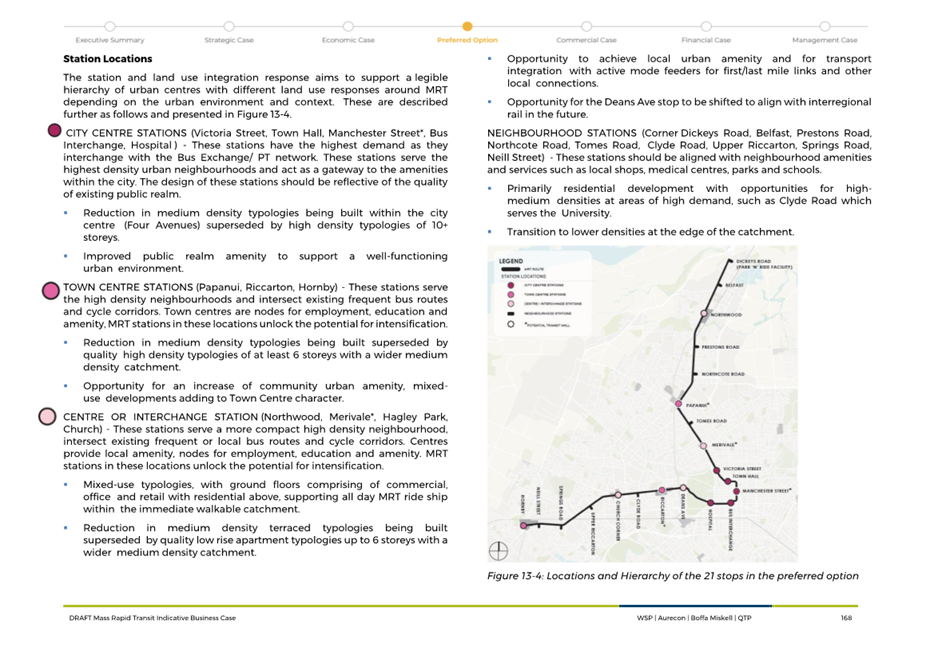
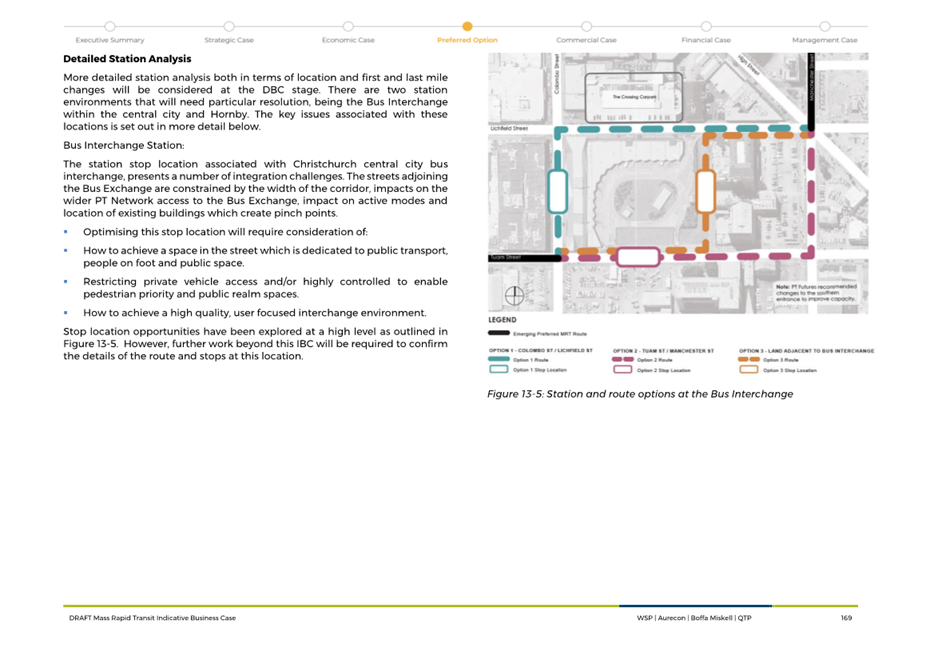

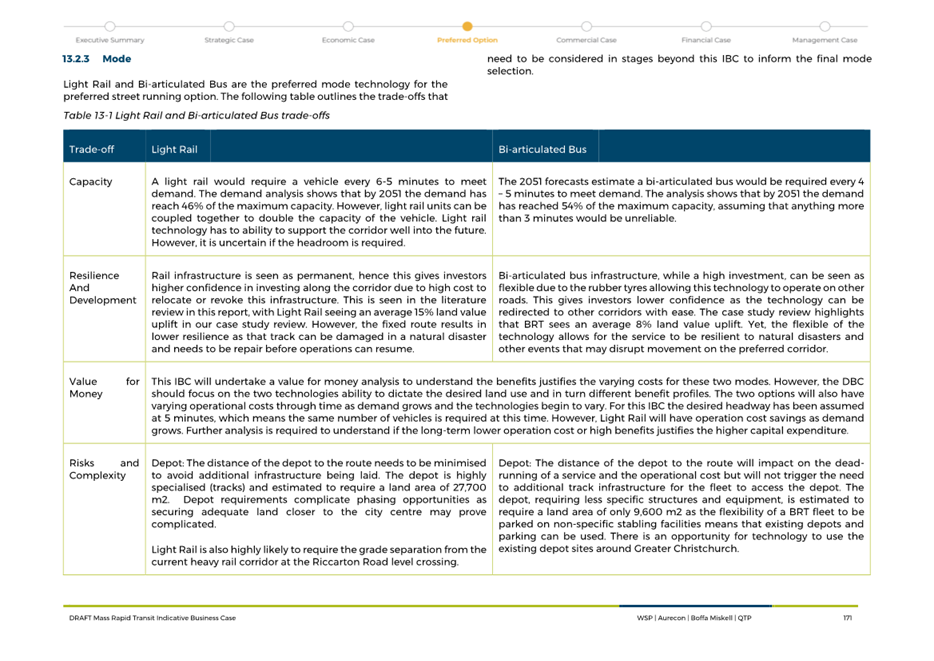
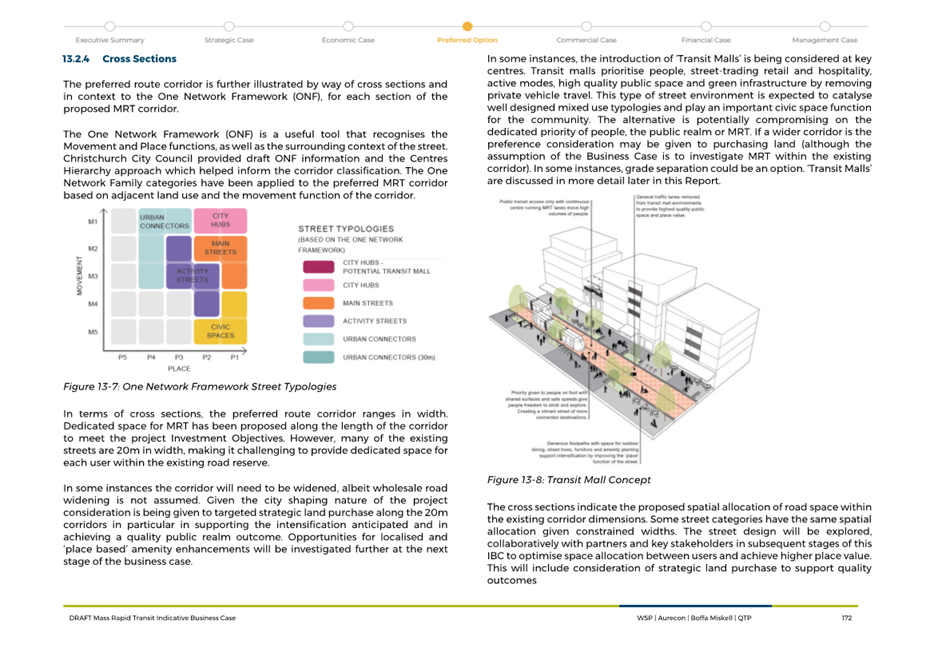
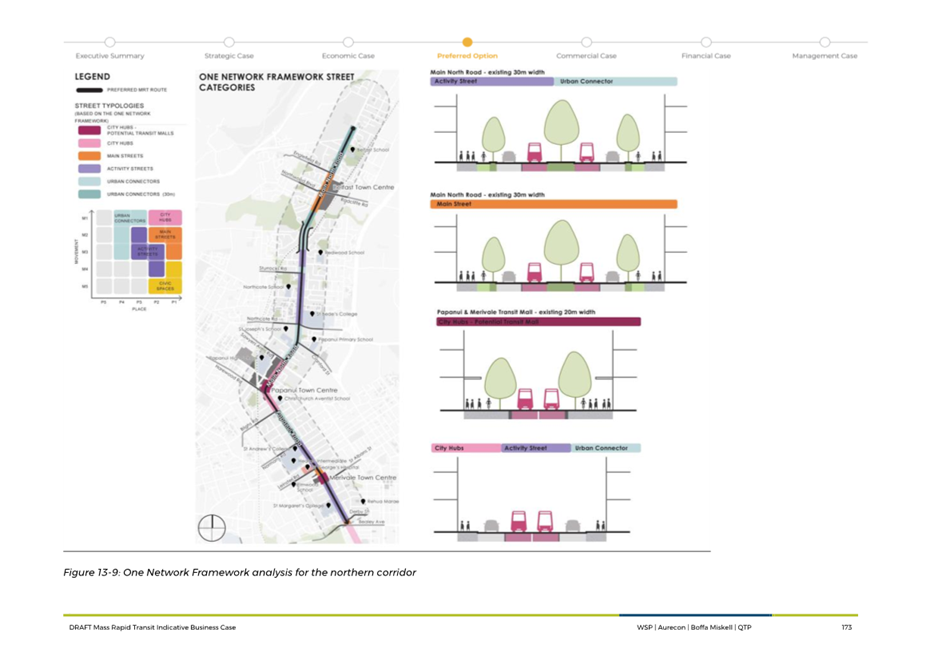
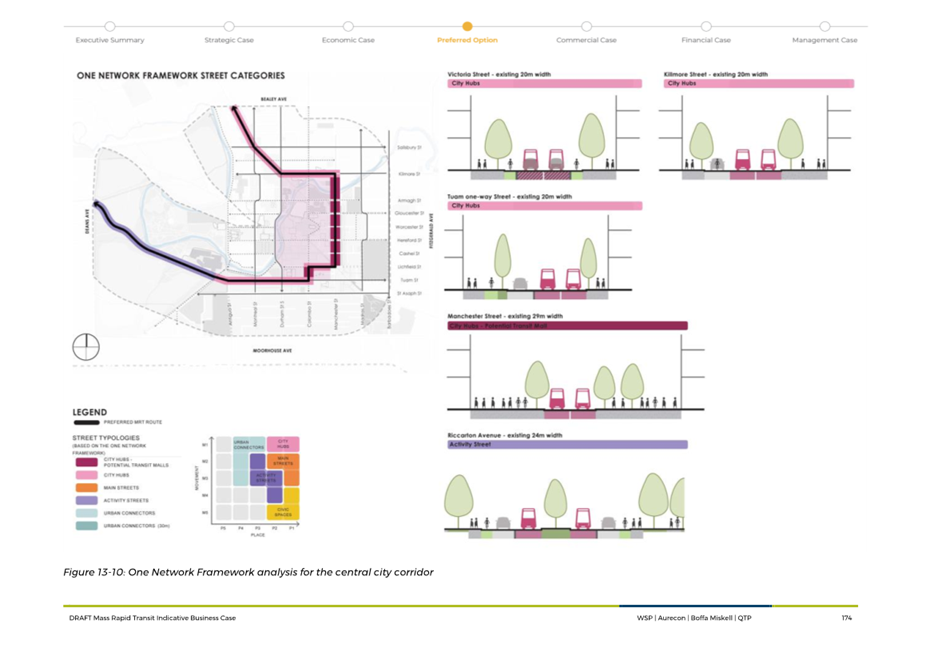
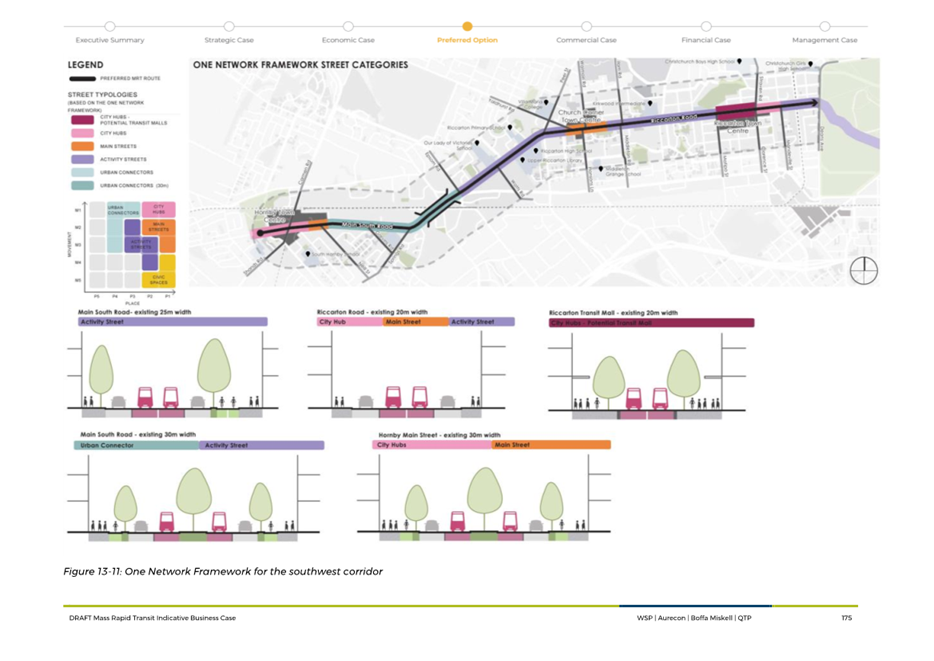
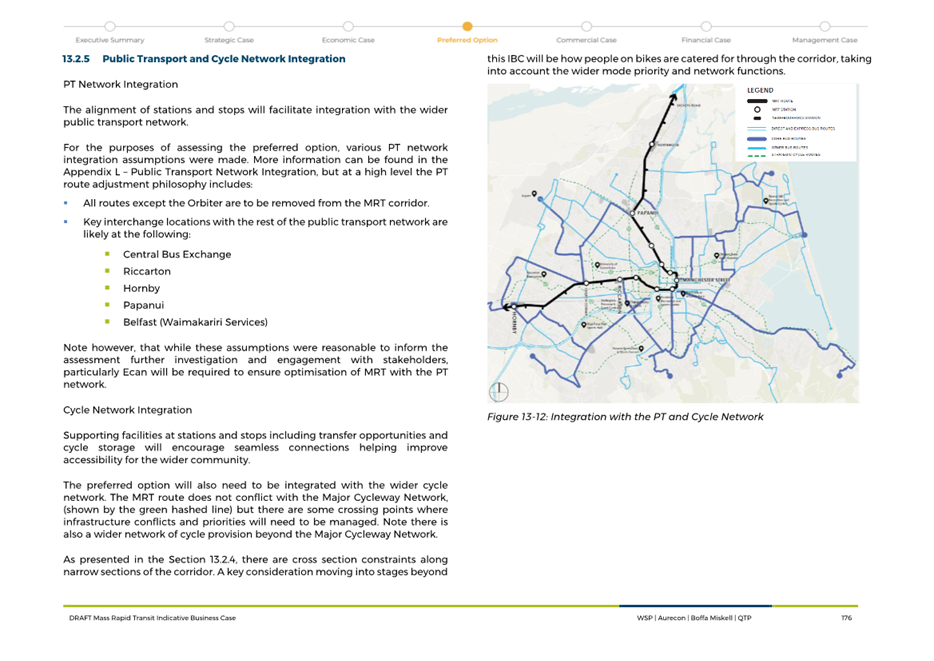

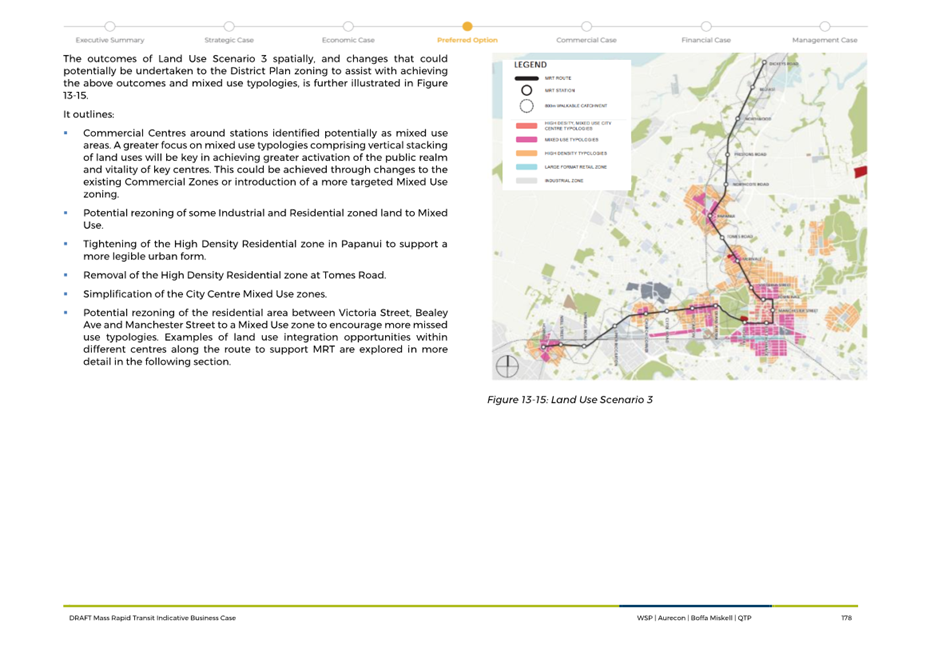
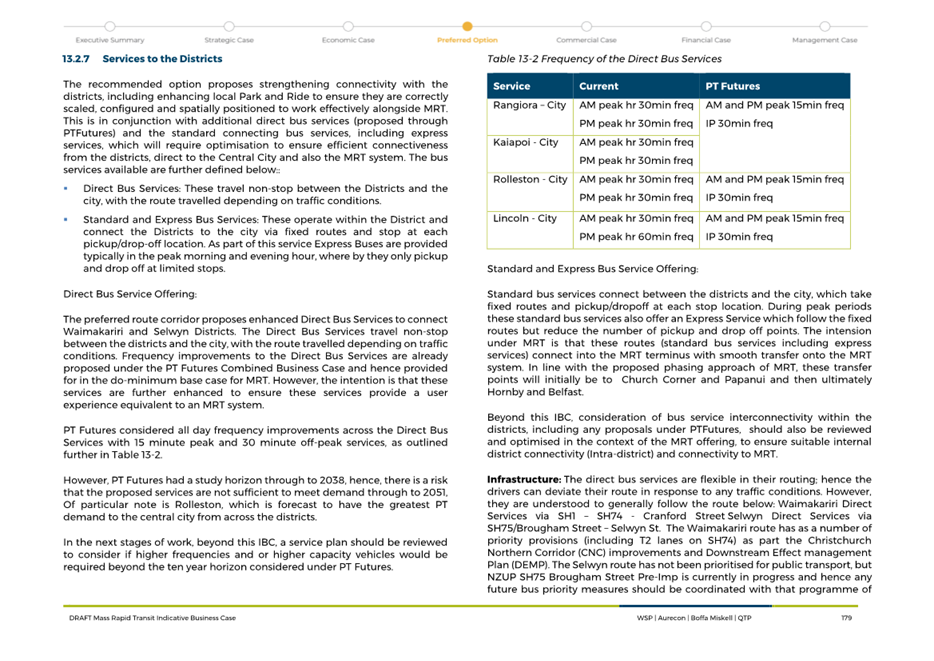
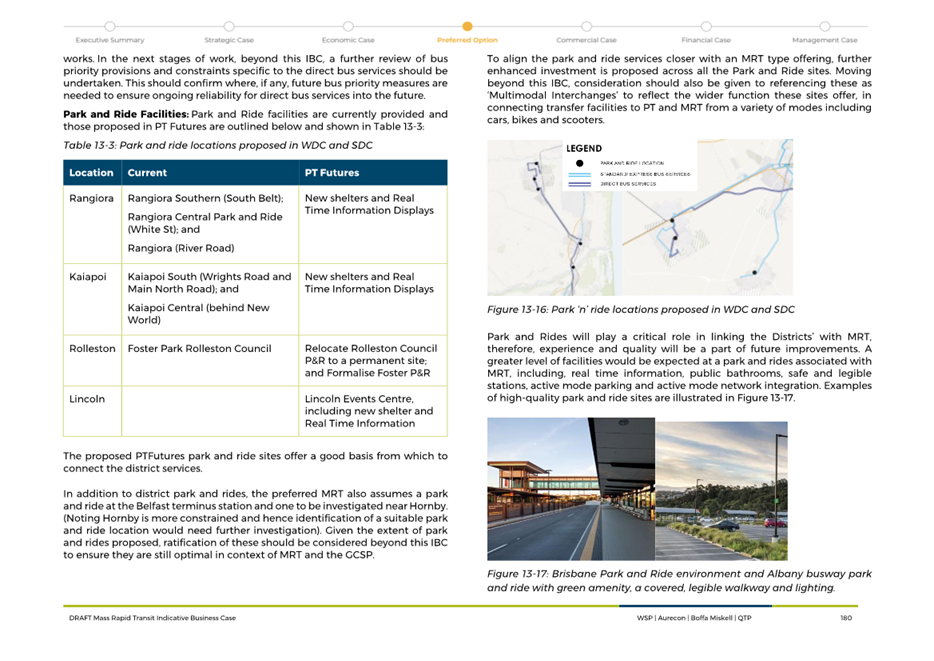

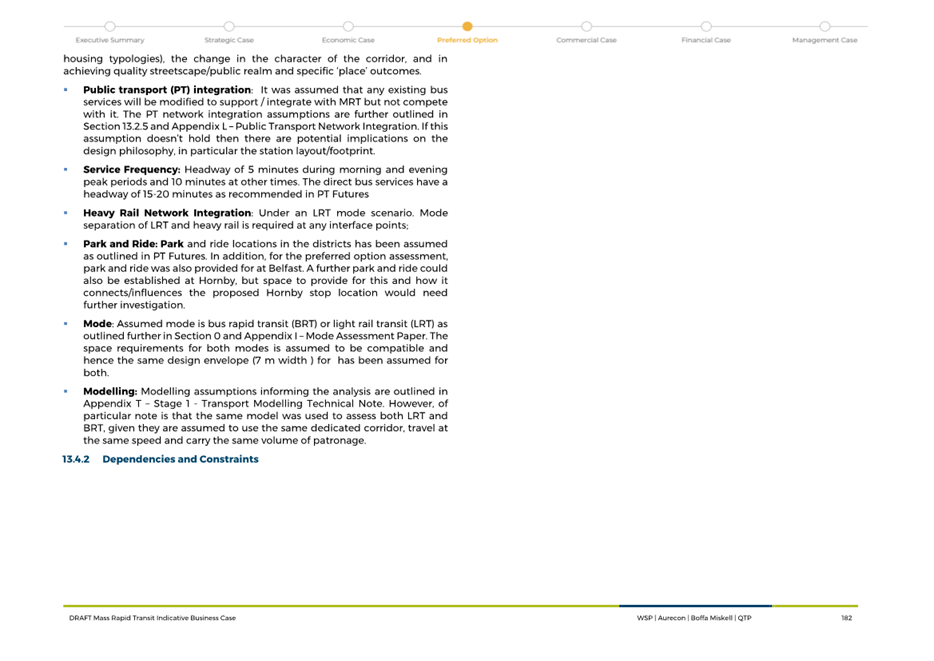
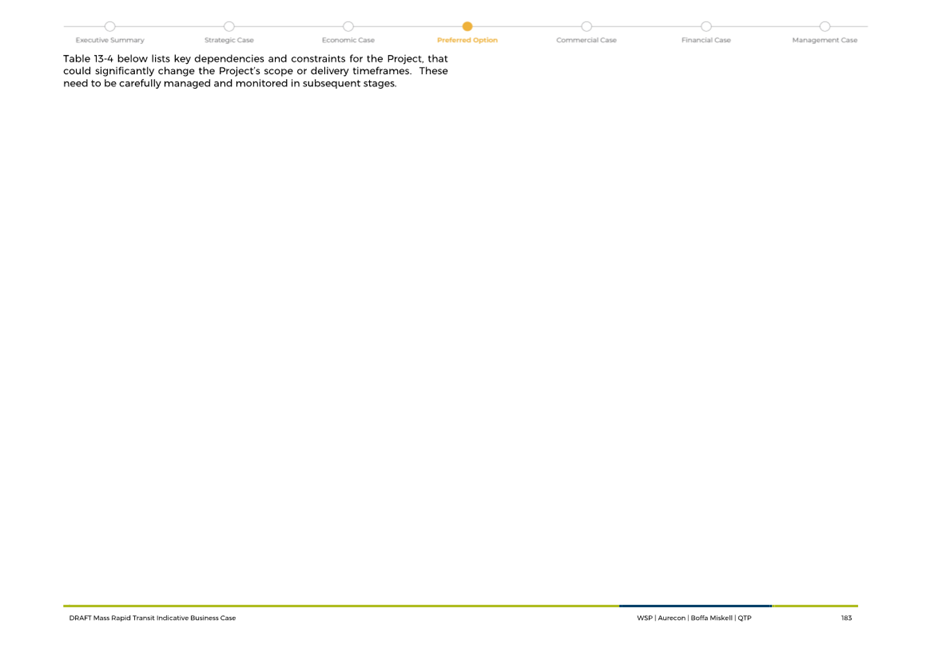
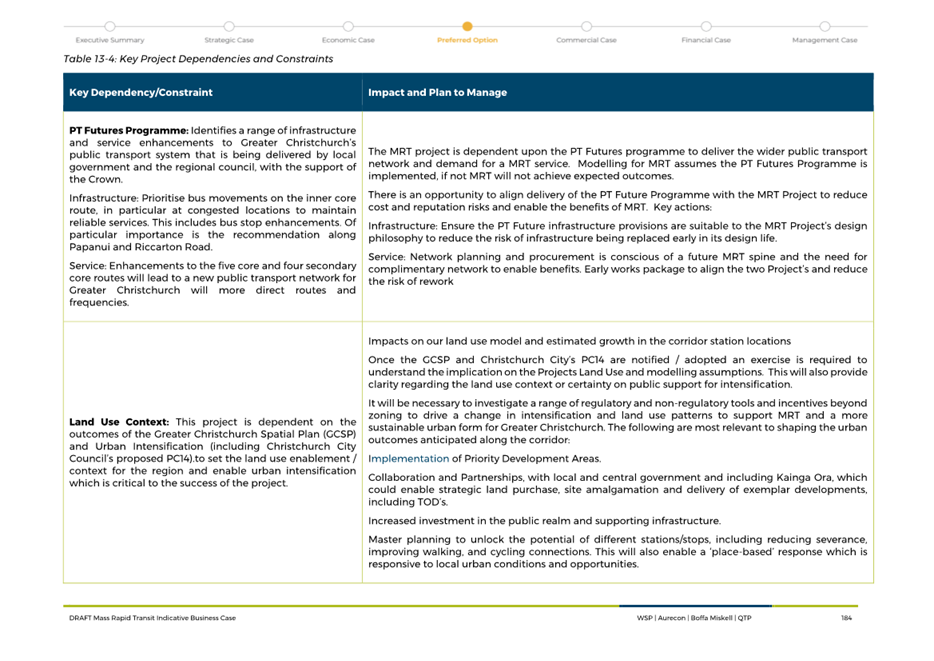
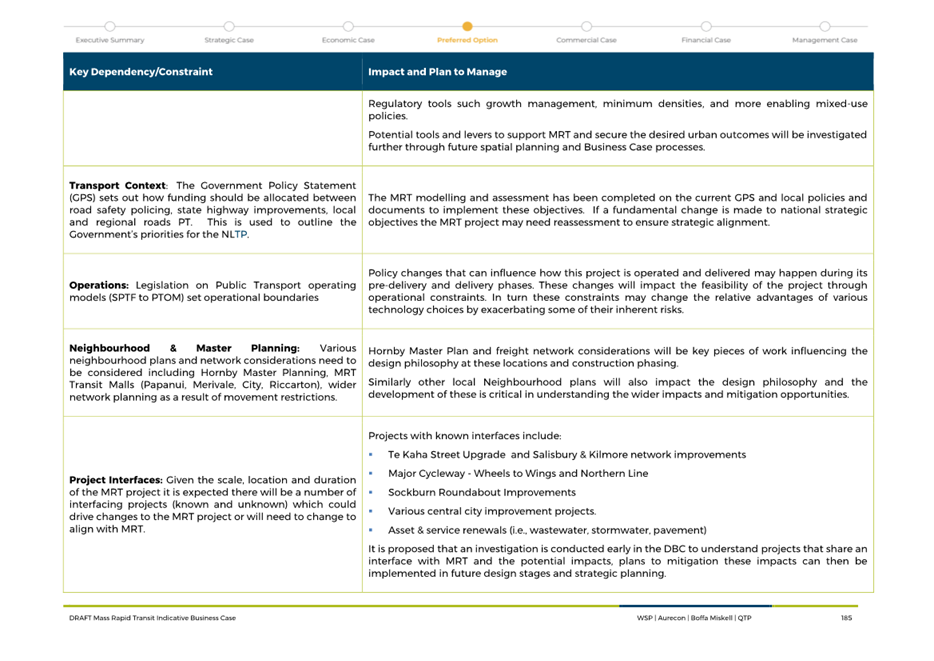
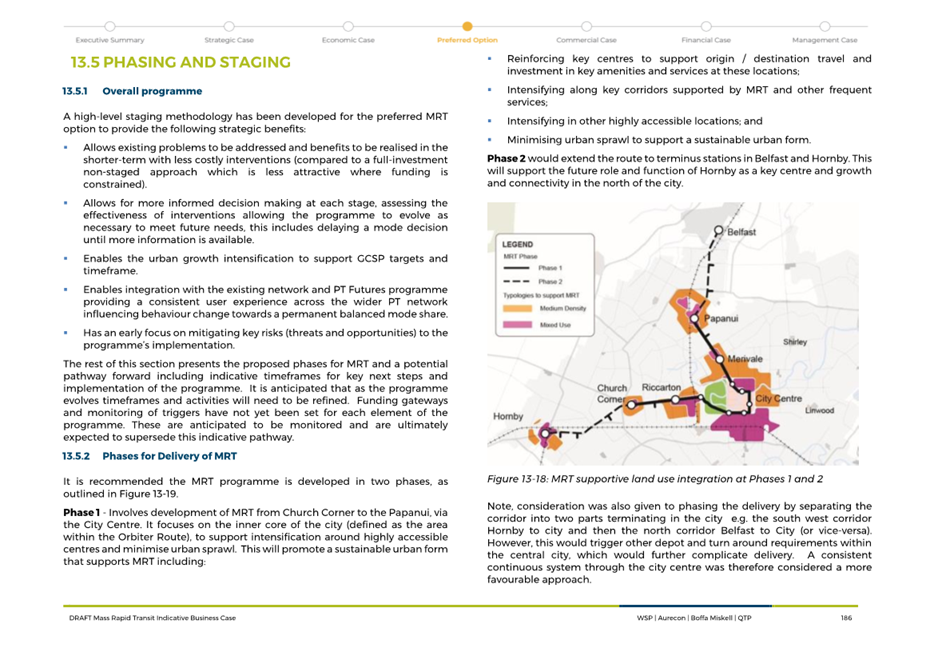
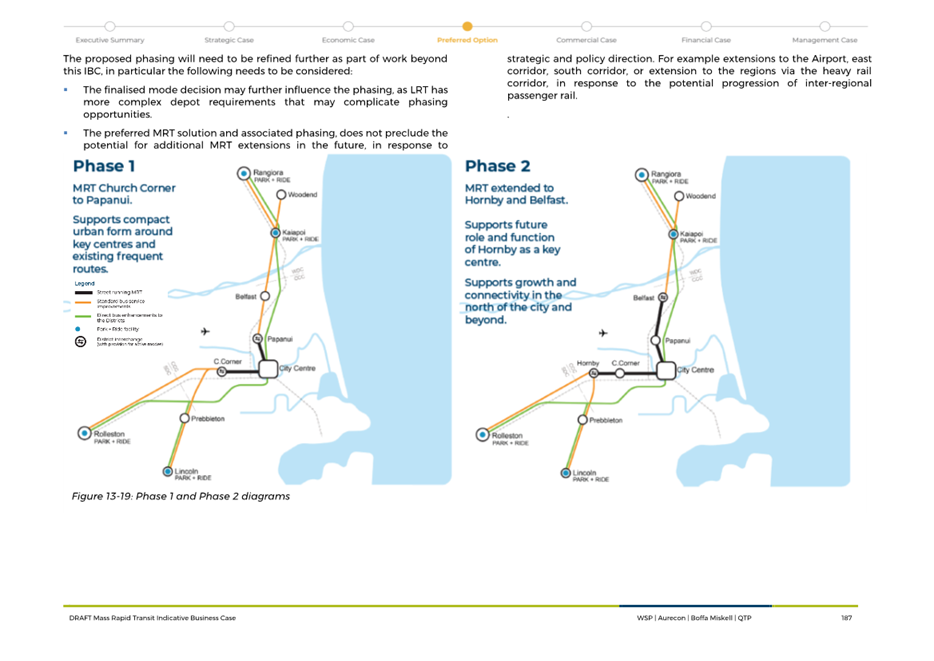
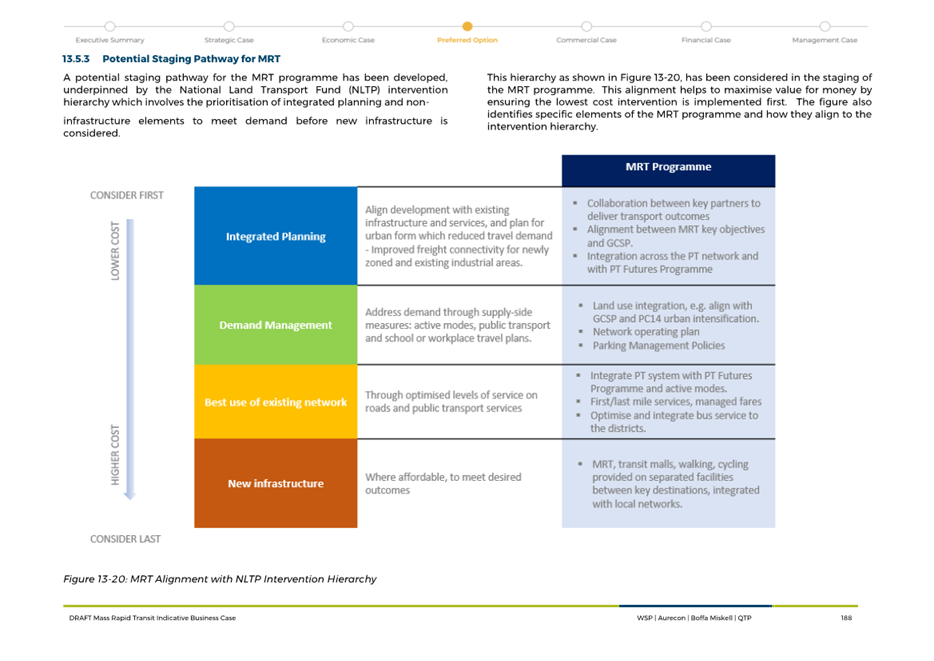
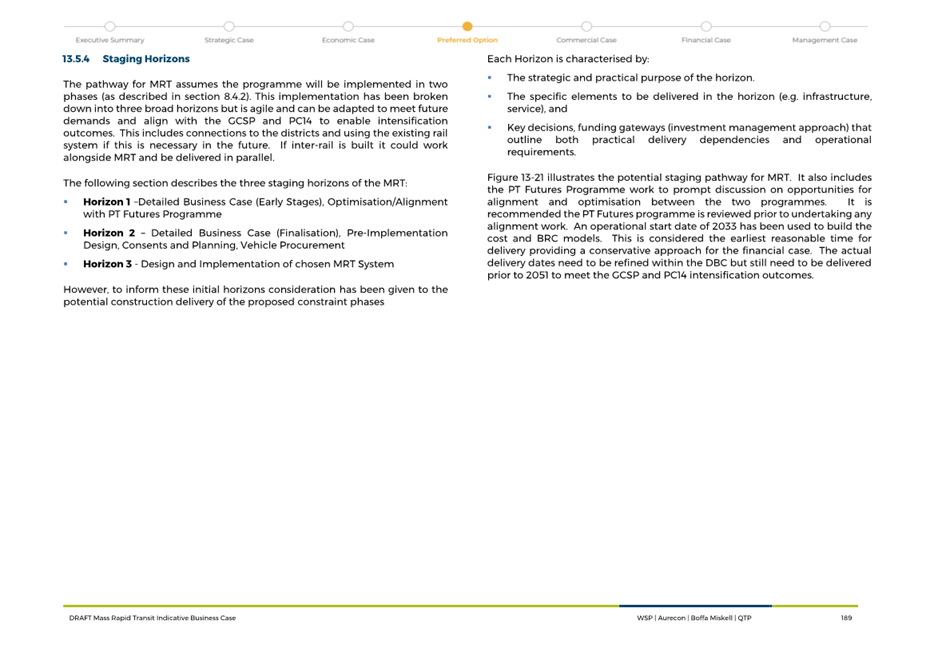
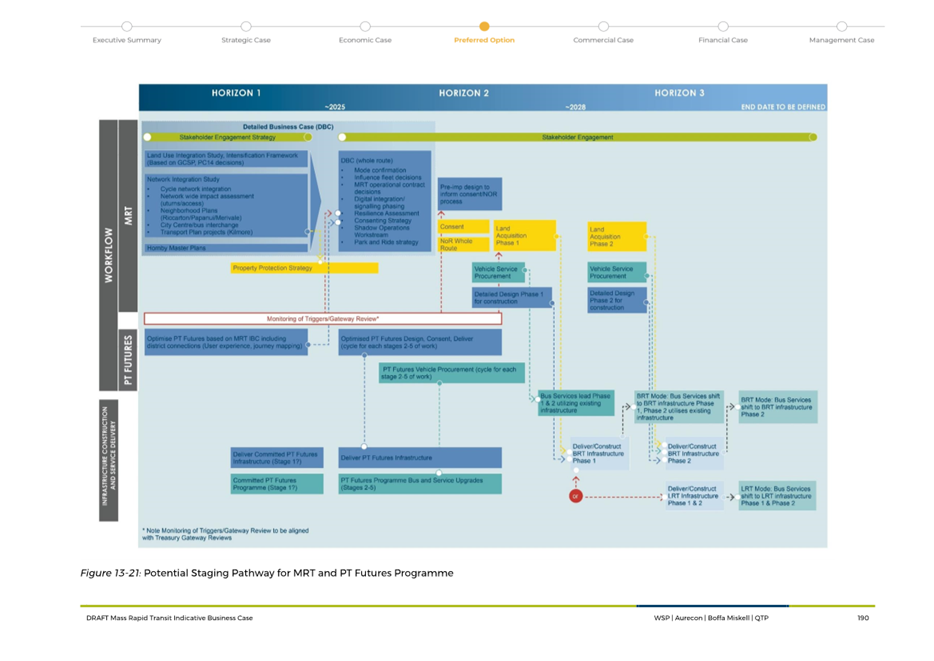
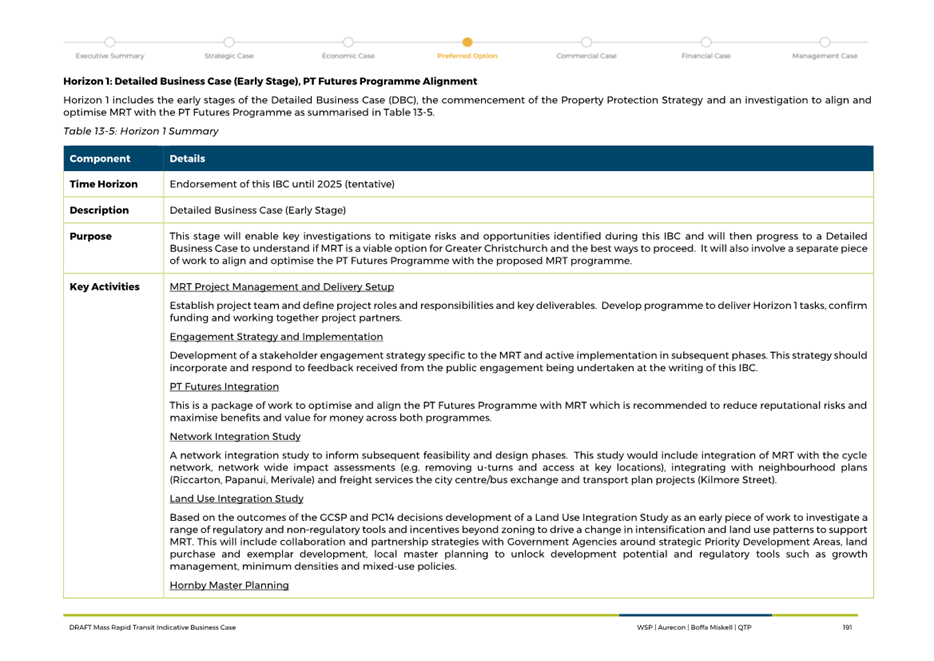
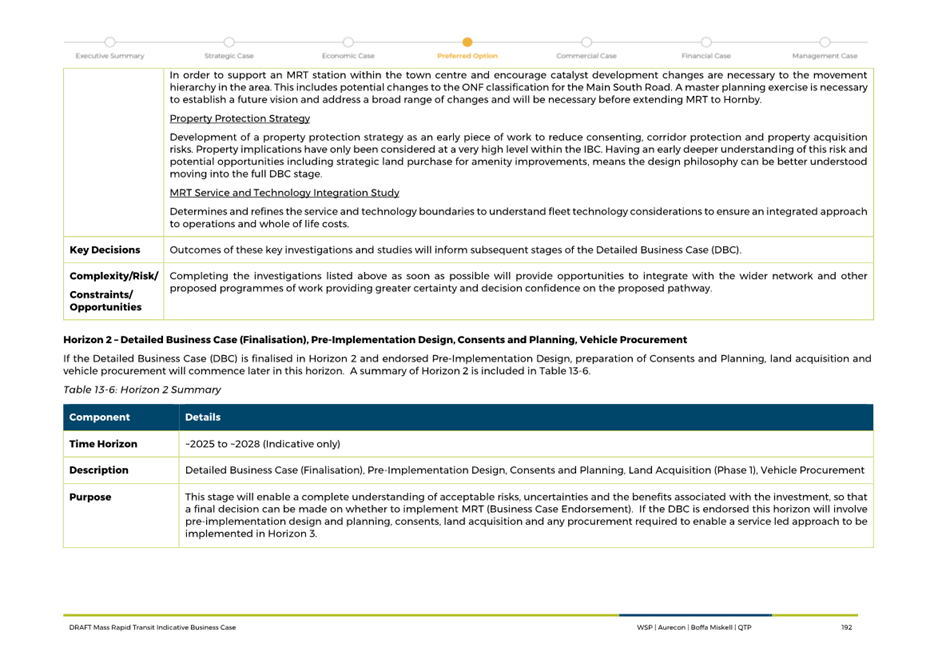
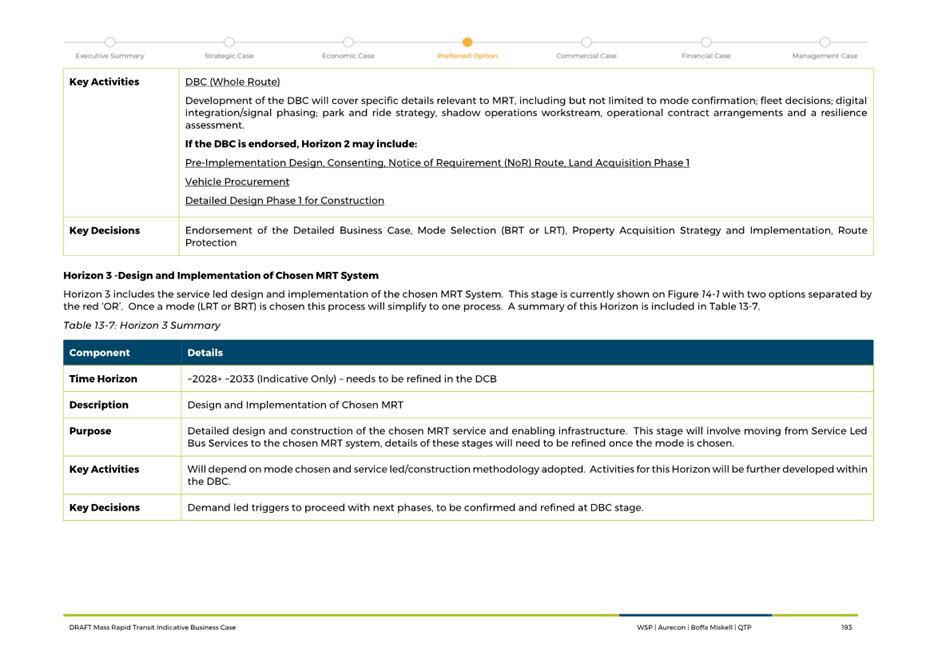
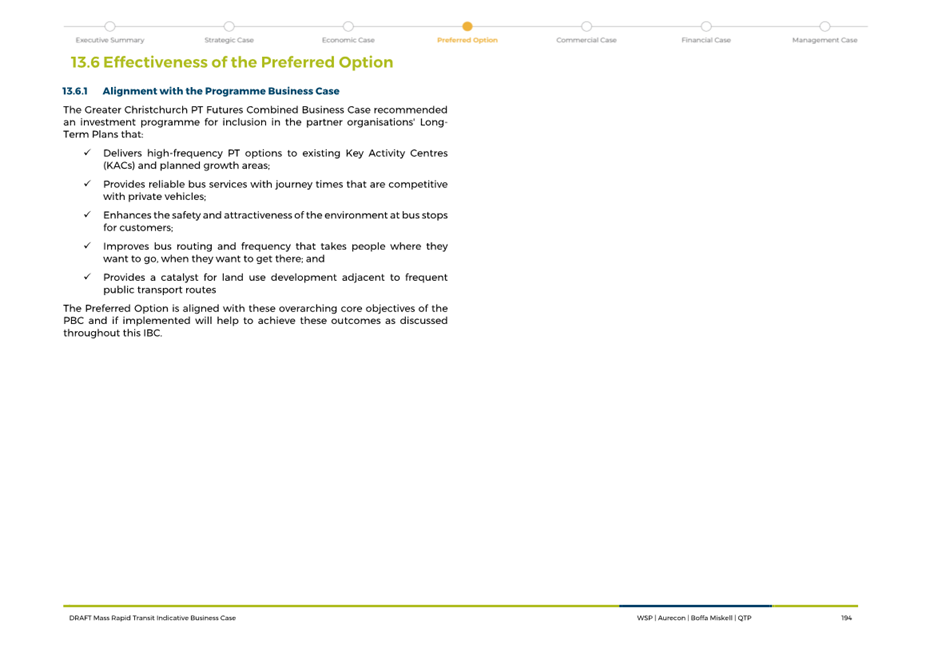
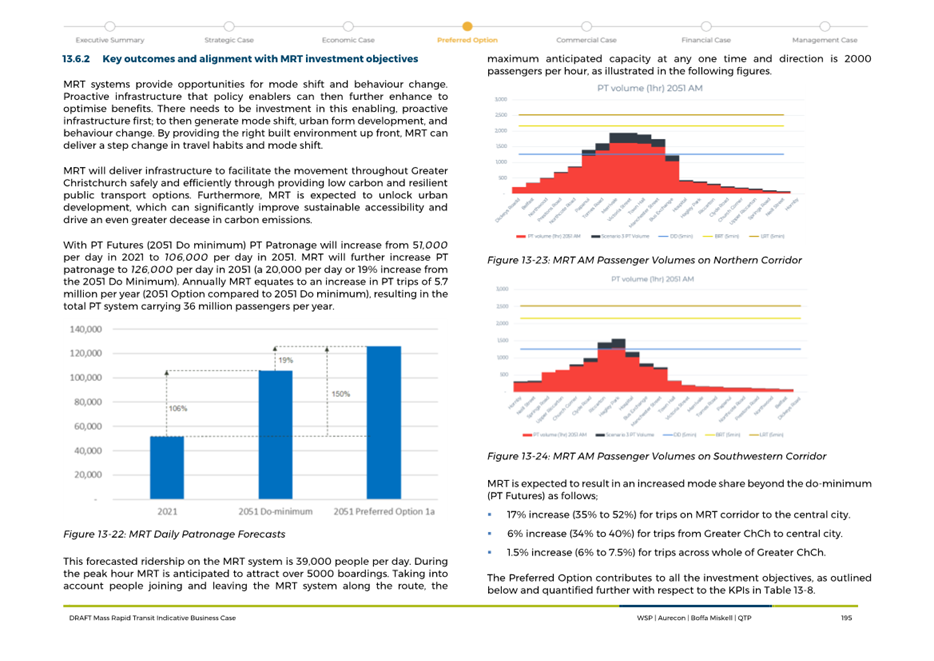
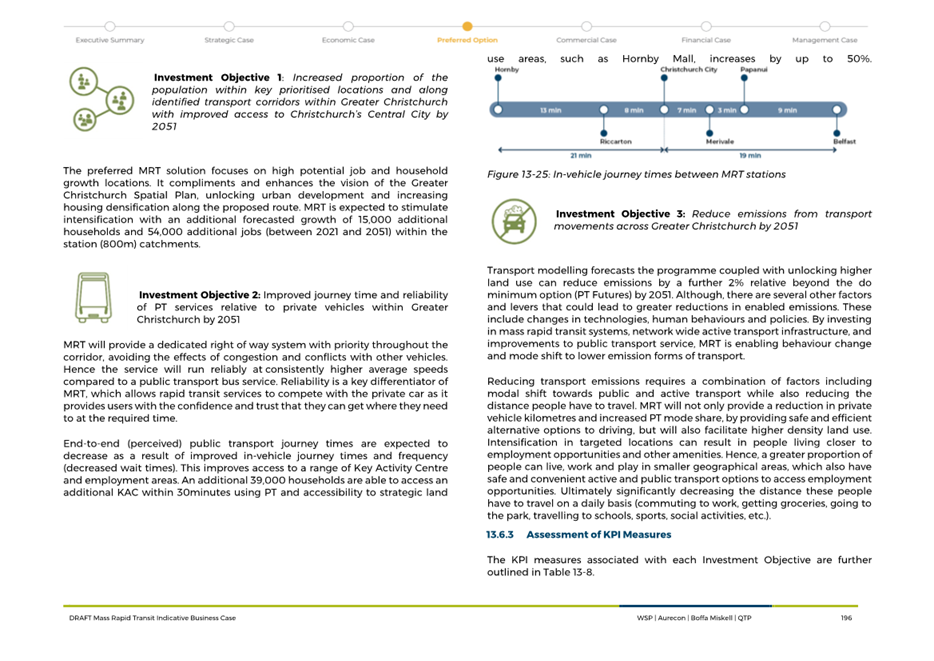
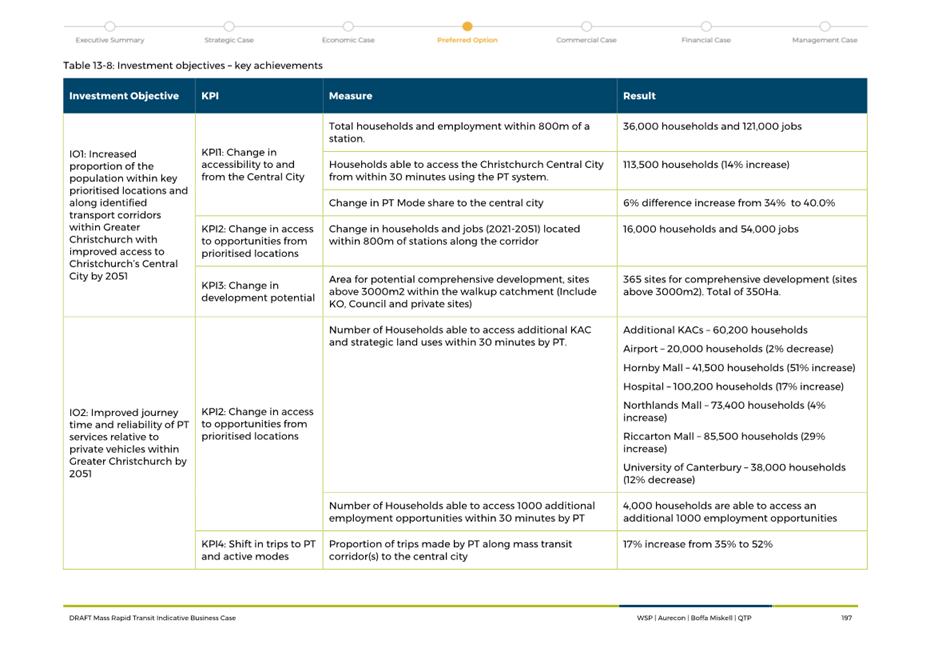
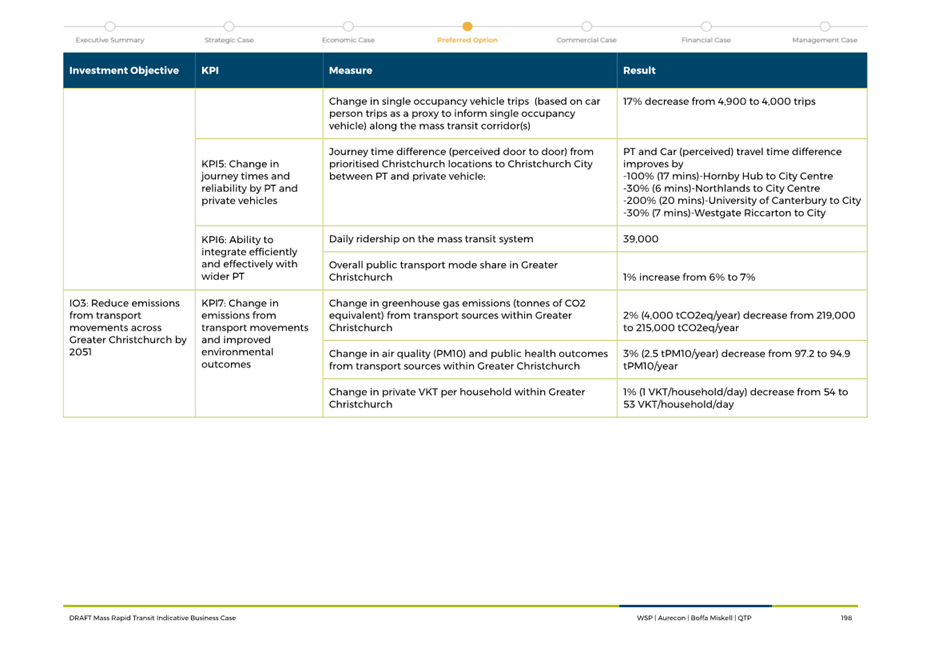
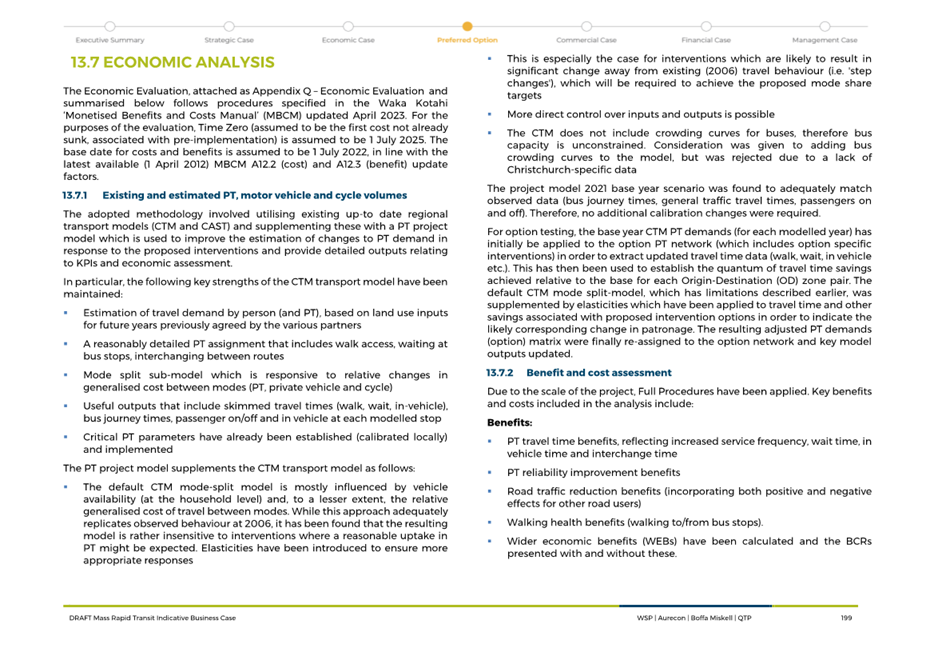
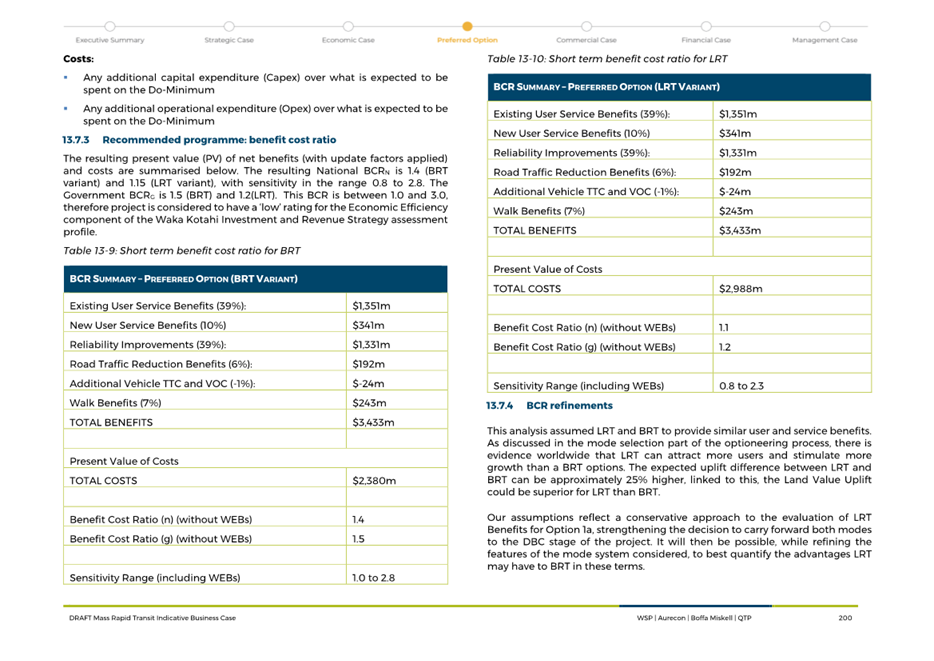
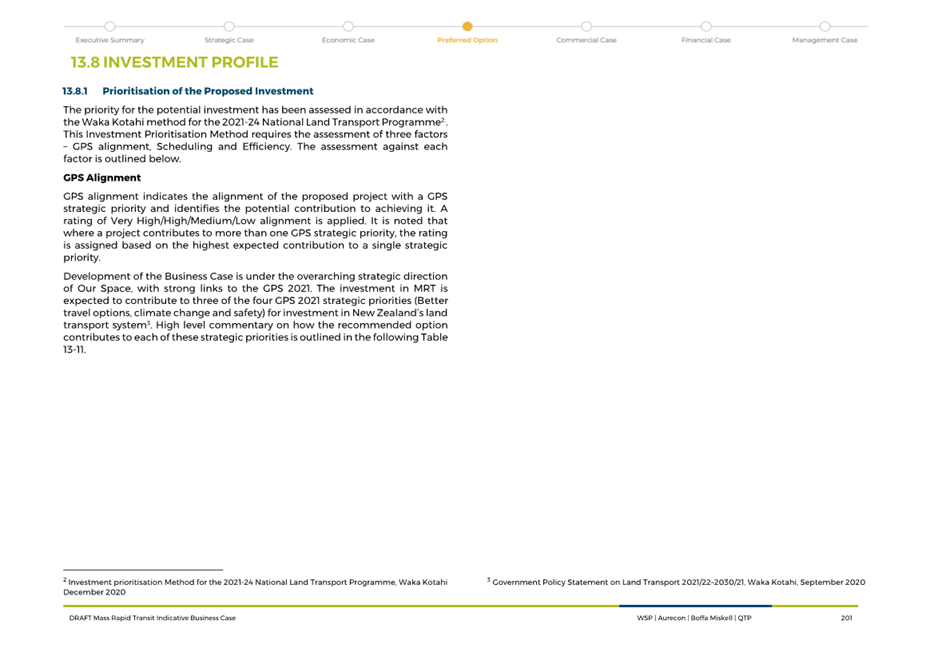
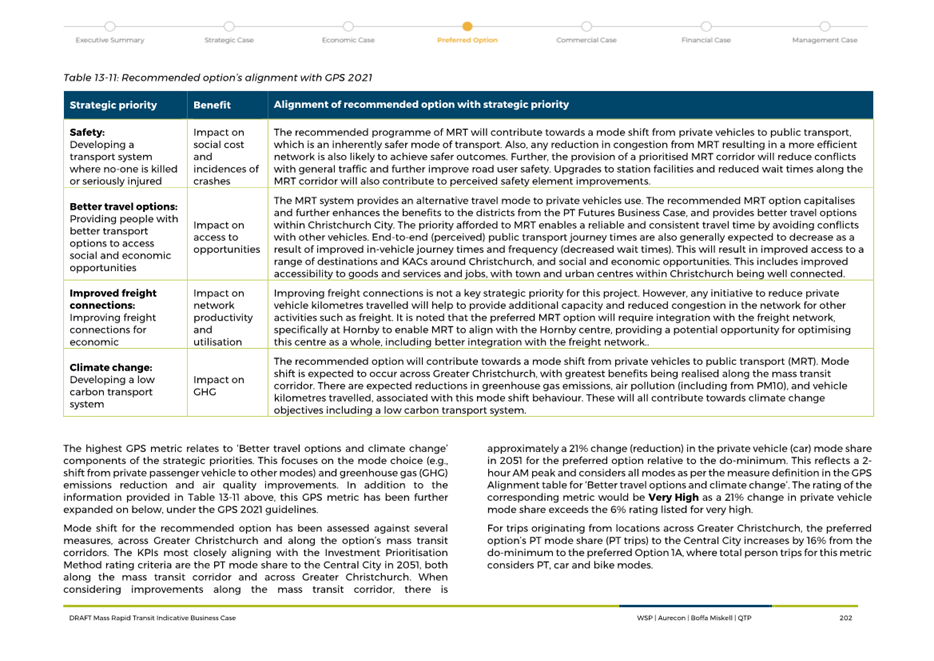
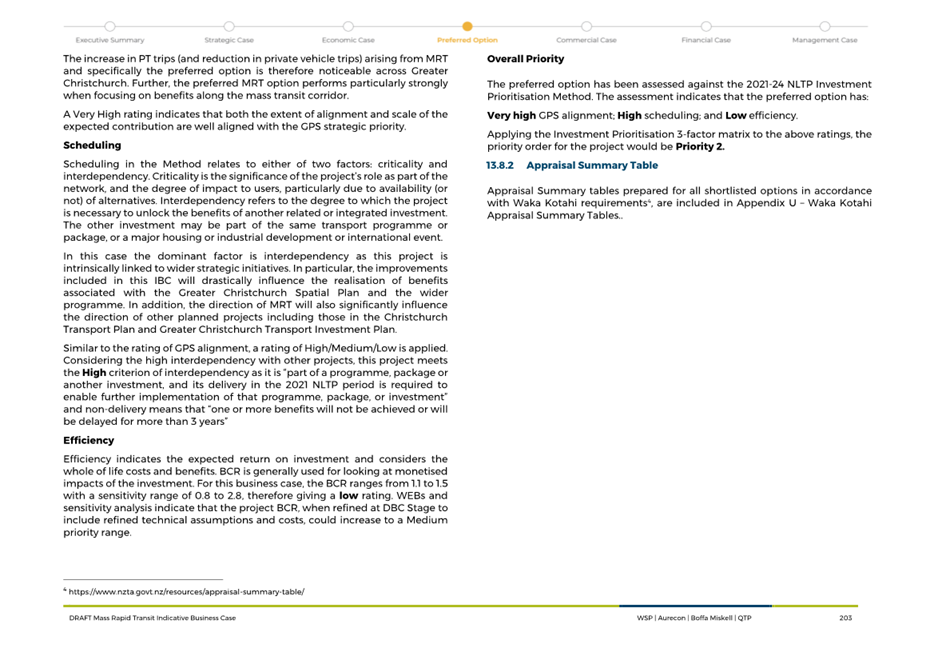
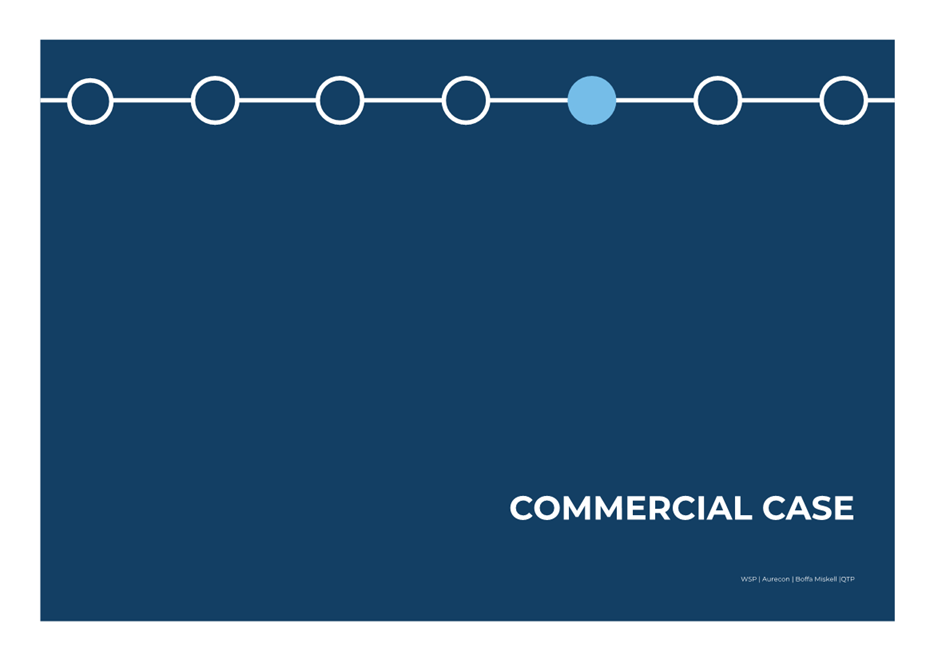
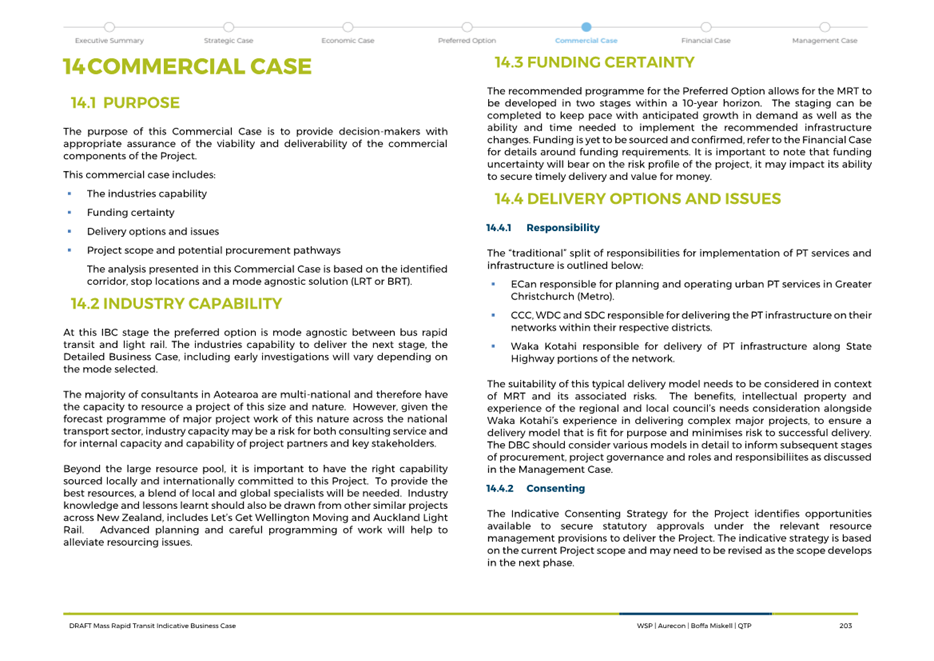
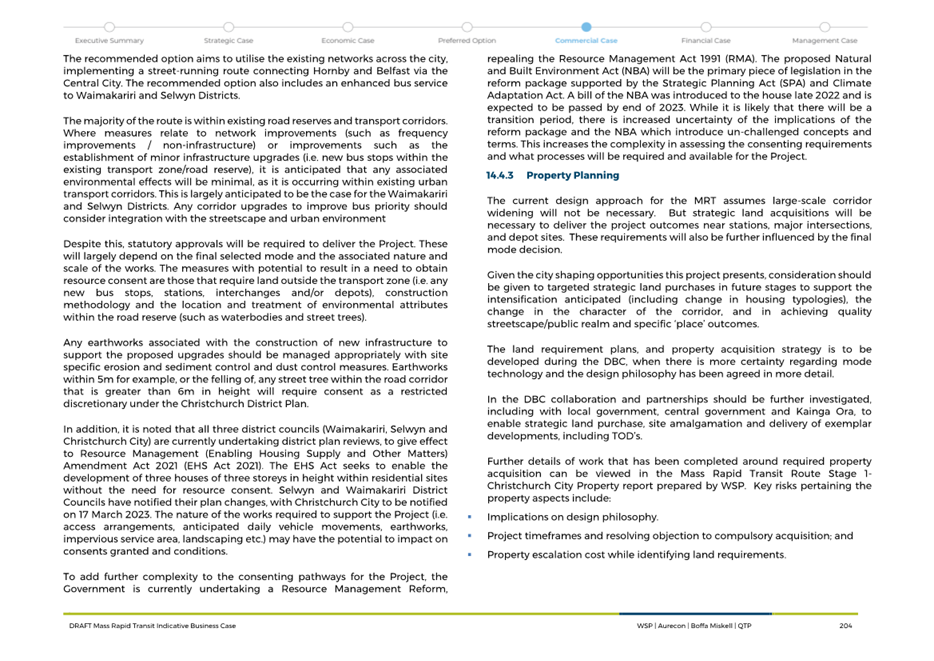
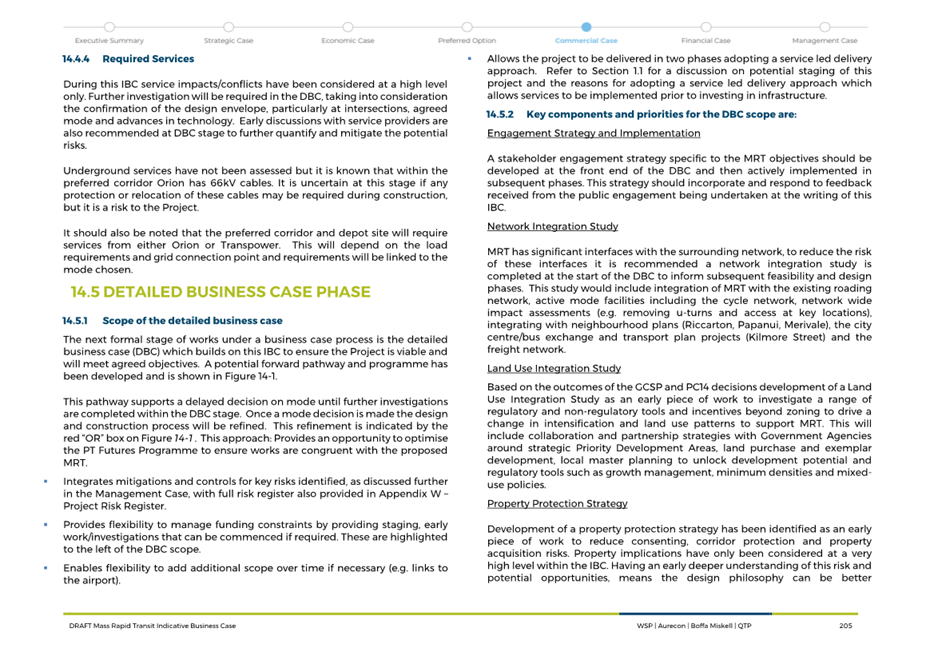
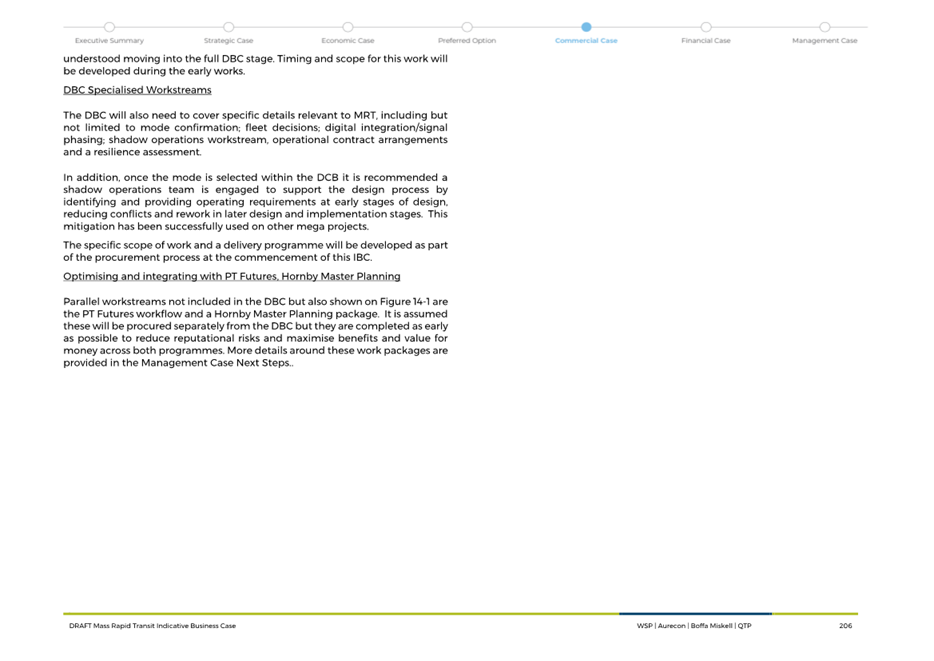
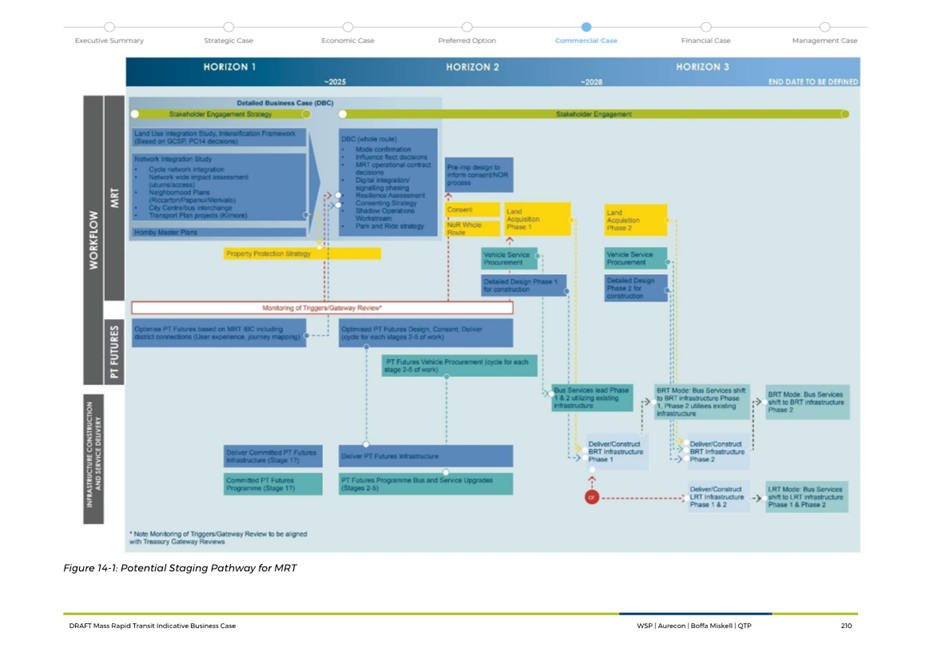
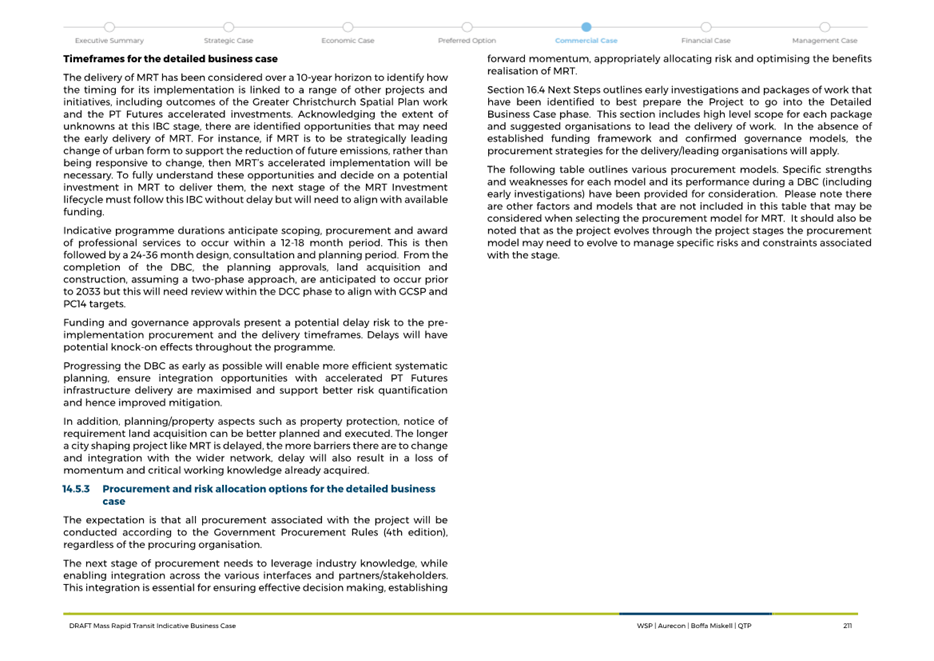
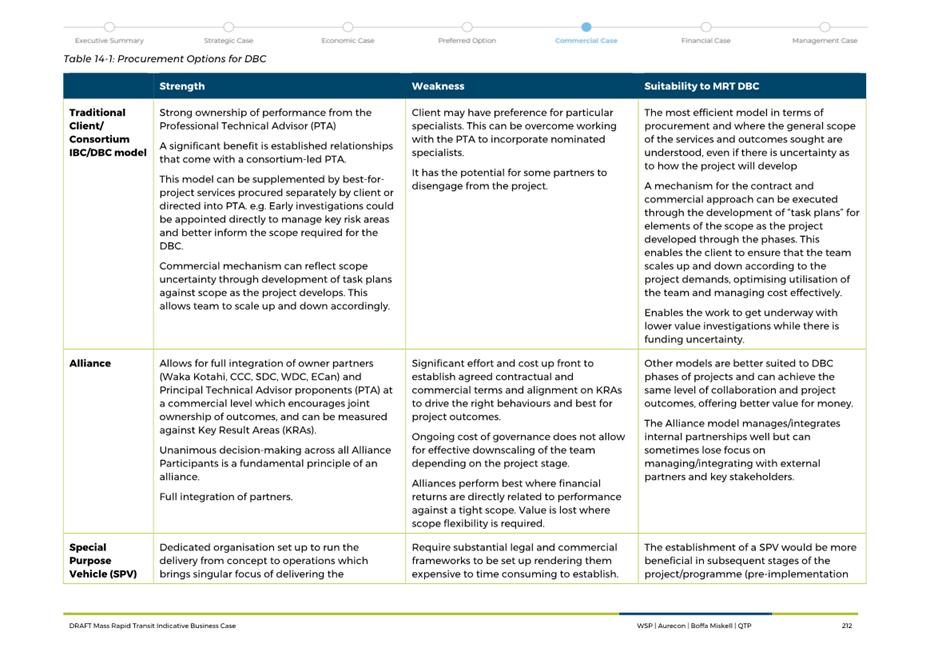
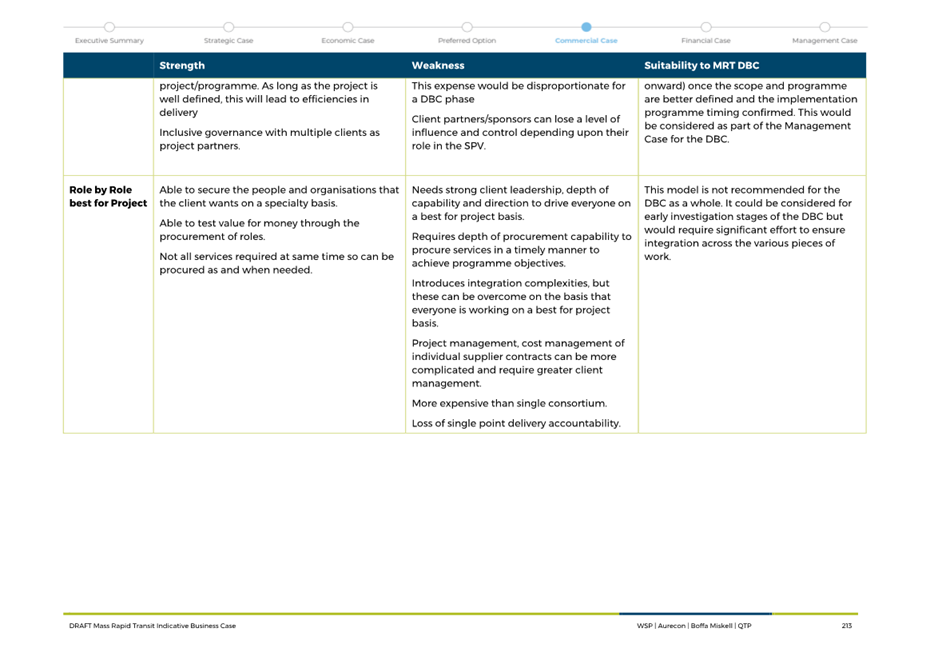
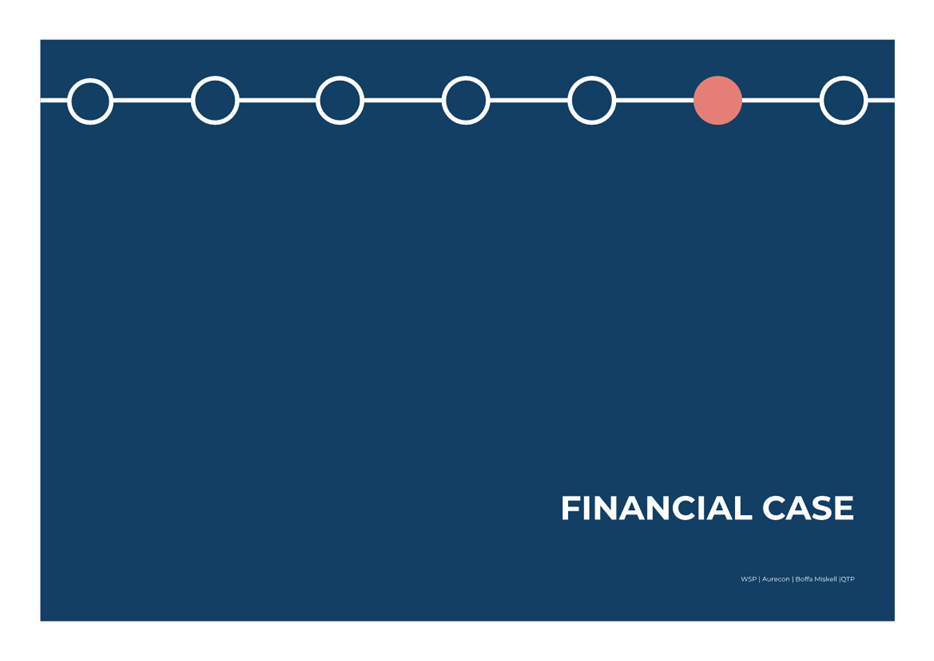
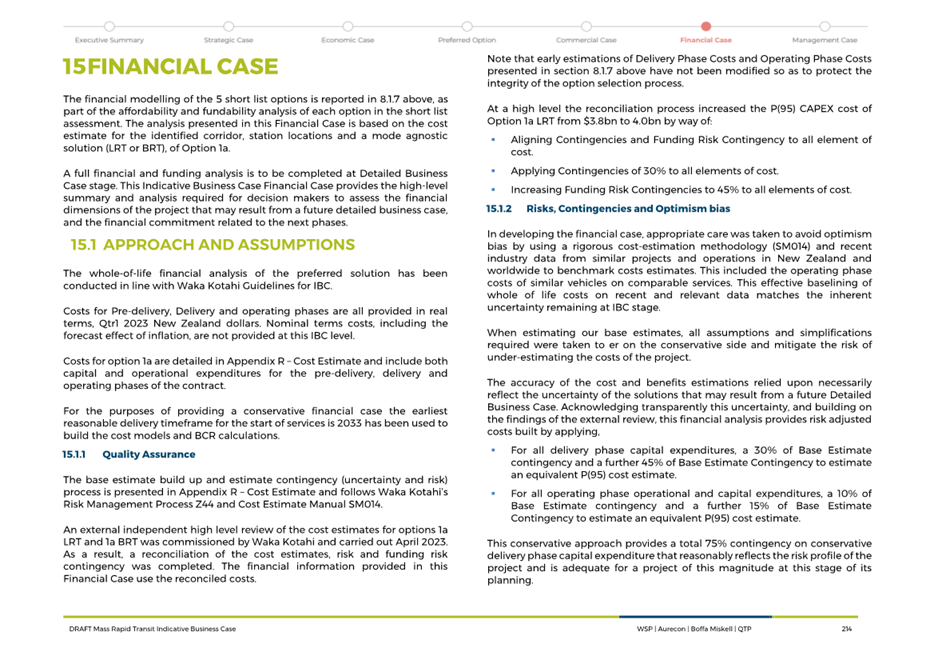
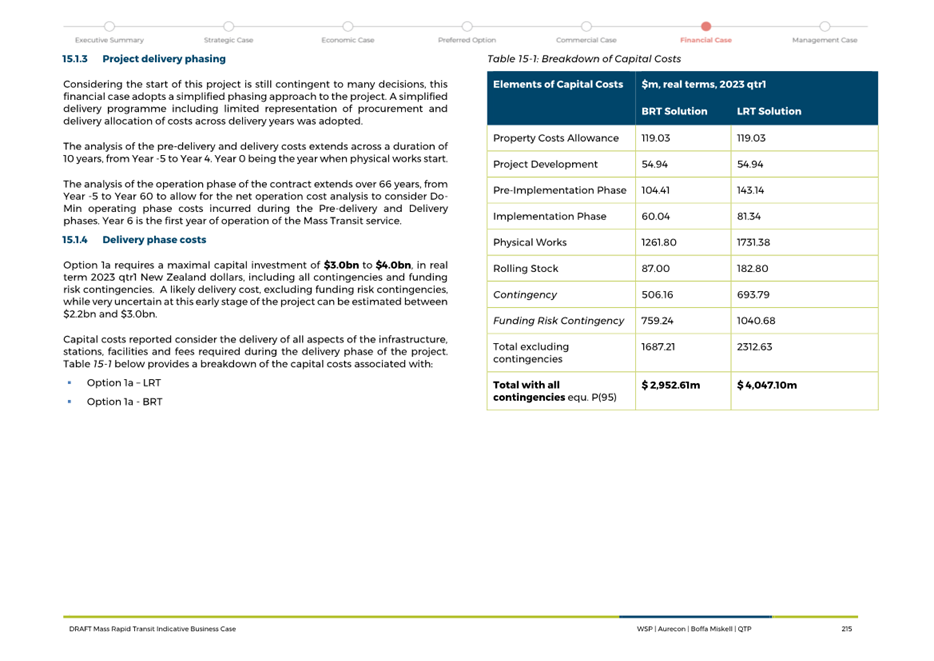
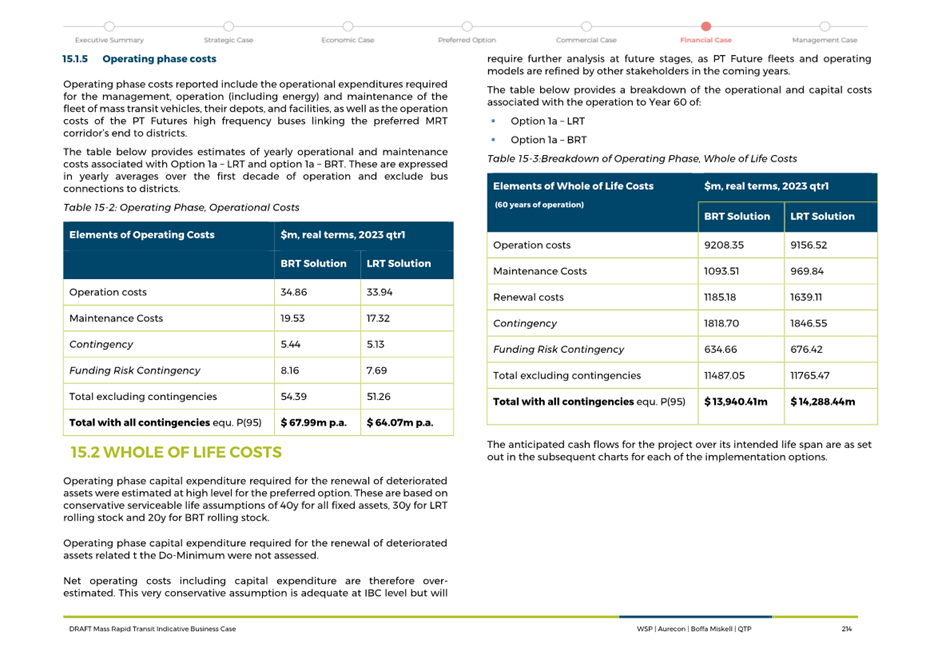
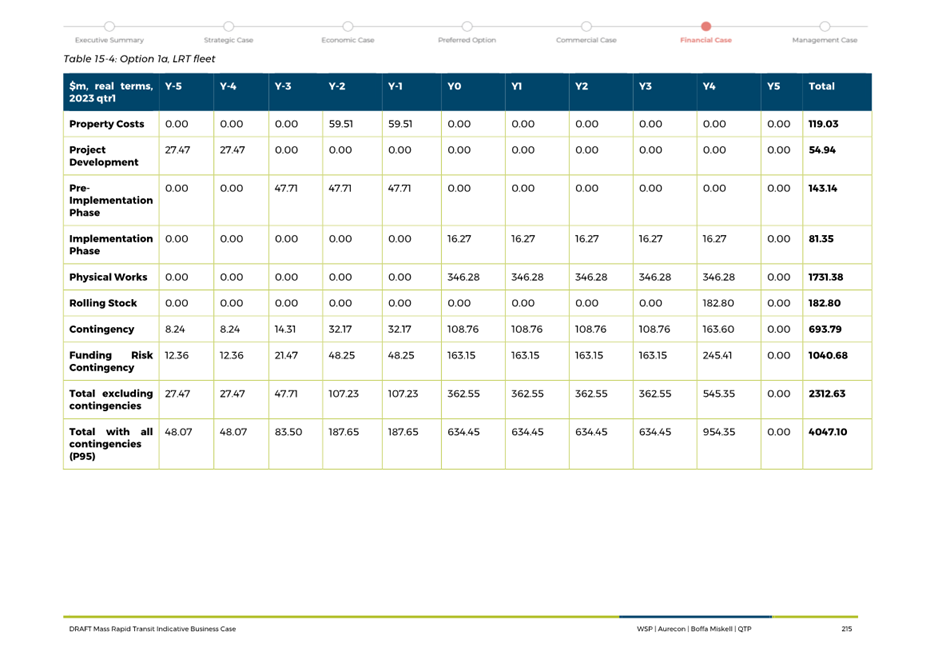
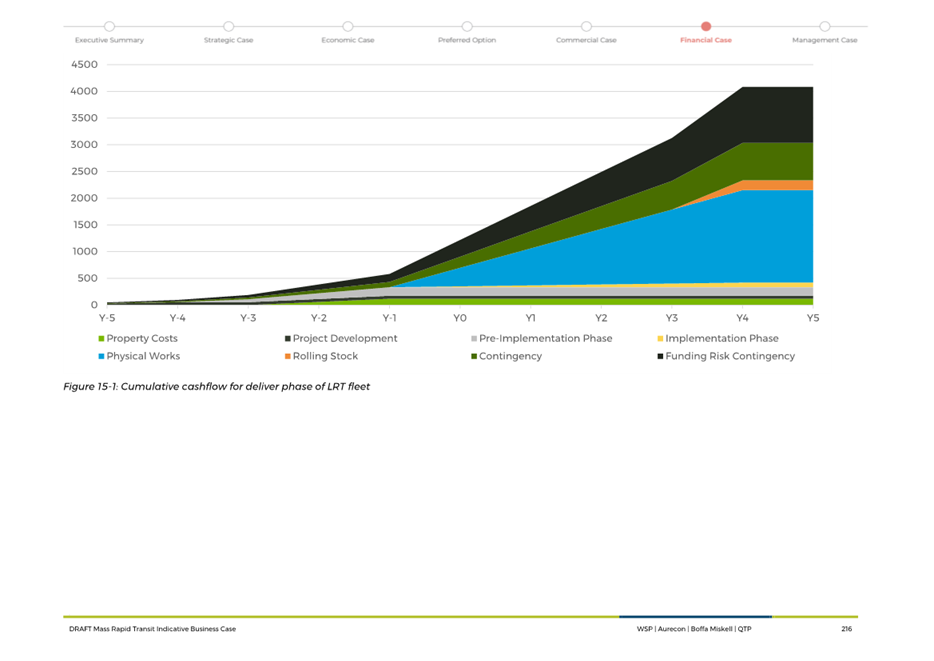
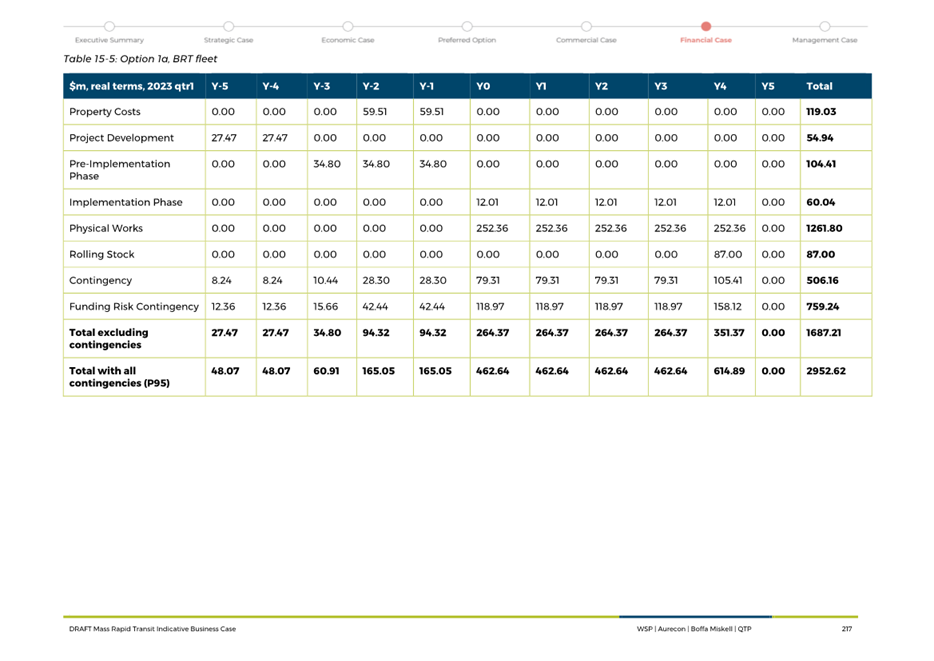
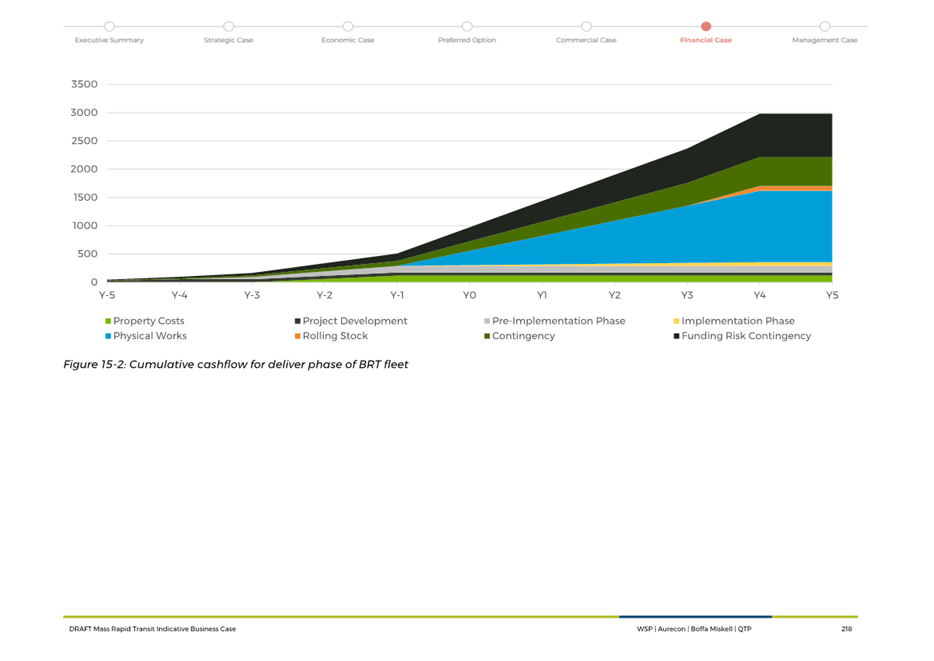
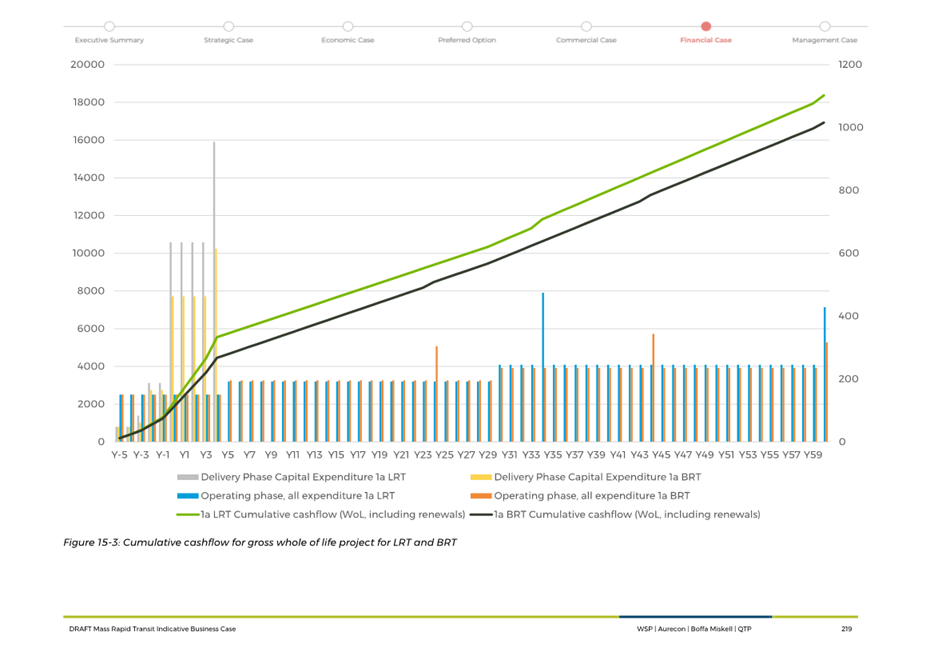
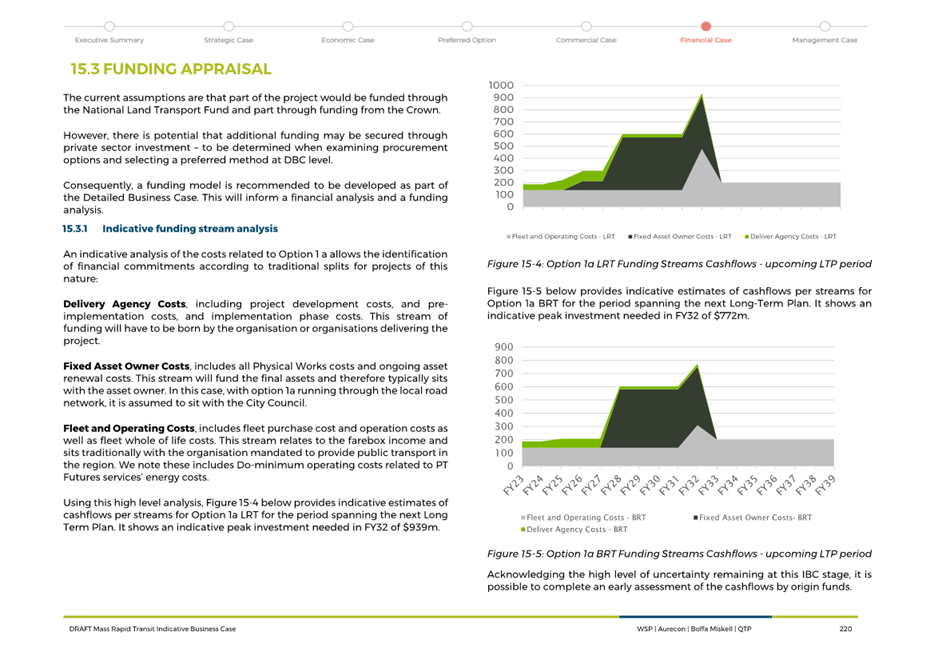
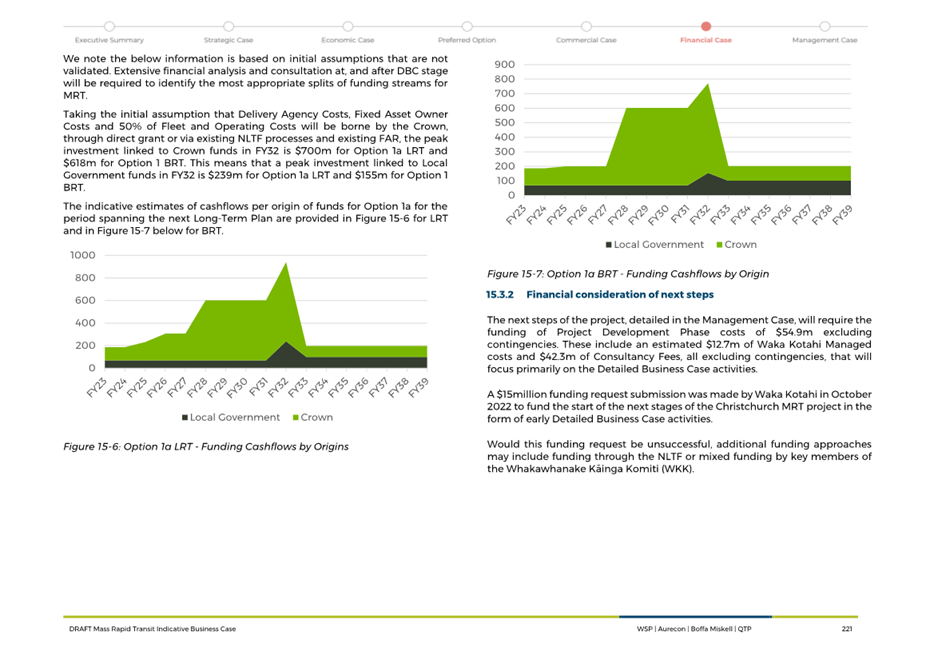
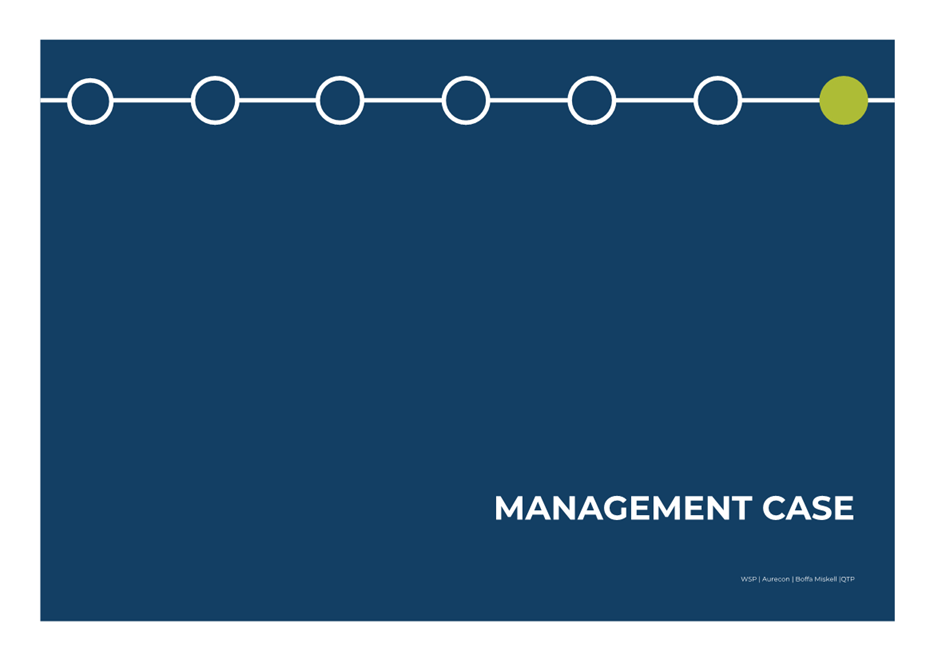
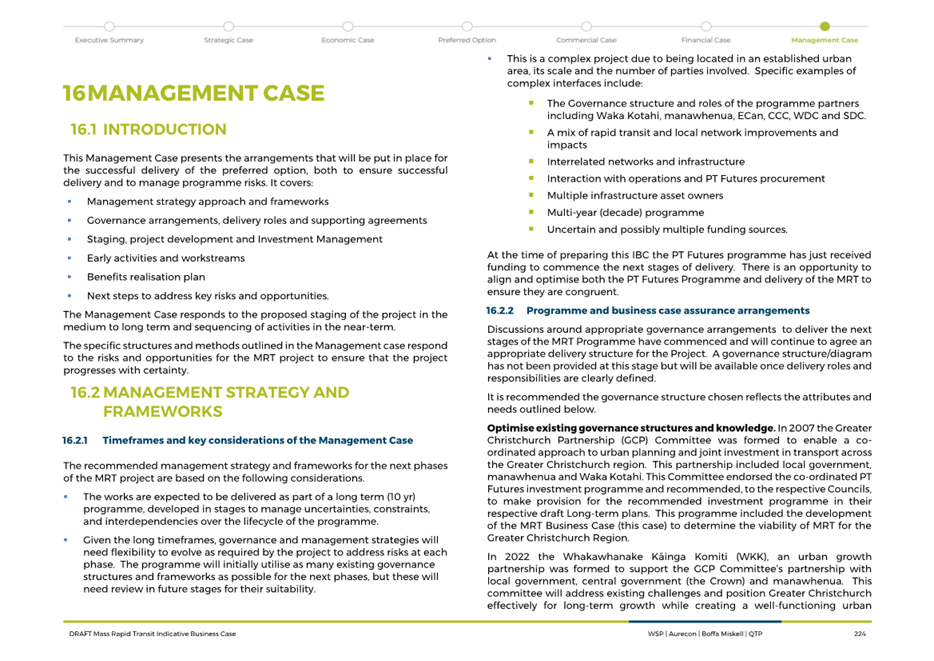
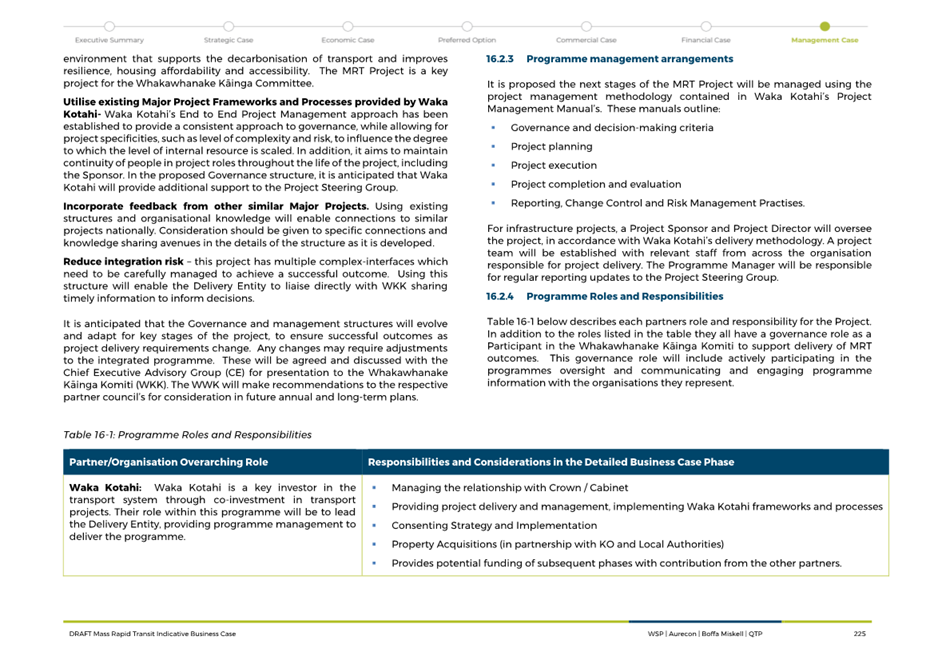
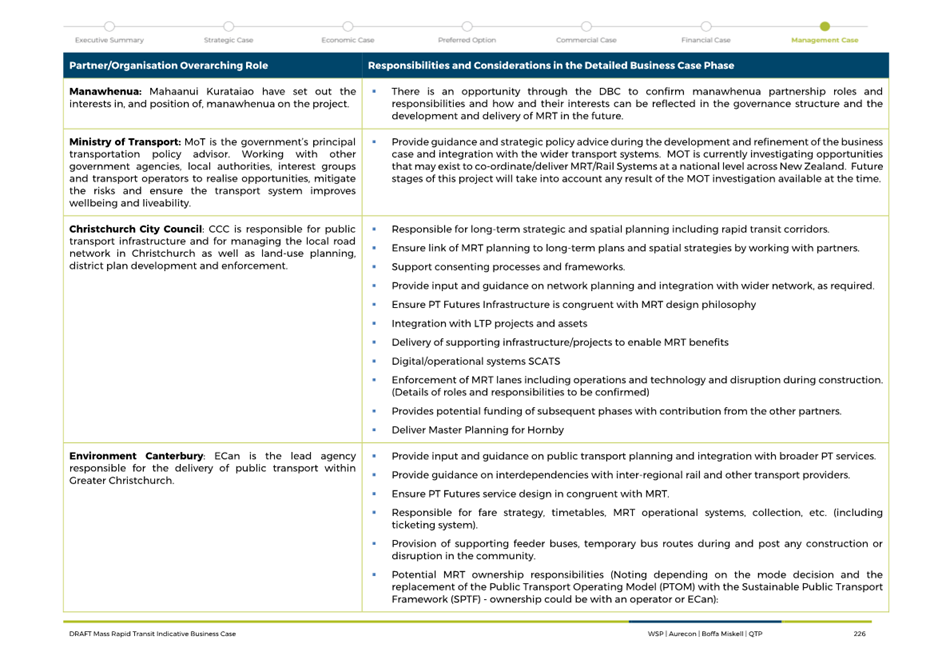
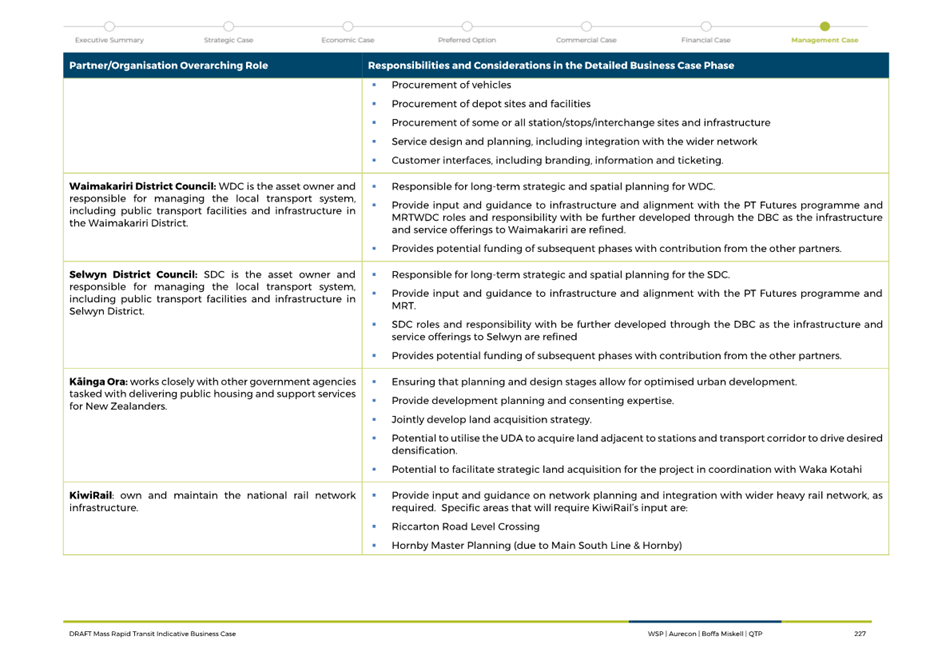
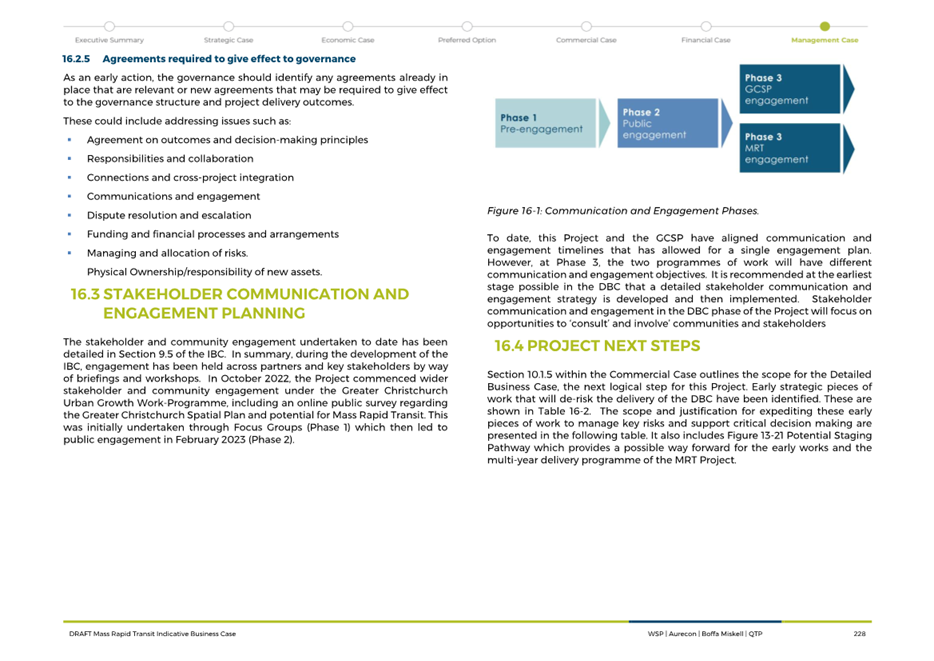
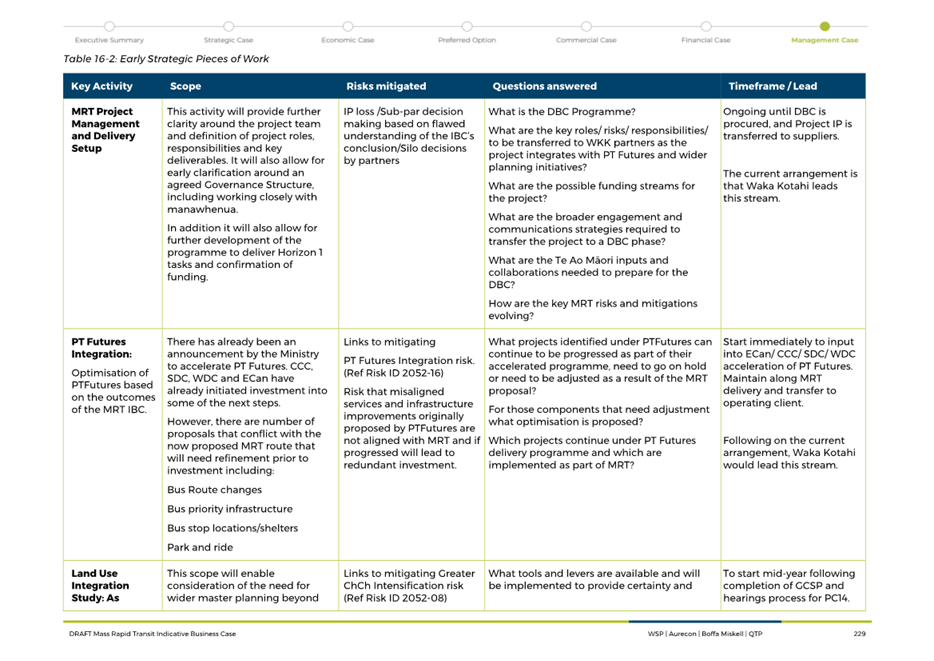
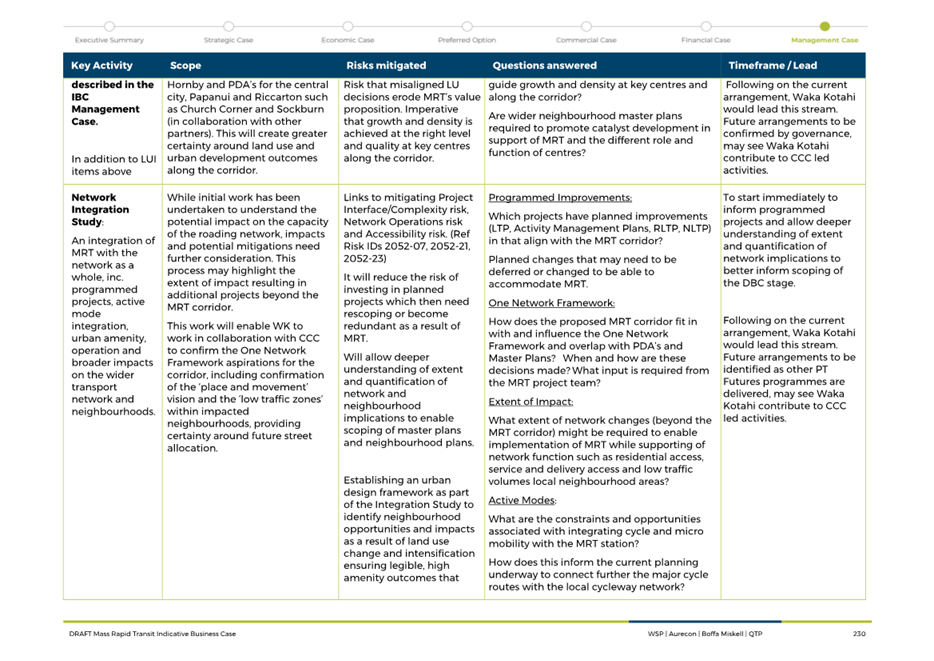
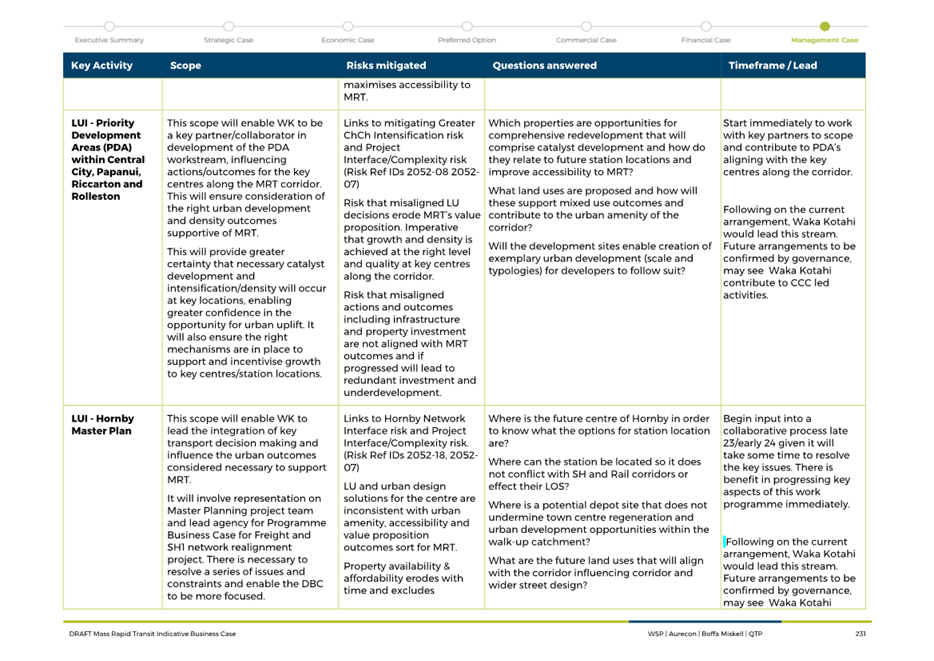
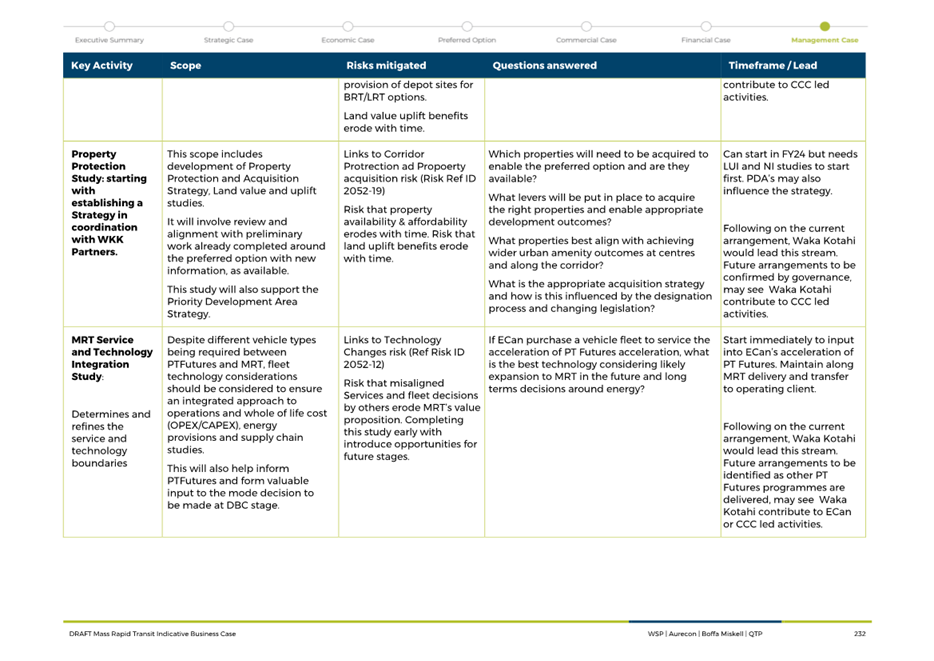
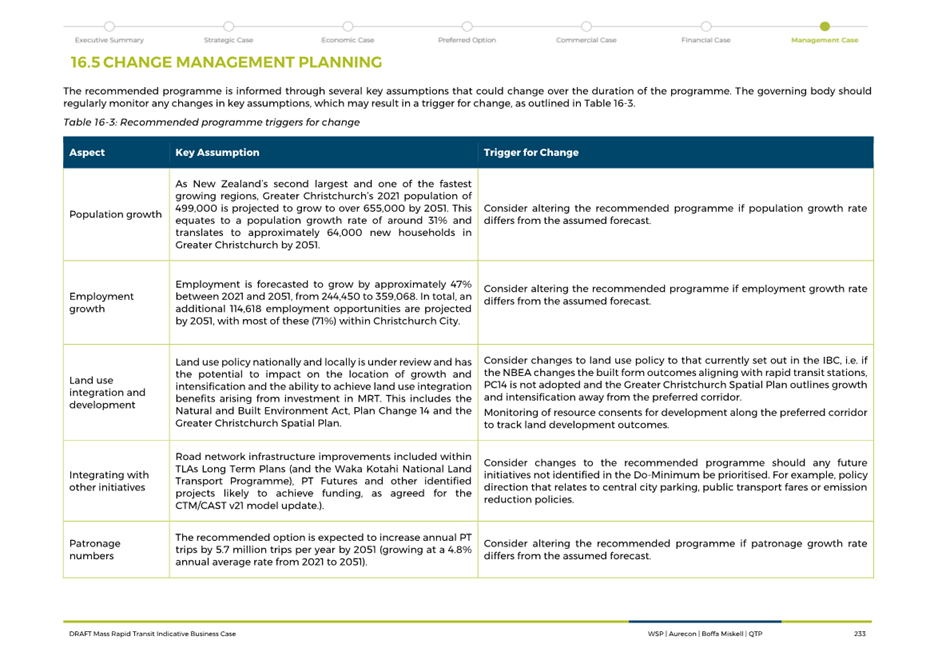
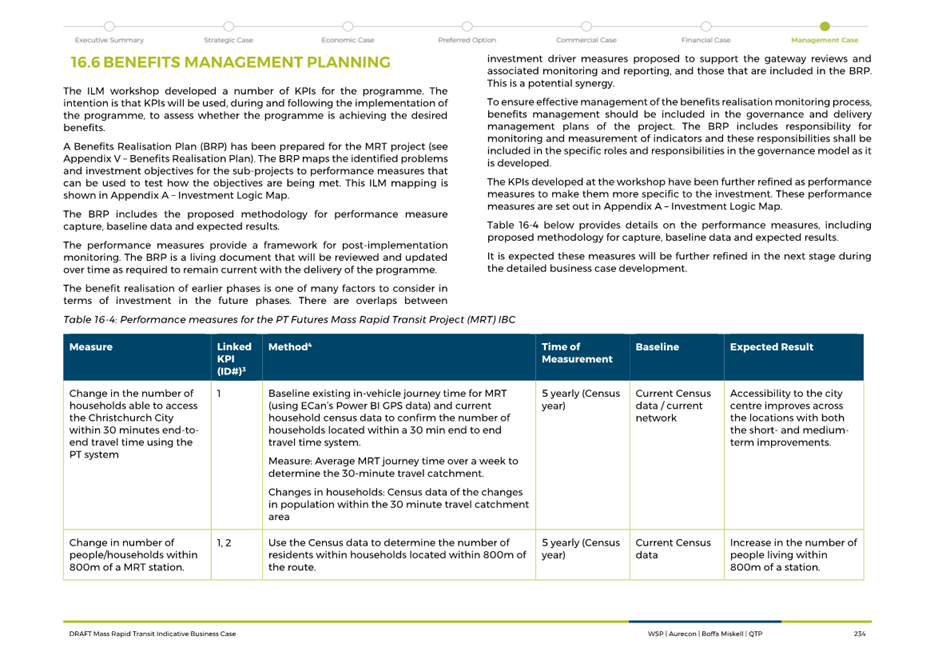
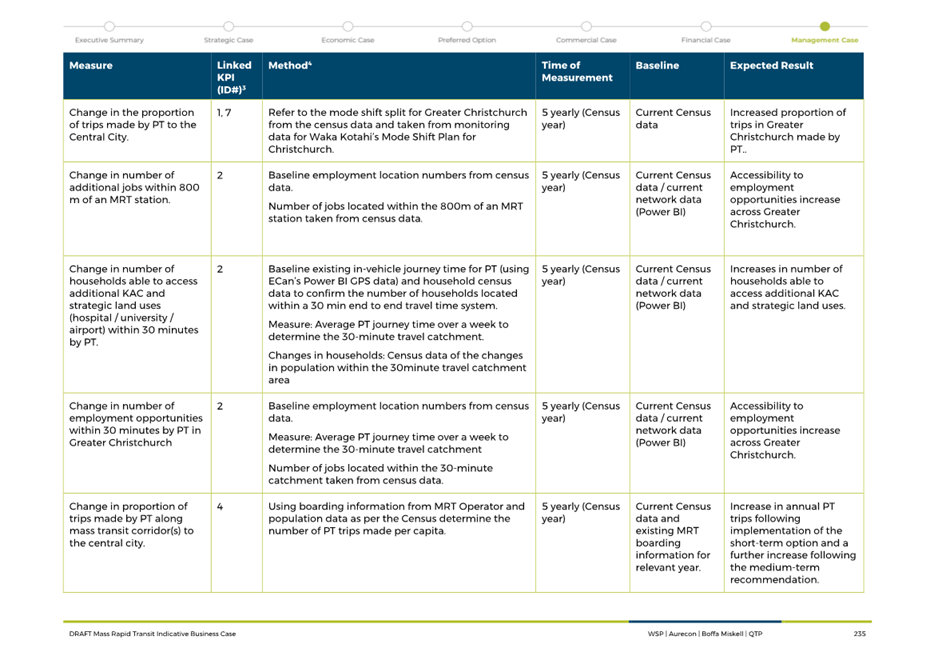
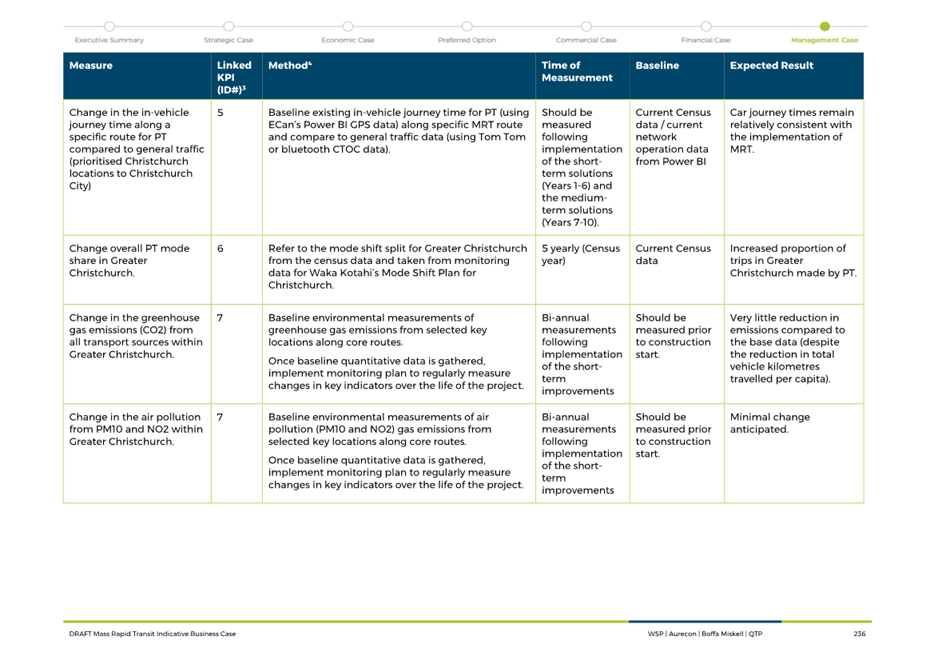
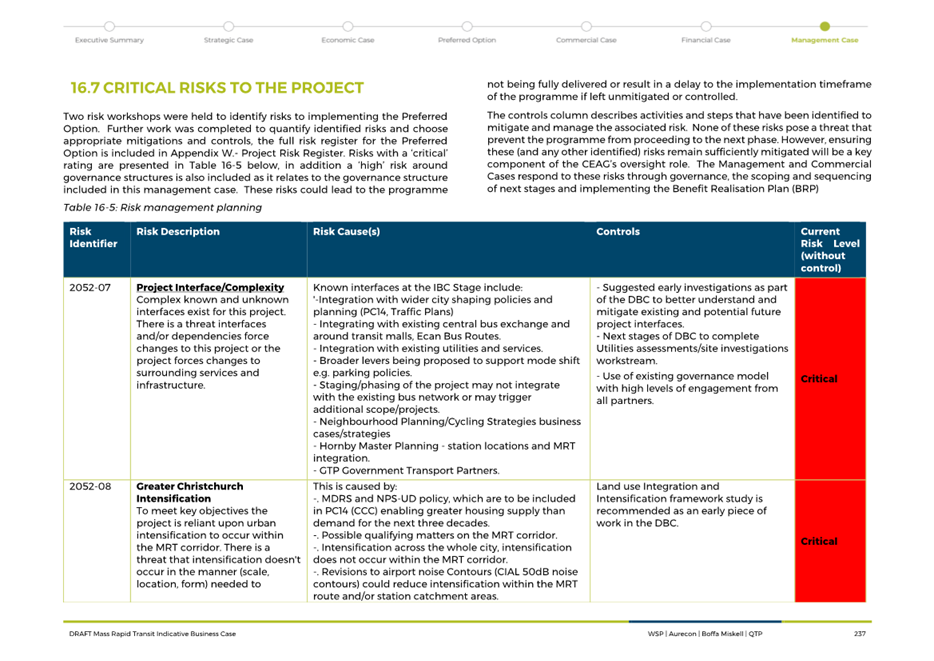
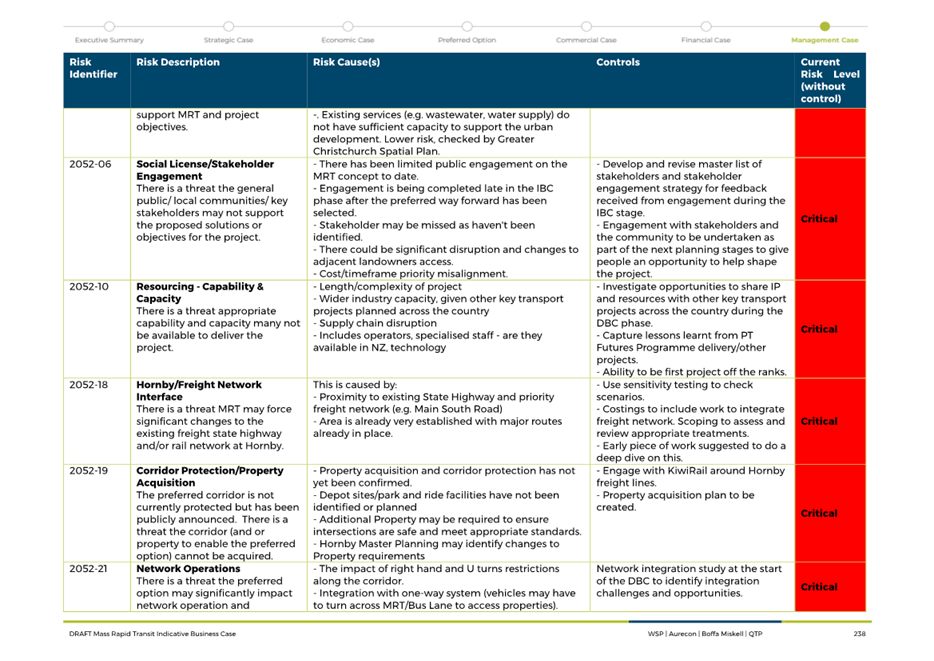
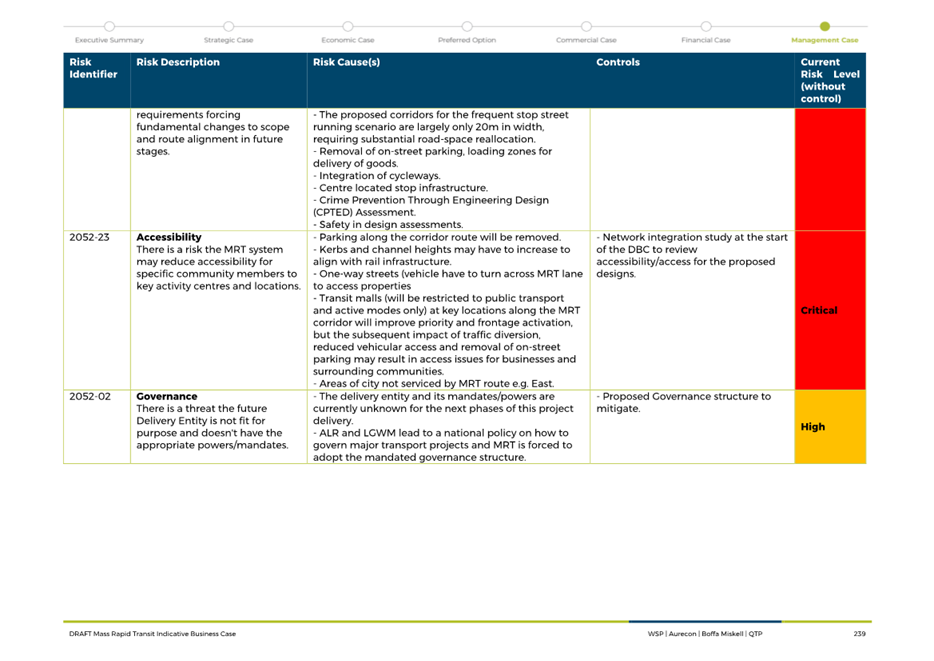
|
Whakawhanake Kāinga Komiti
12 May 2023
|
|
HE
KARAKIA WHAKAIRI I NGA KŌRERO CLOSING INCANTATION
Ka whakairia te tapu Restrictions
are moved aside
Kia watea ai te ara So
the pathway is clear
Kia tūruki whakataha ai To
return to everyday activities
Kia tūruki whakataha ai
Hui e, tāiki e Enriched,
unified and blessed


































